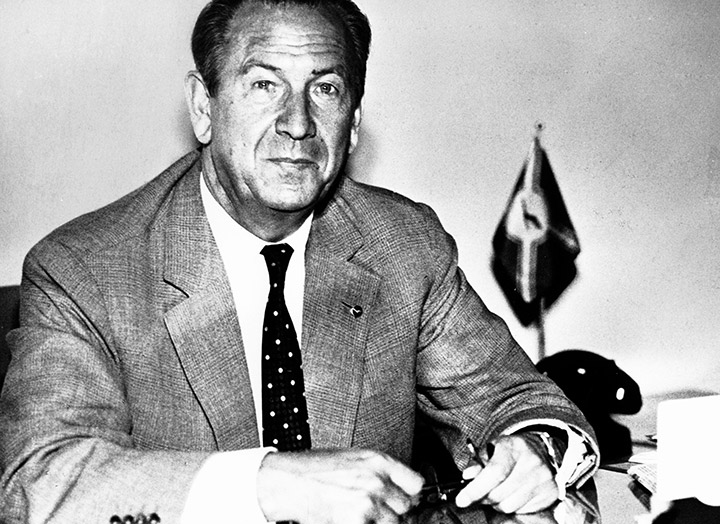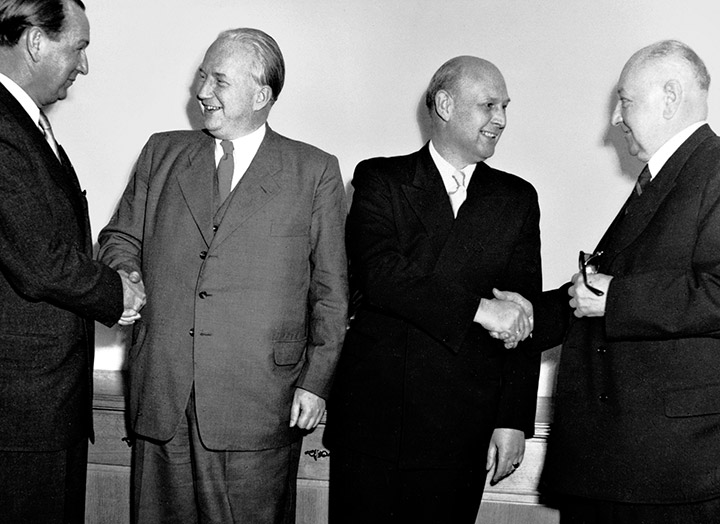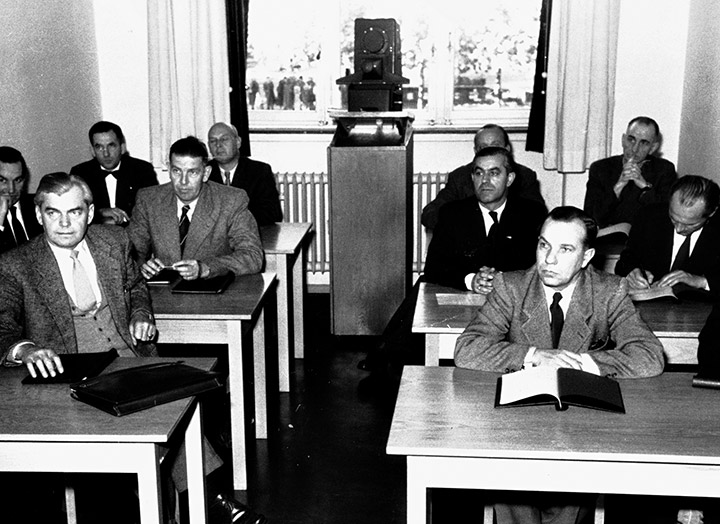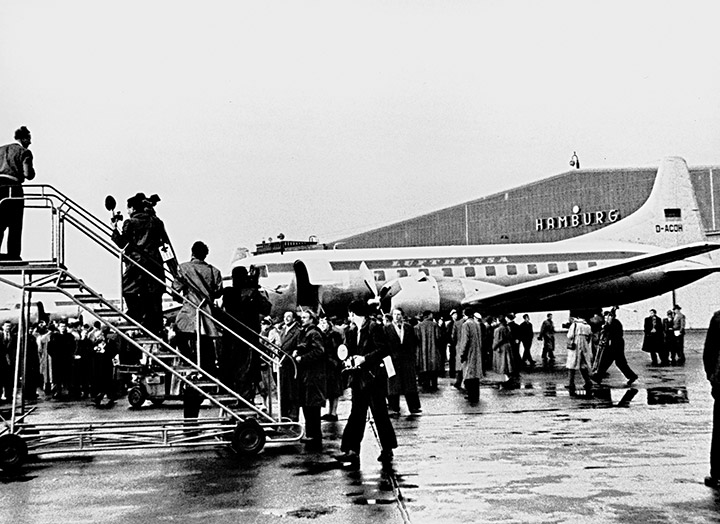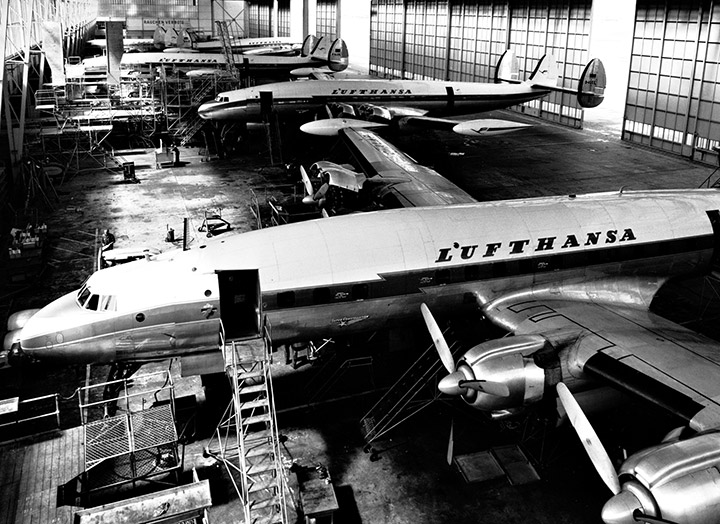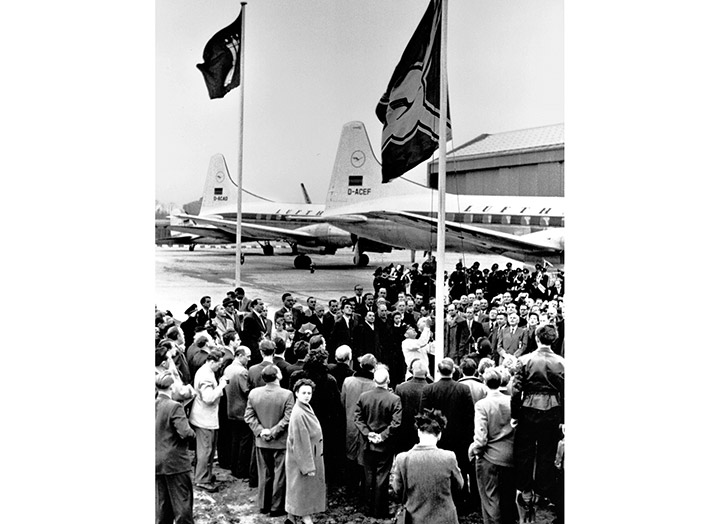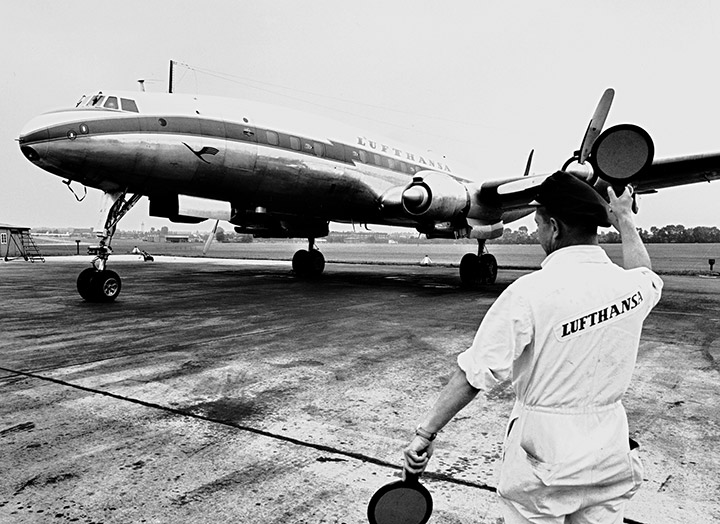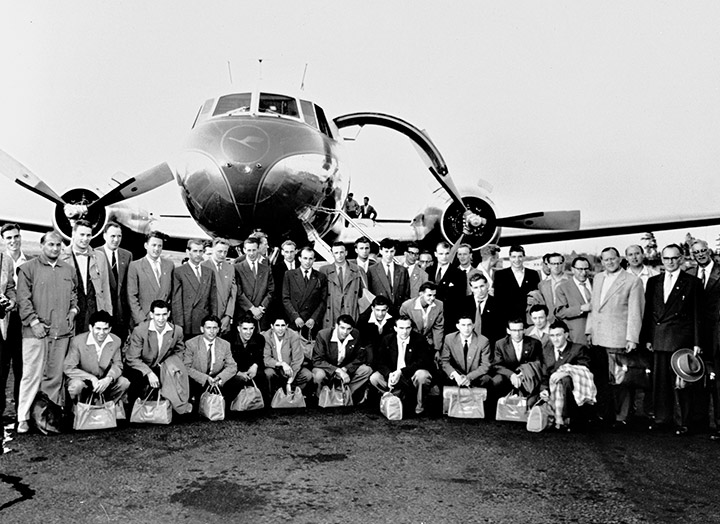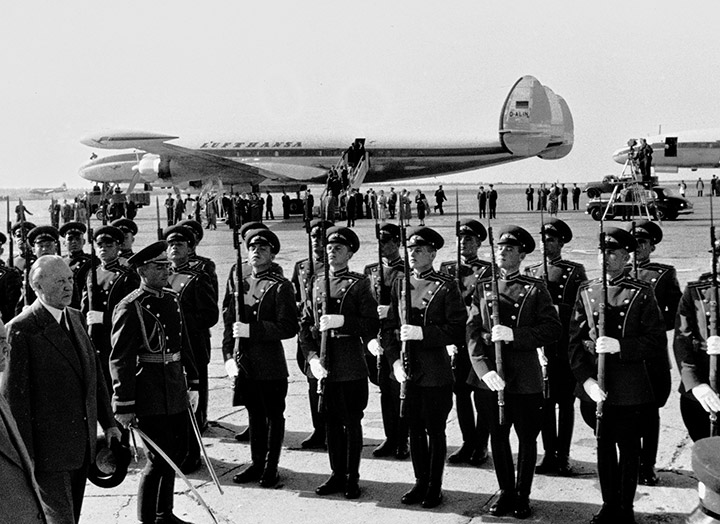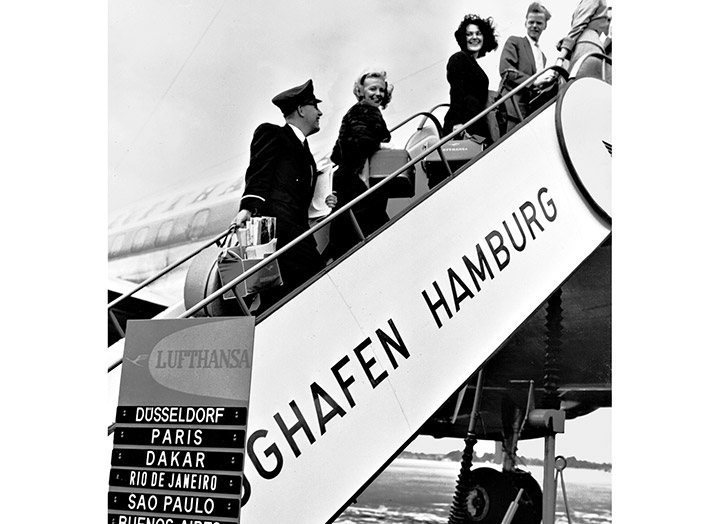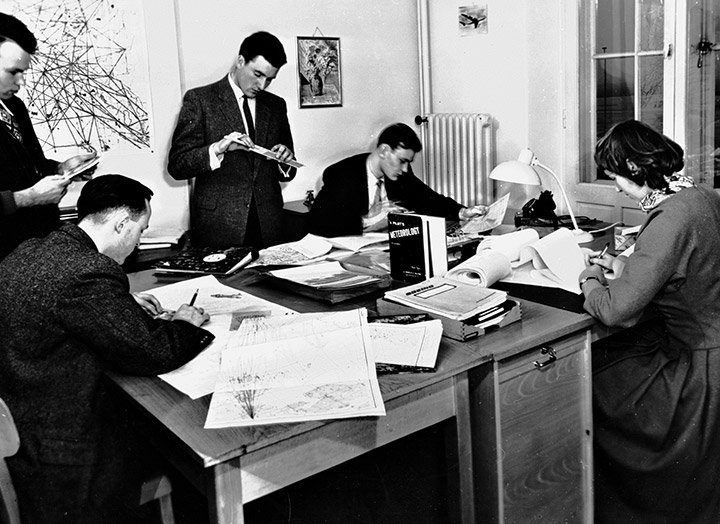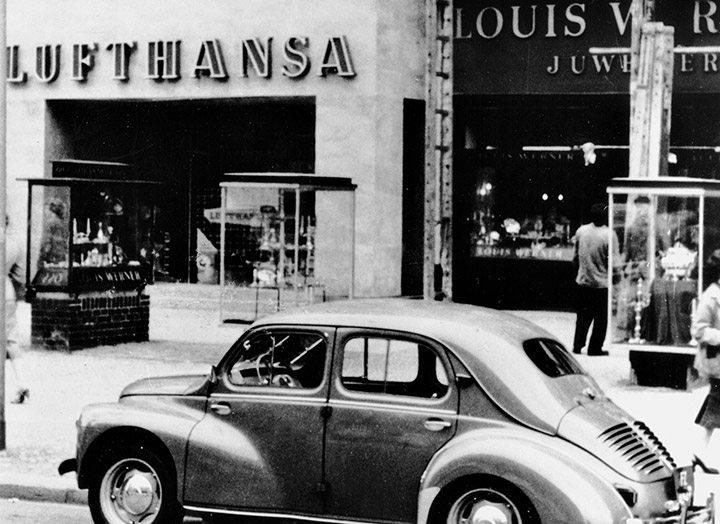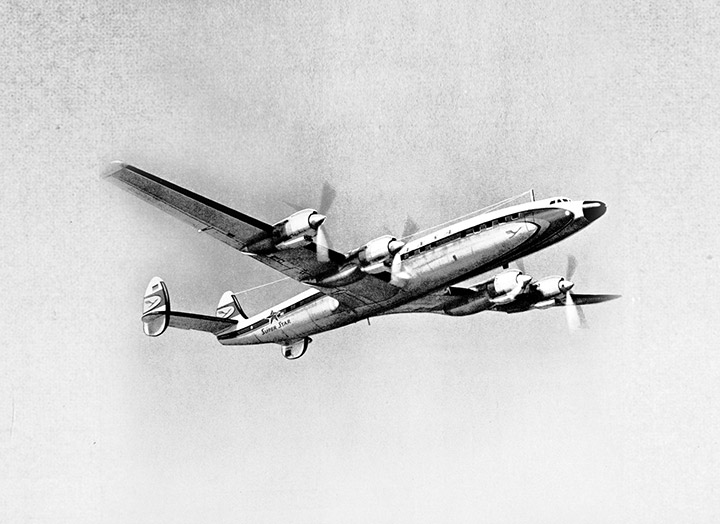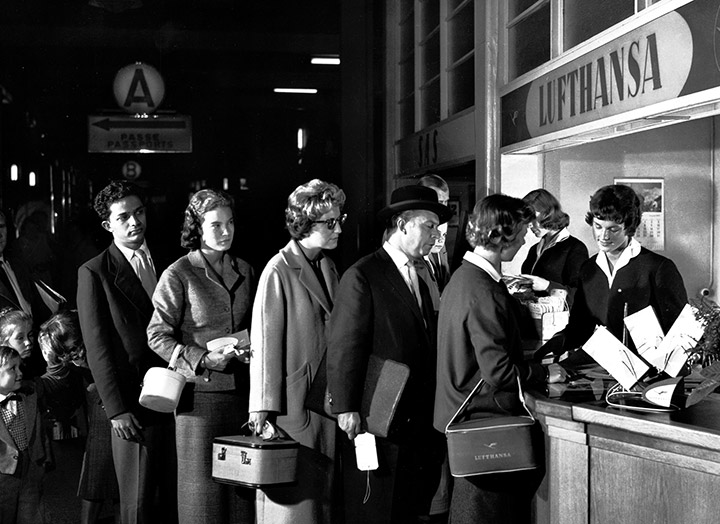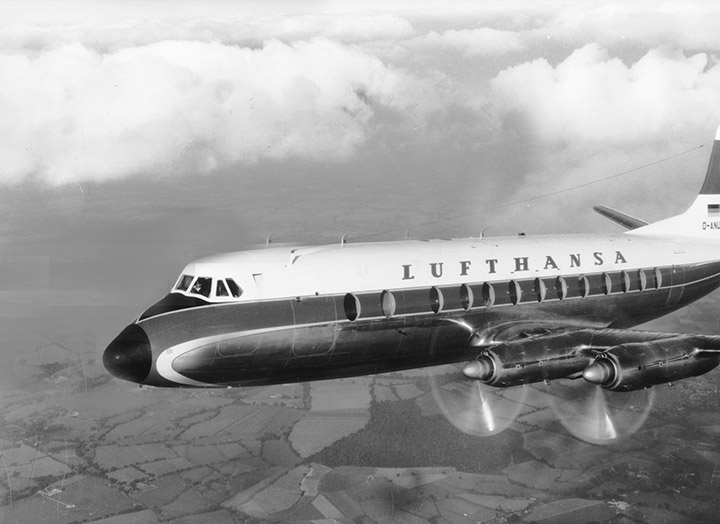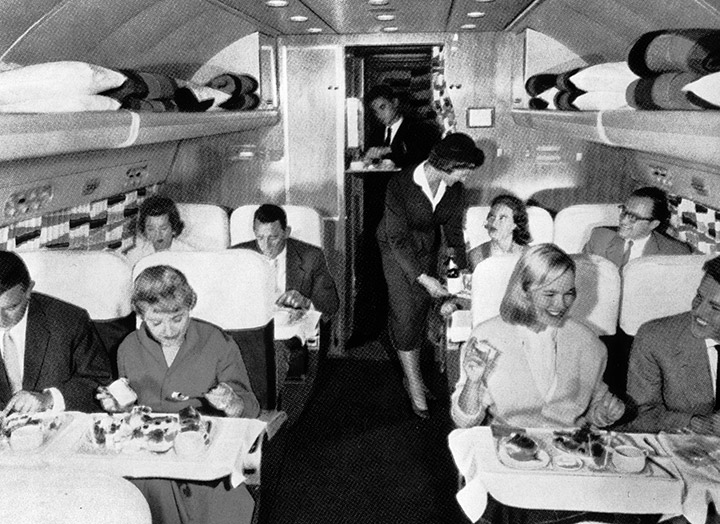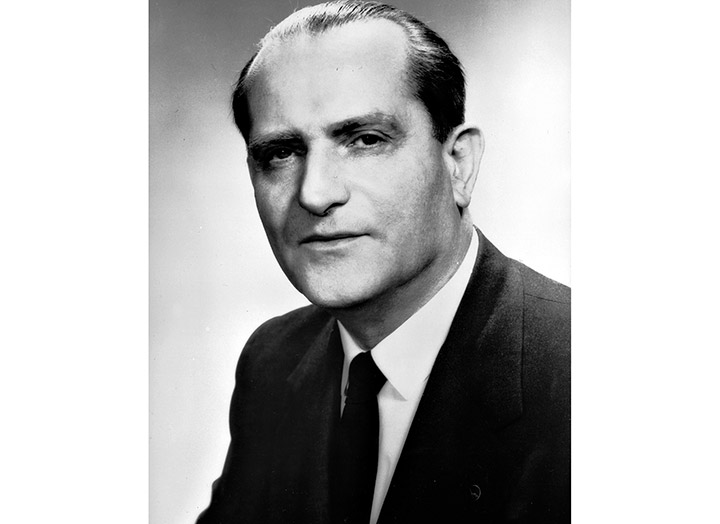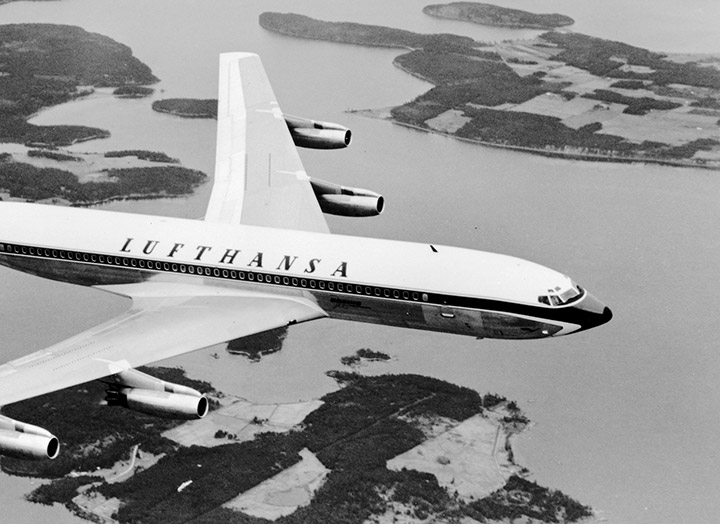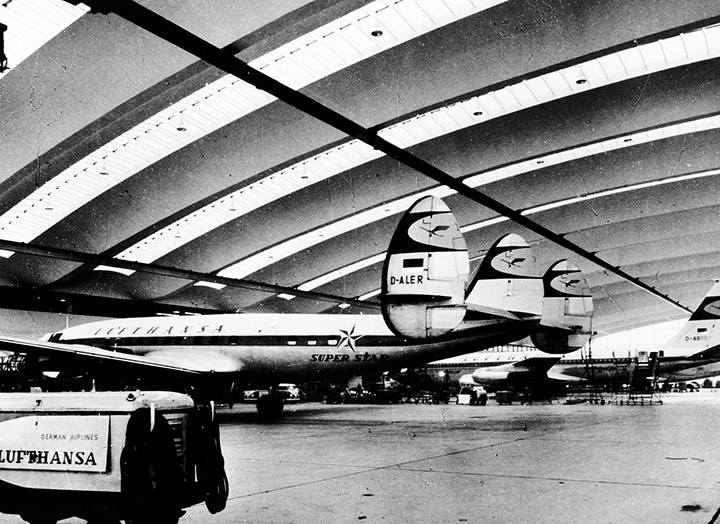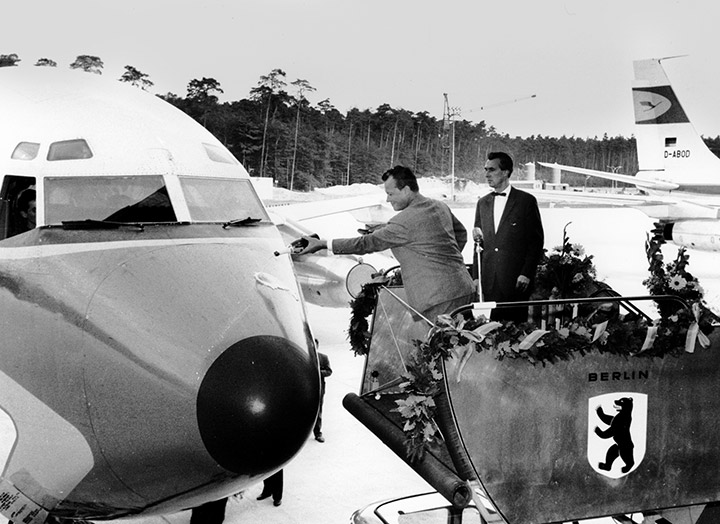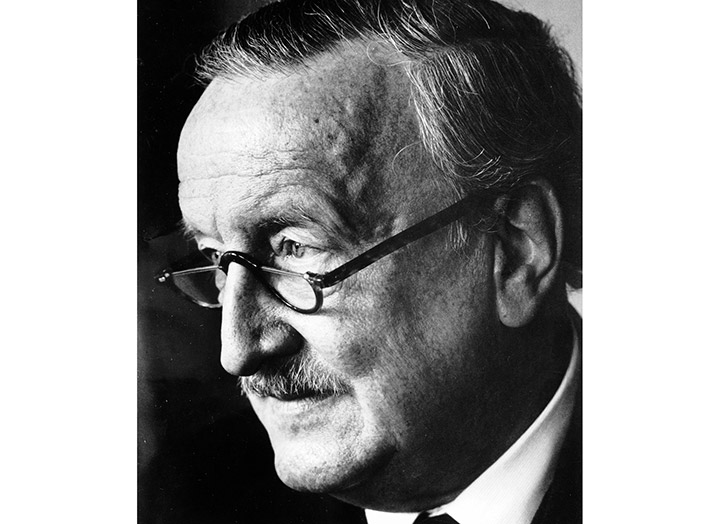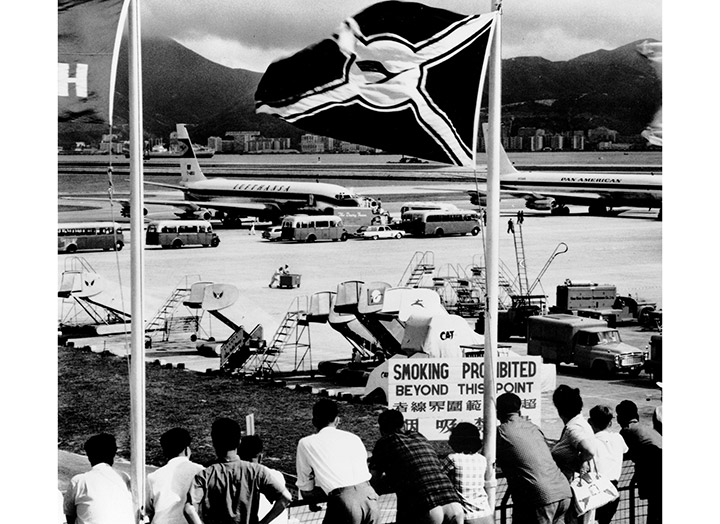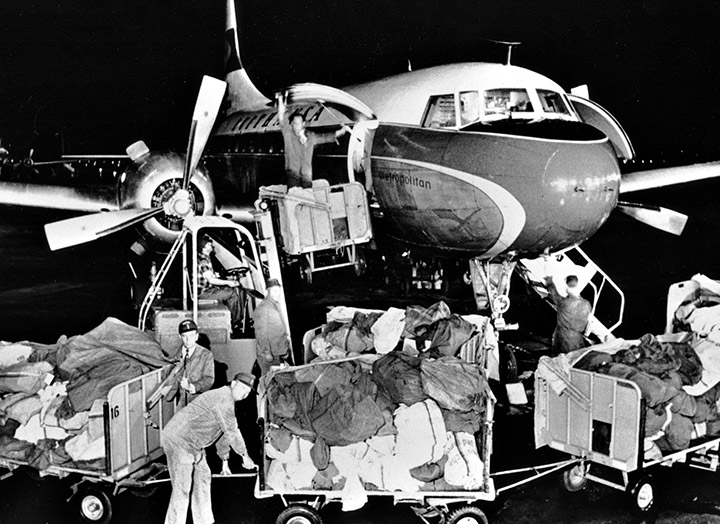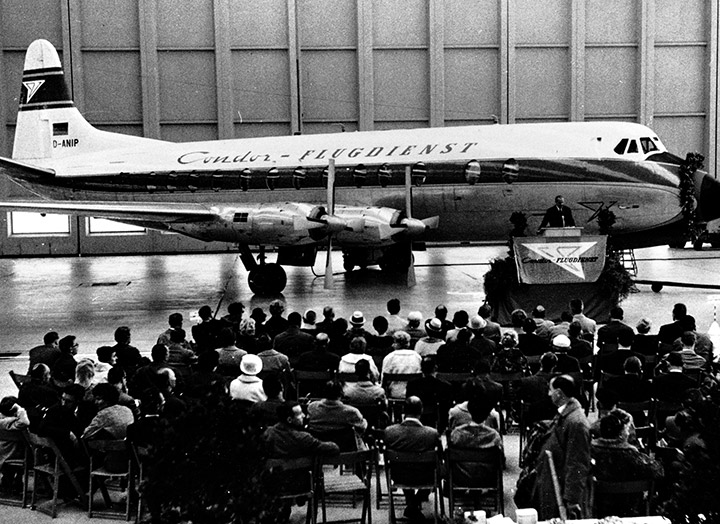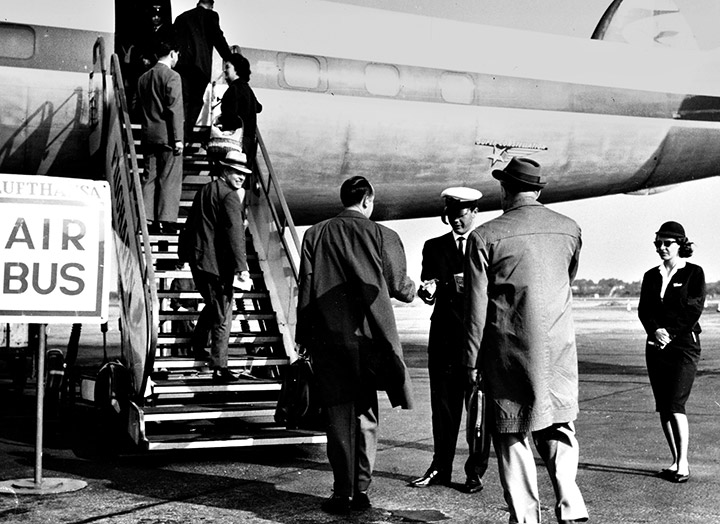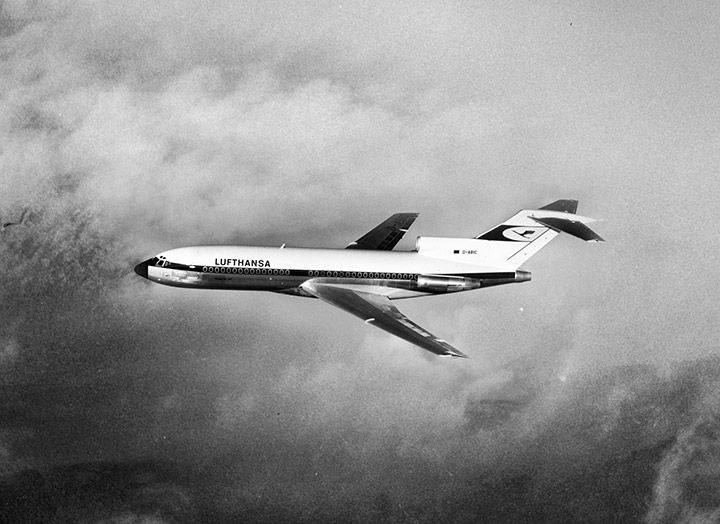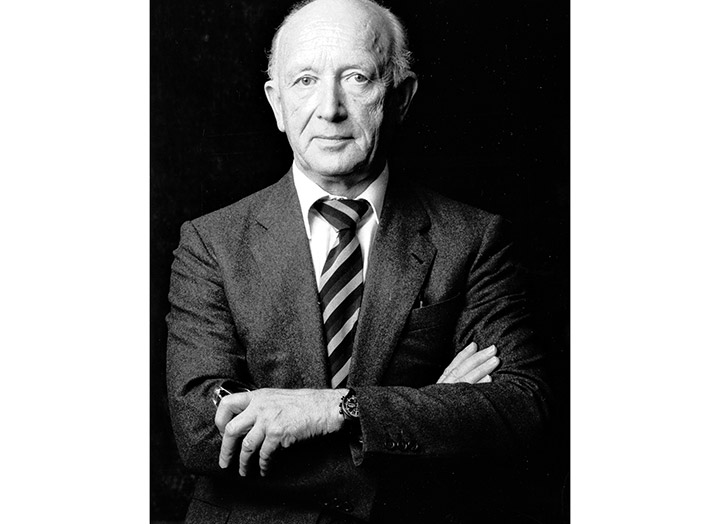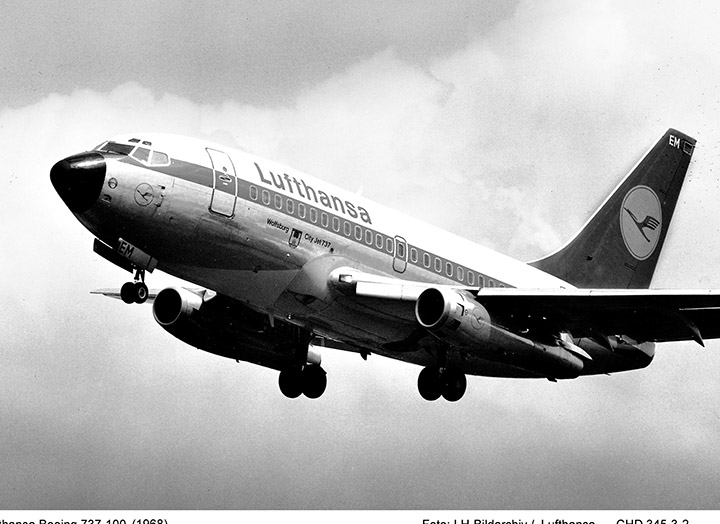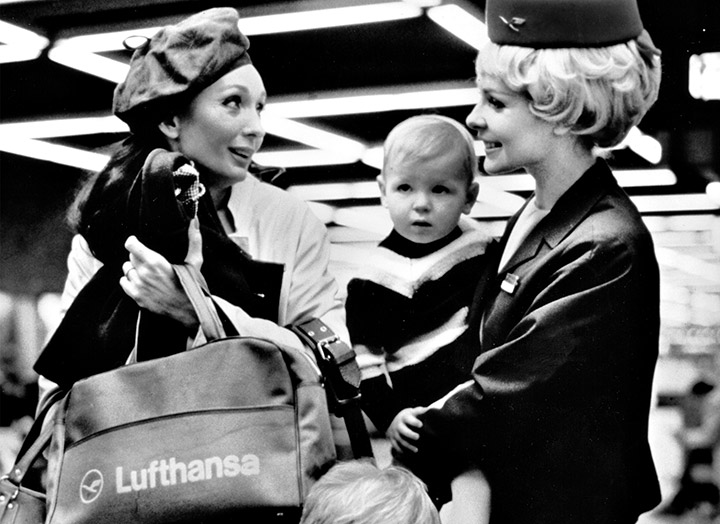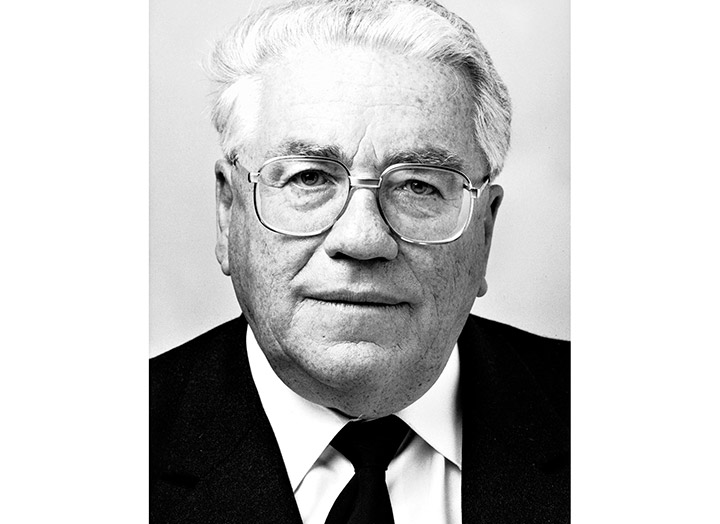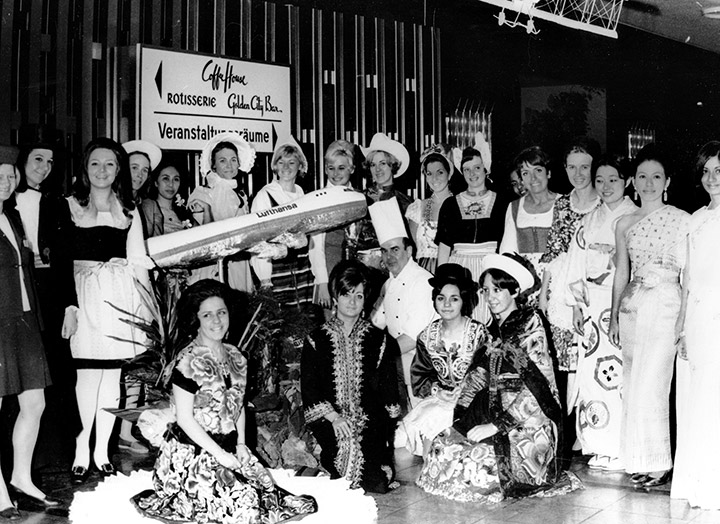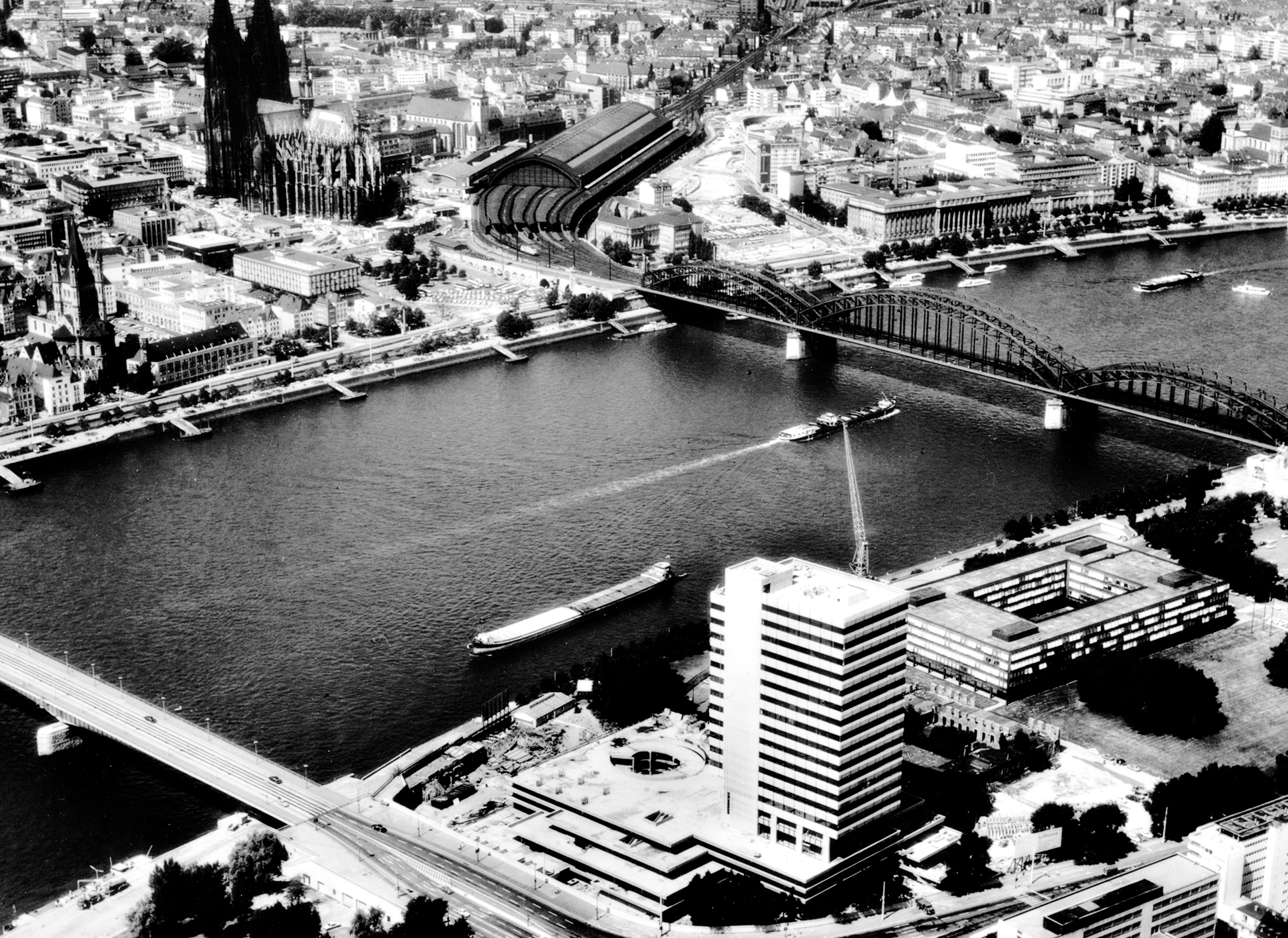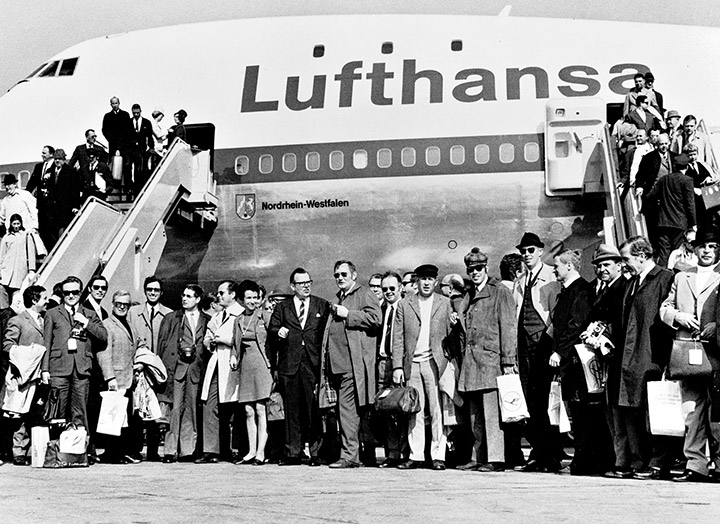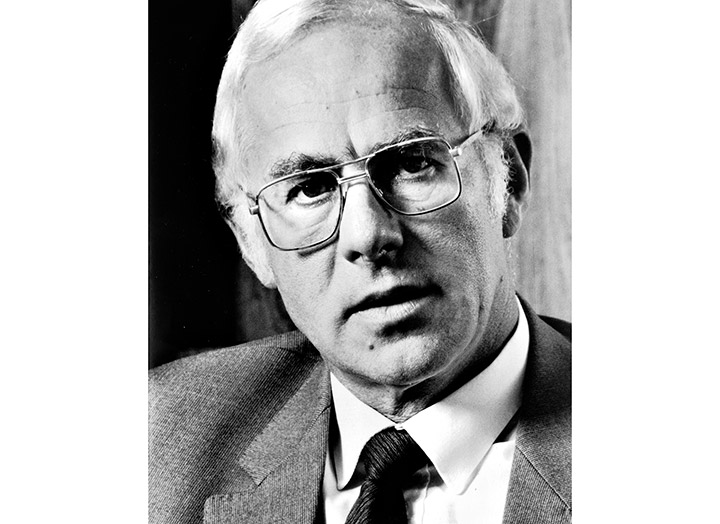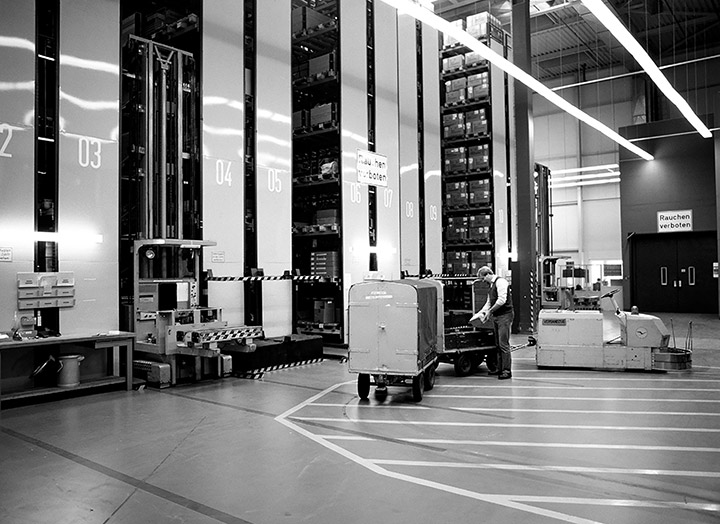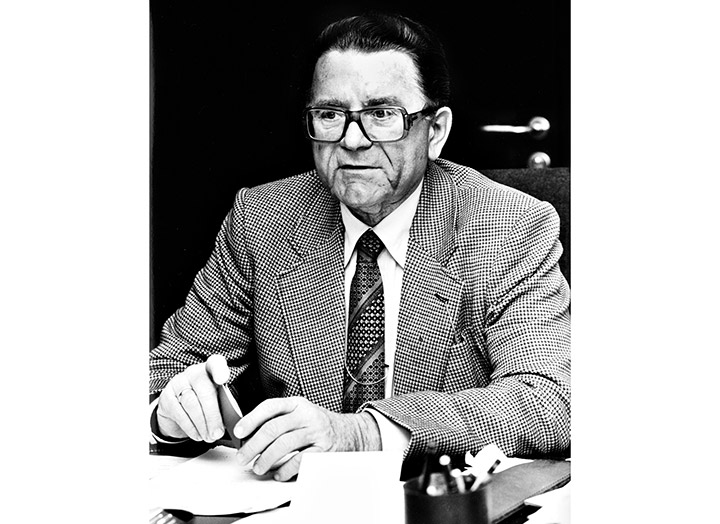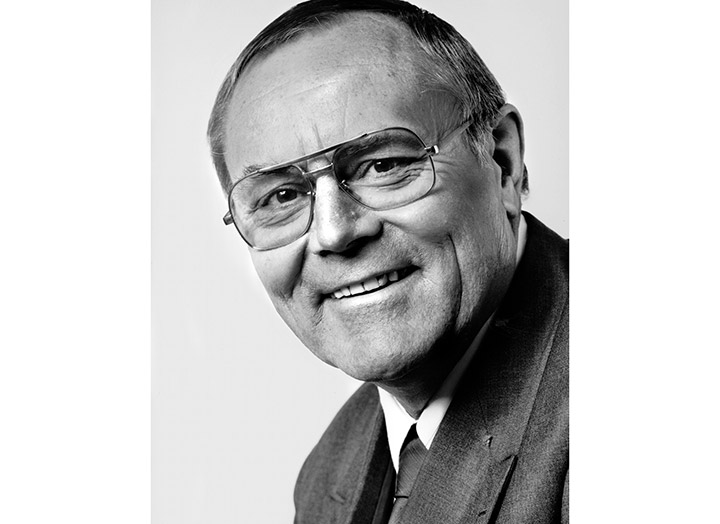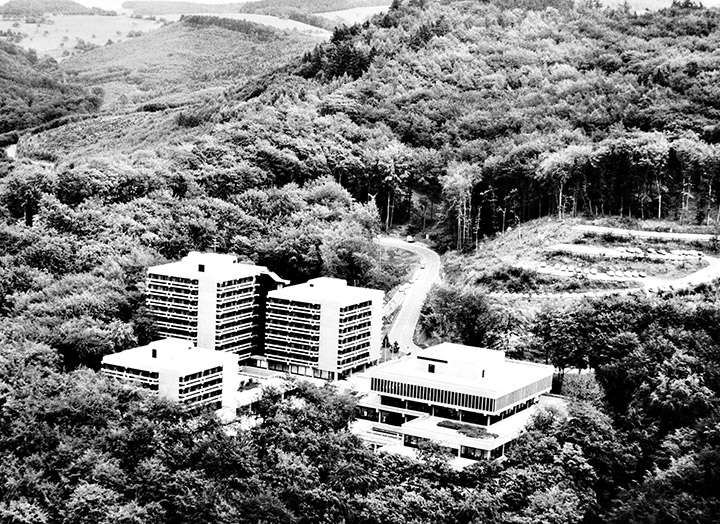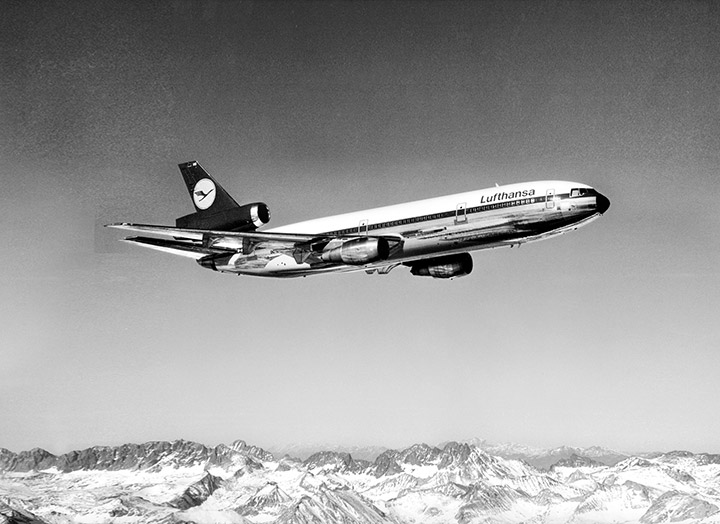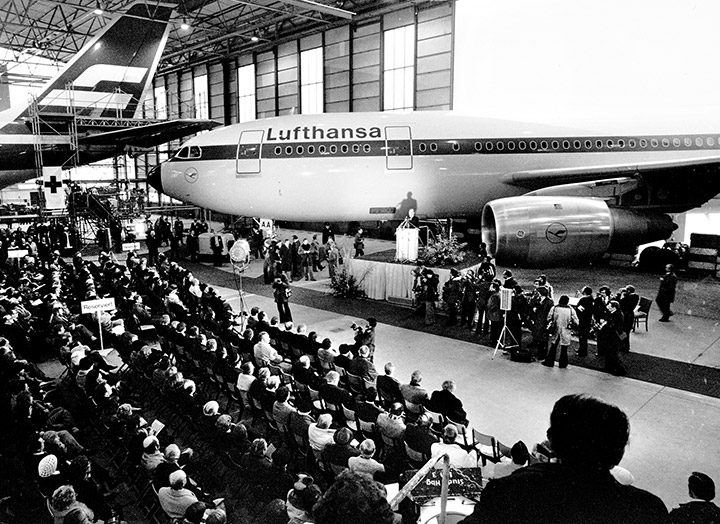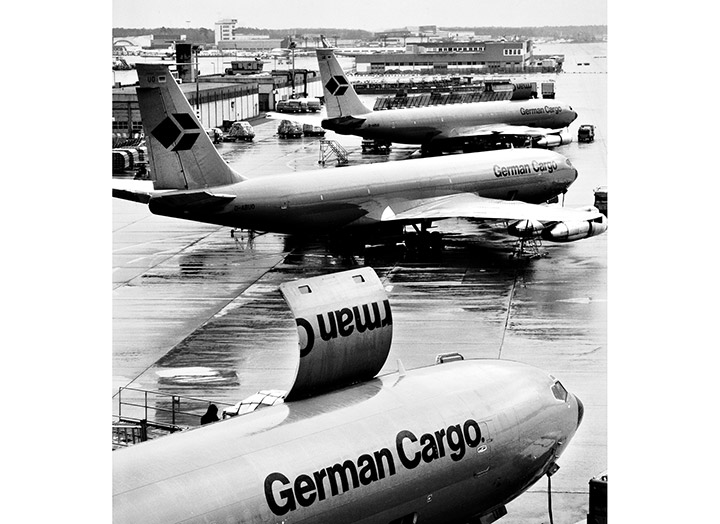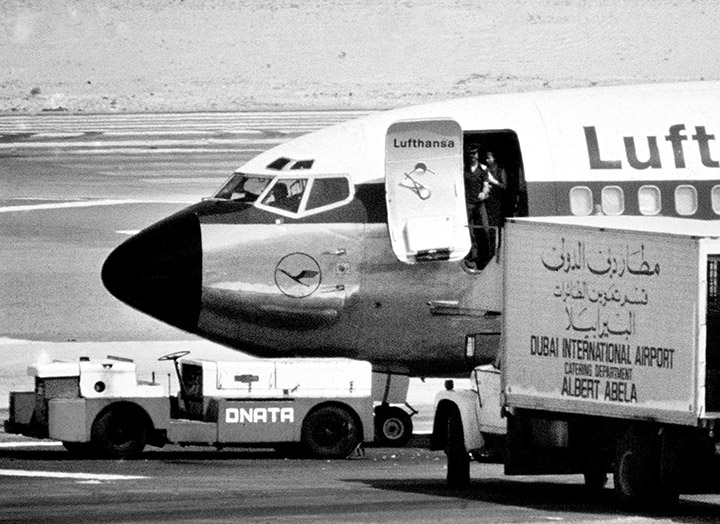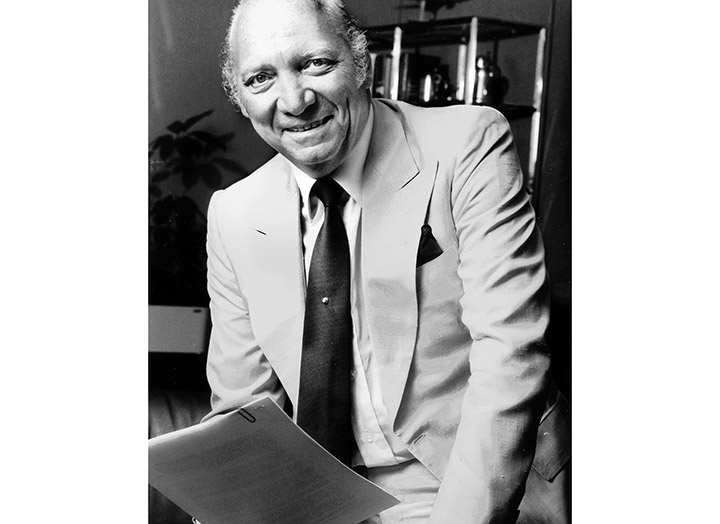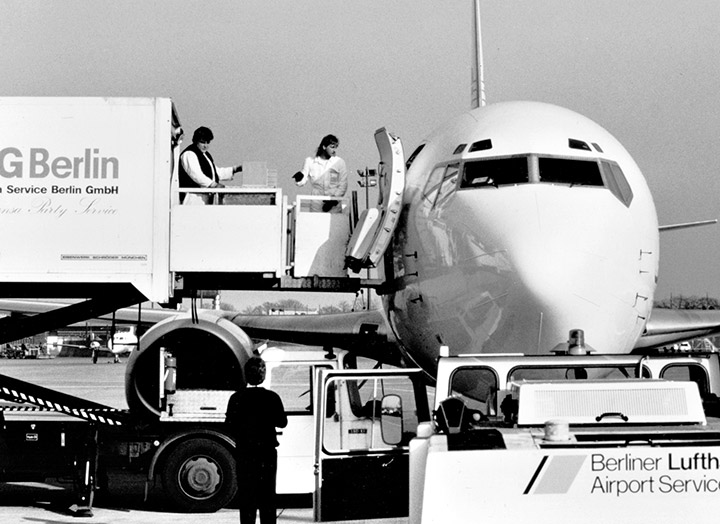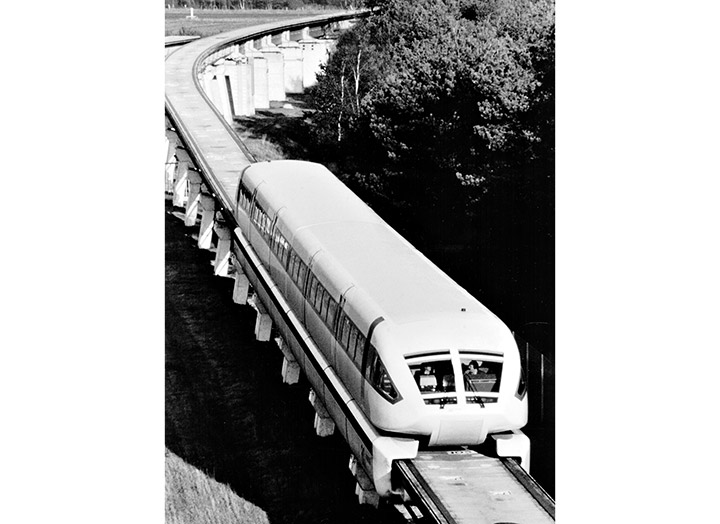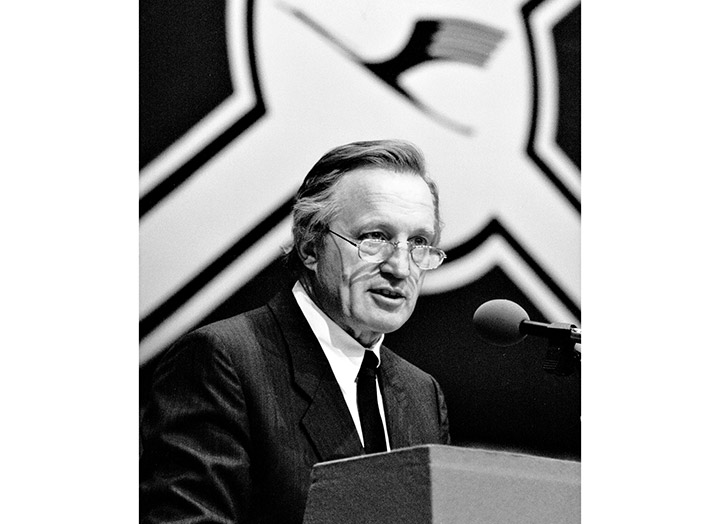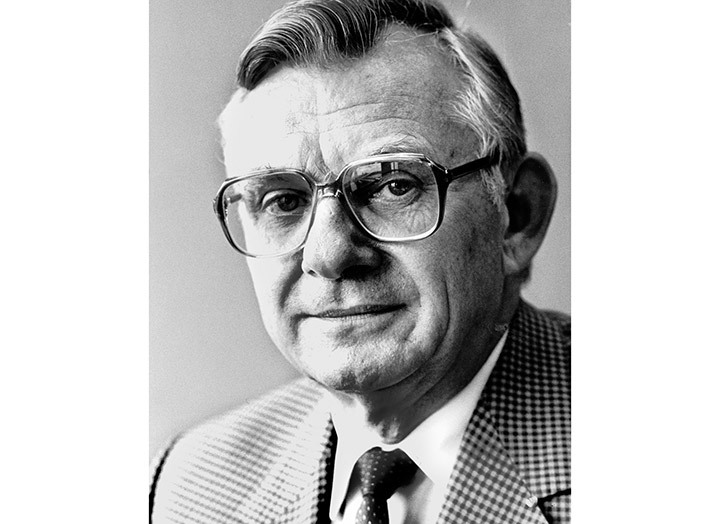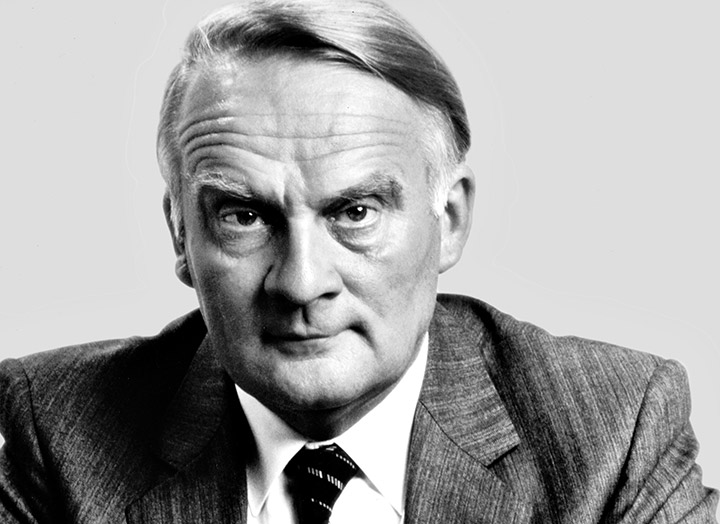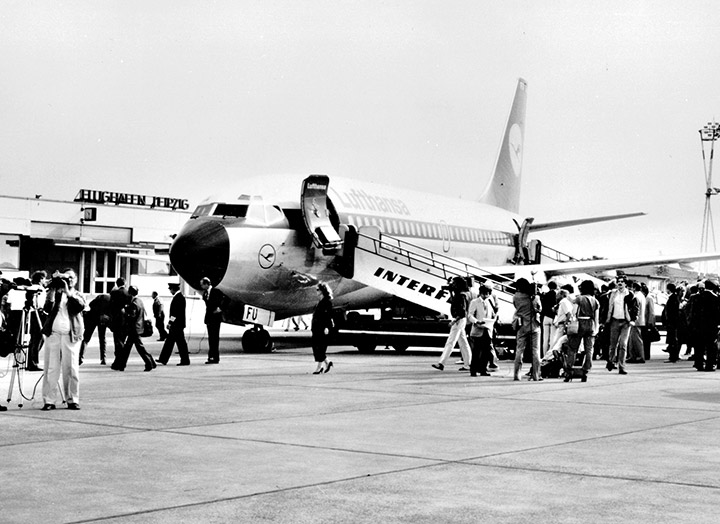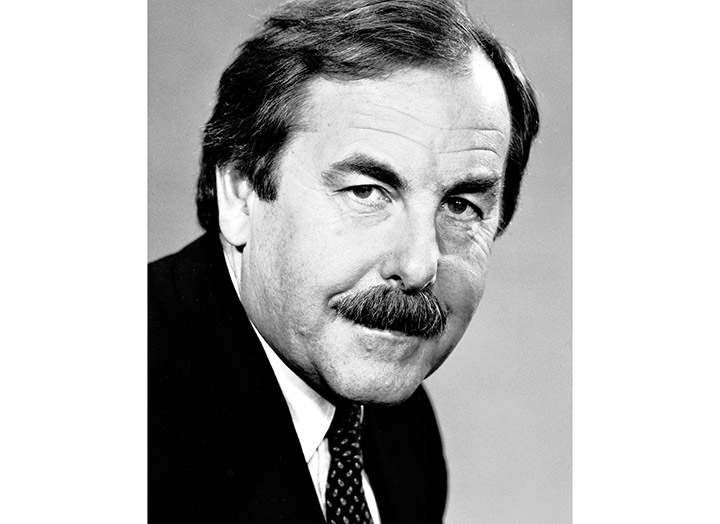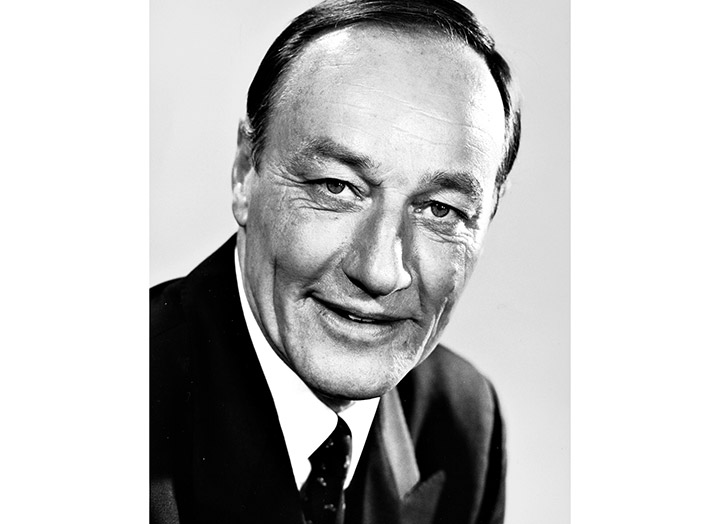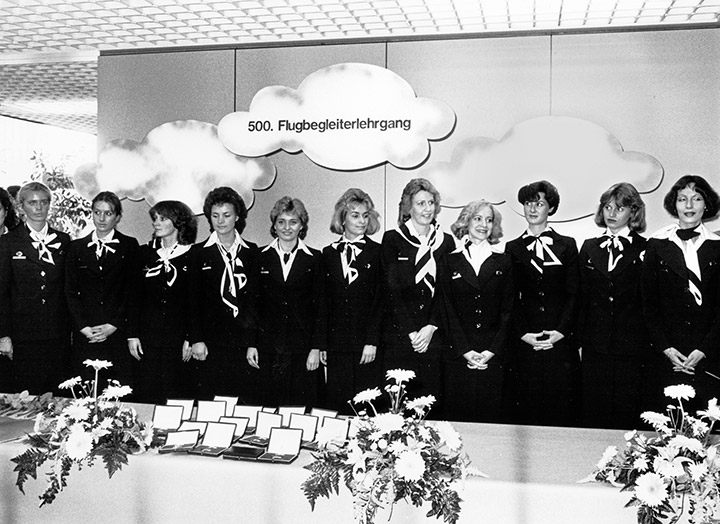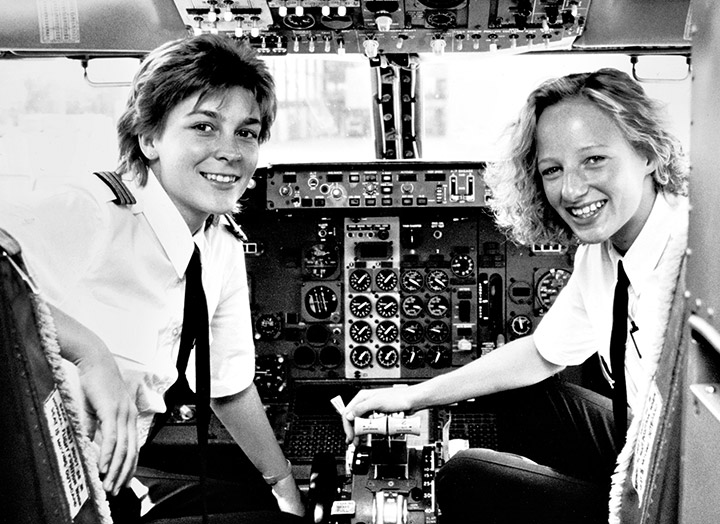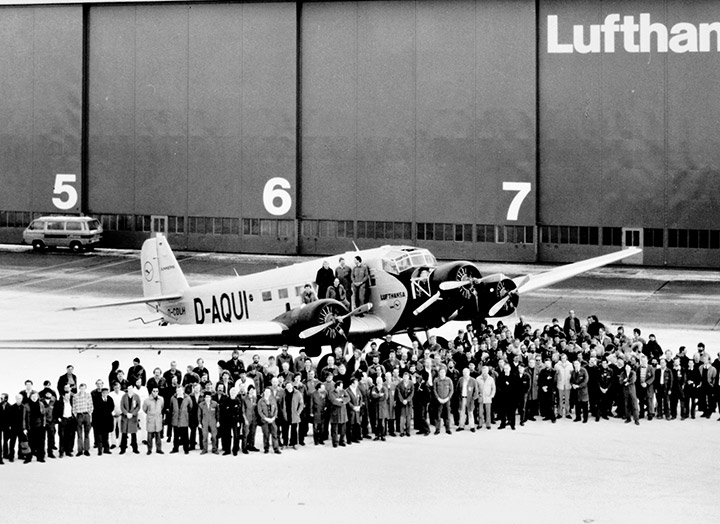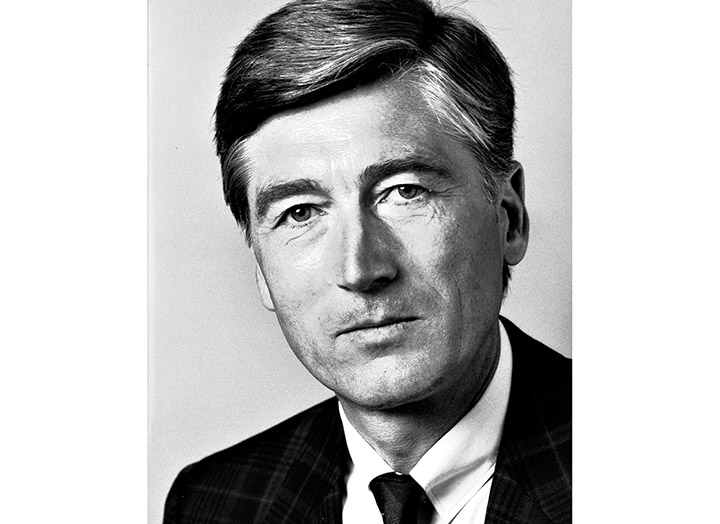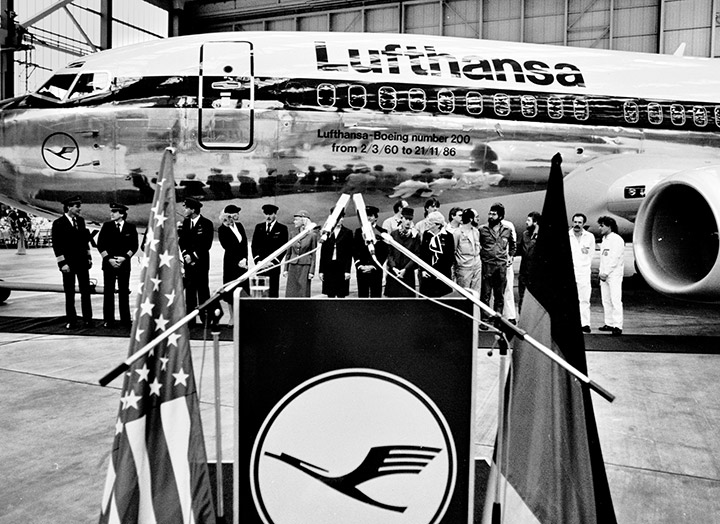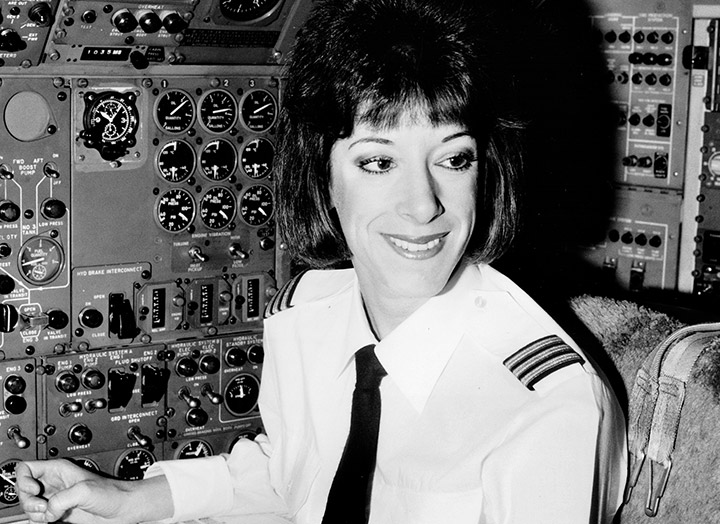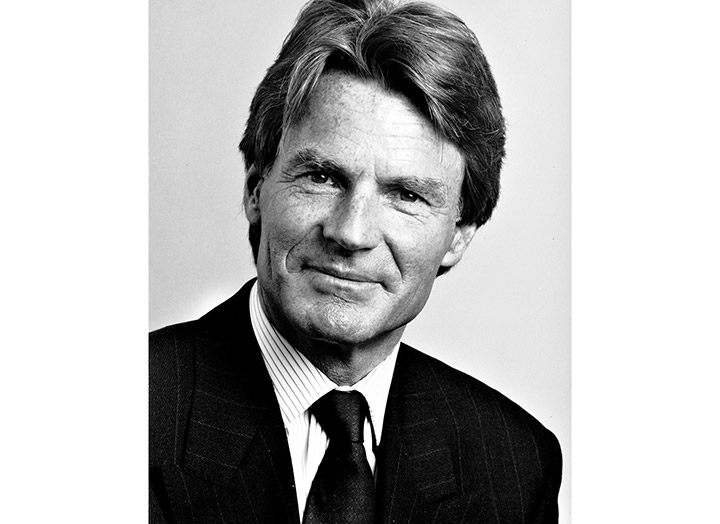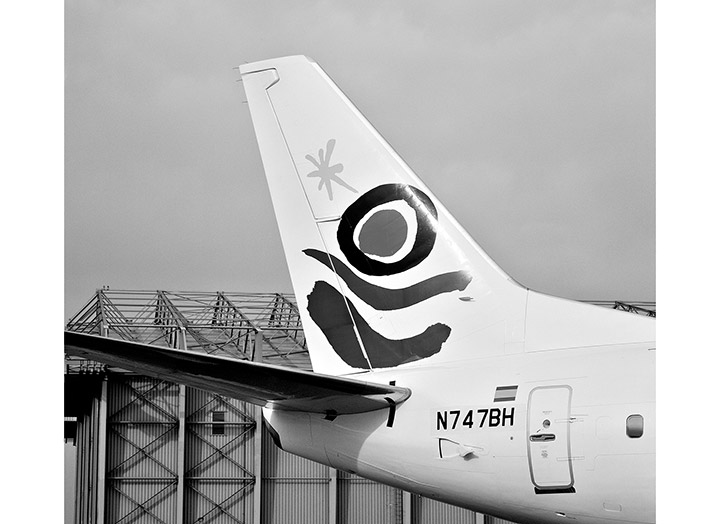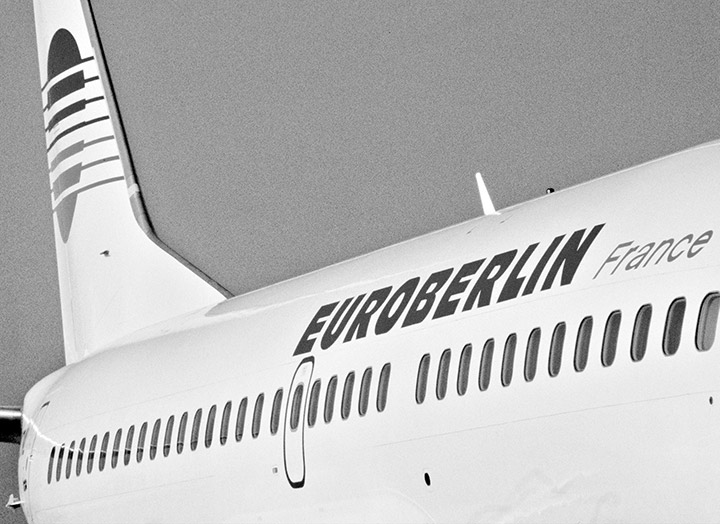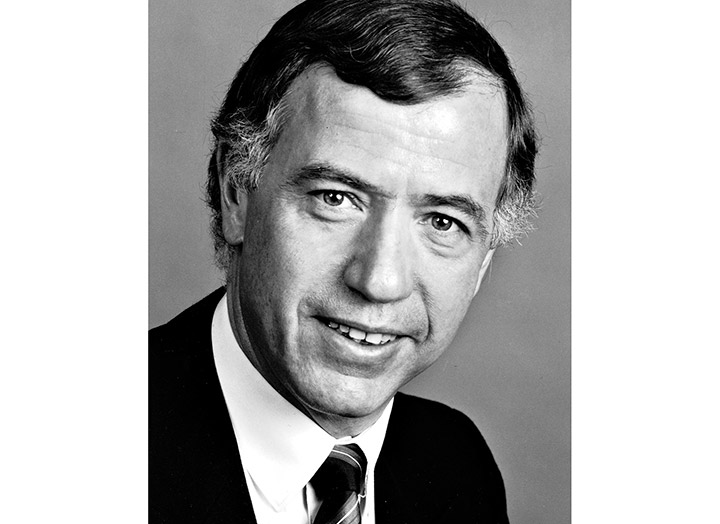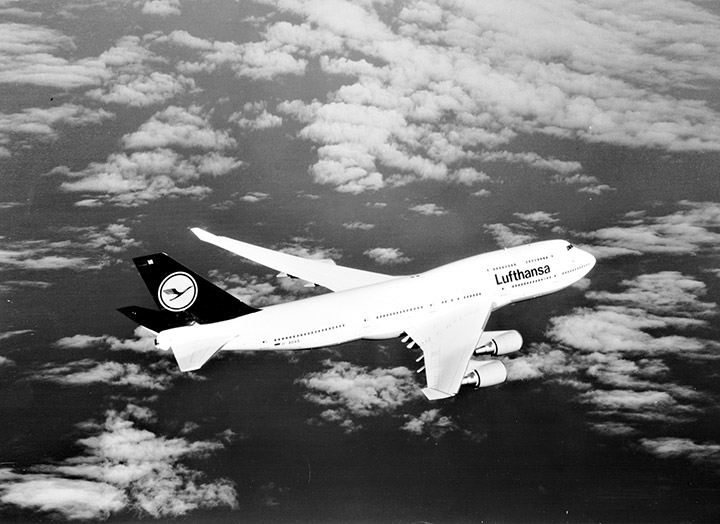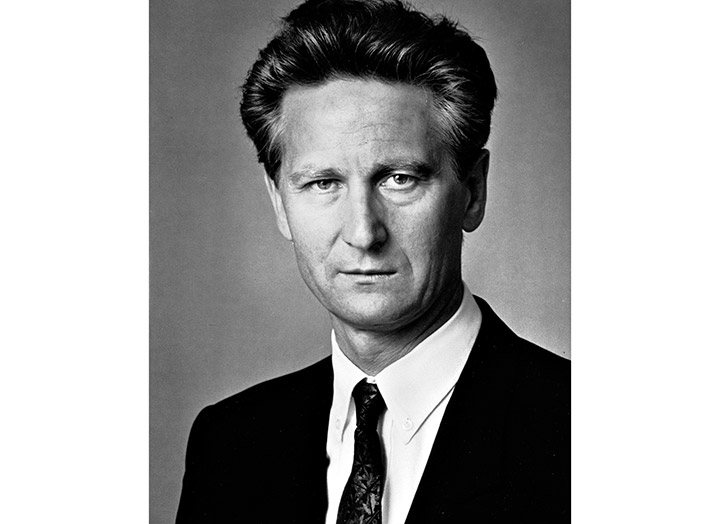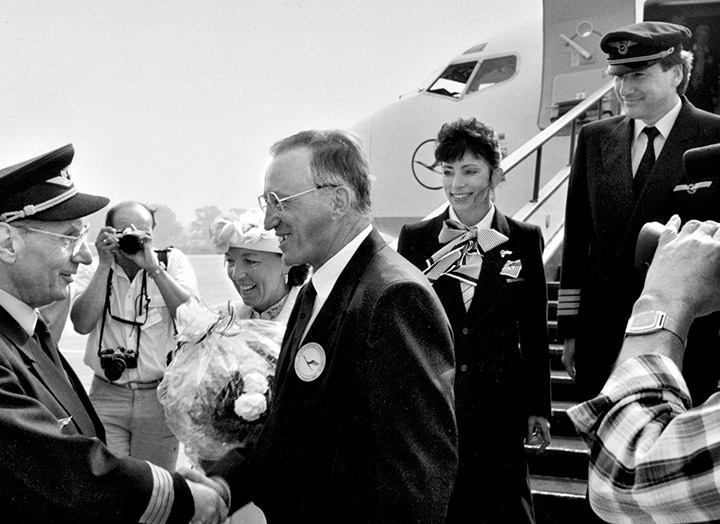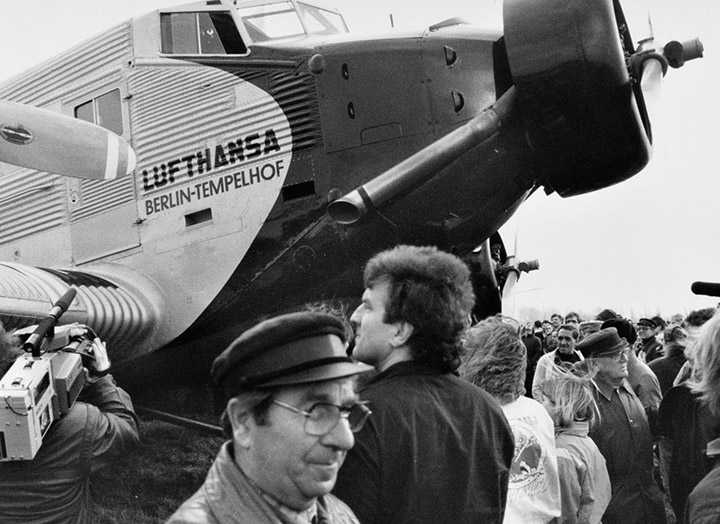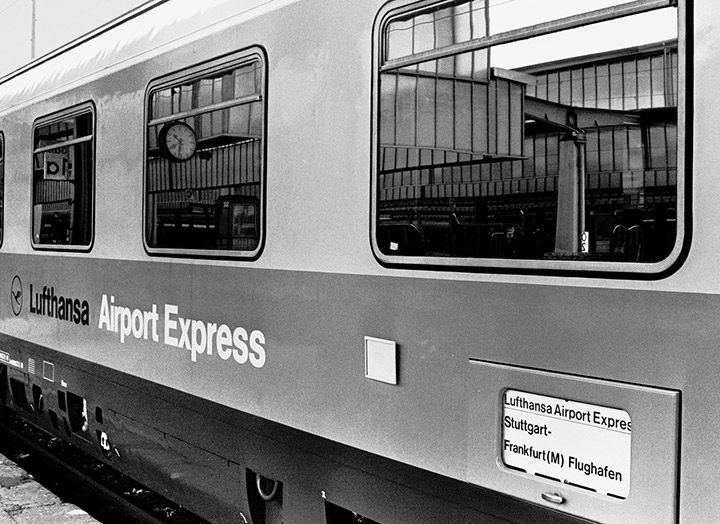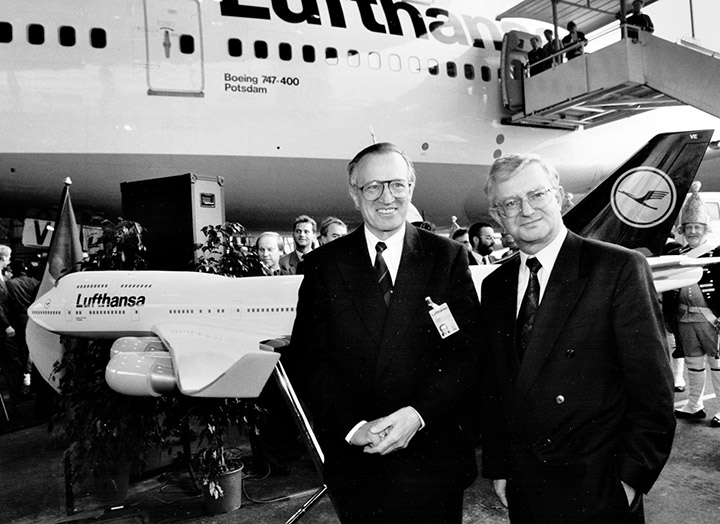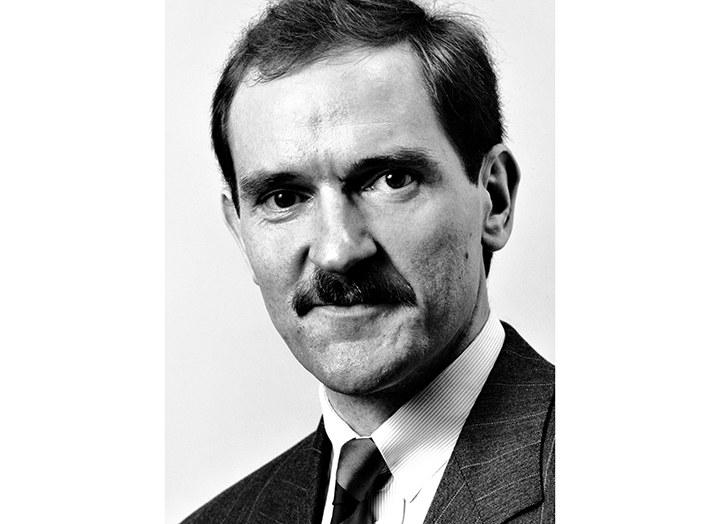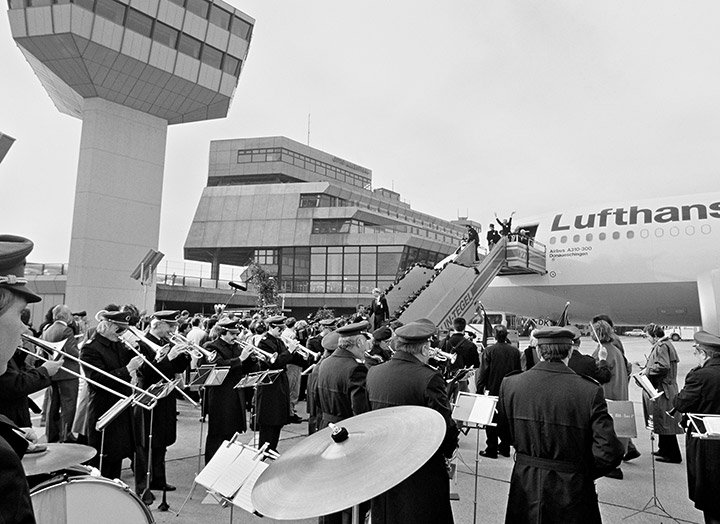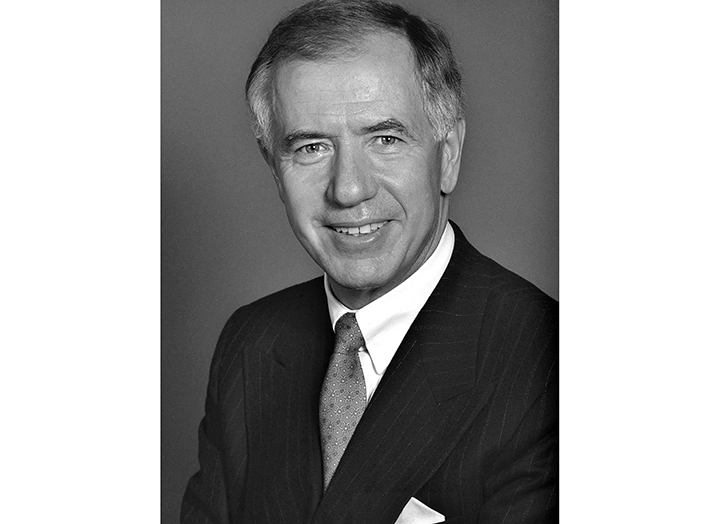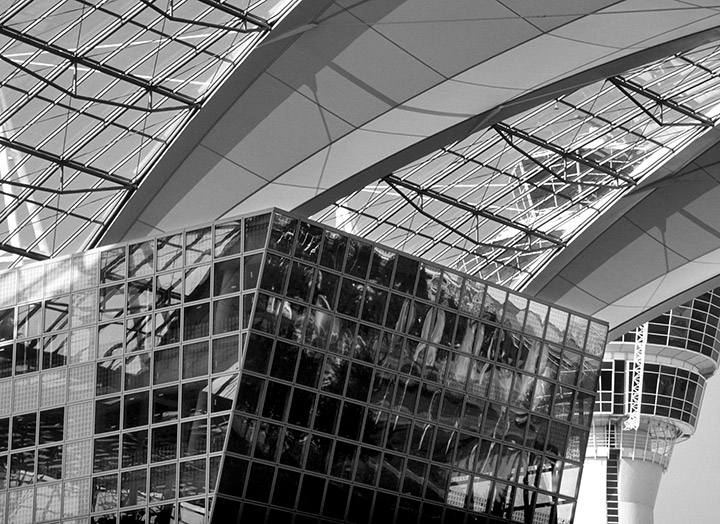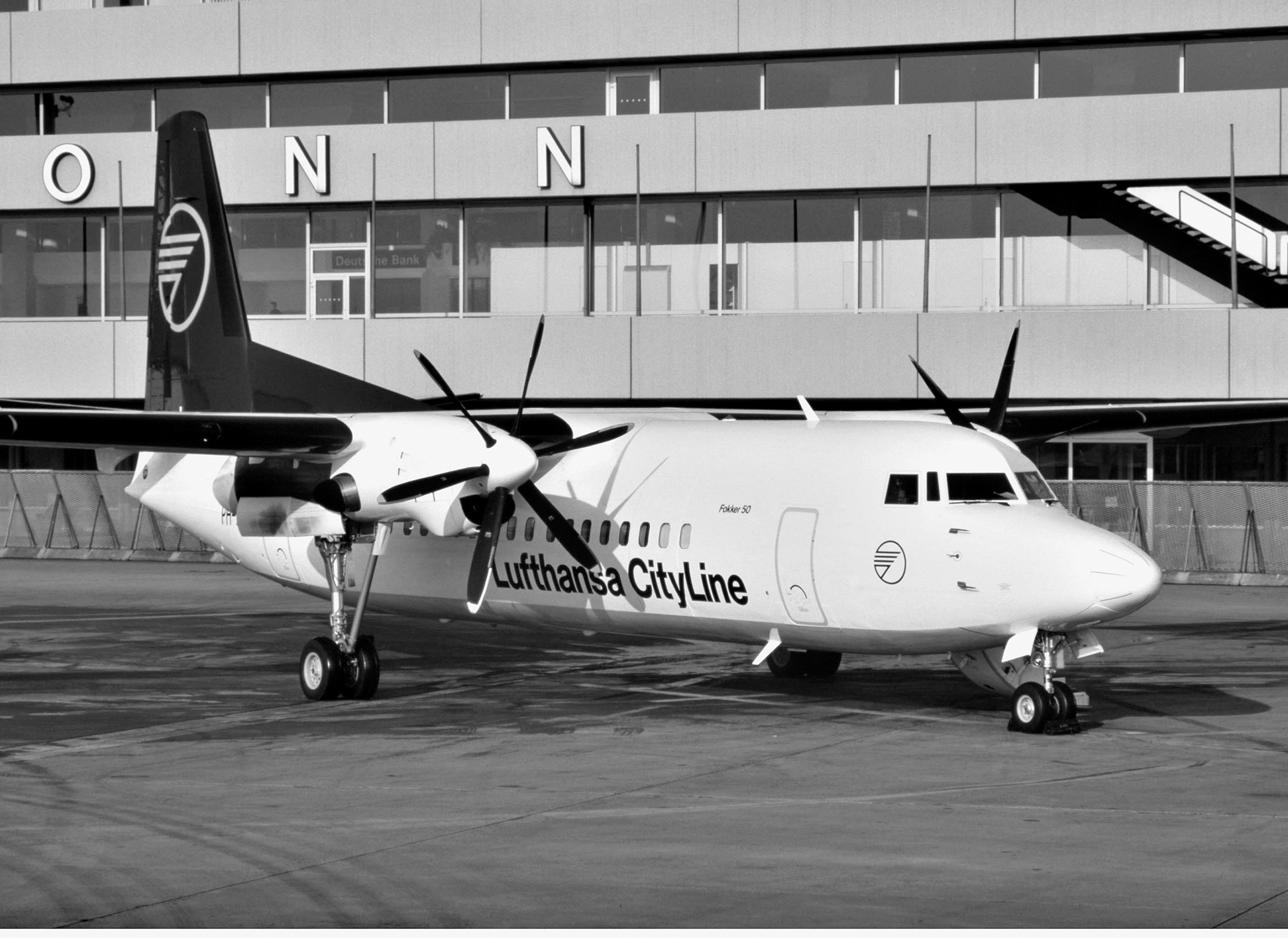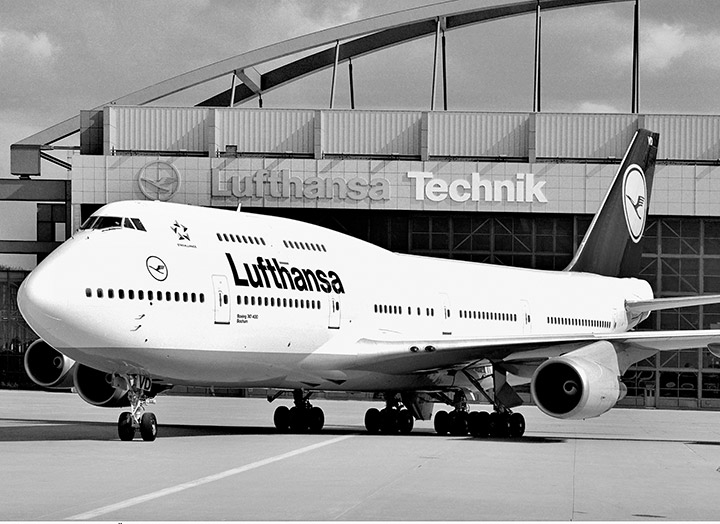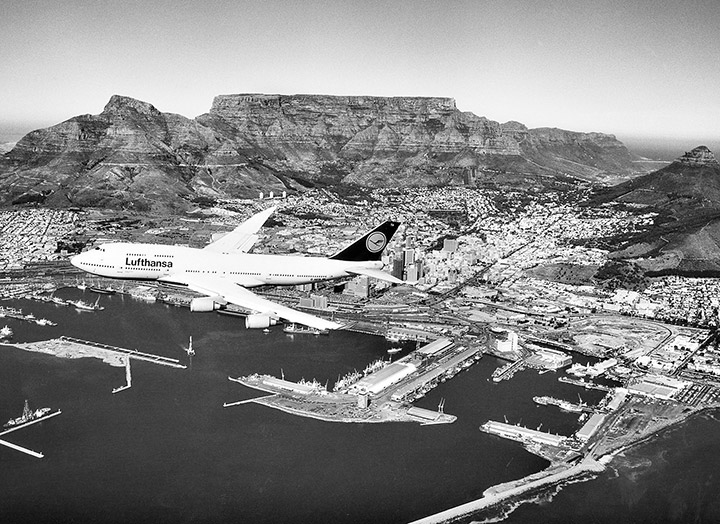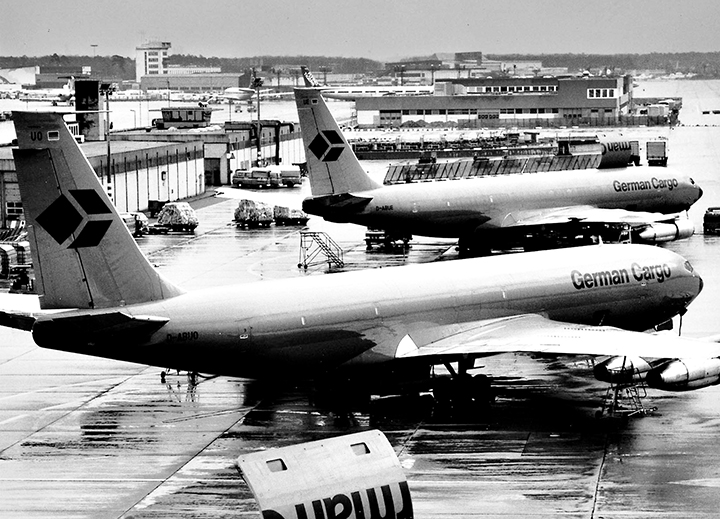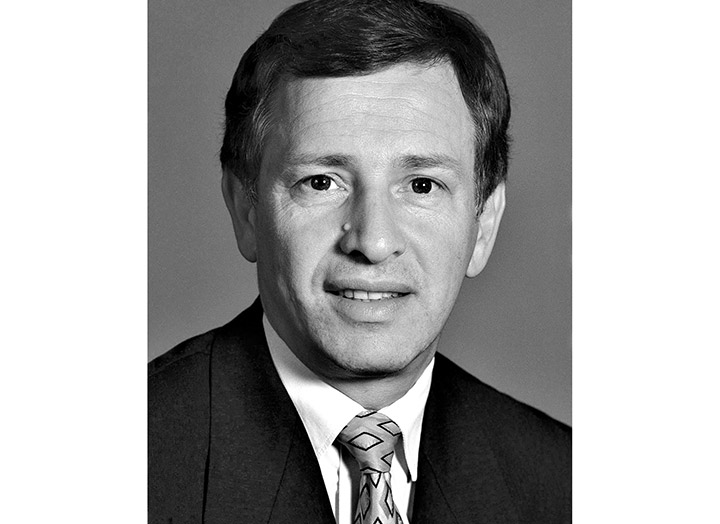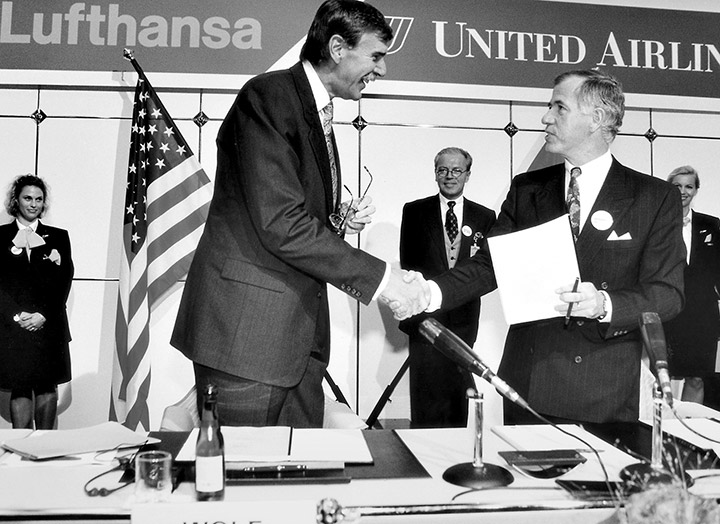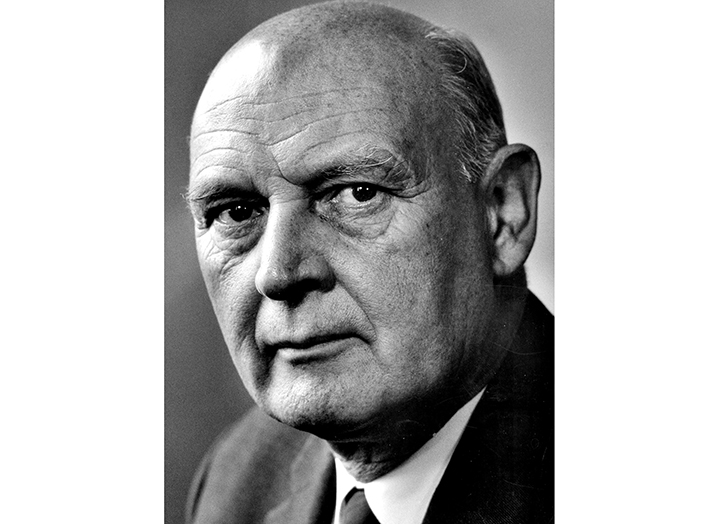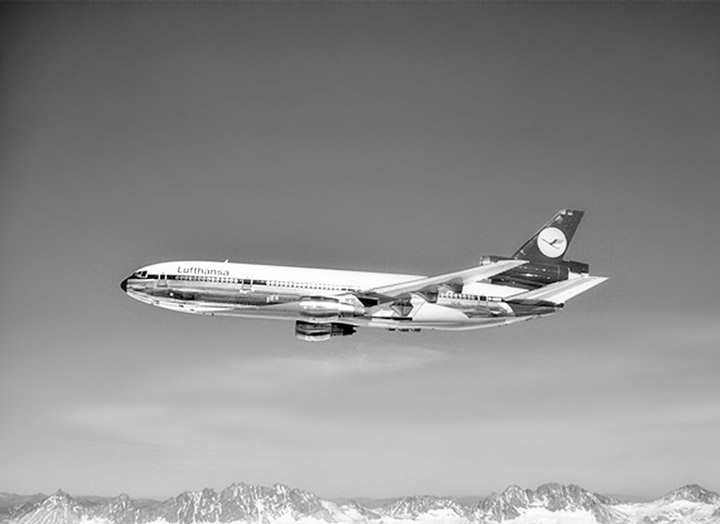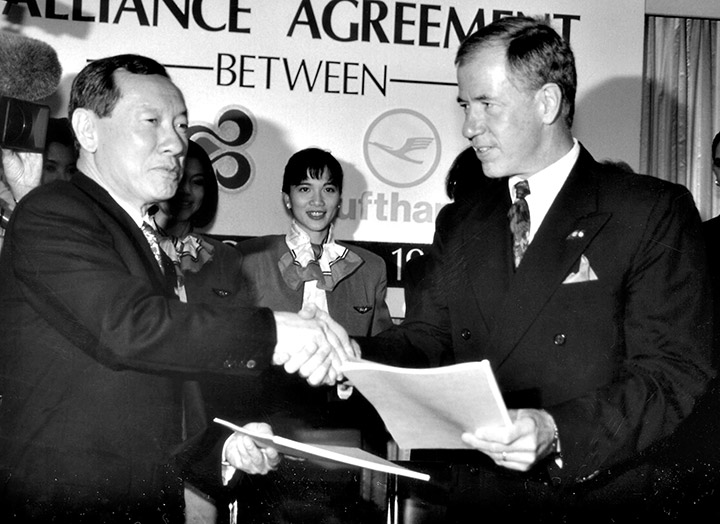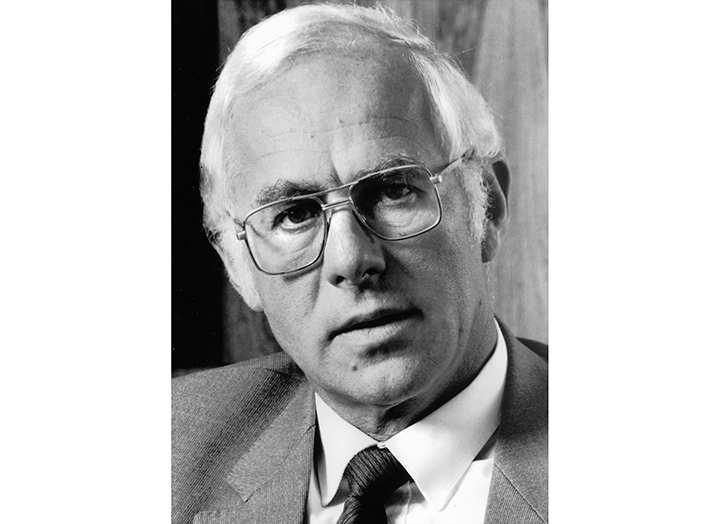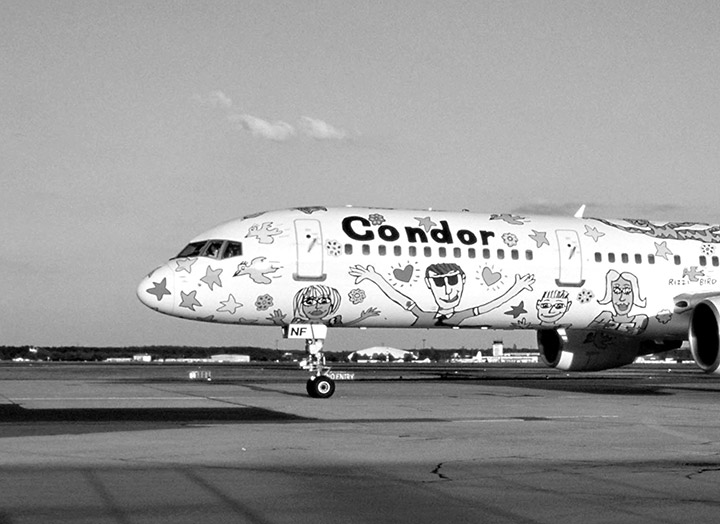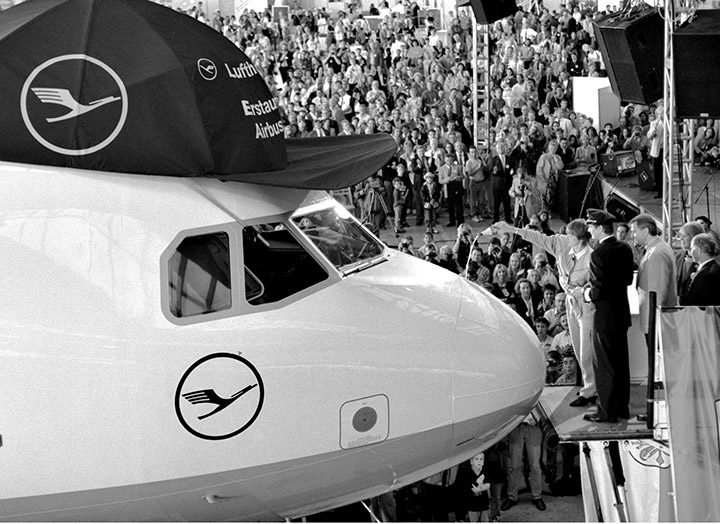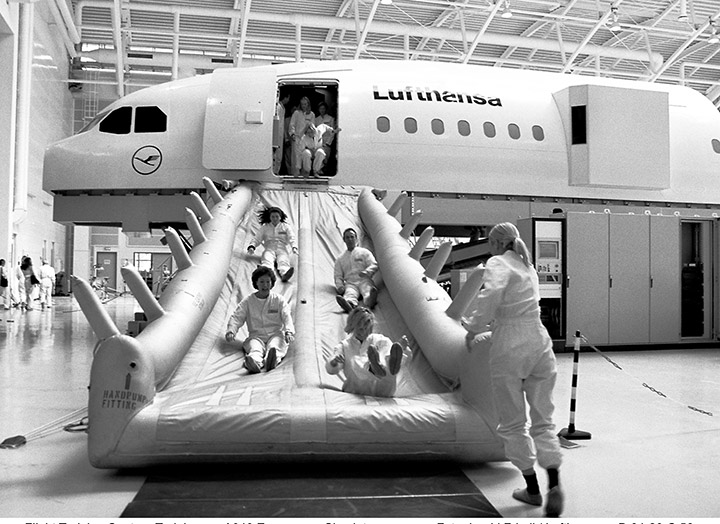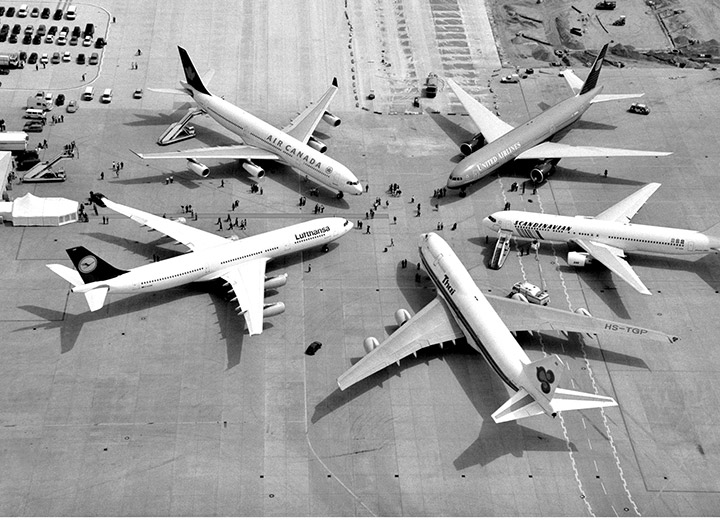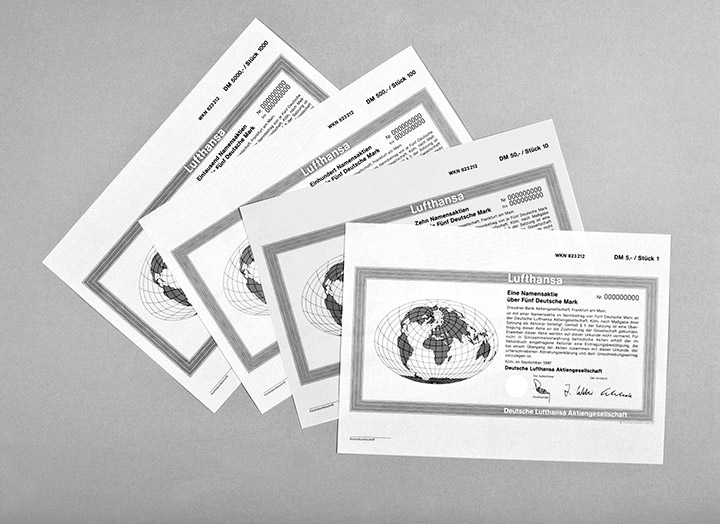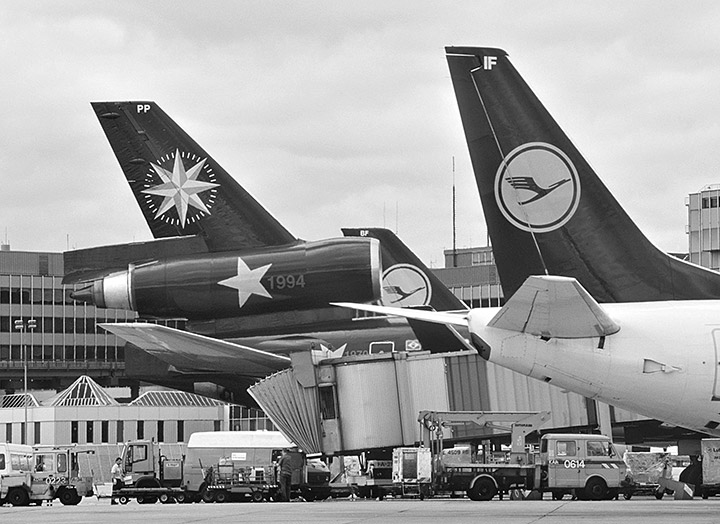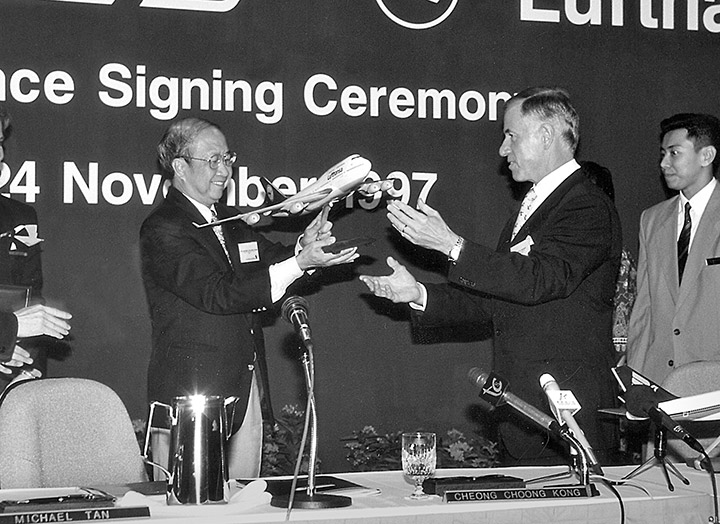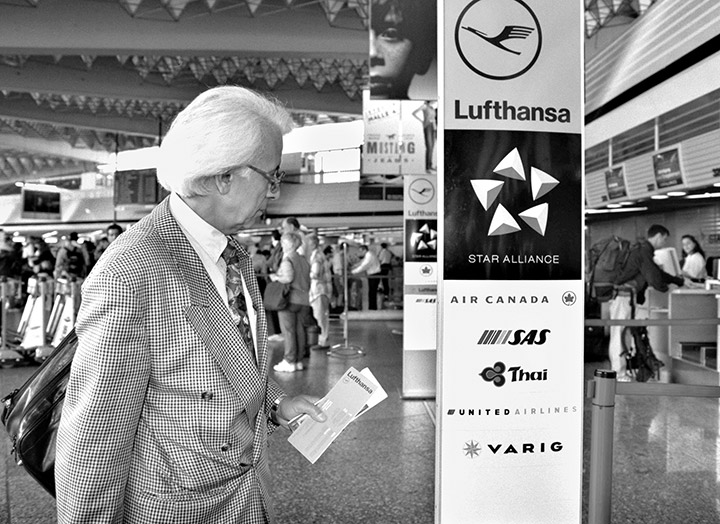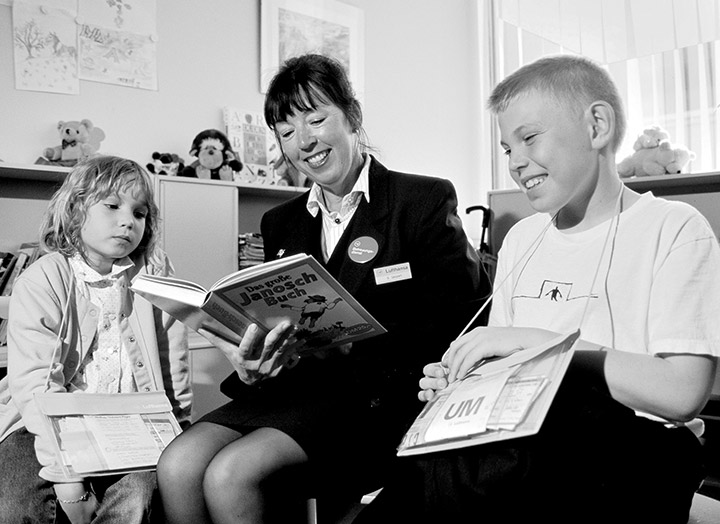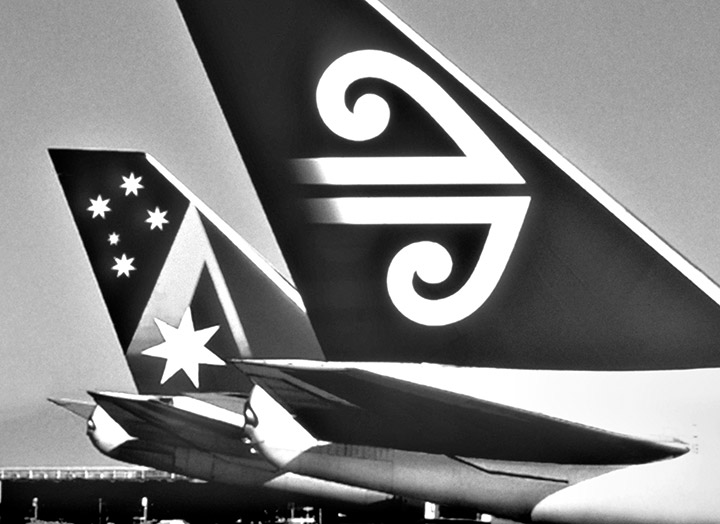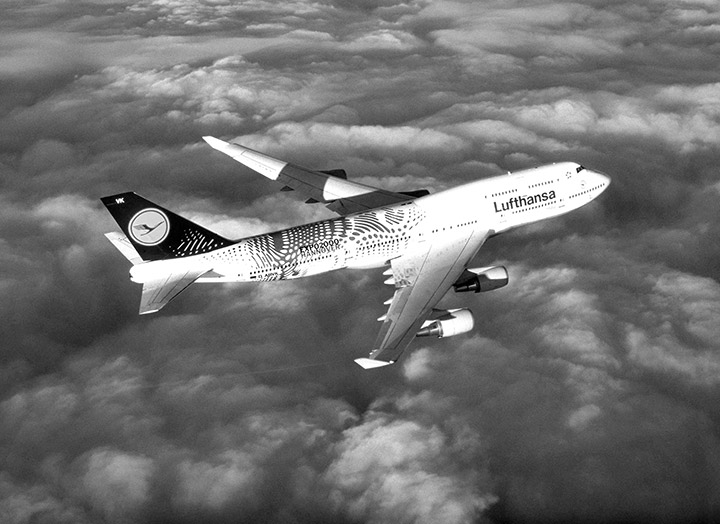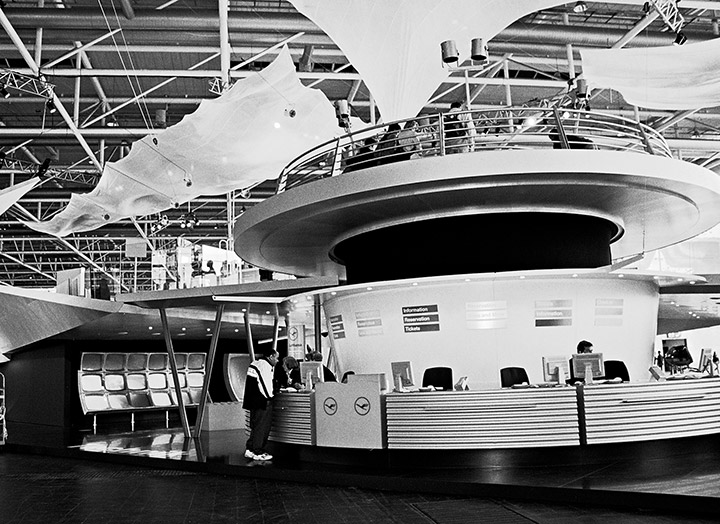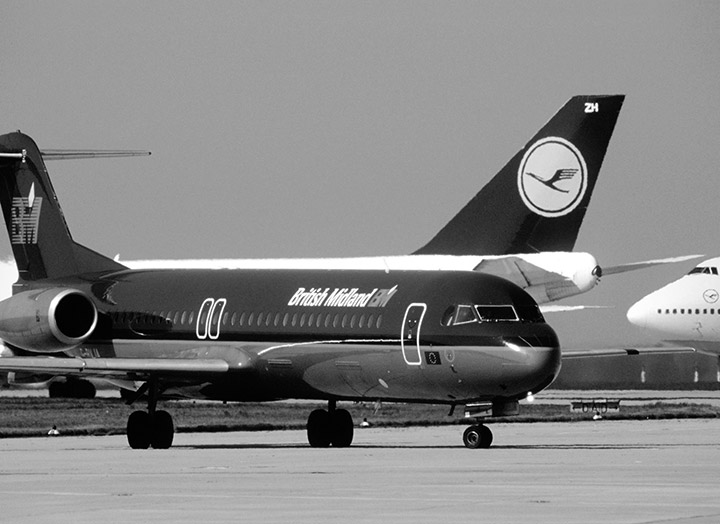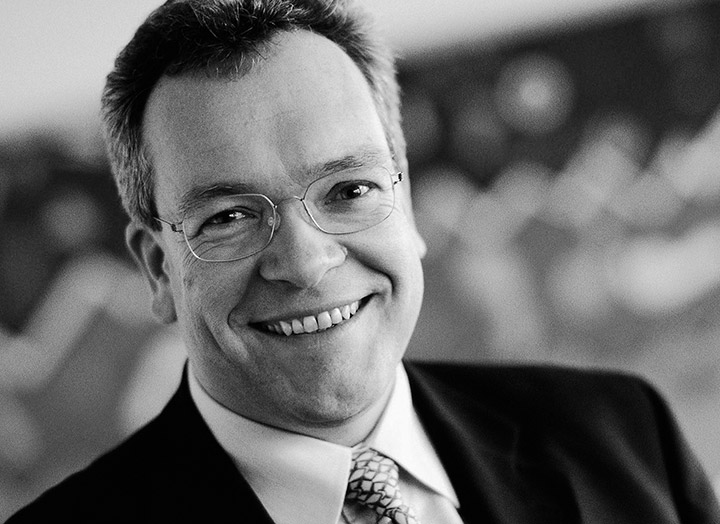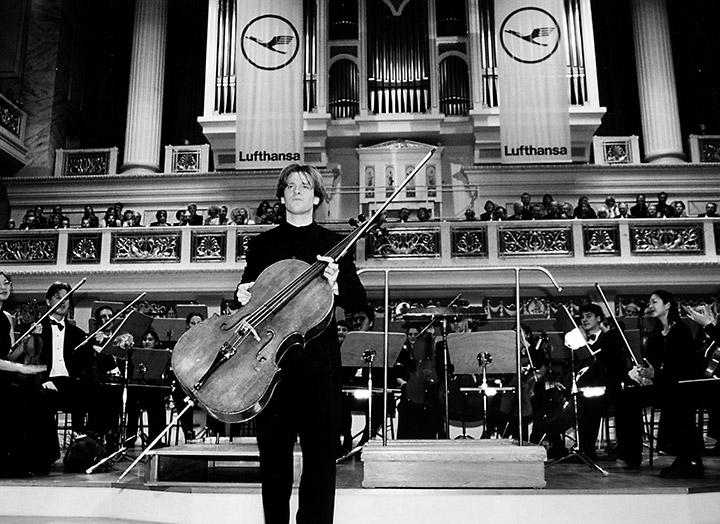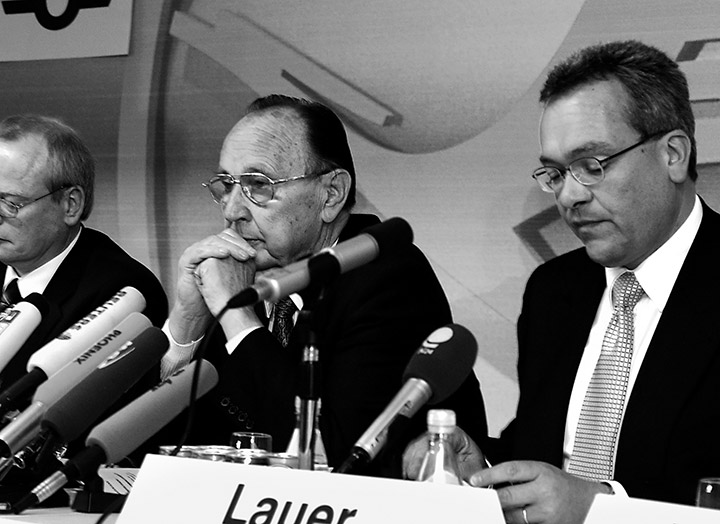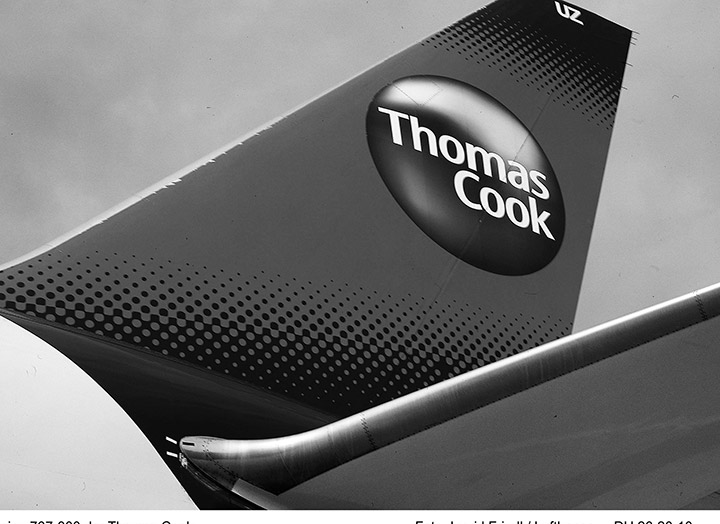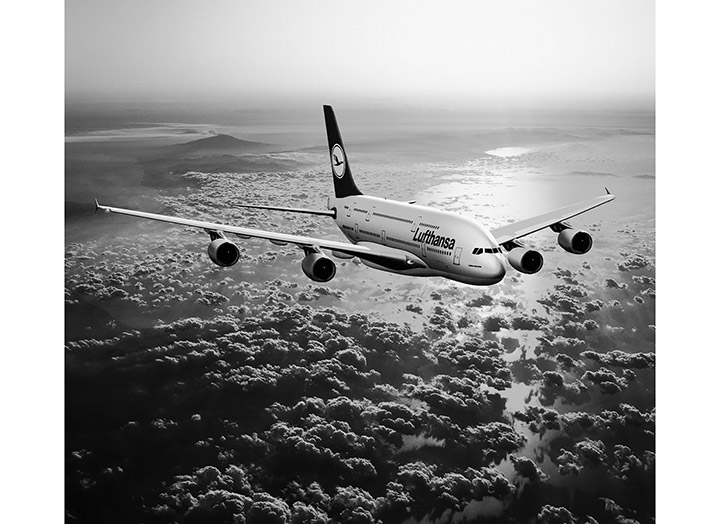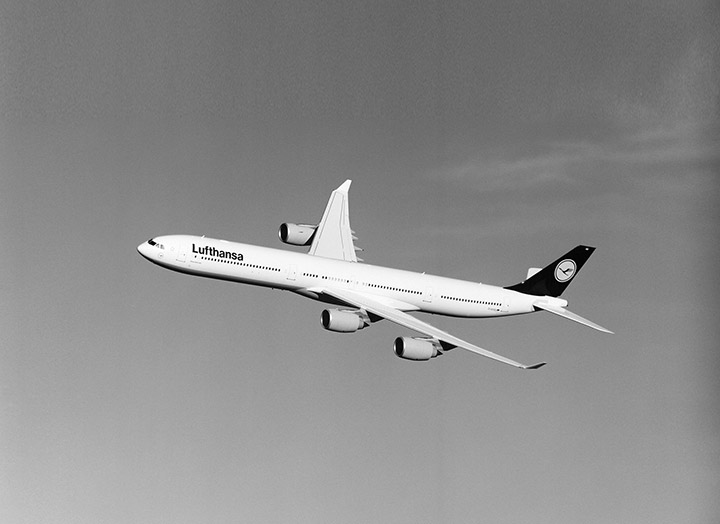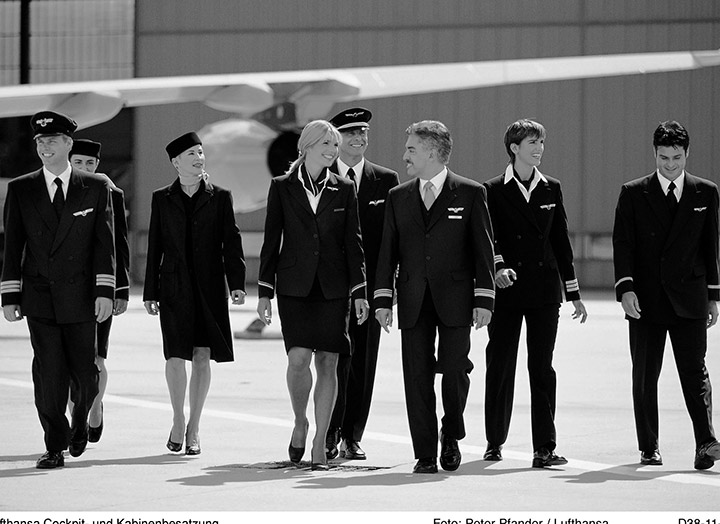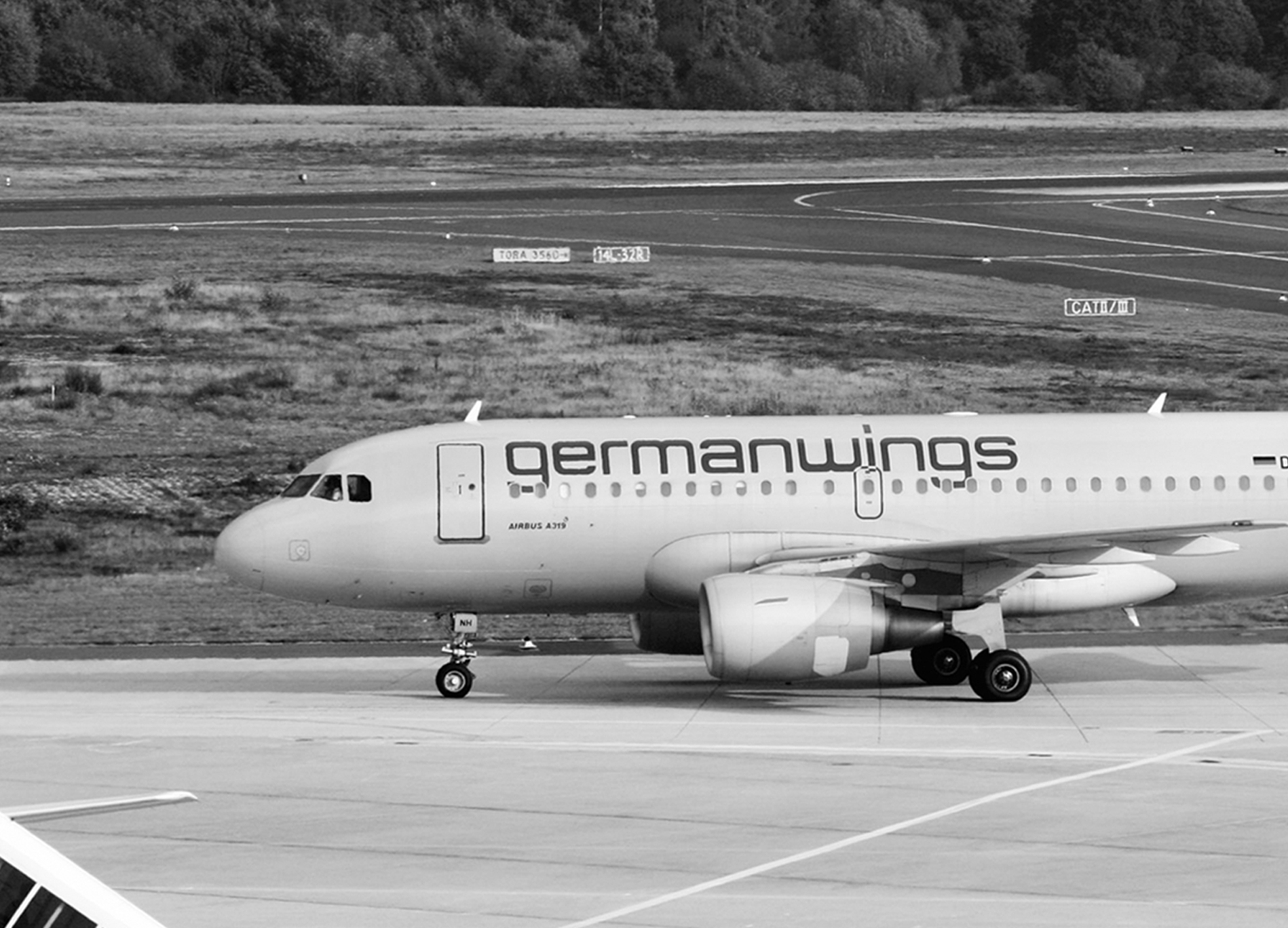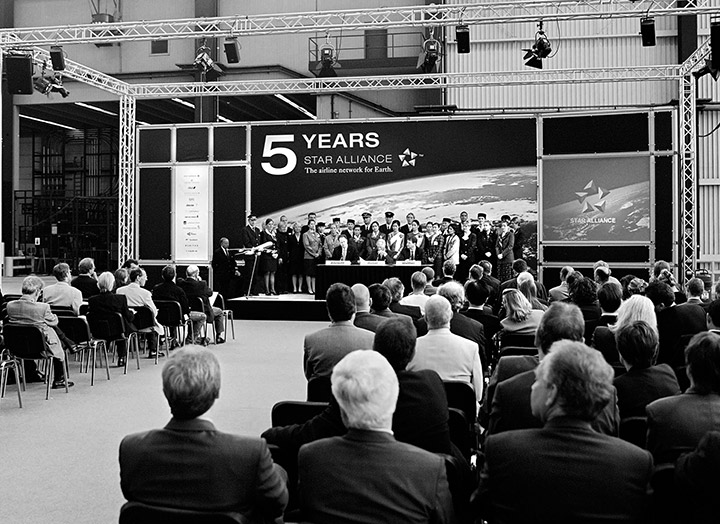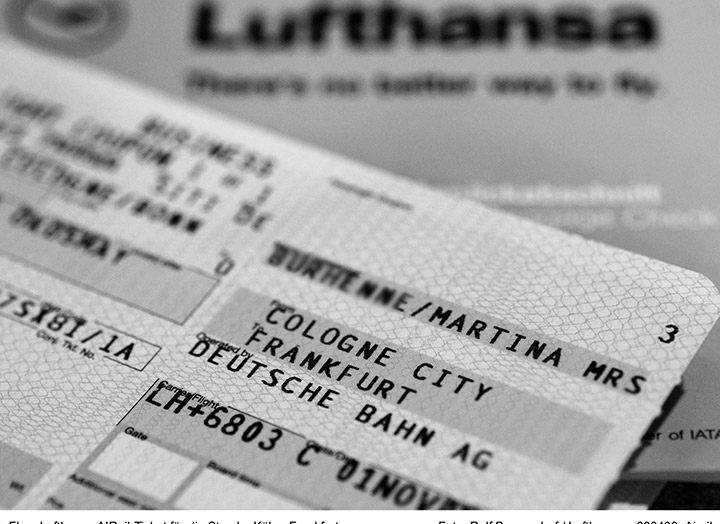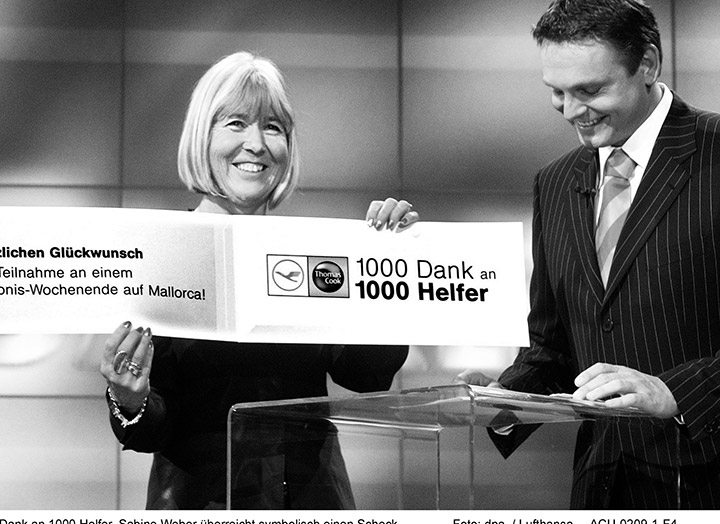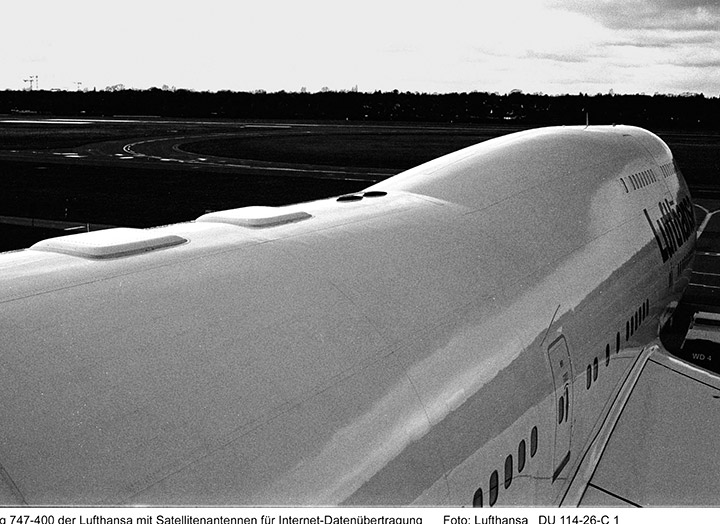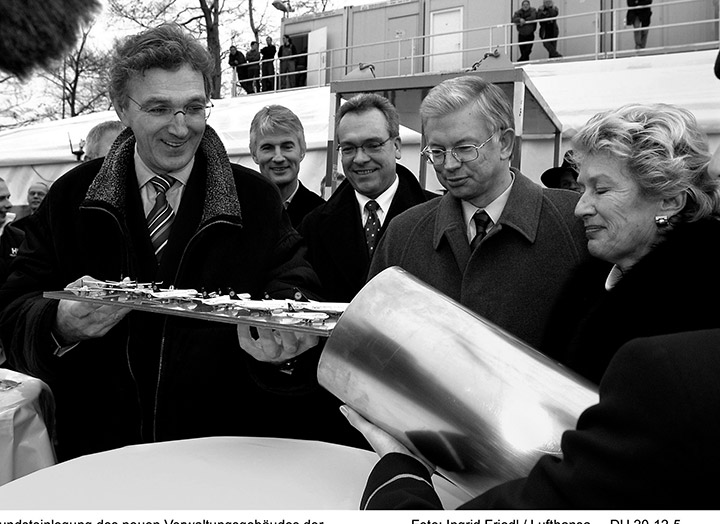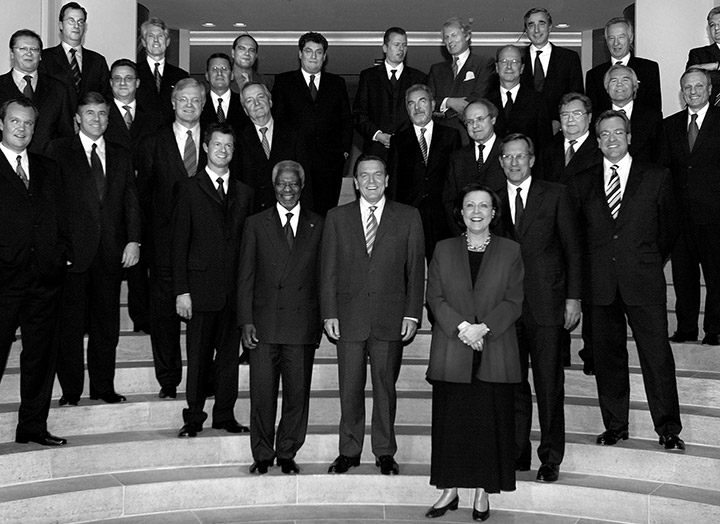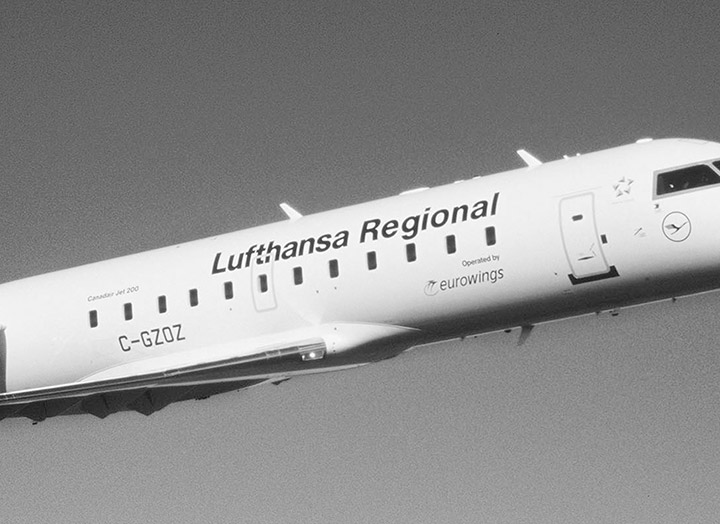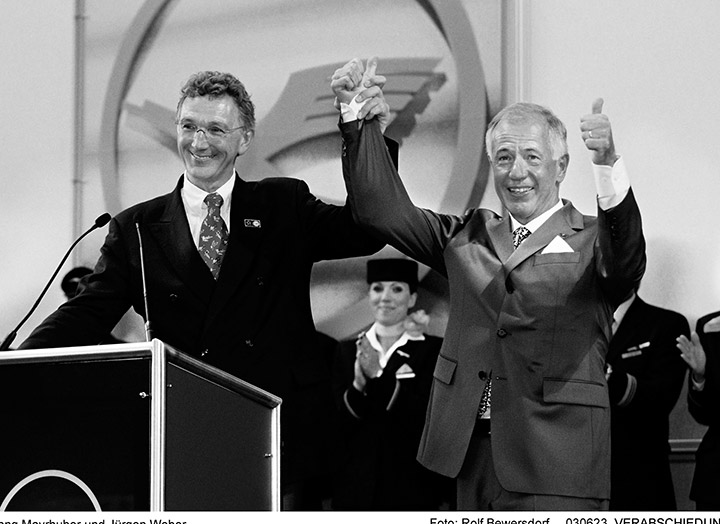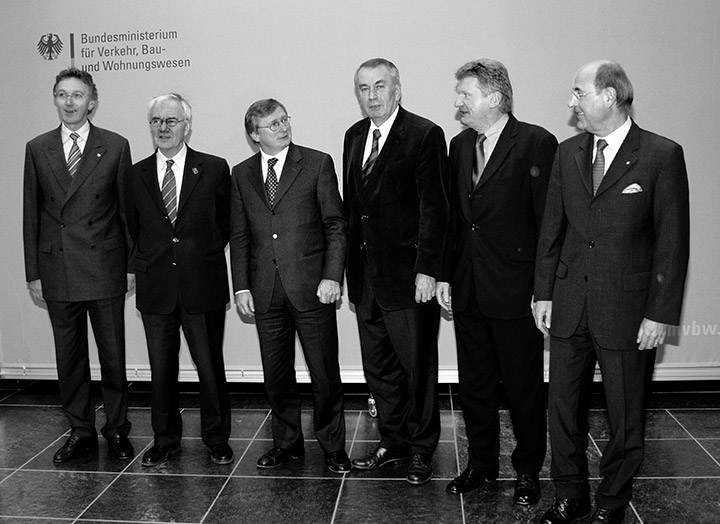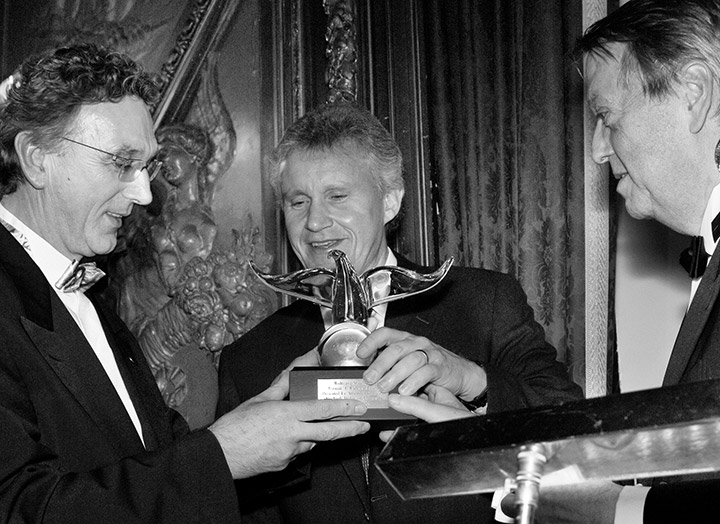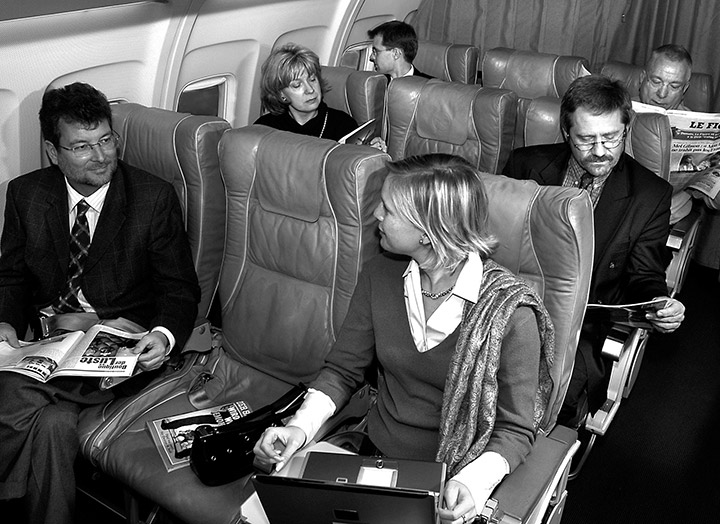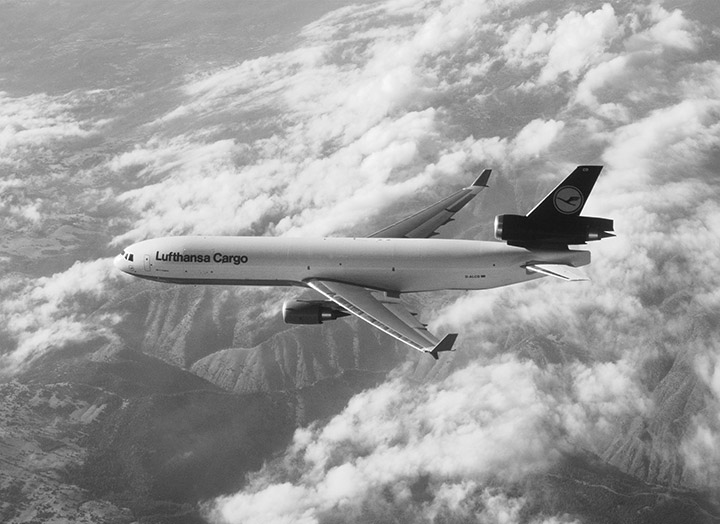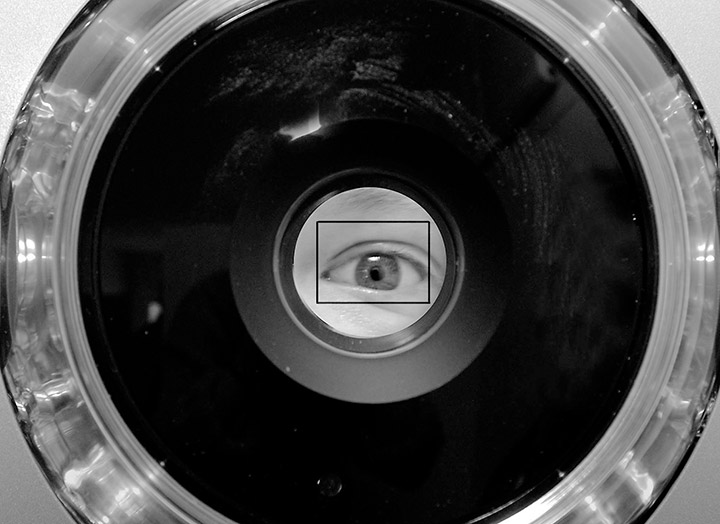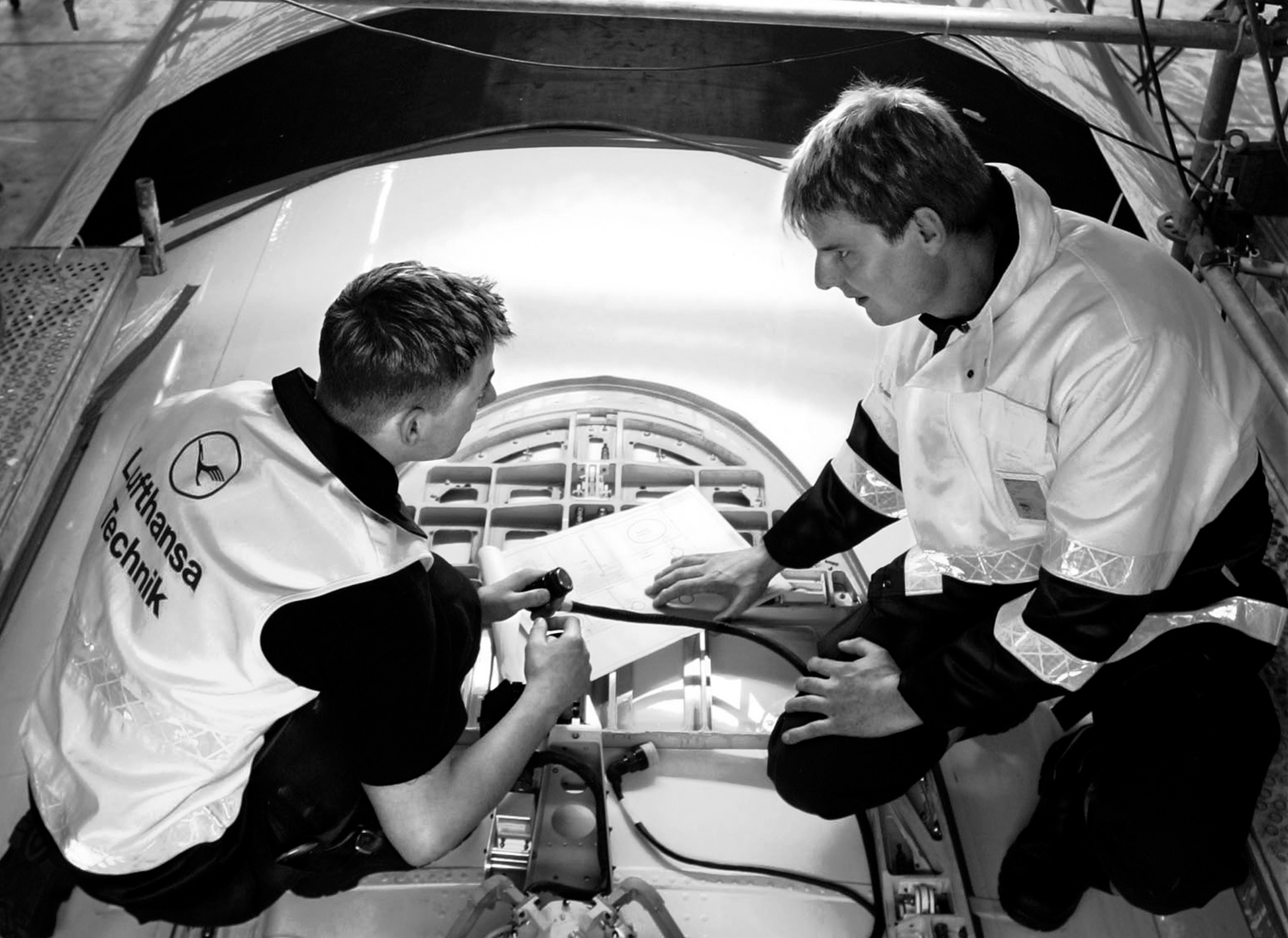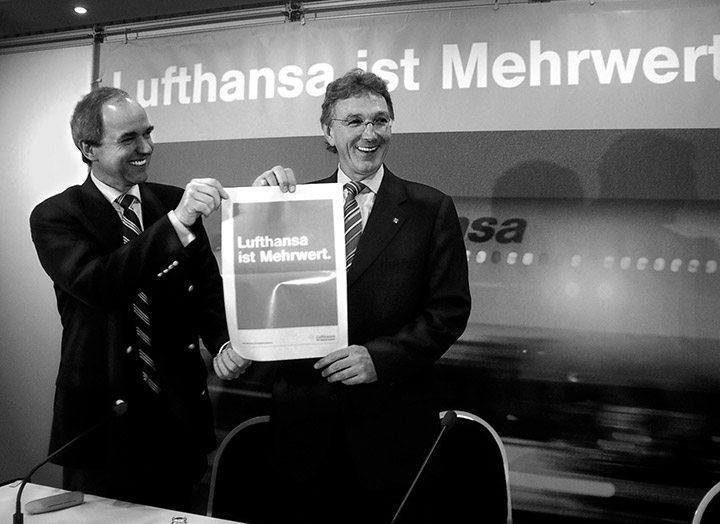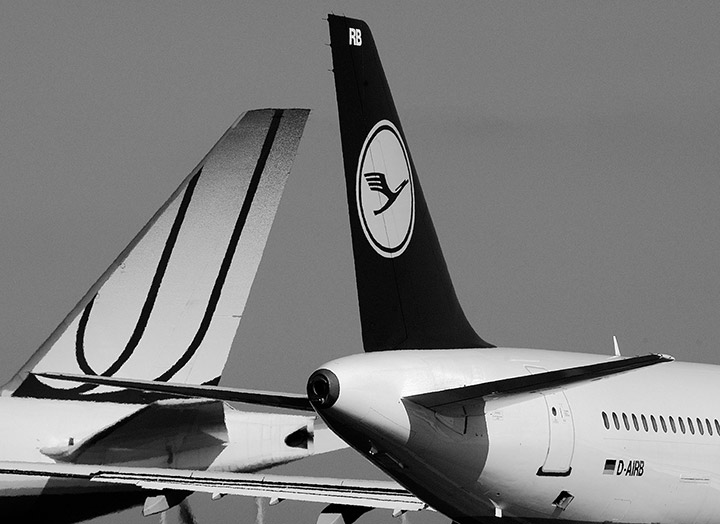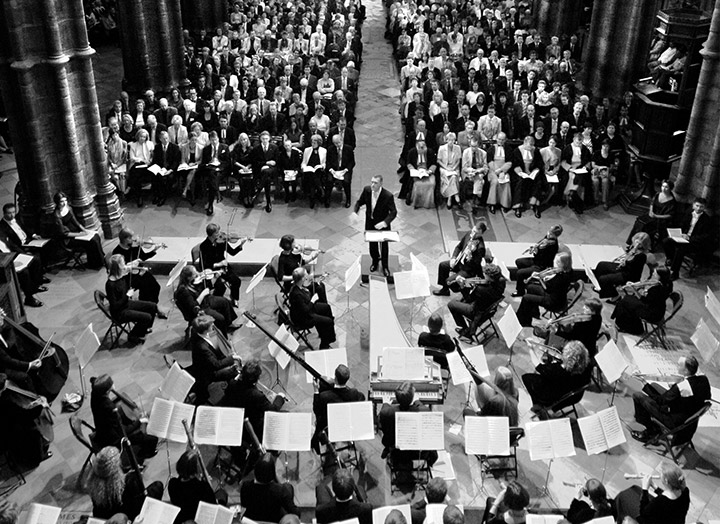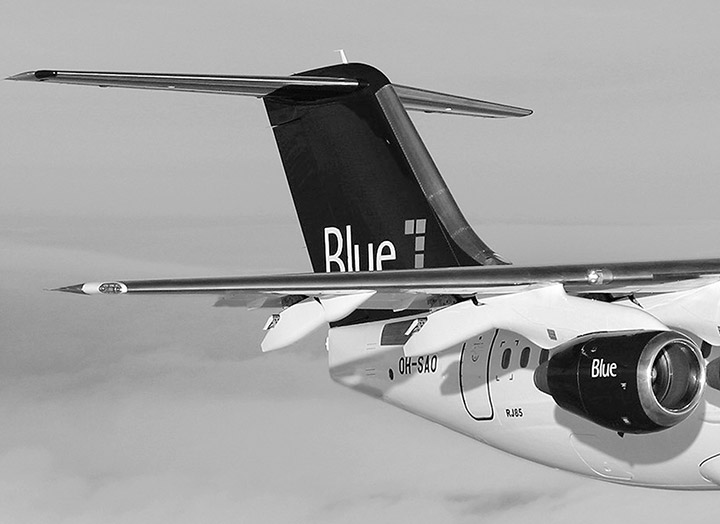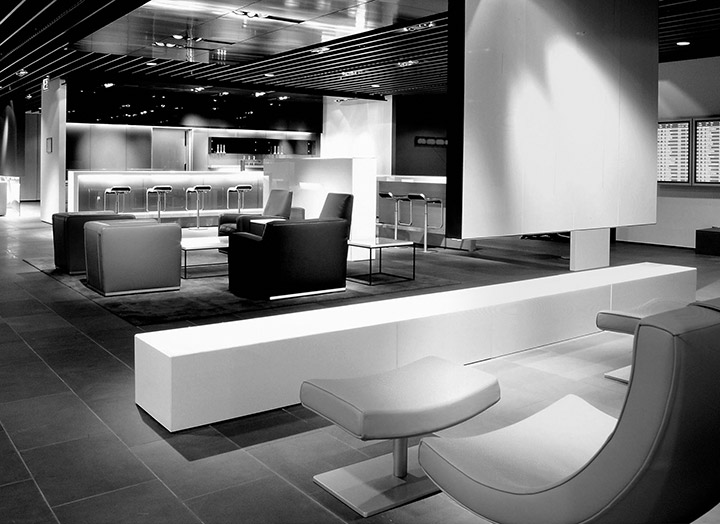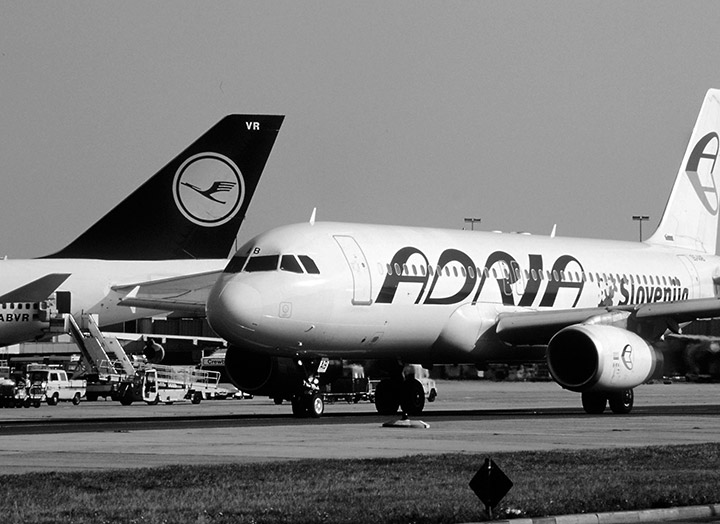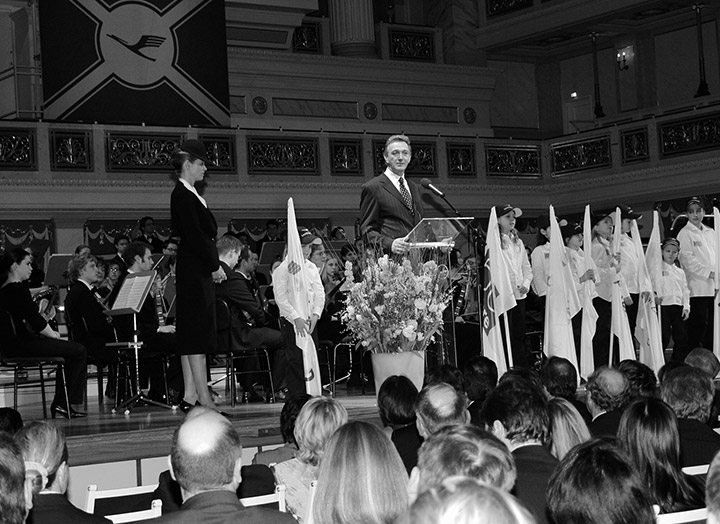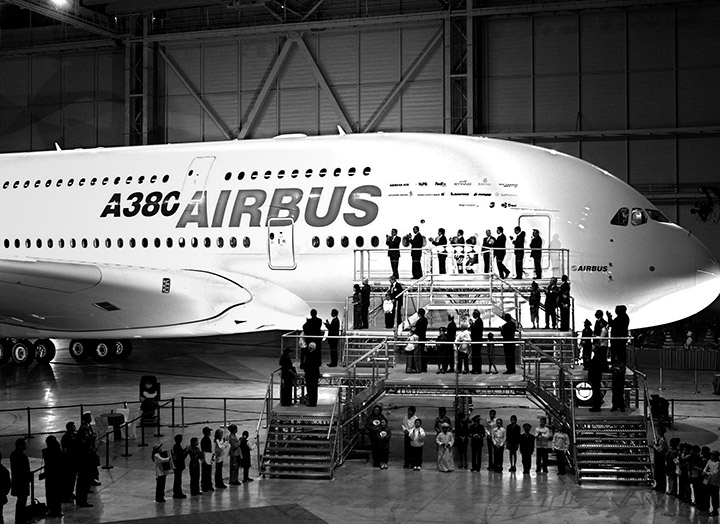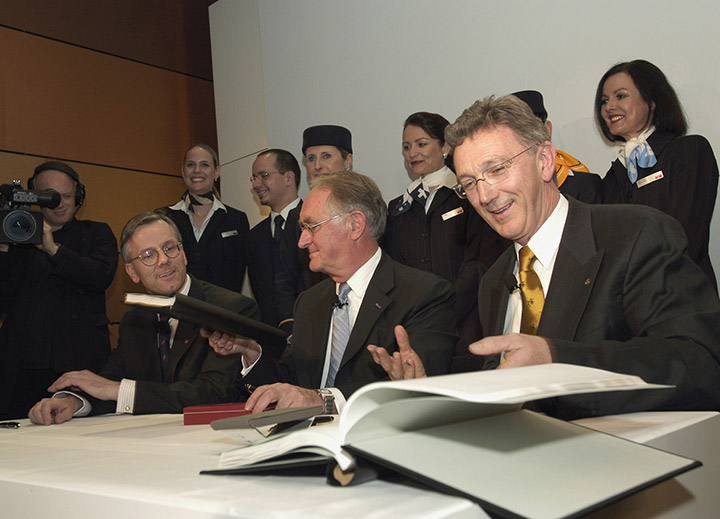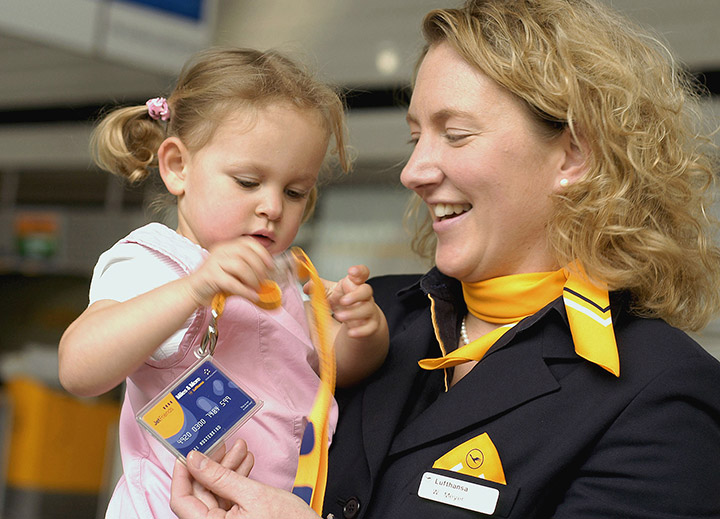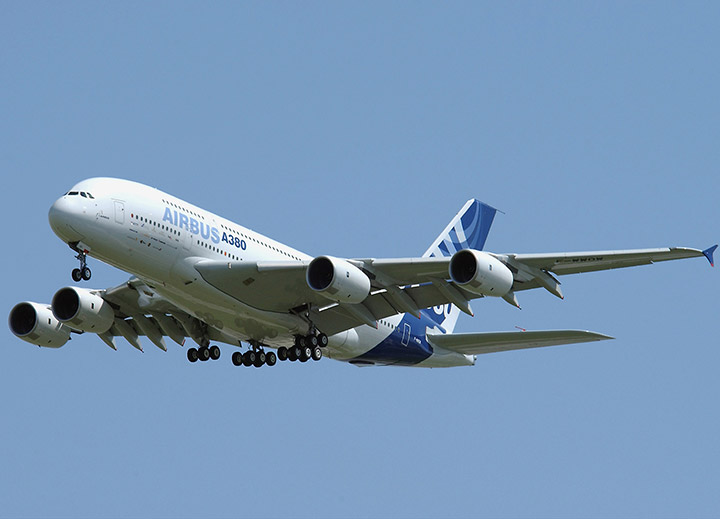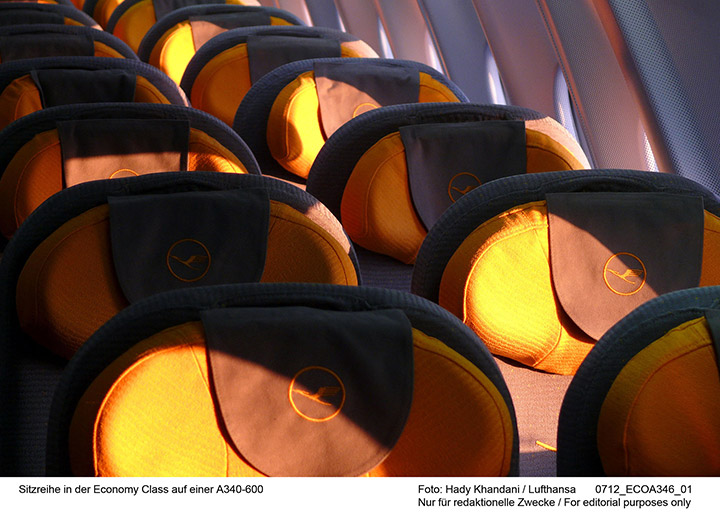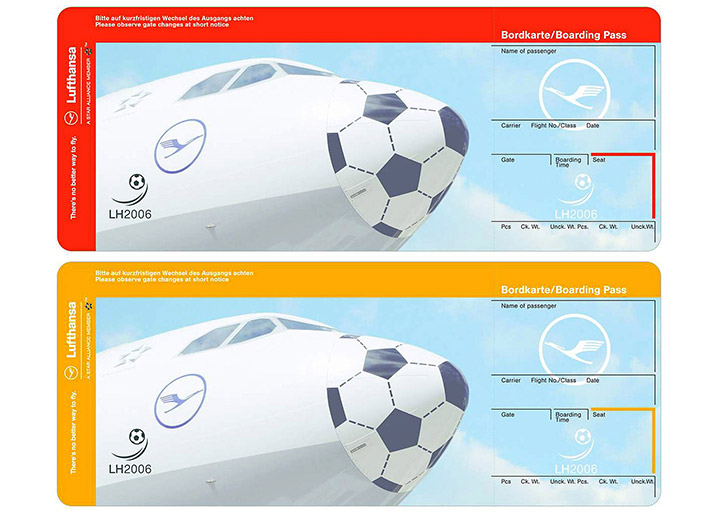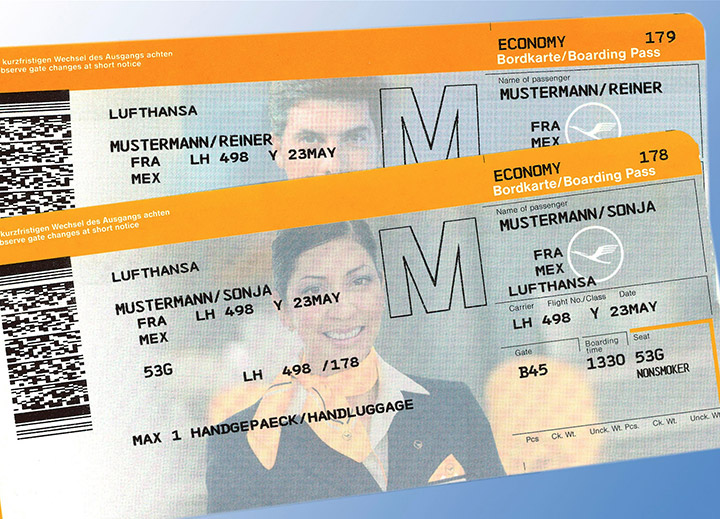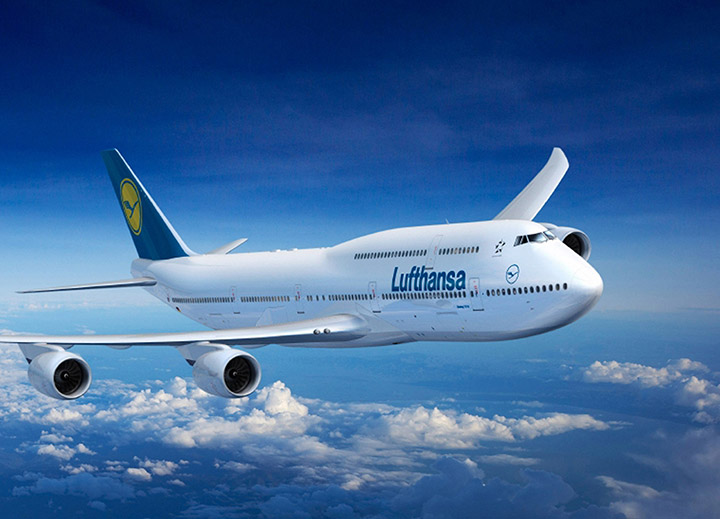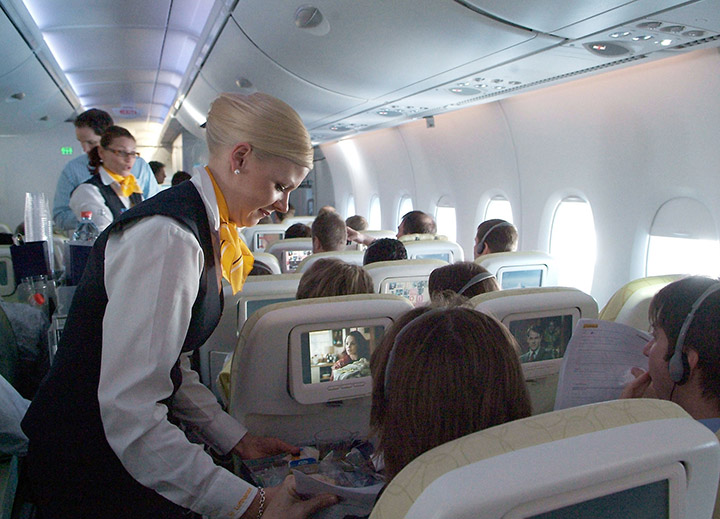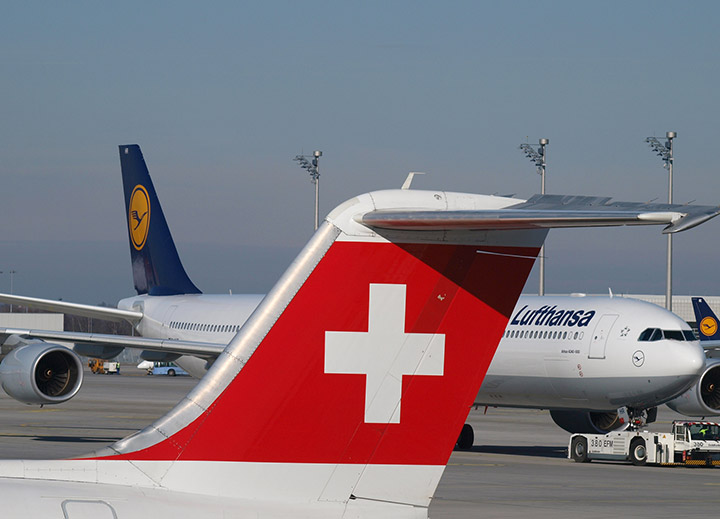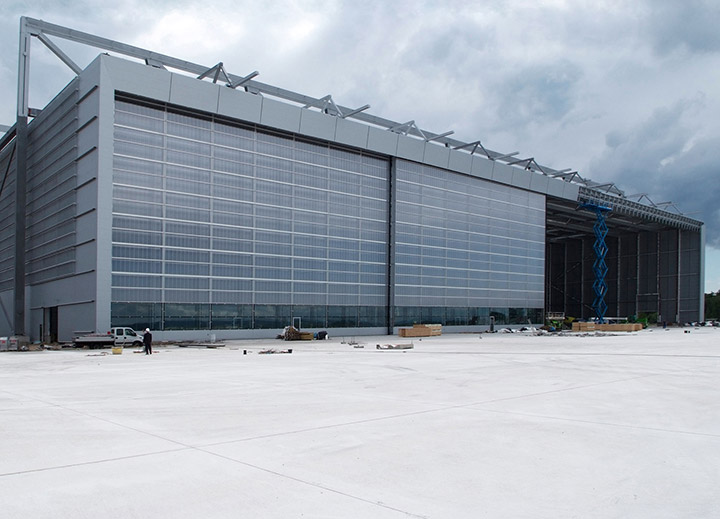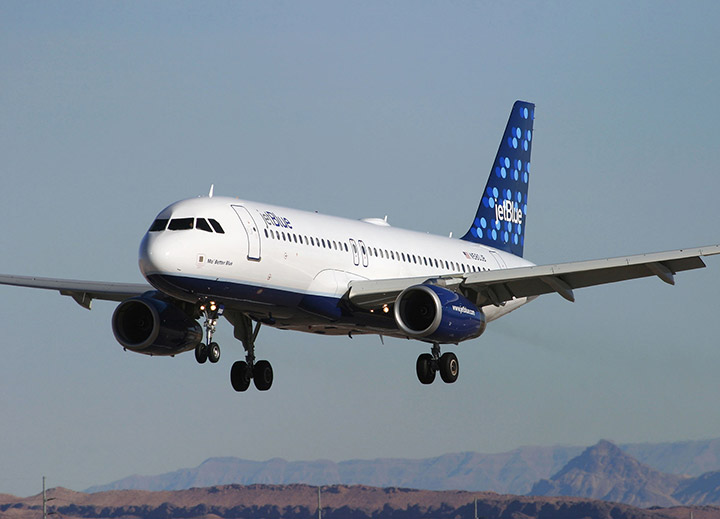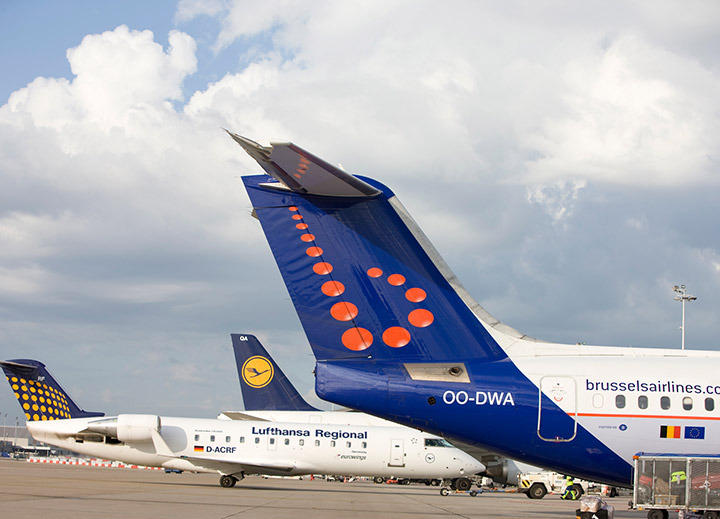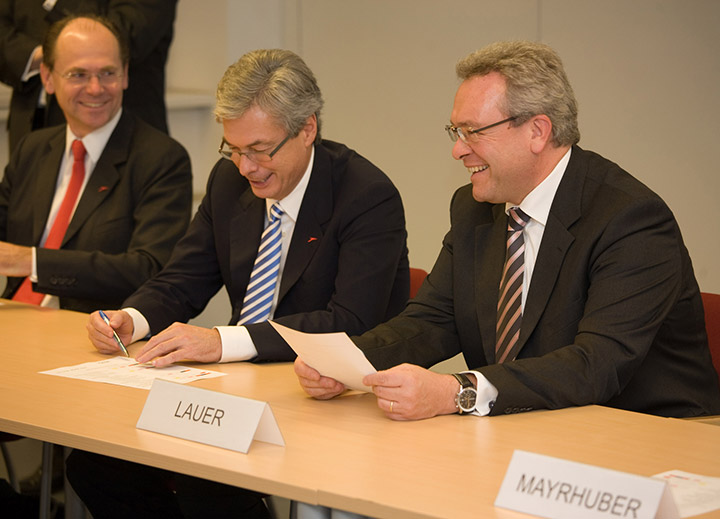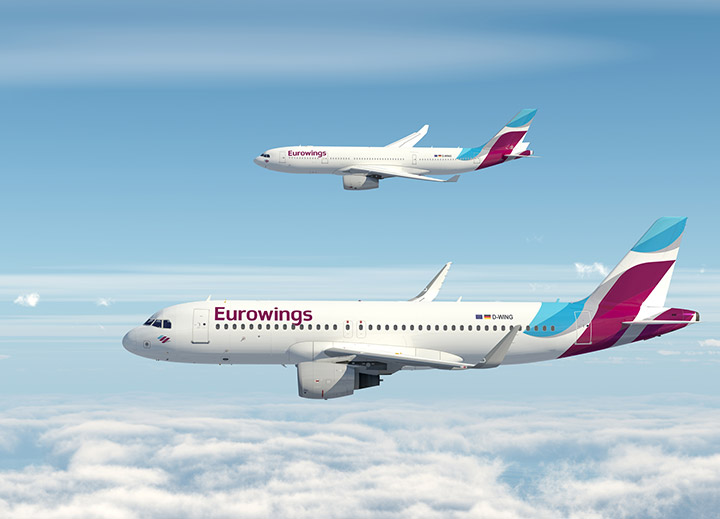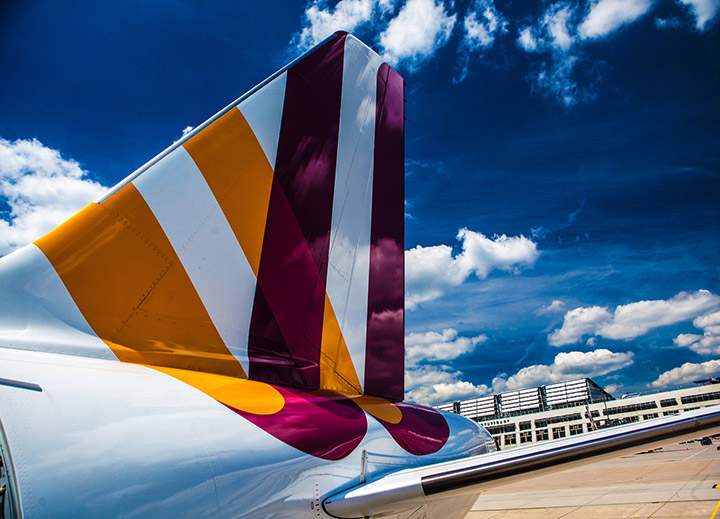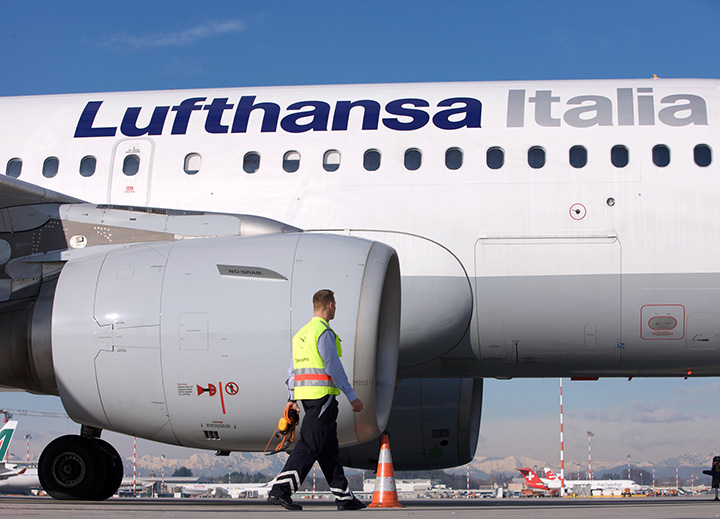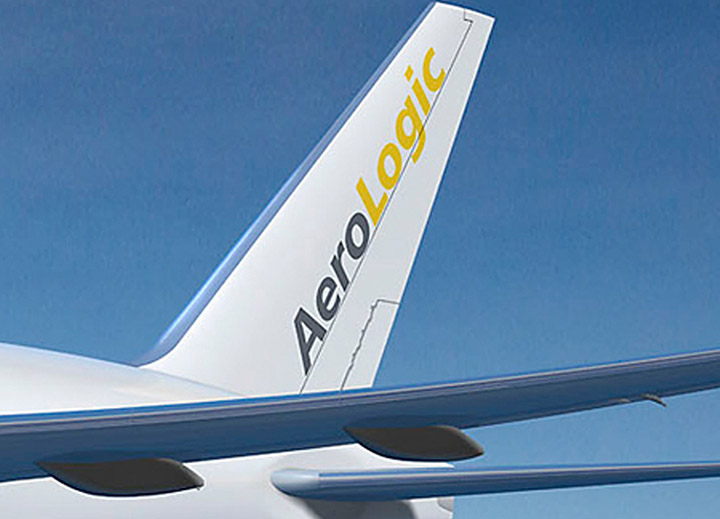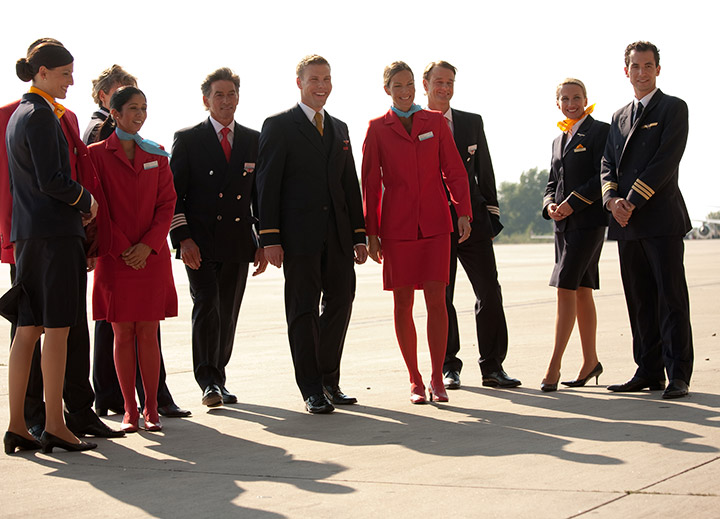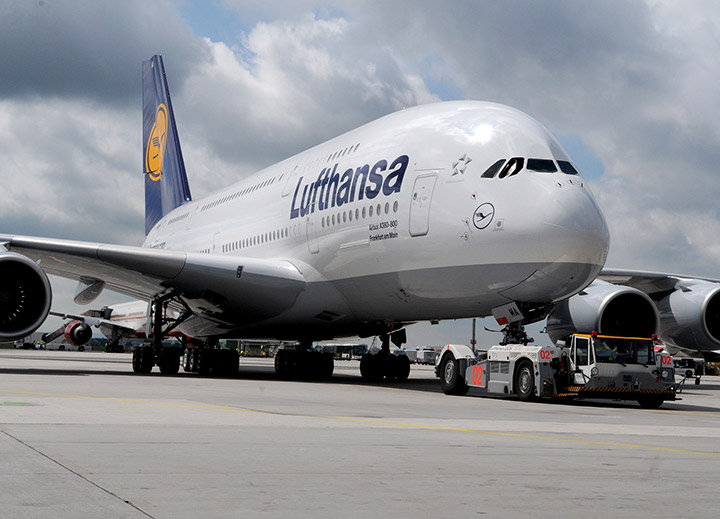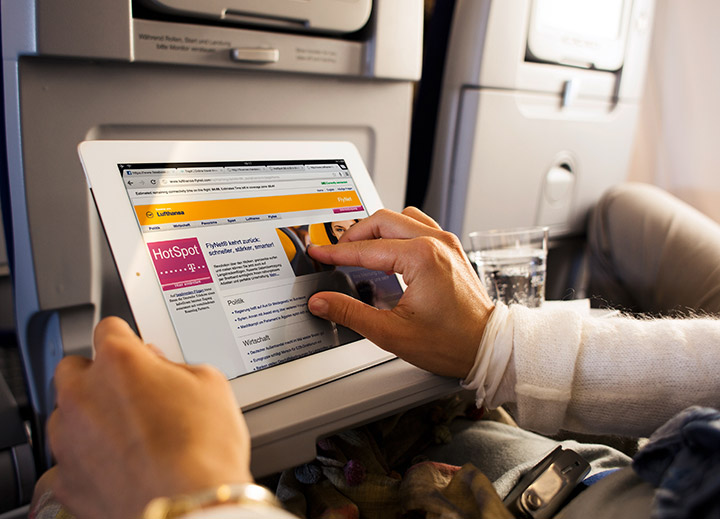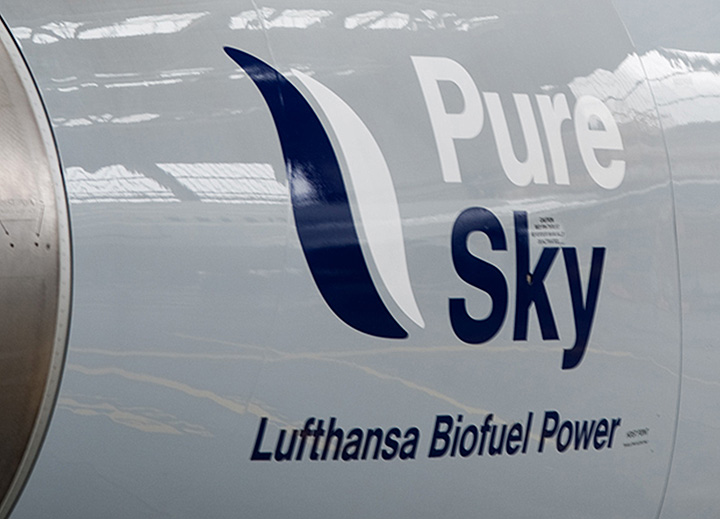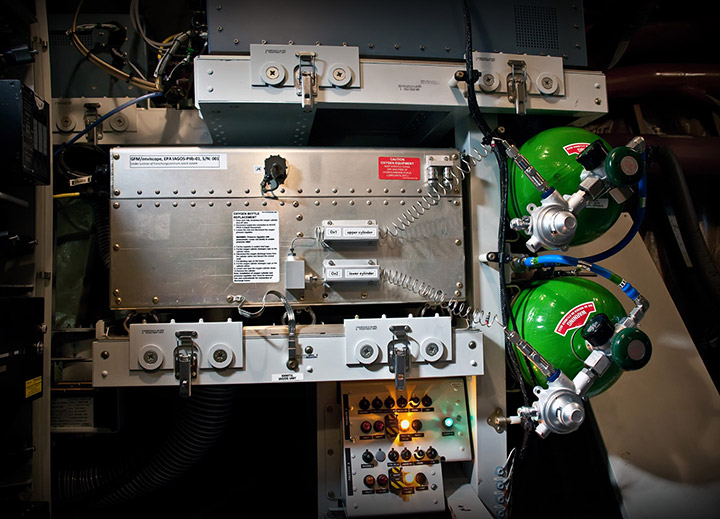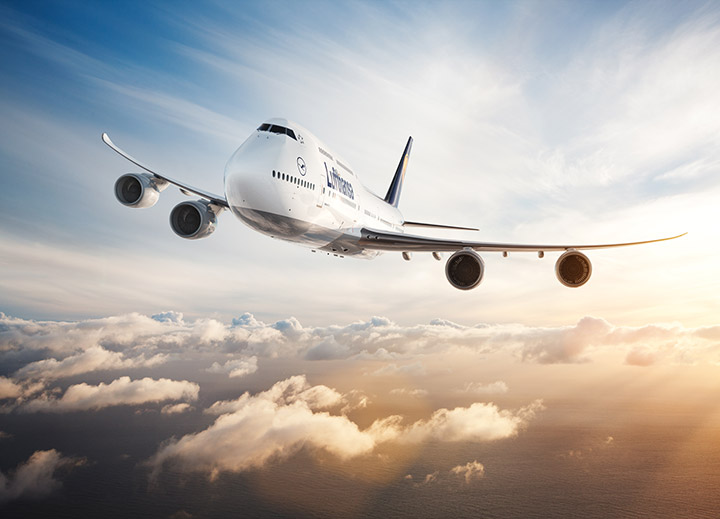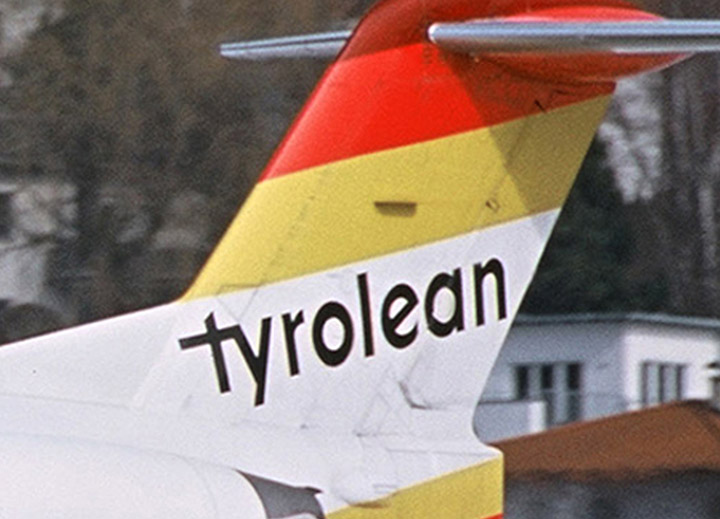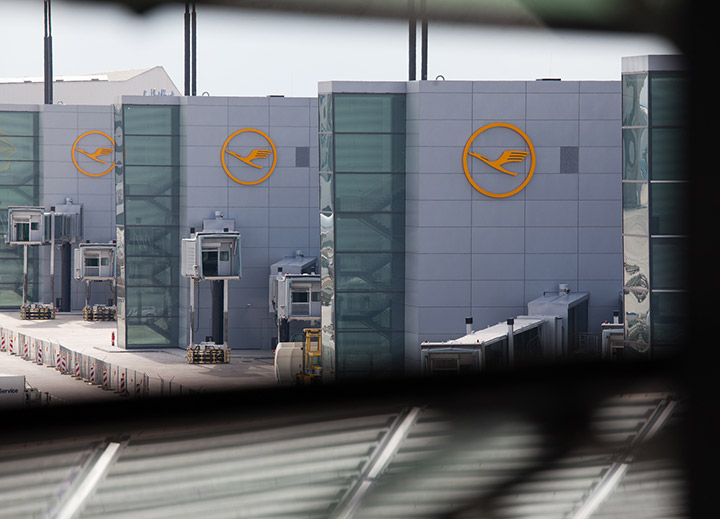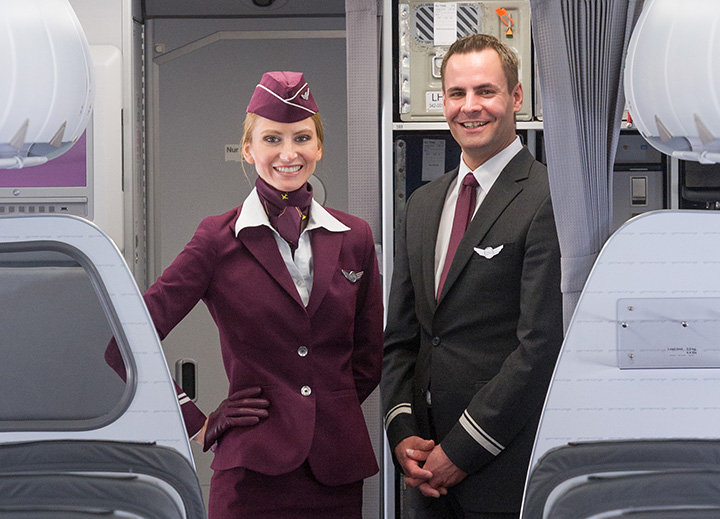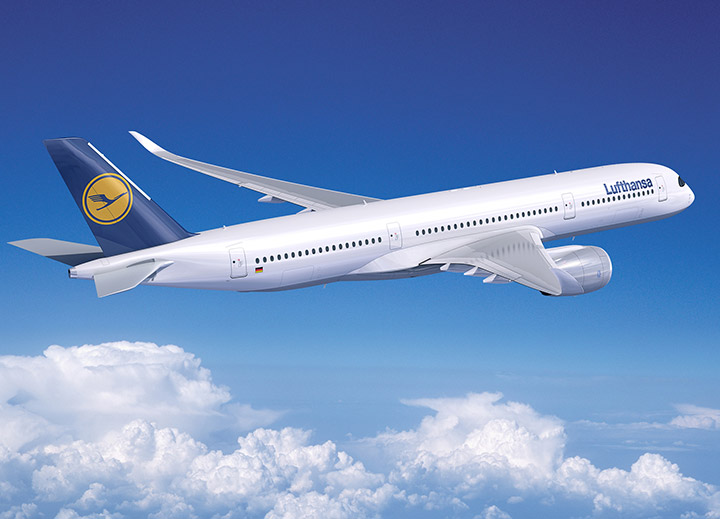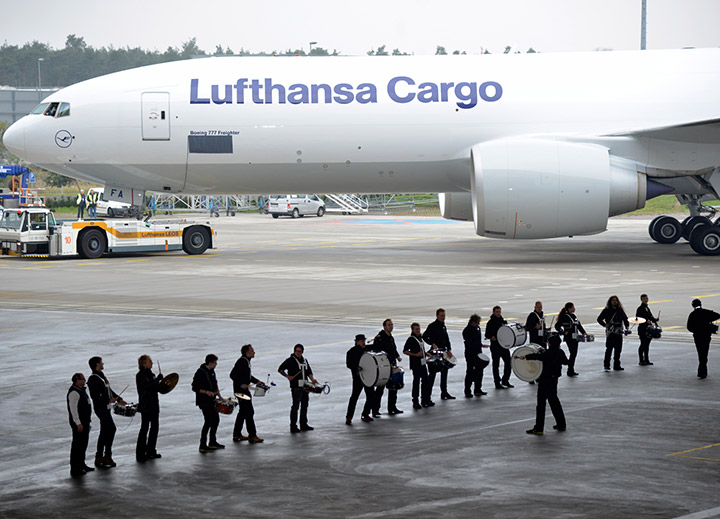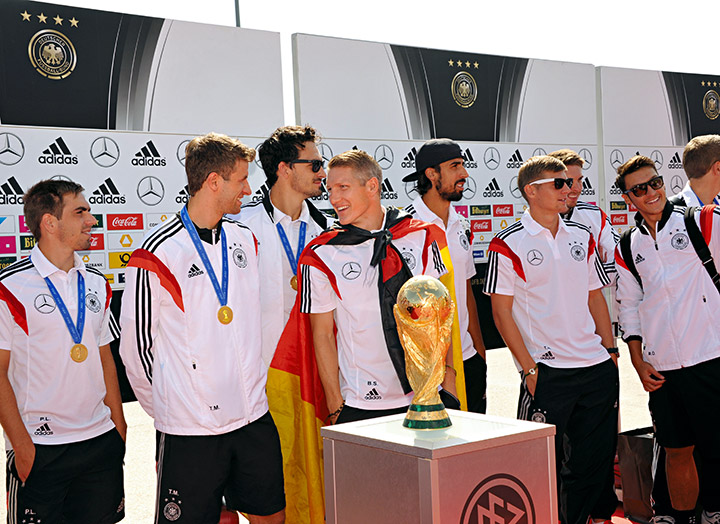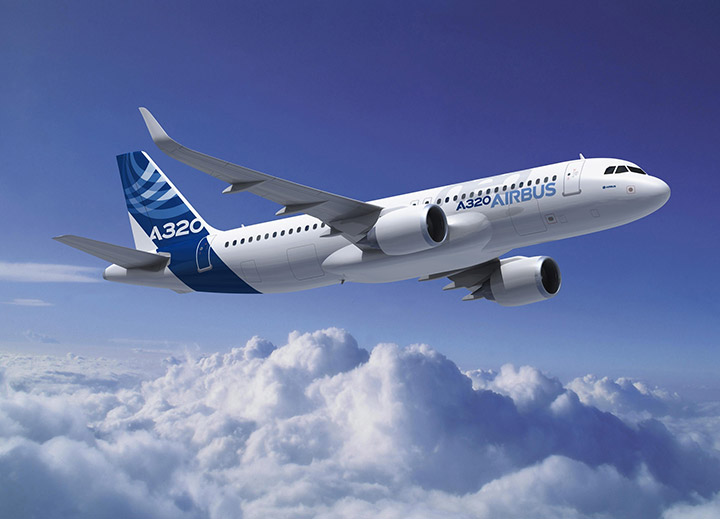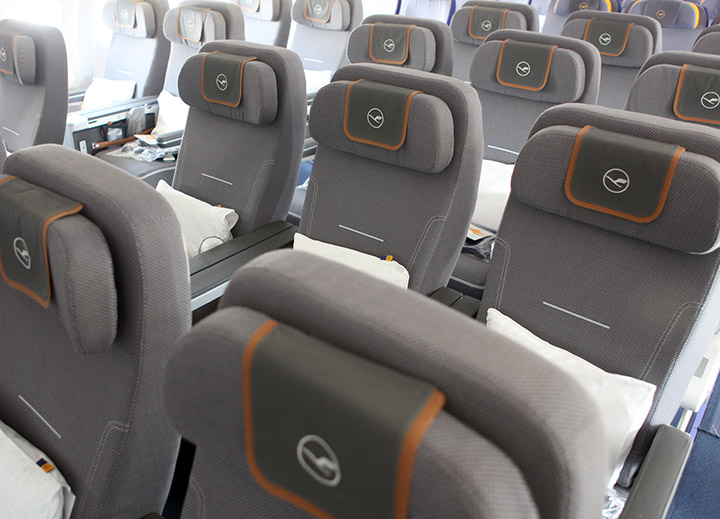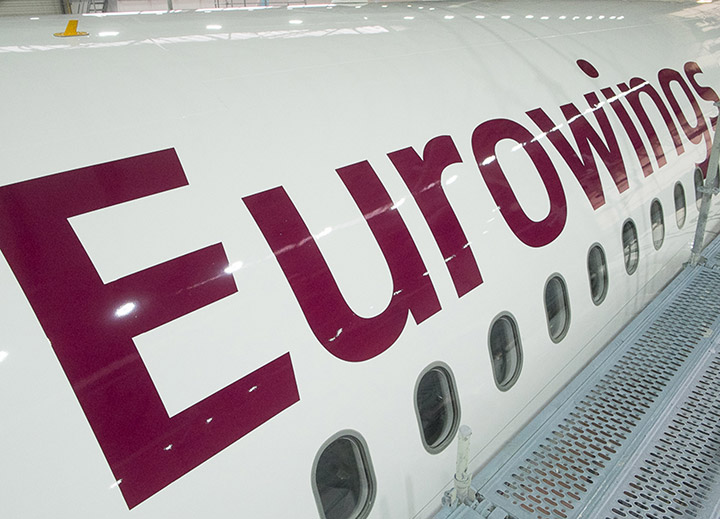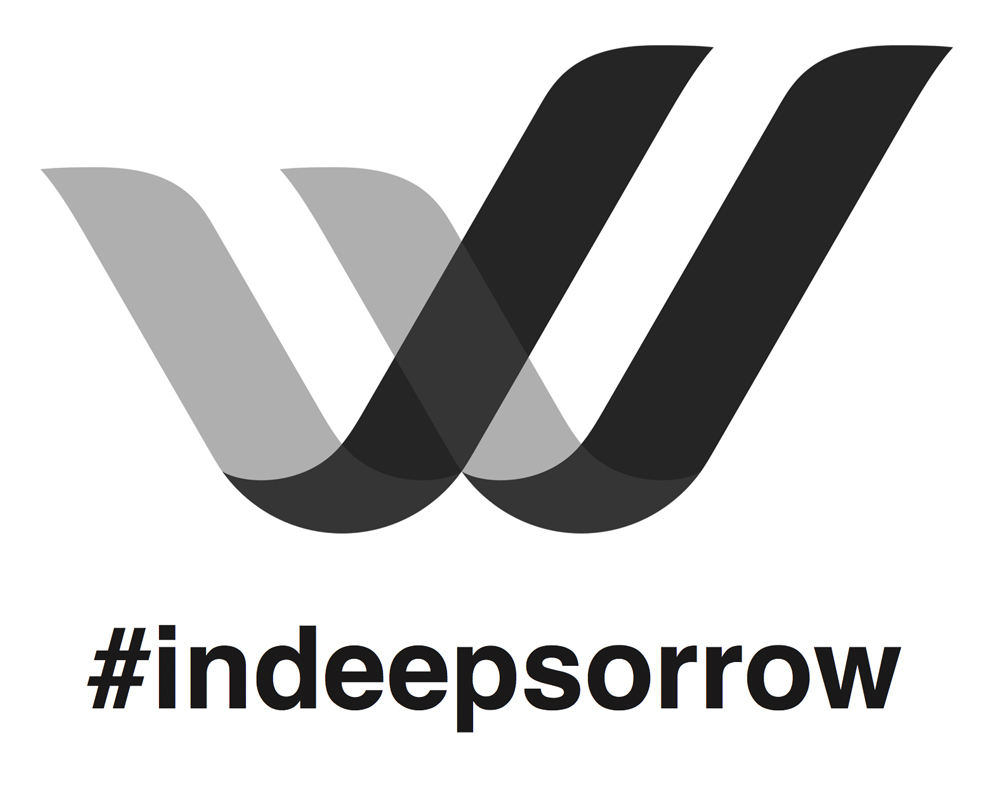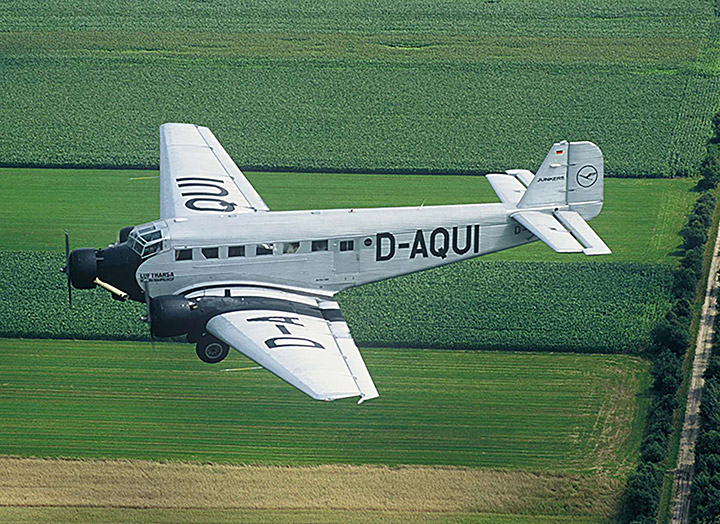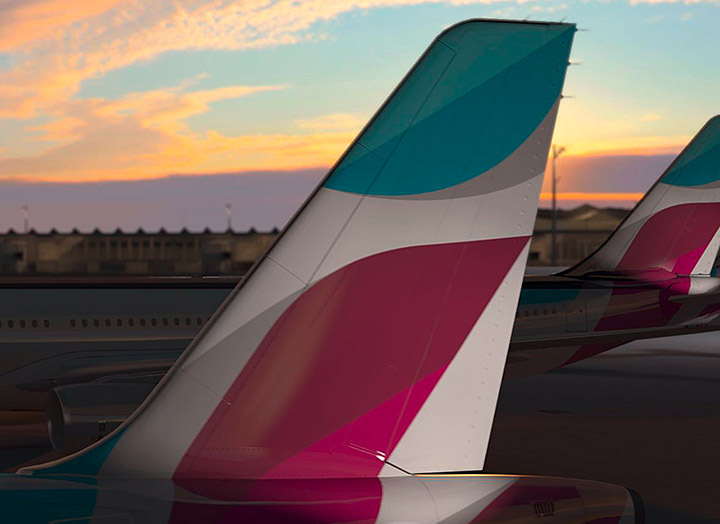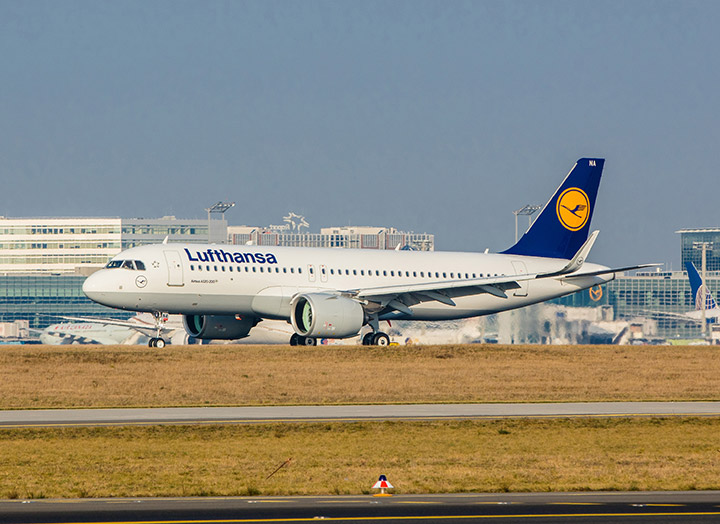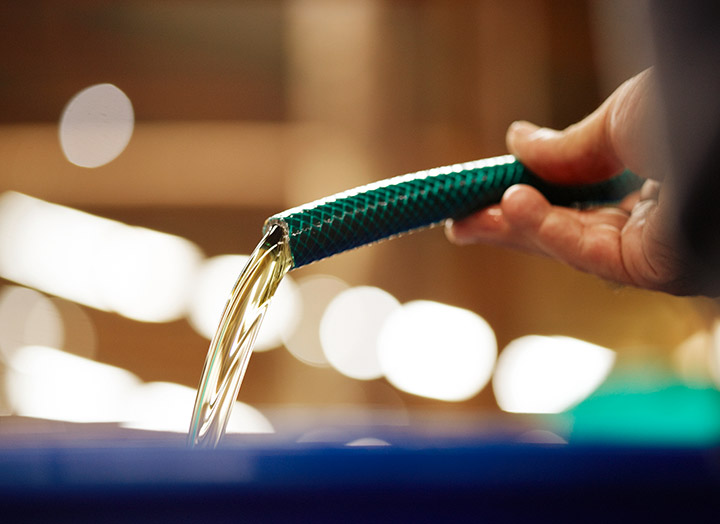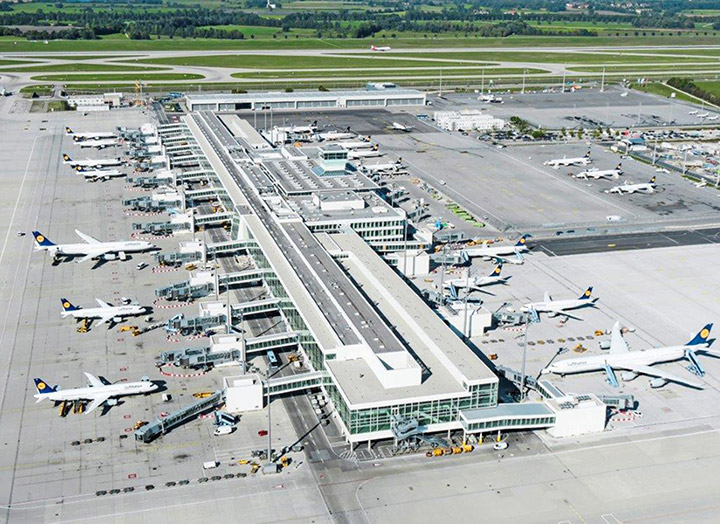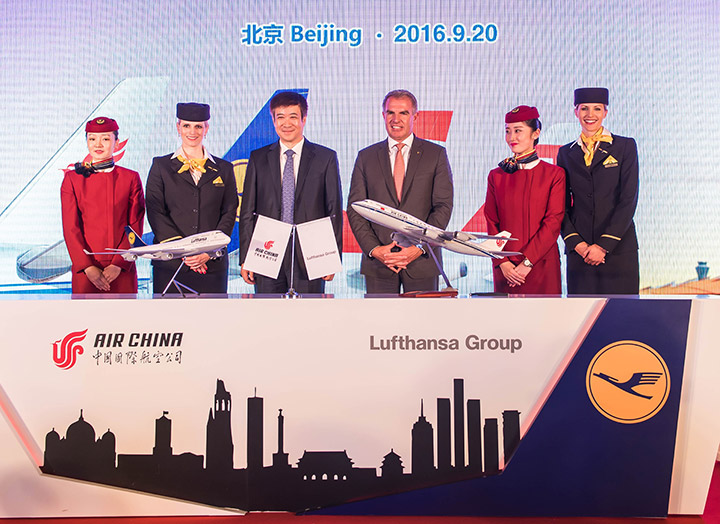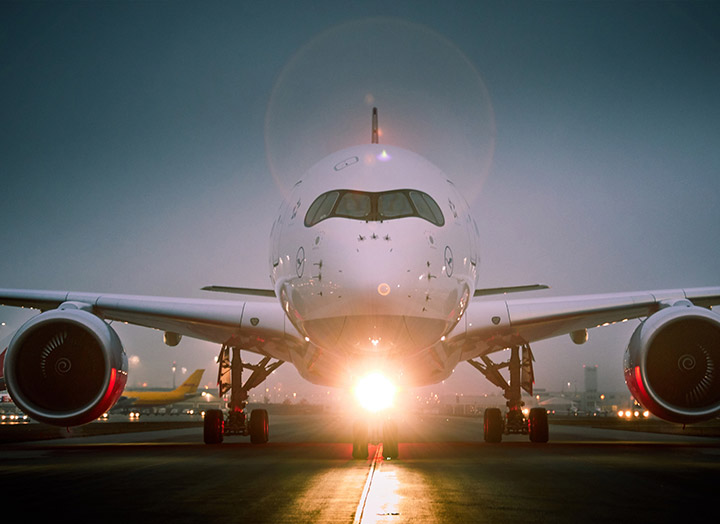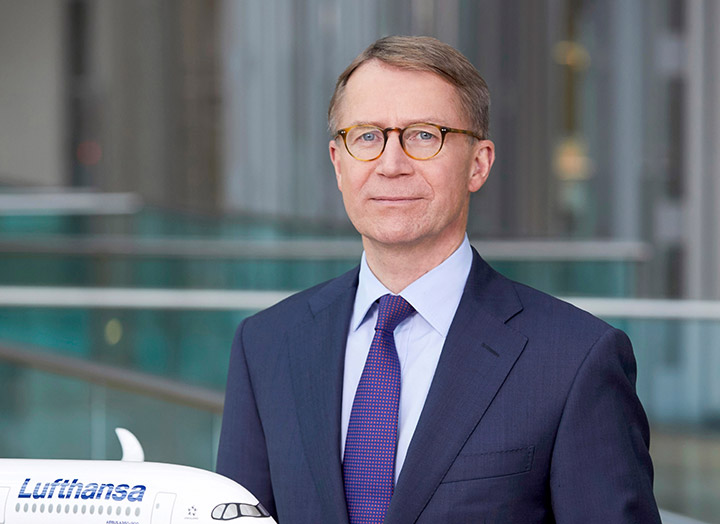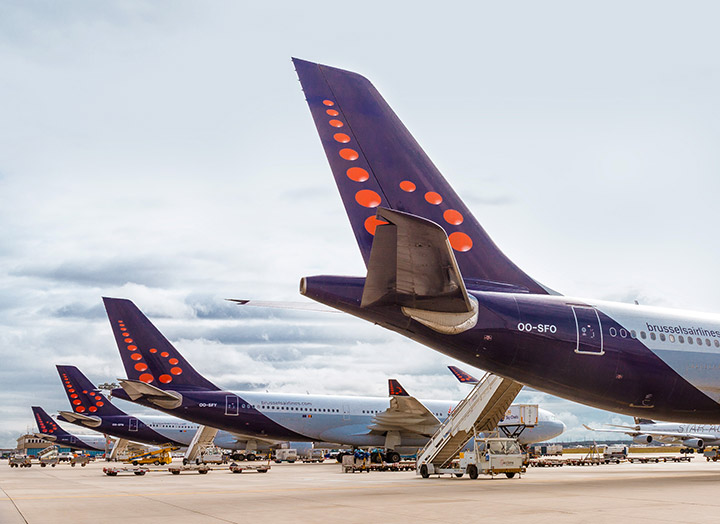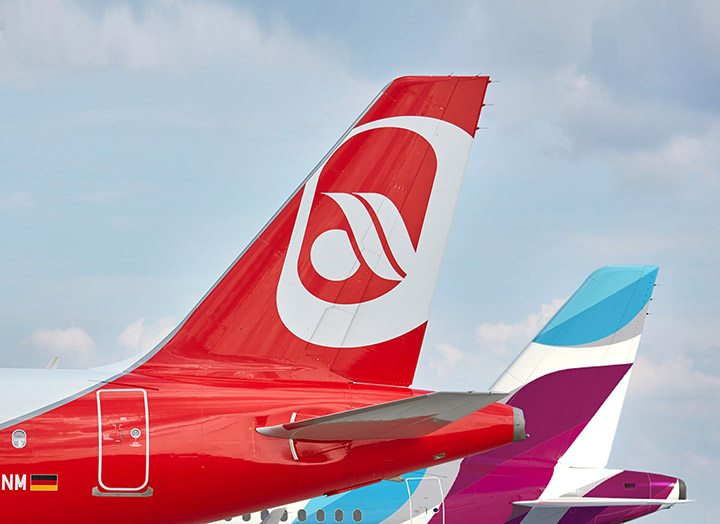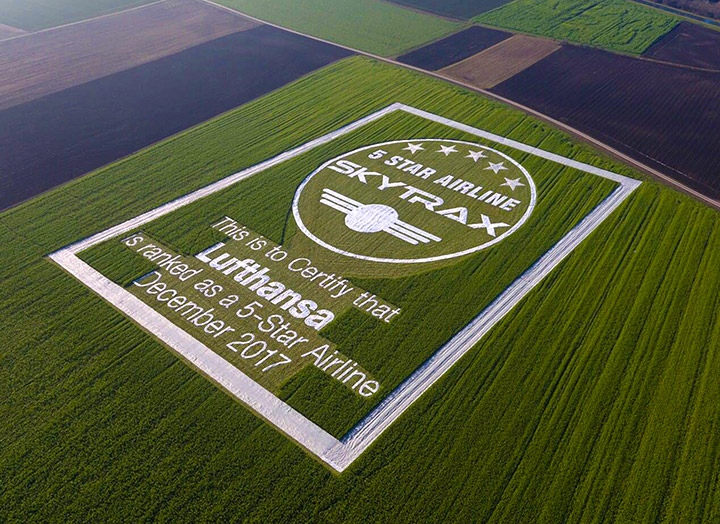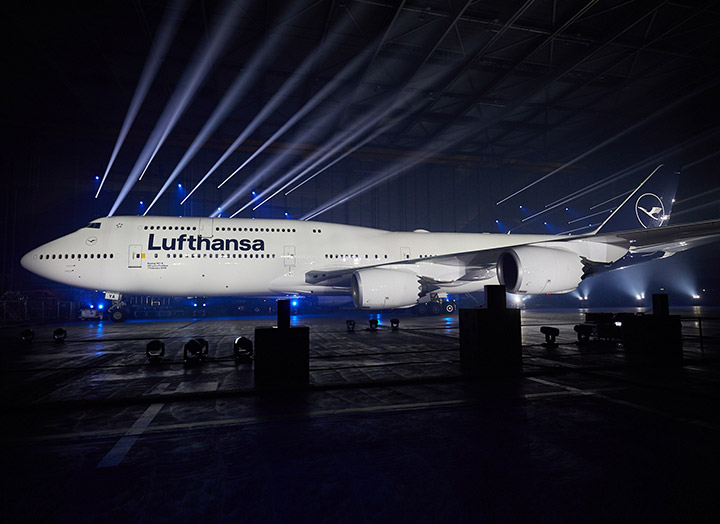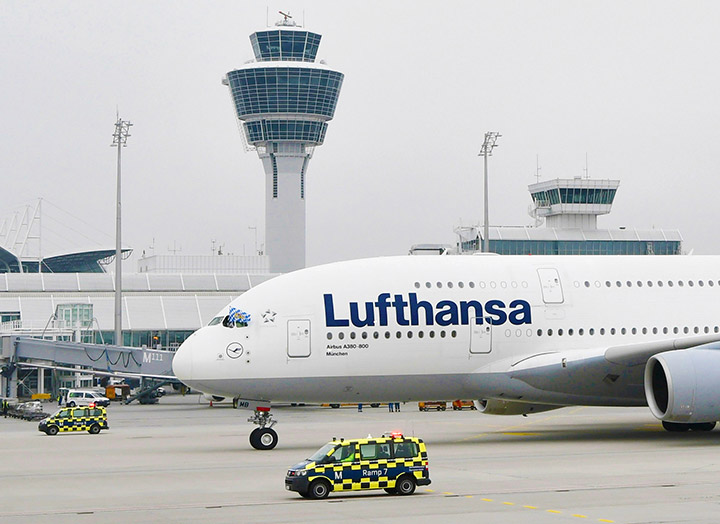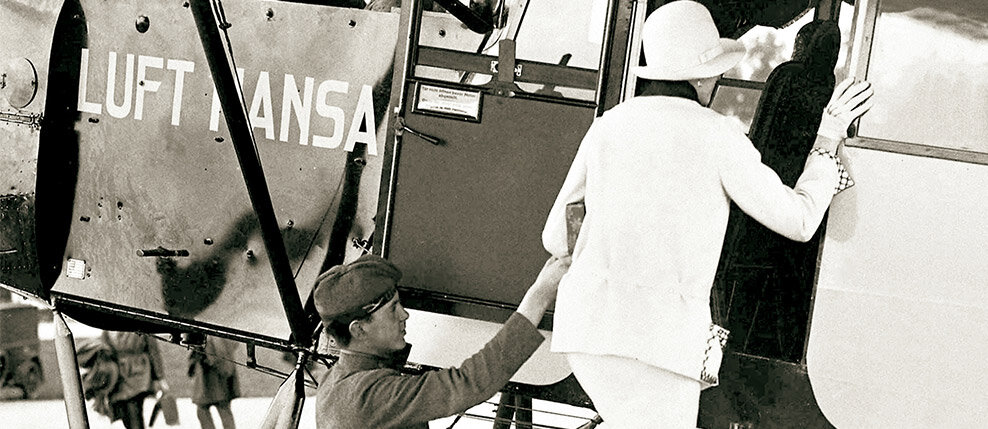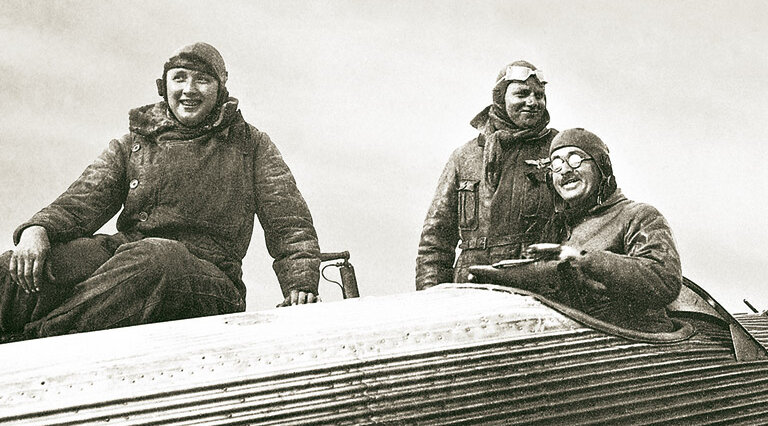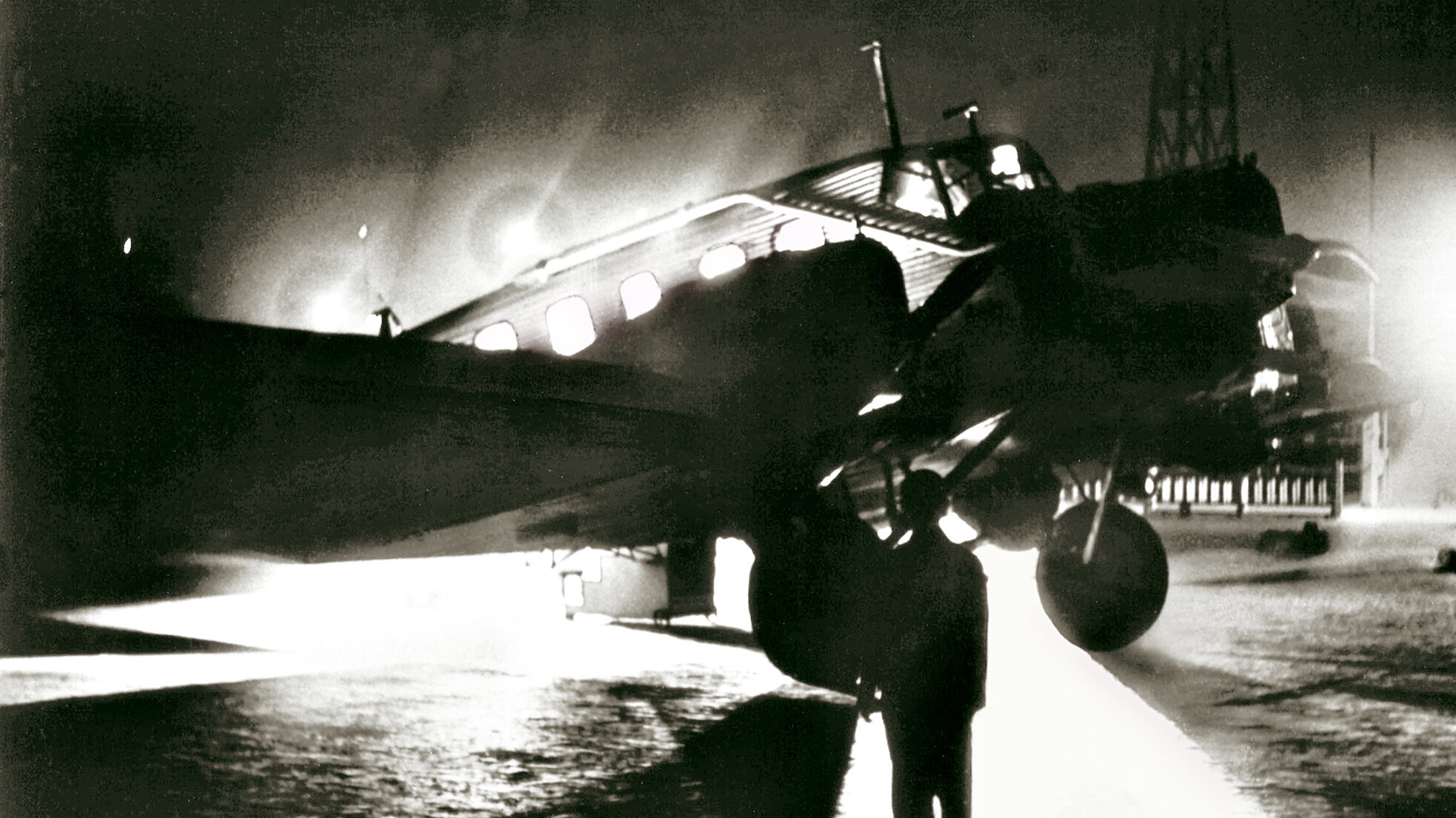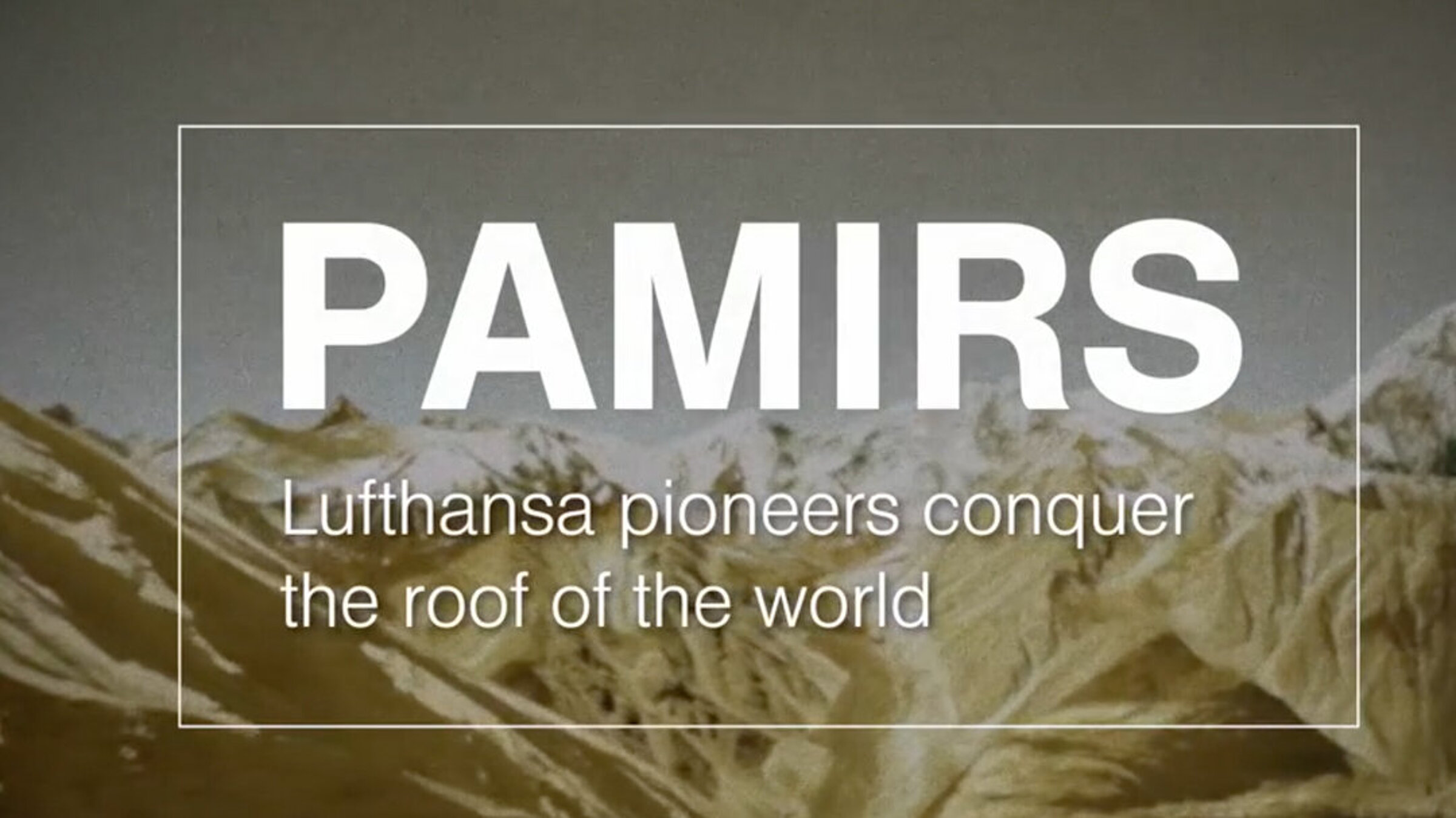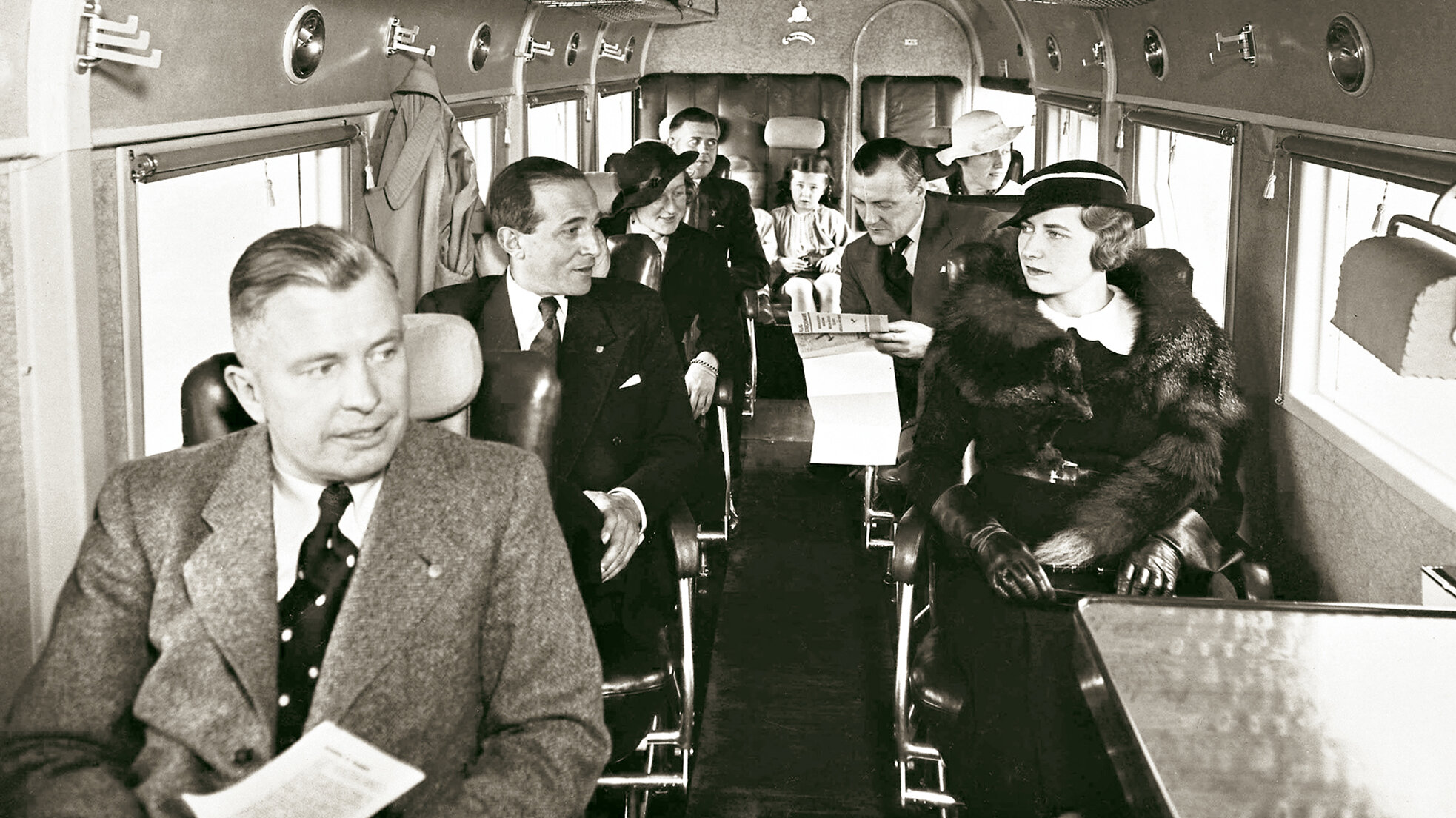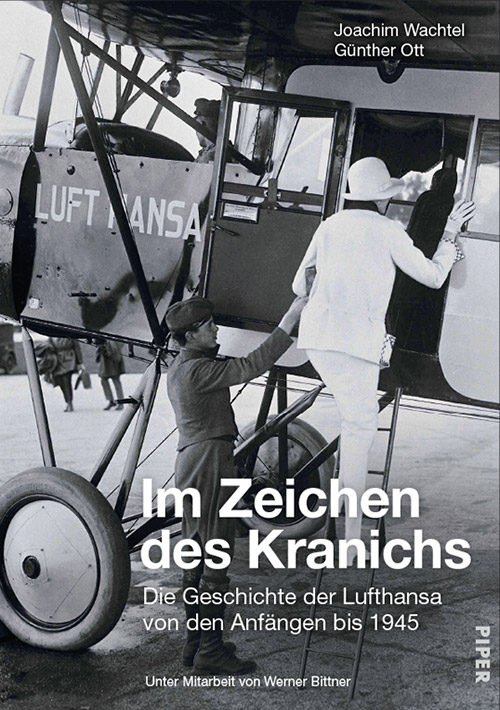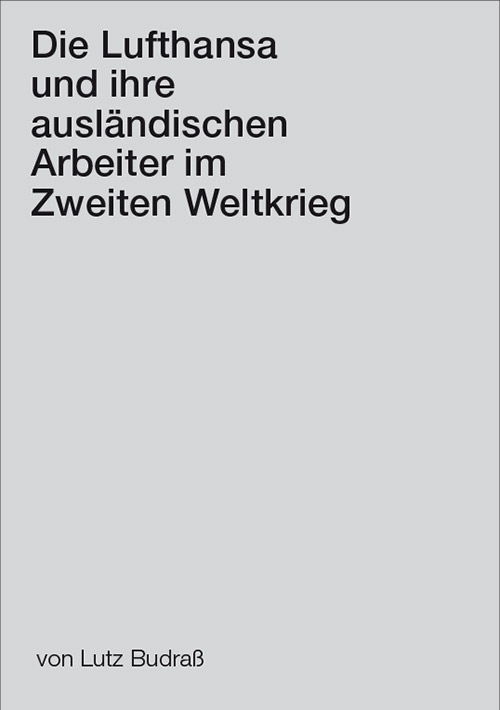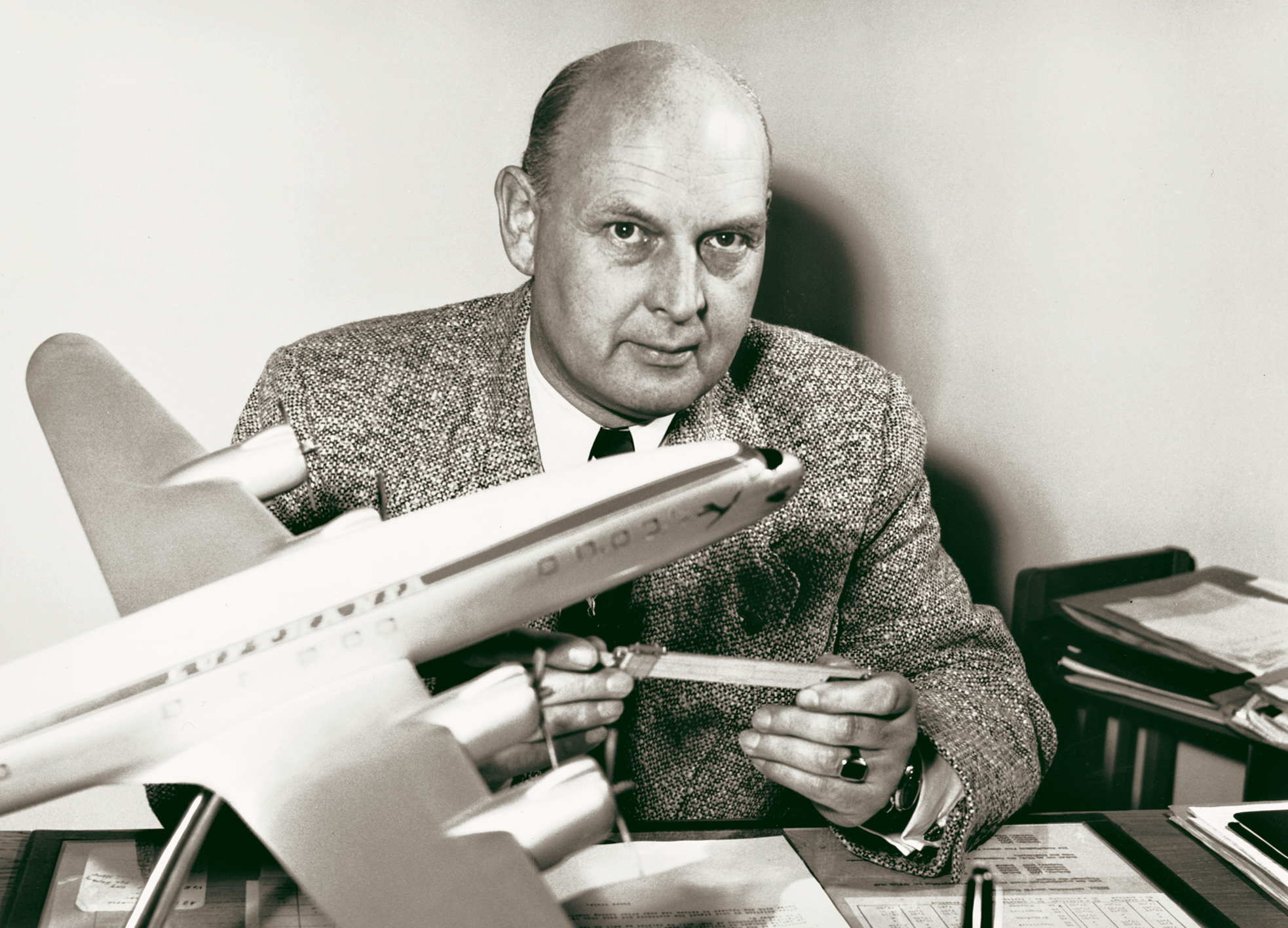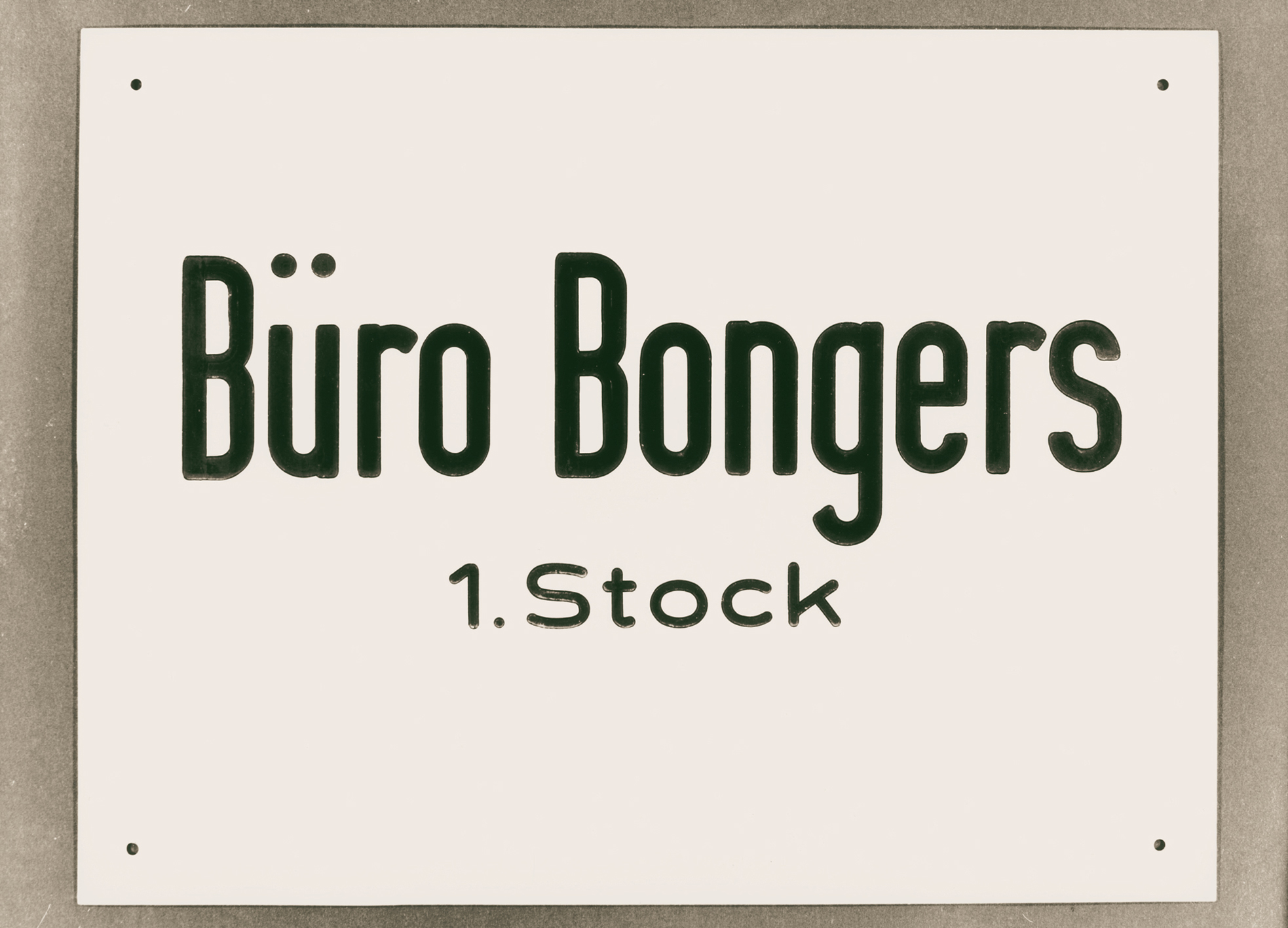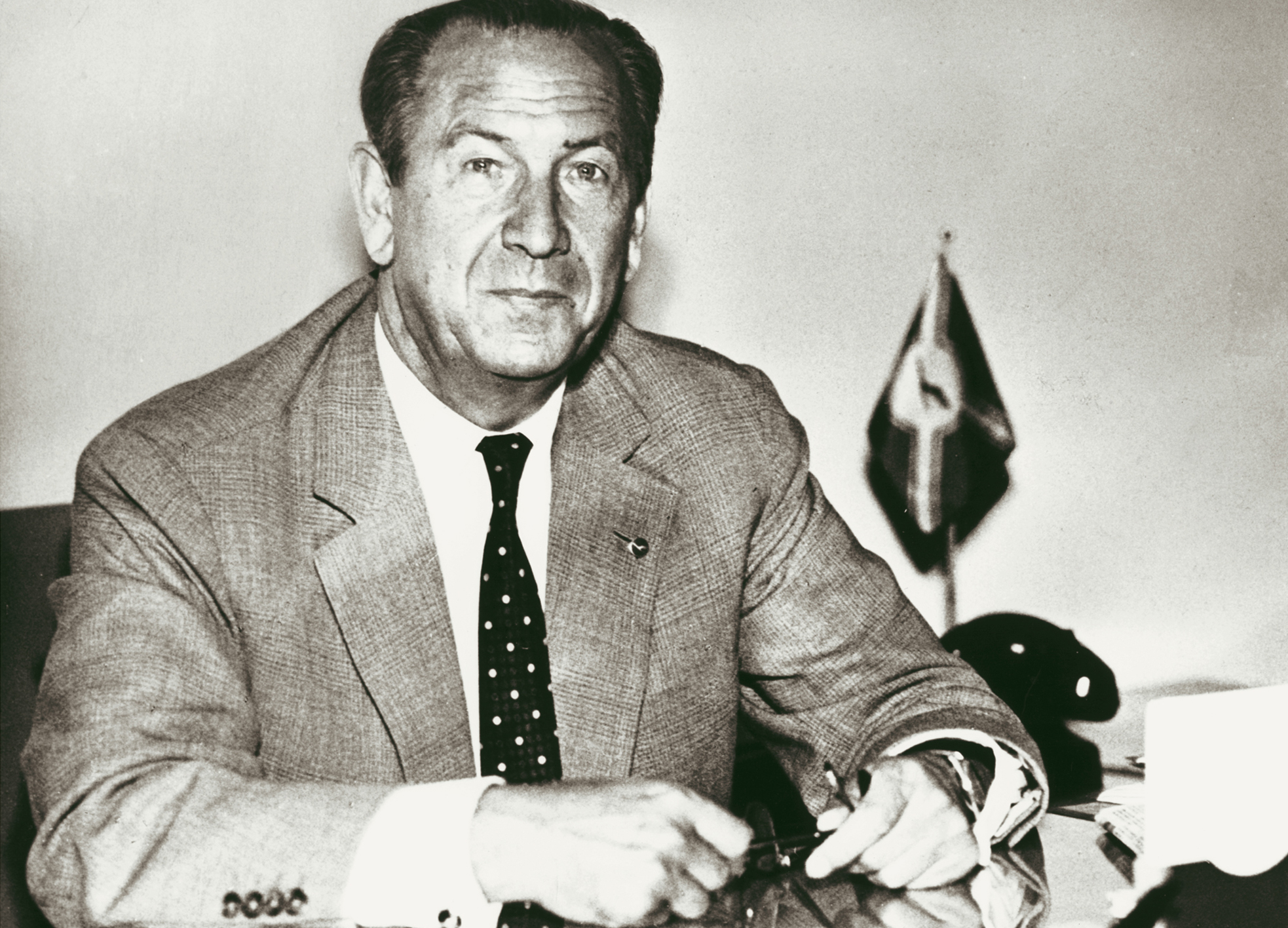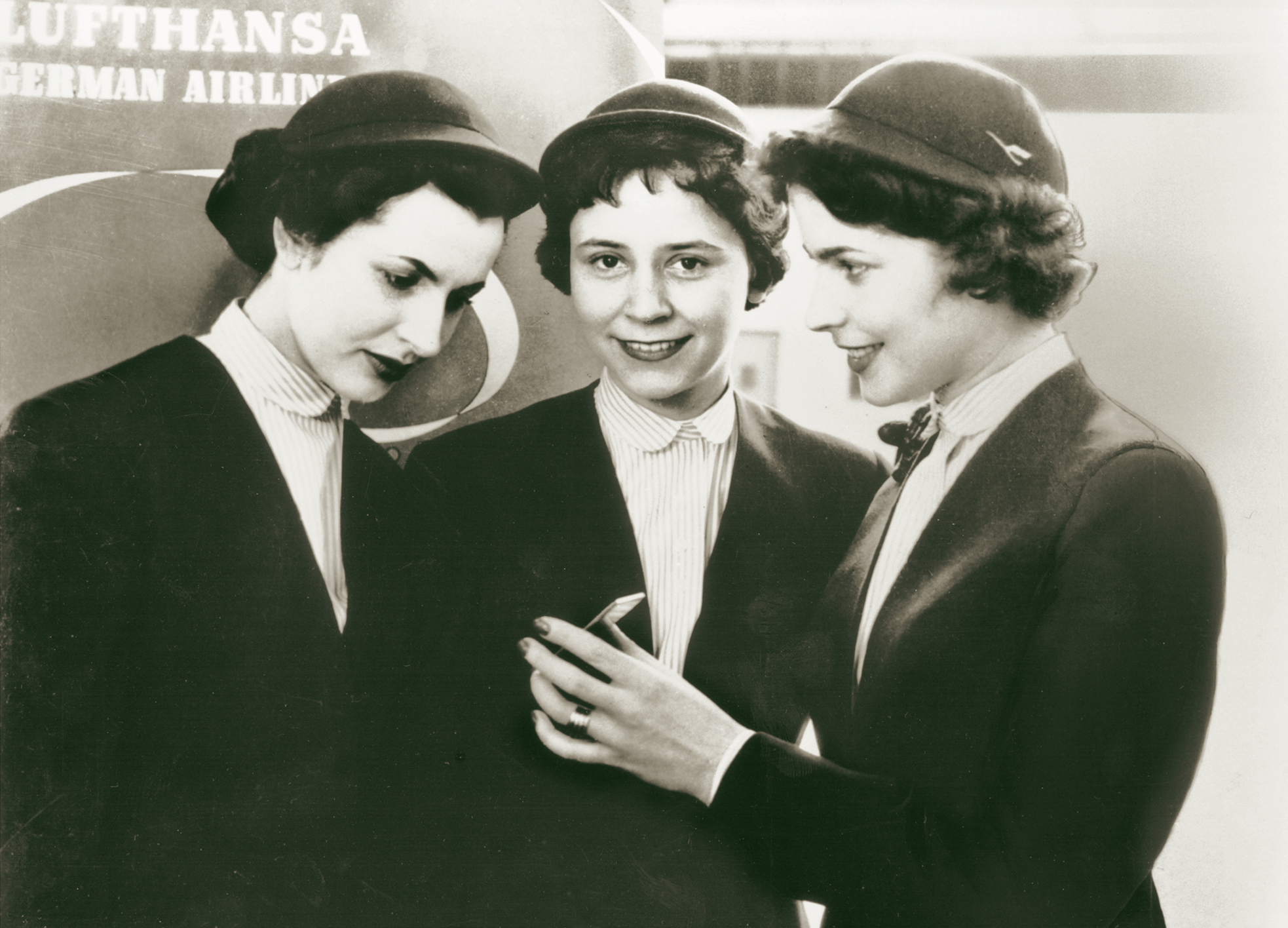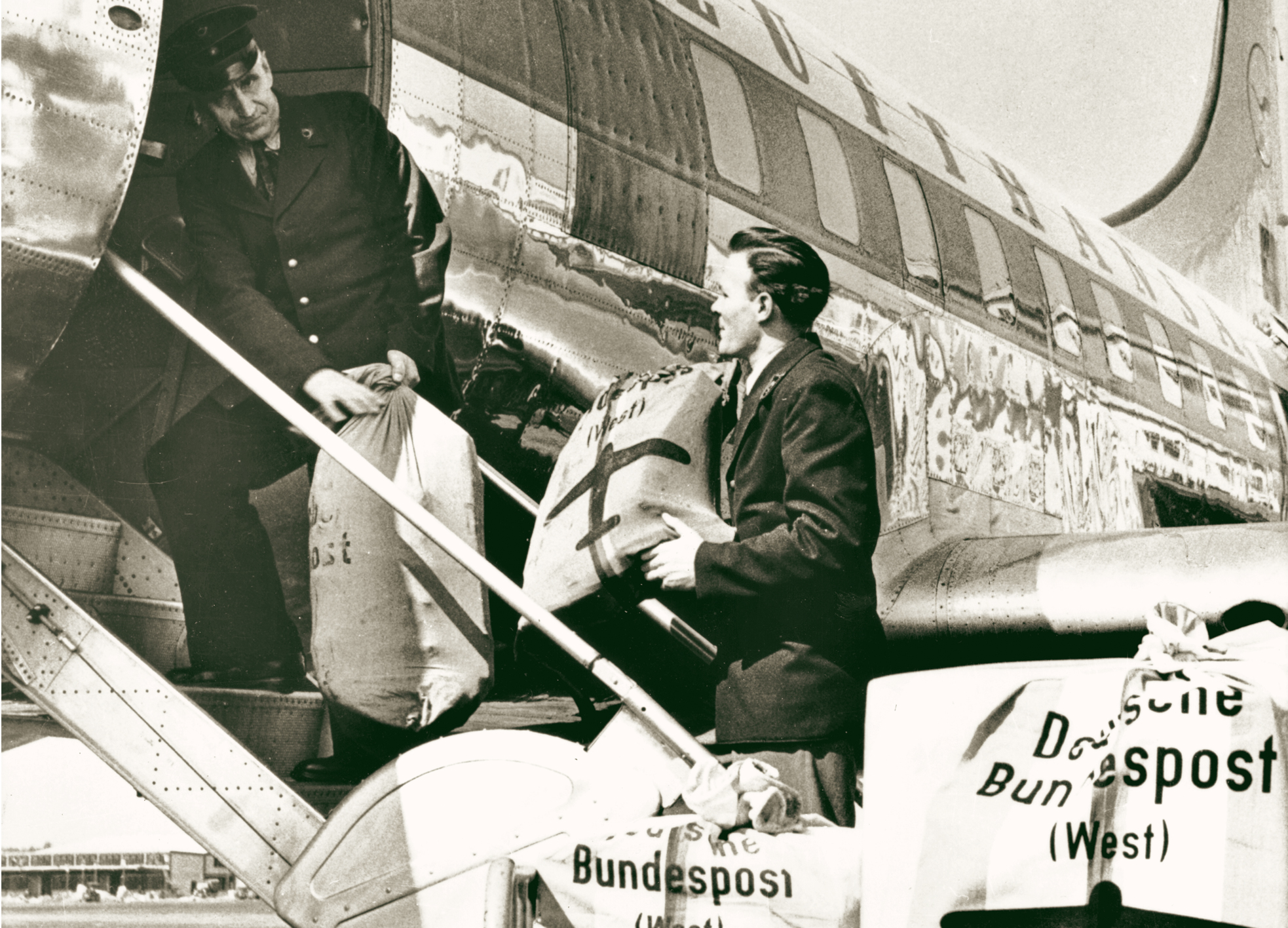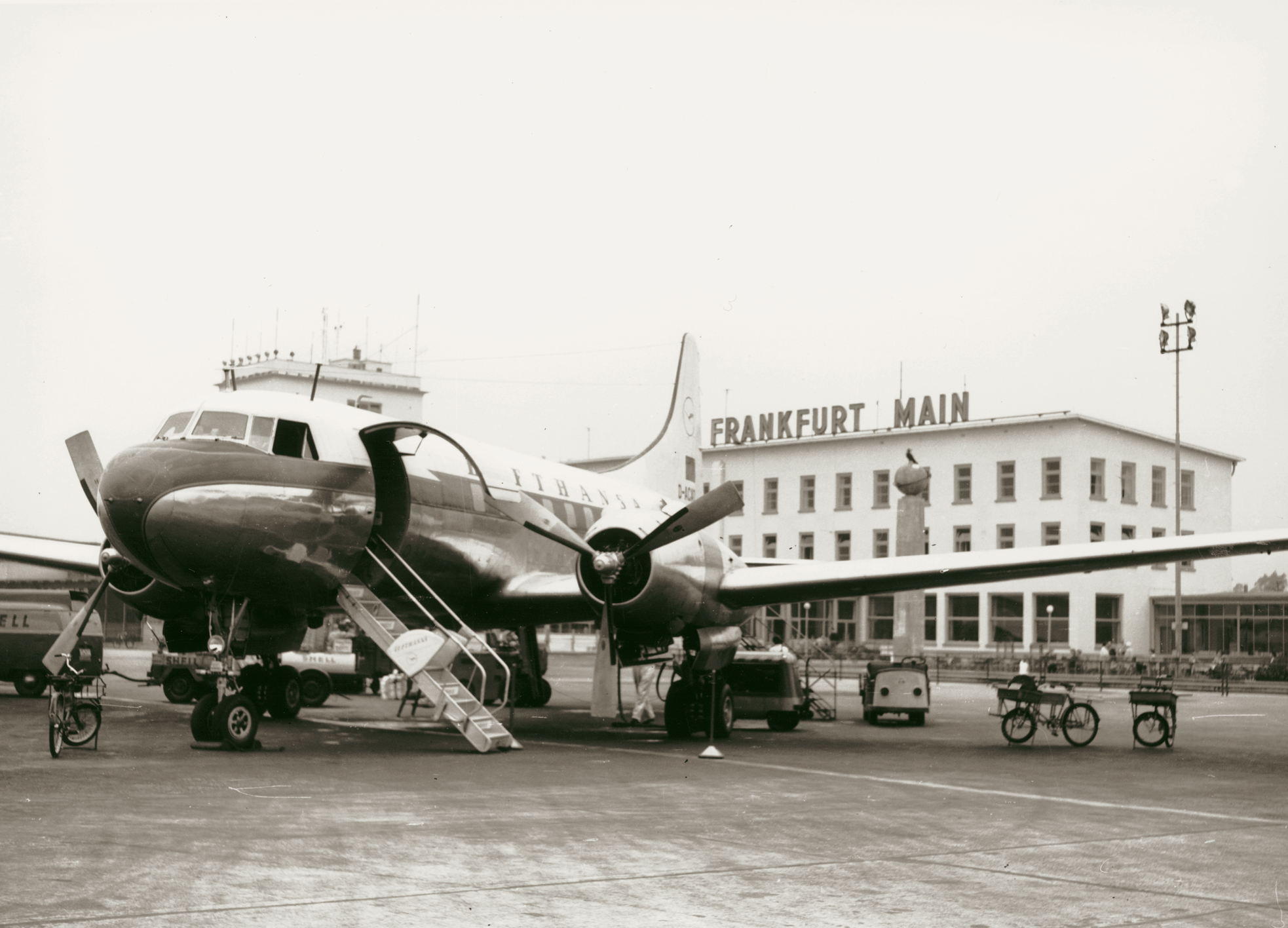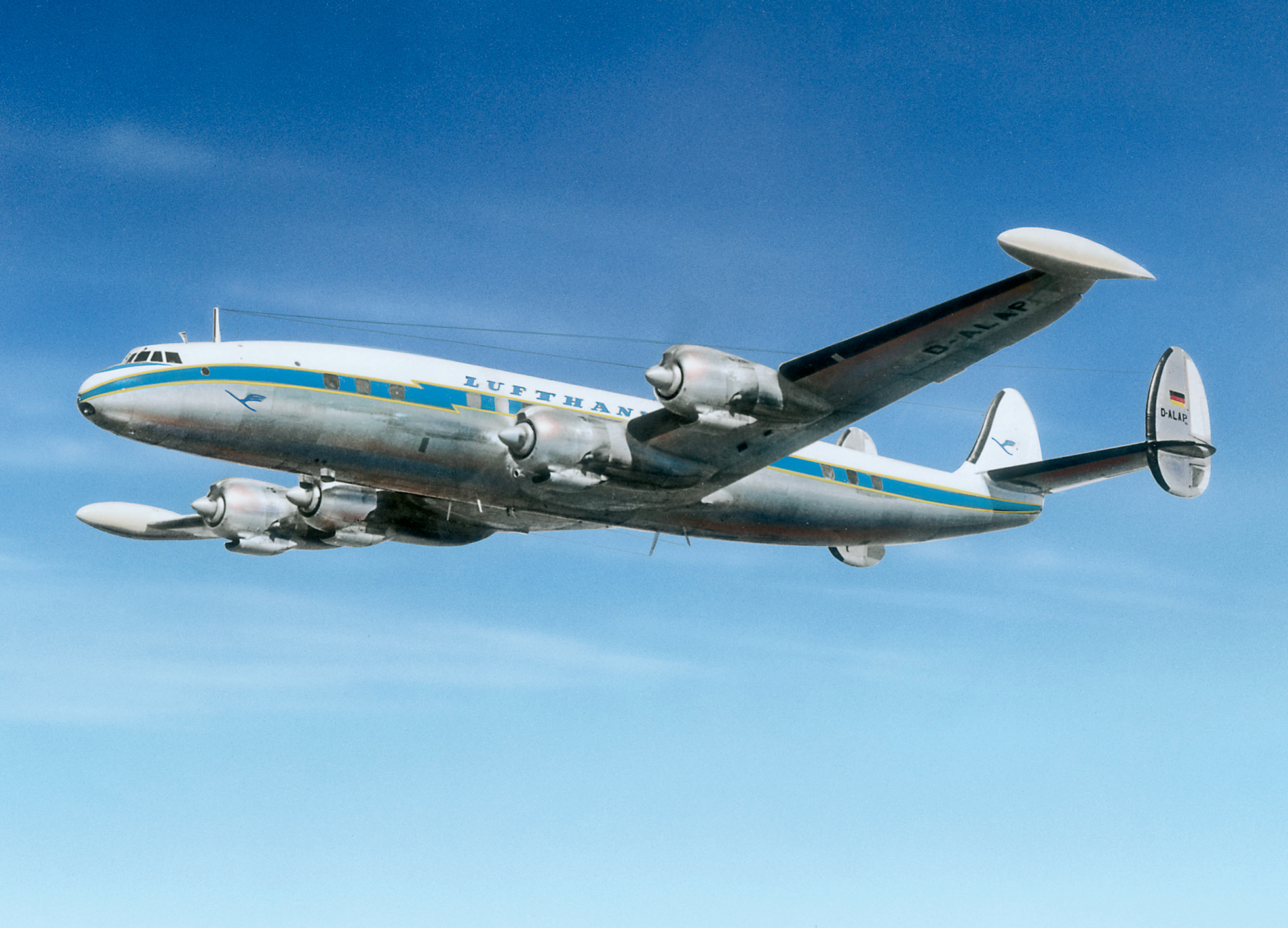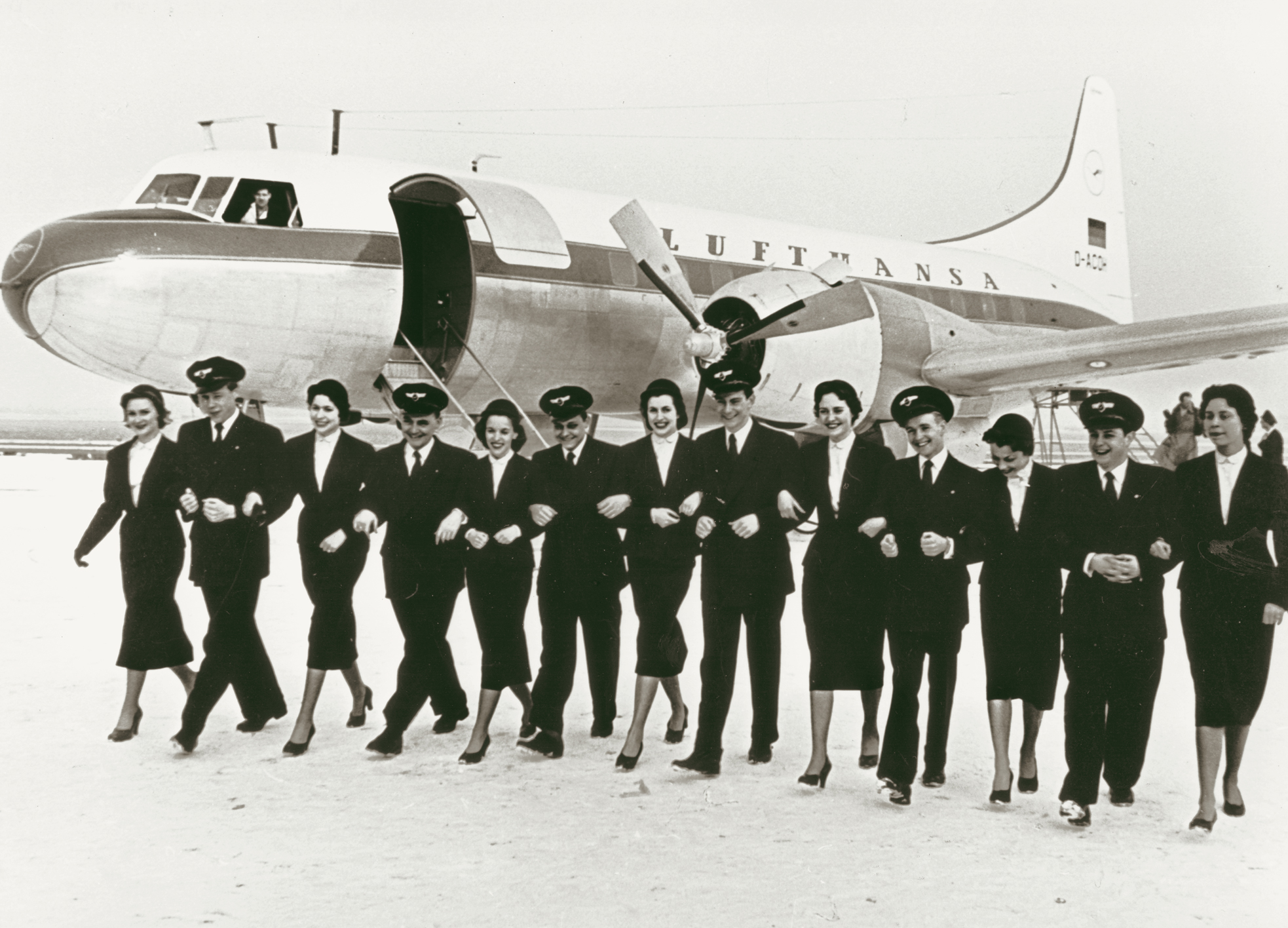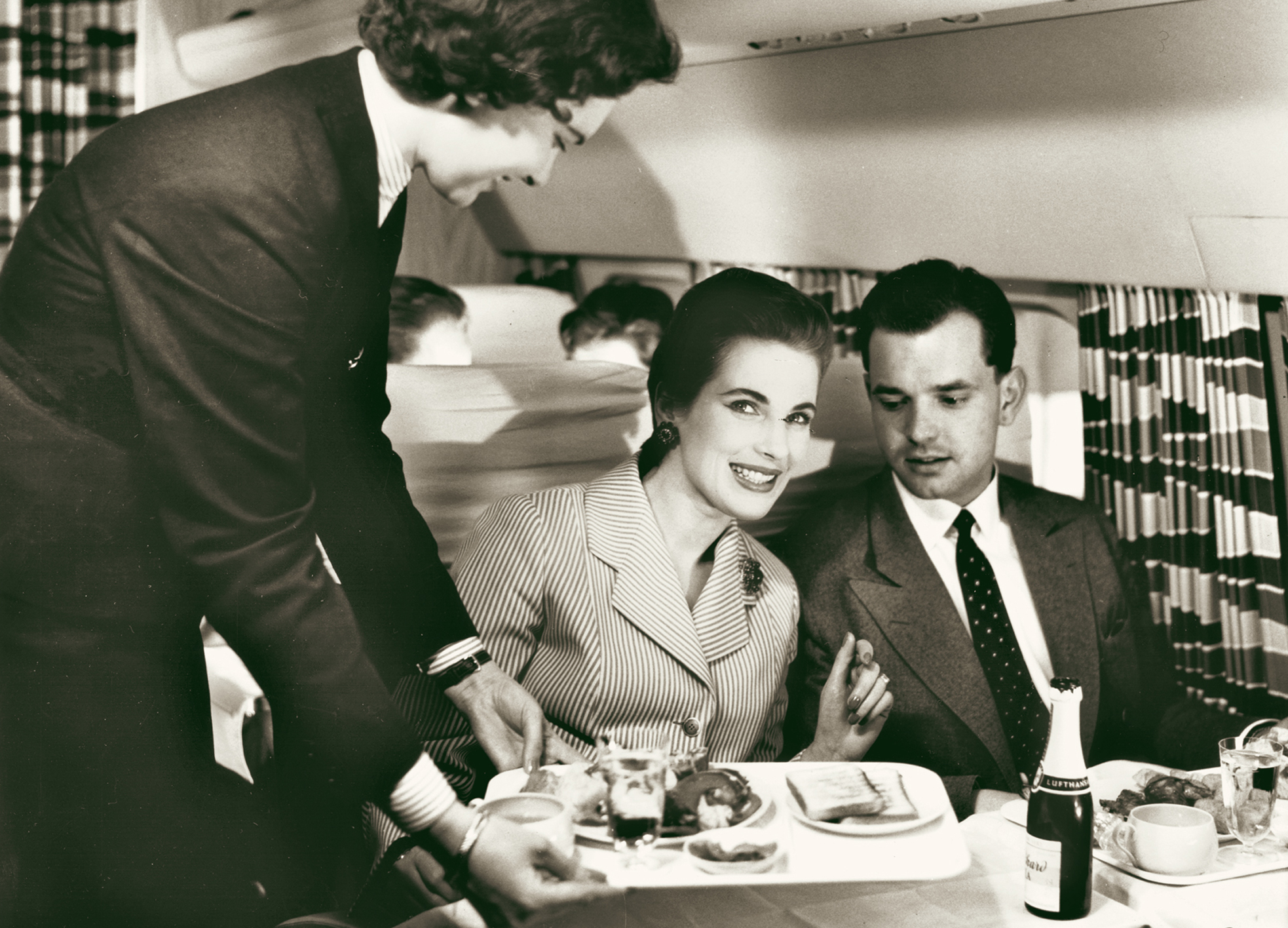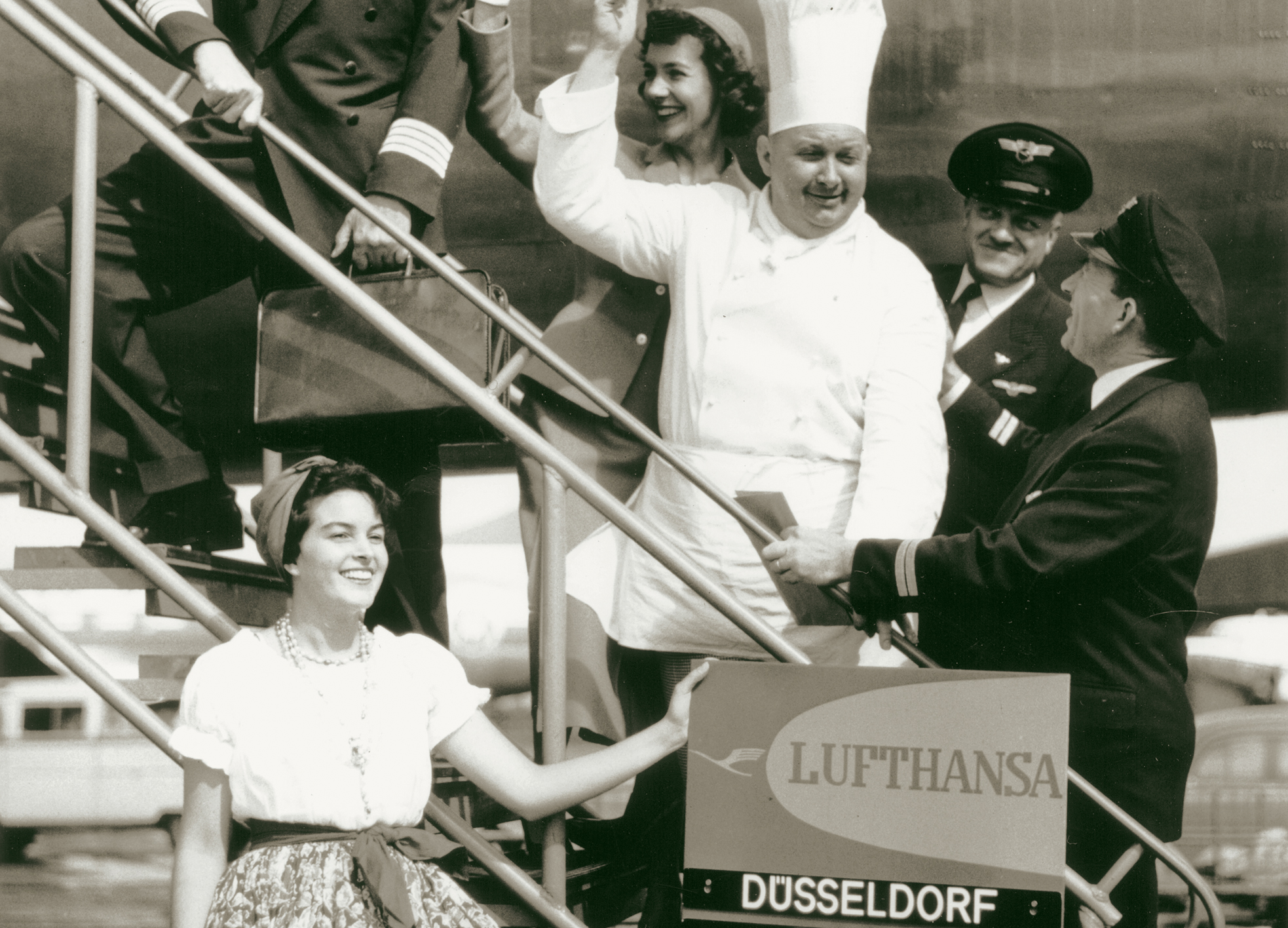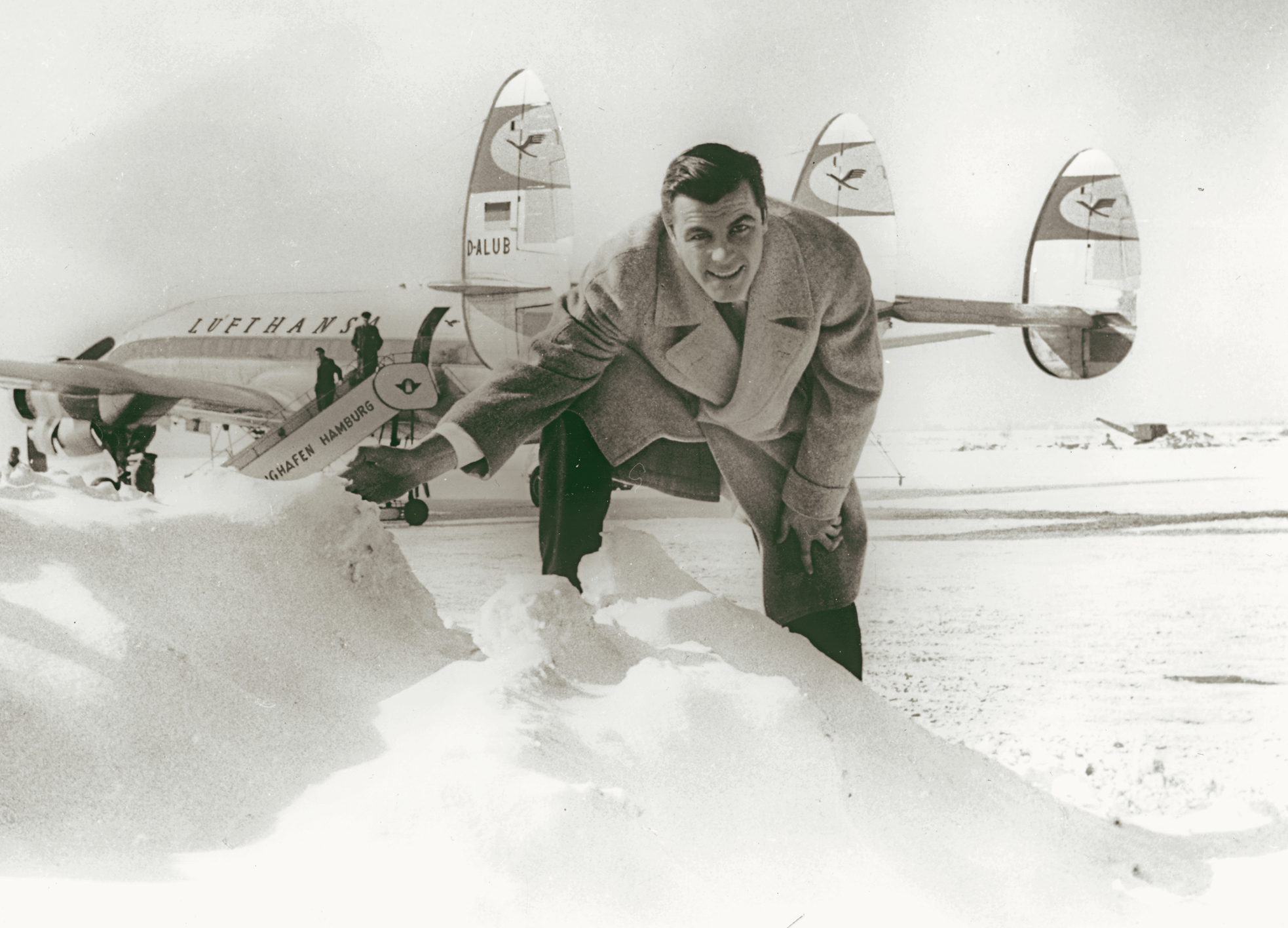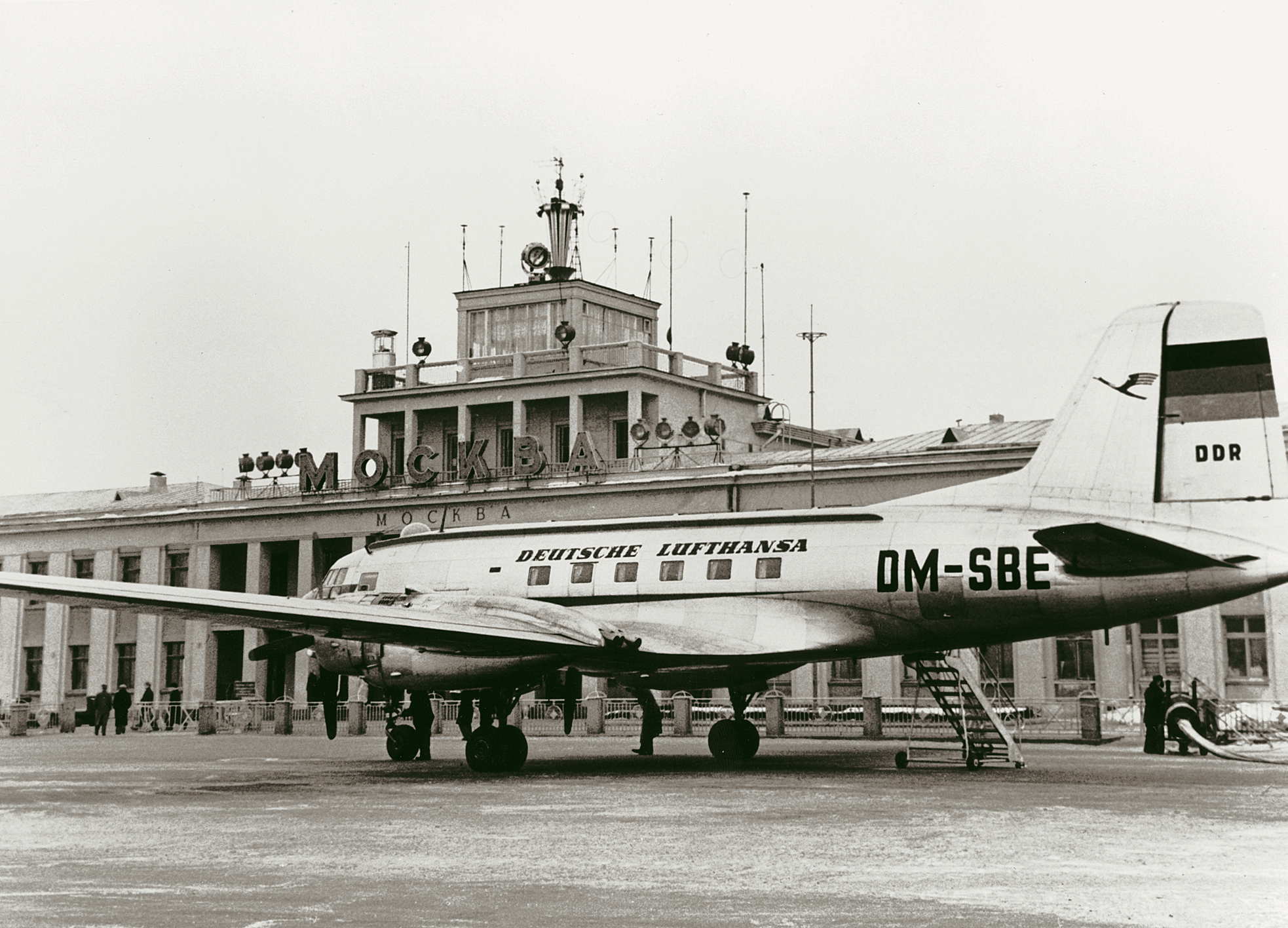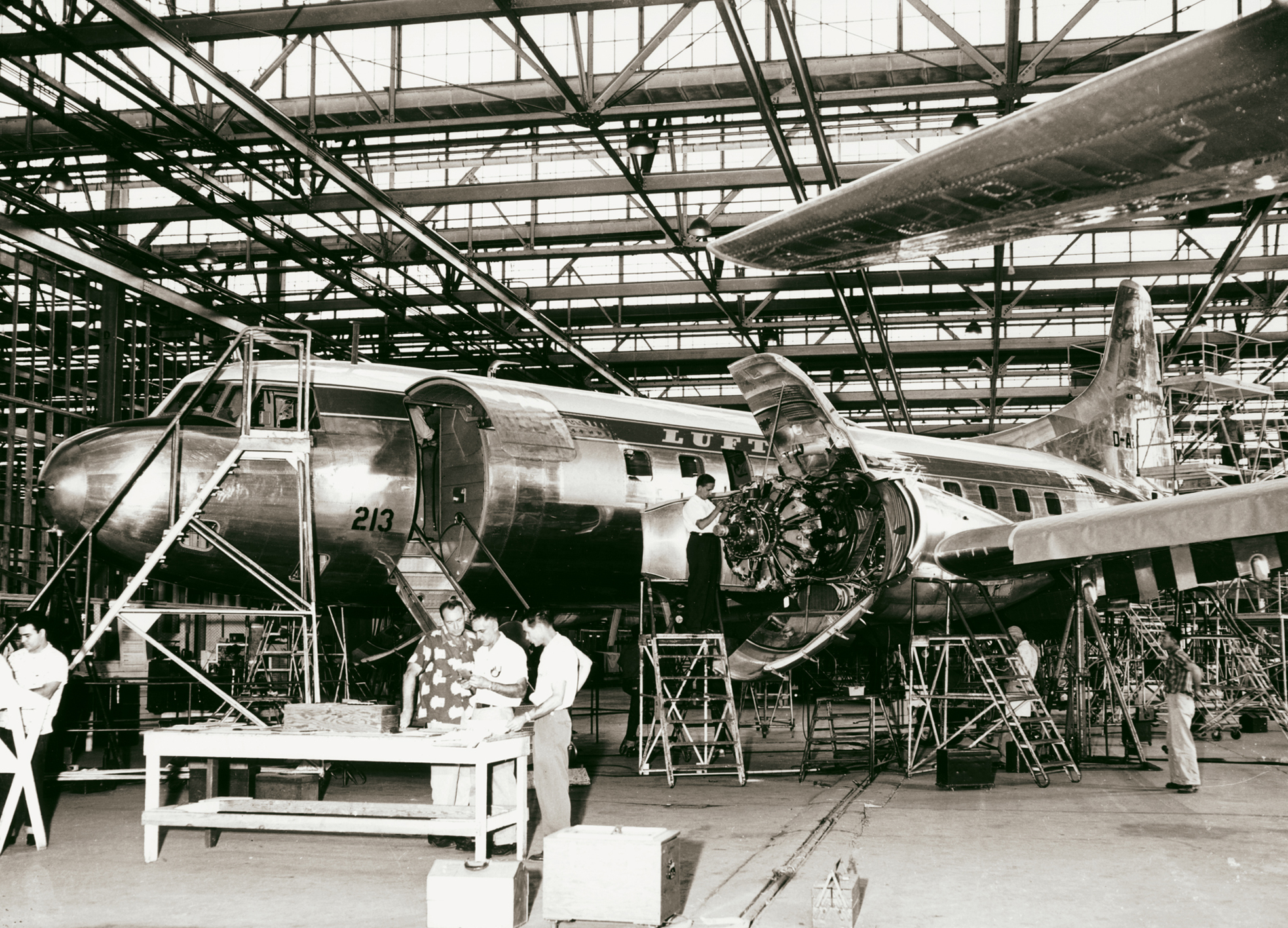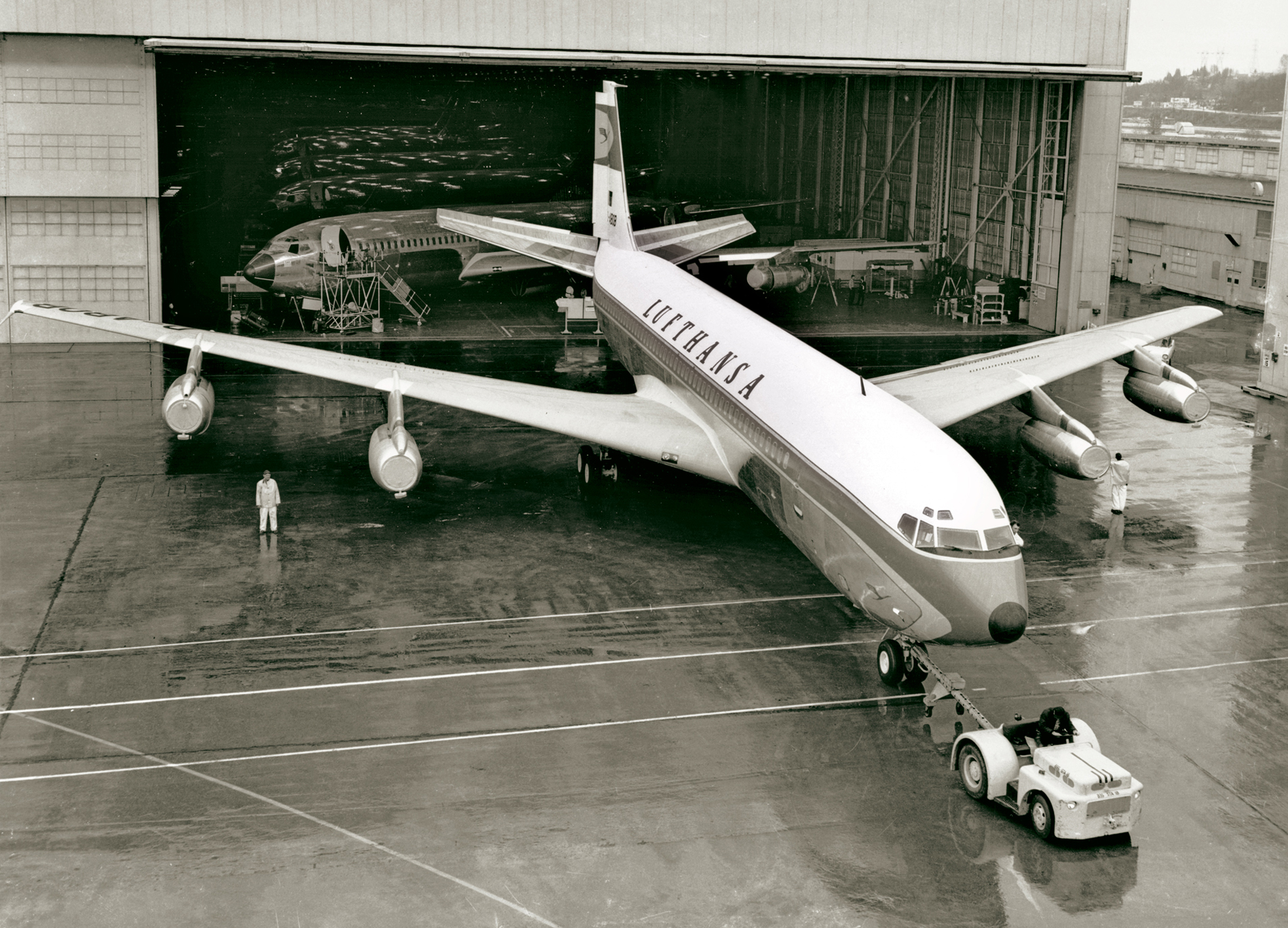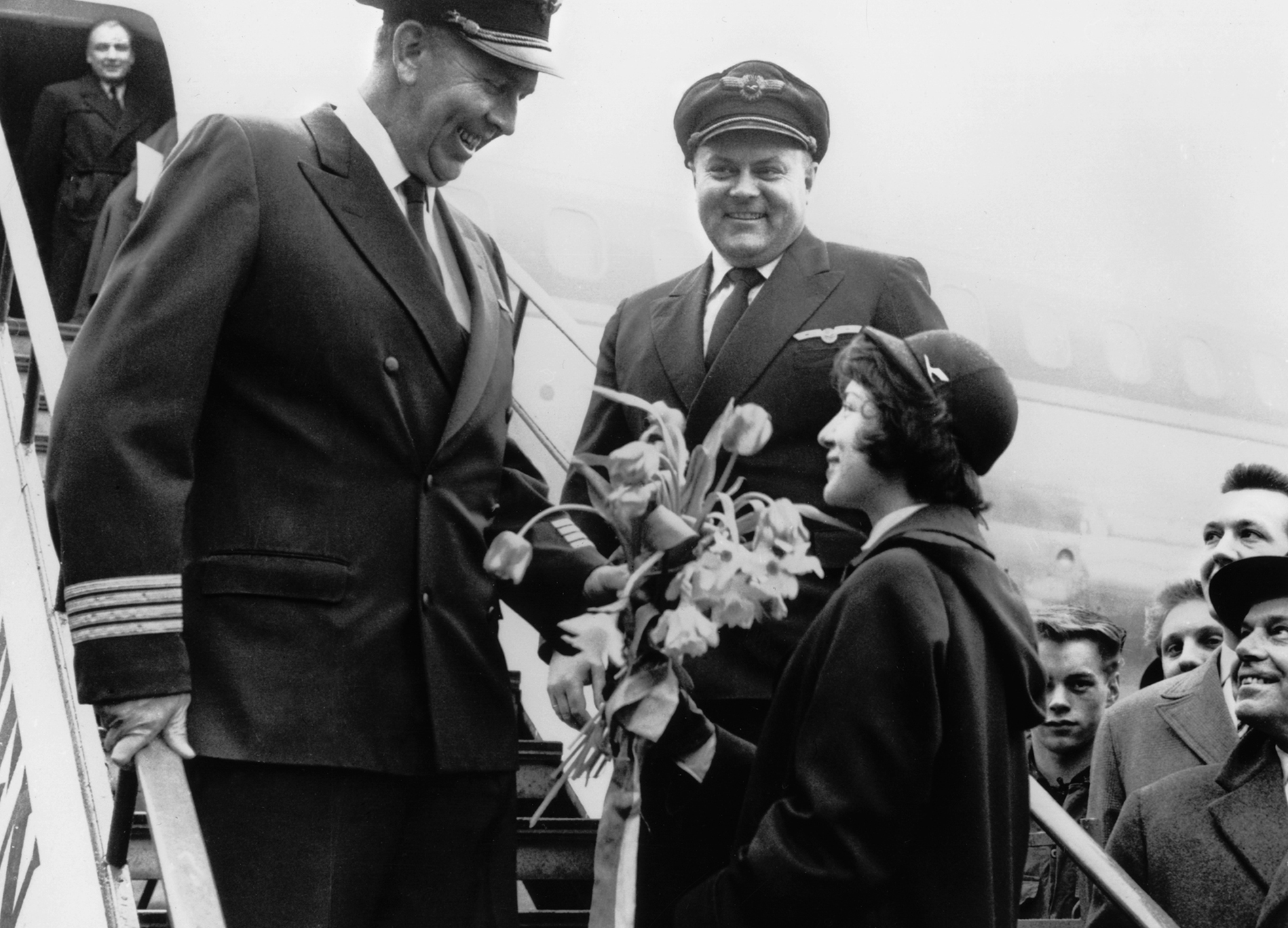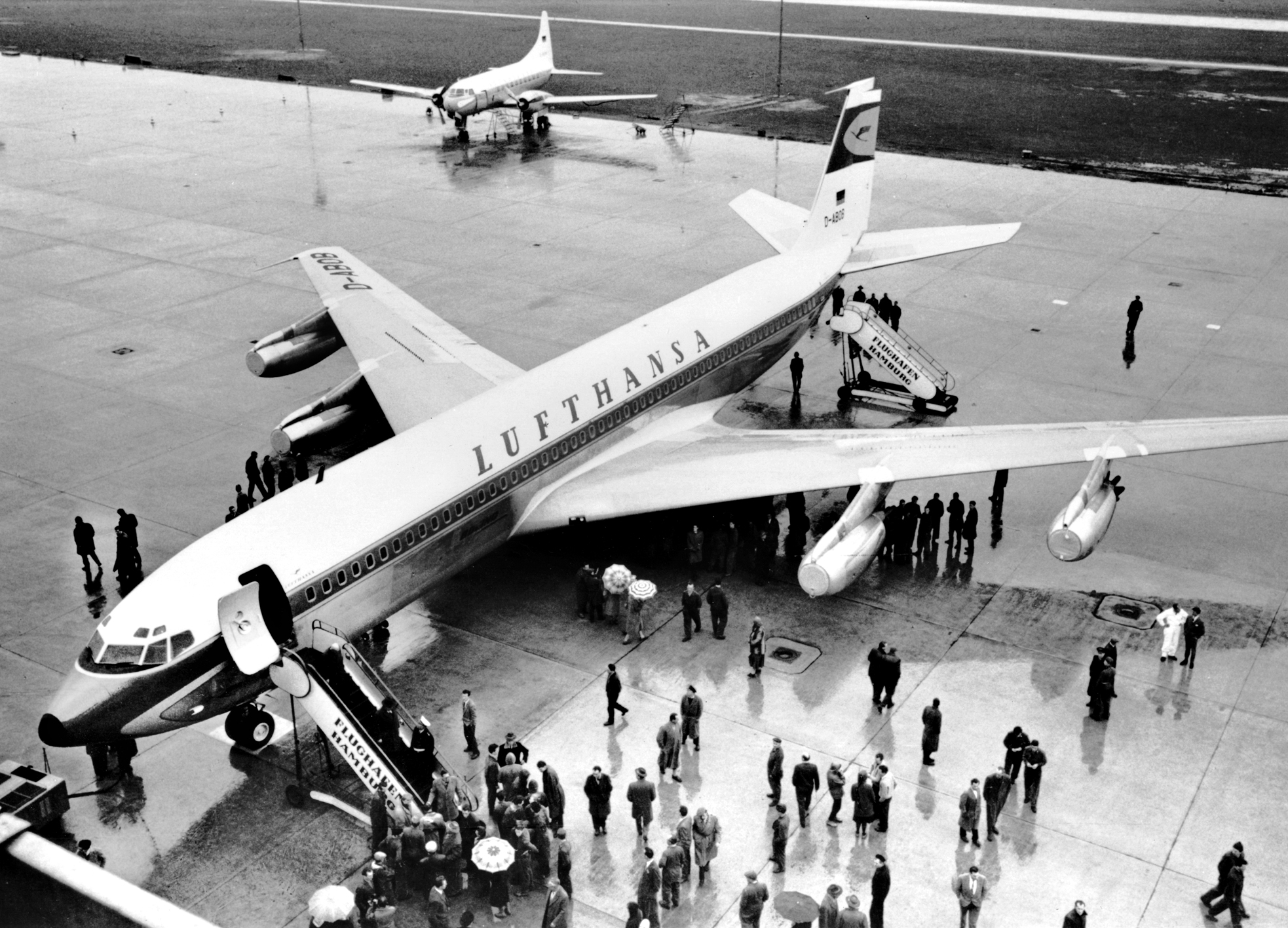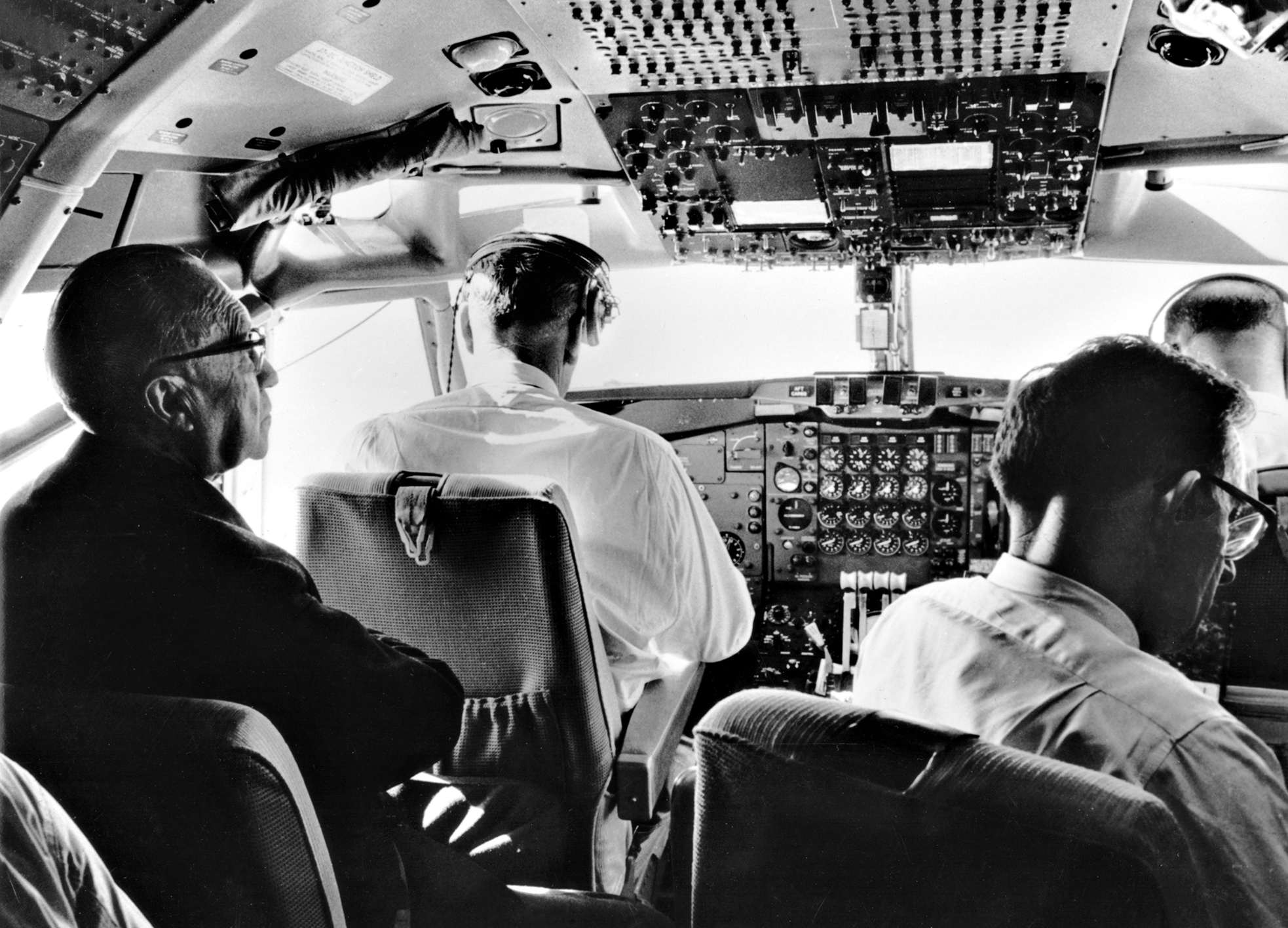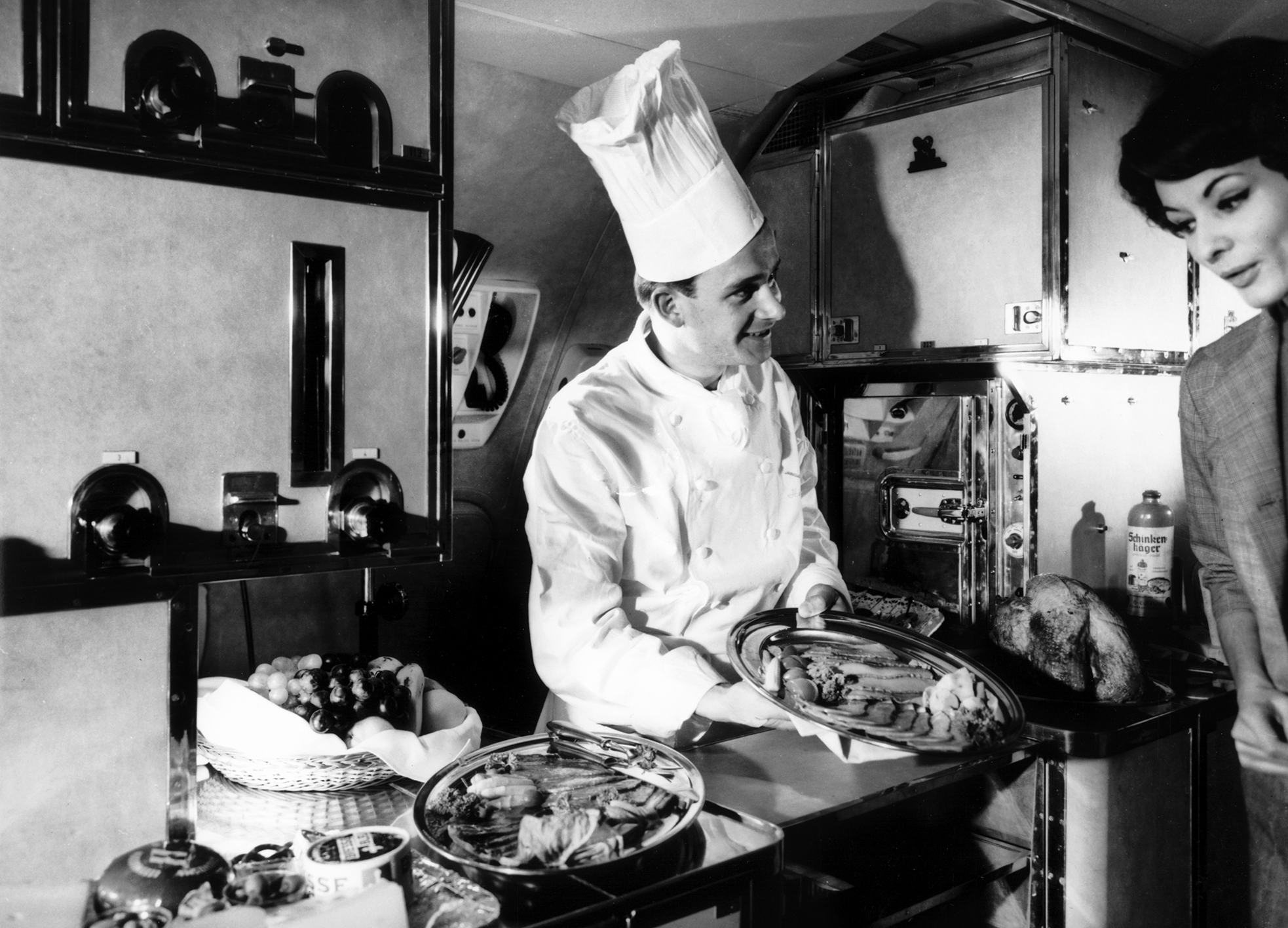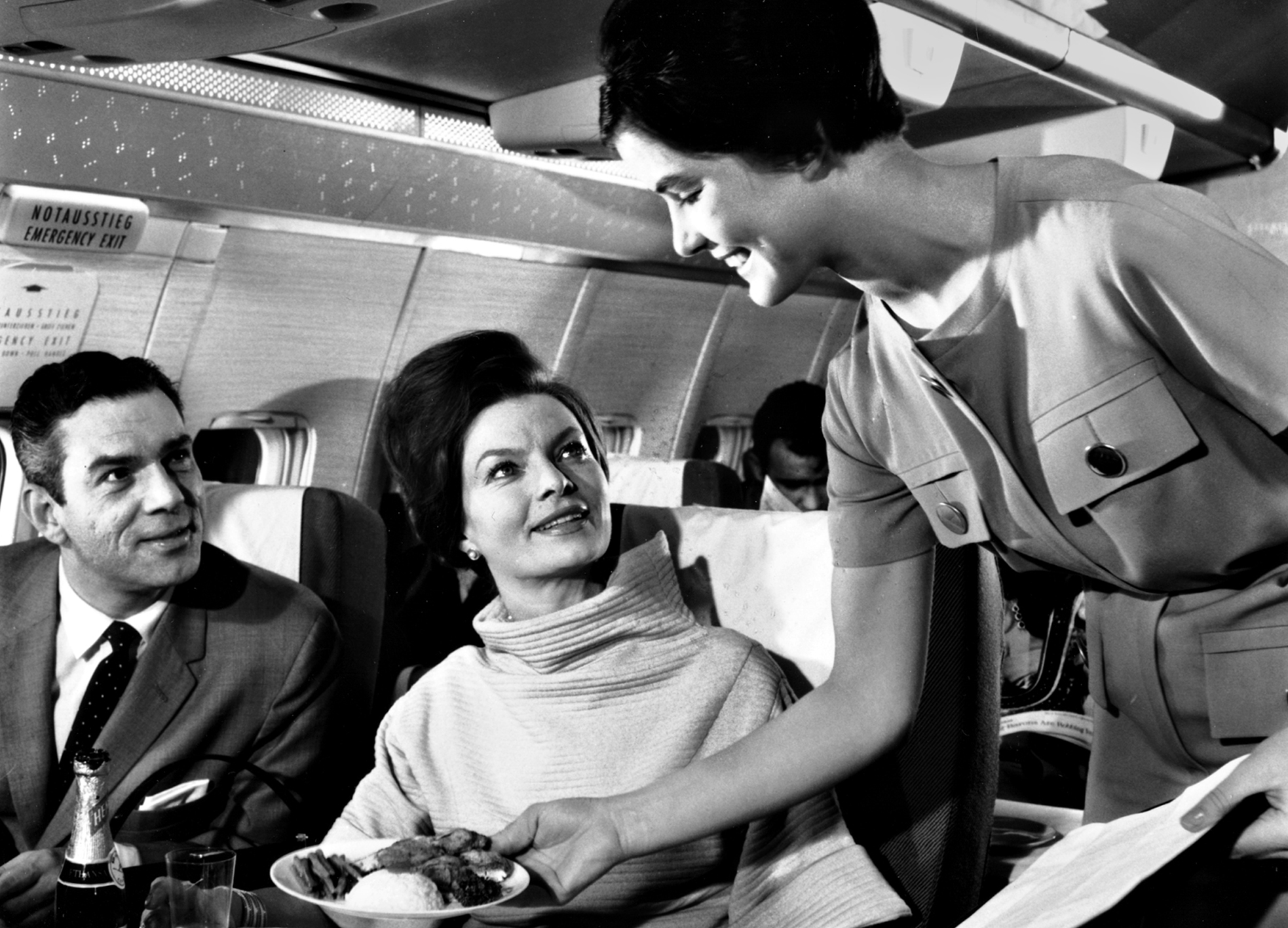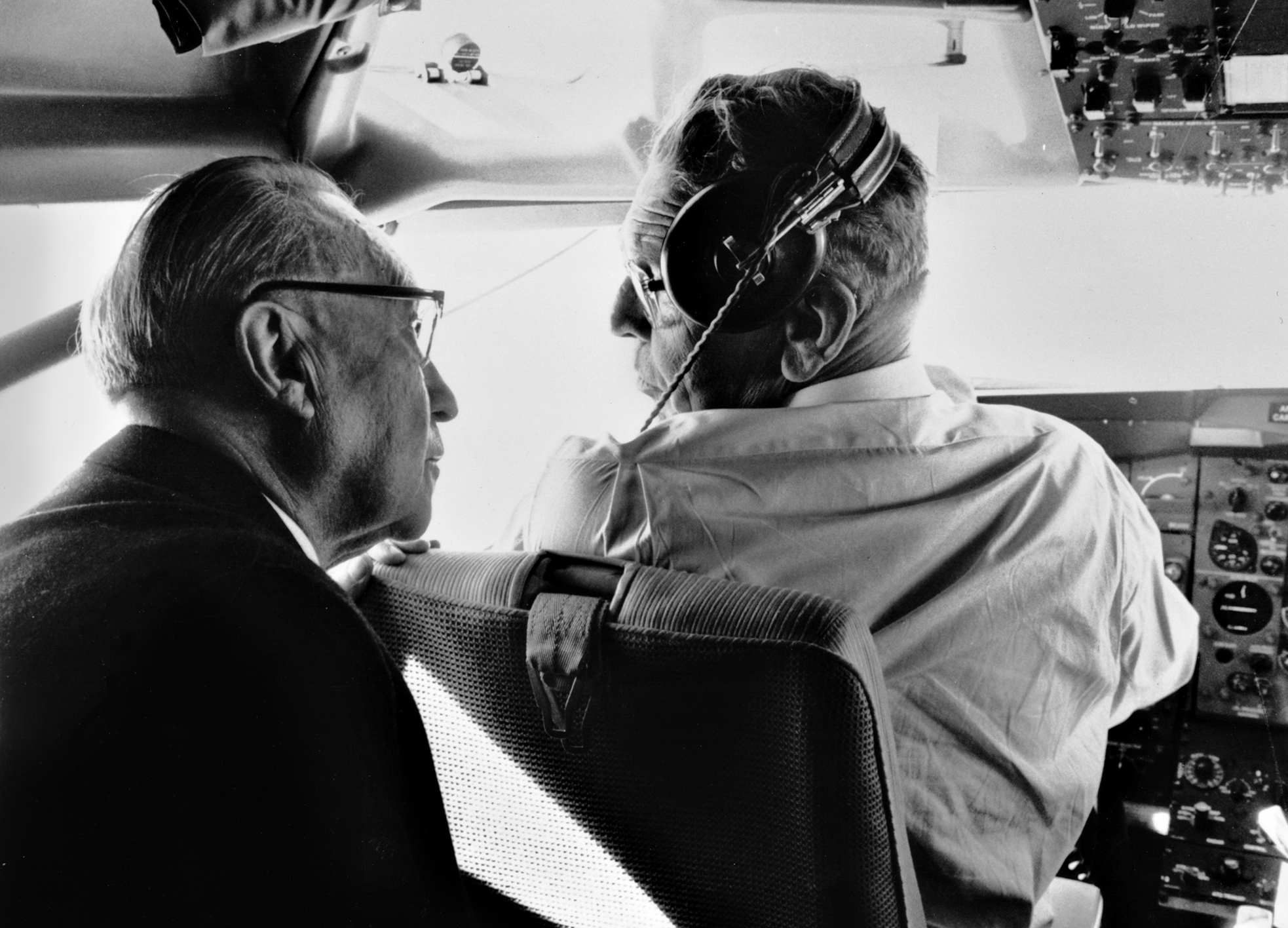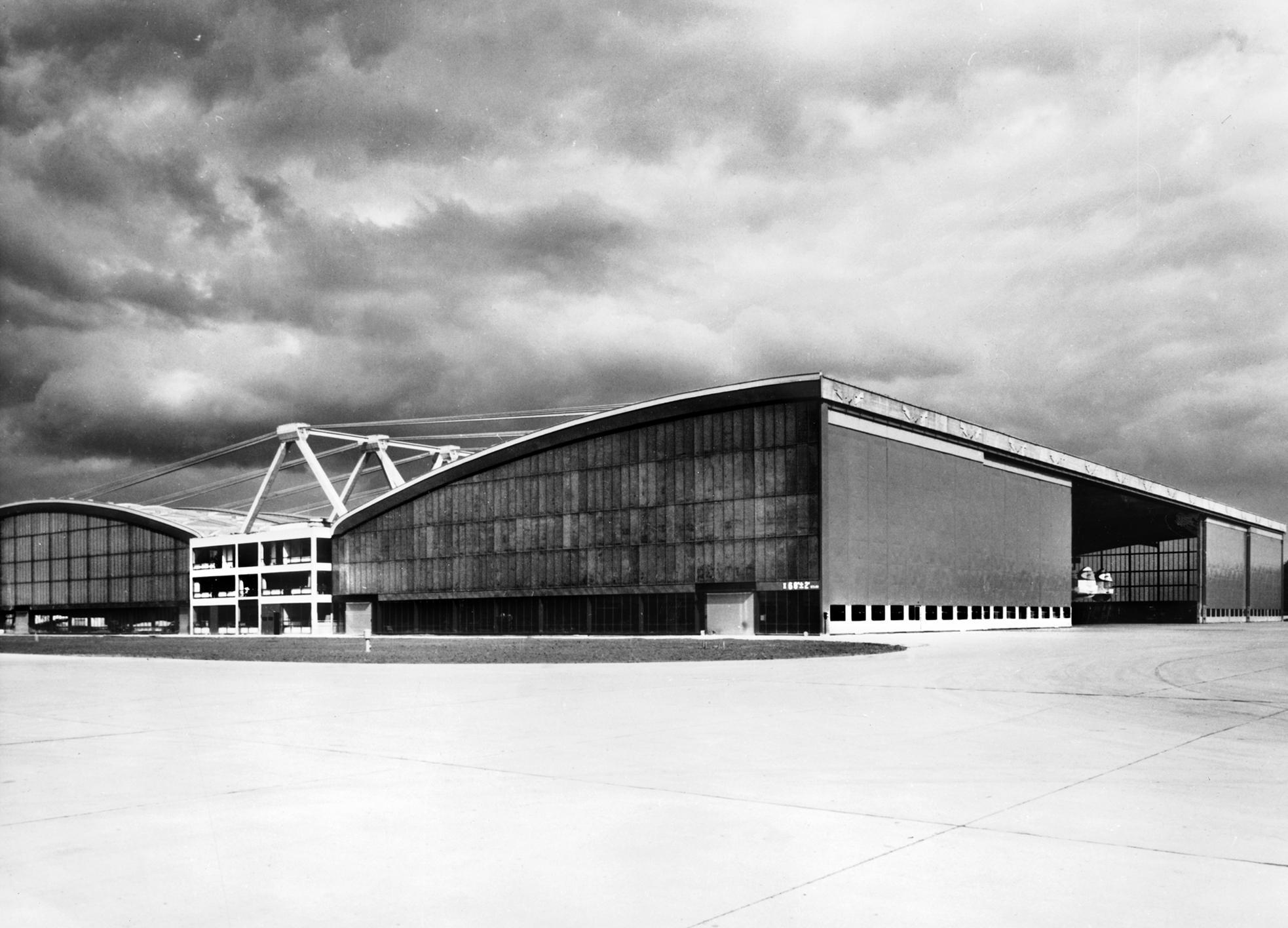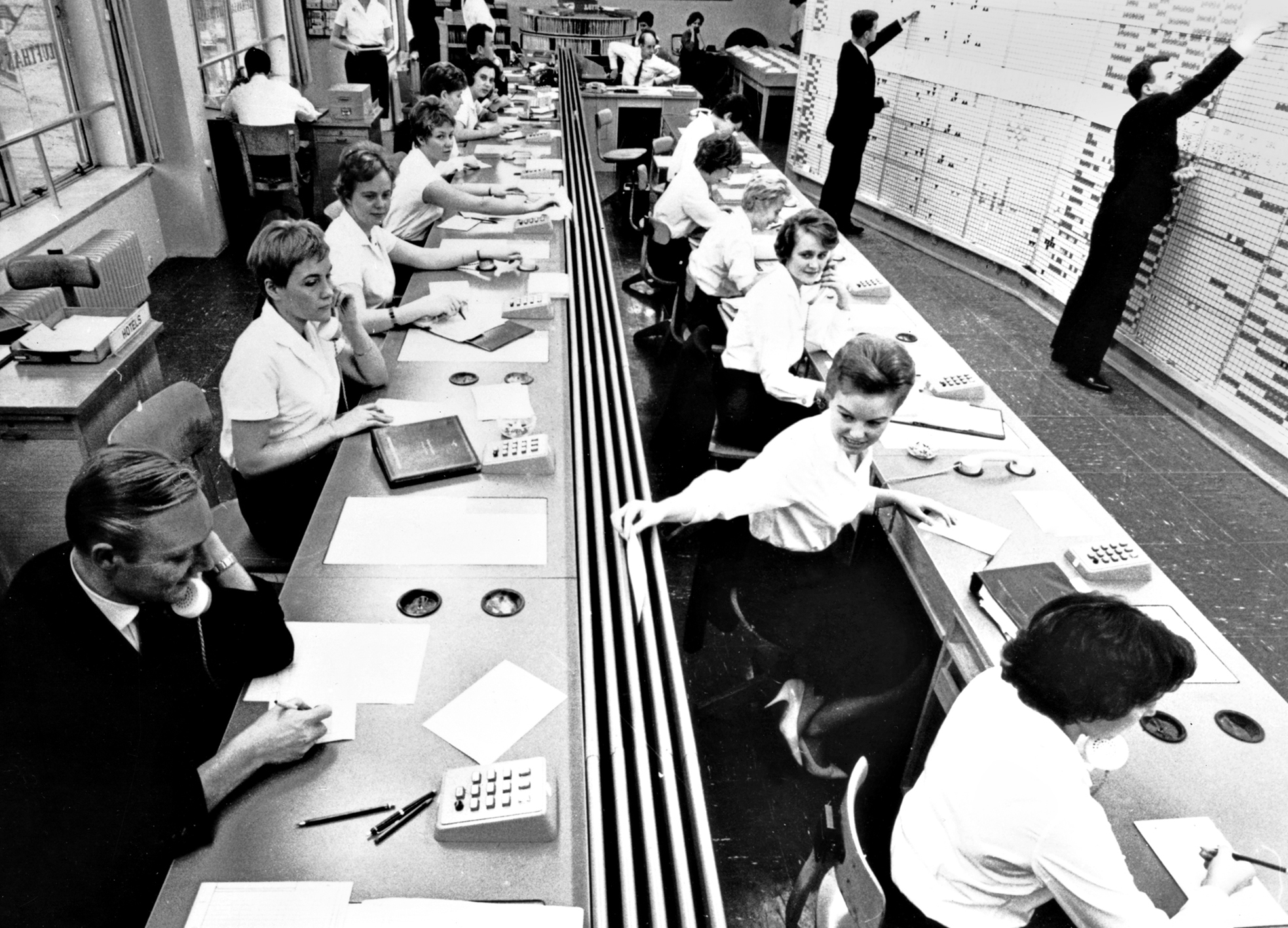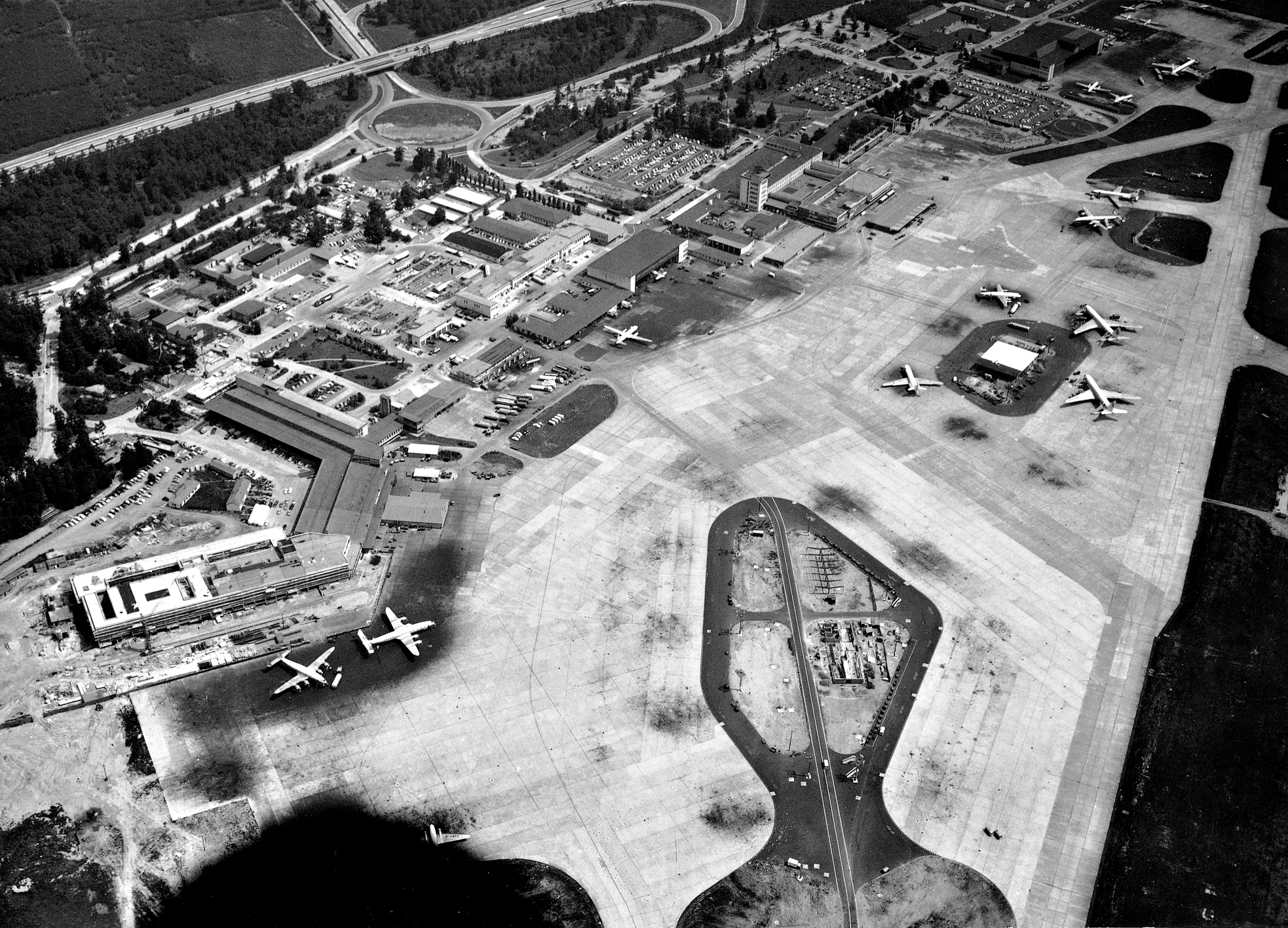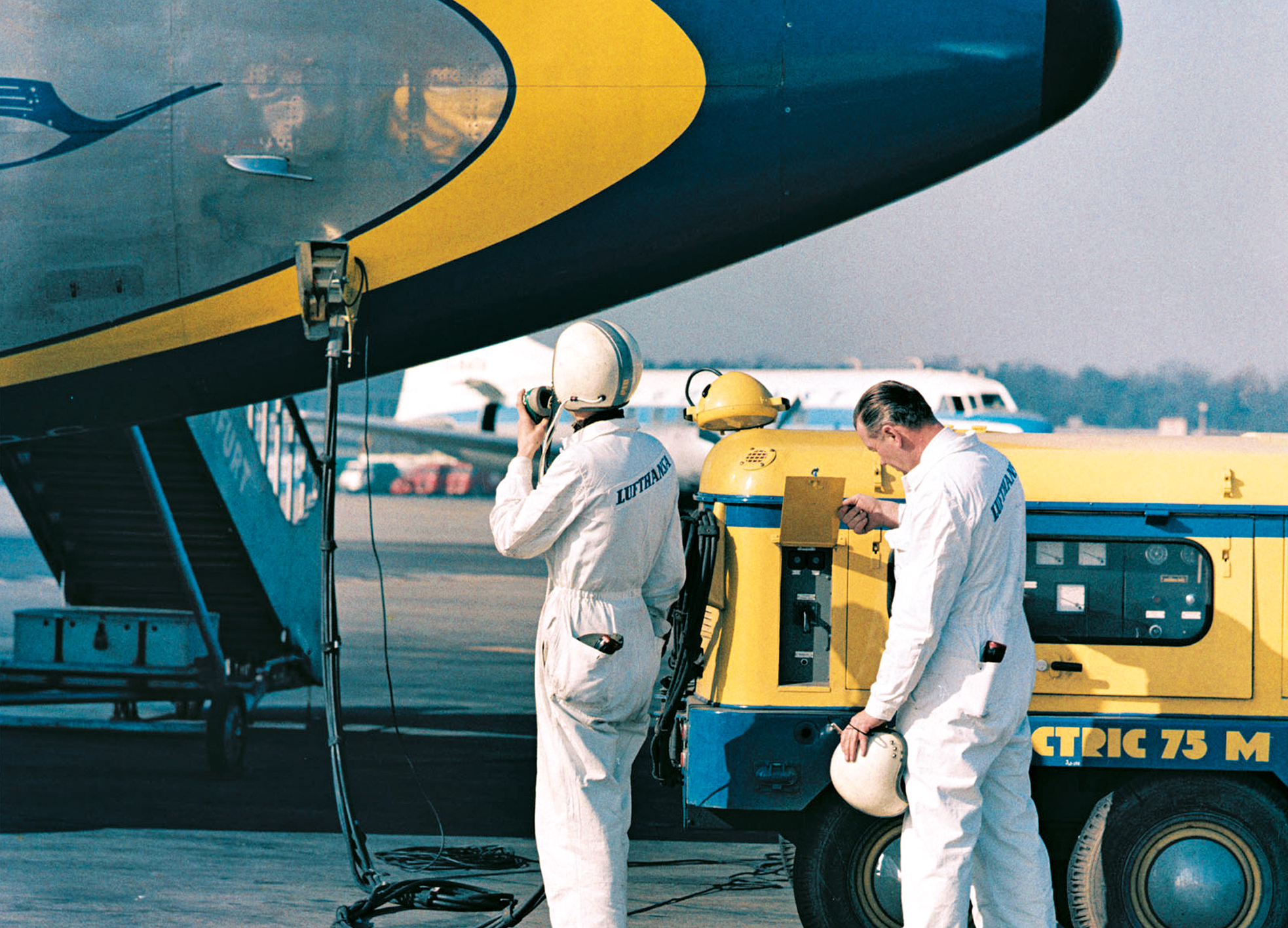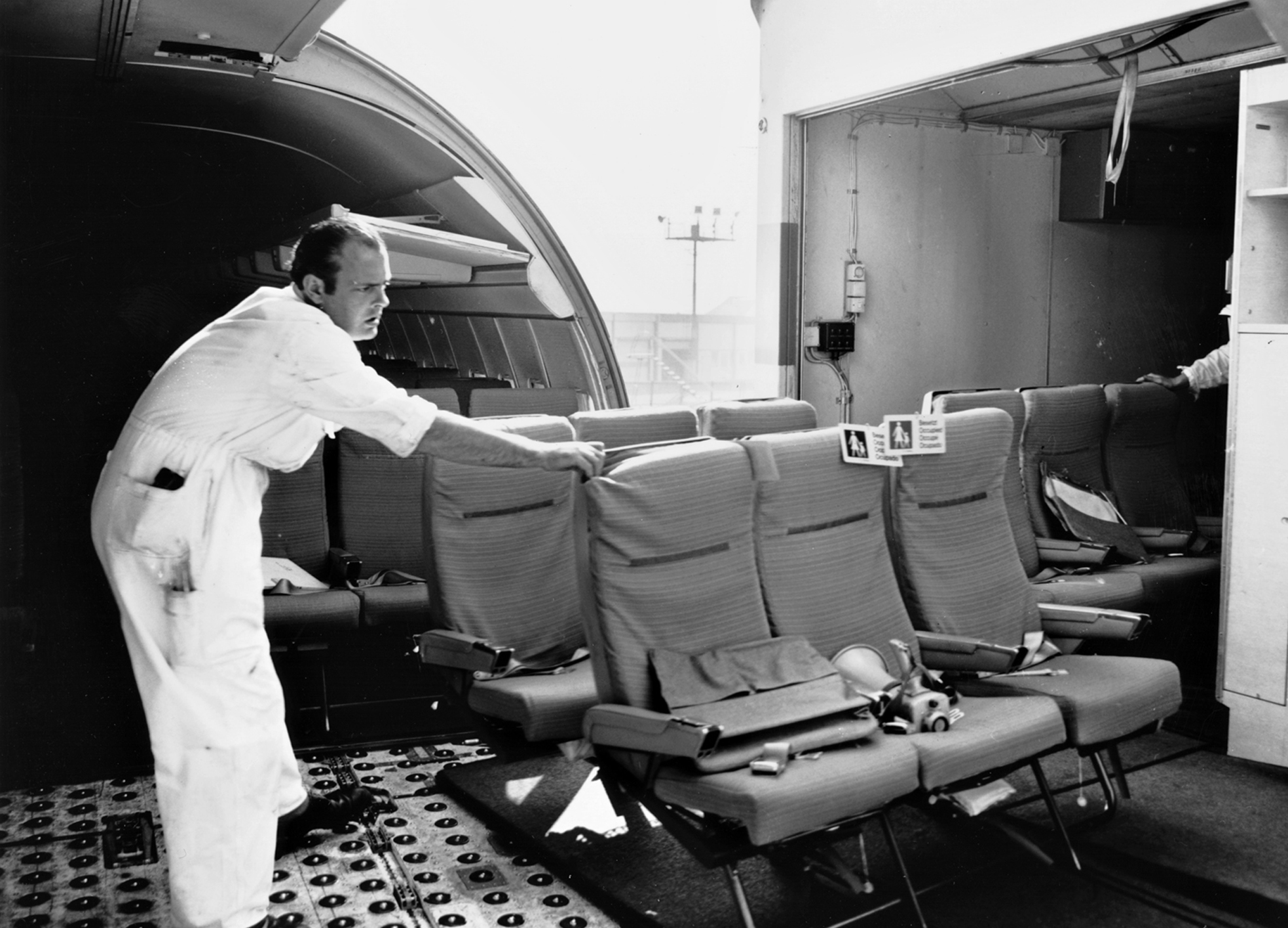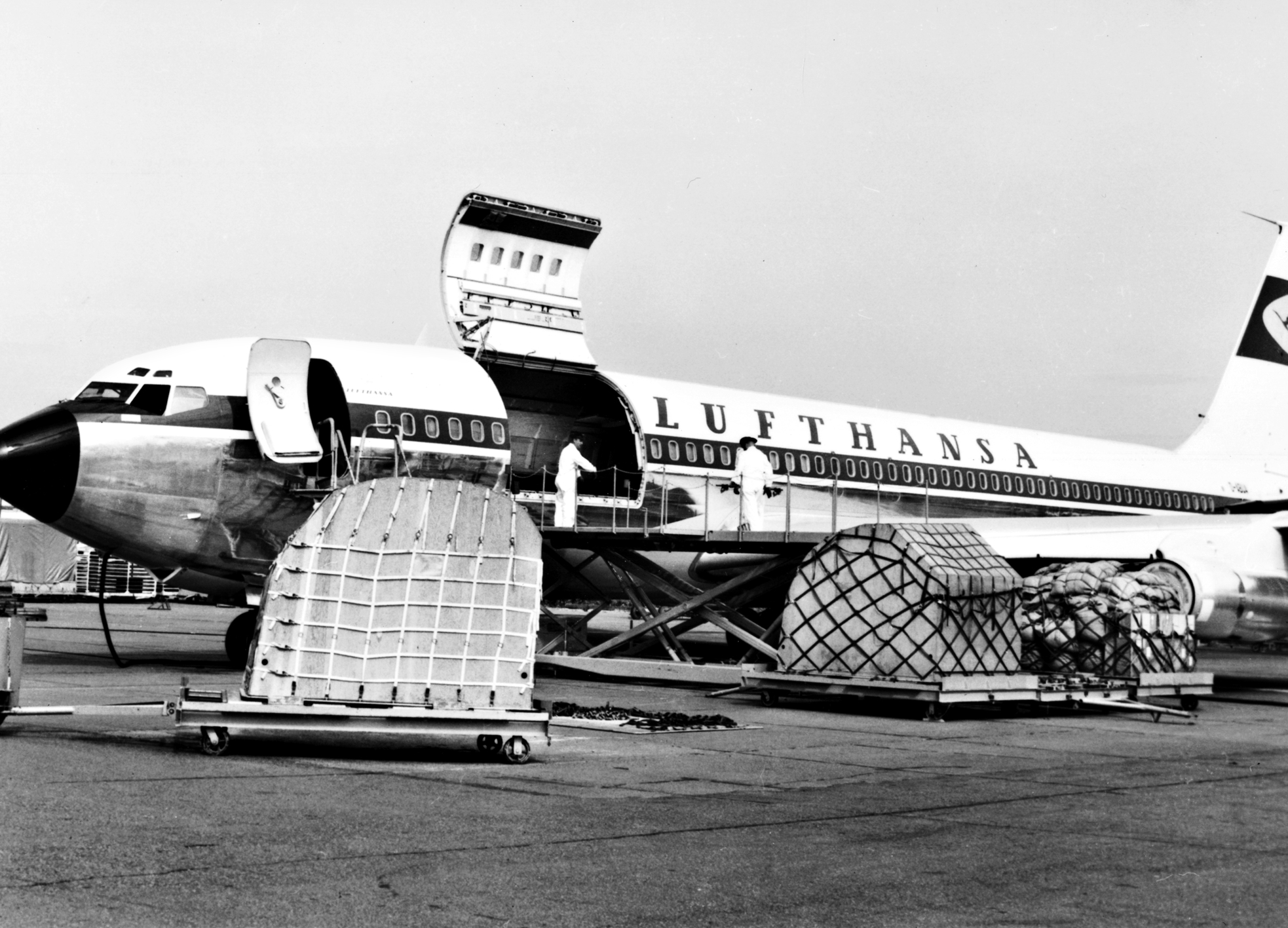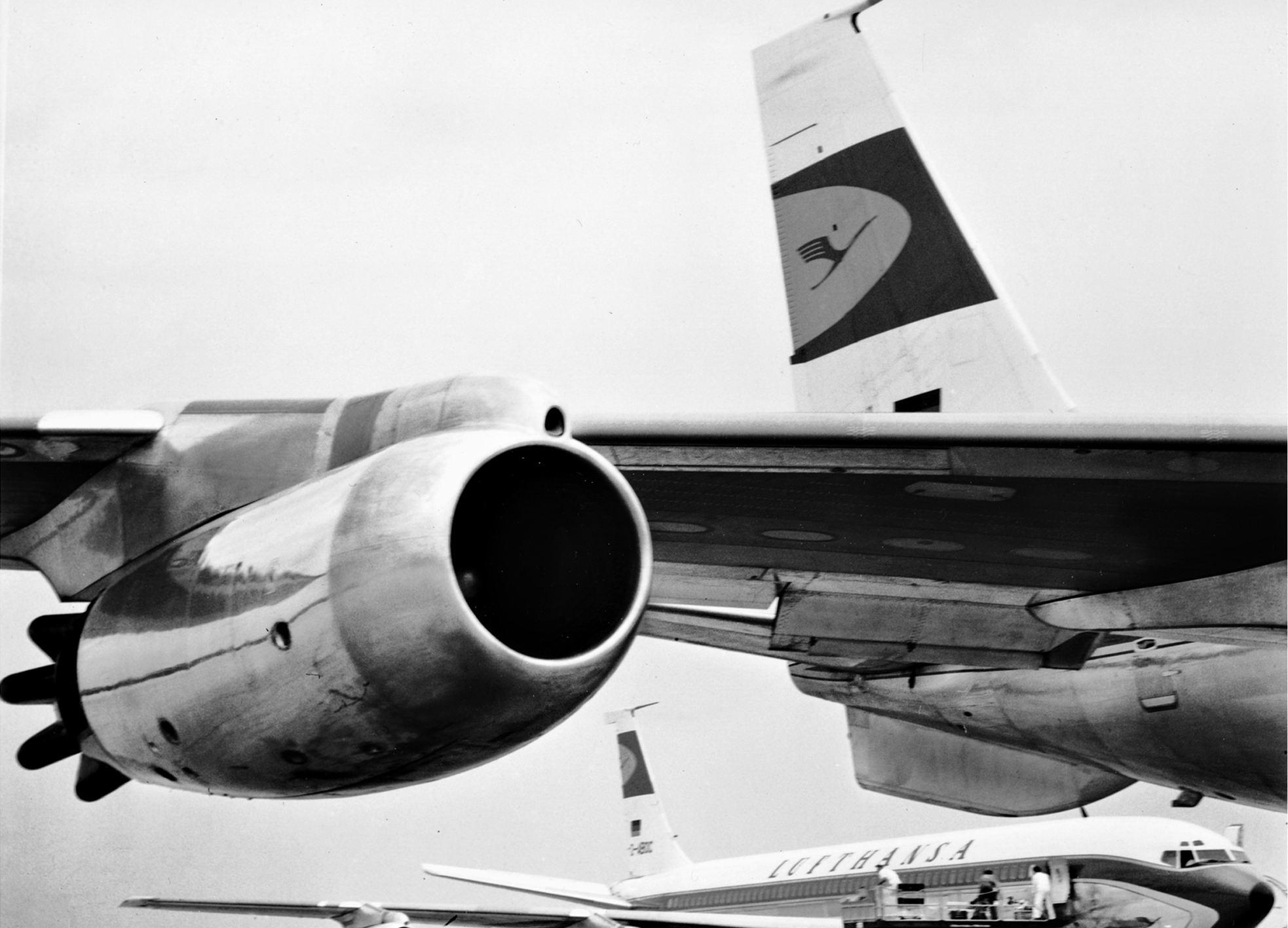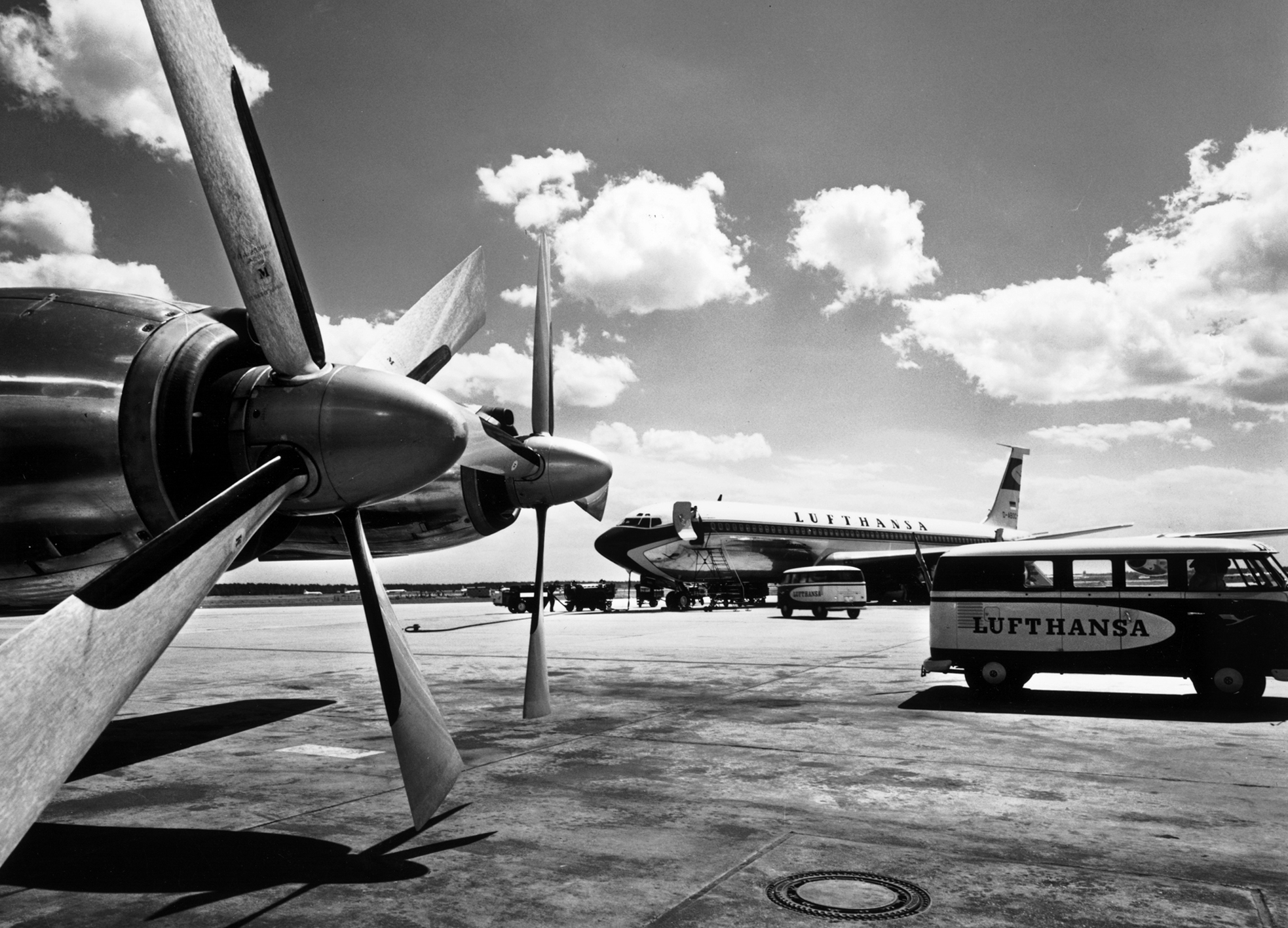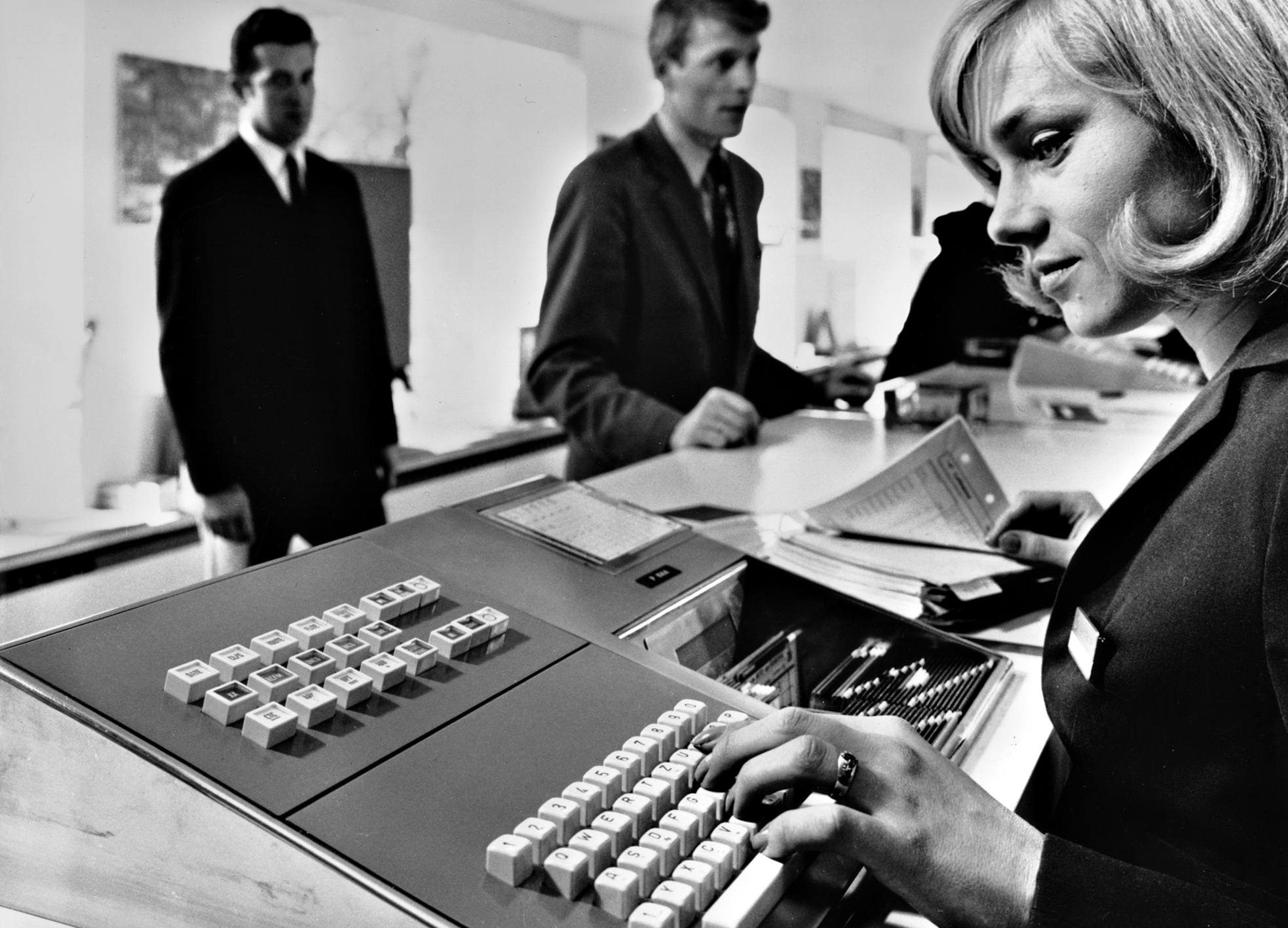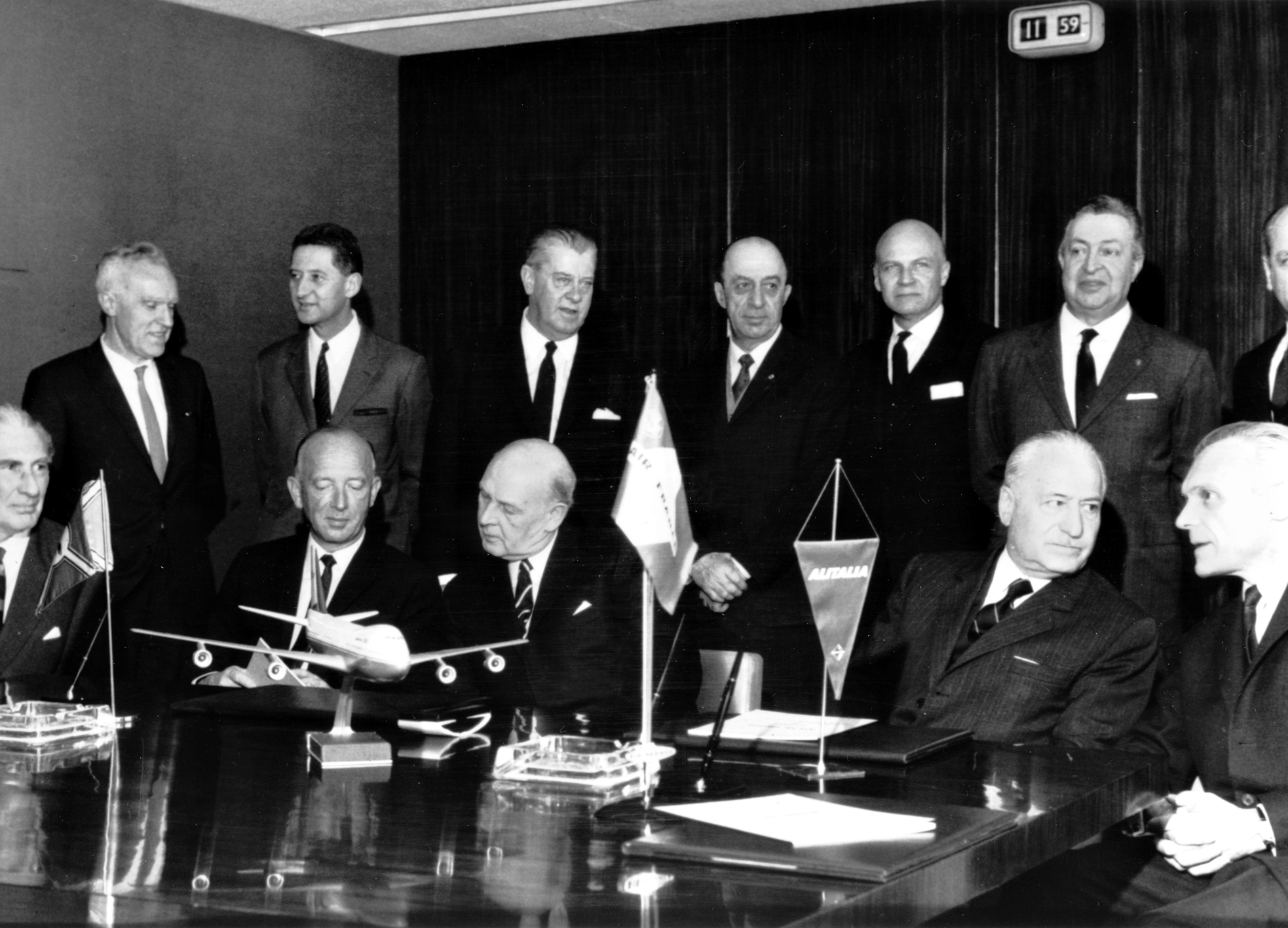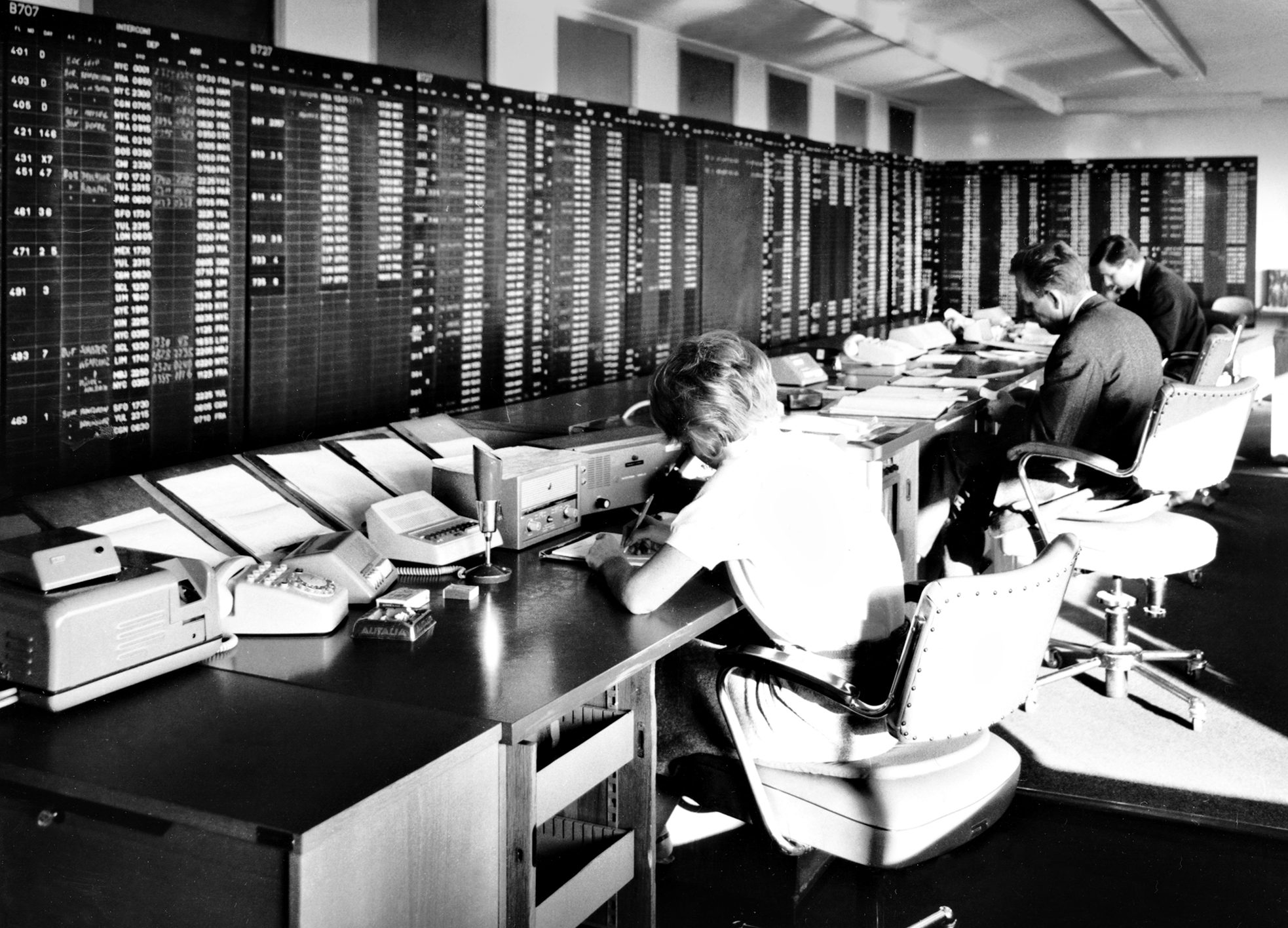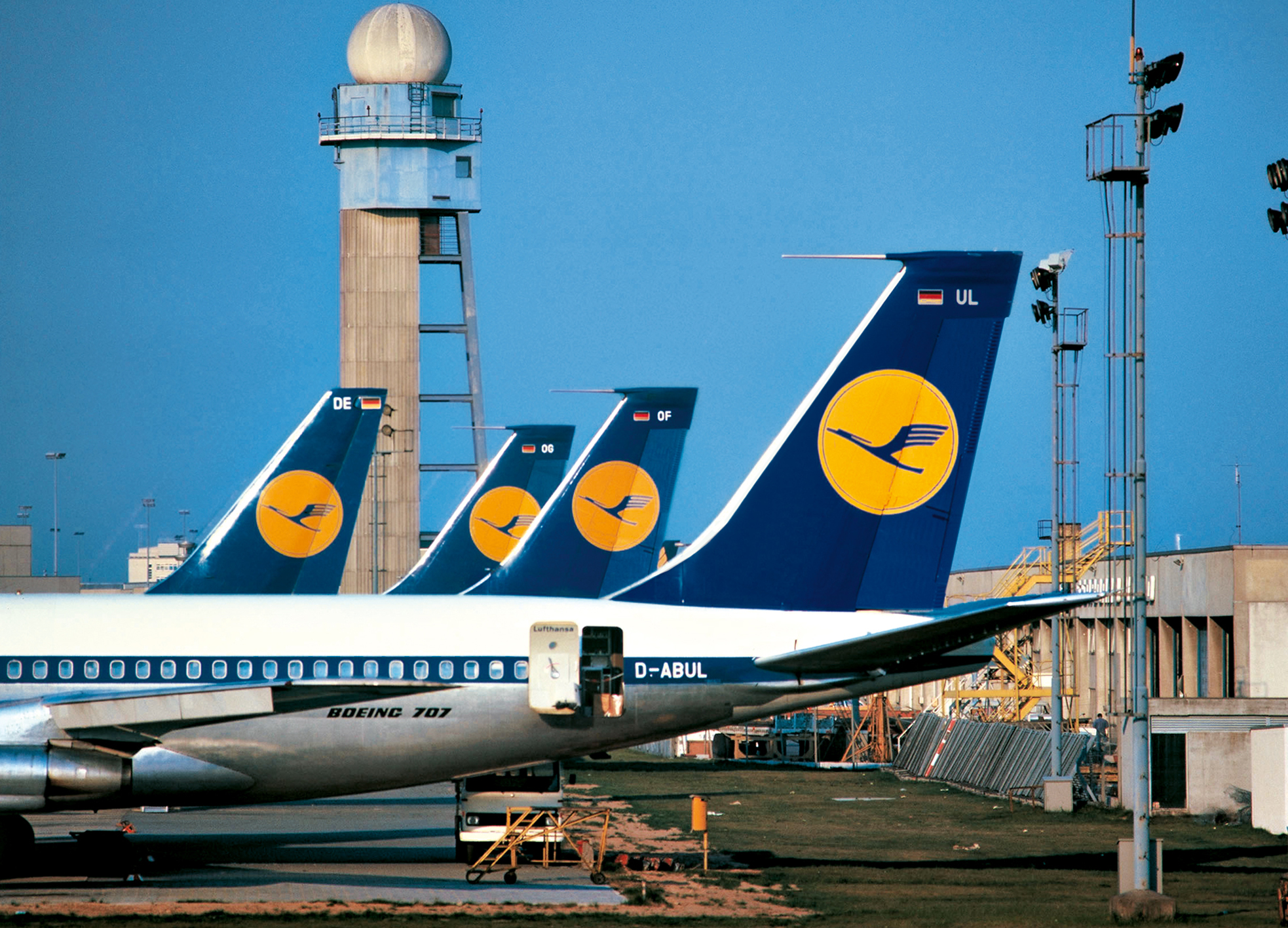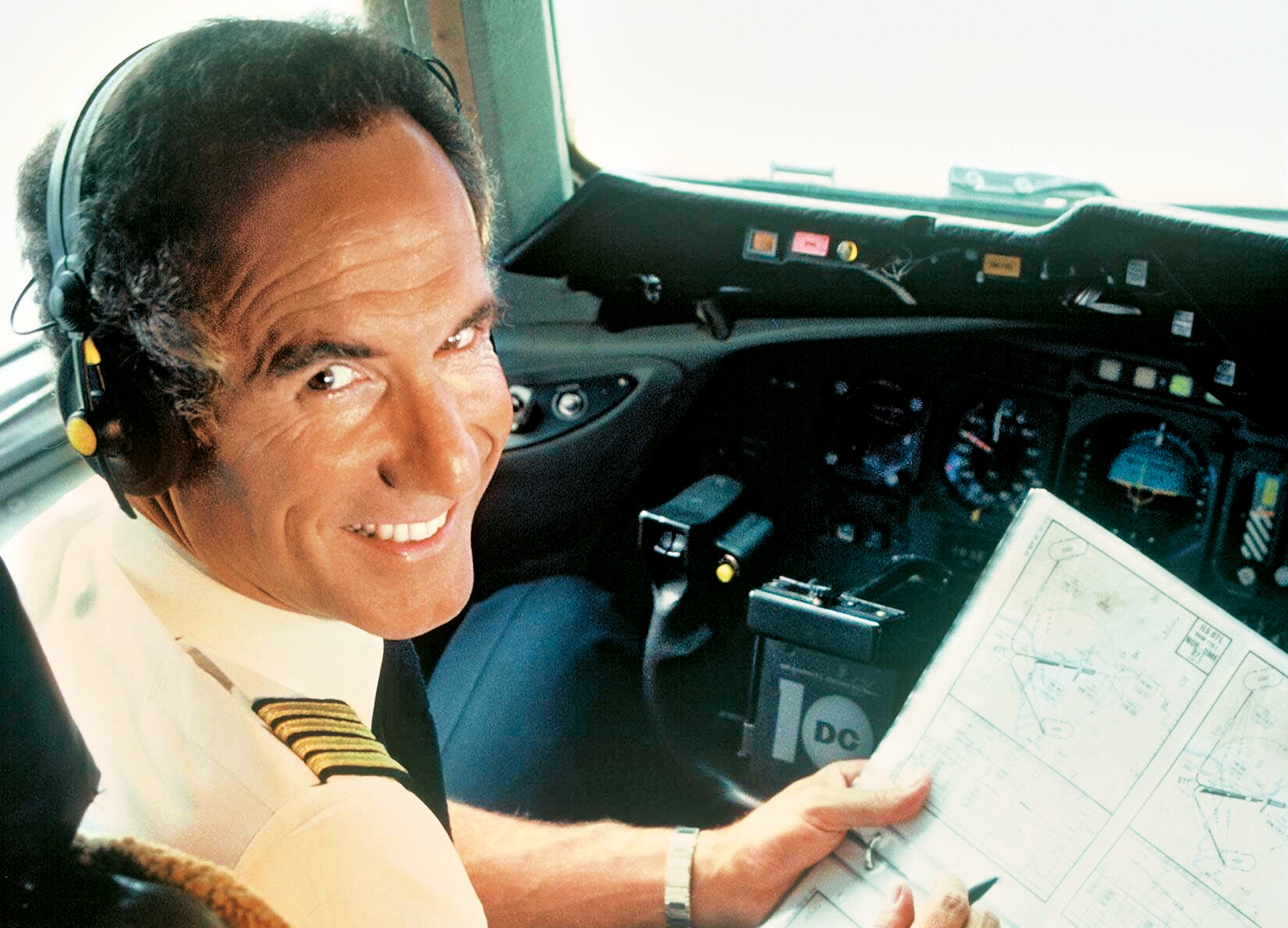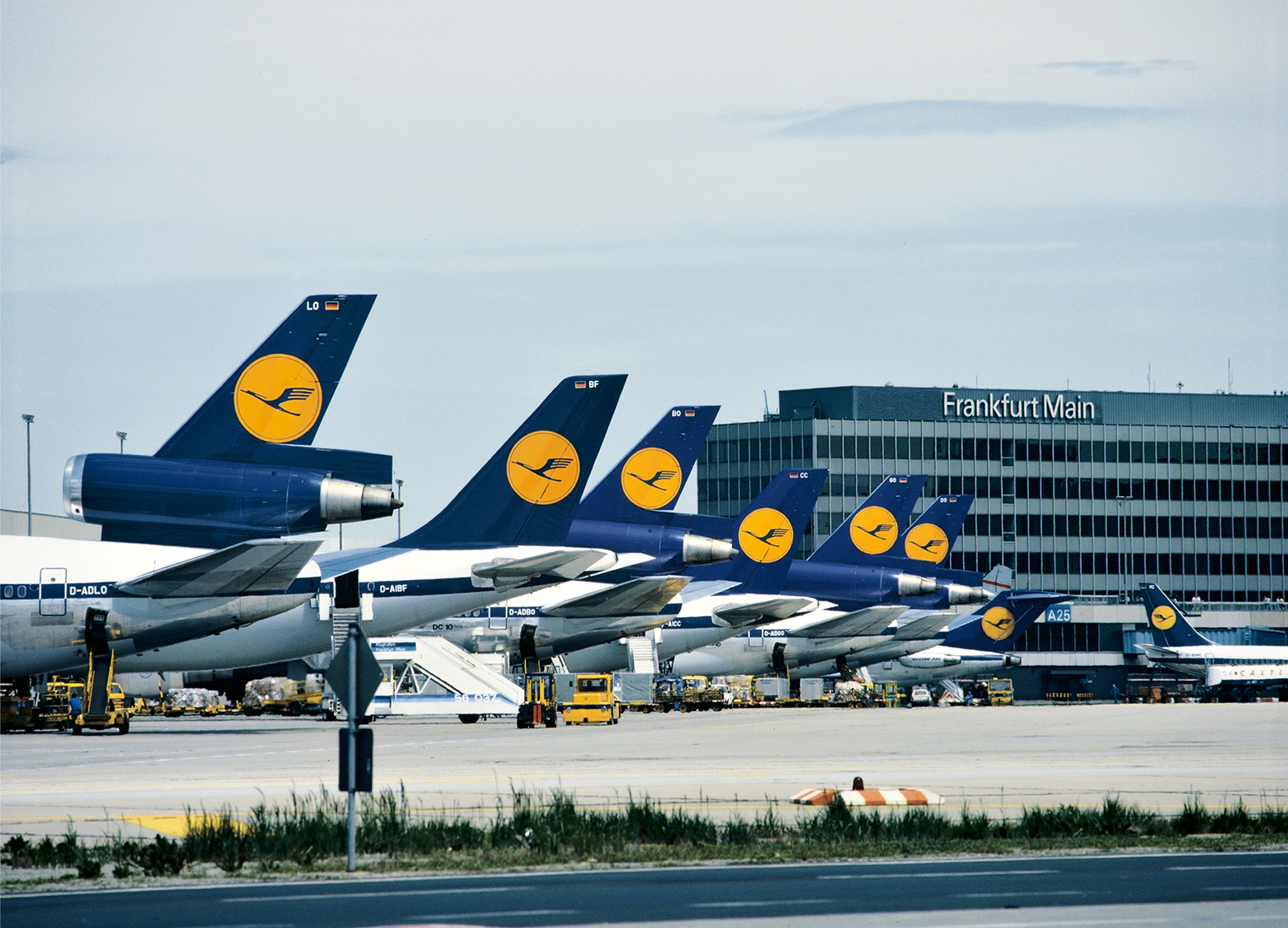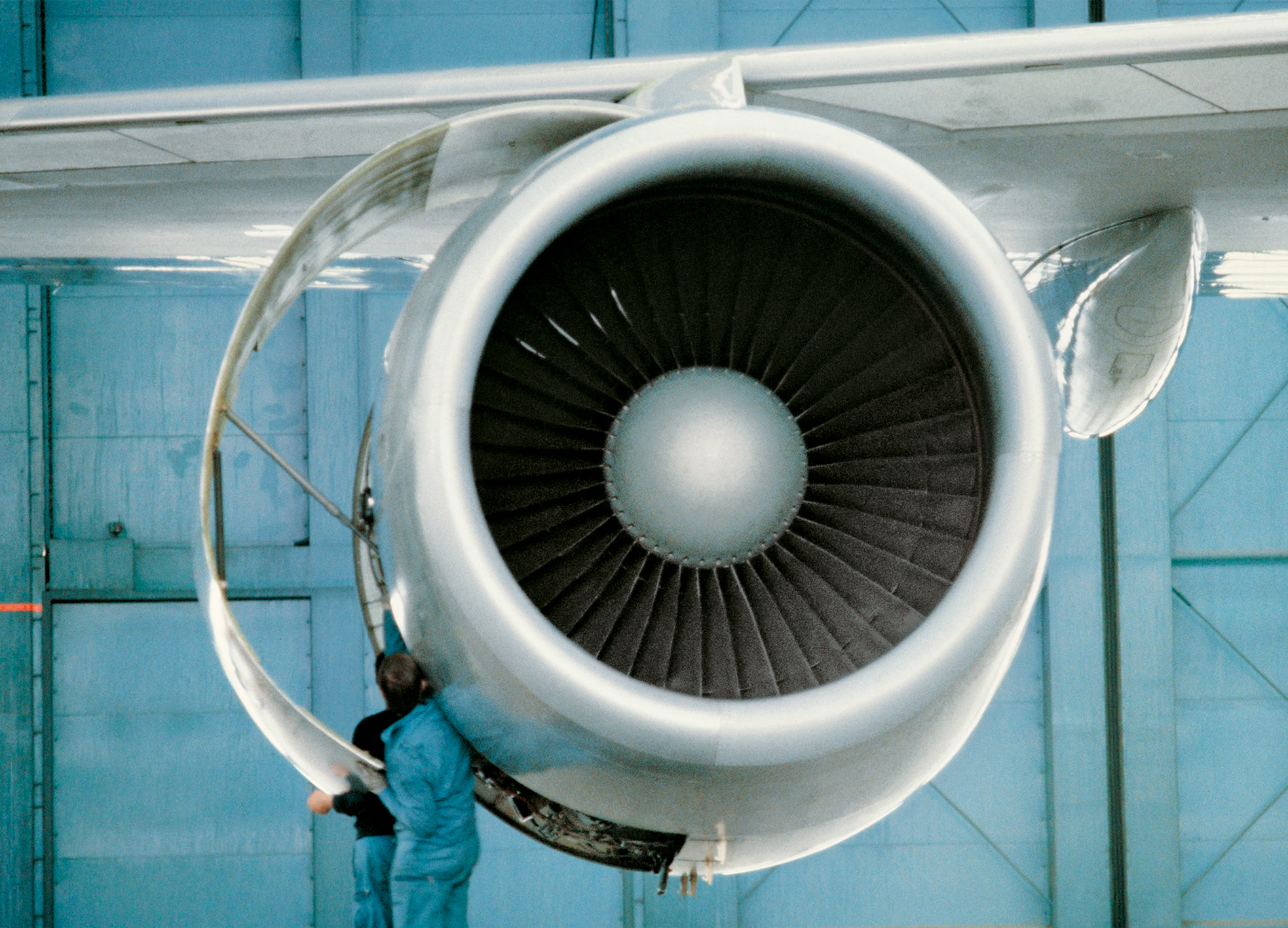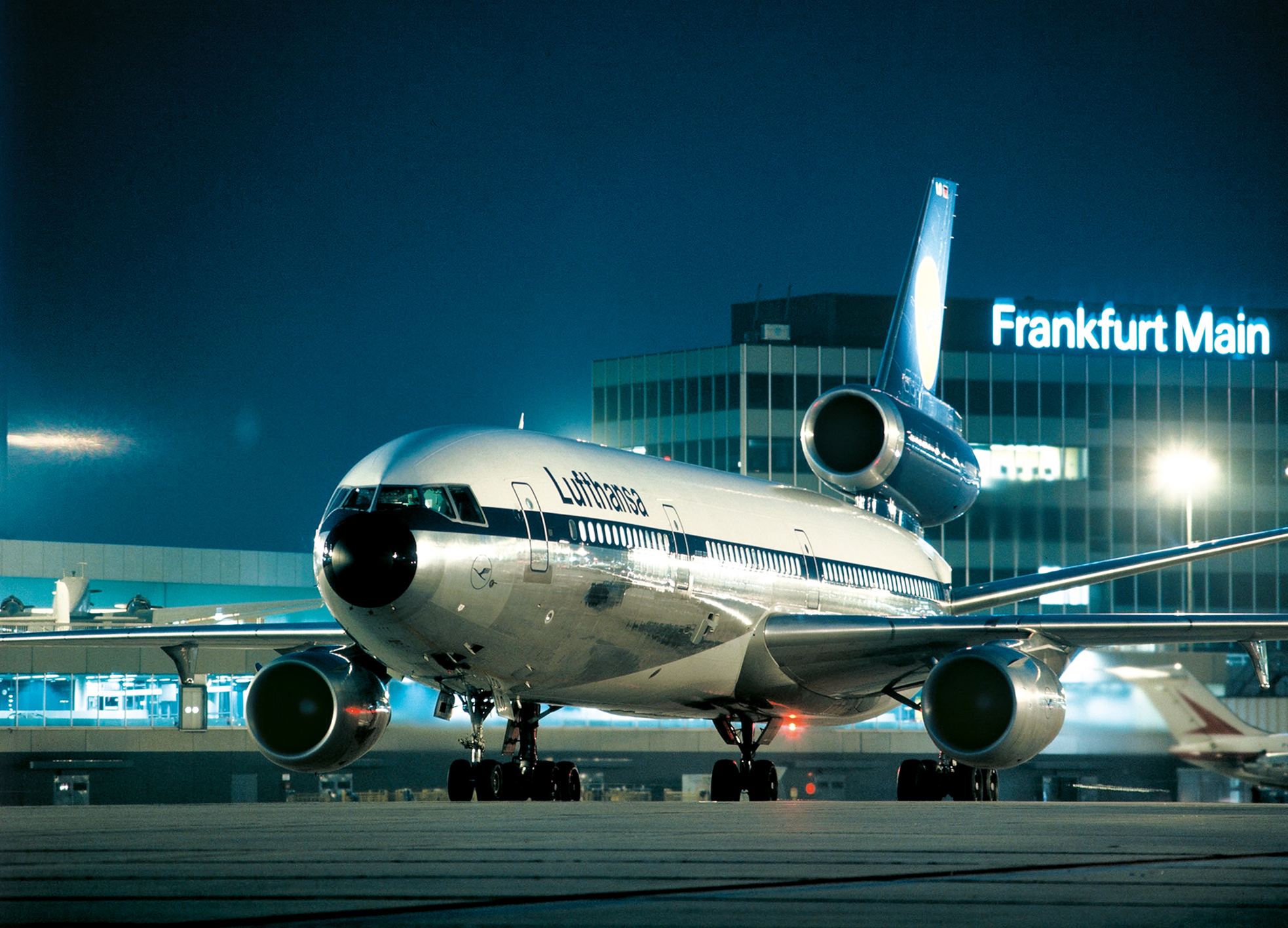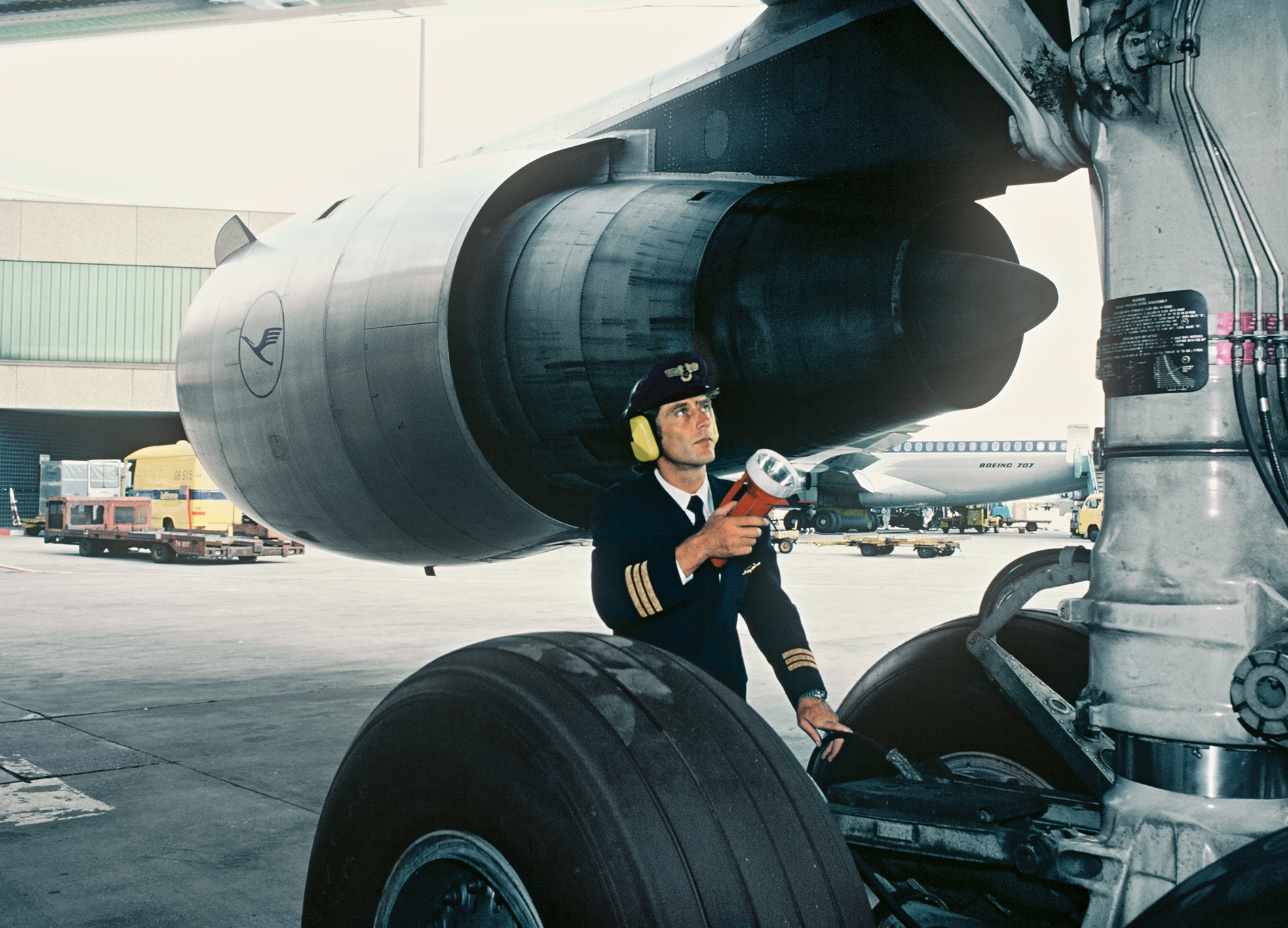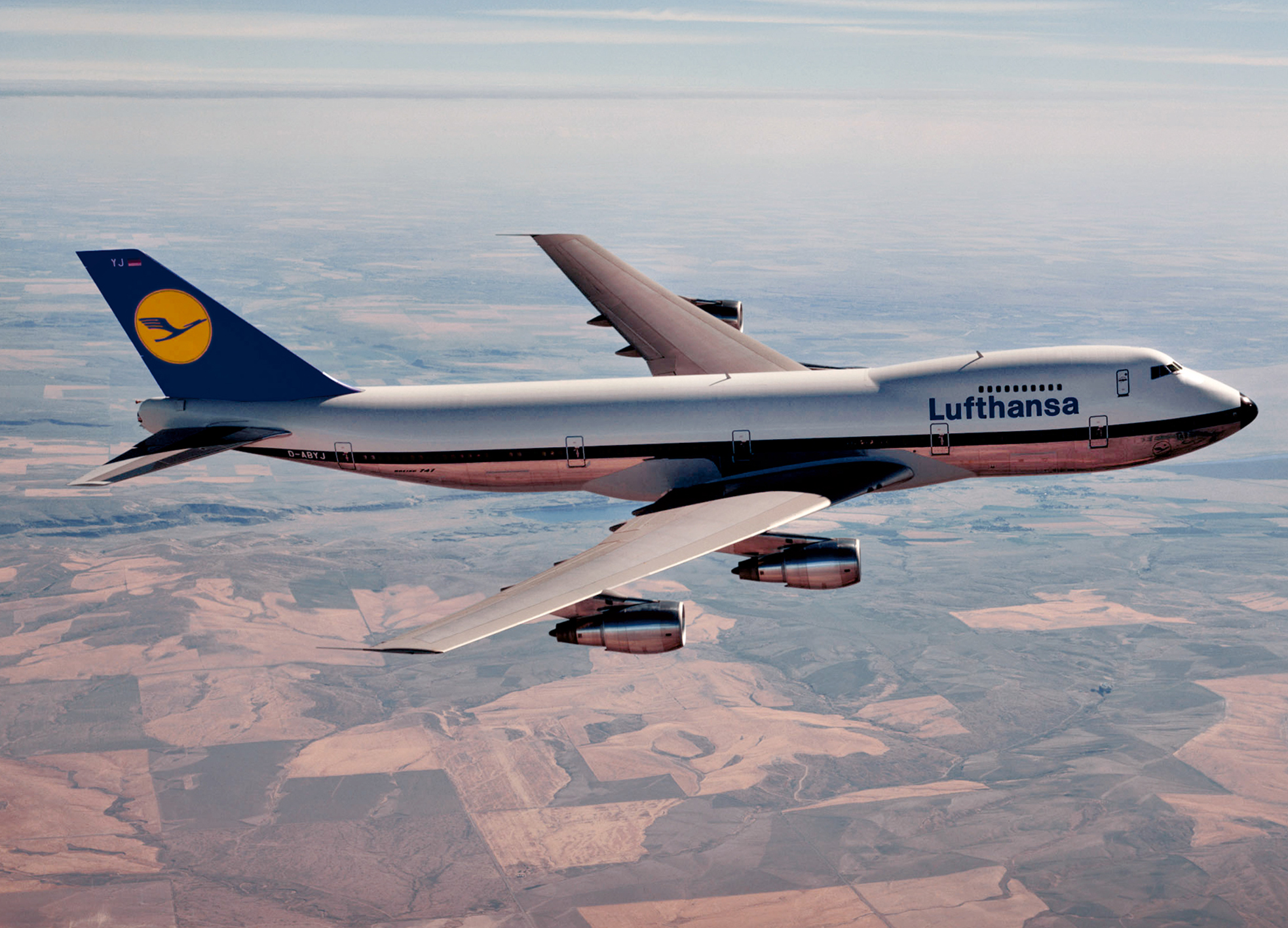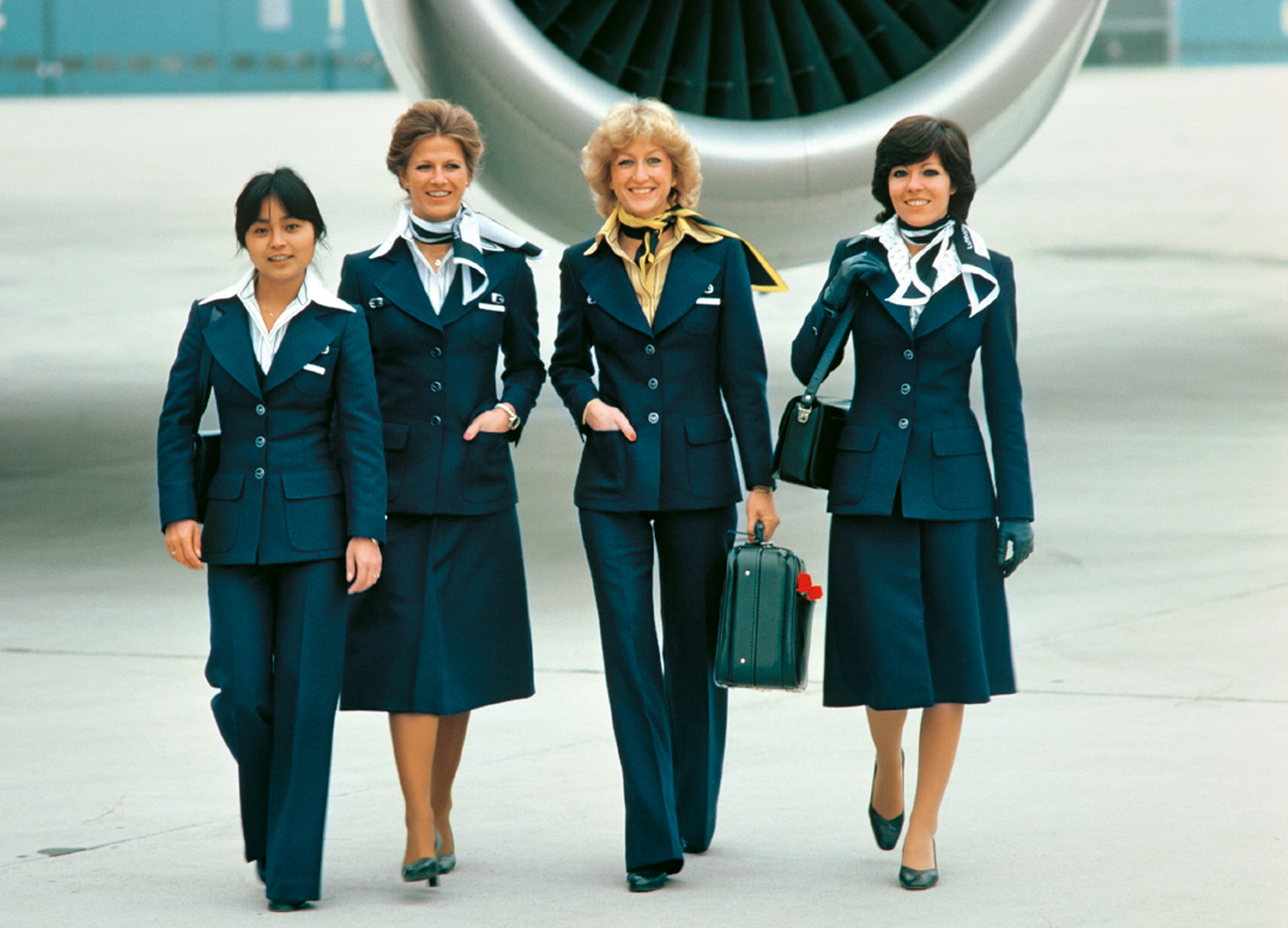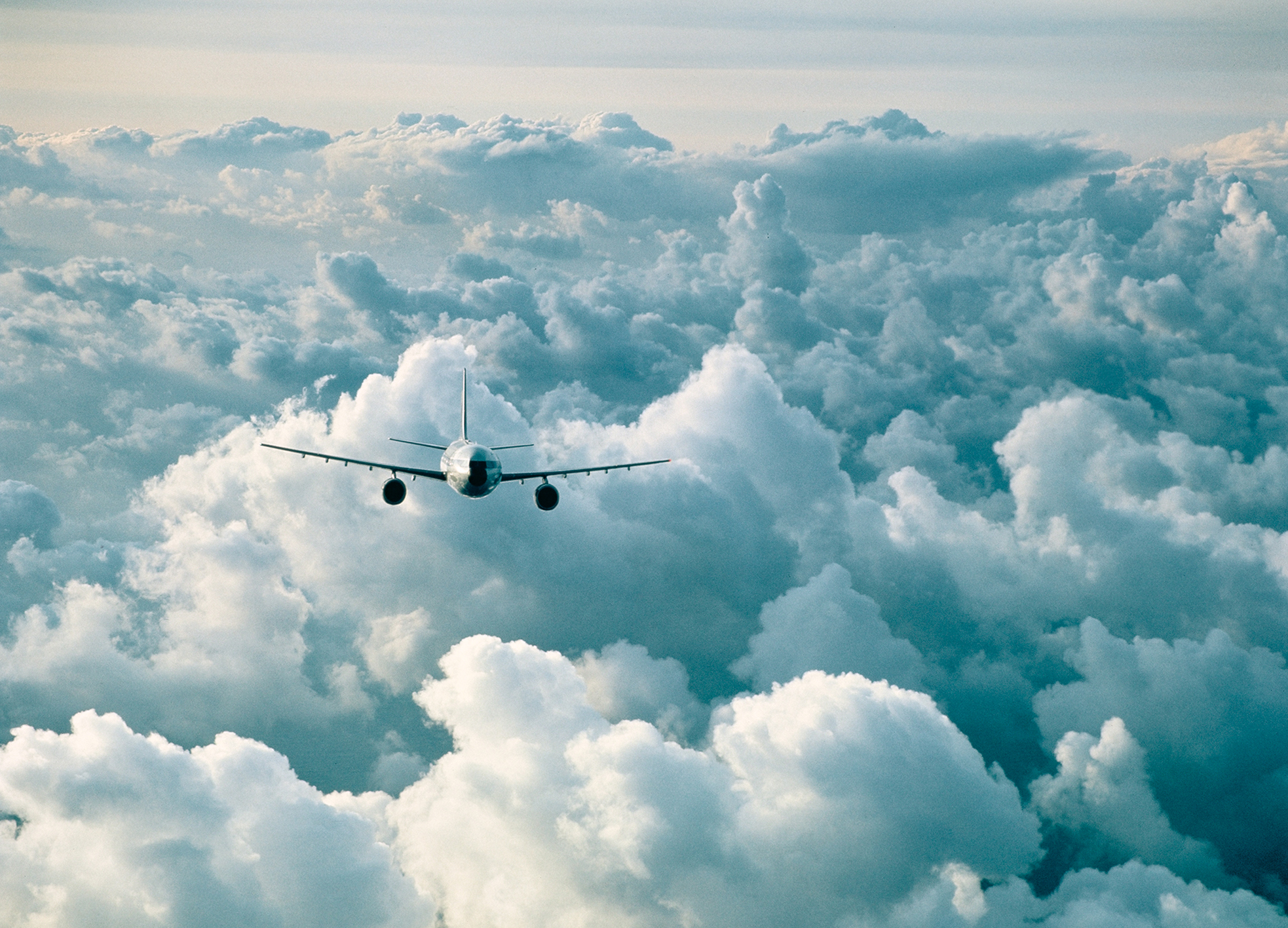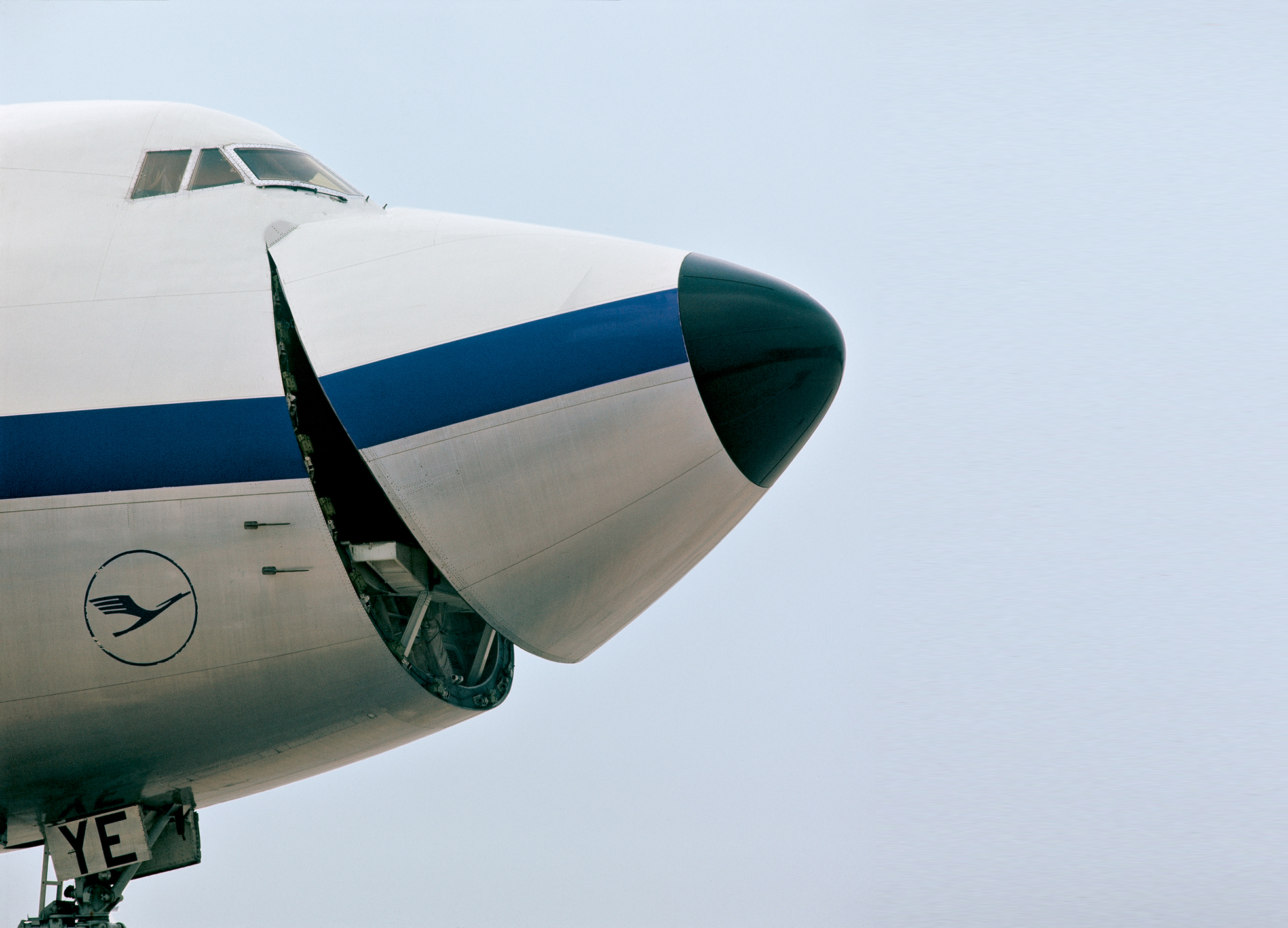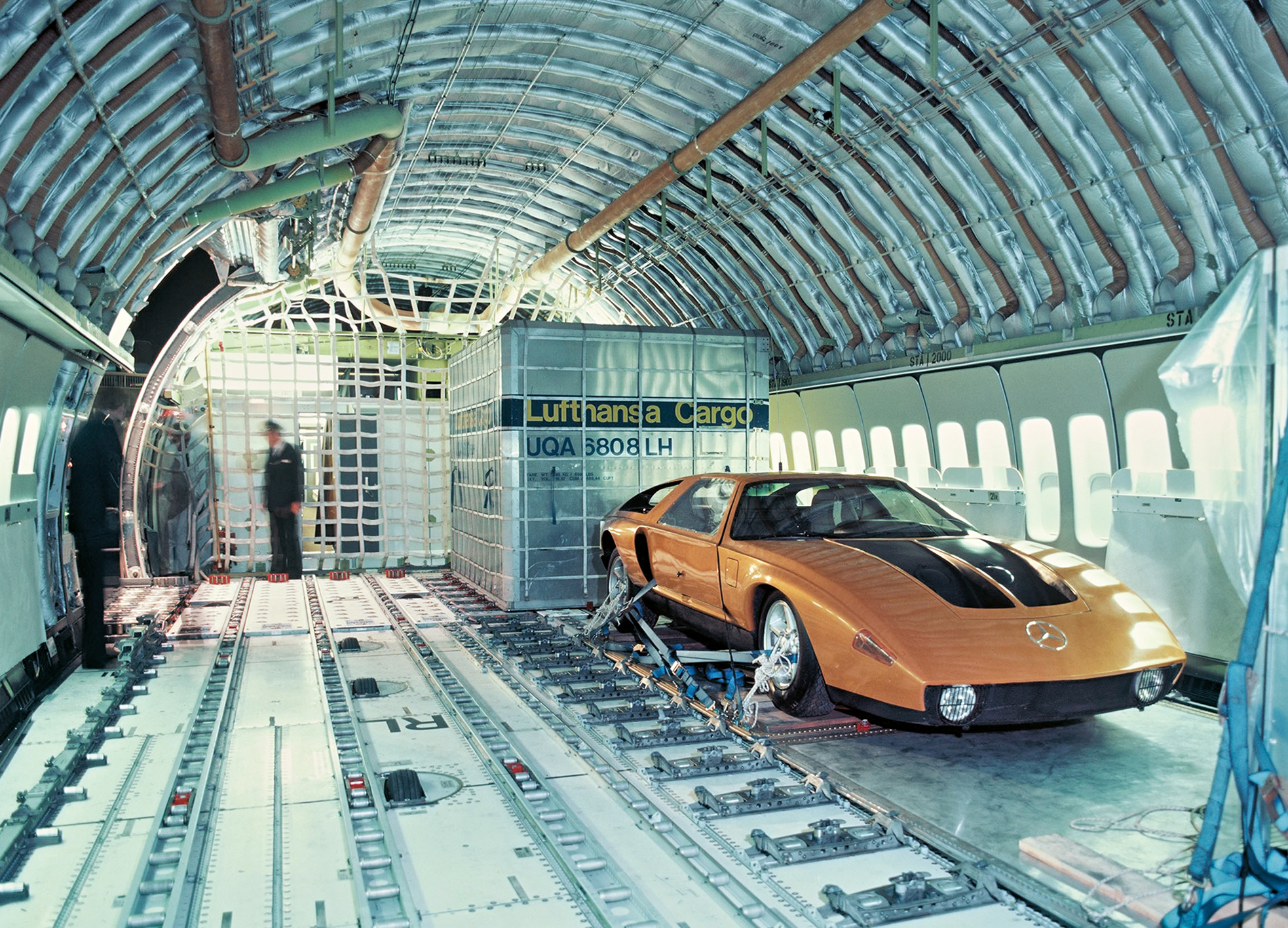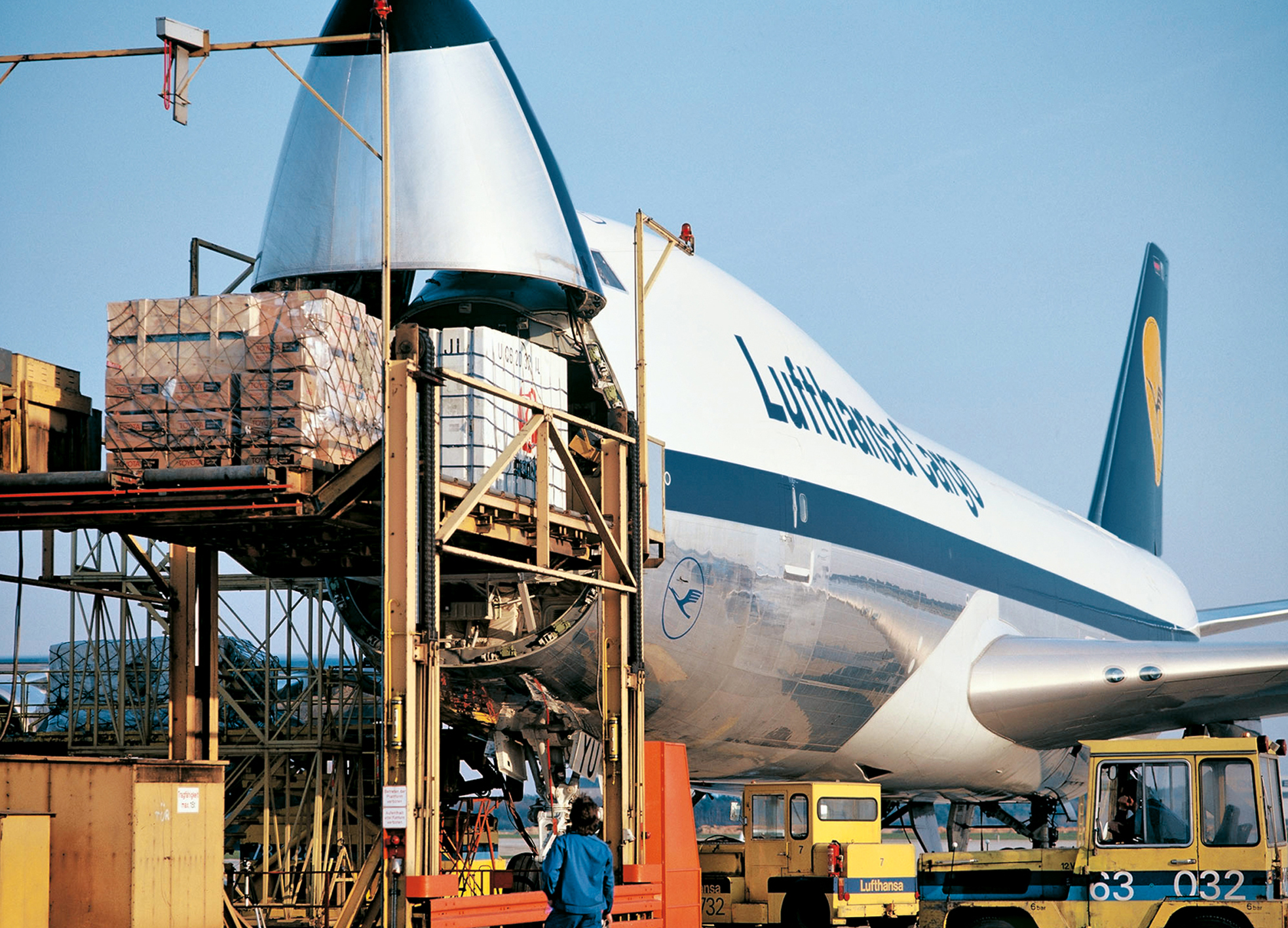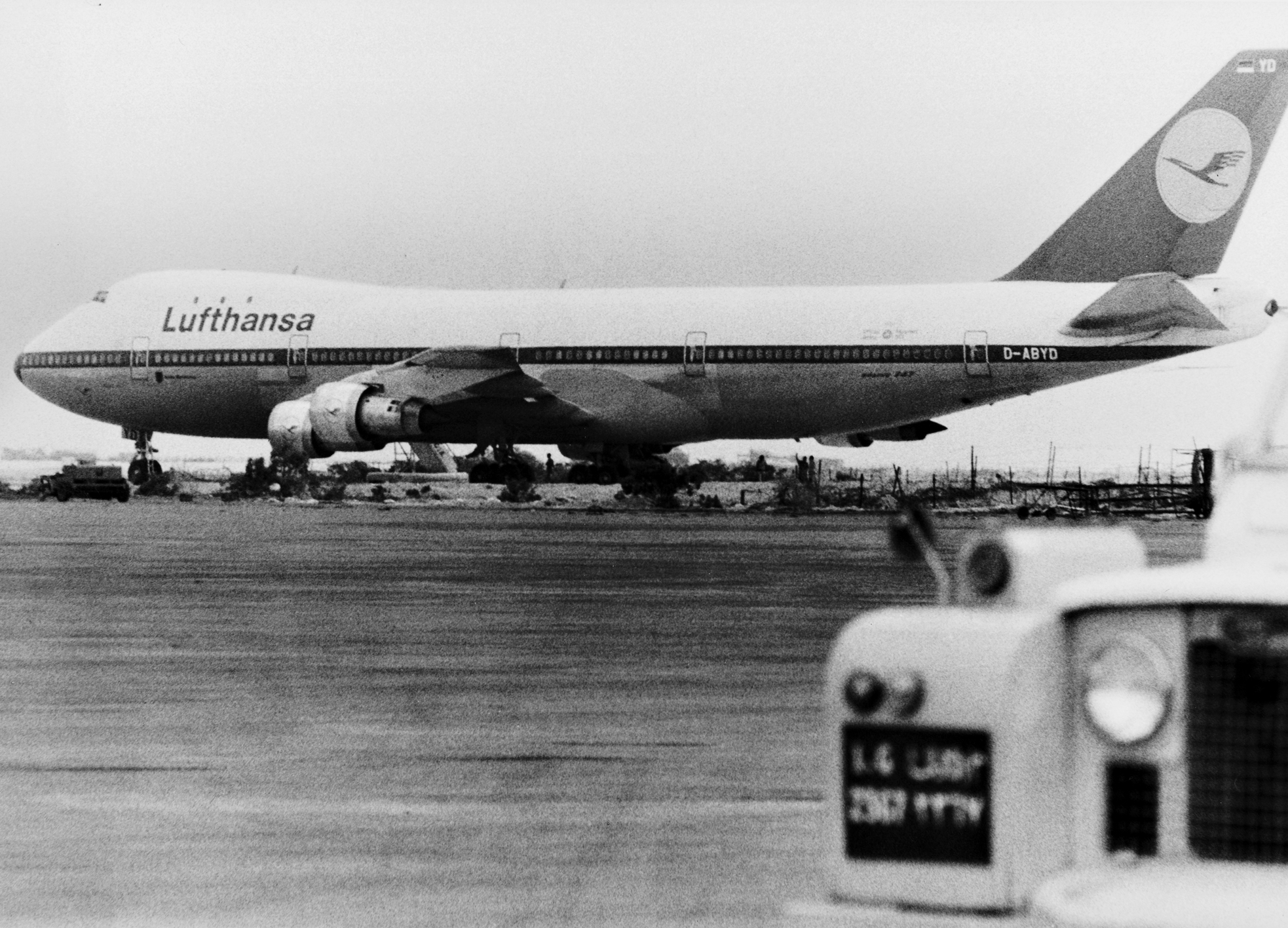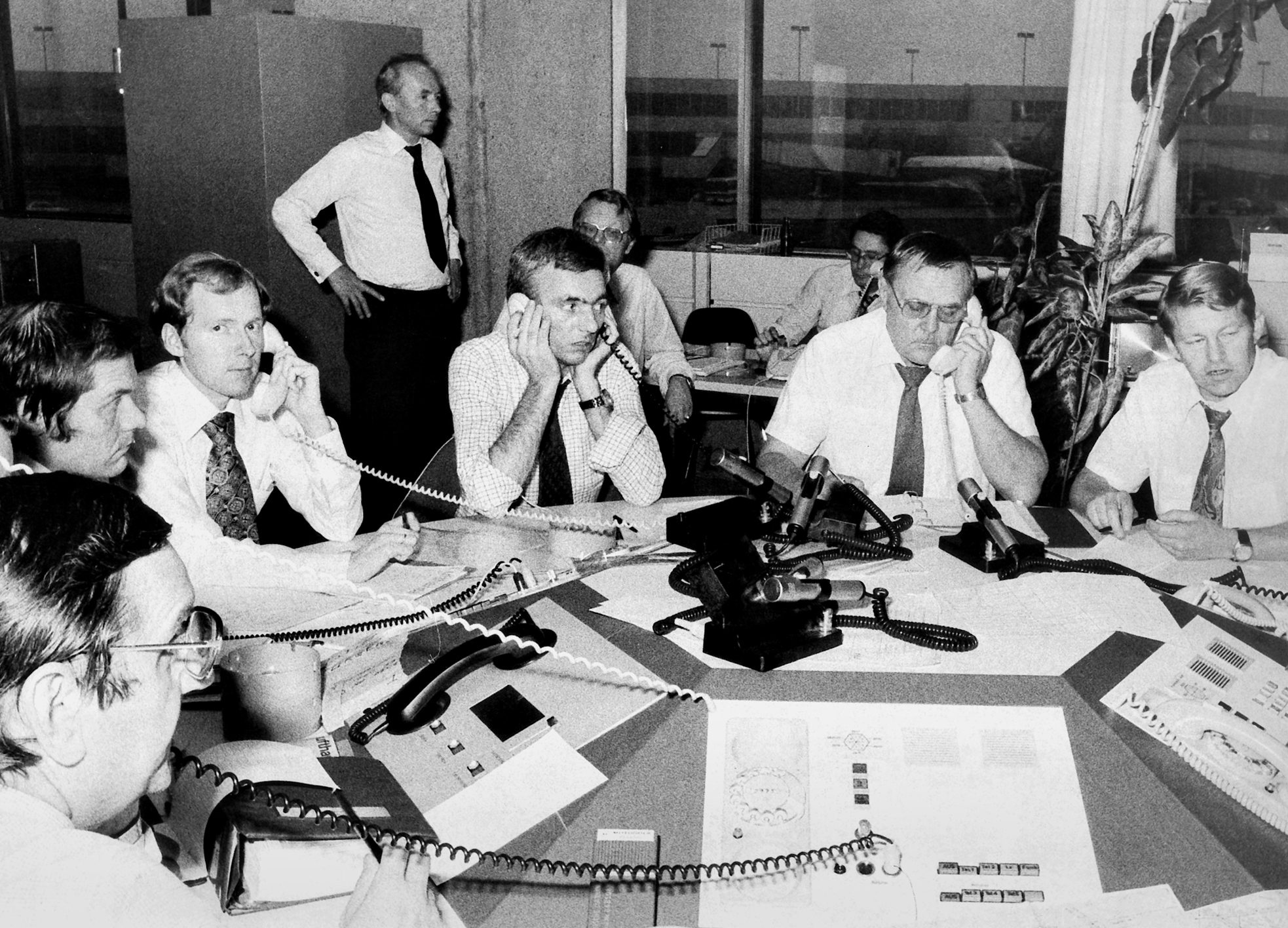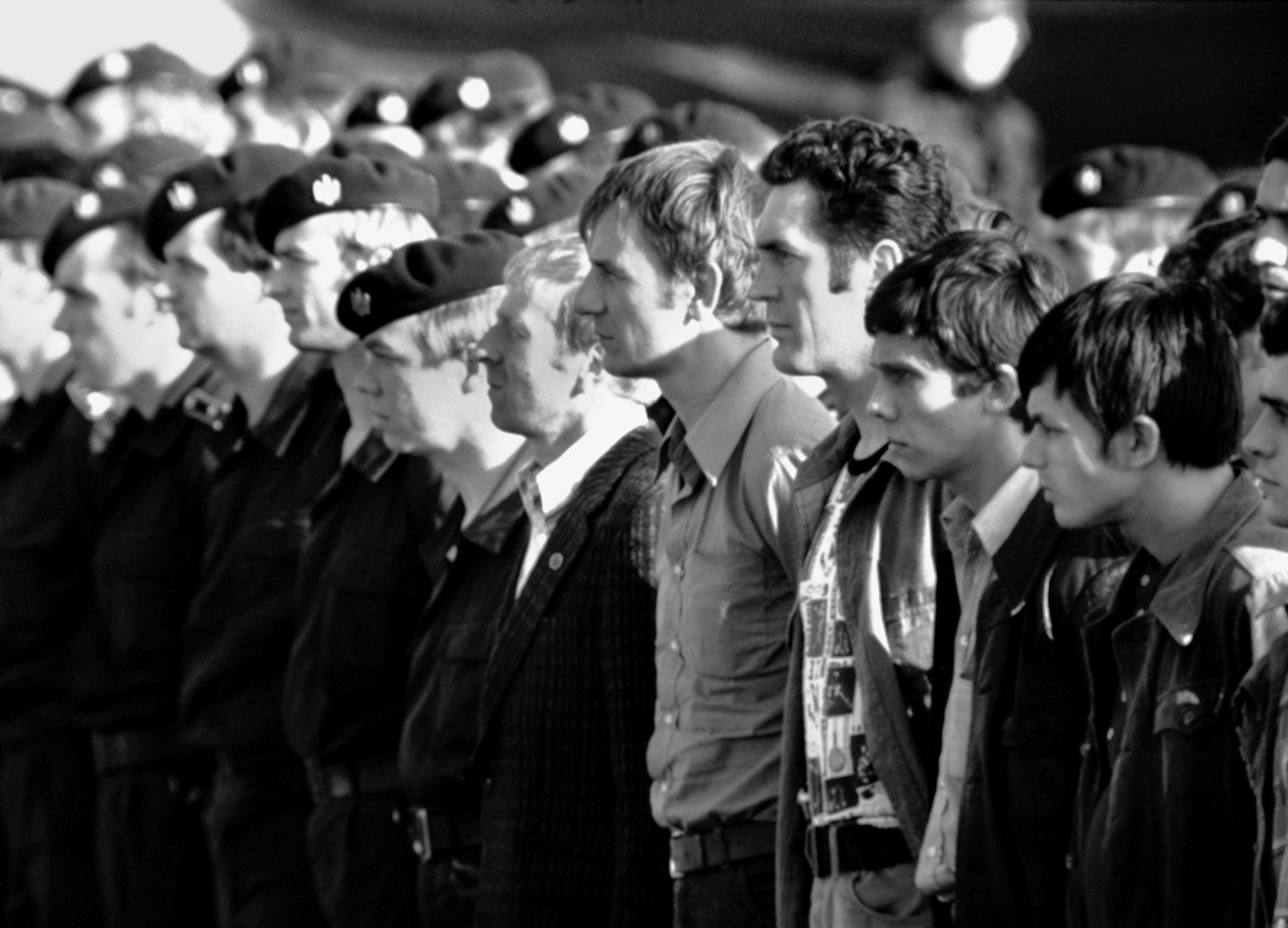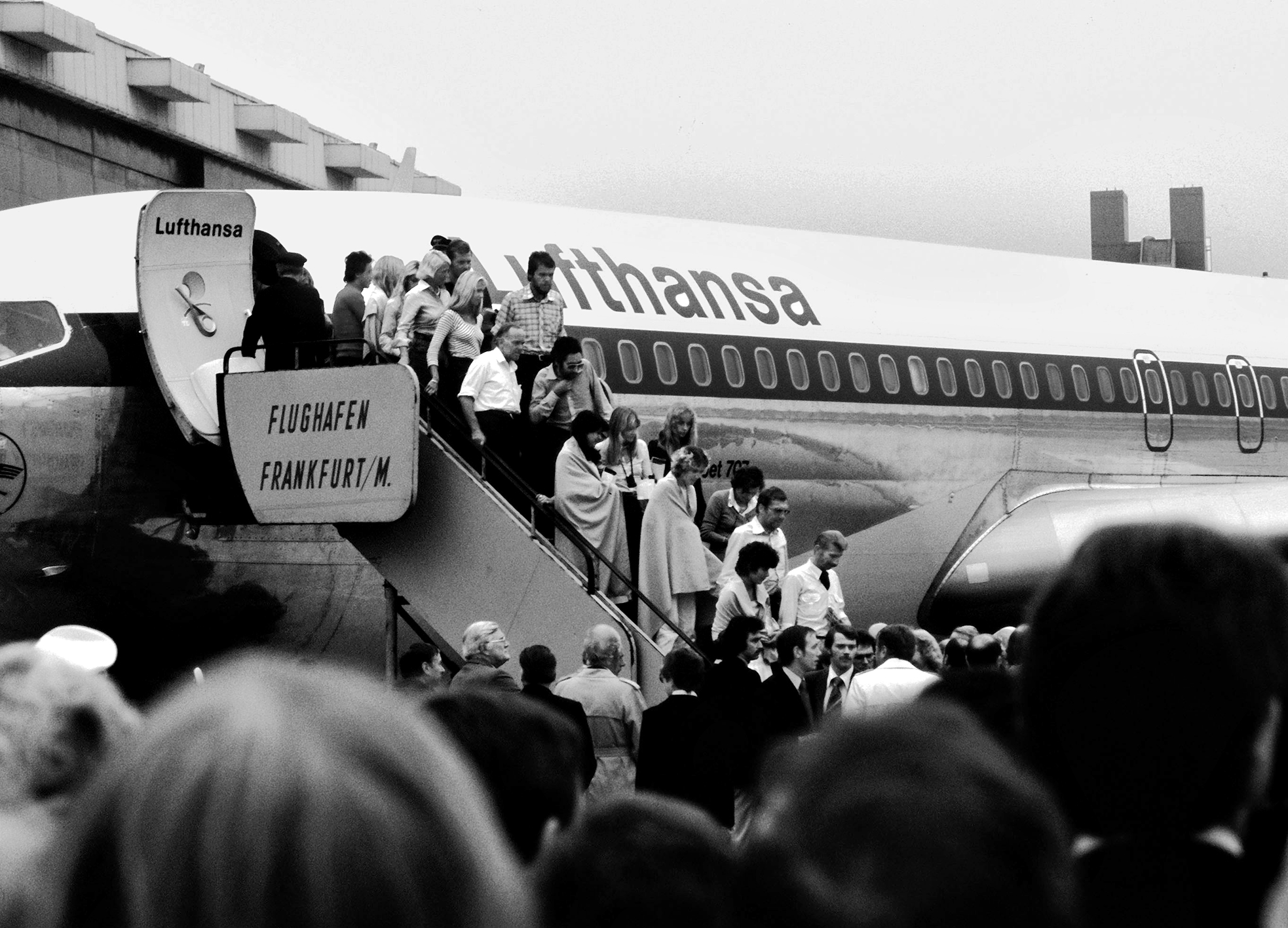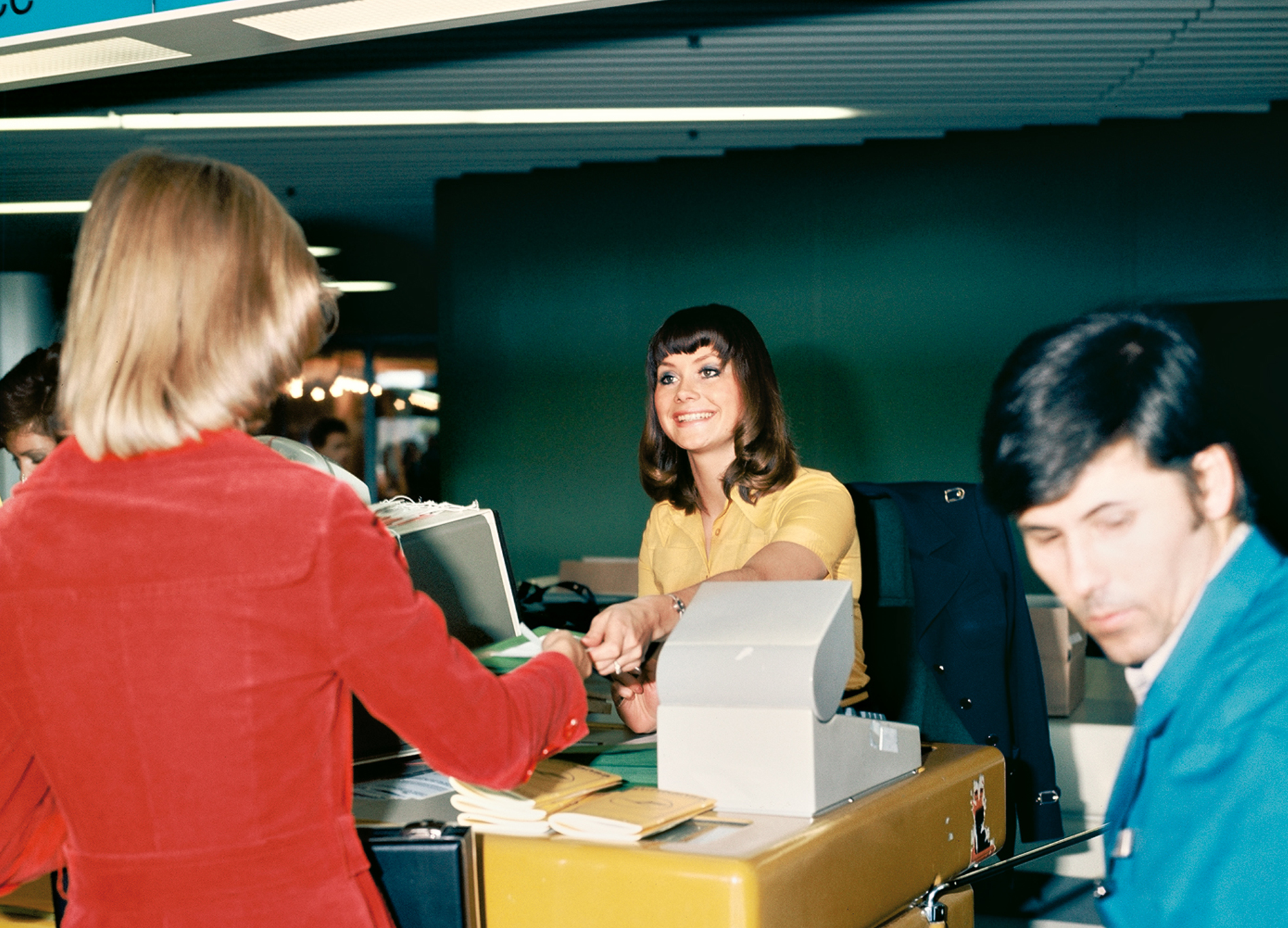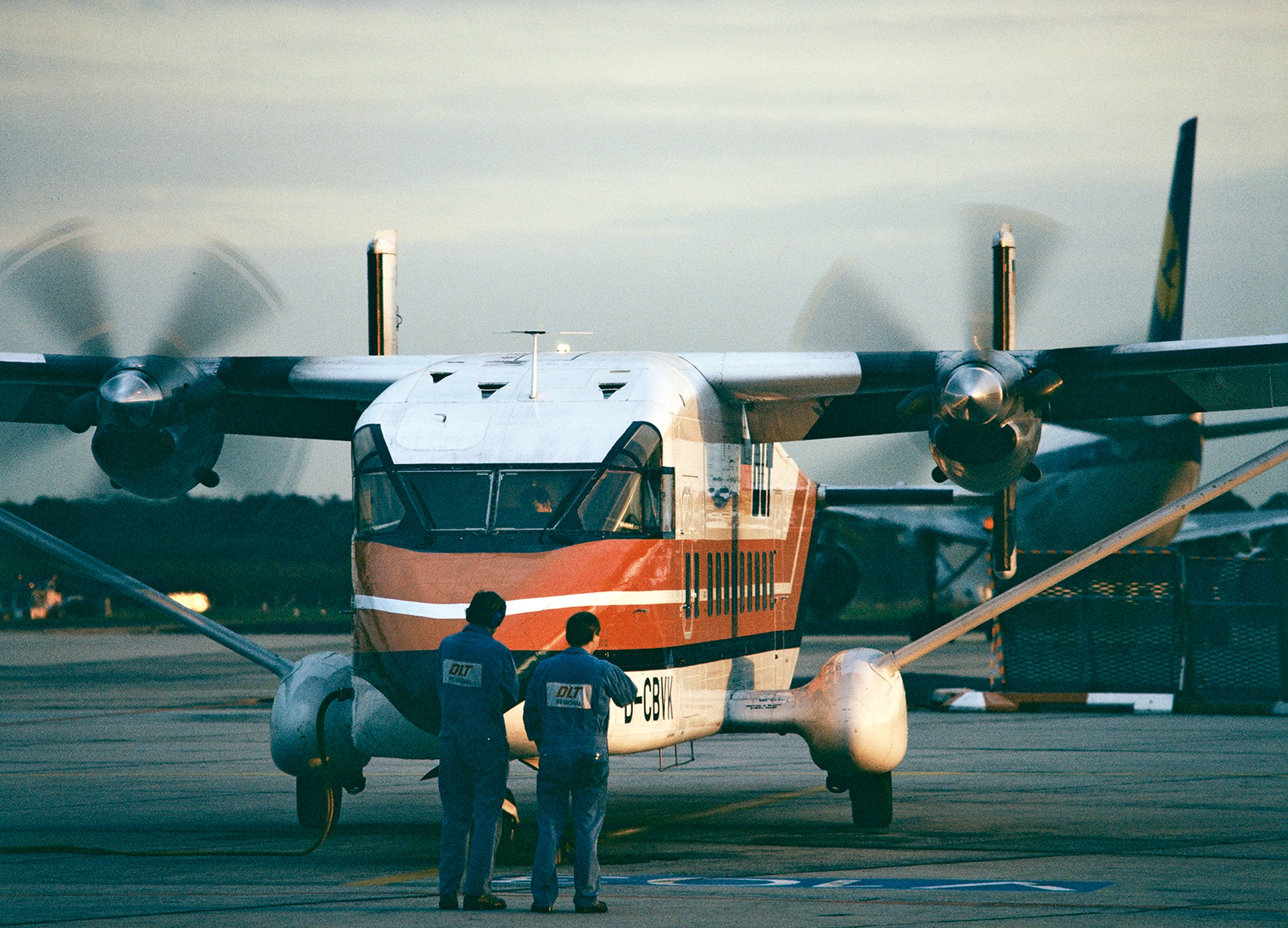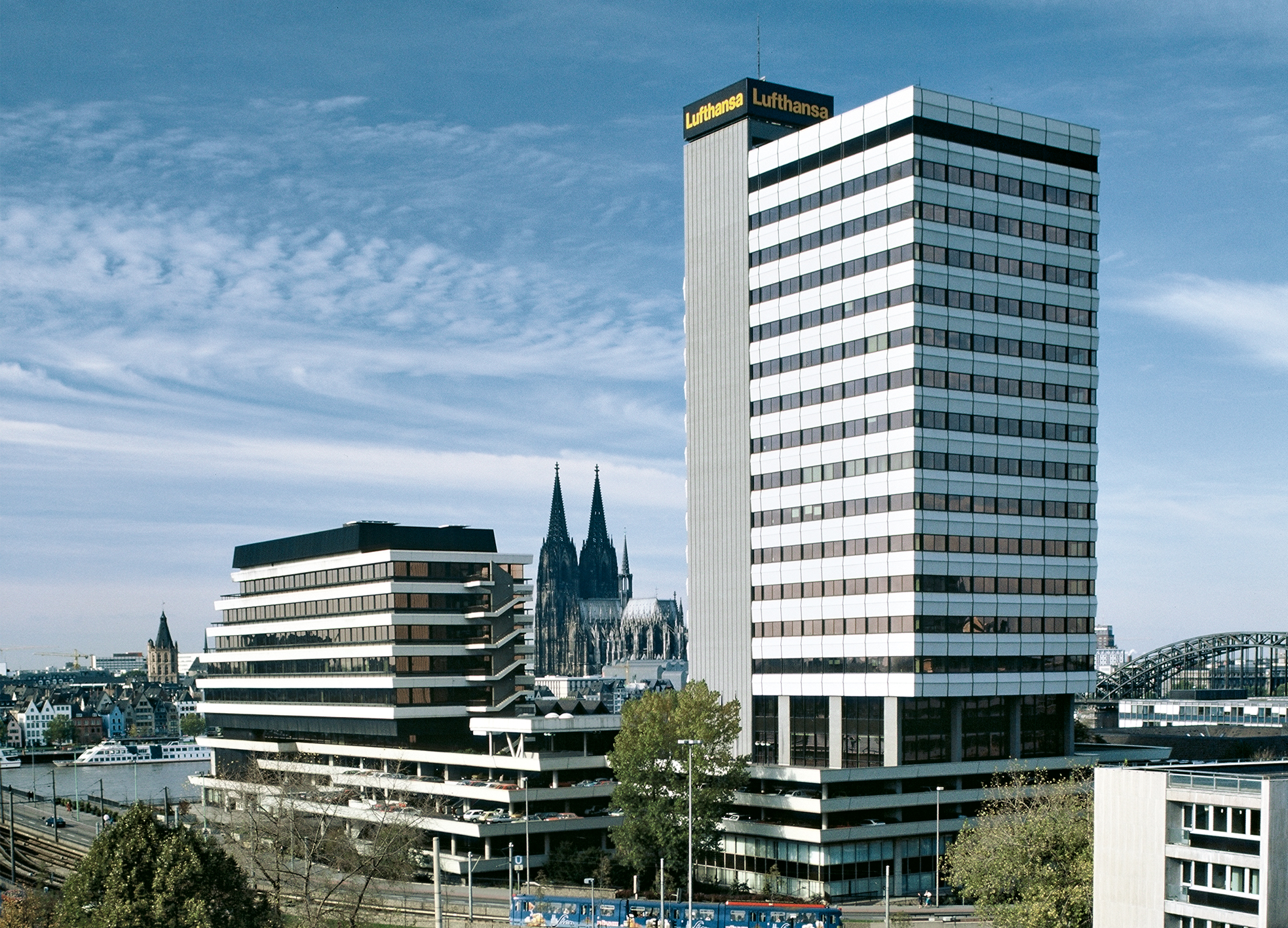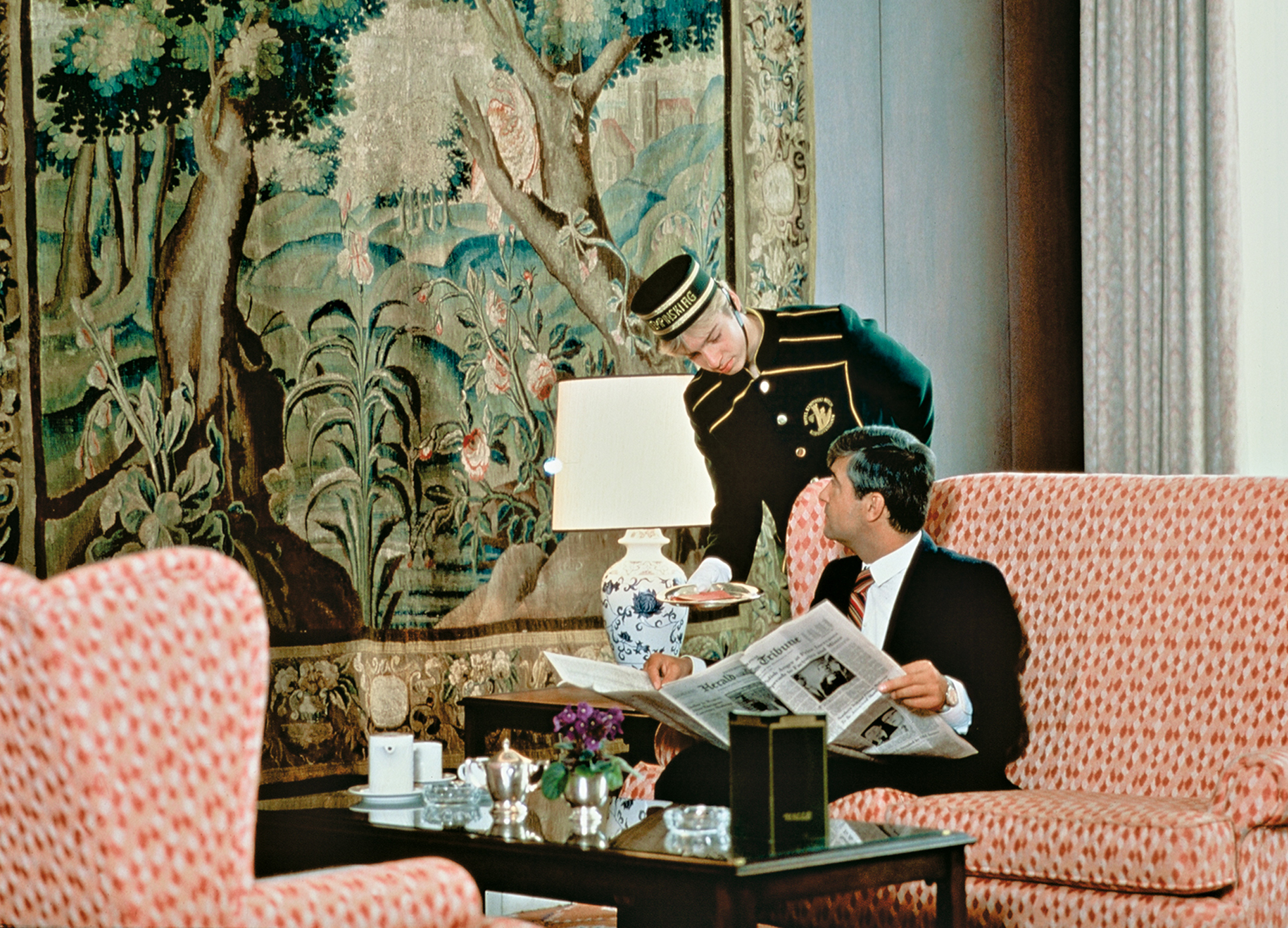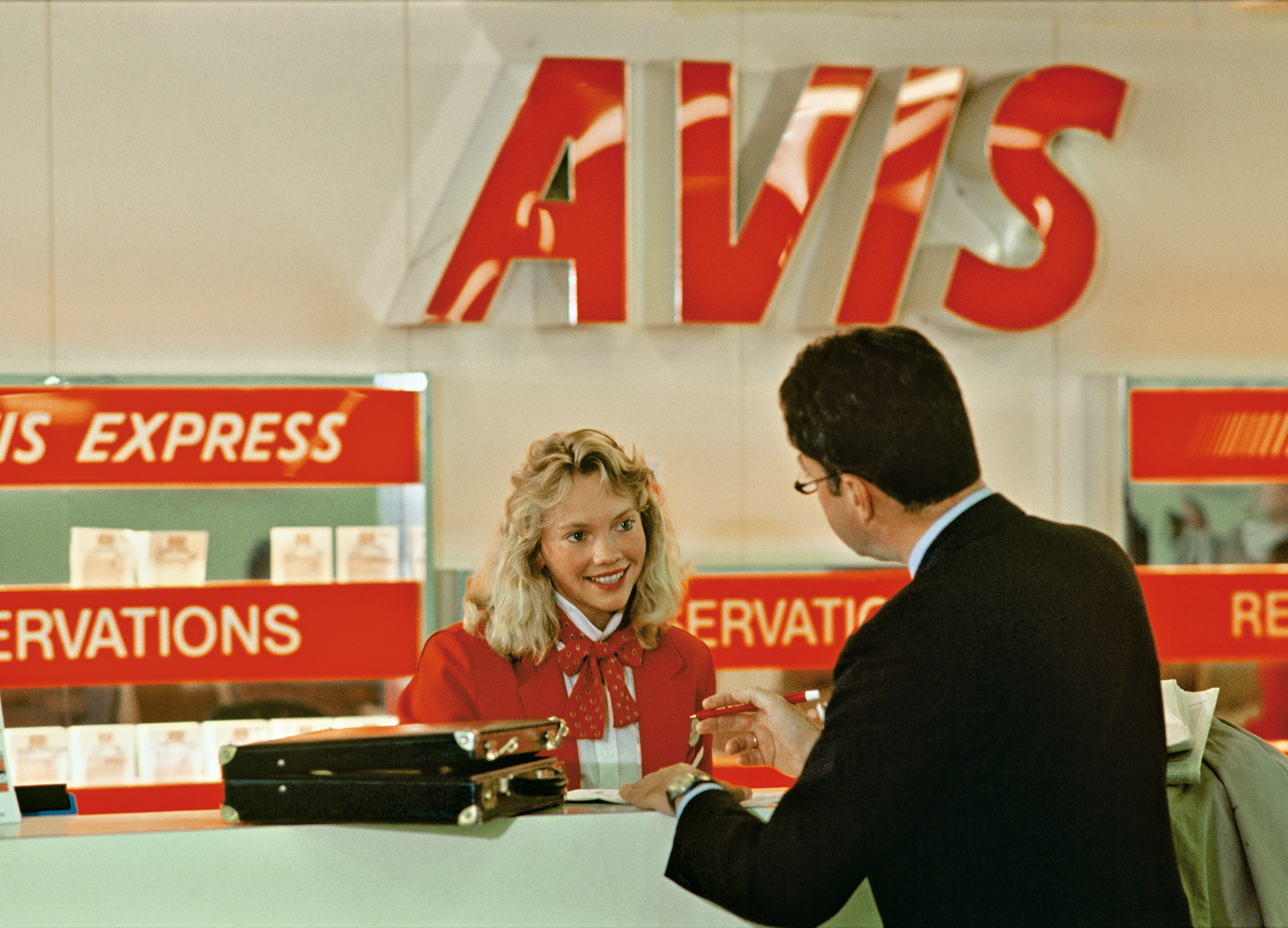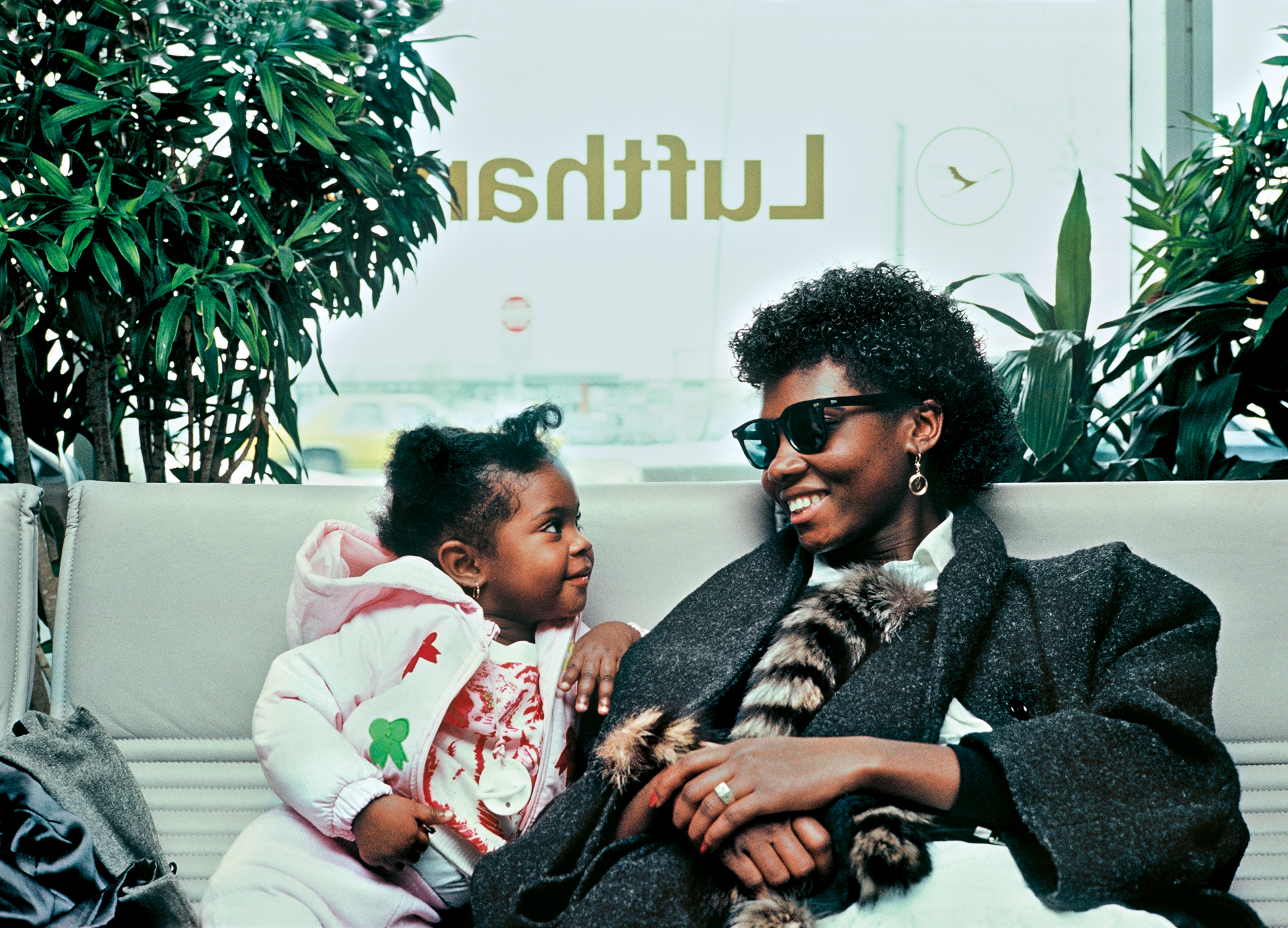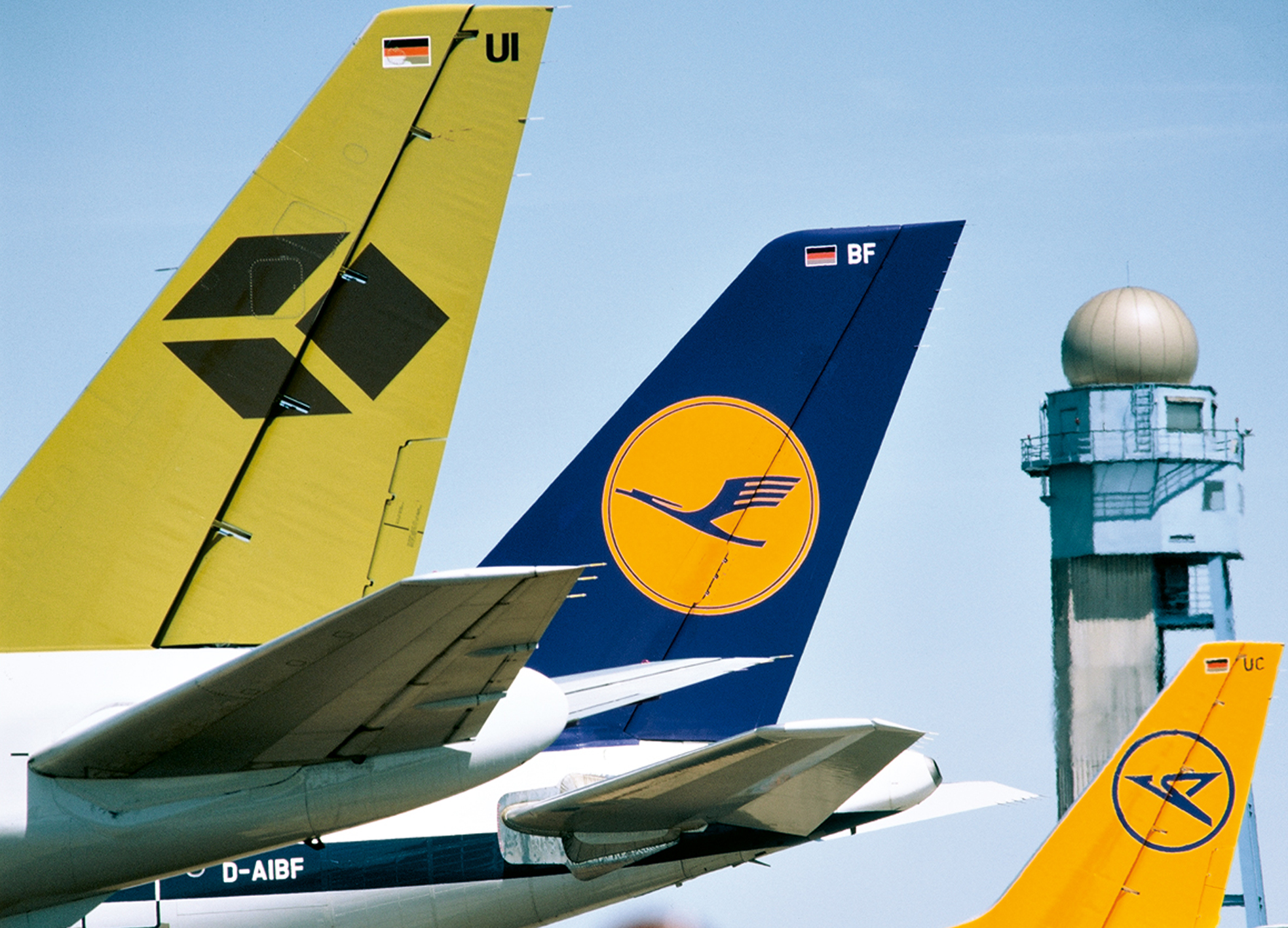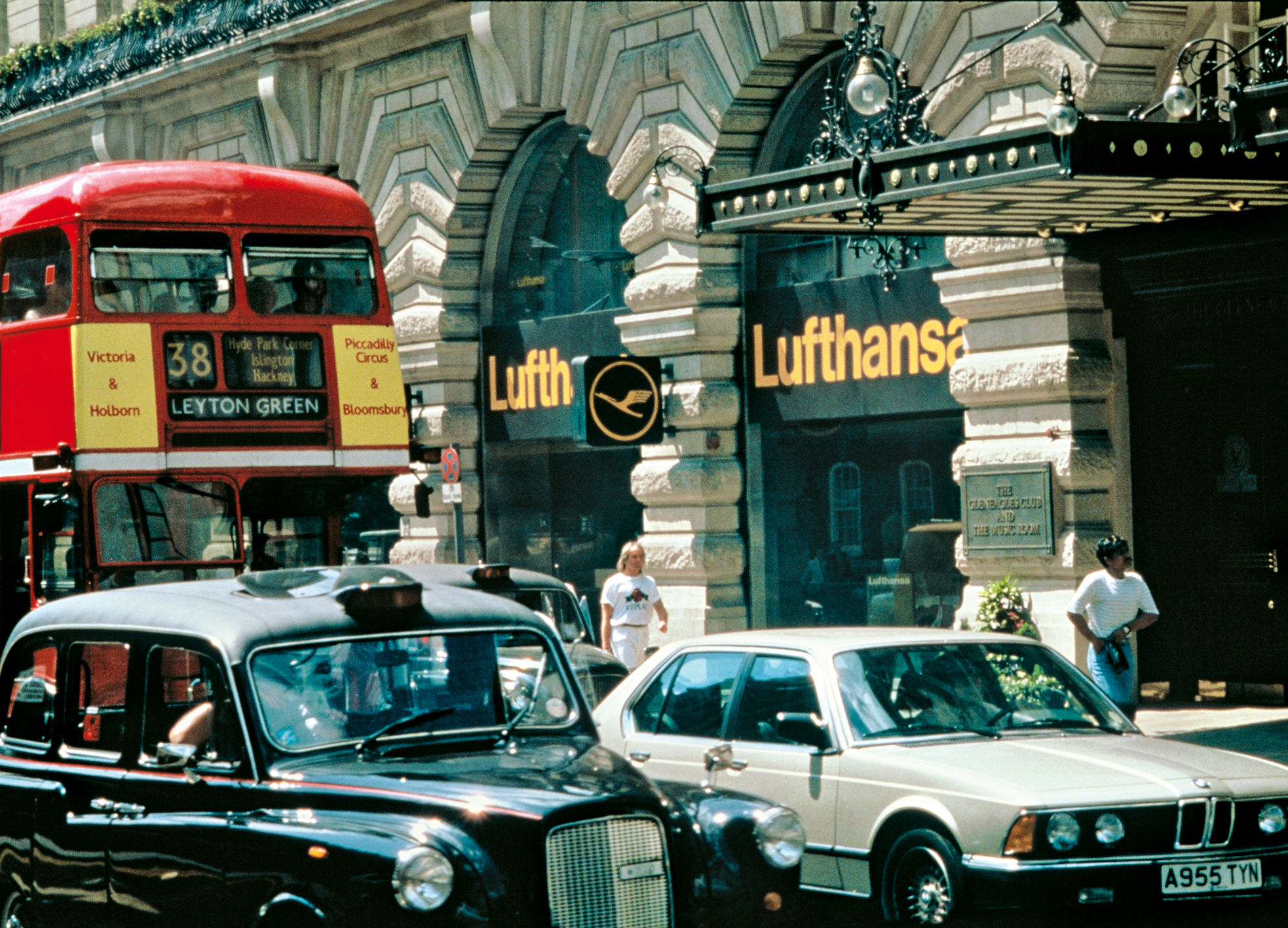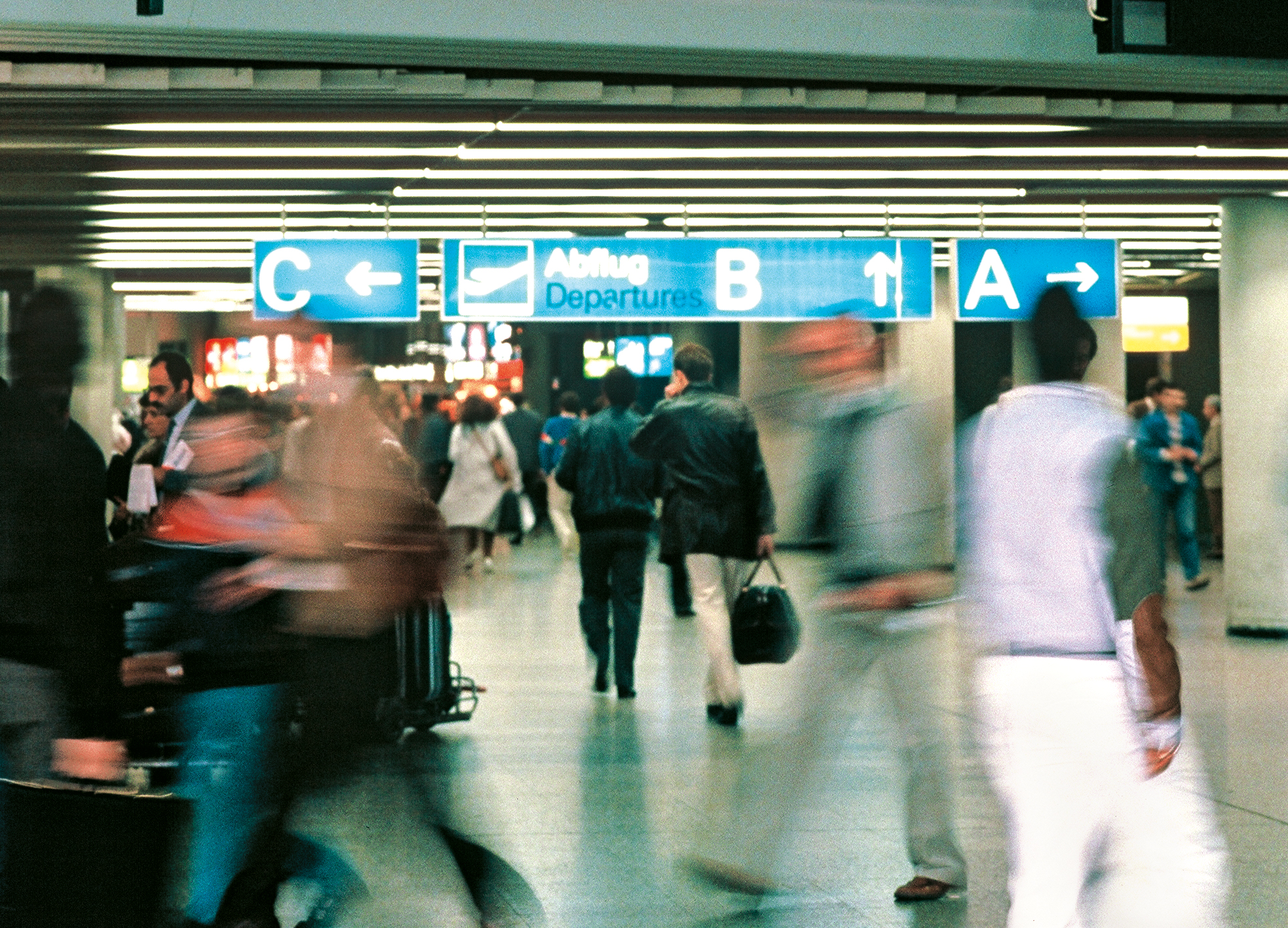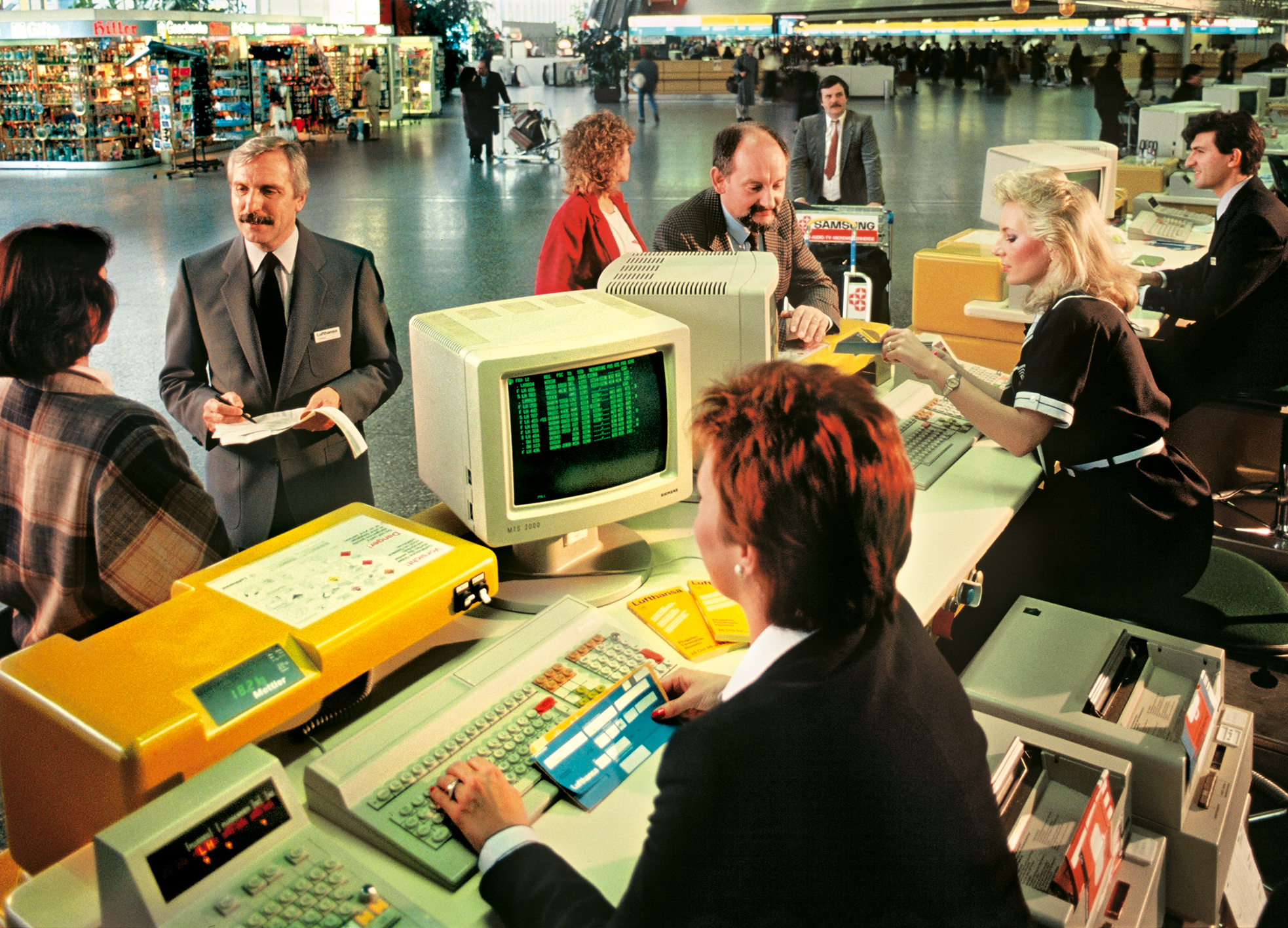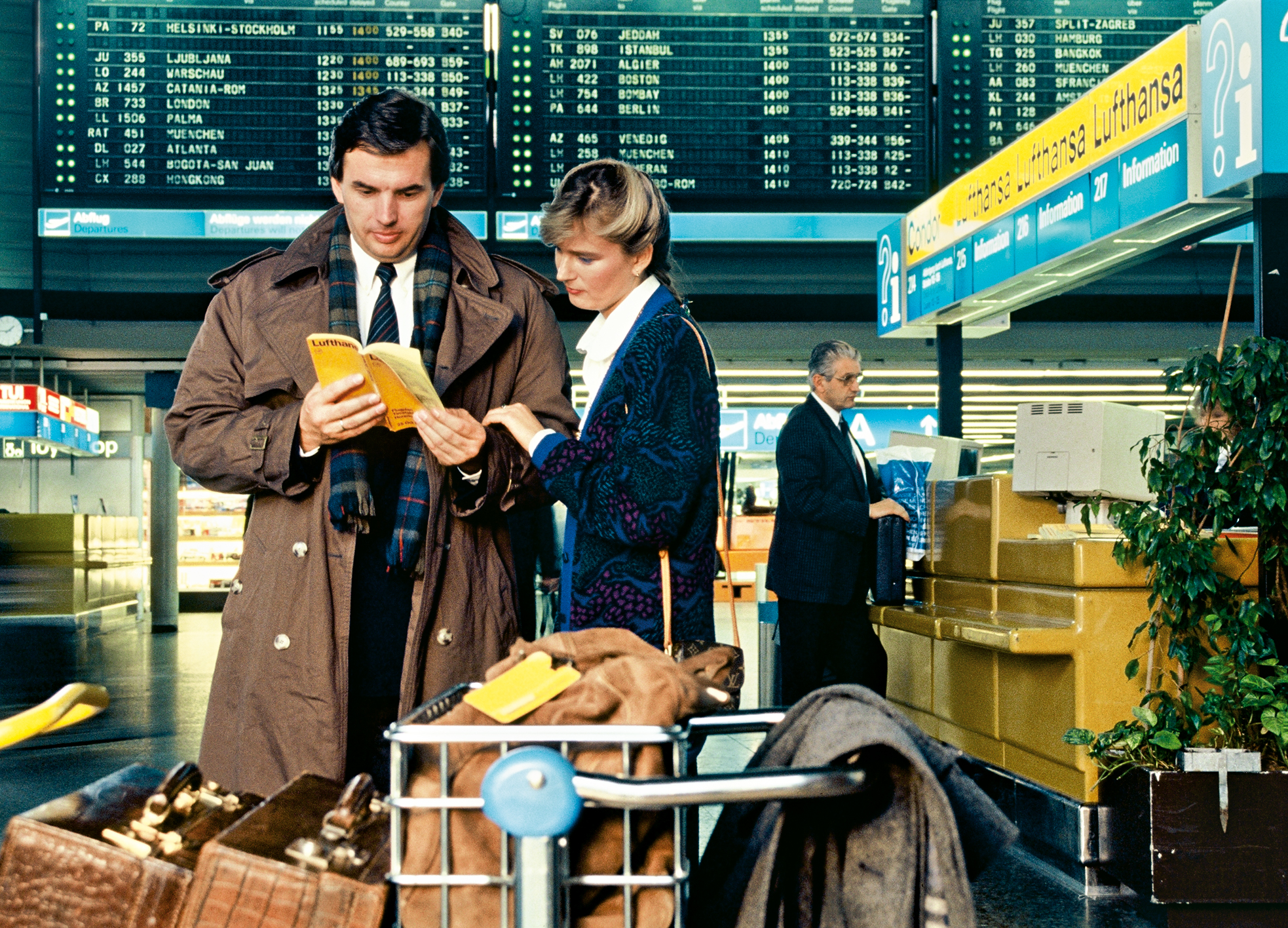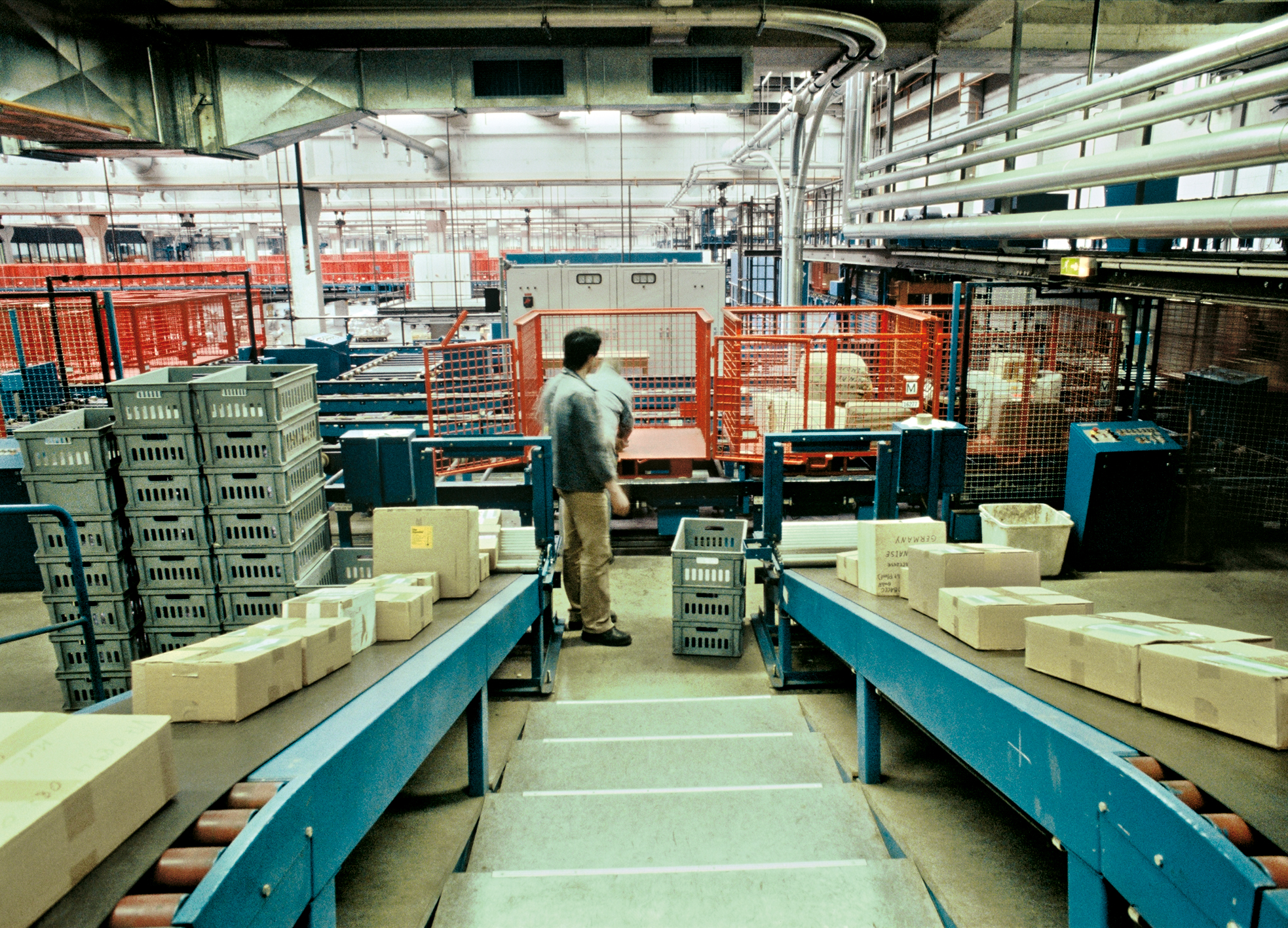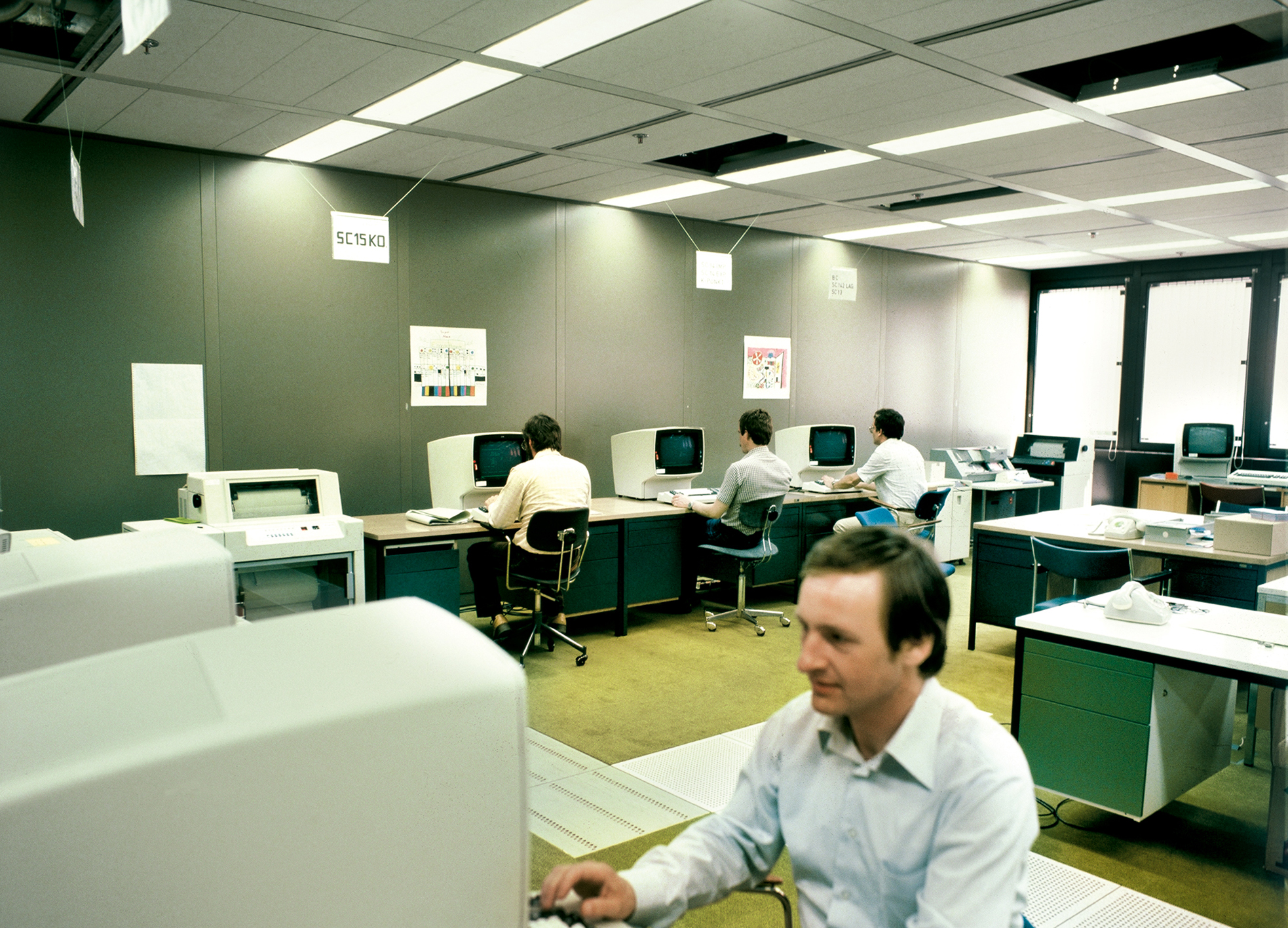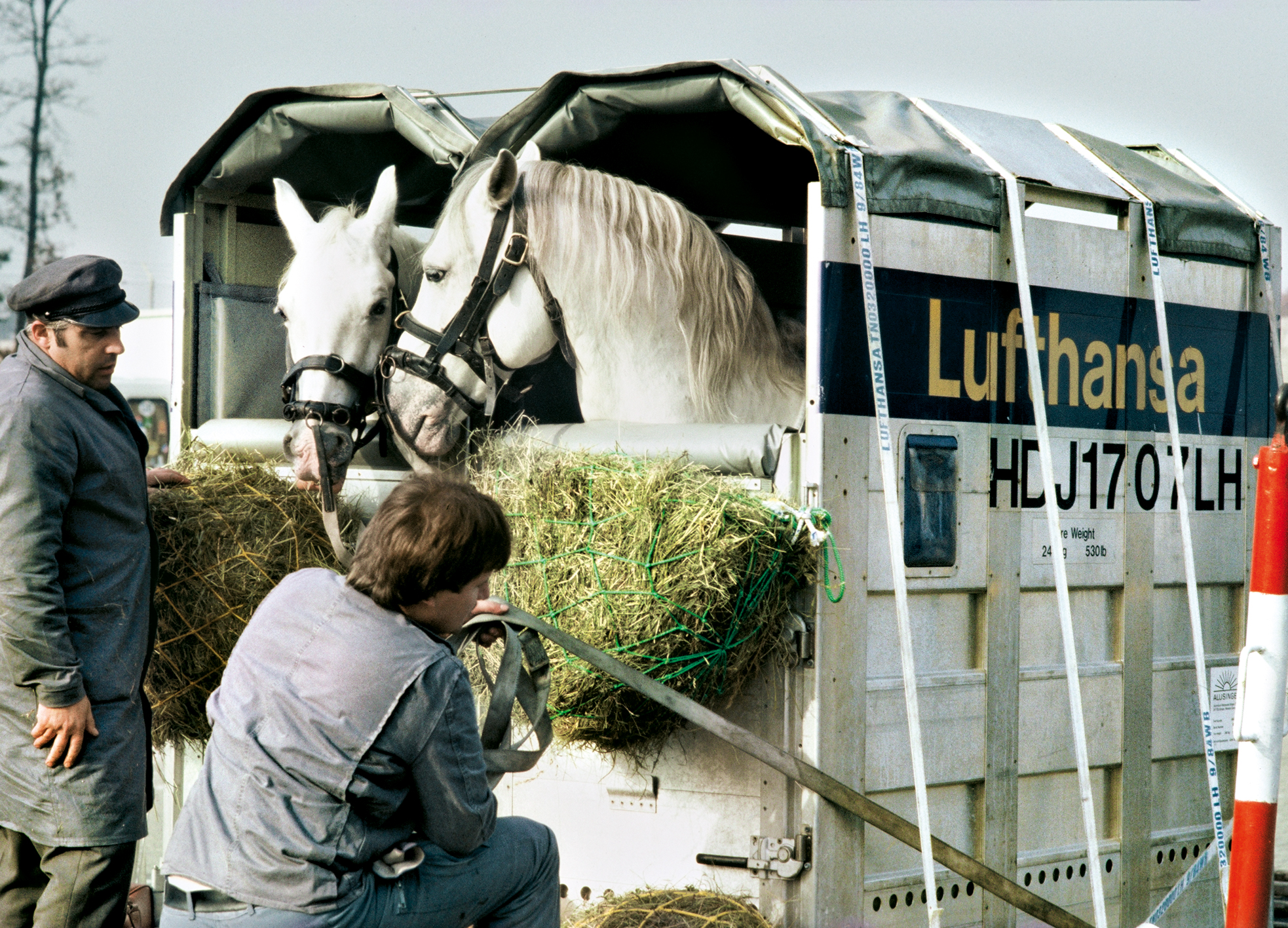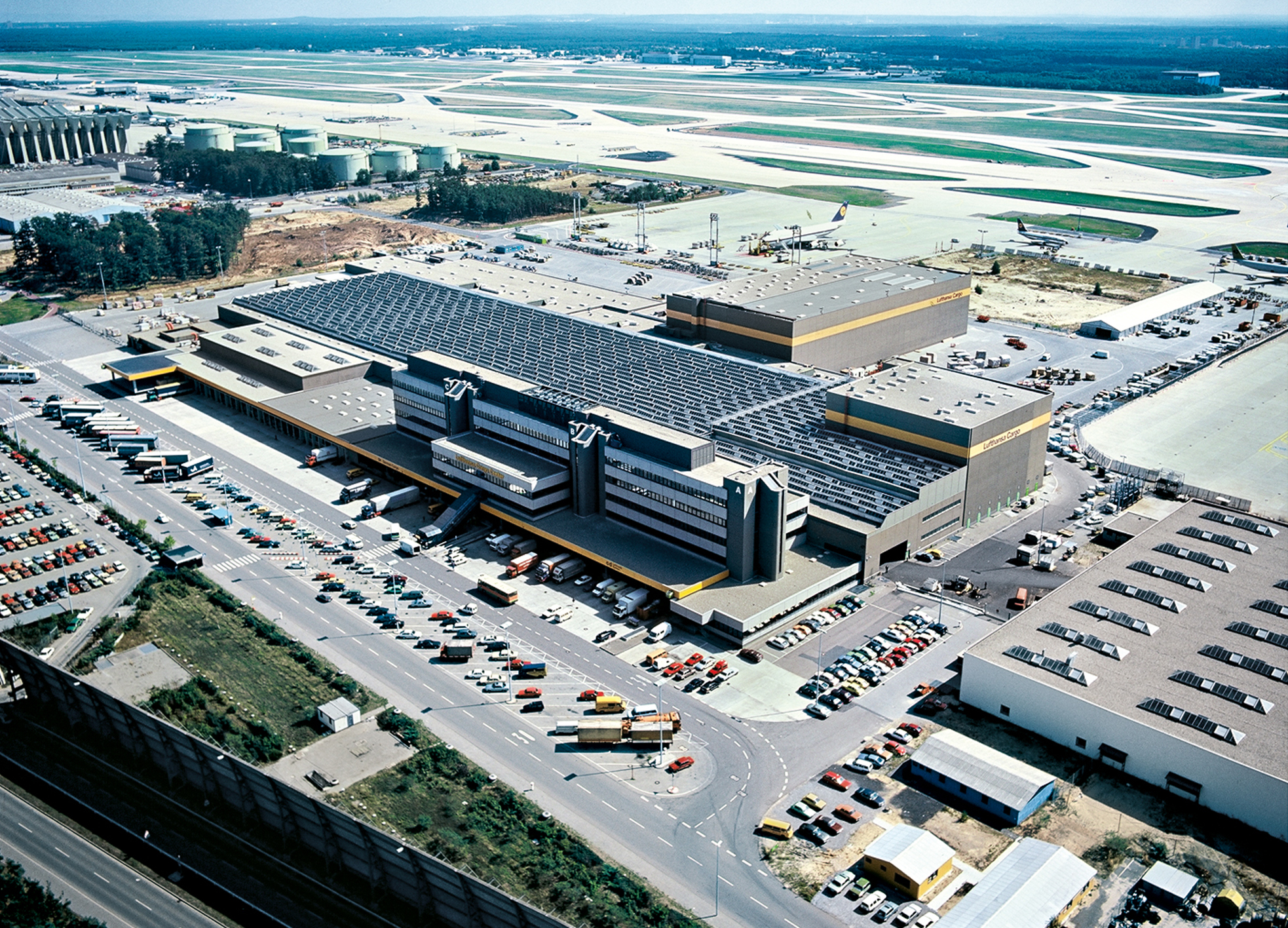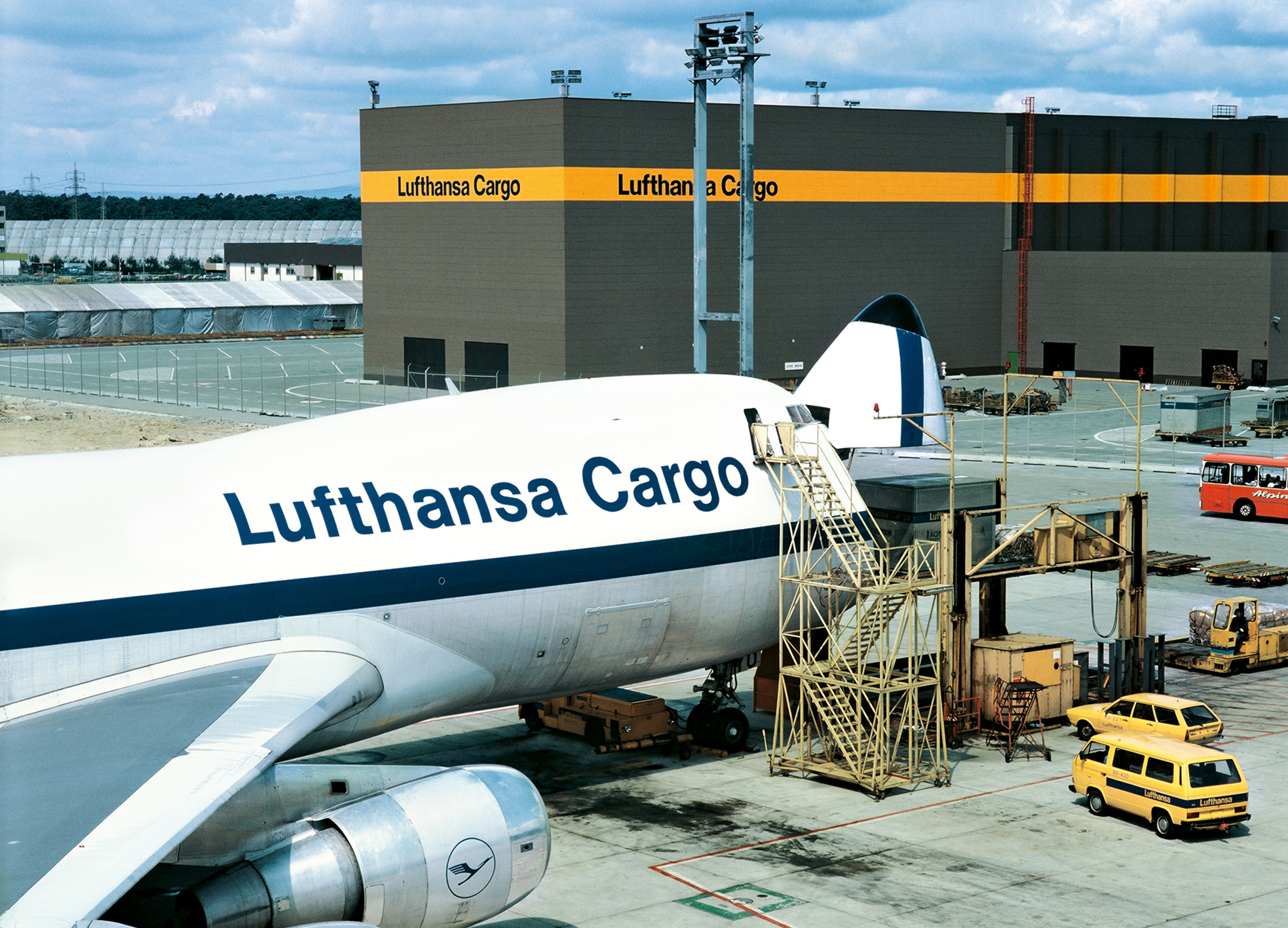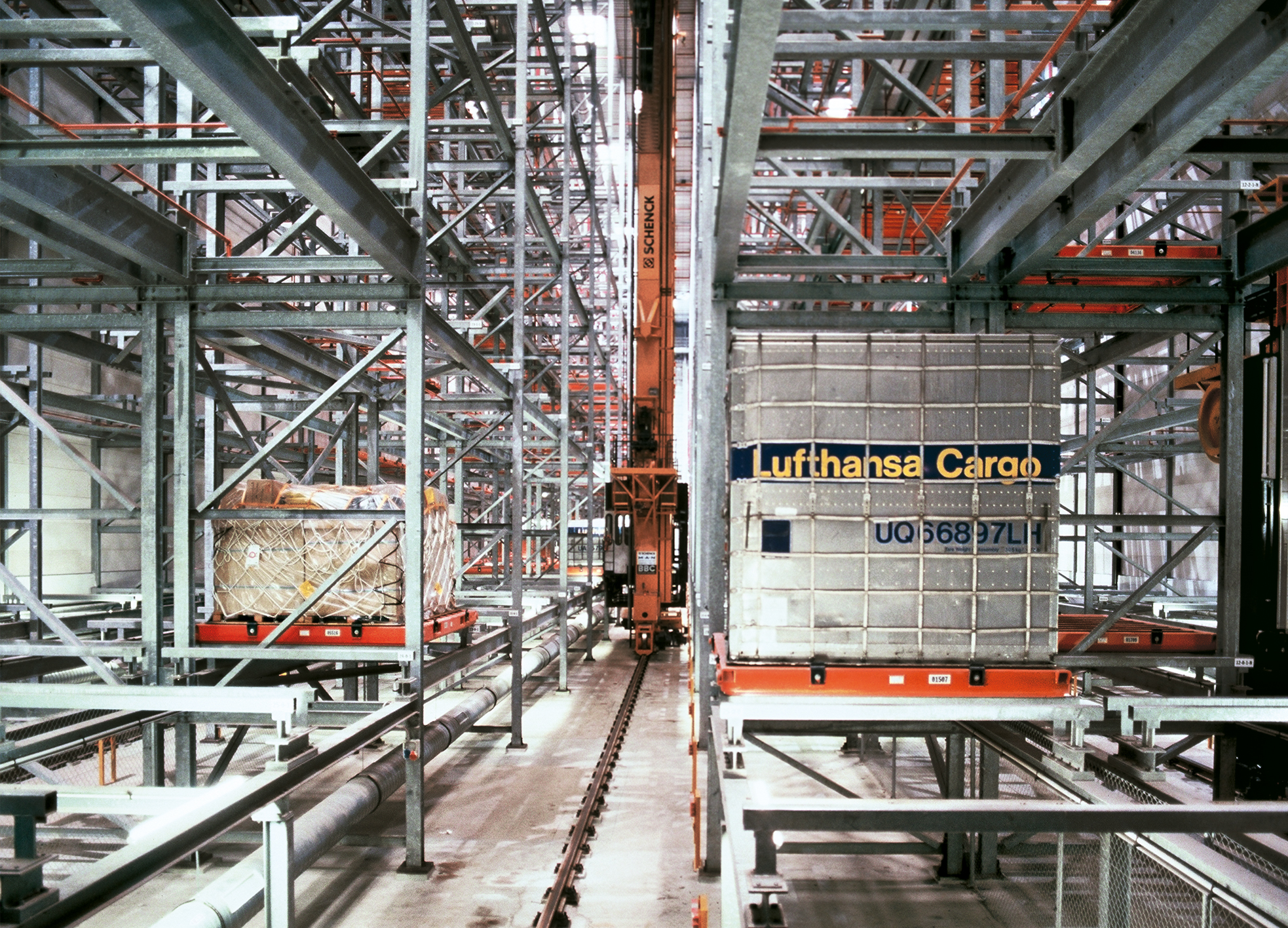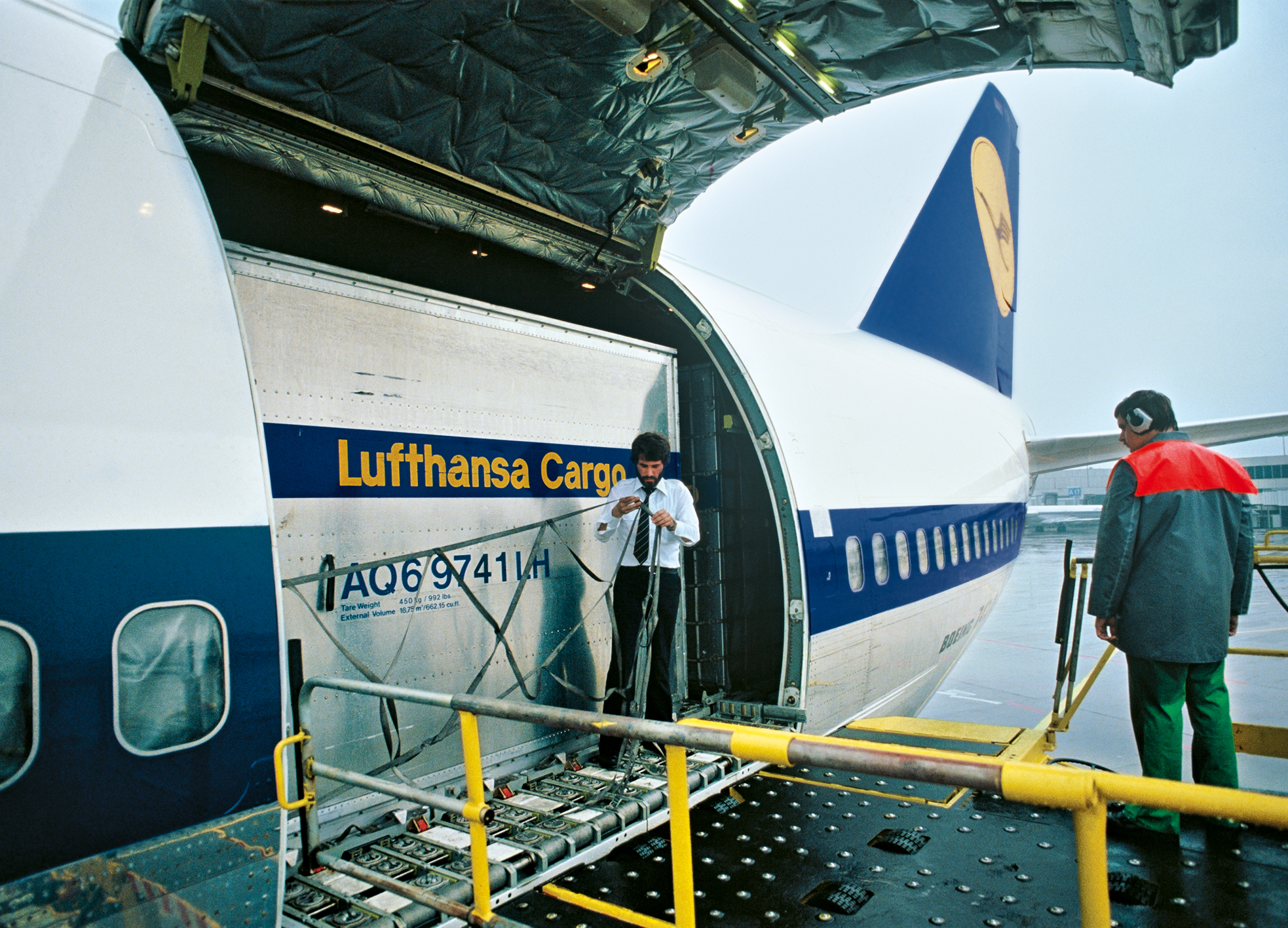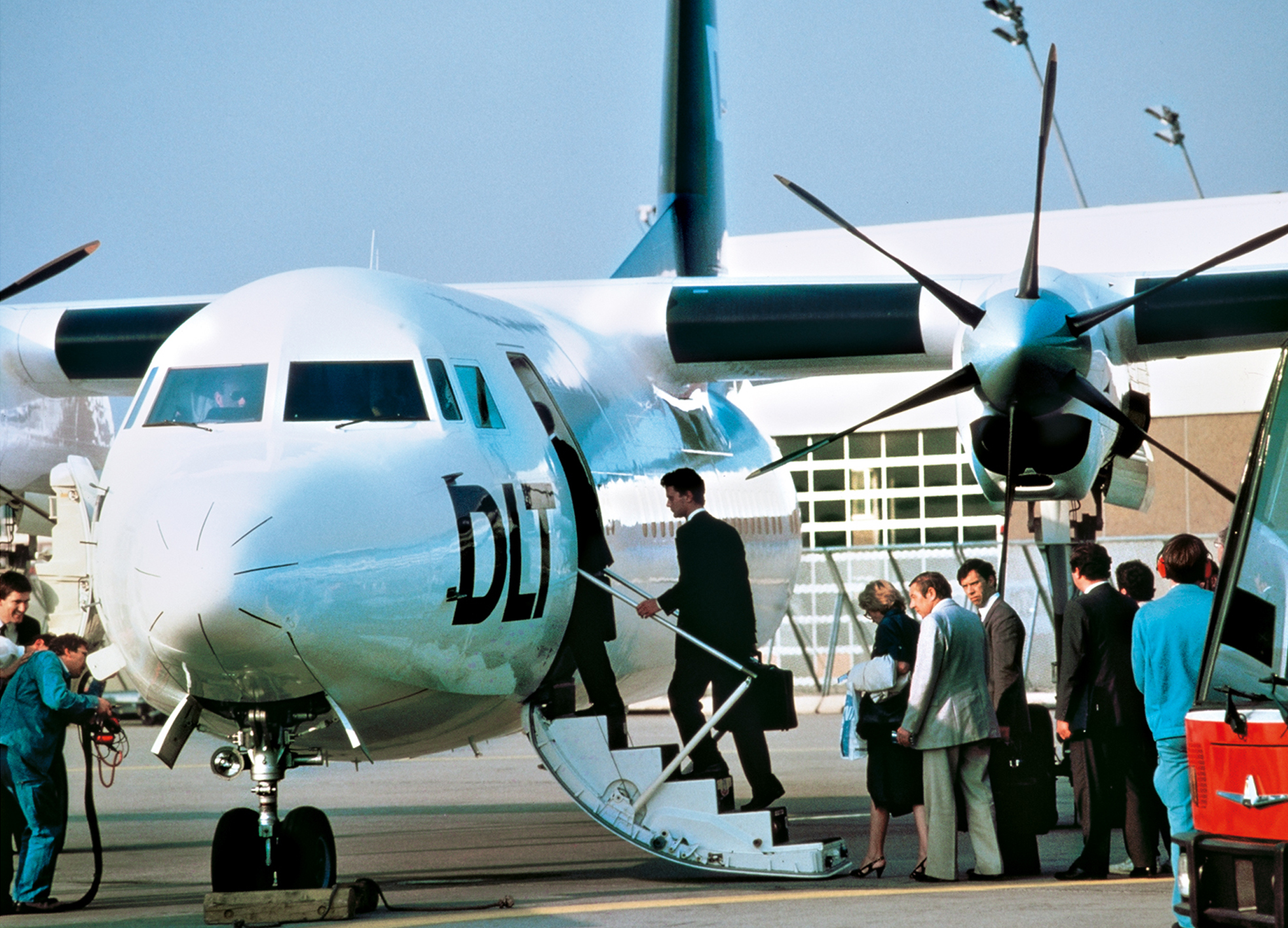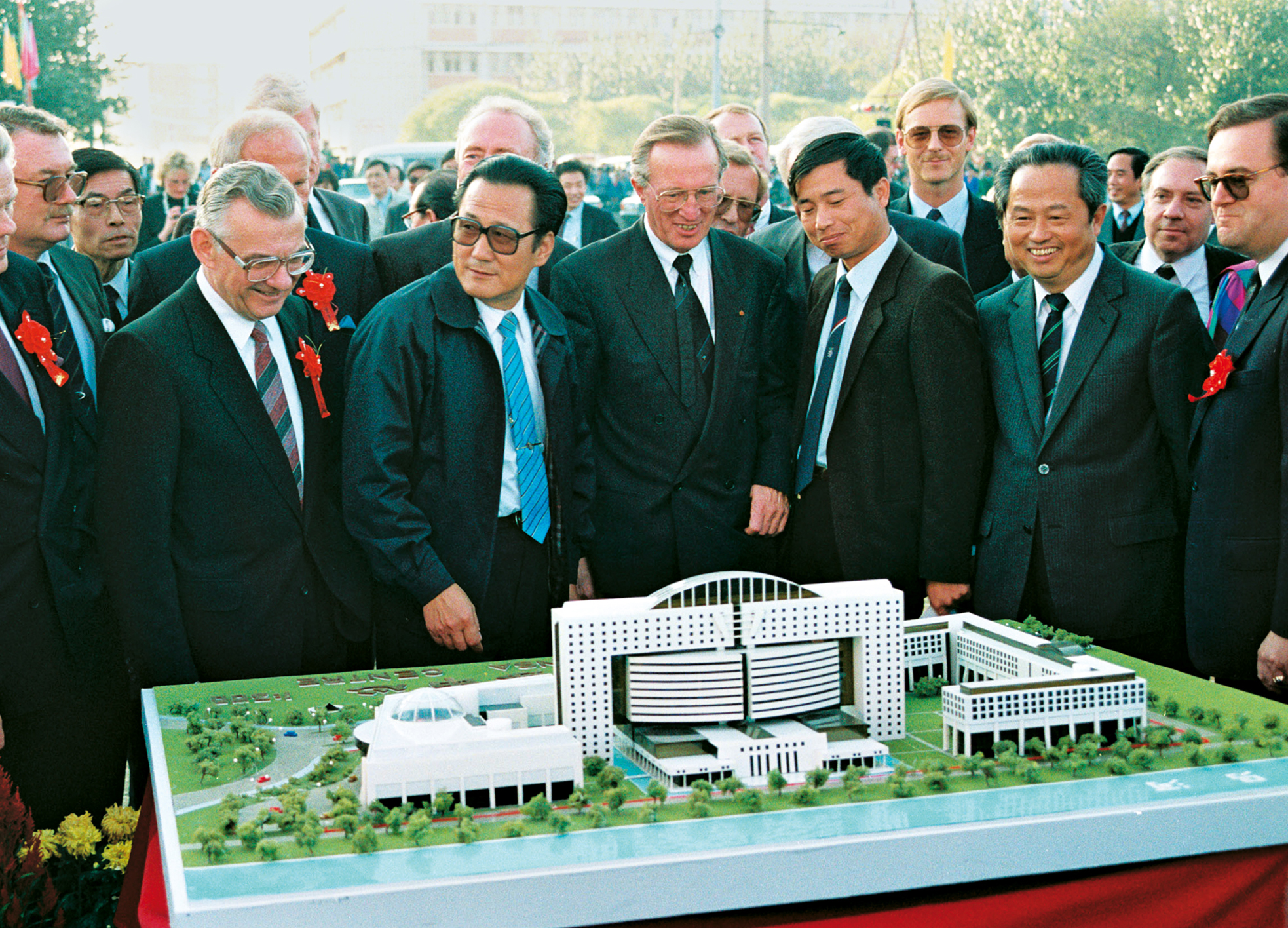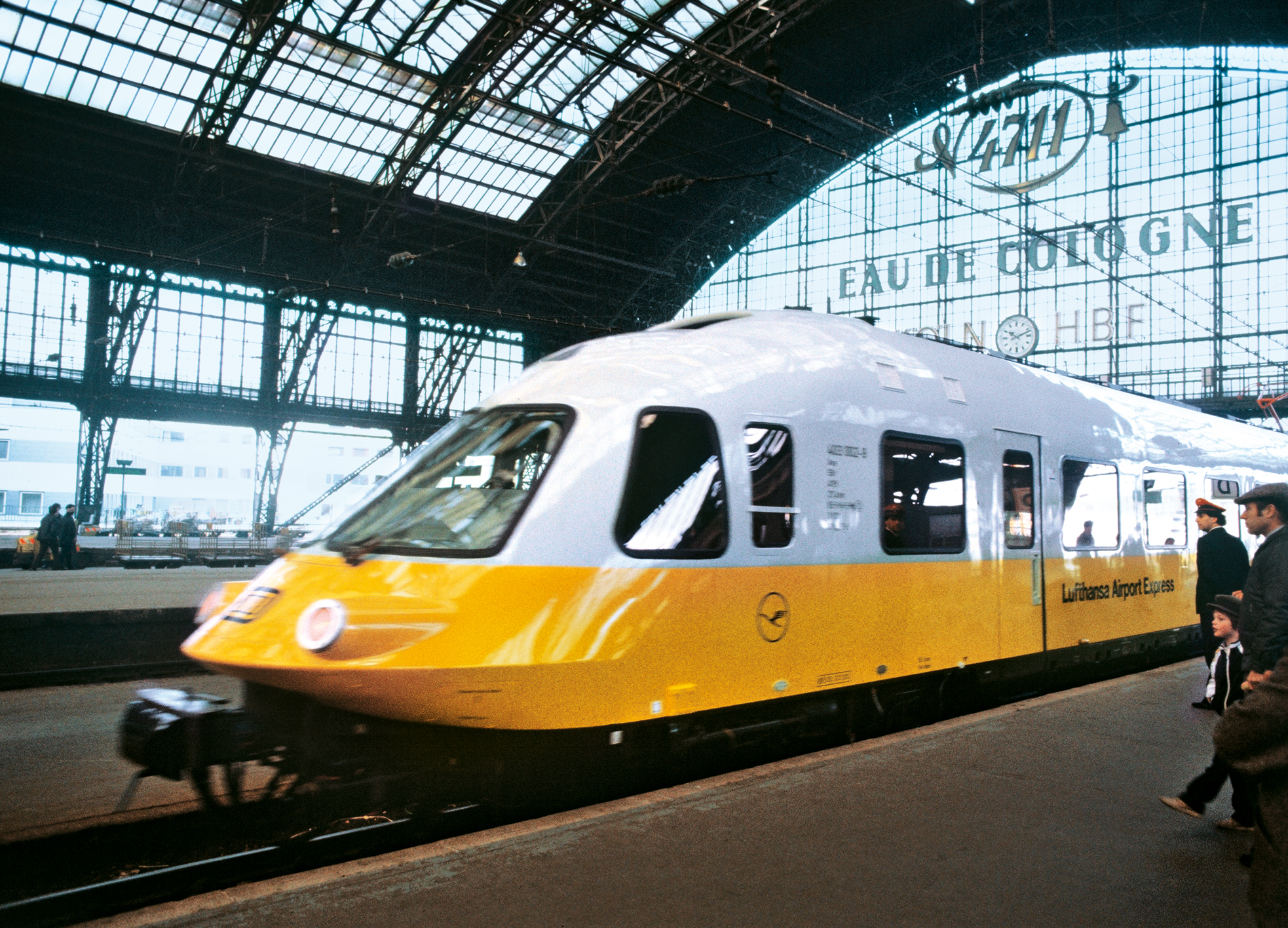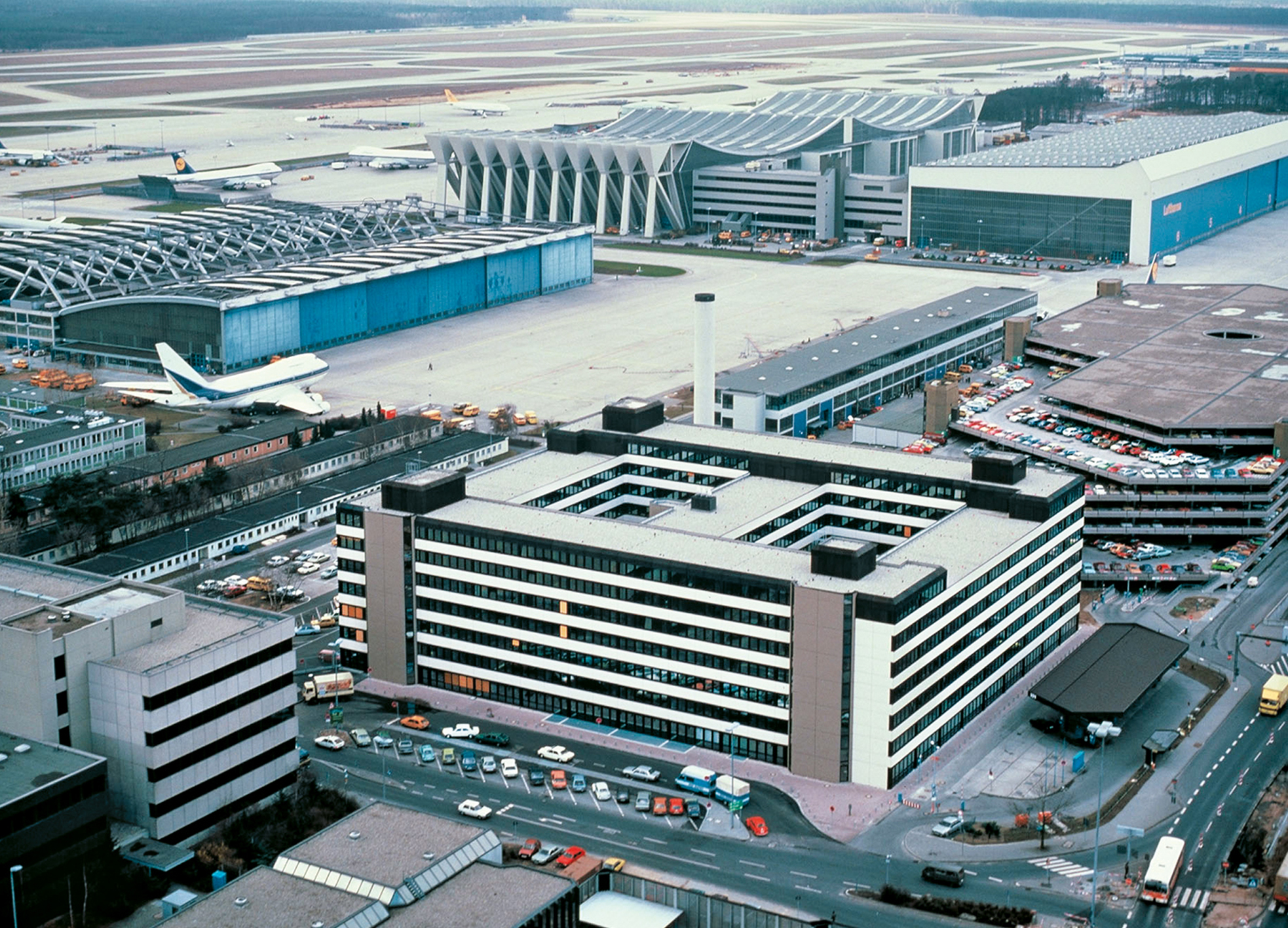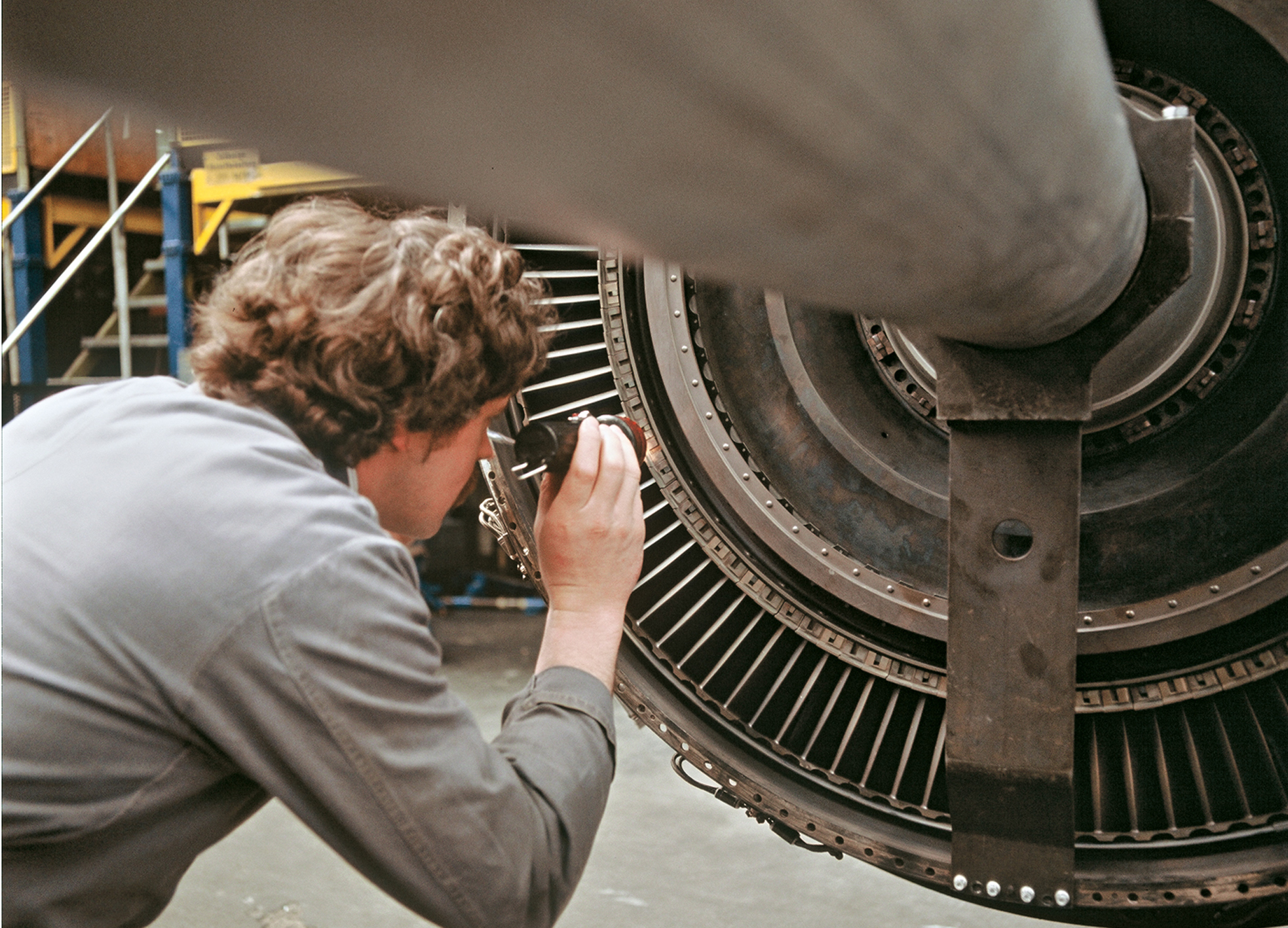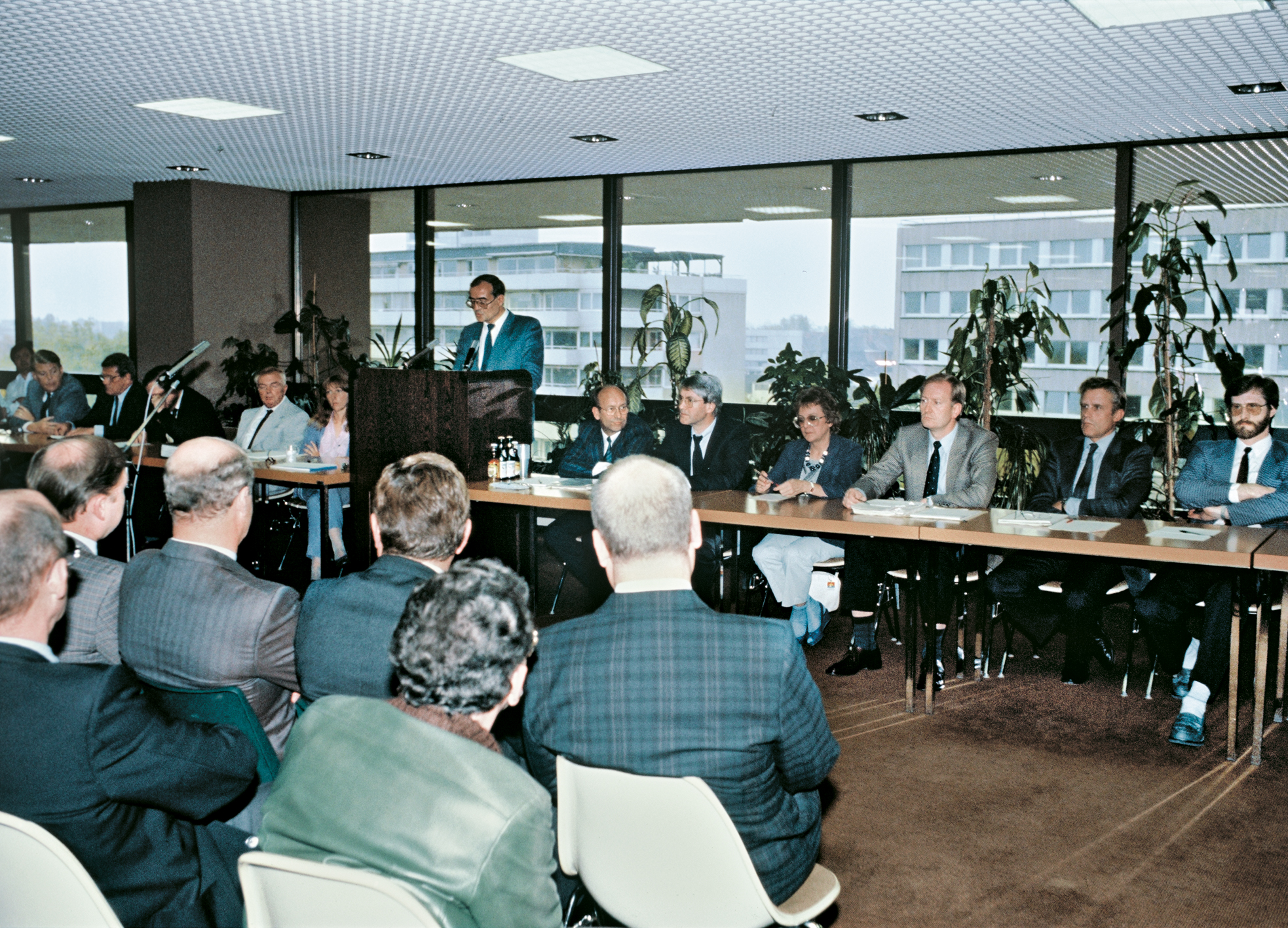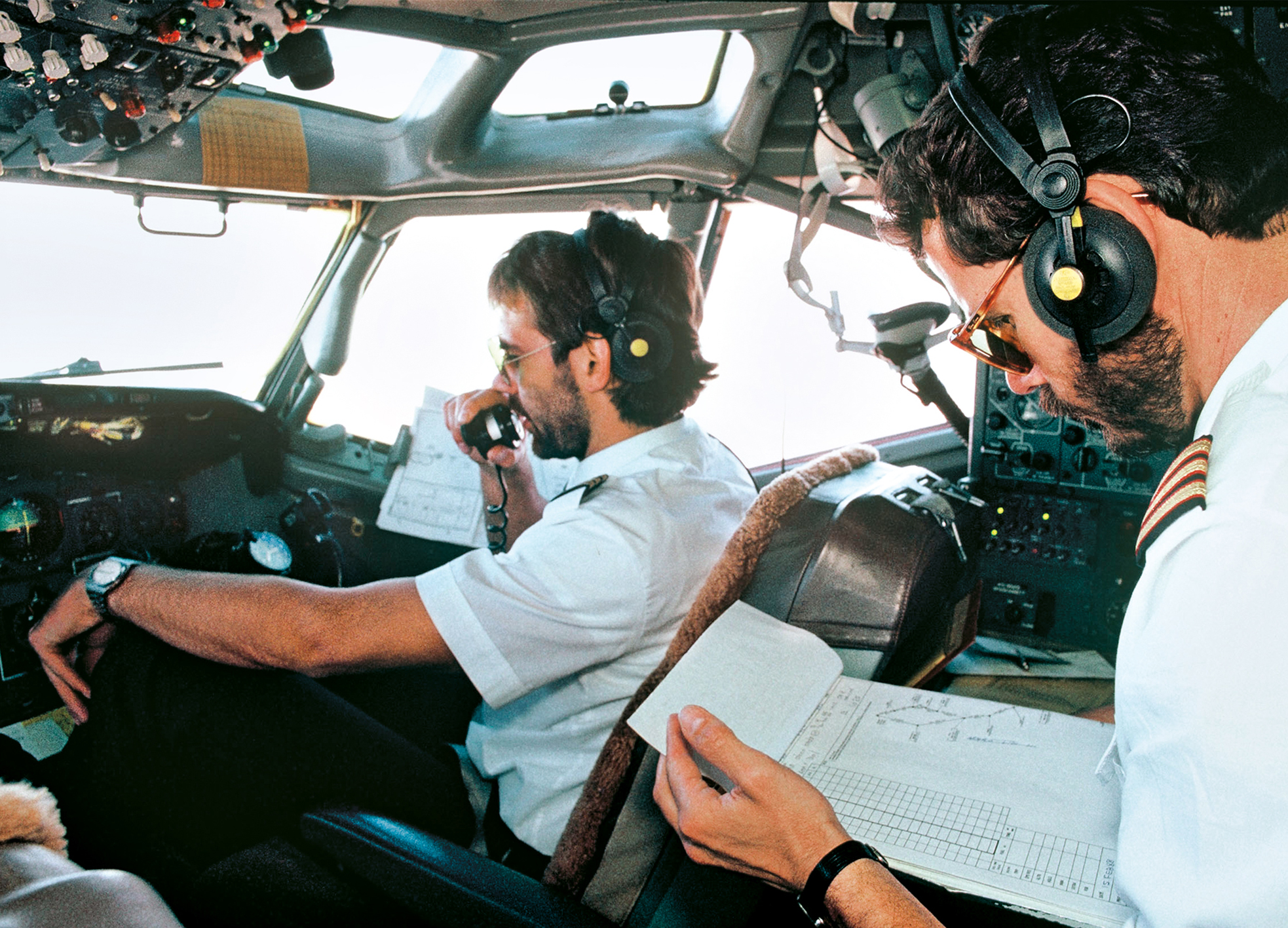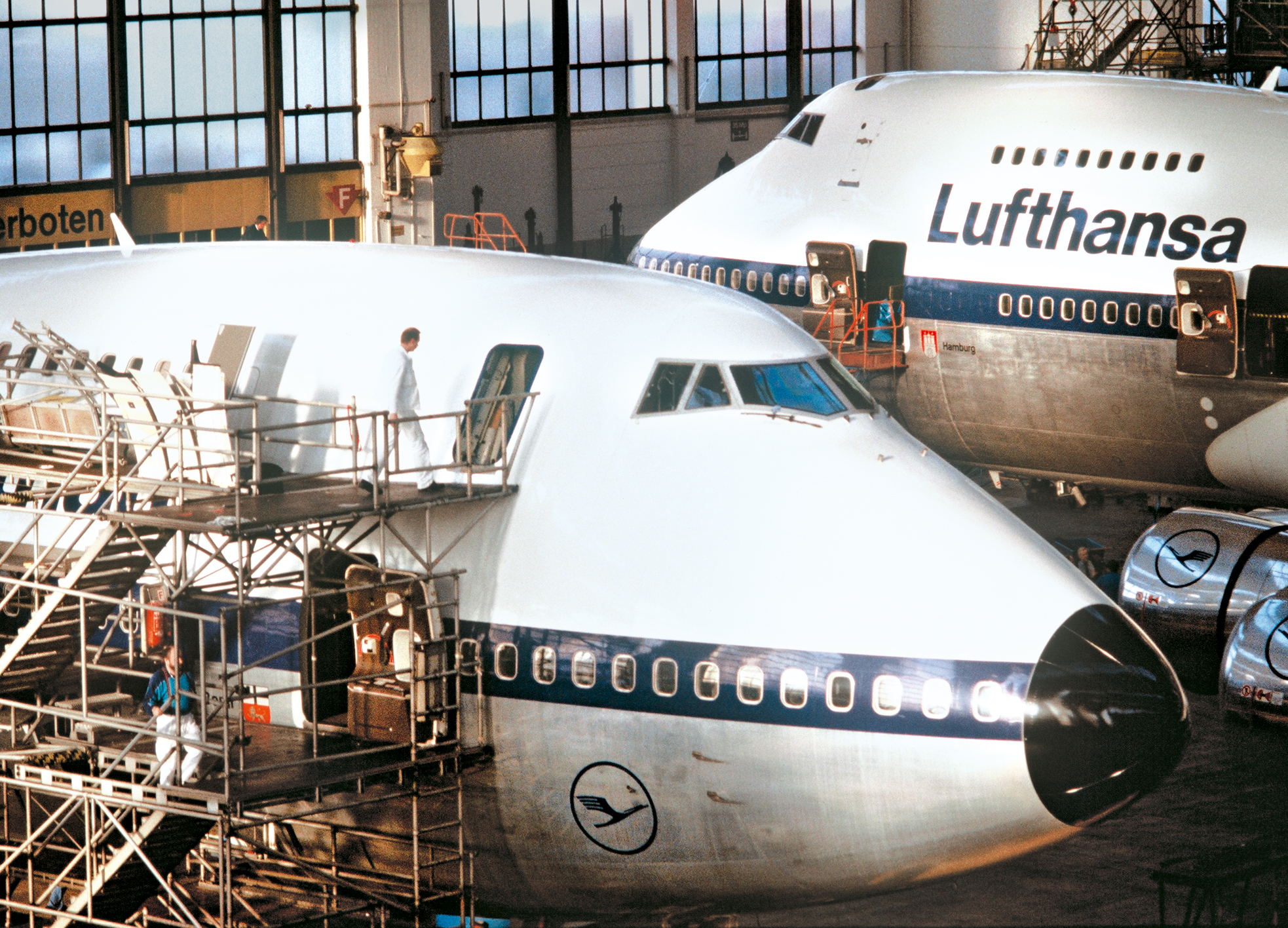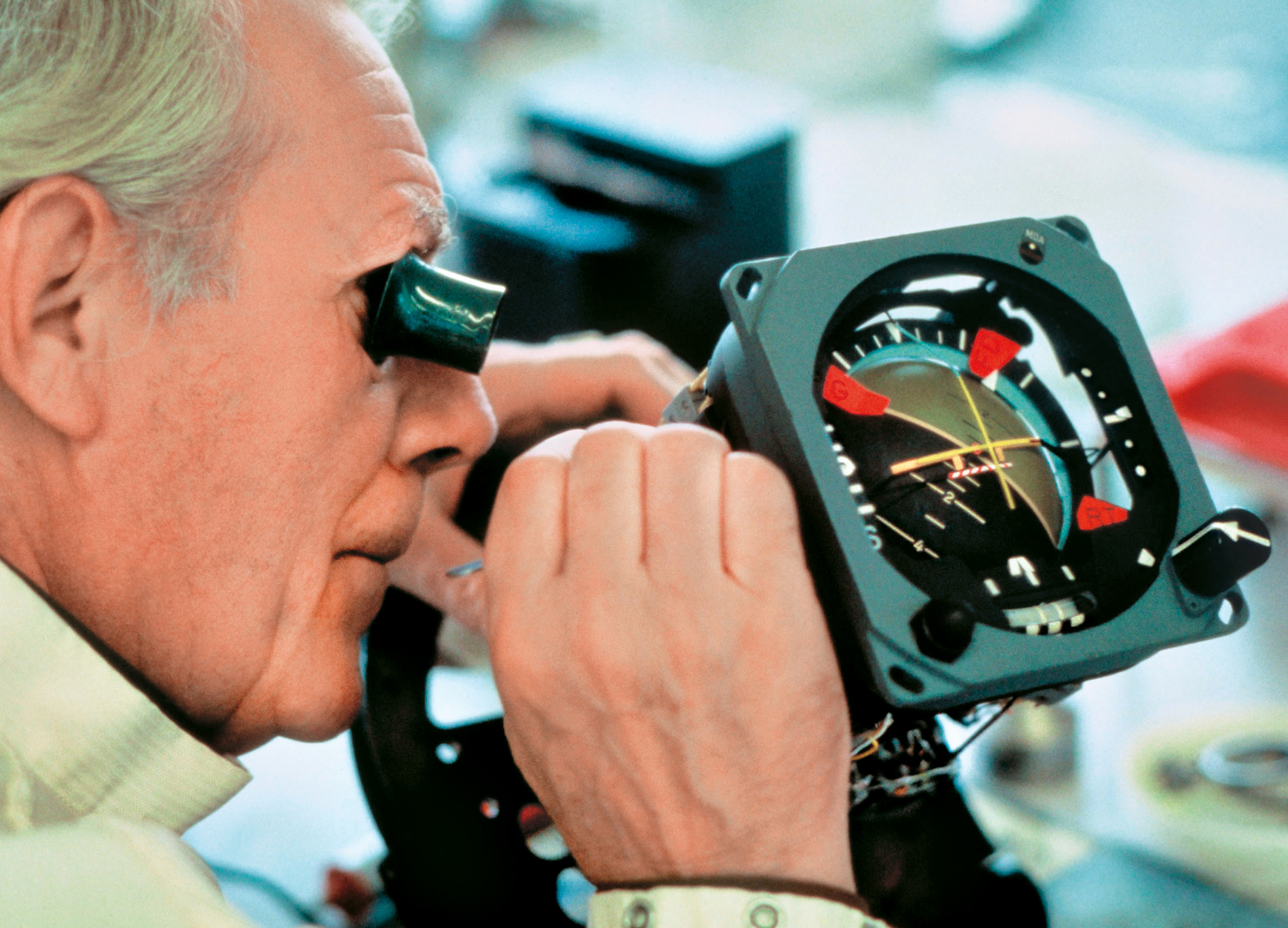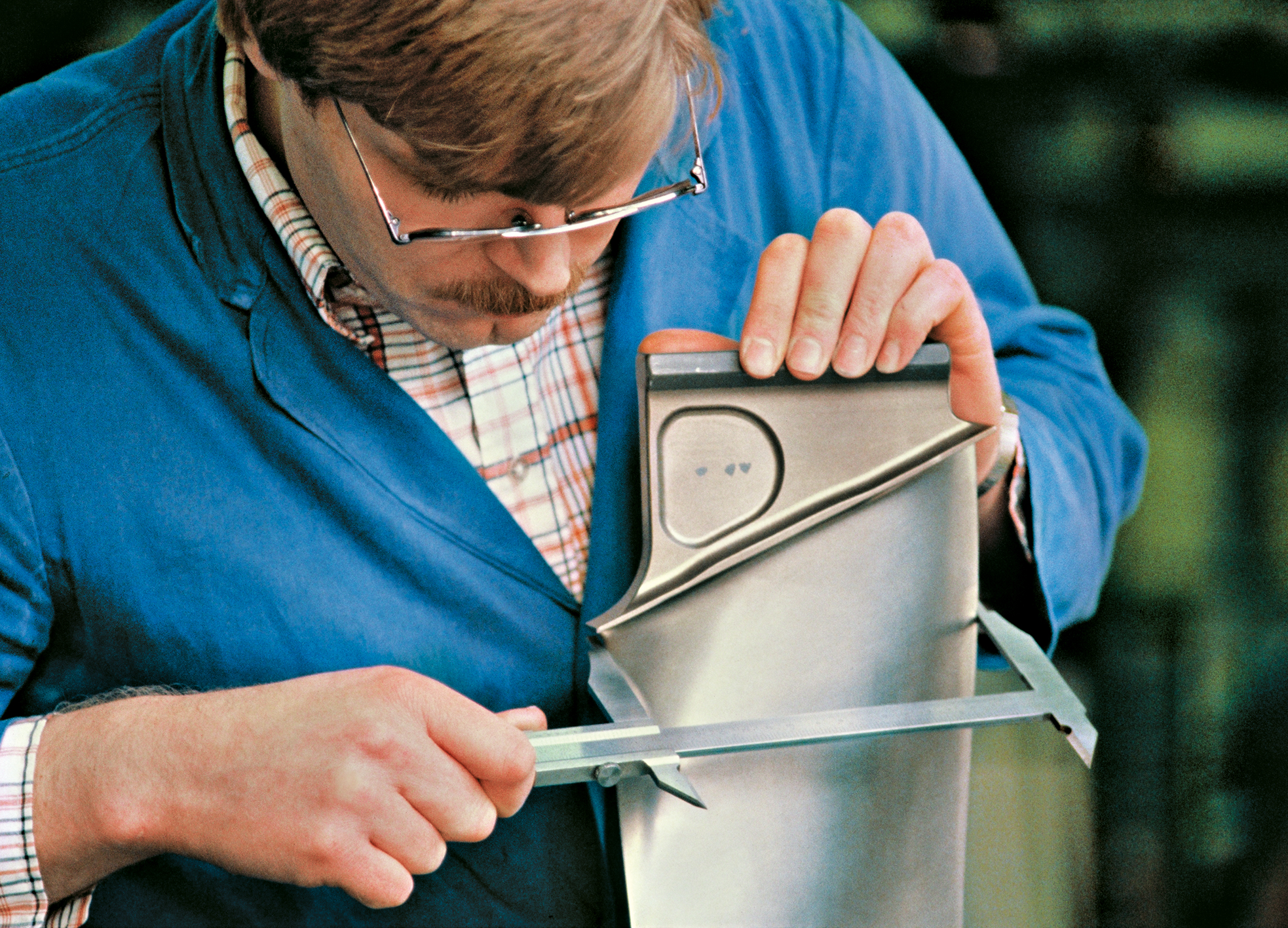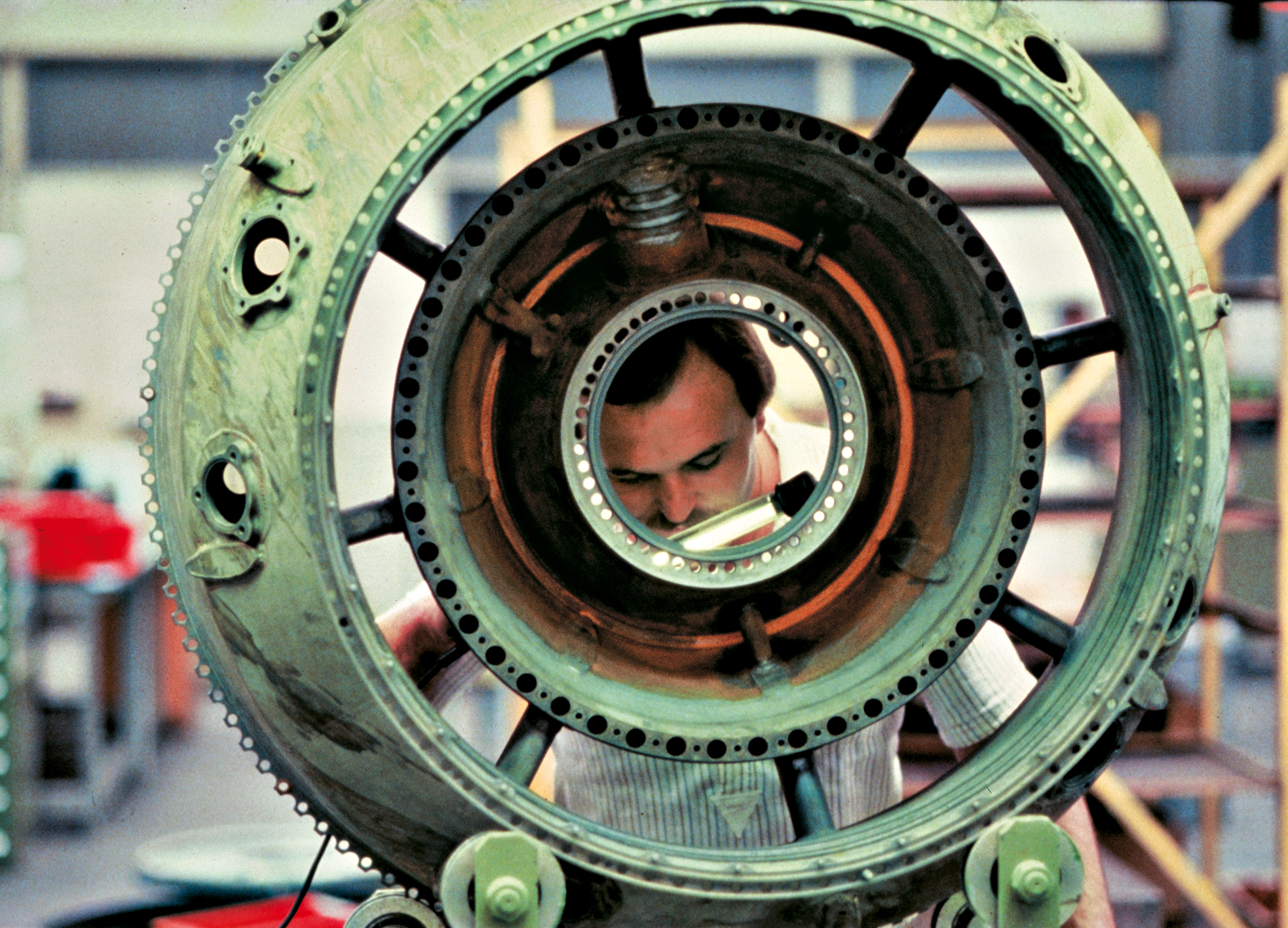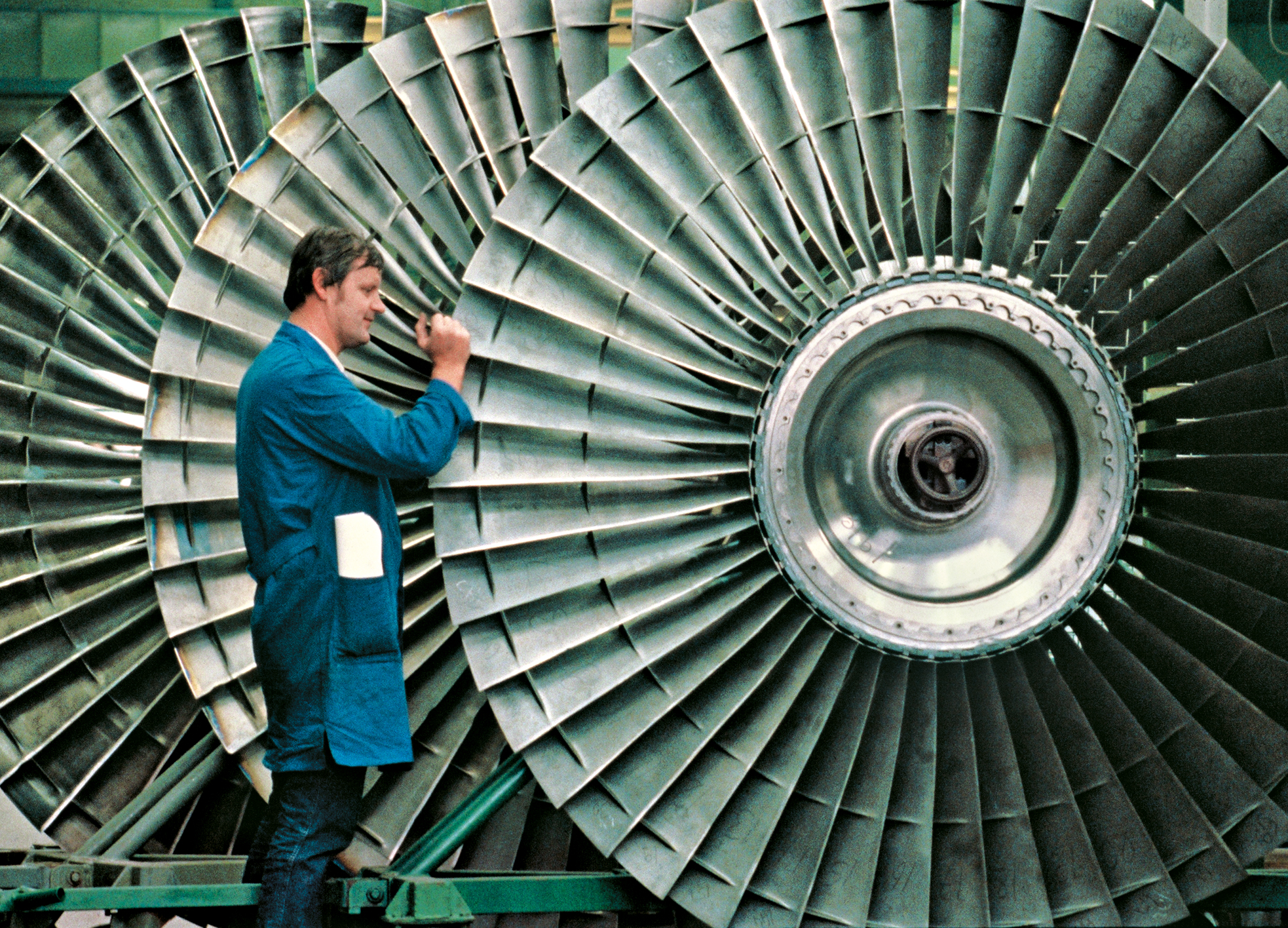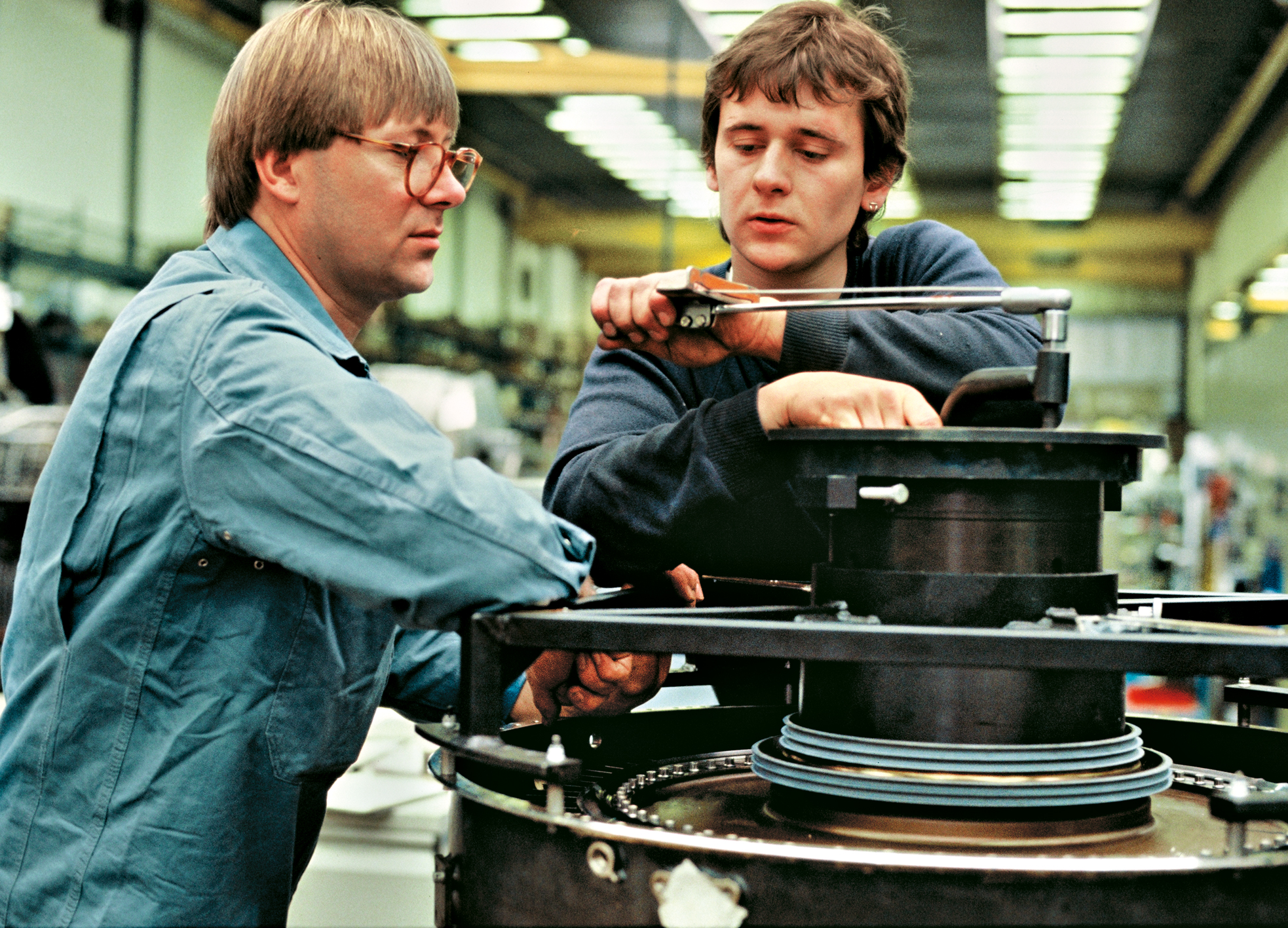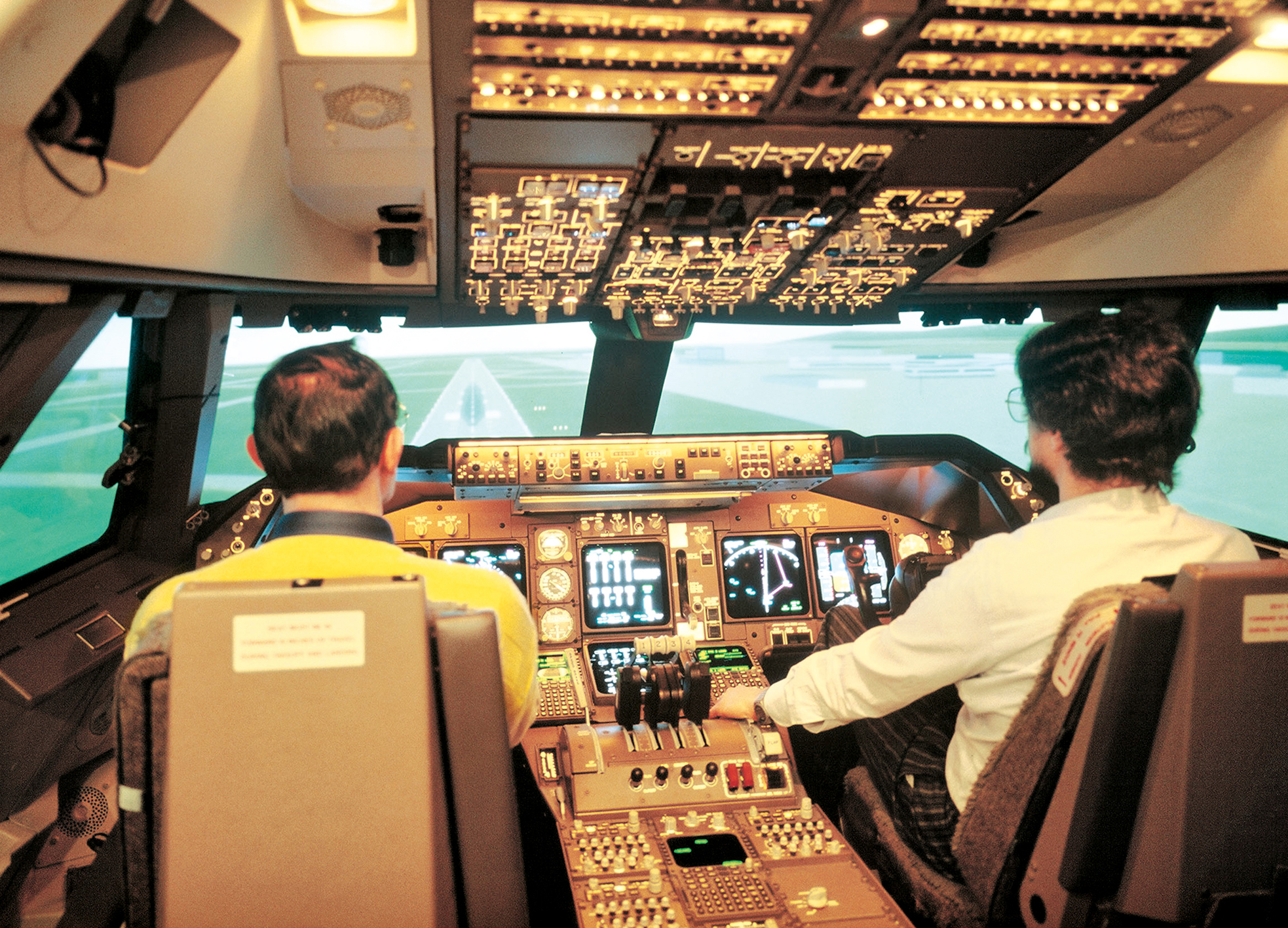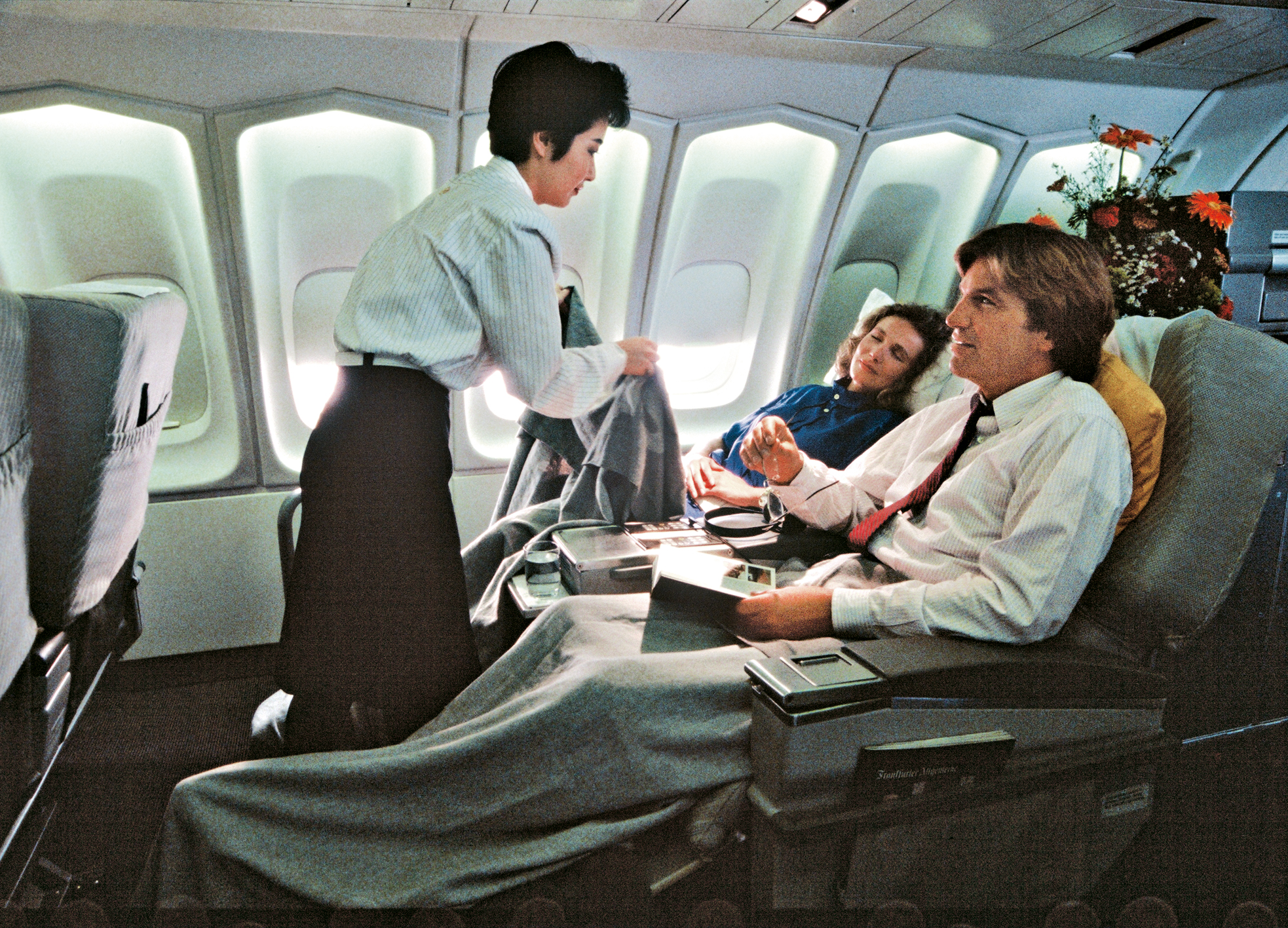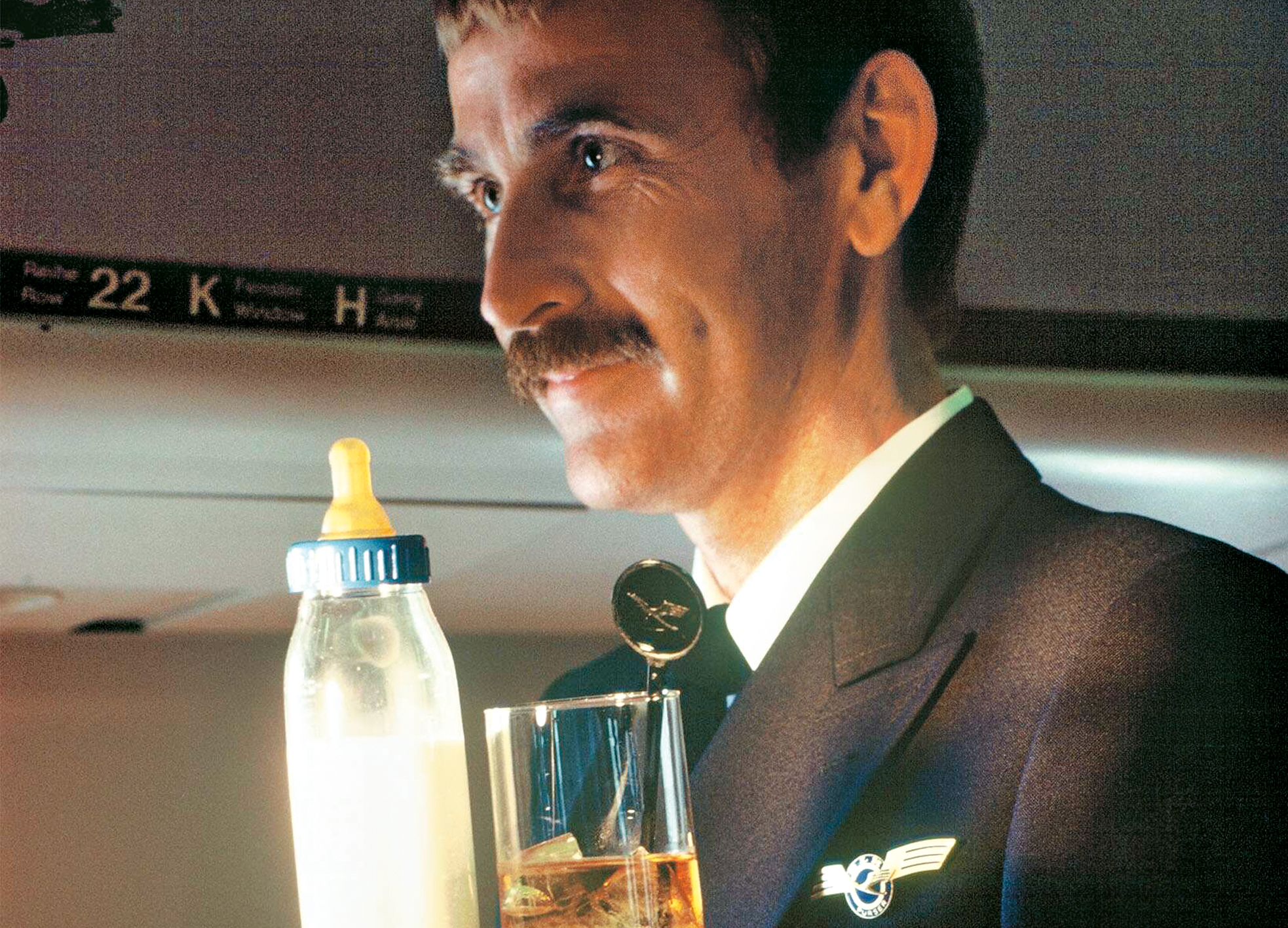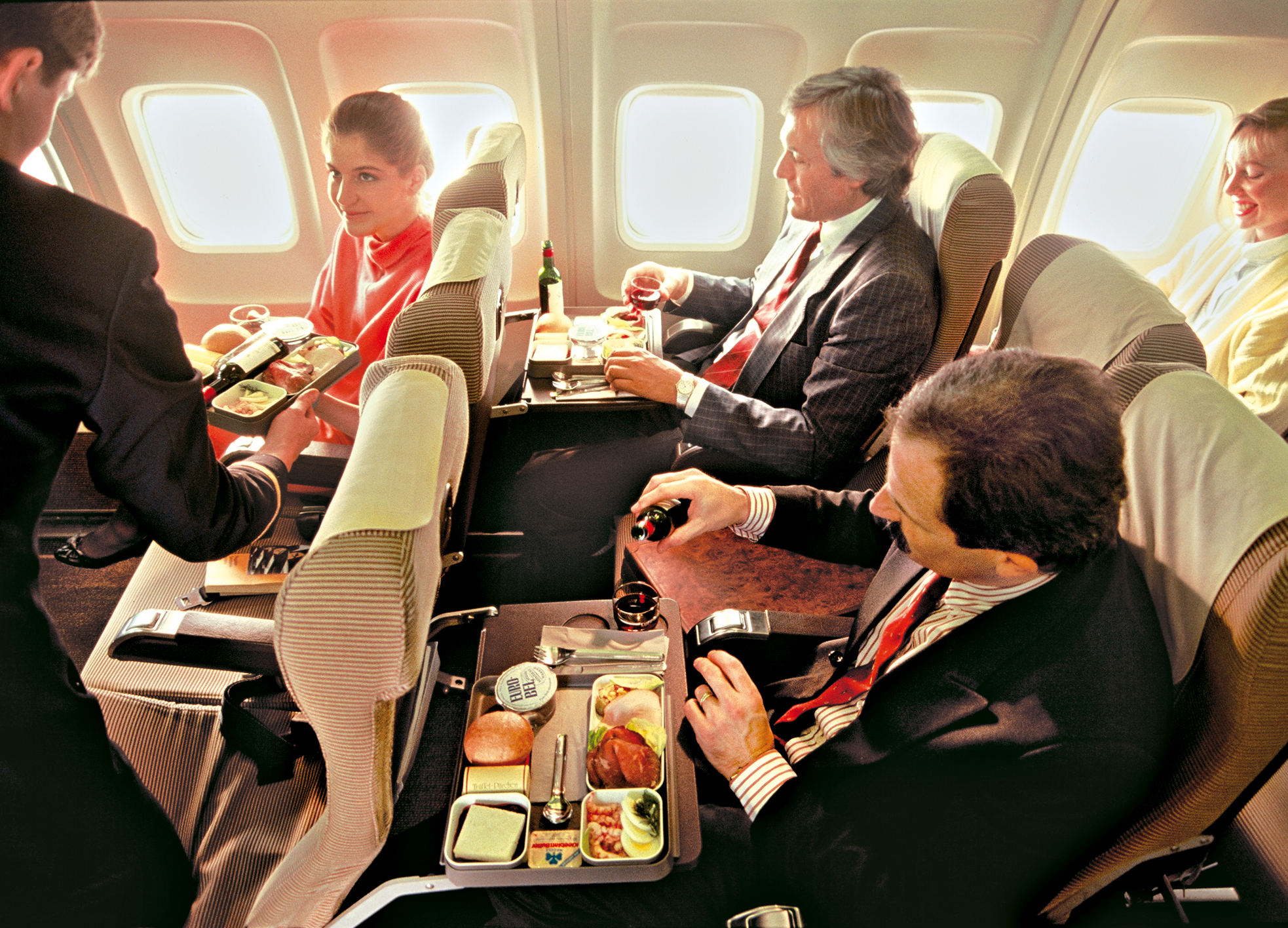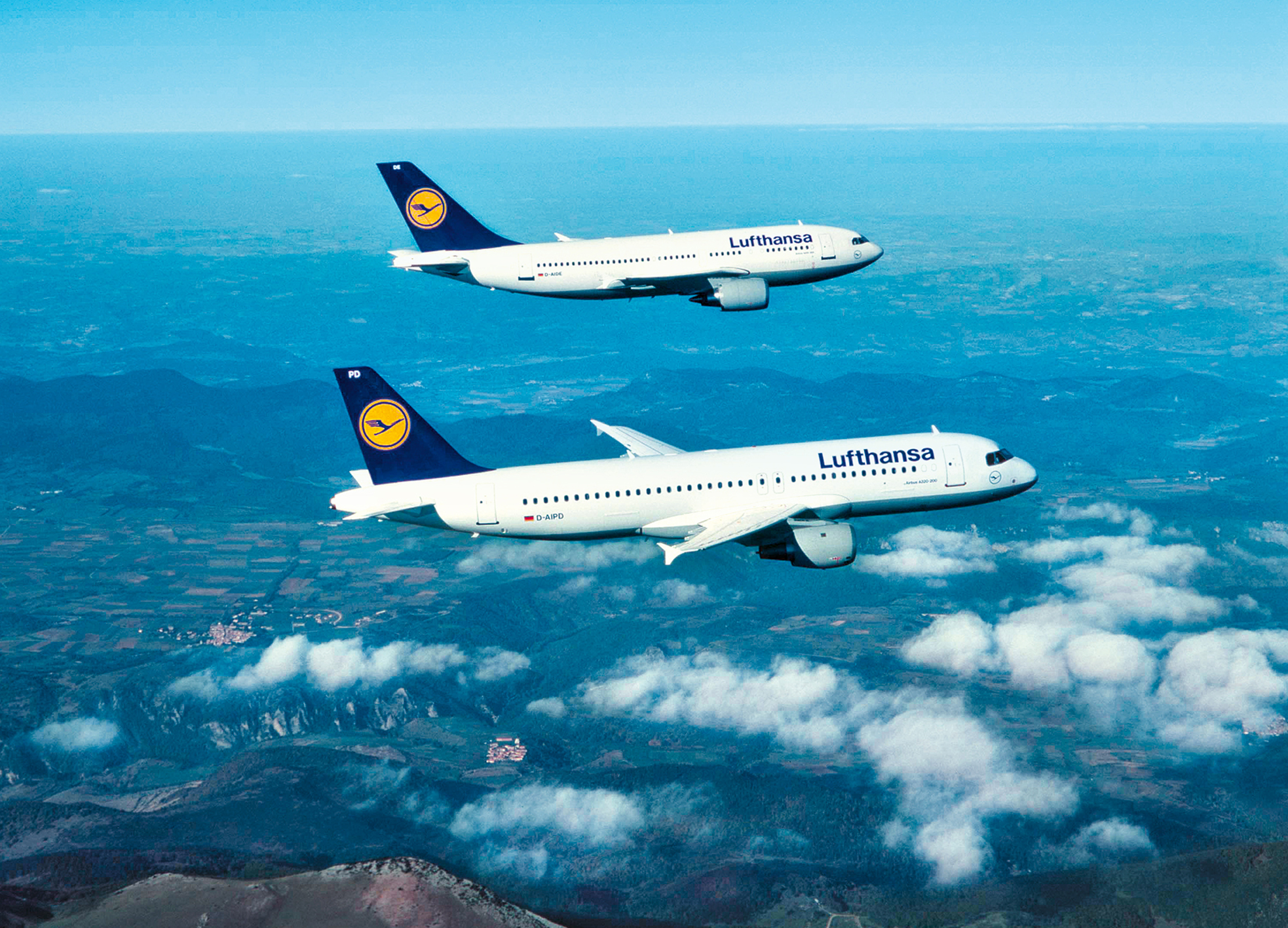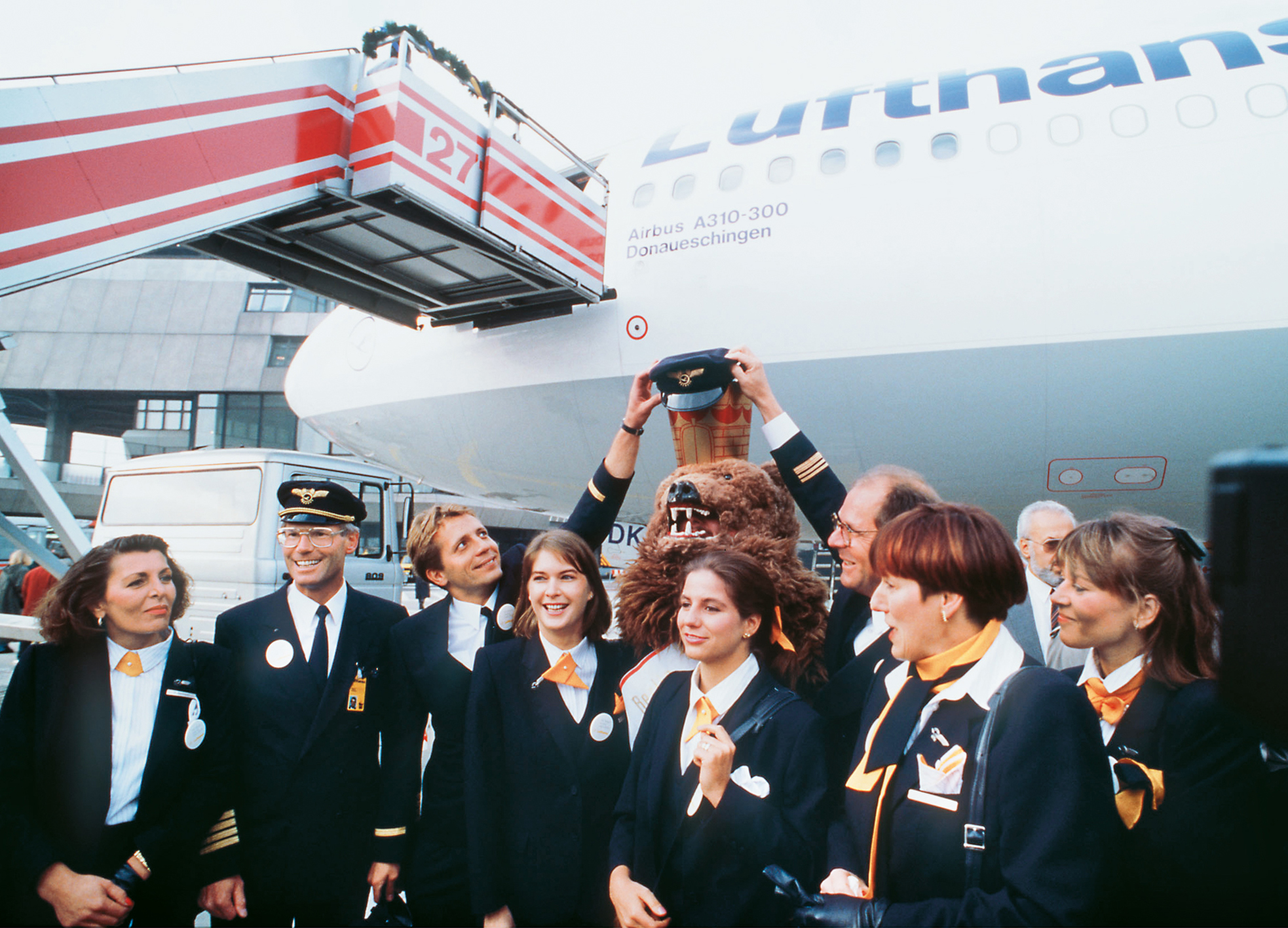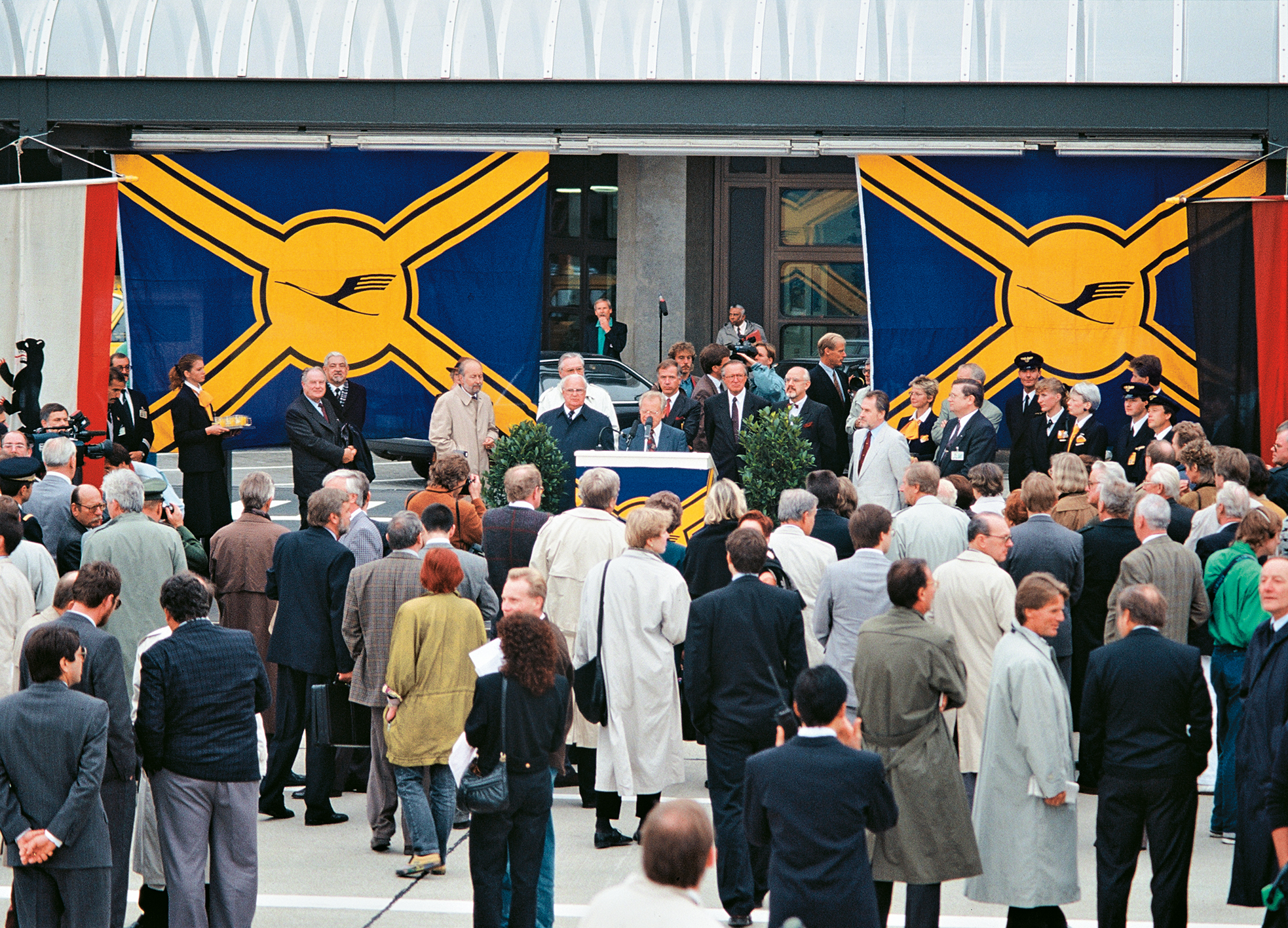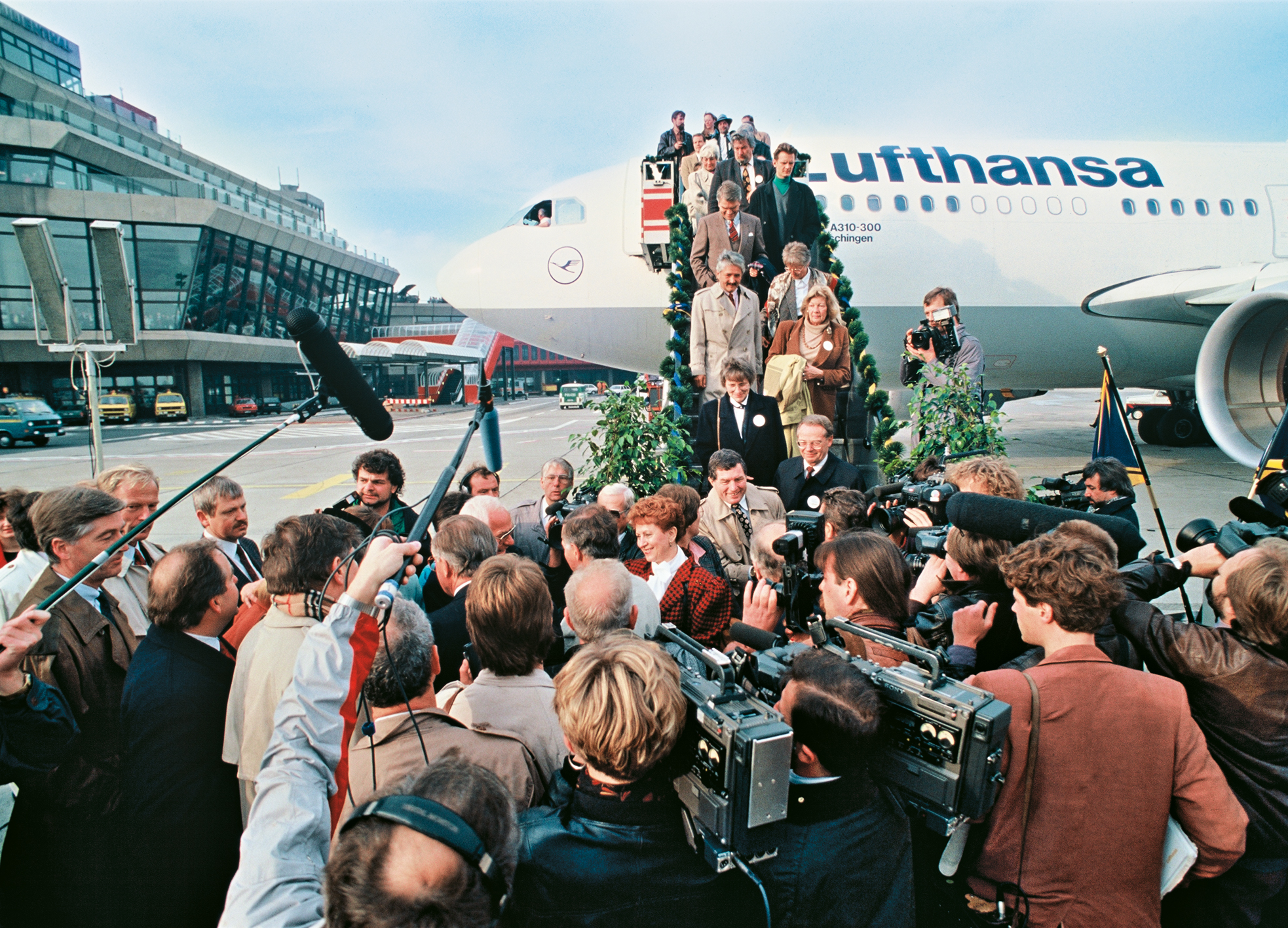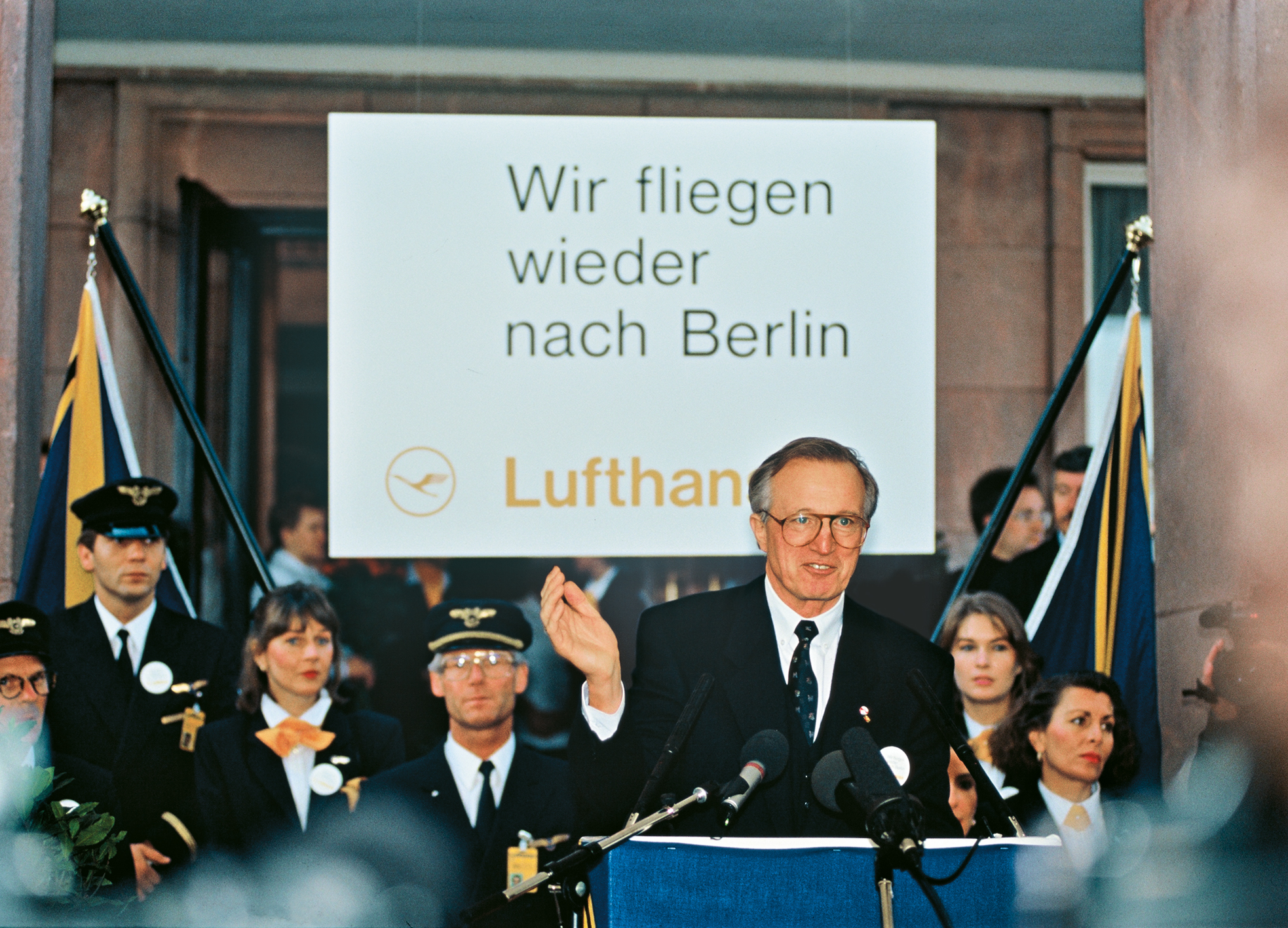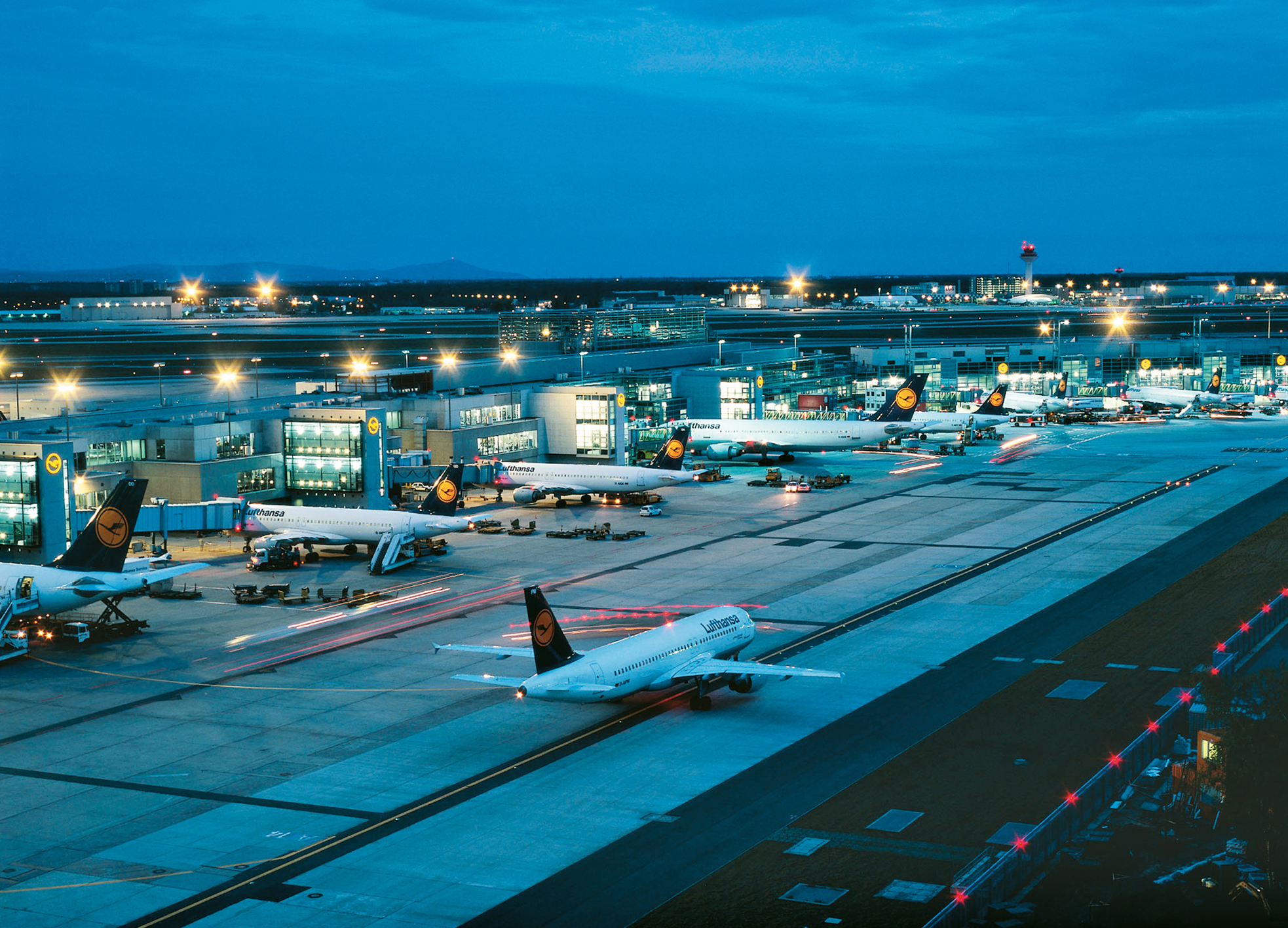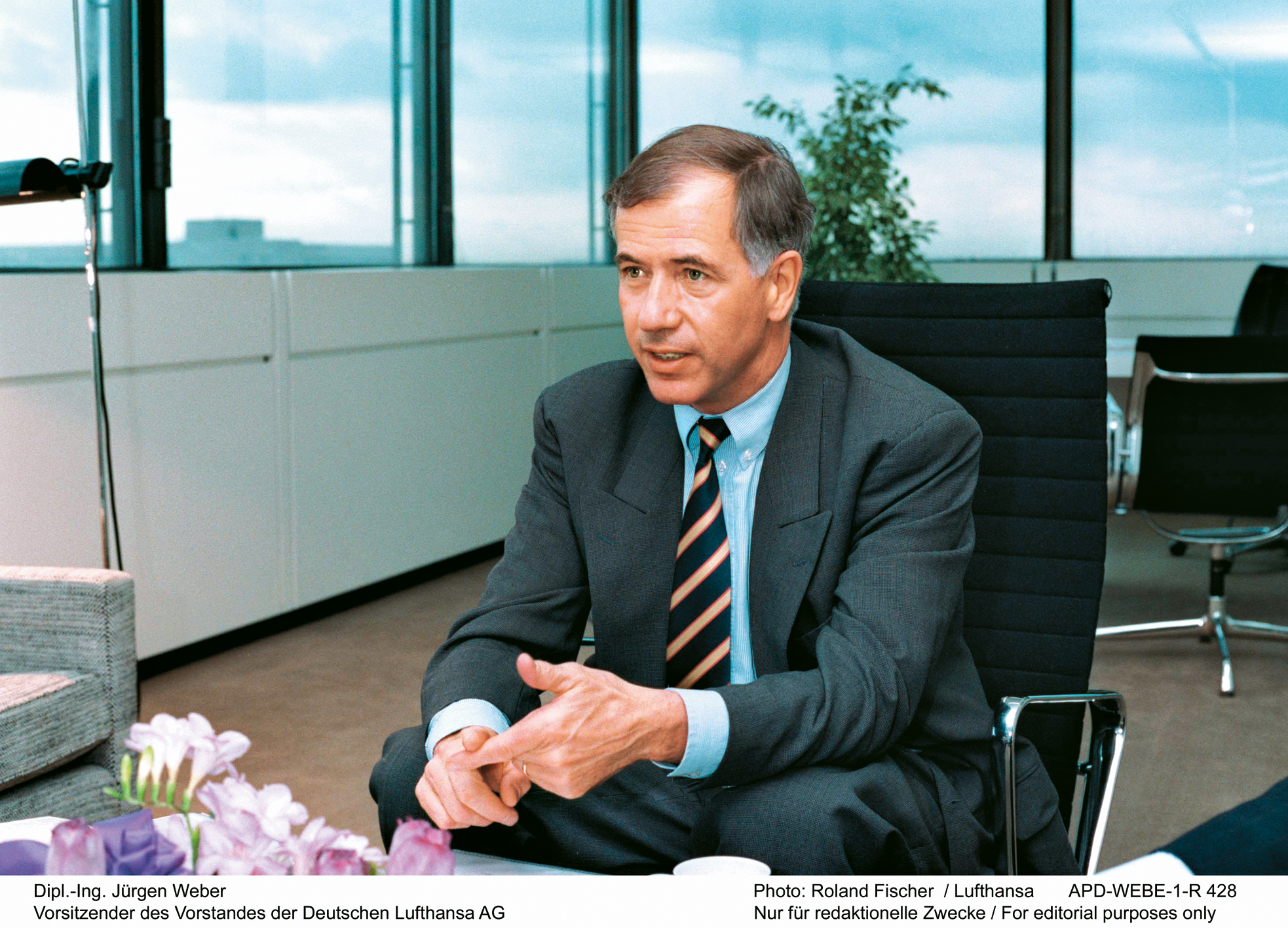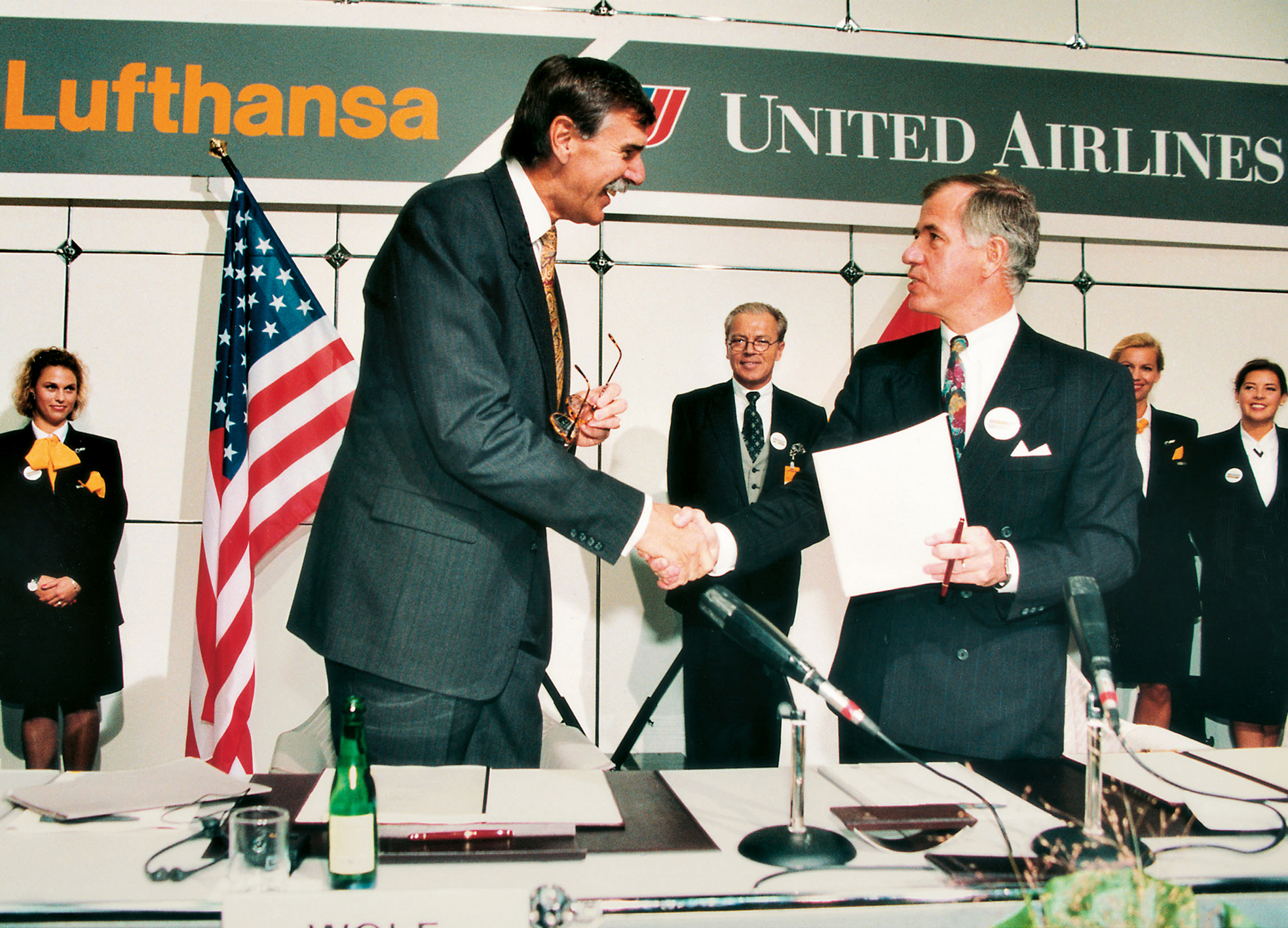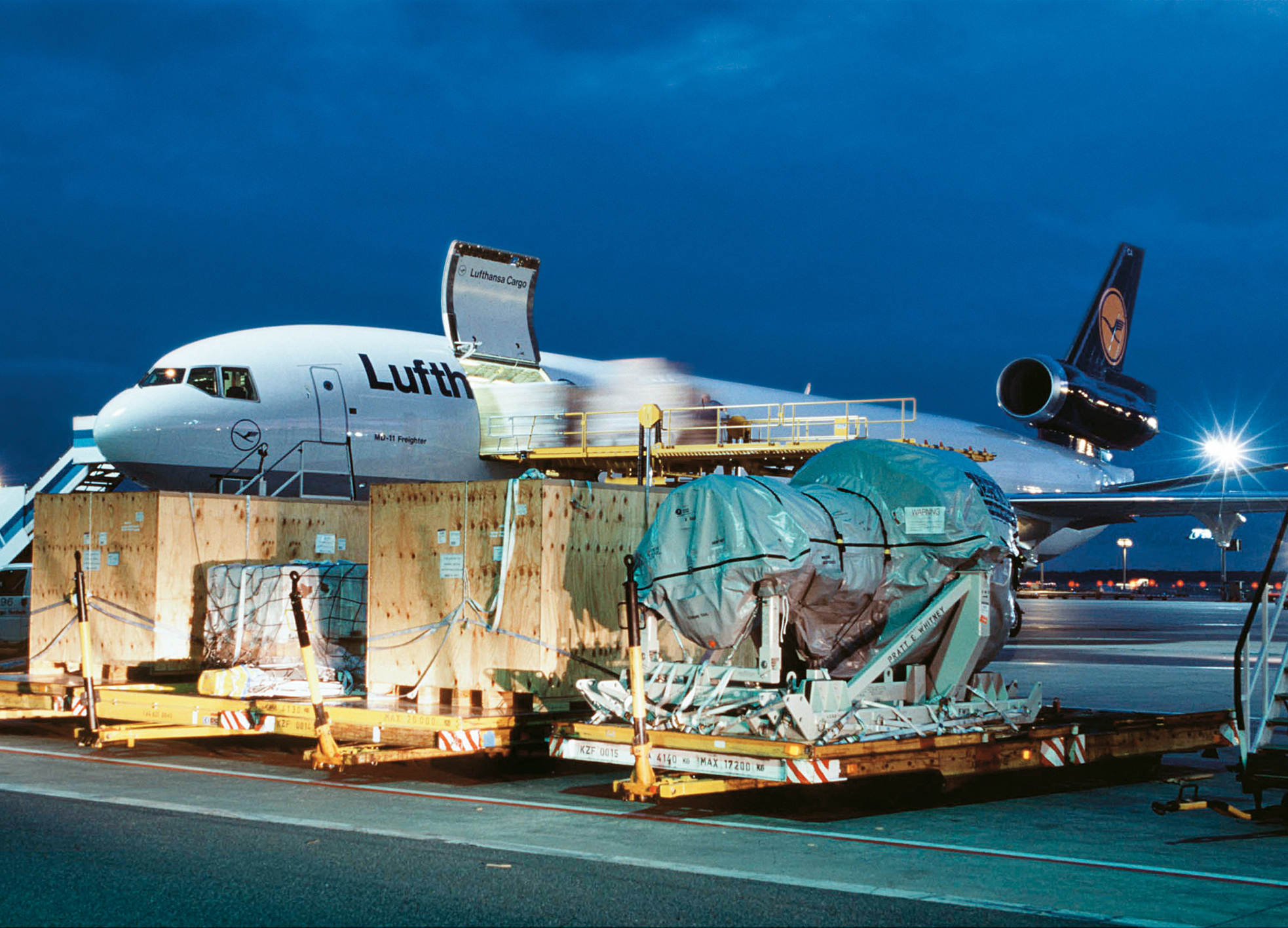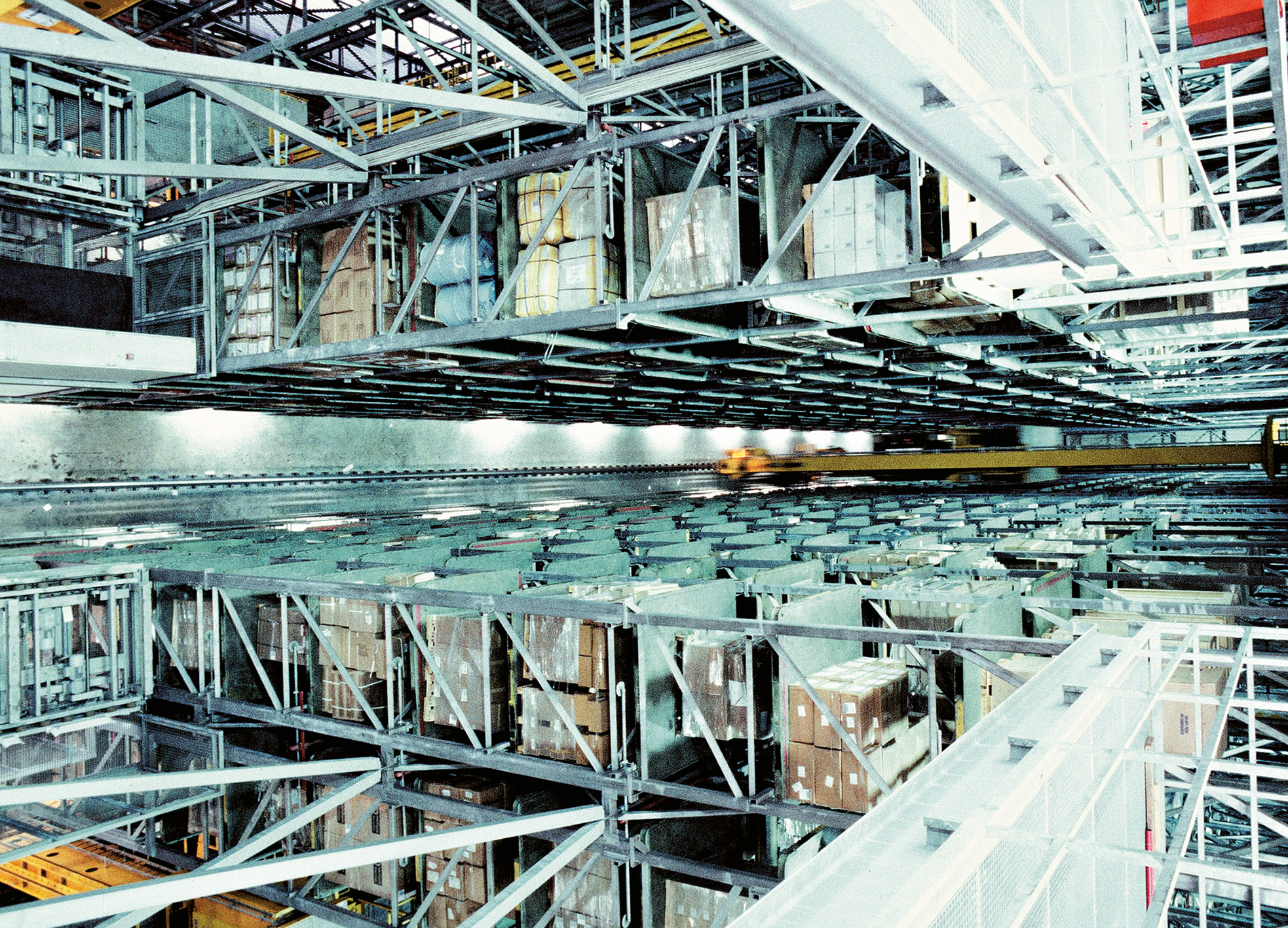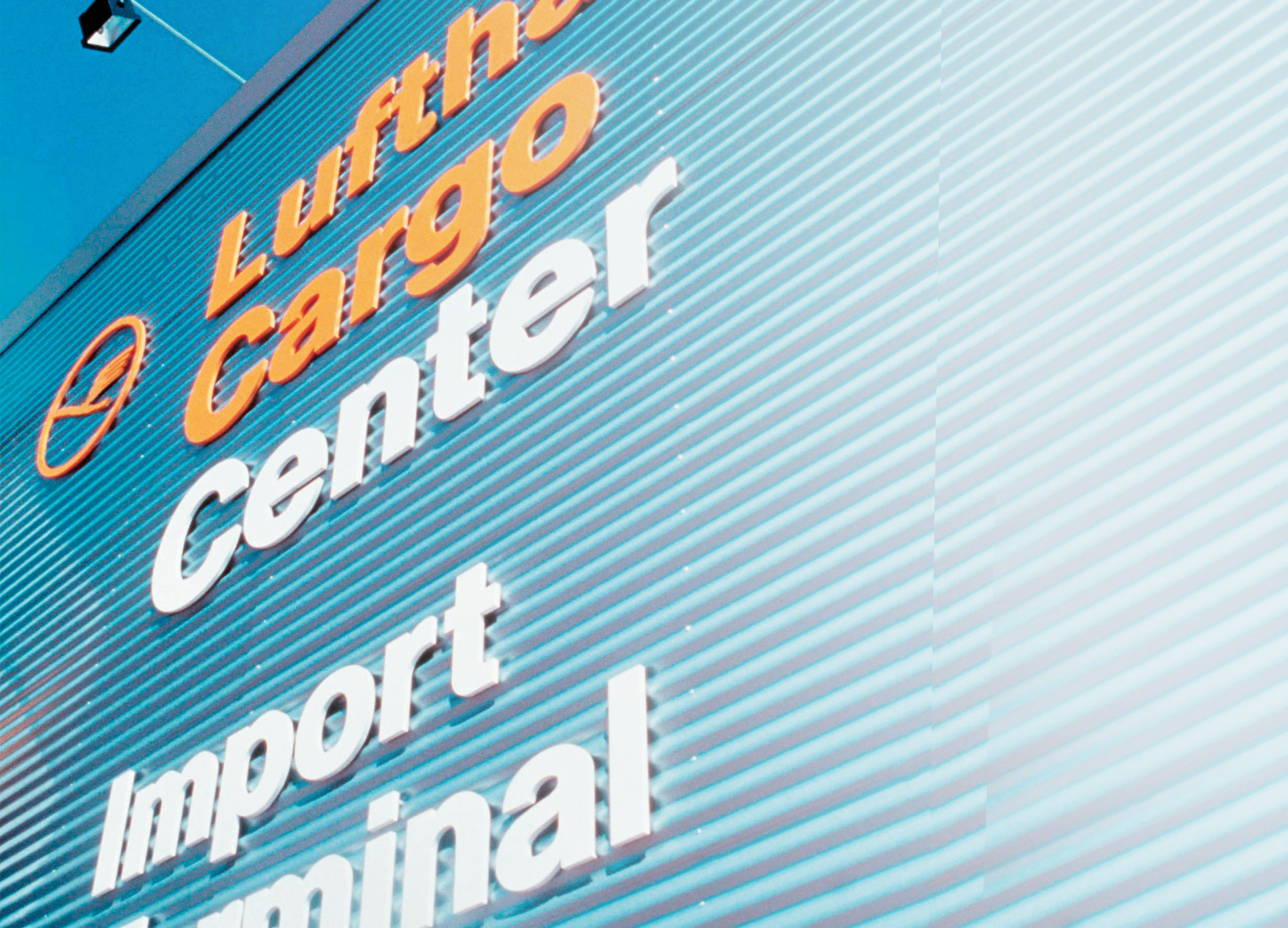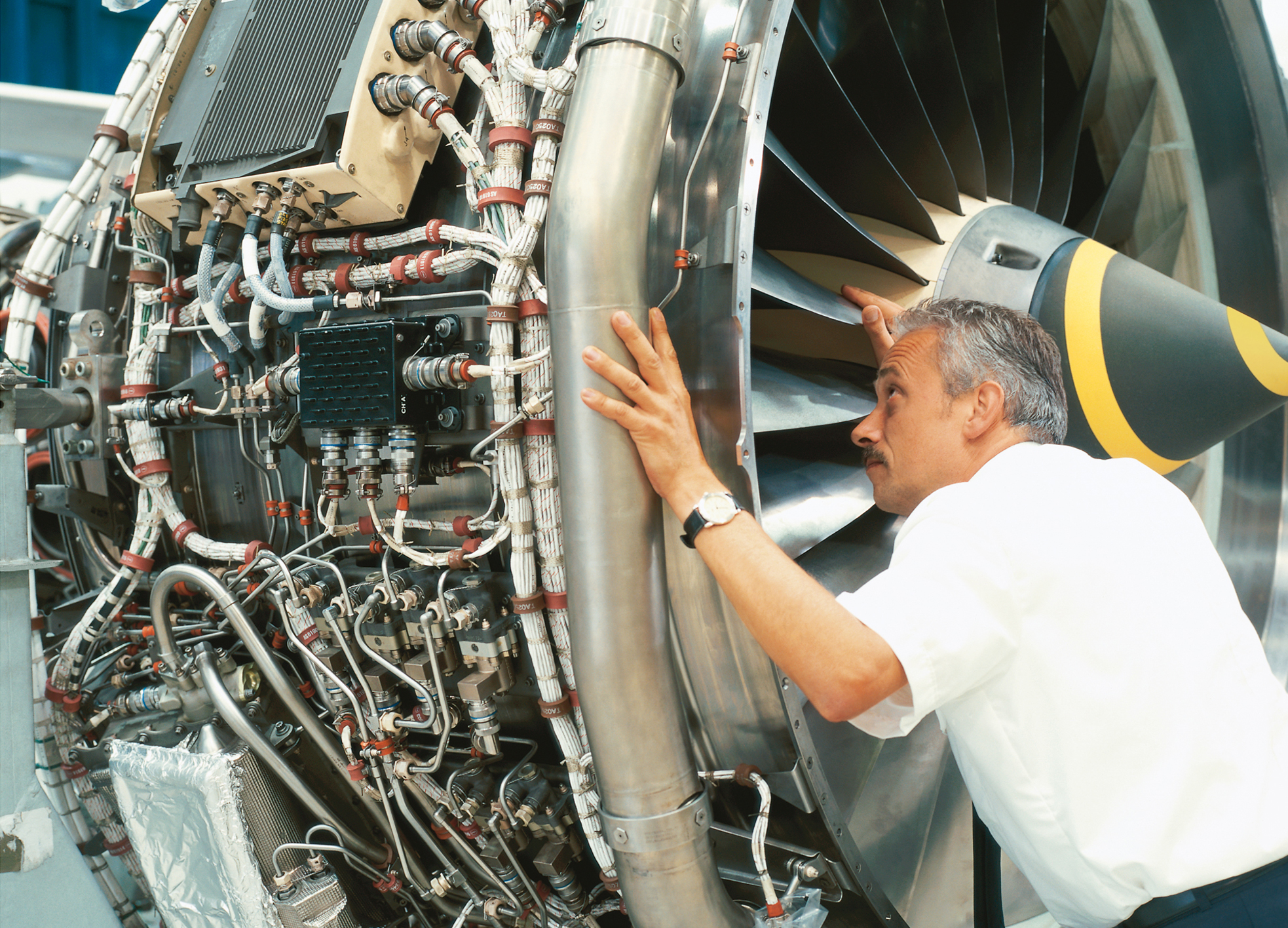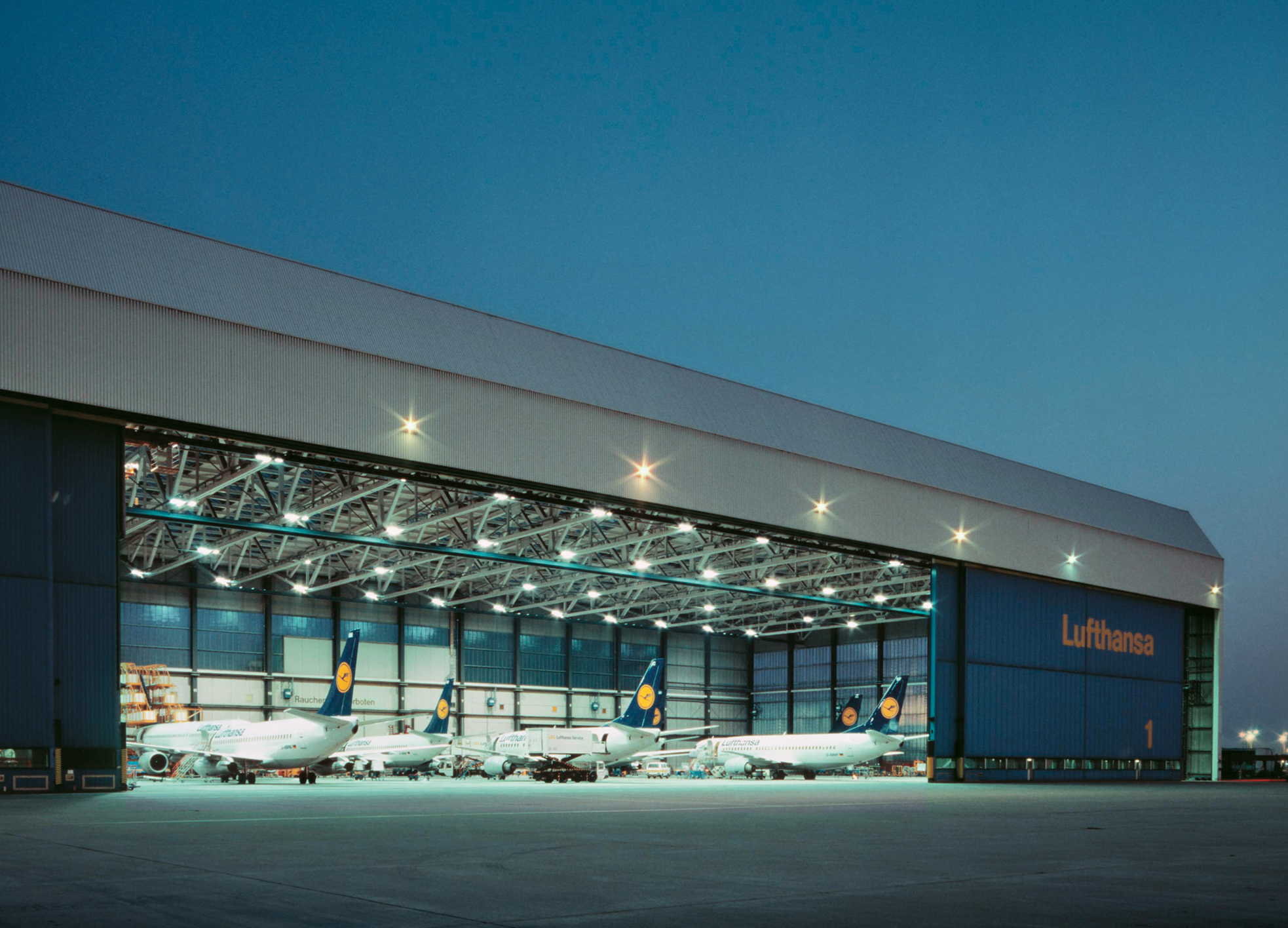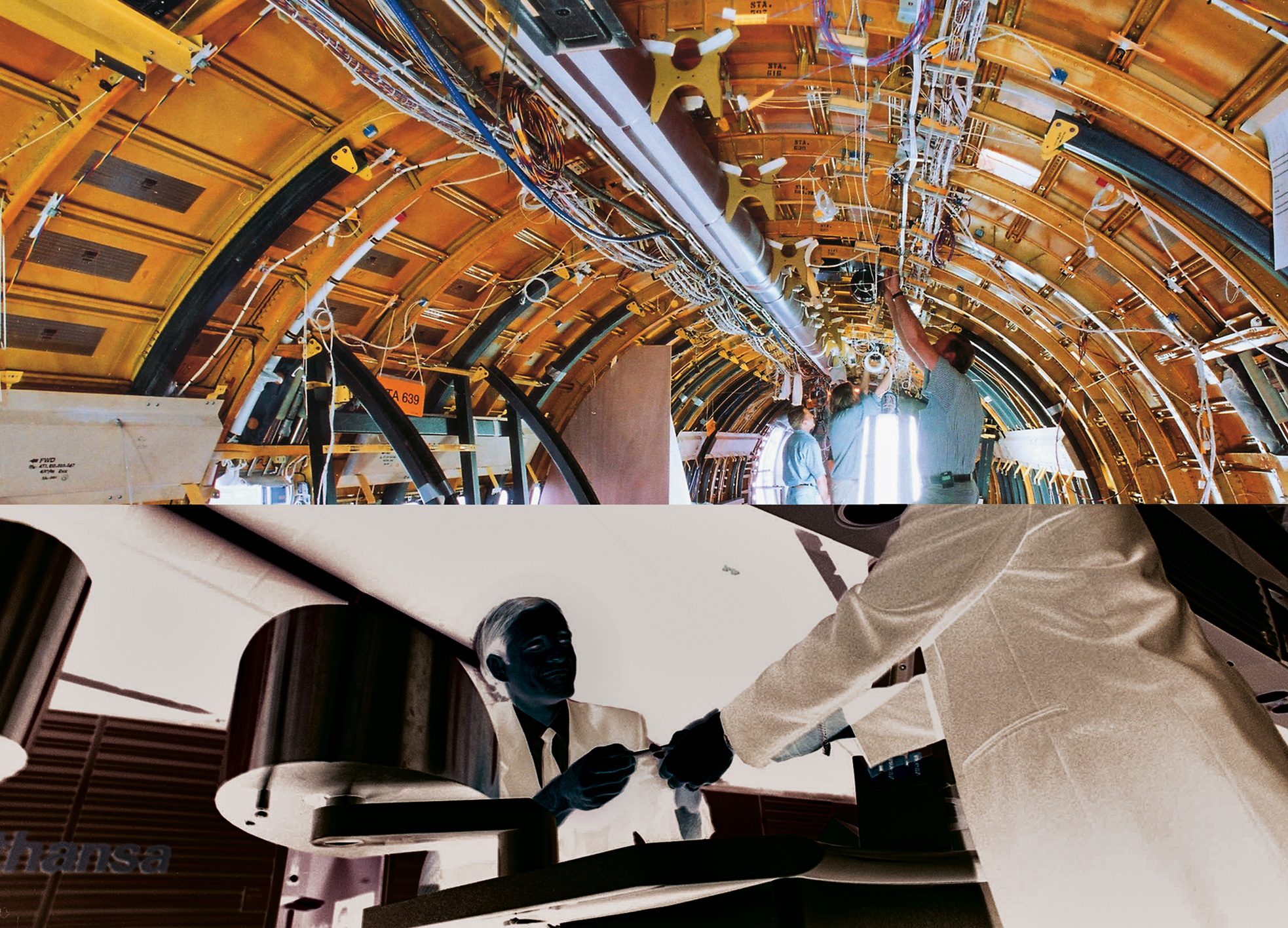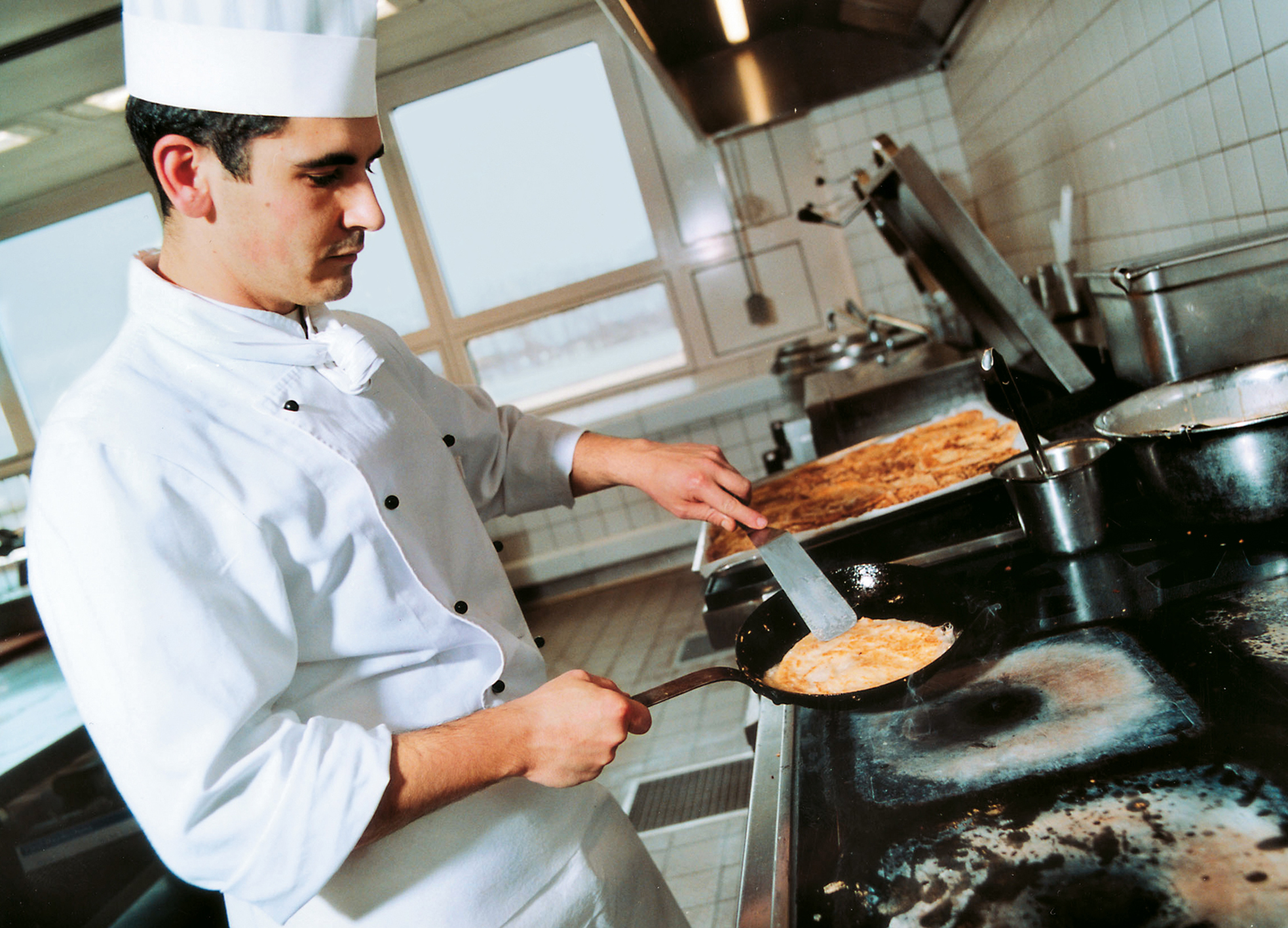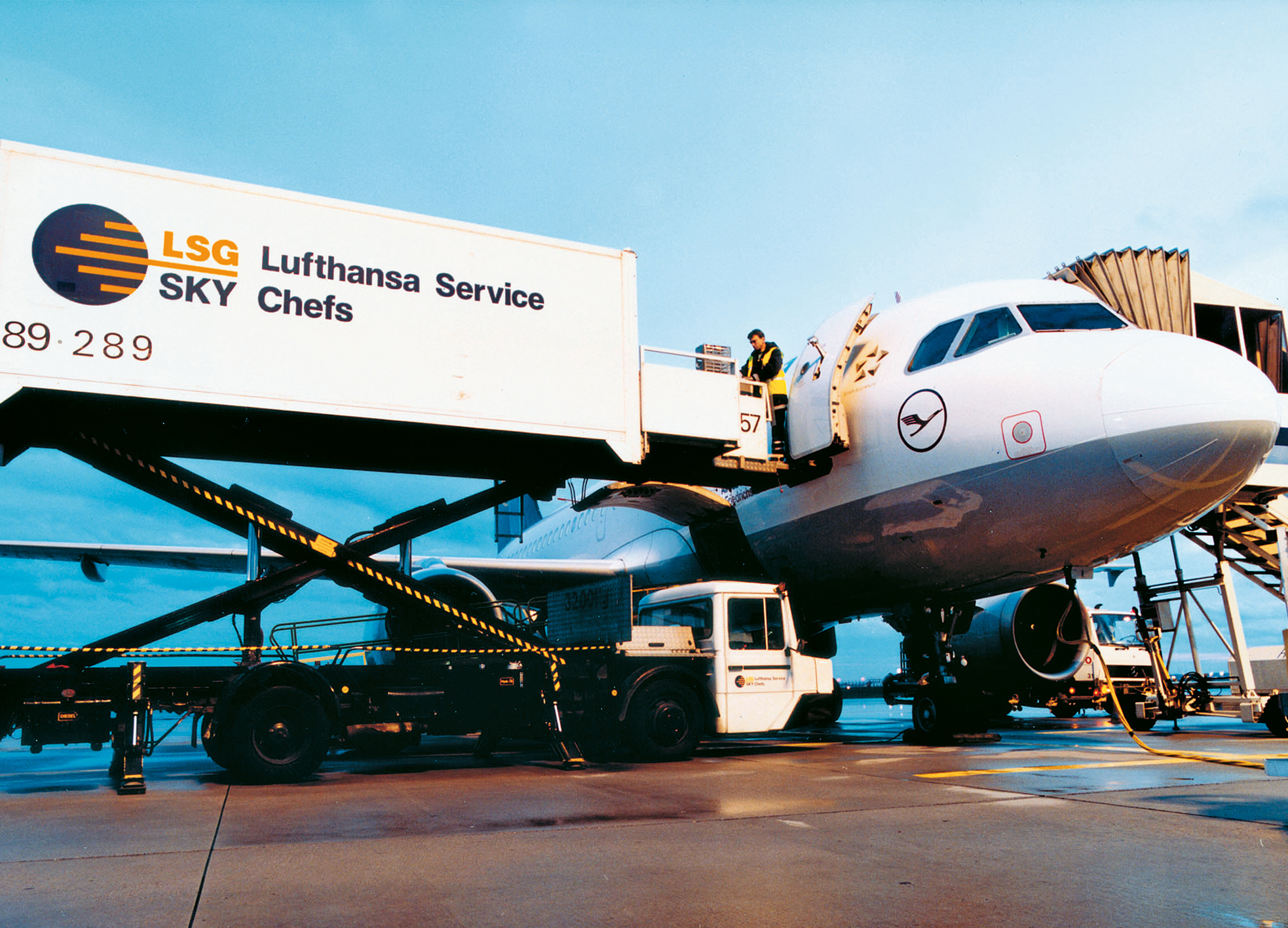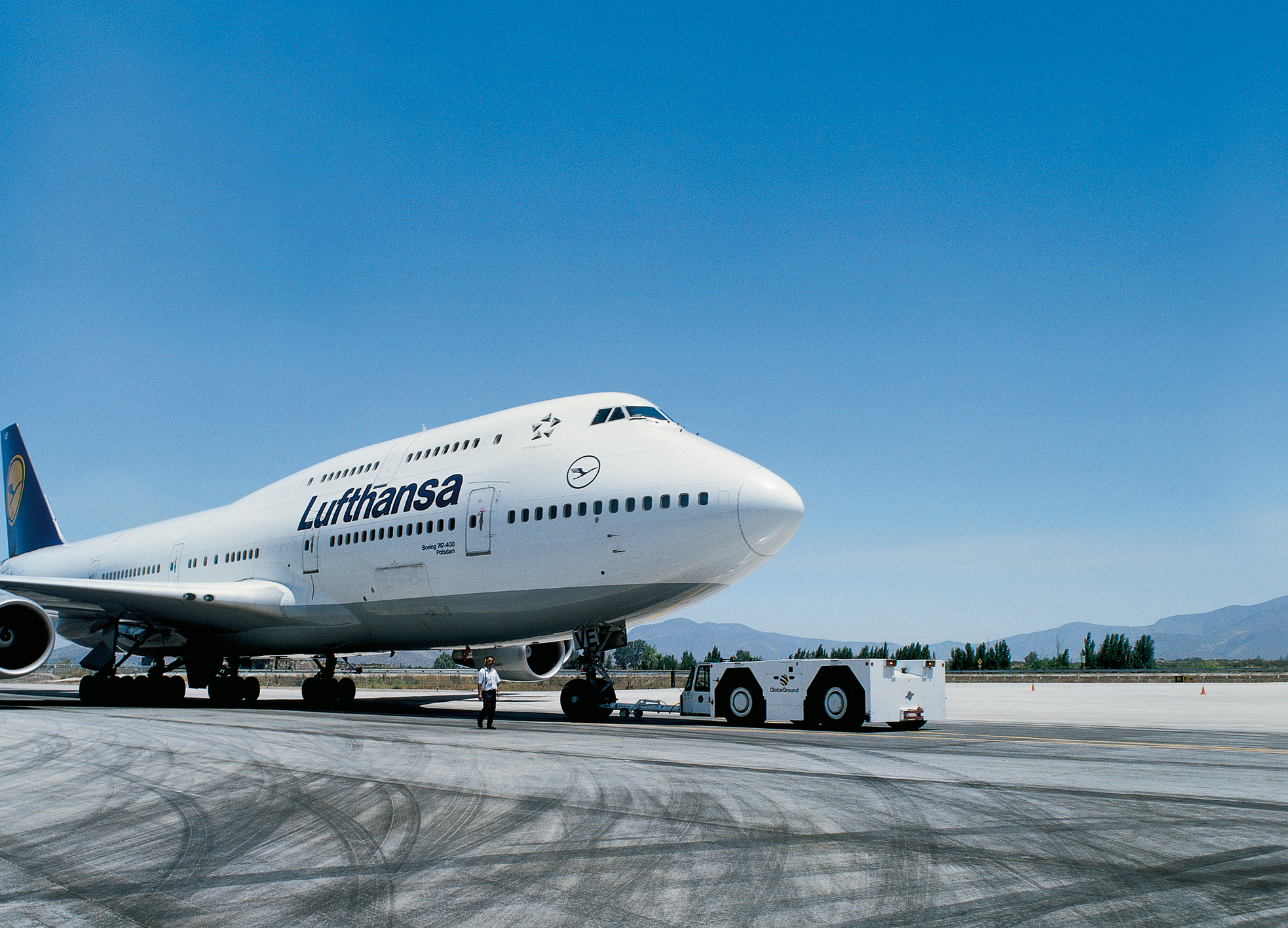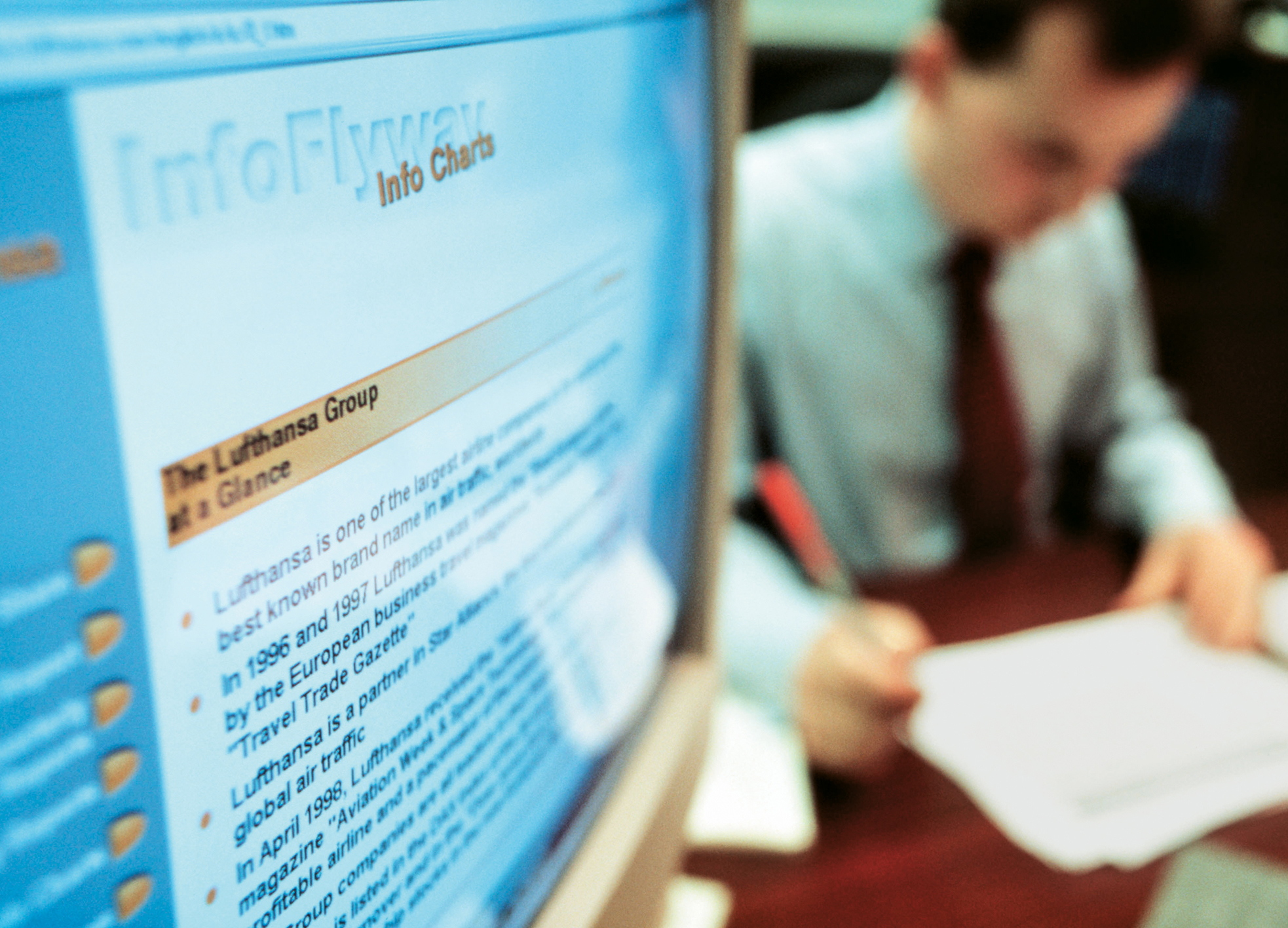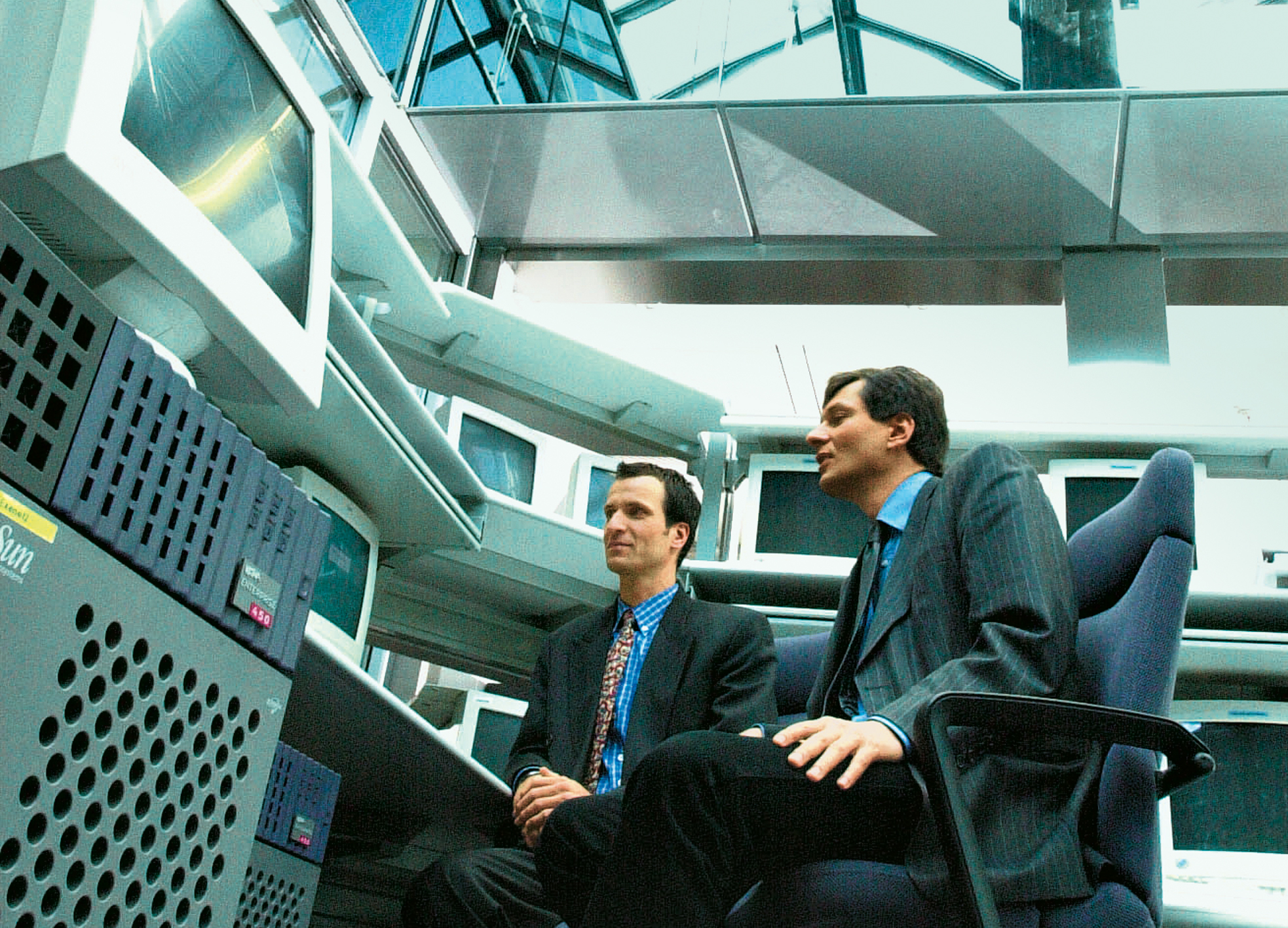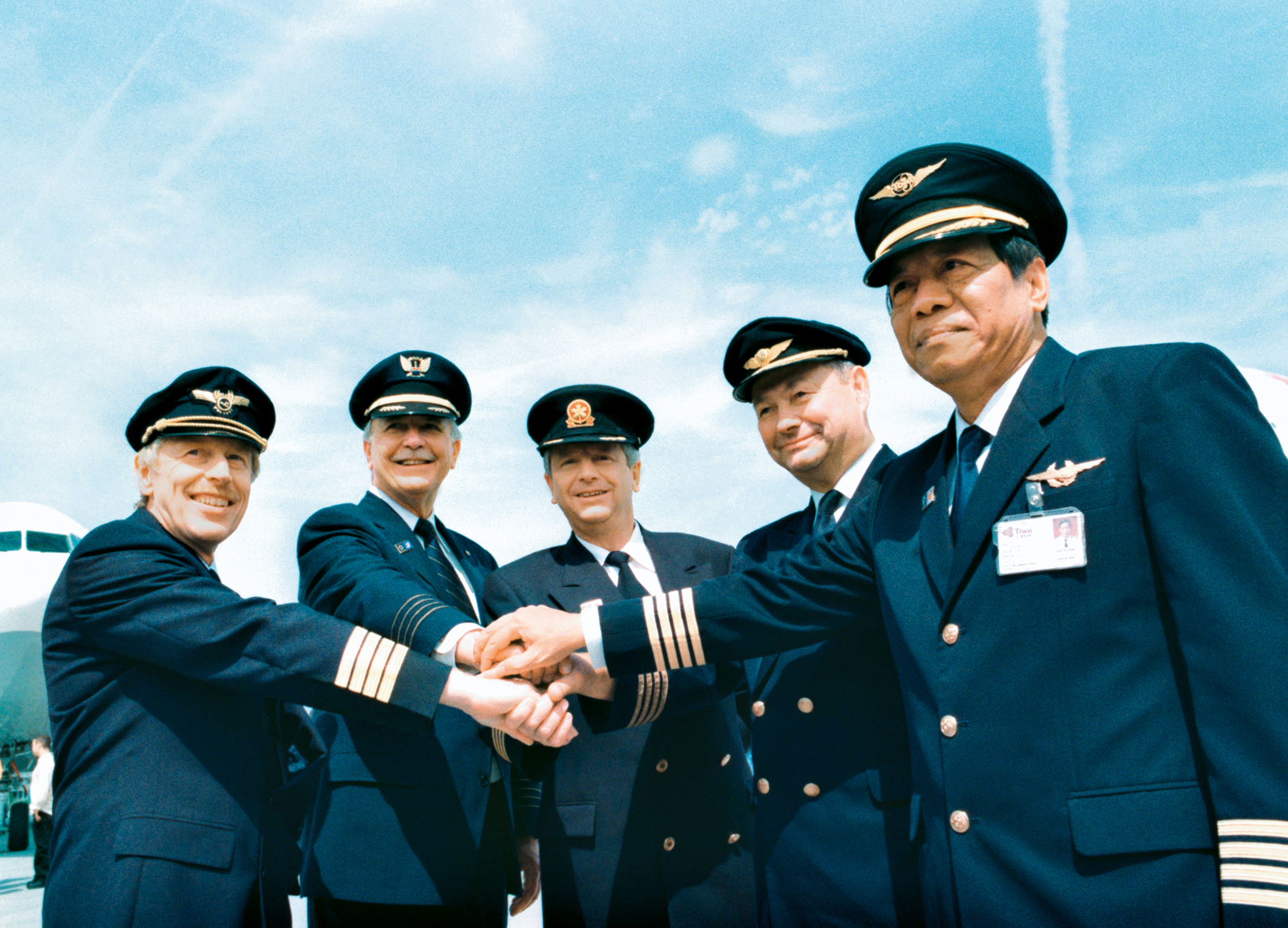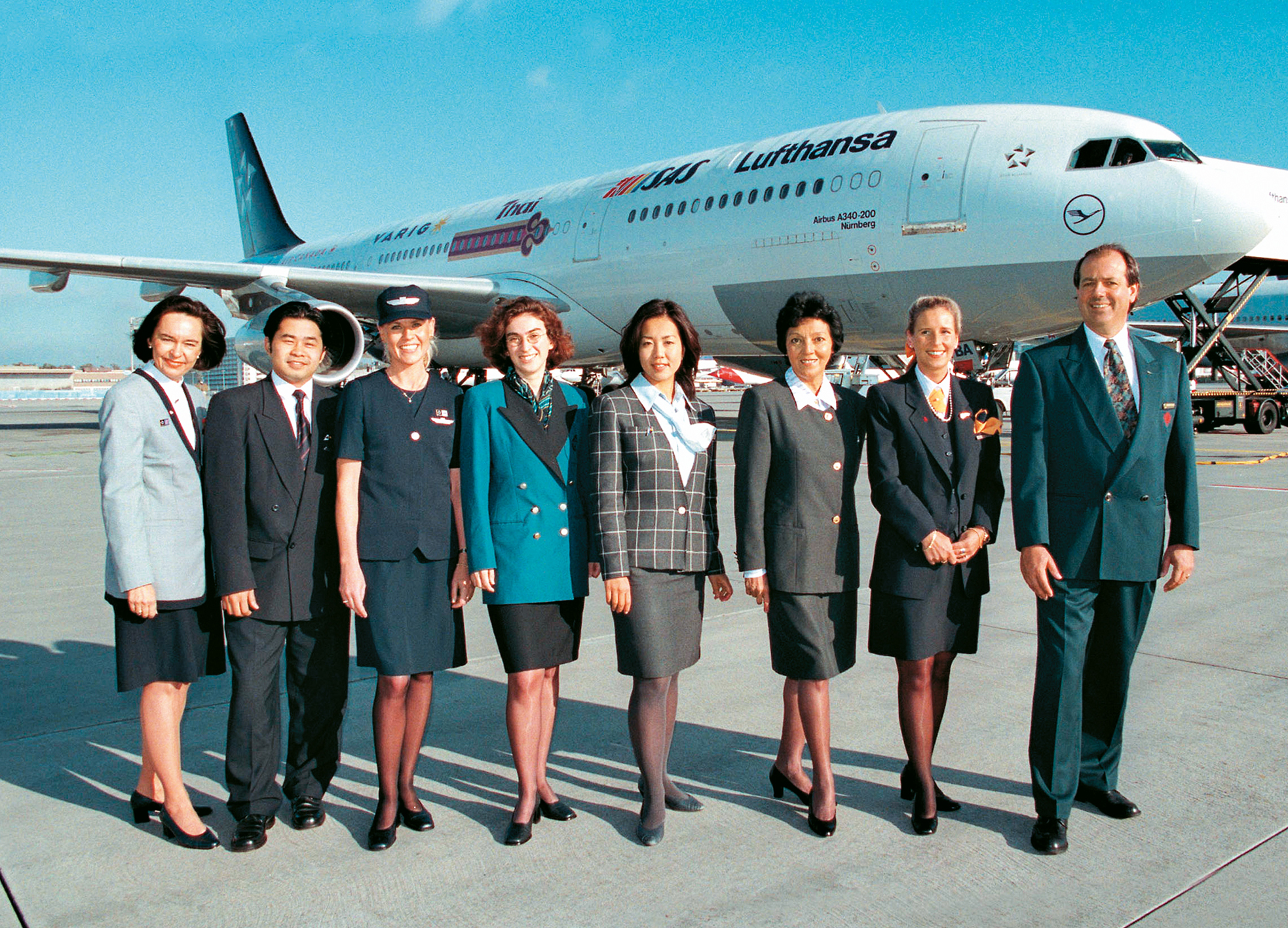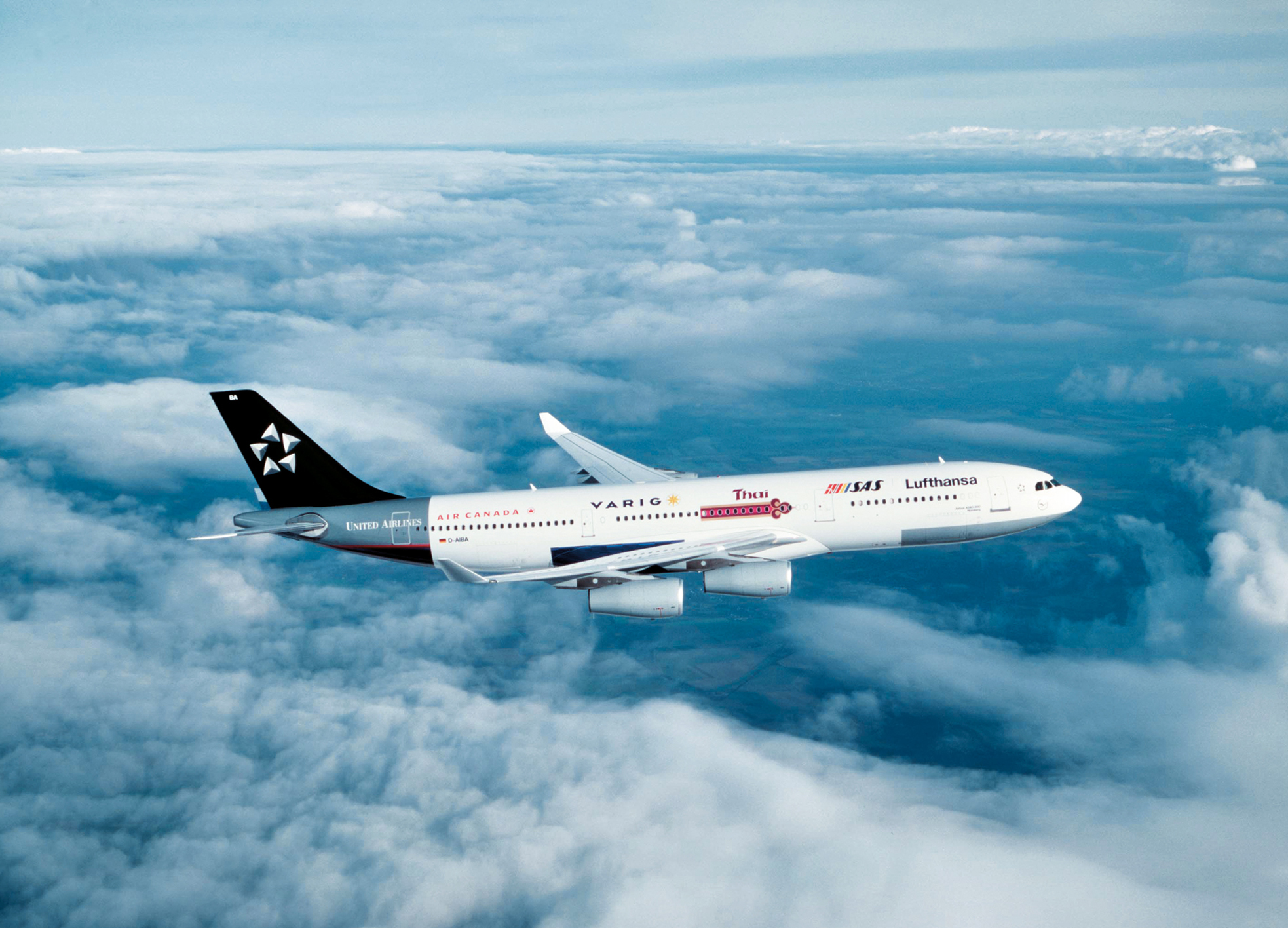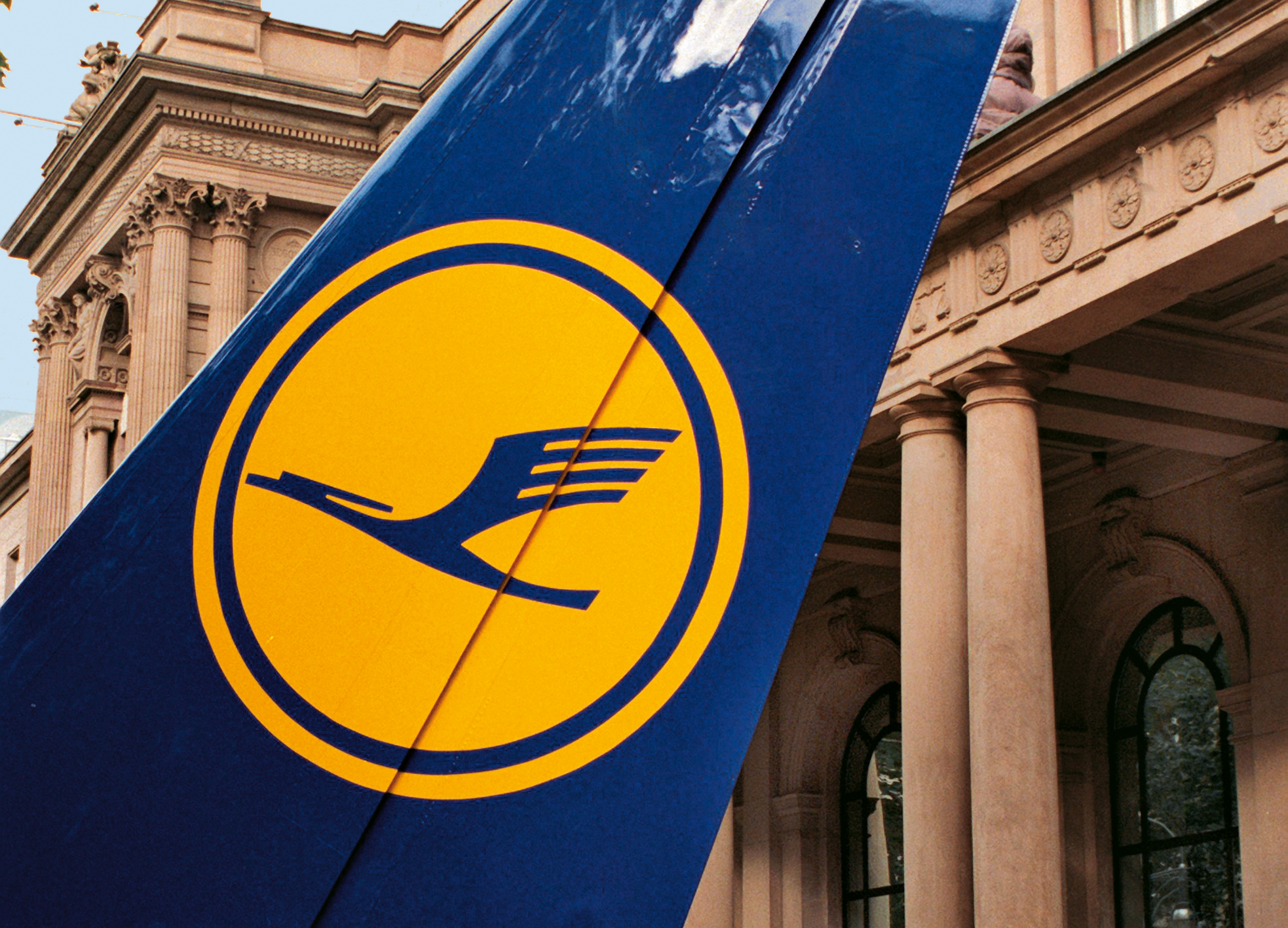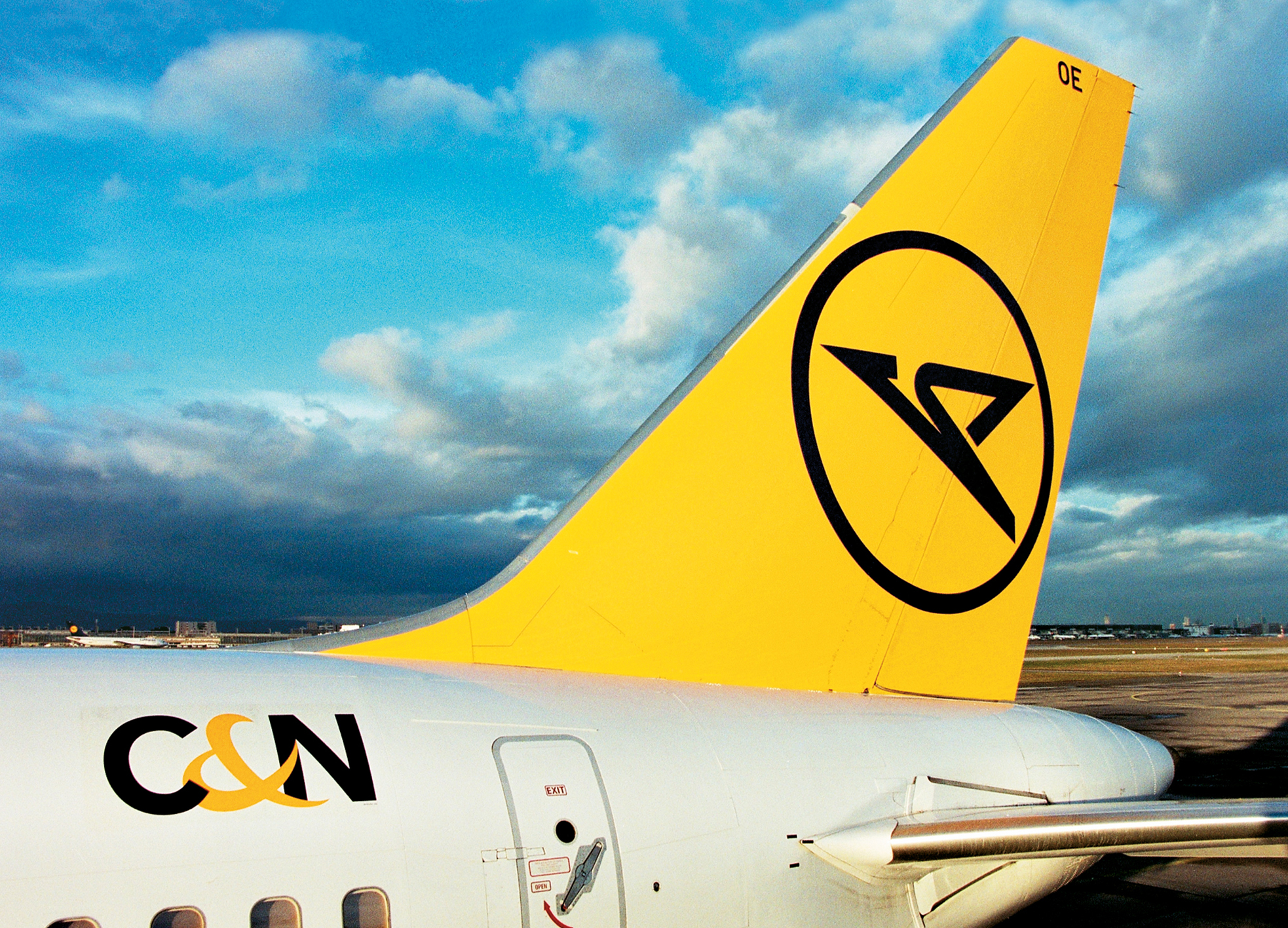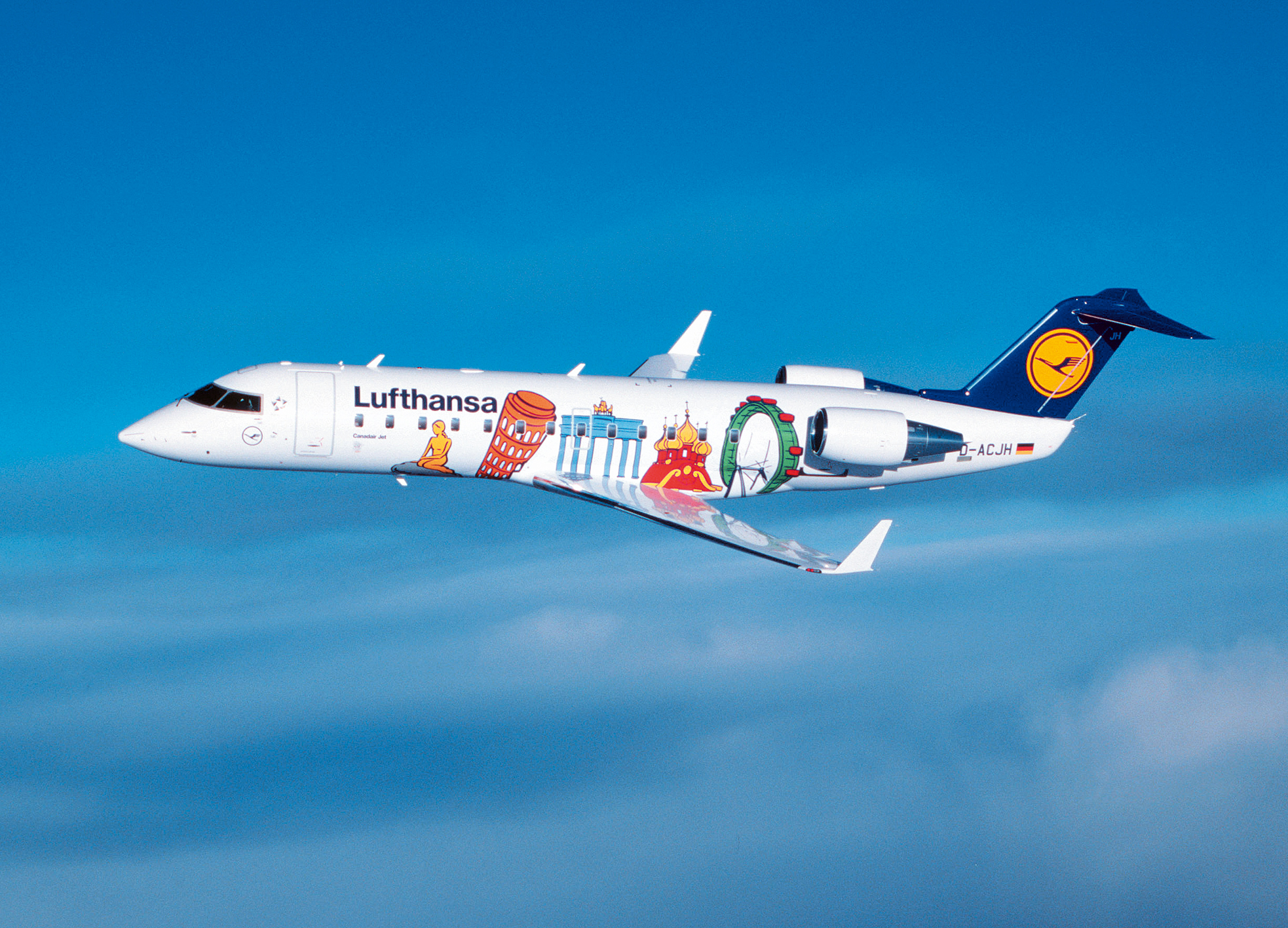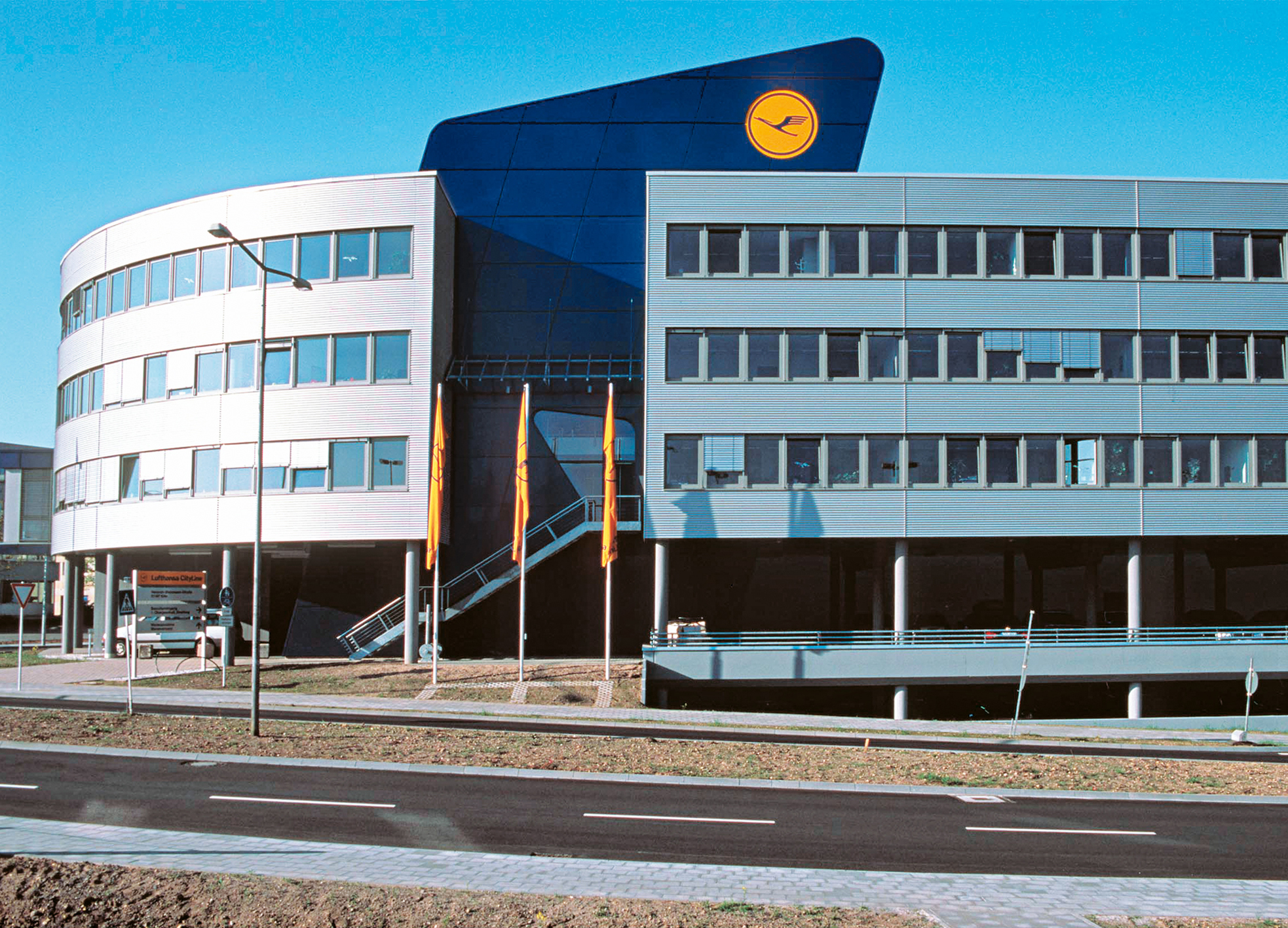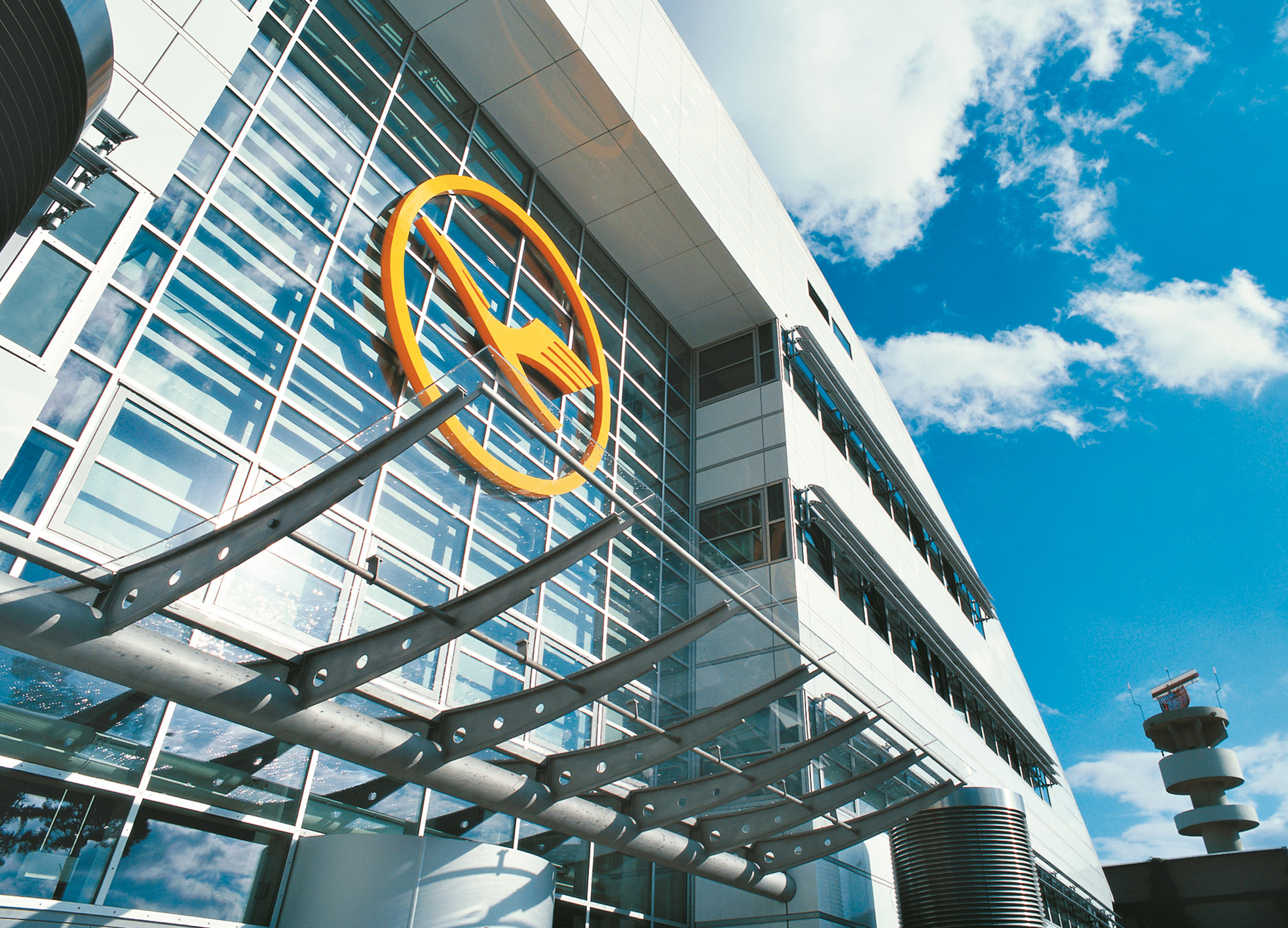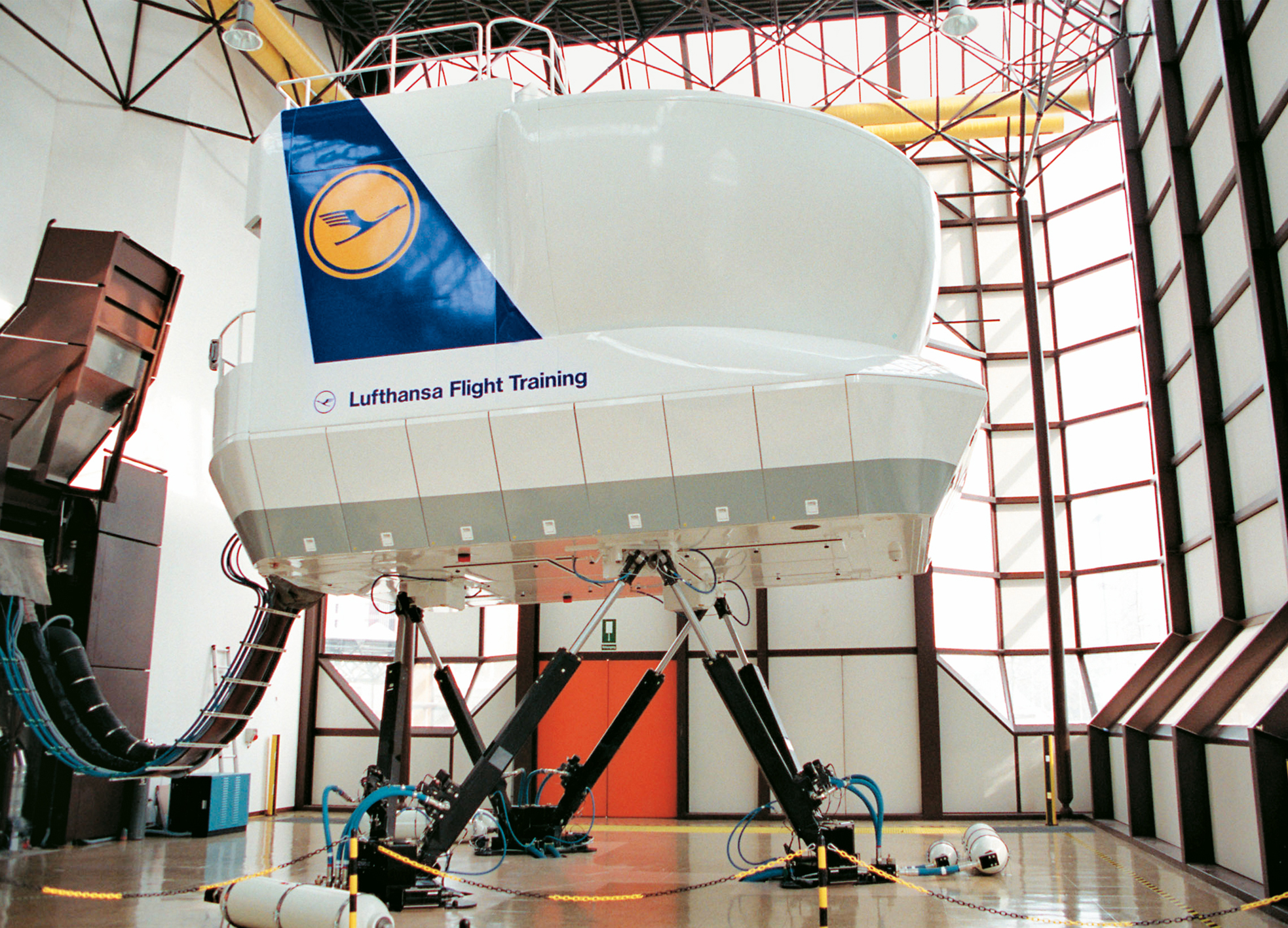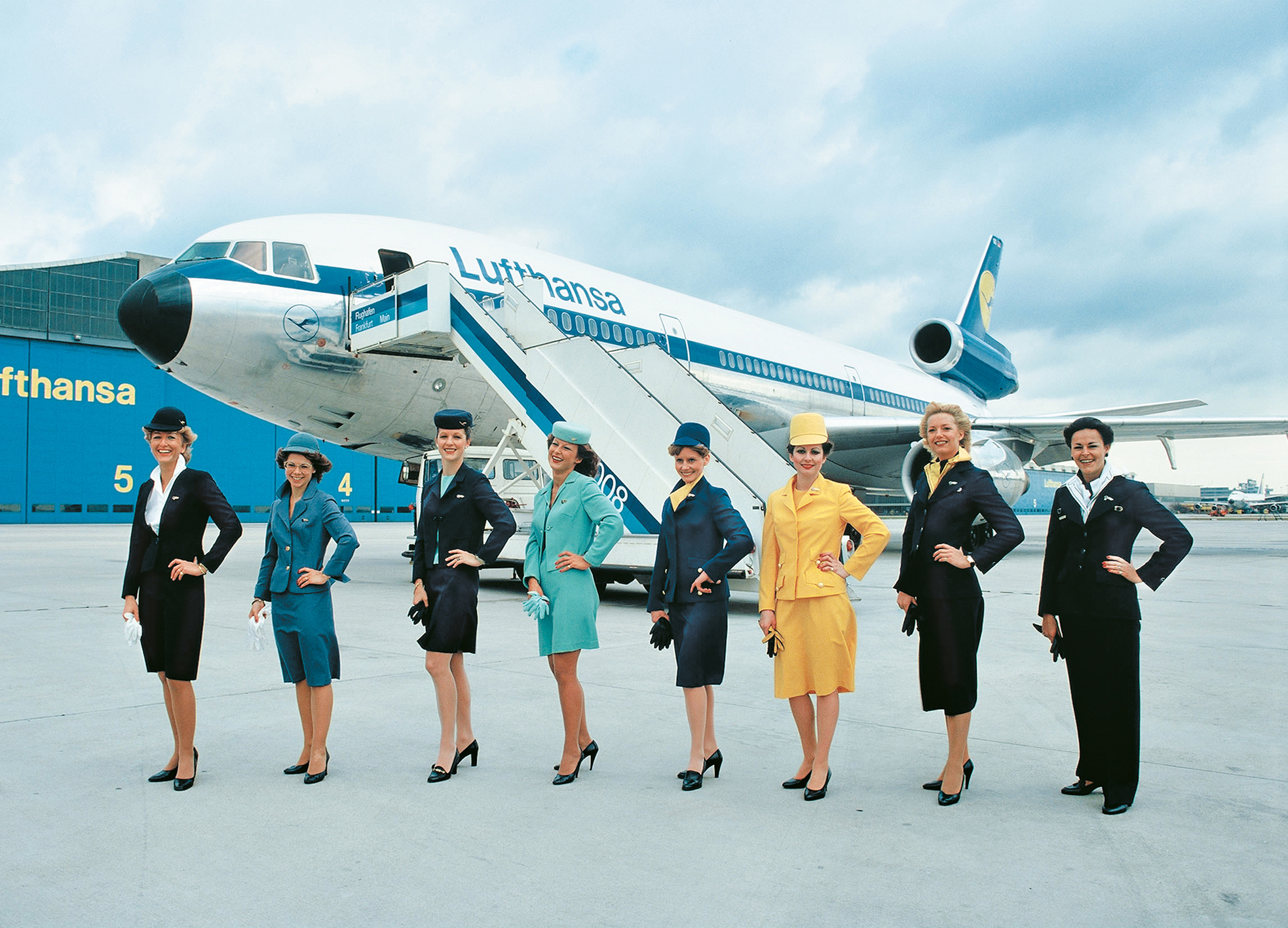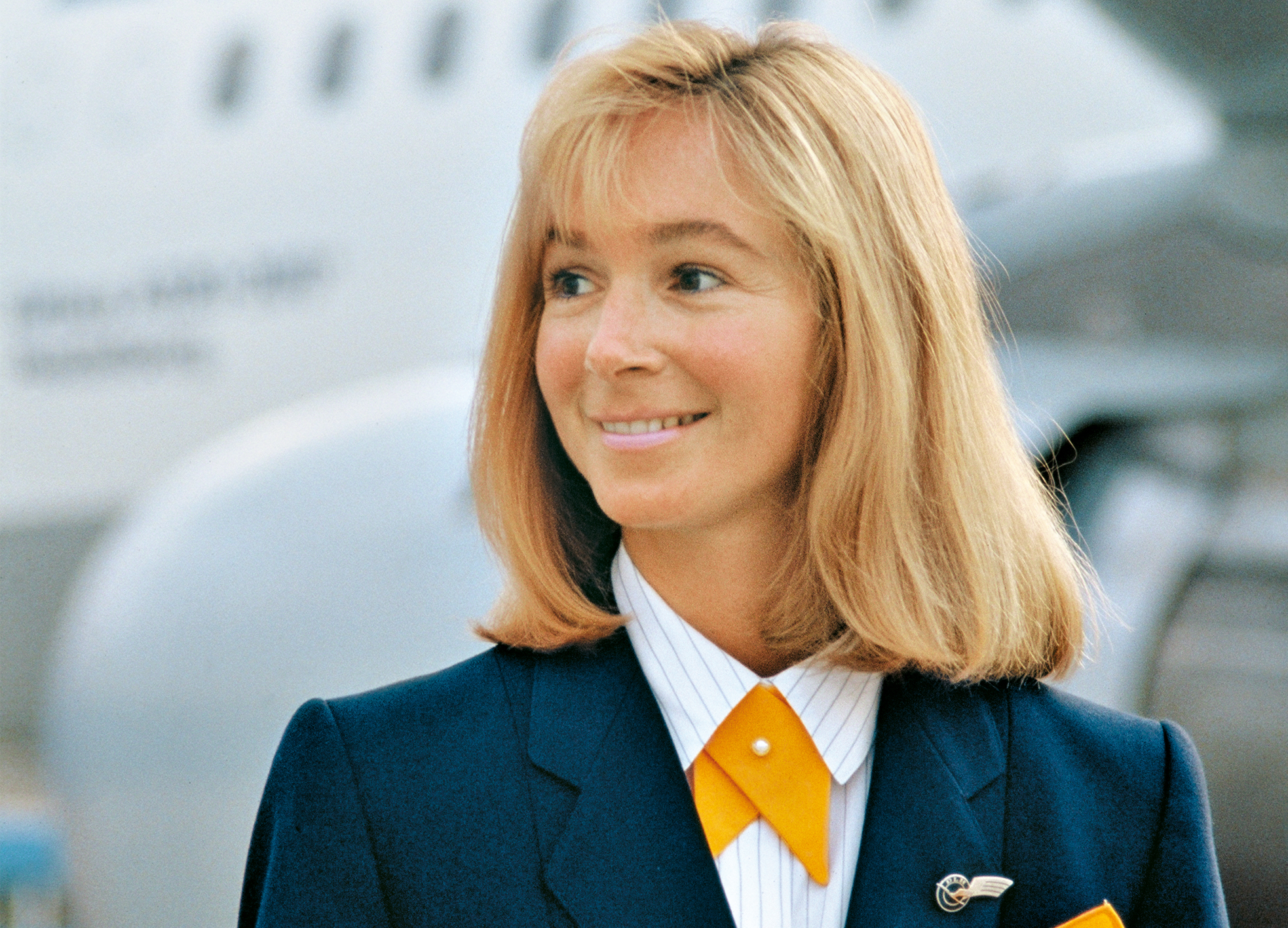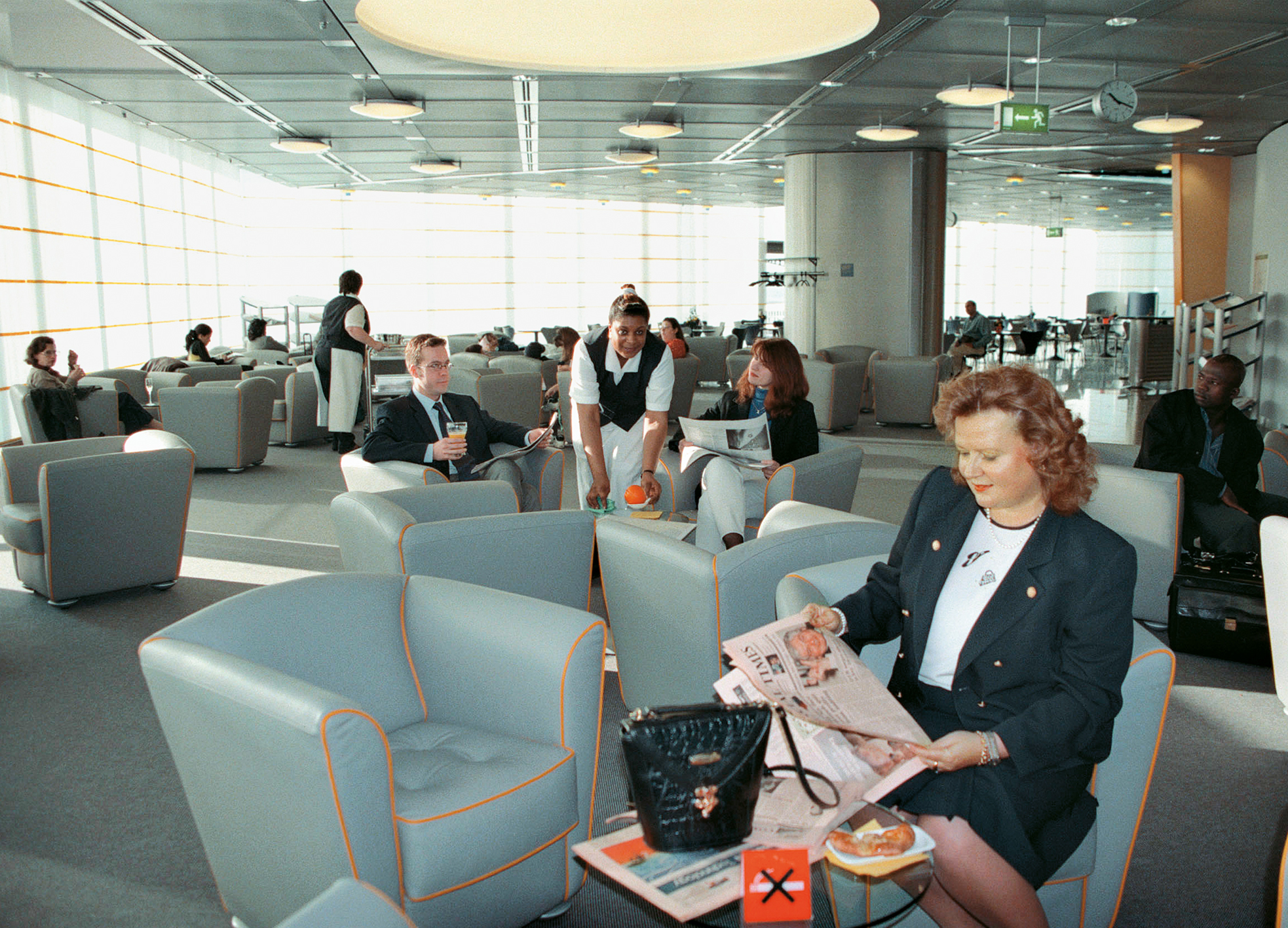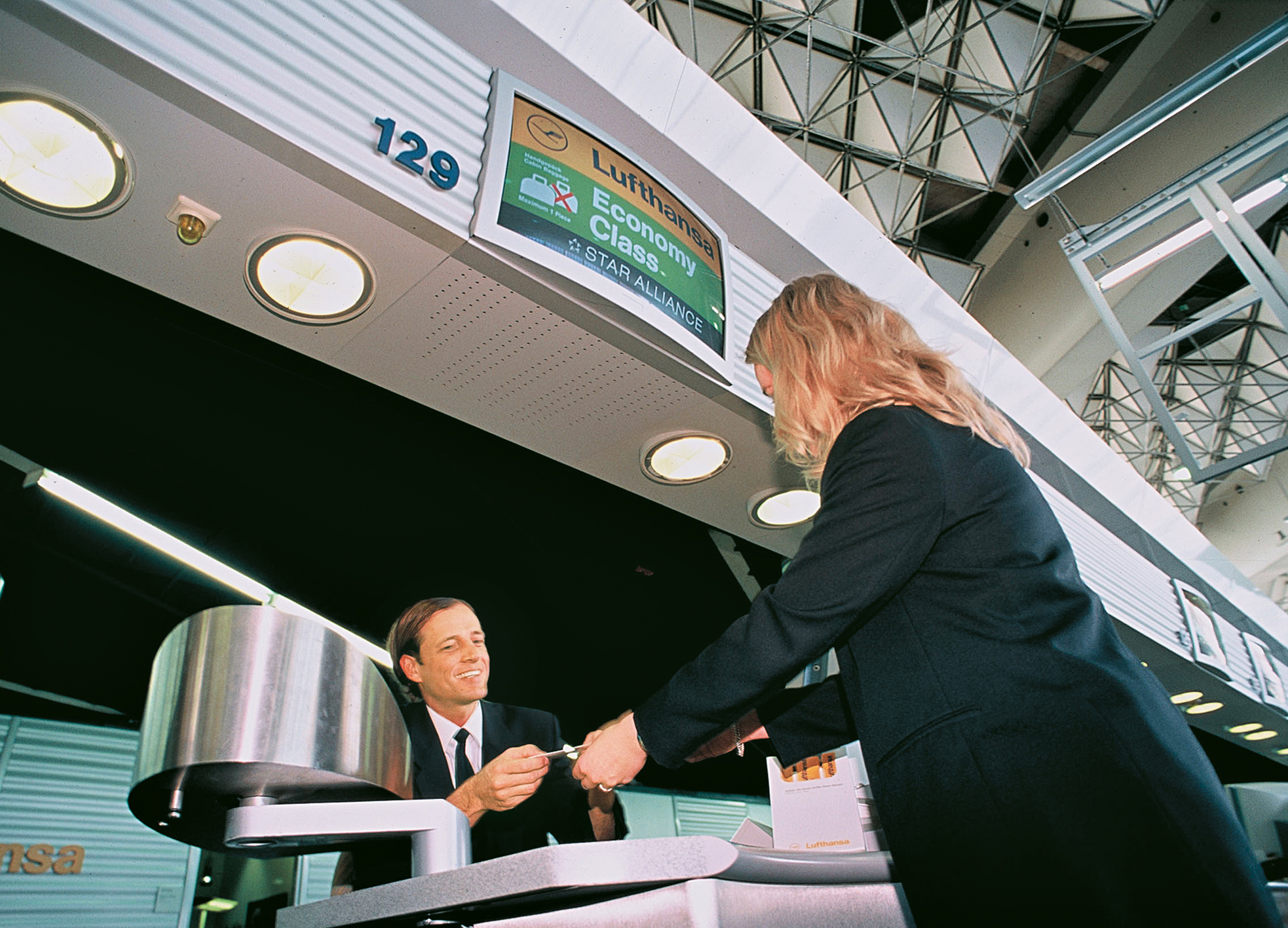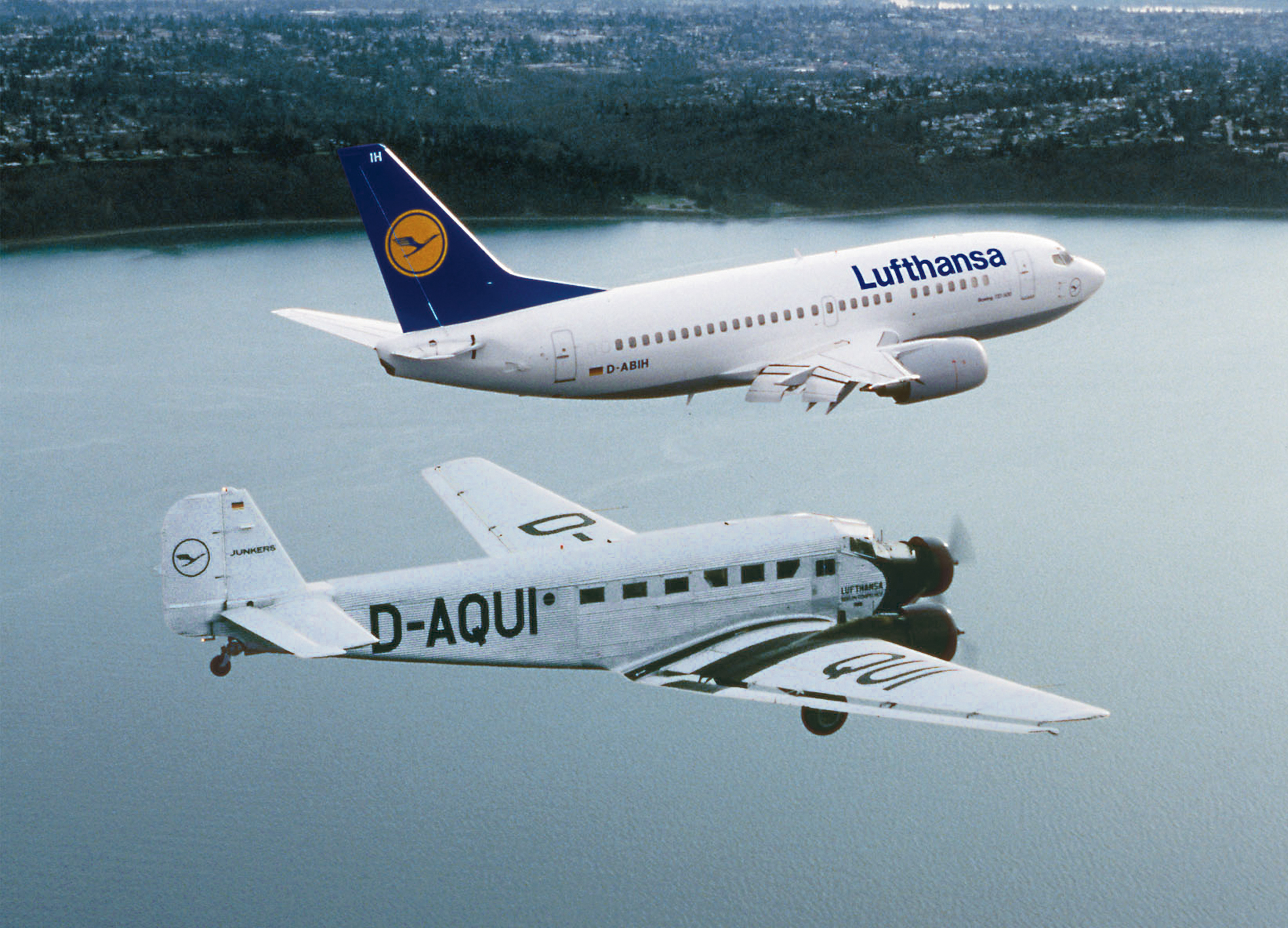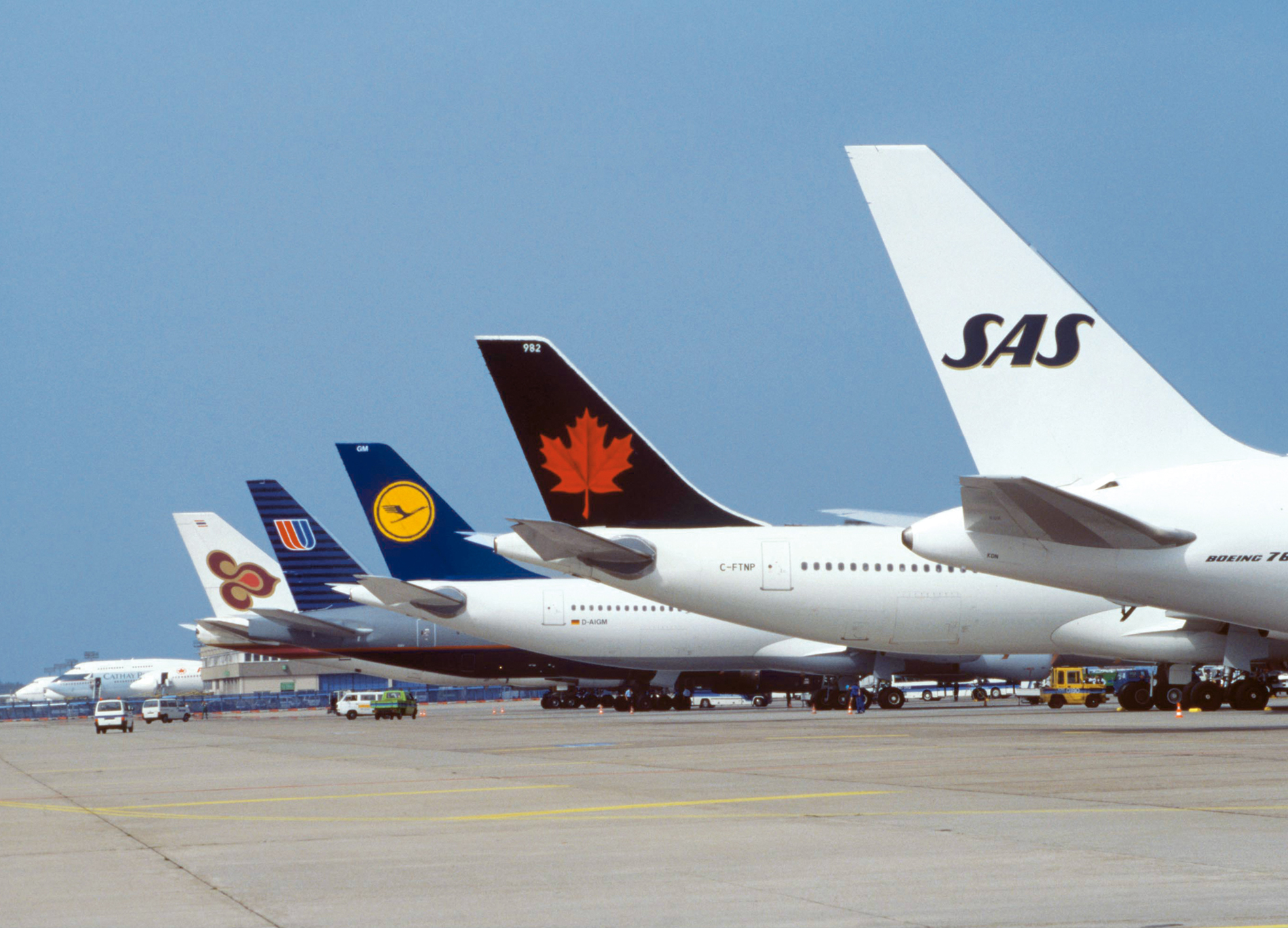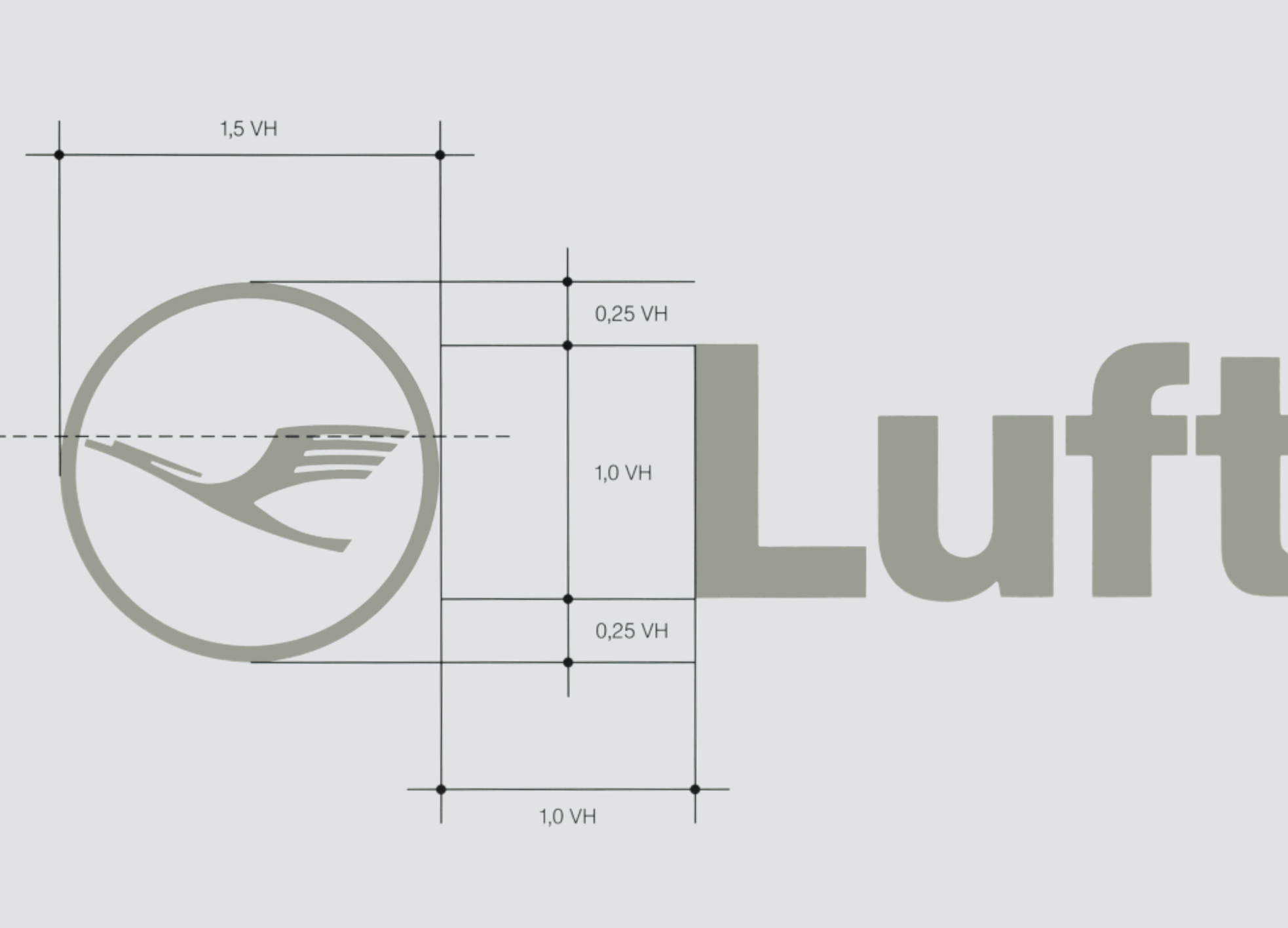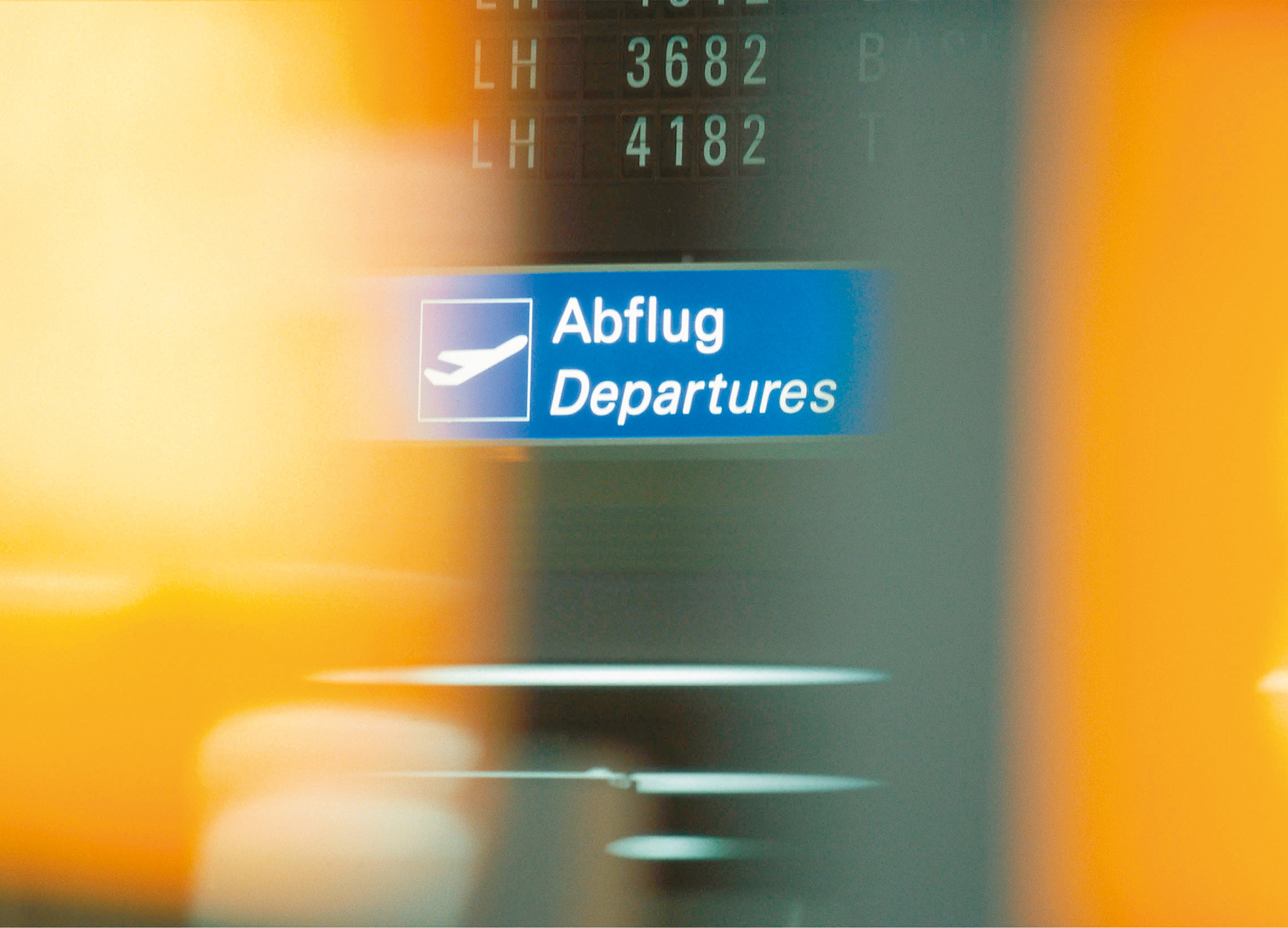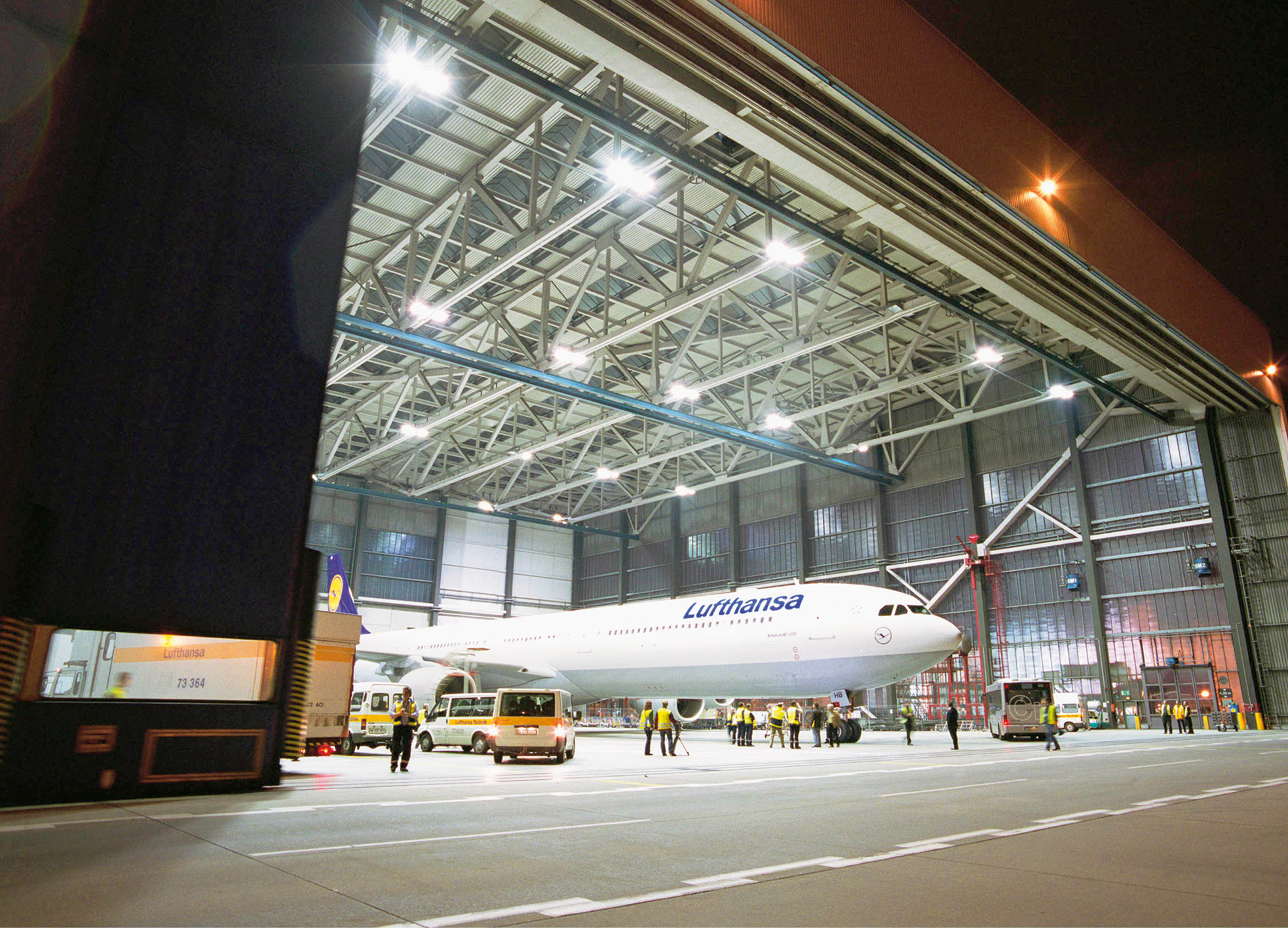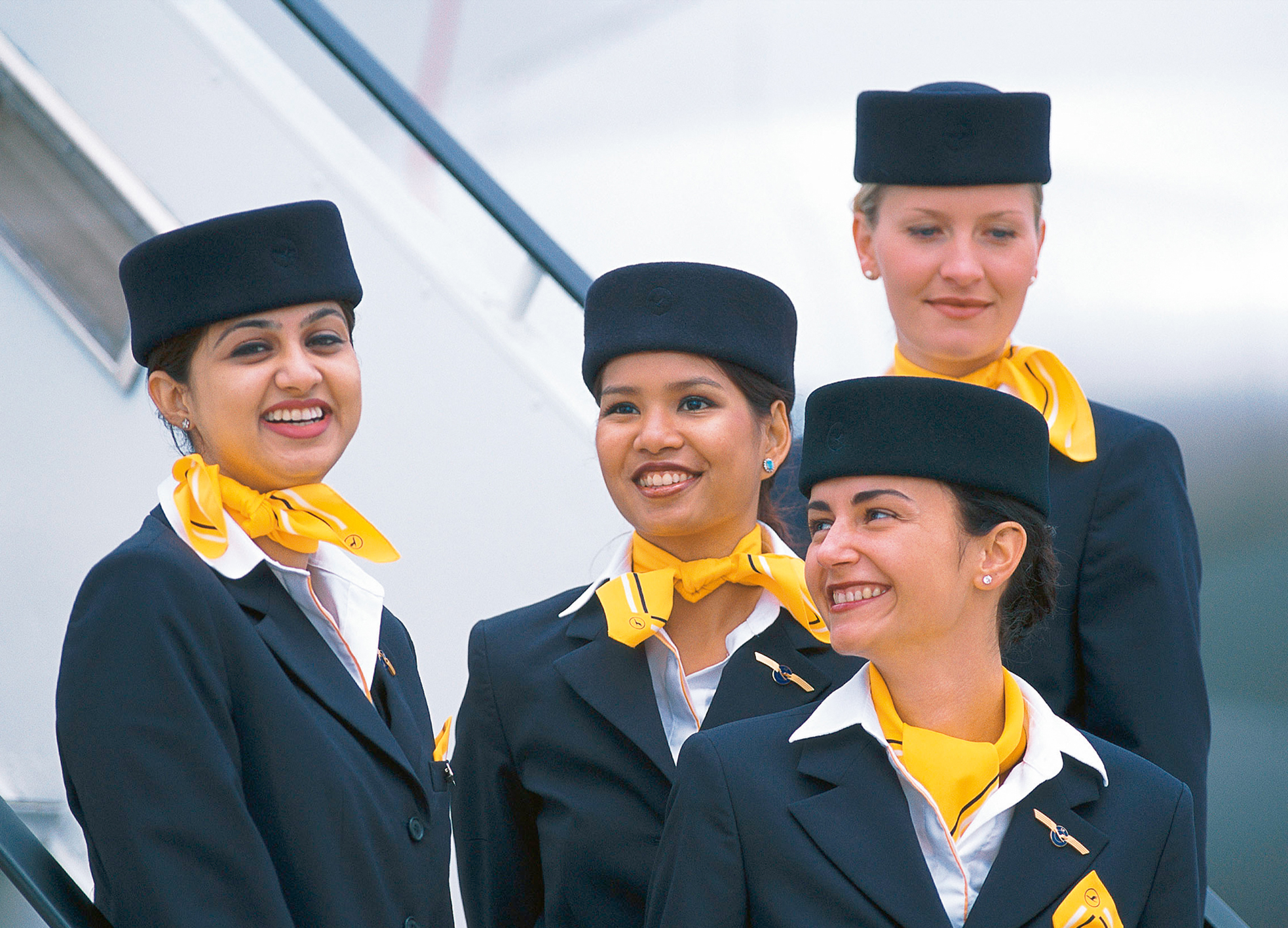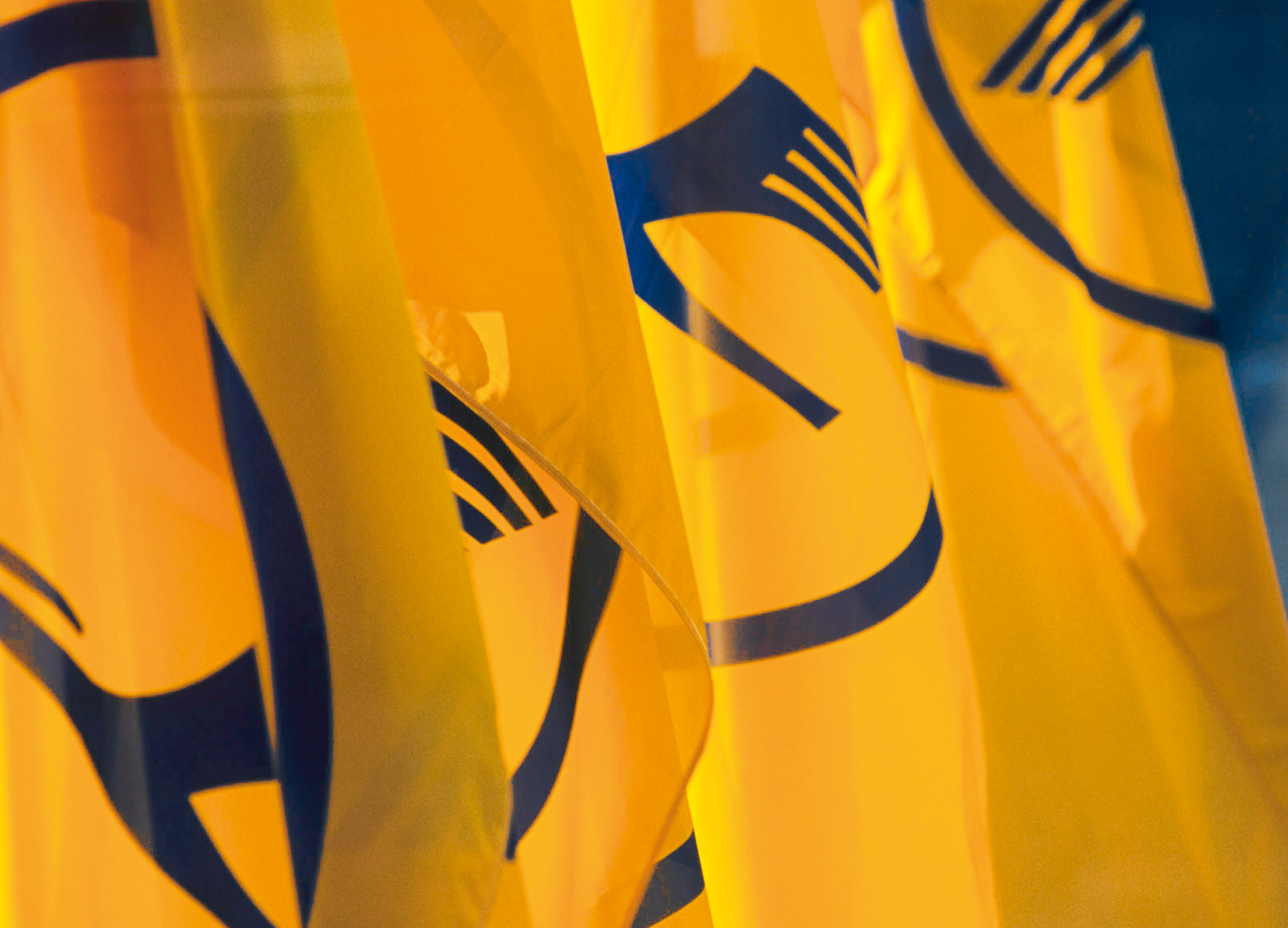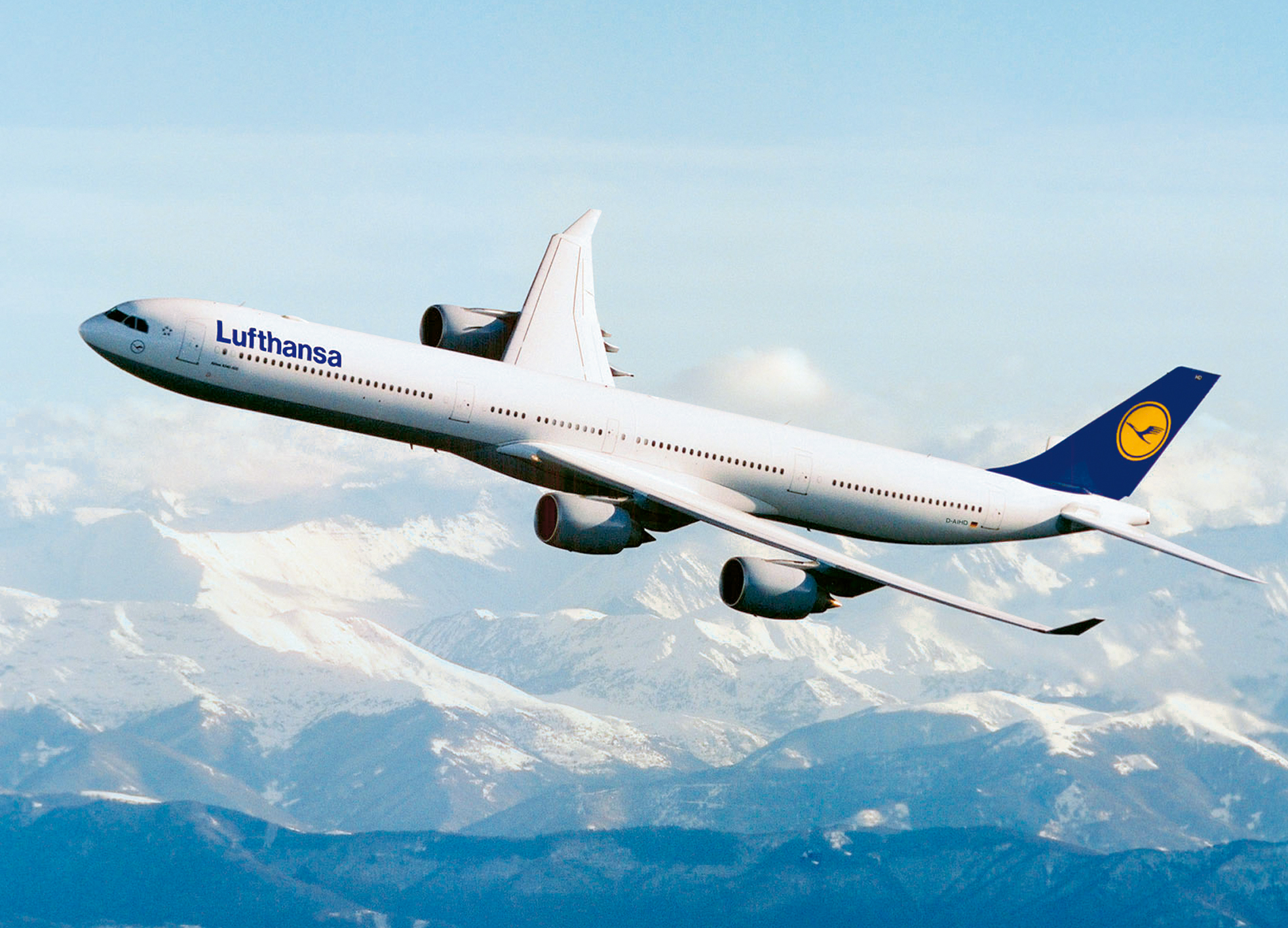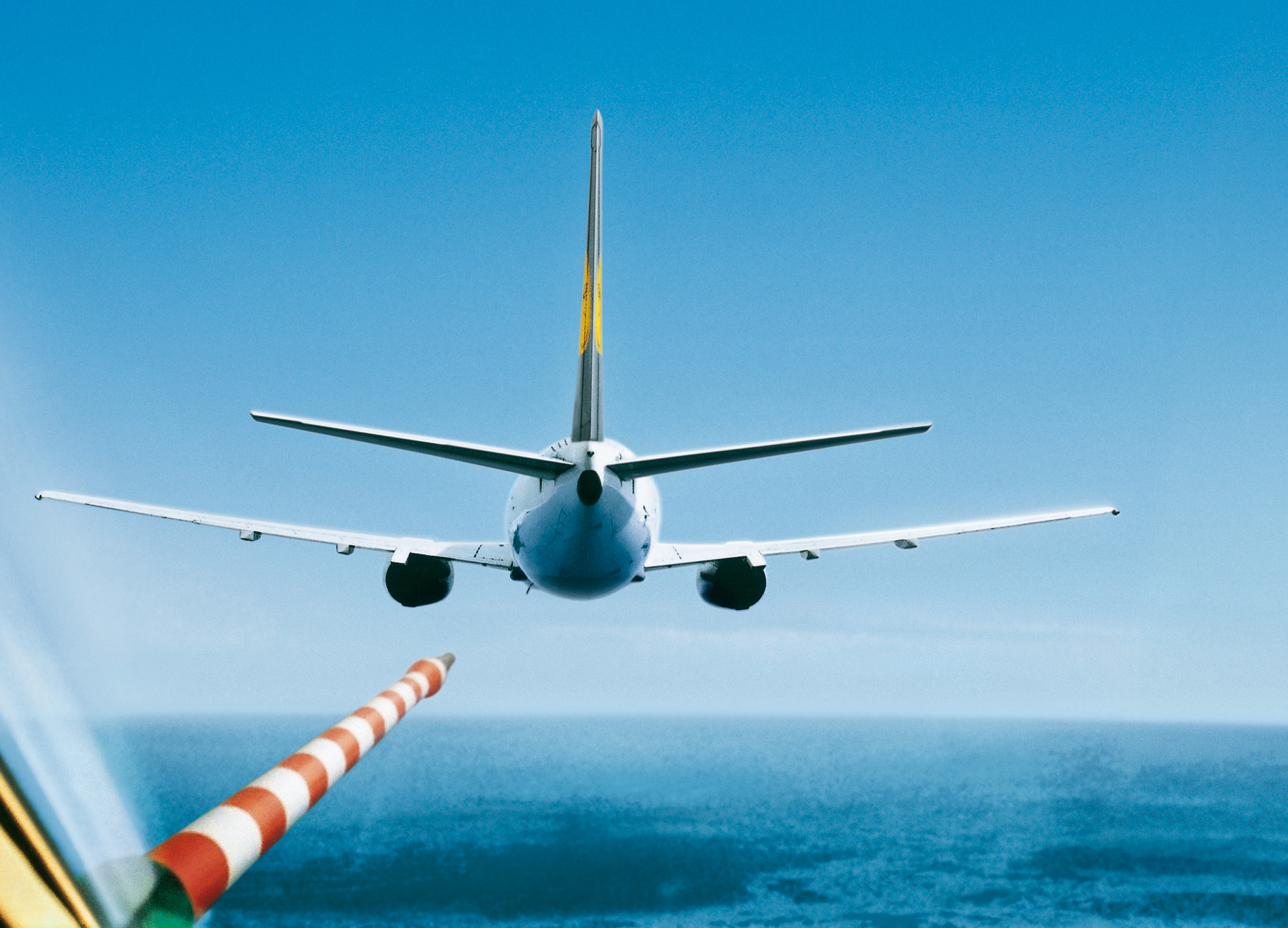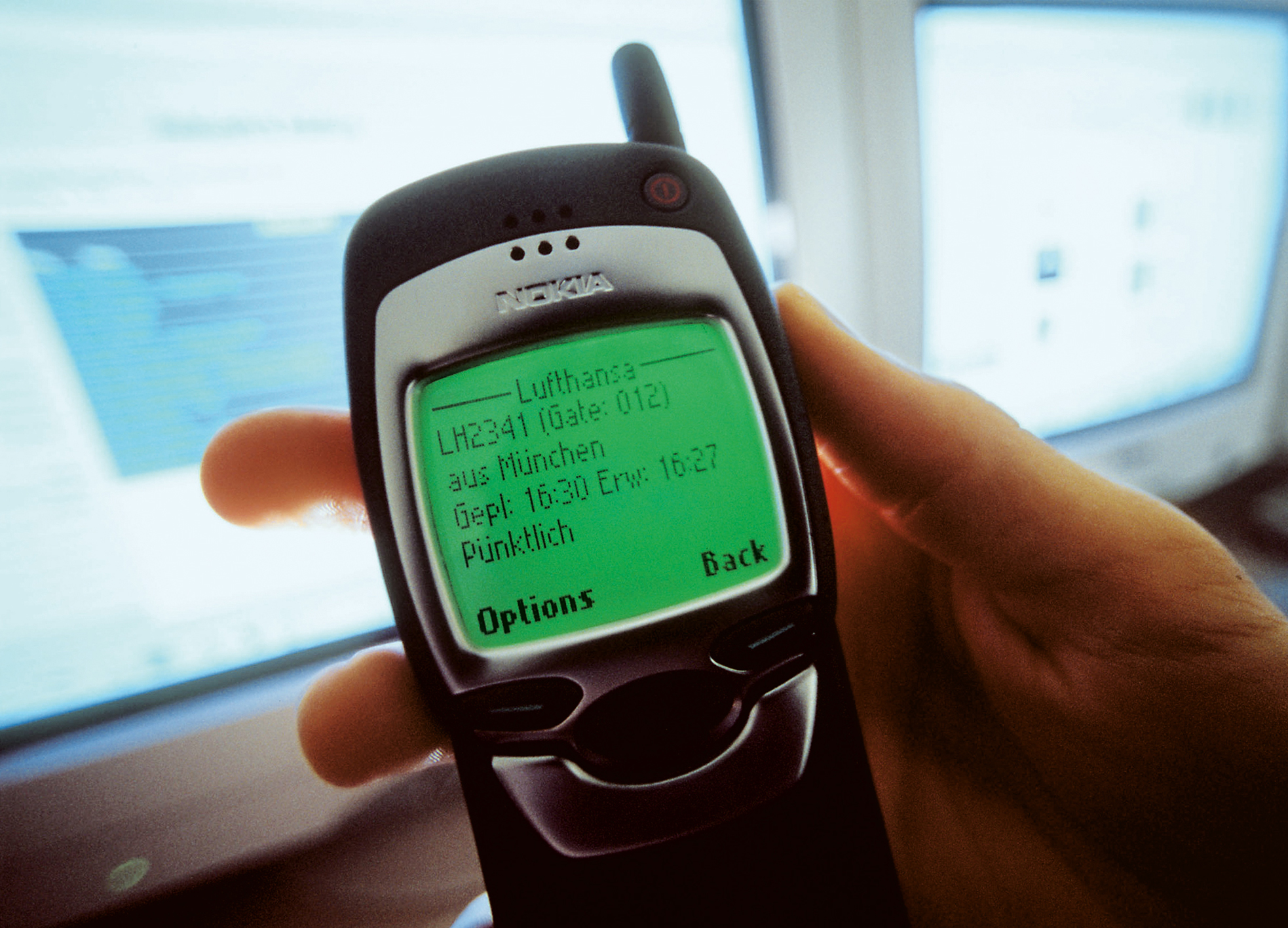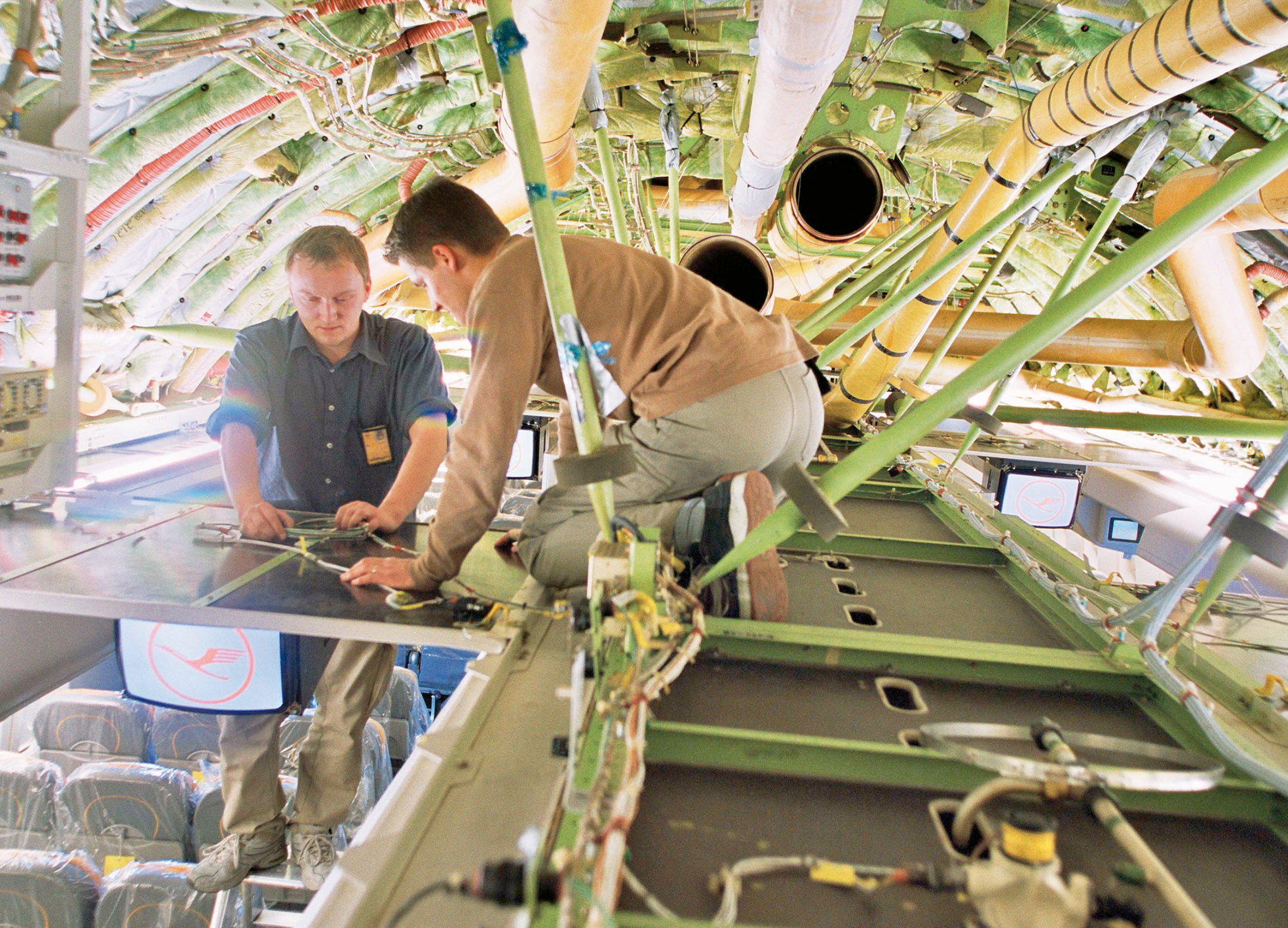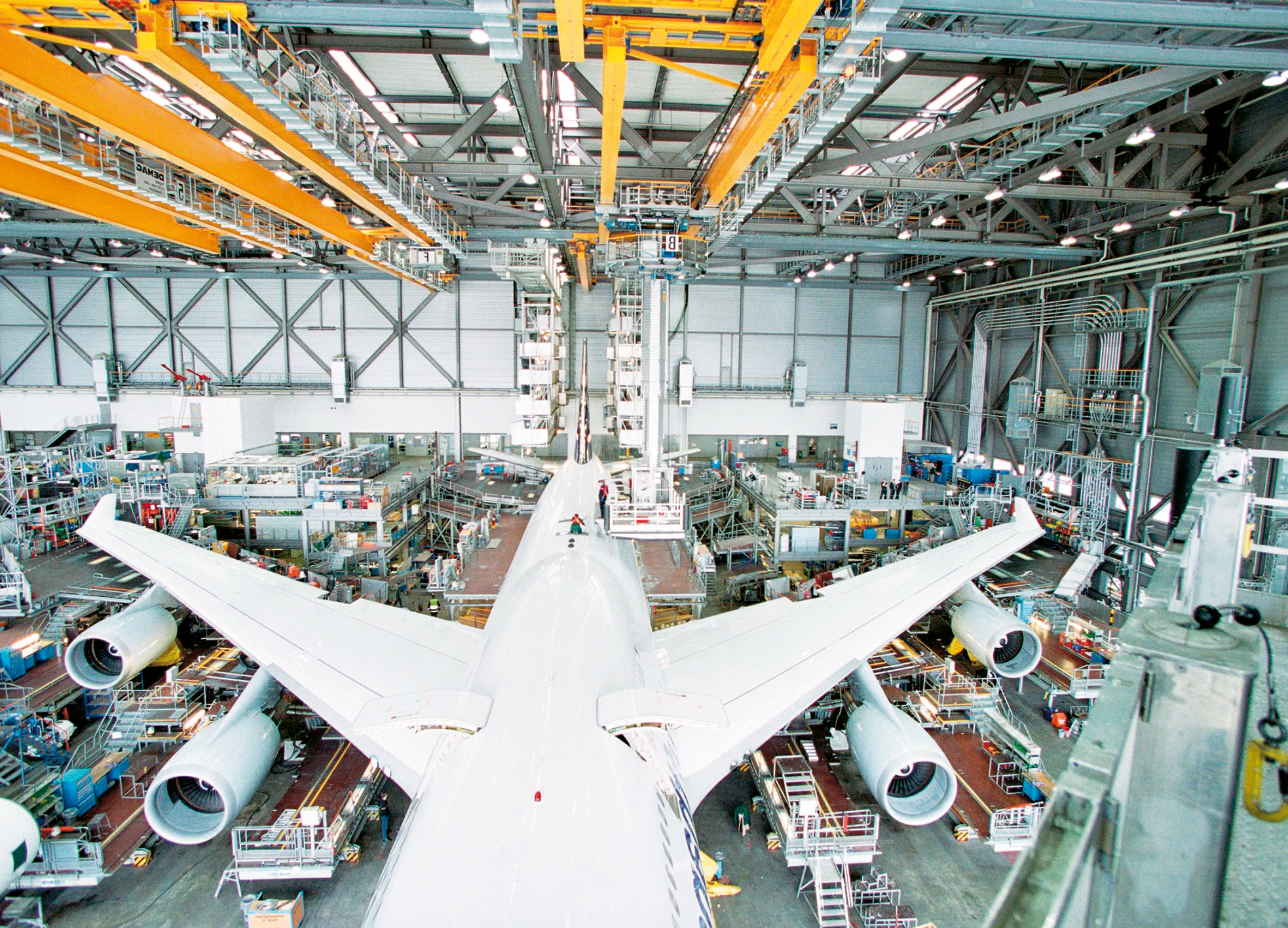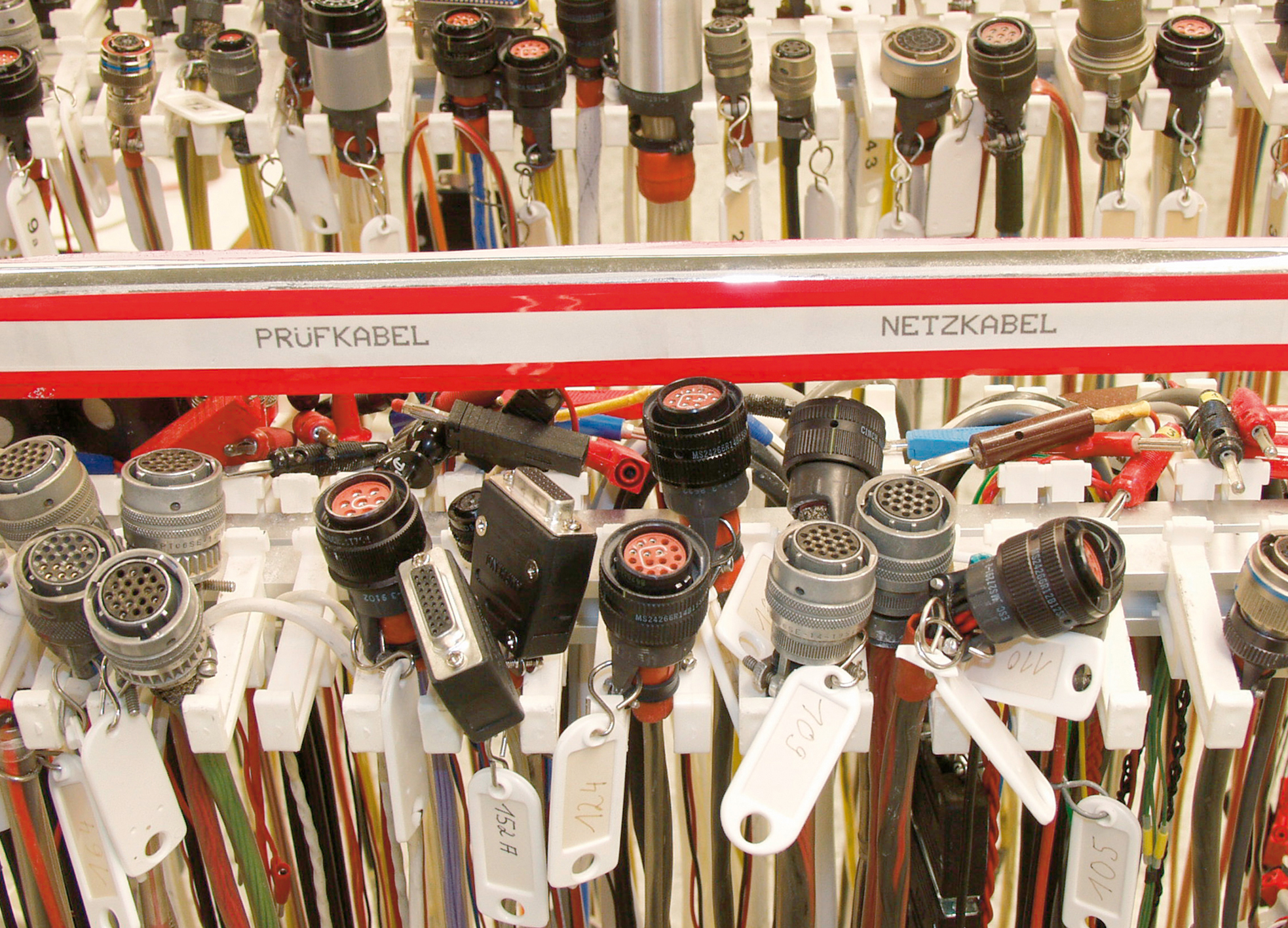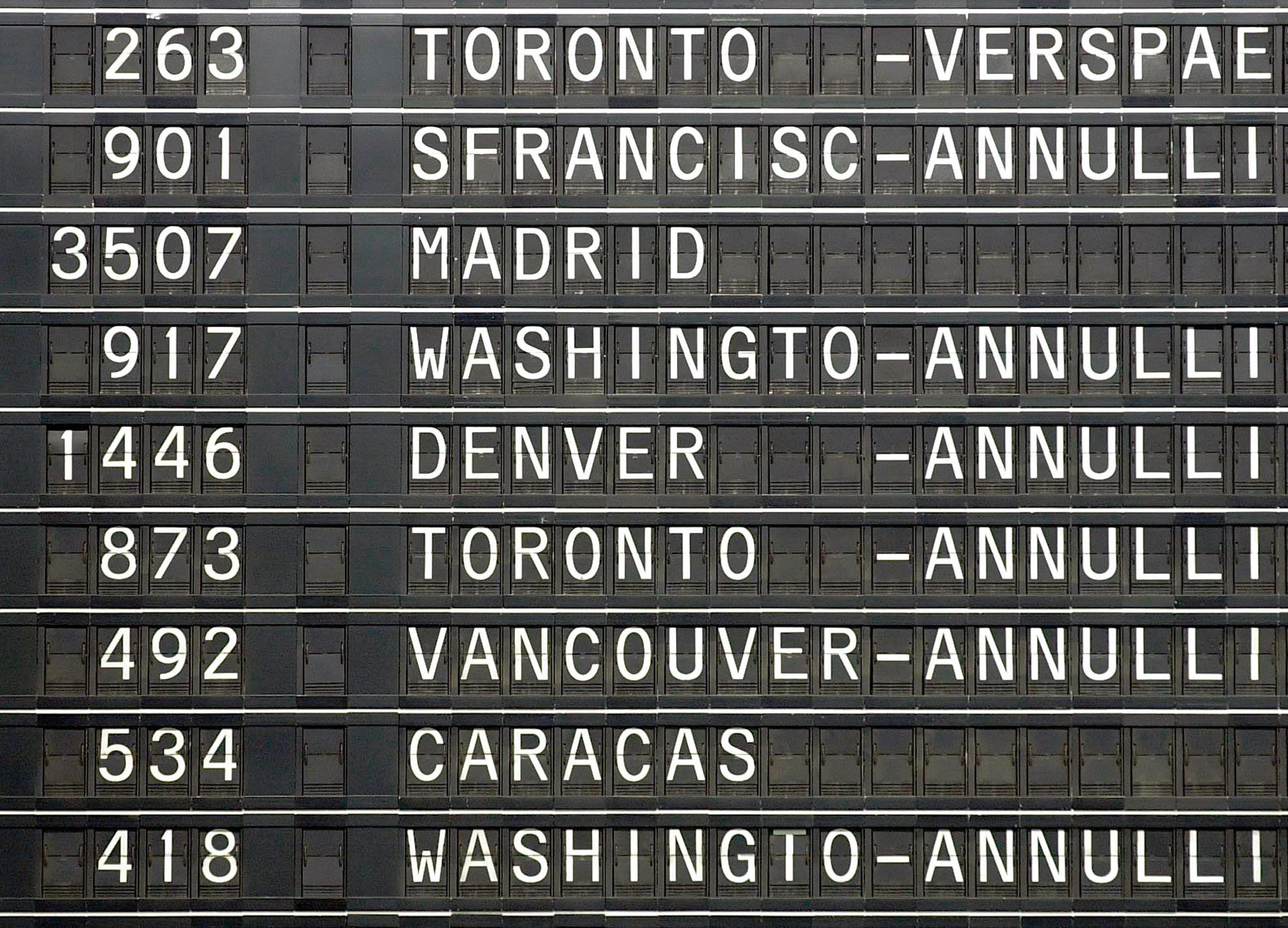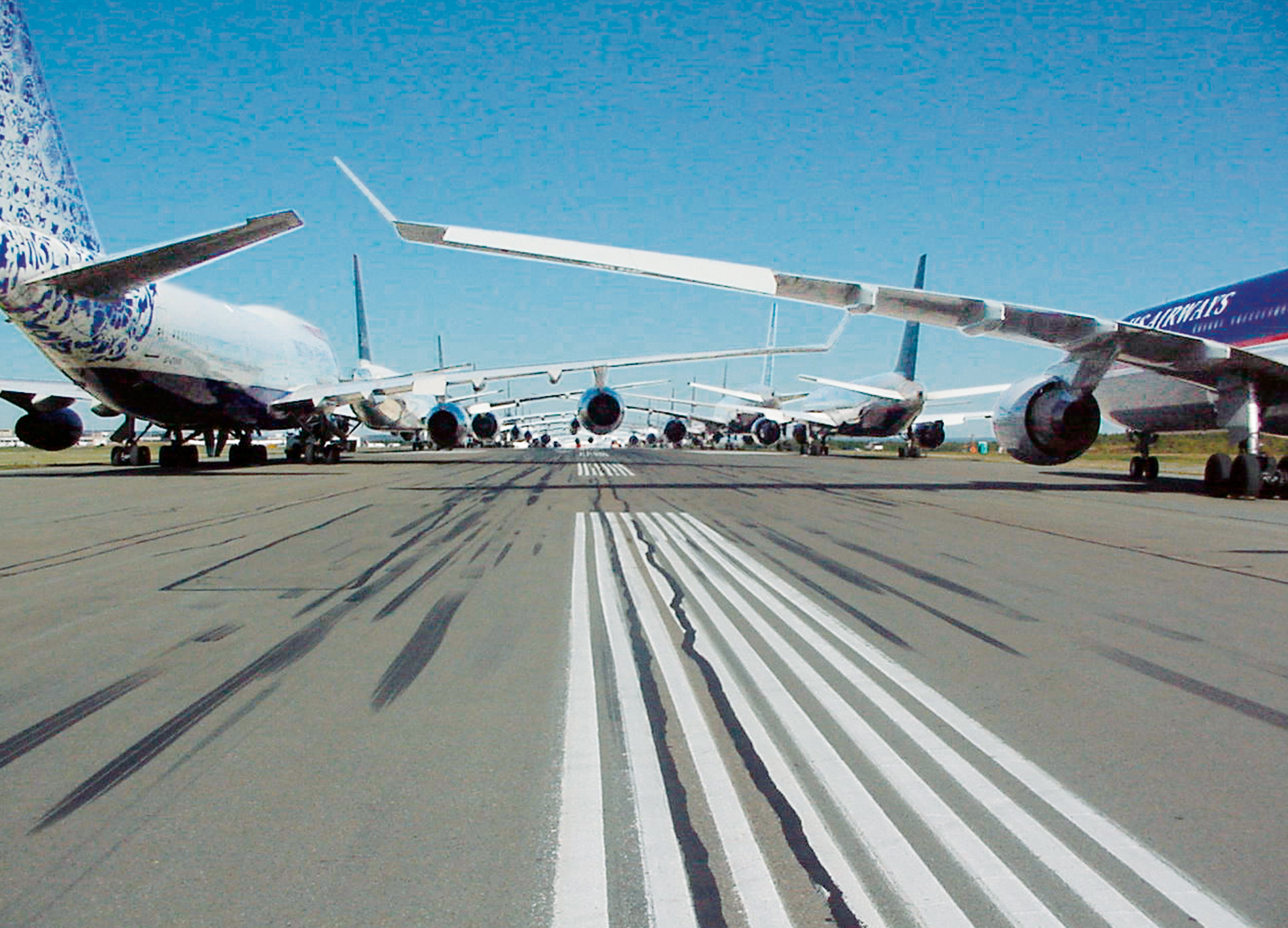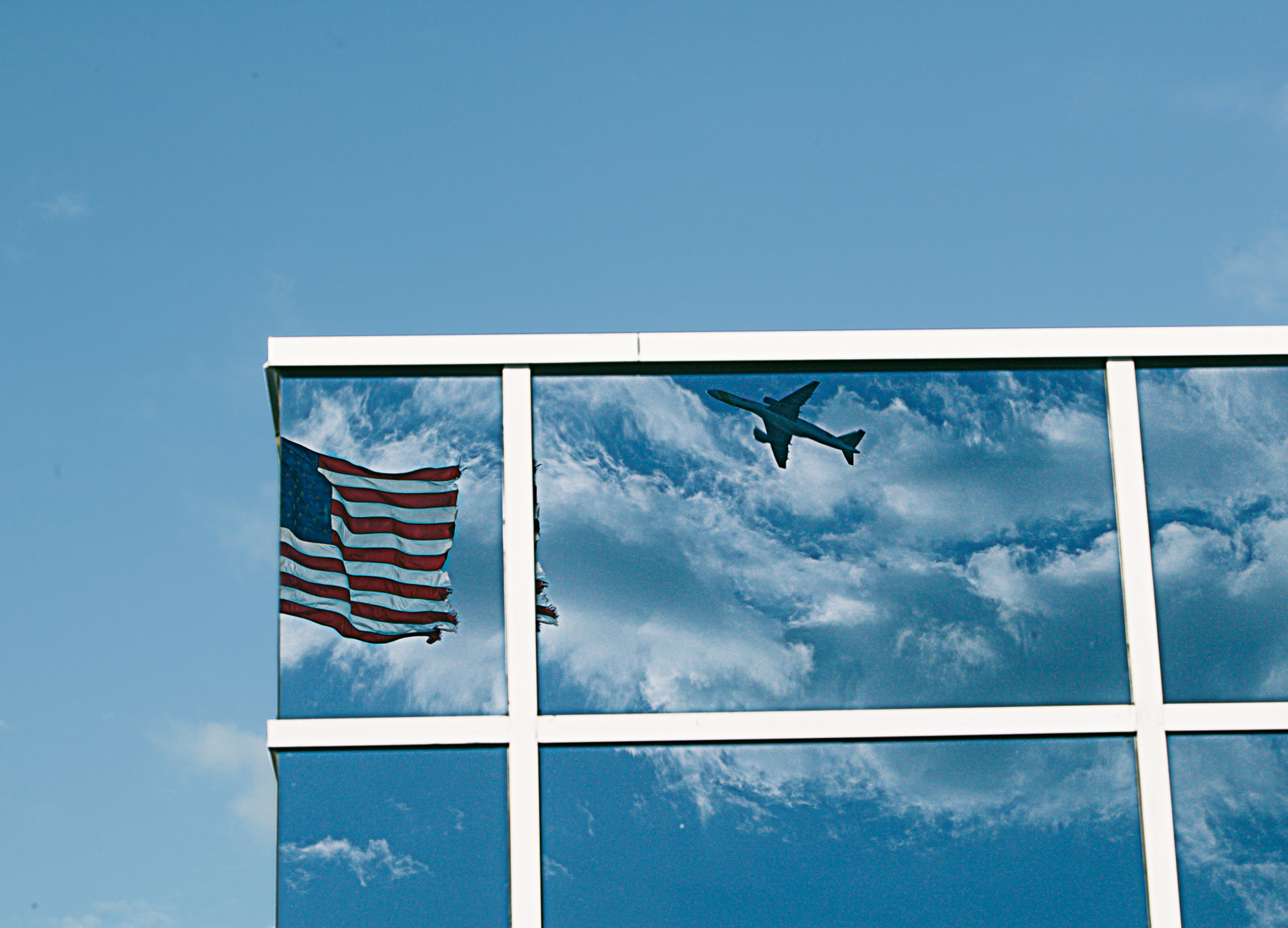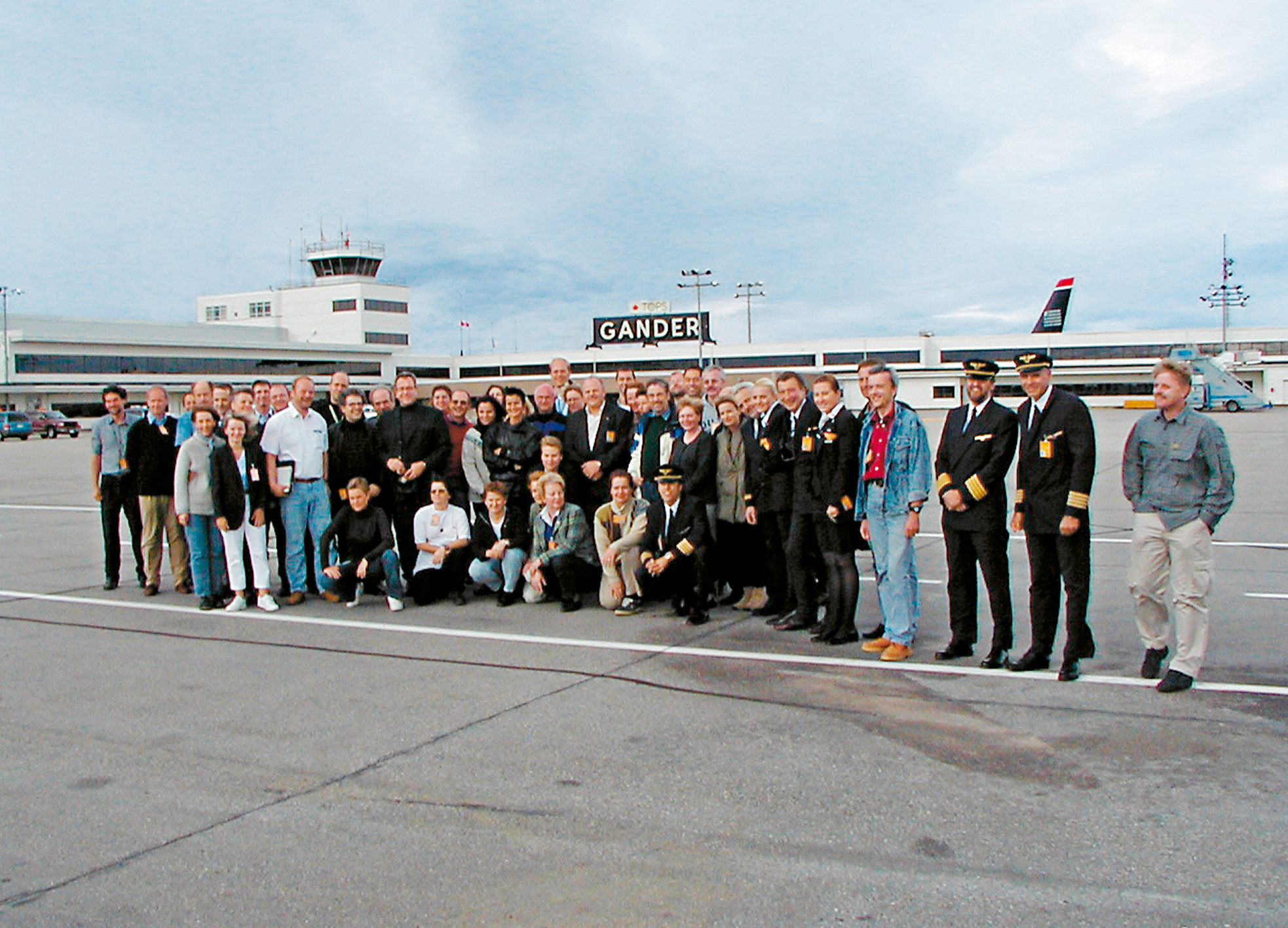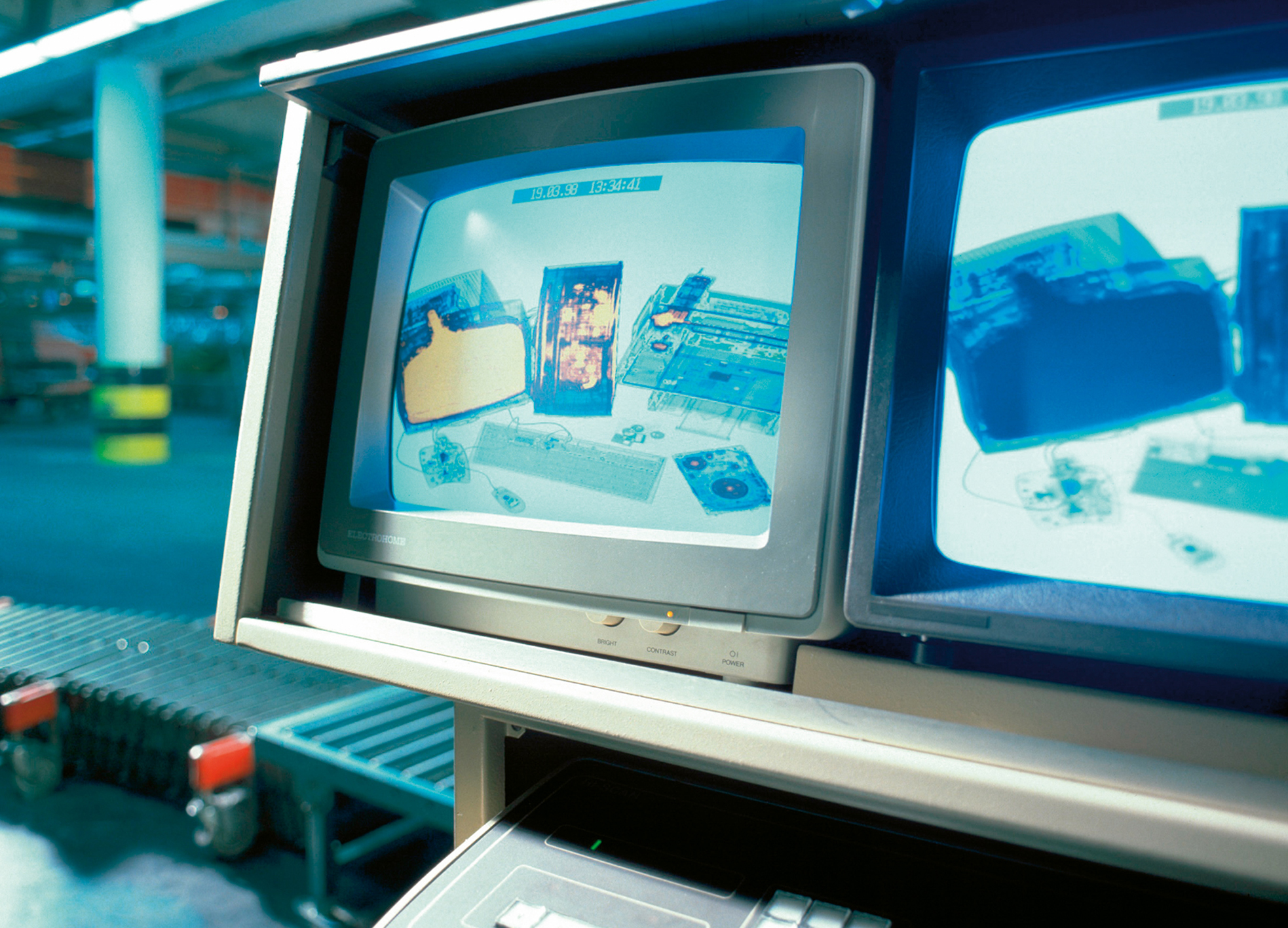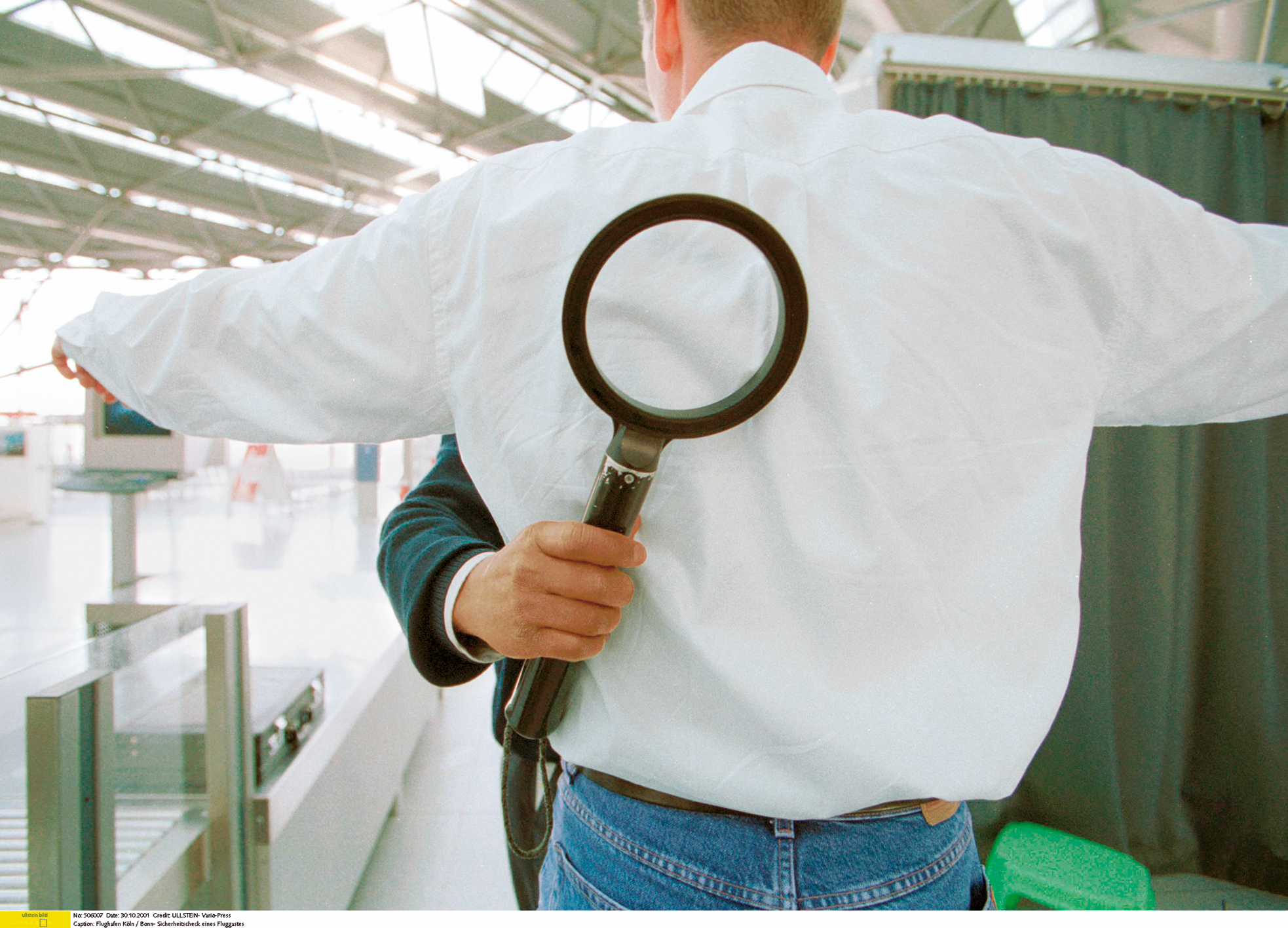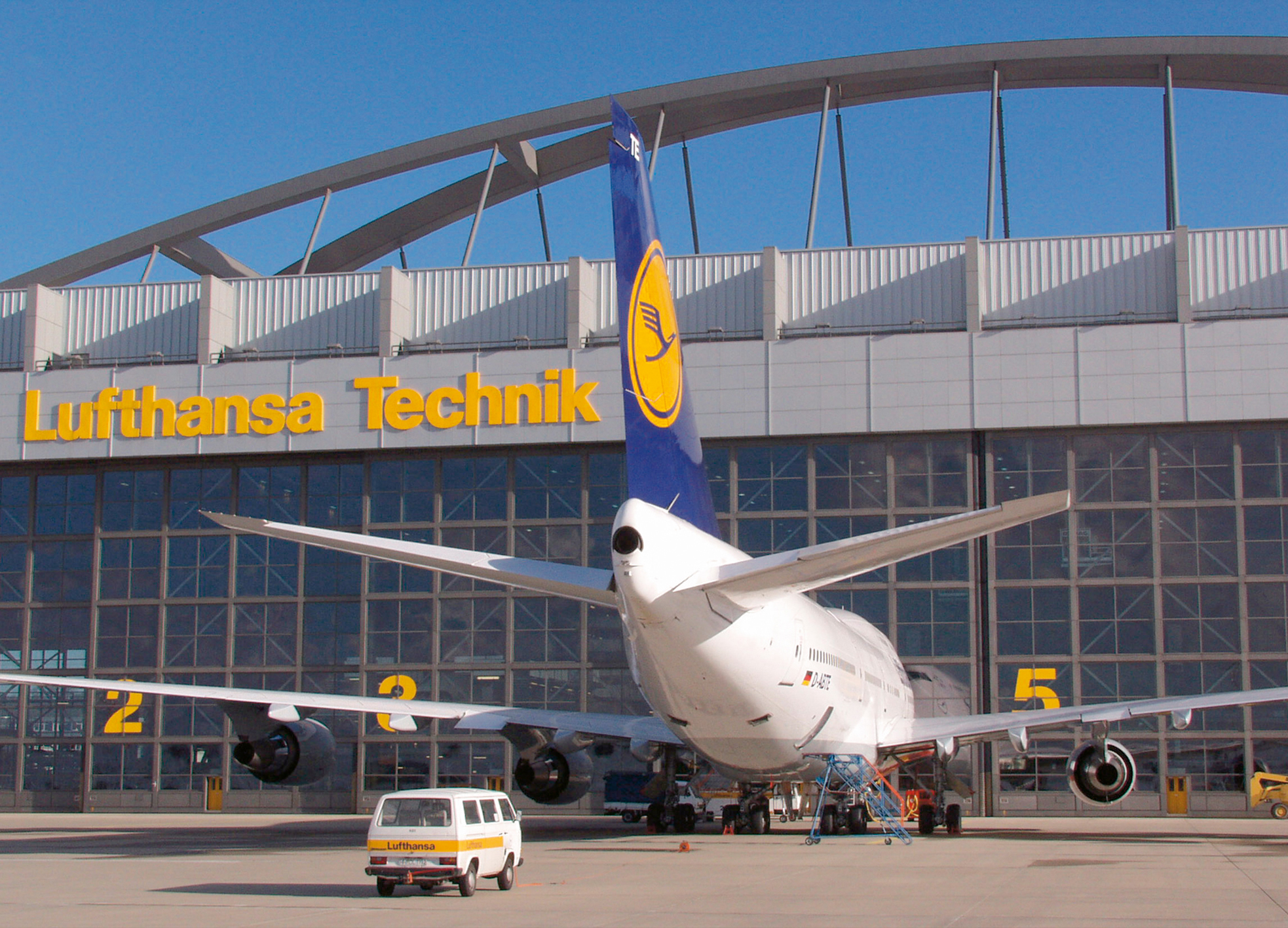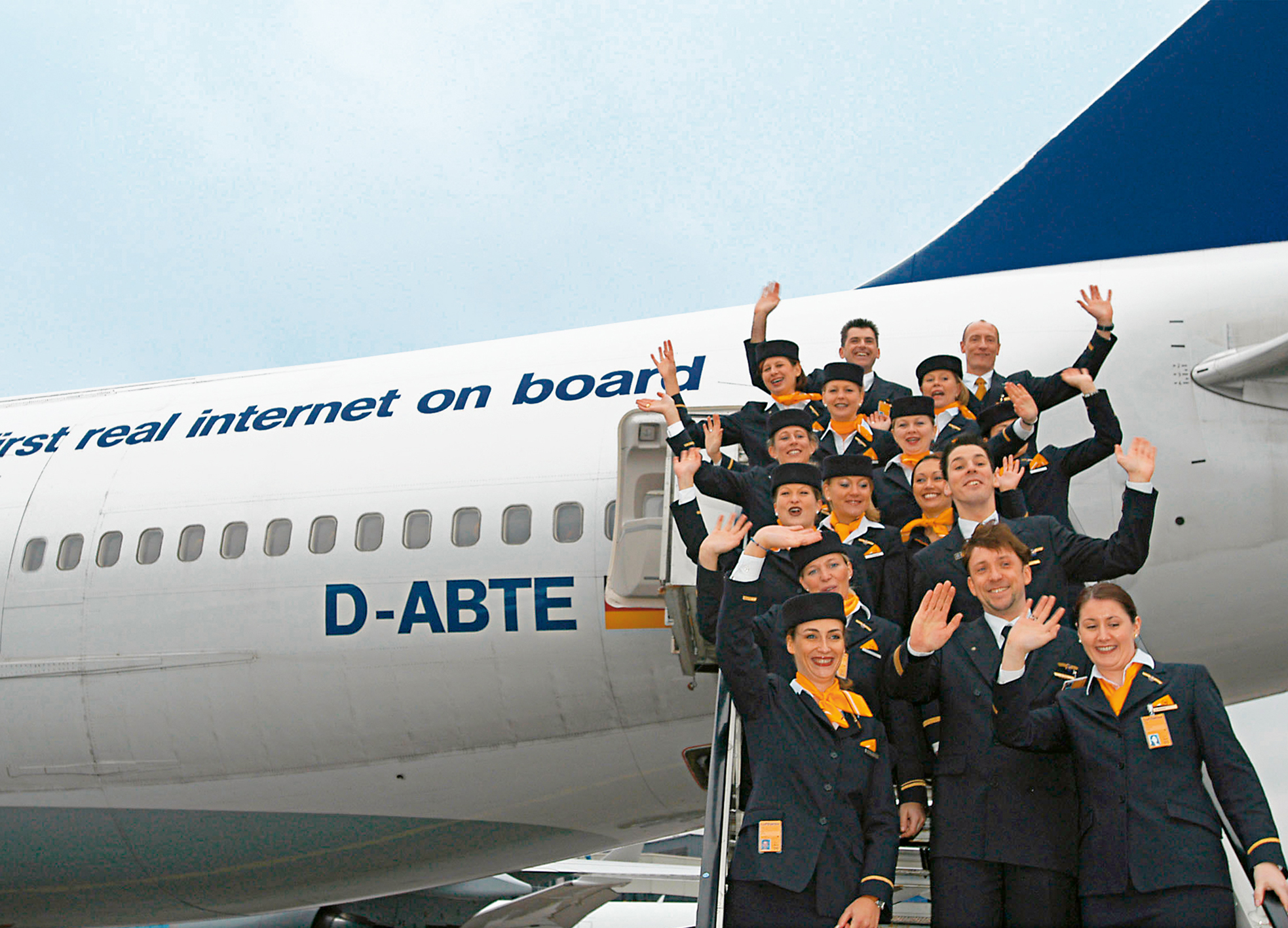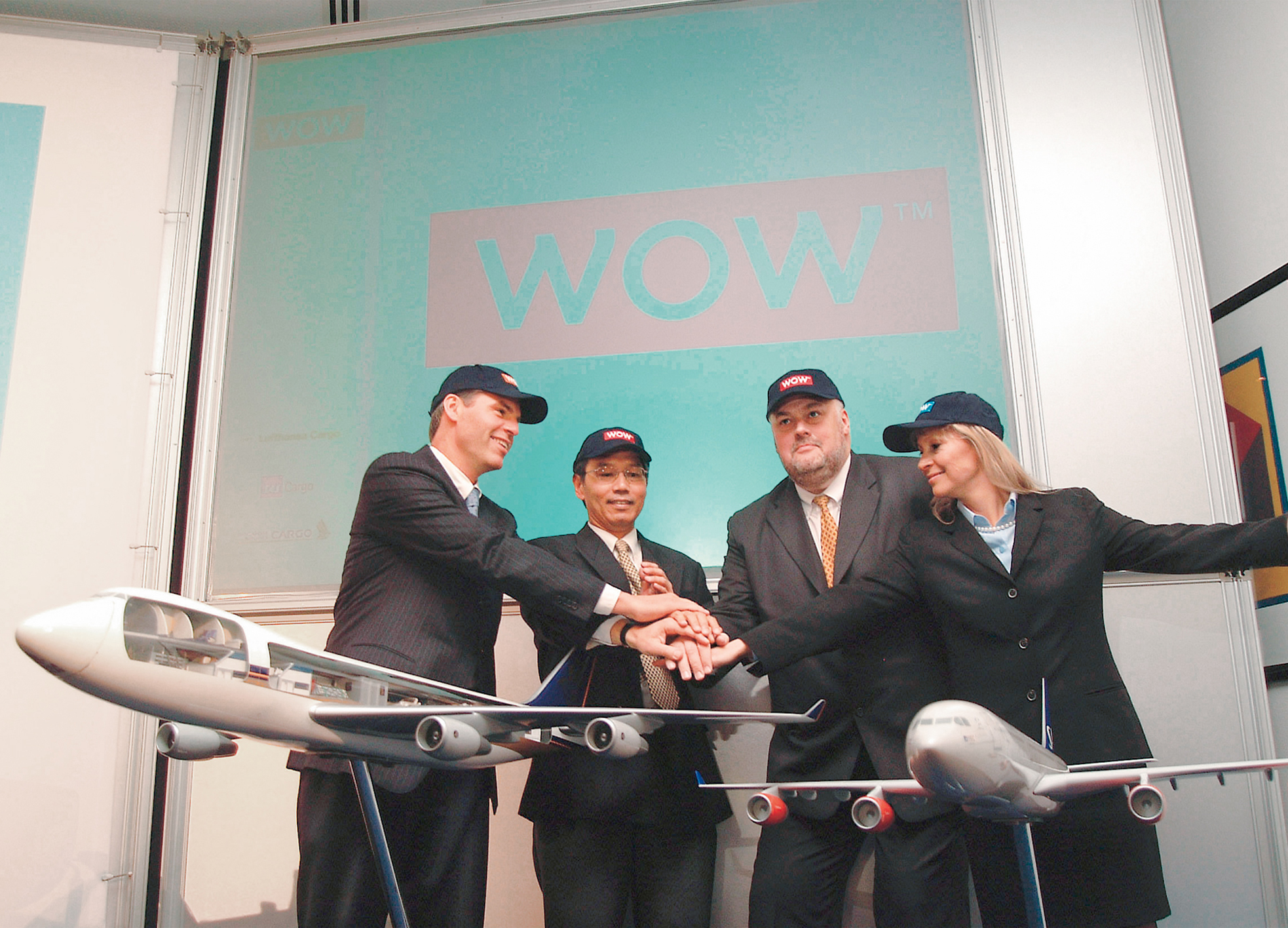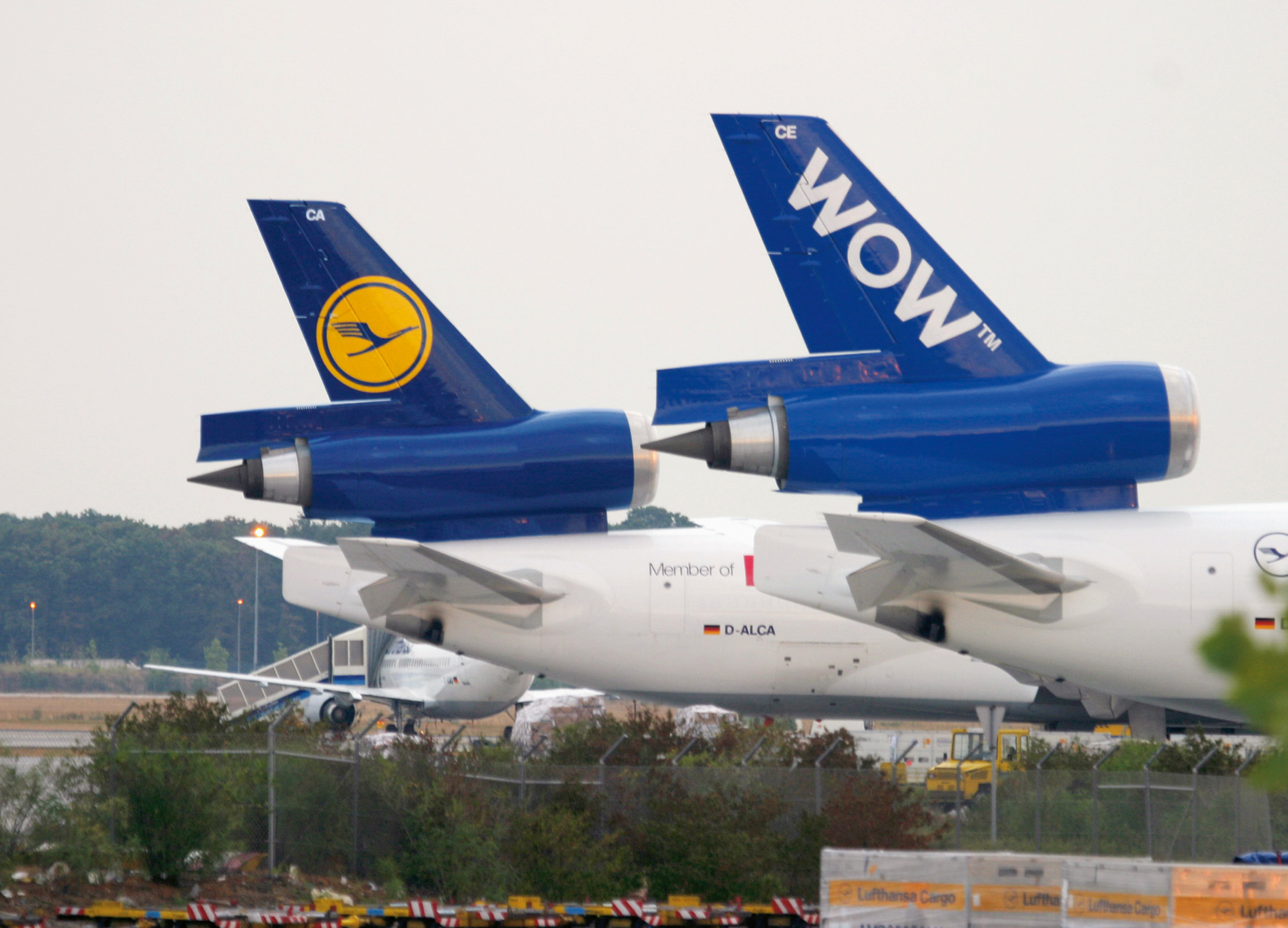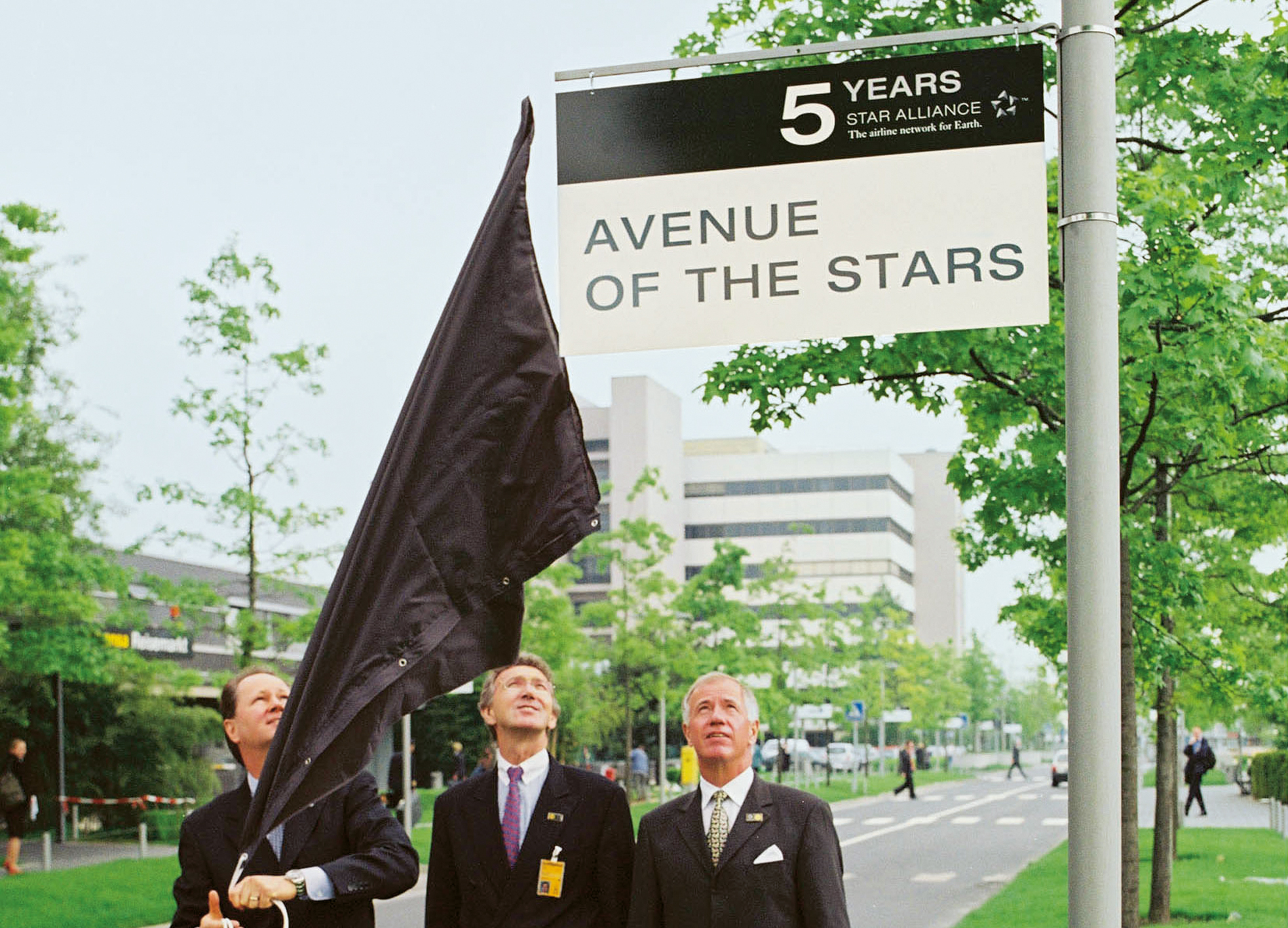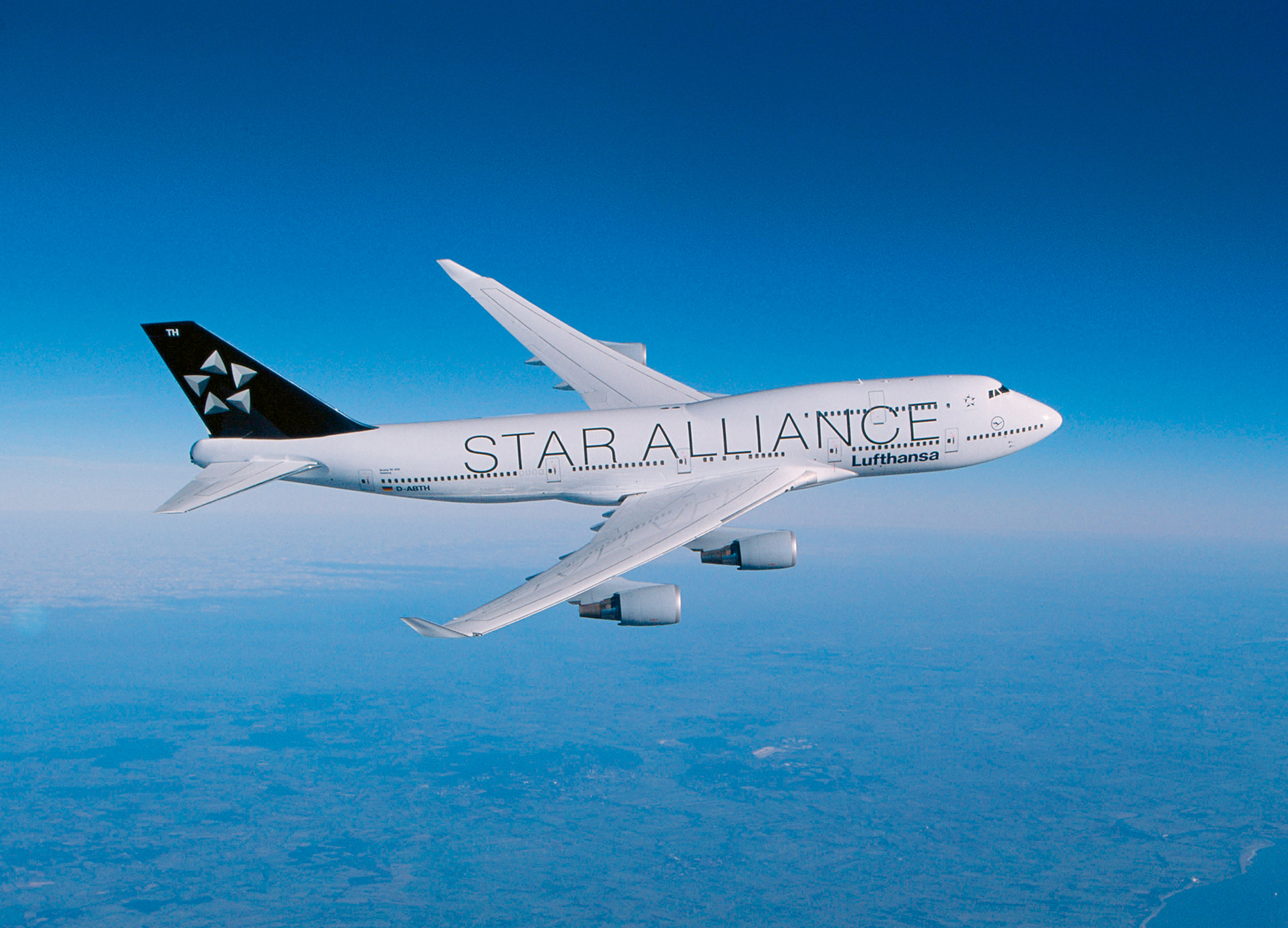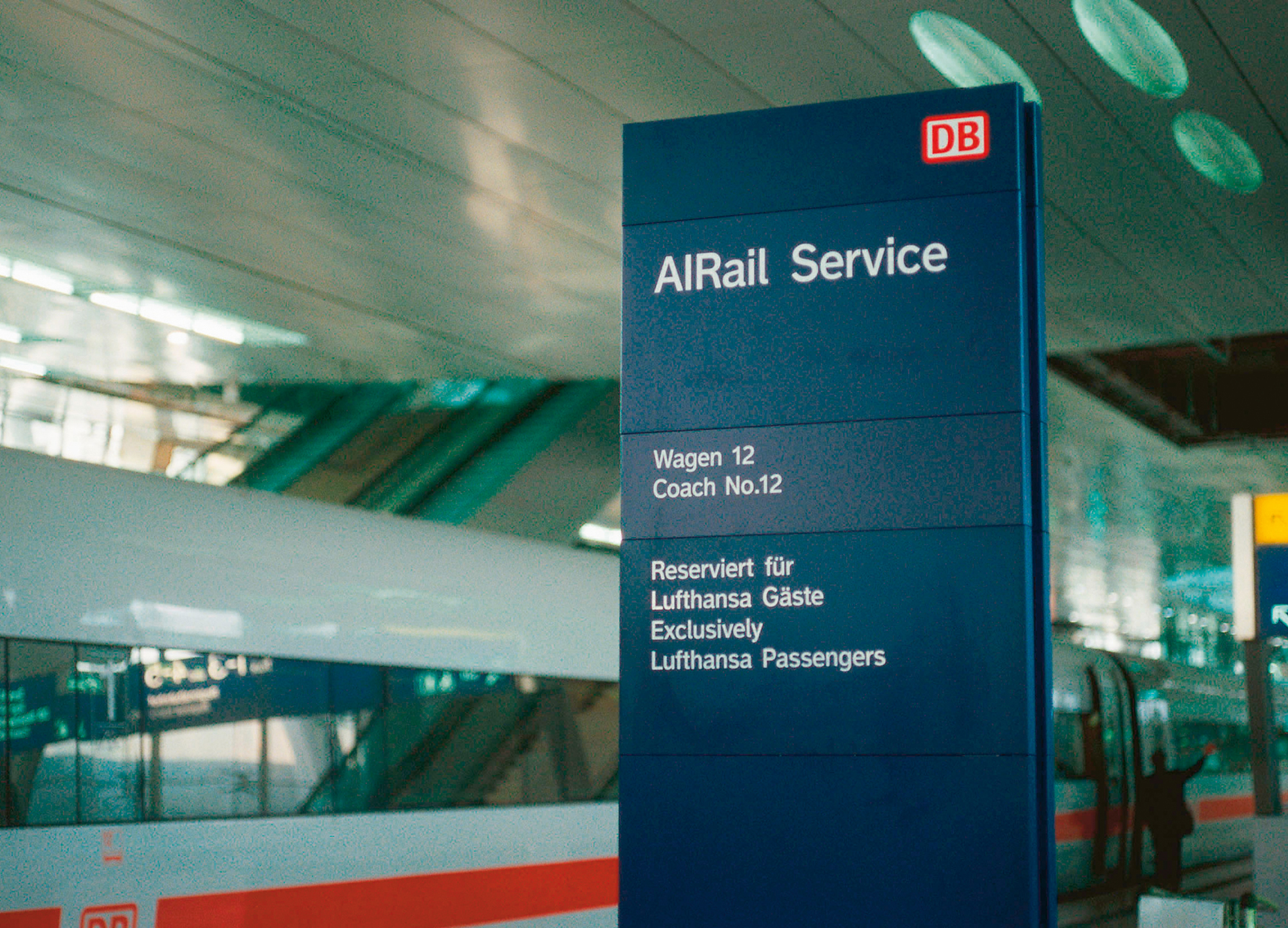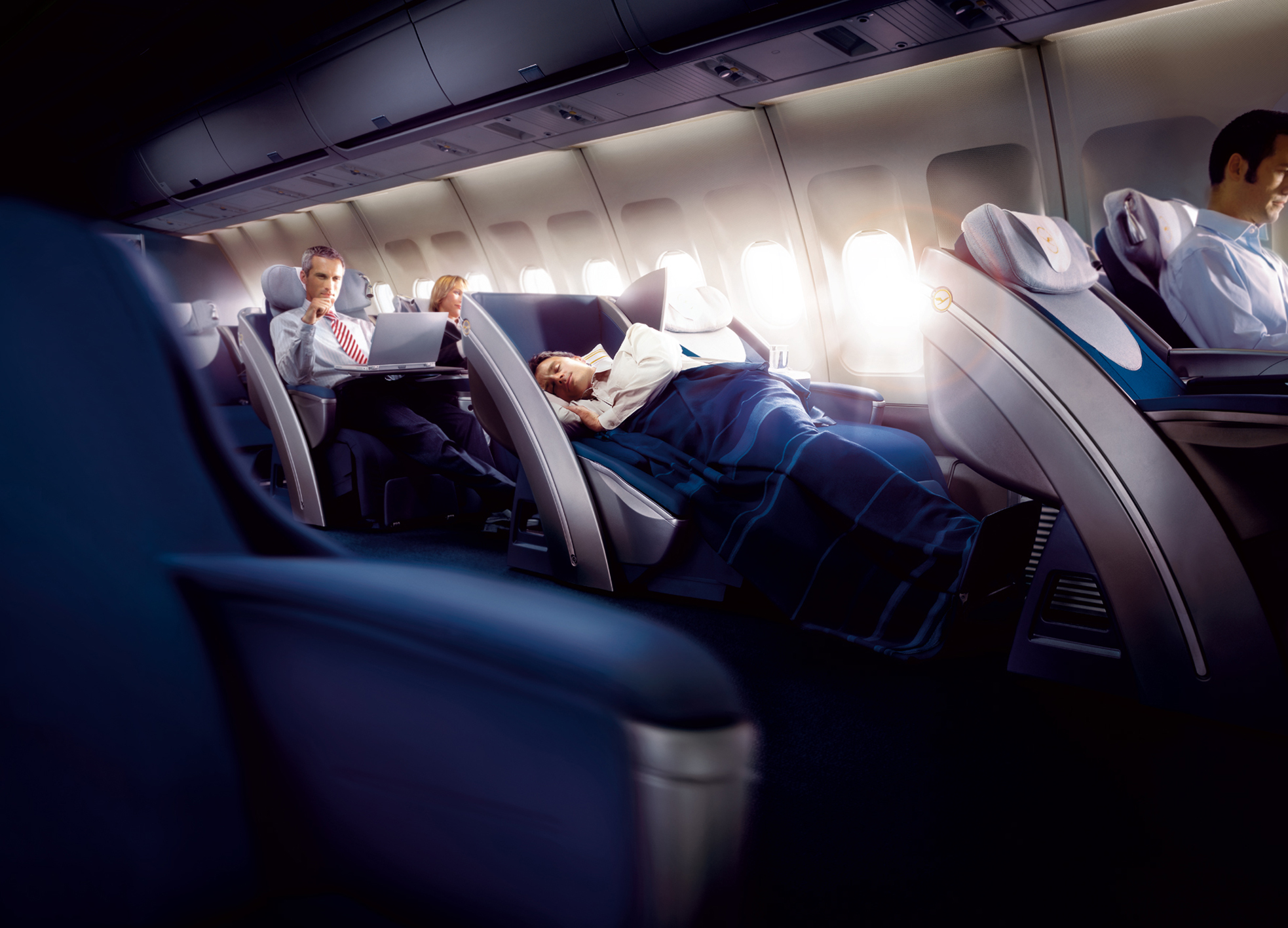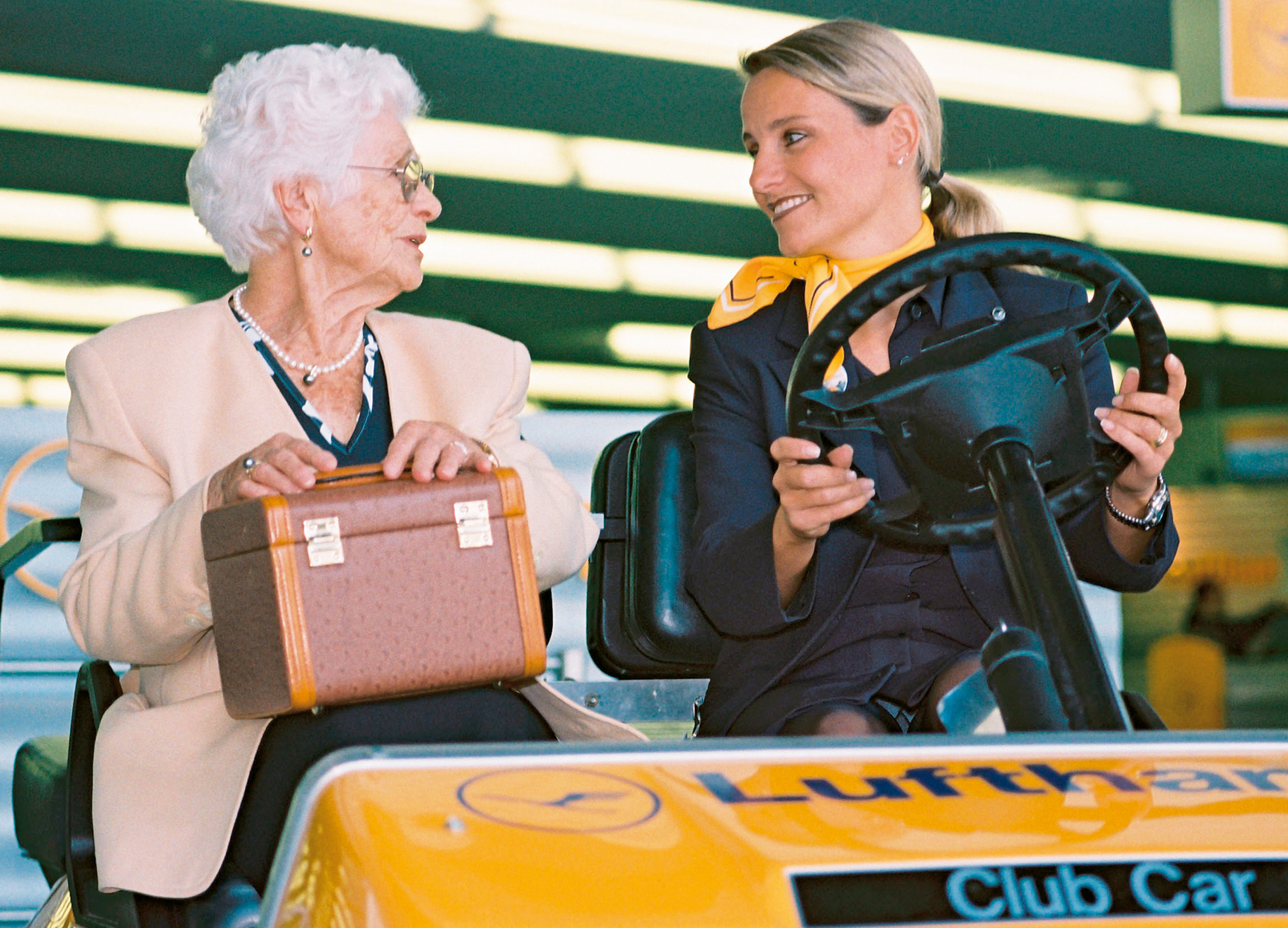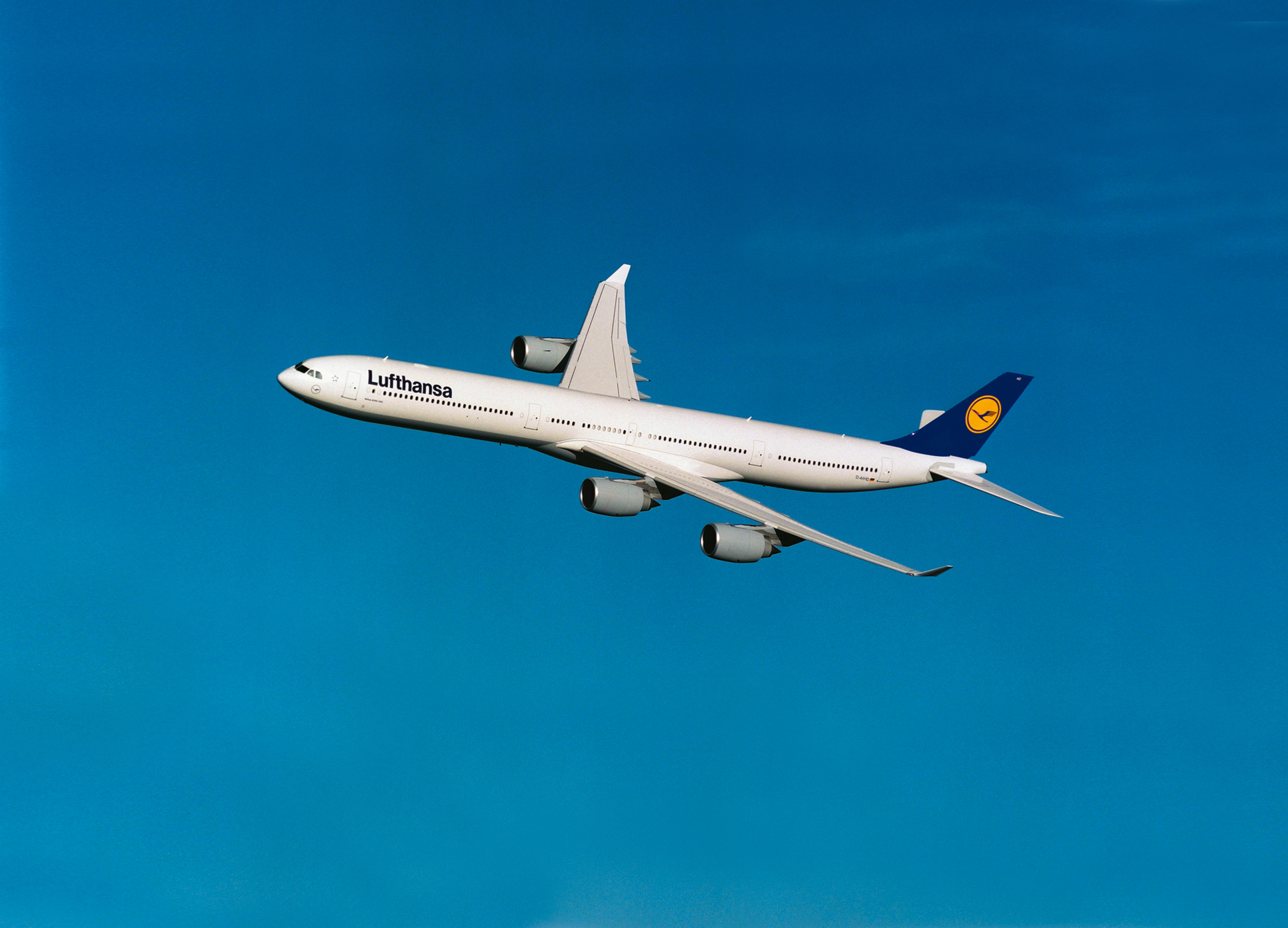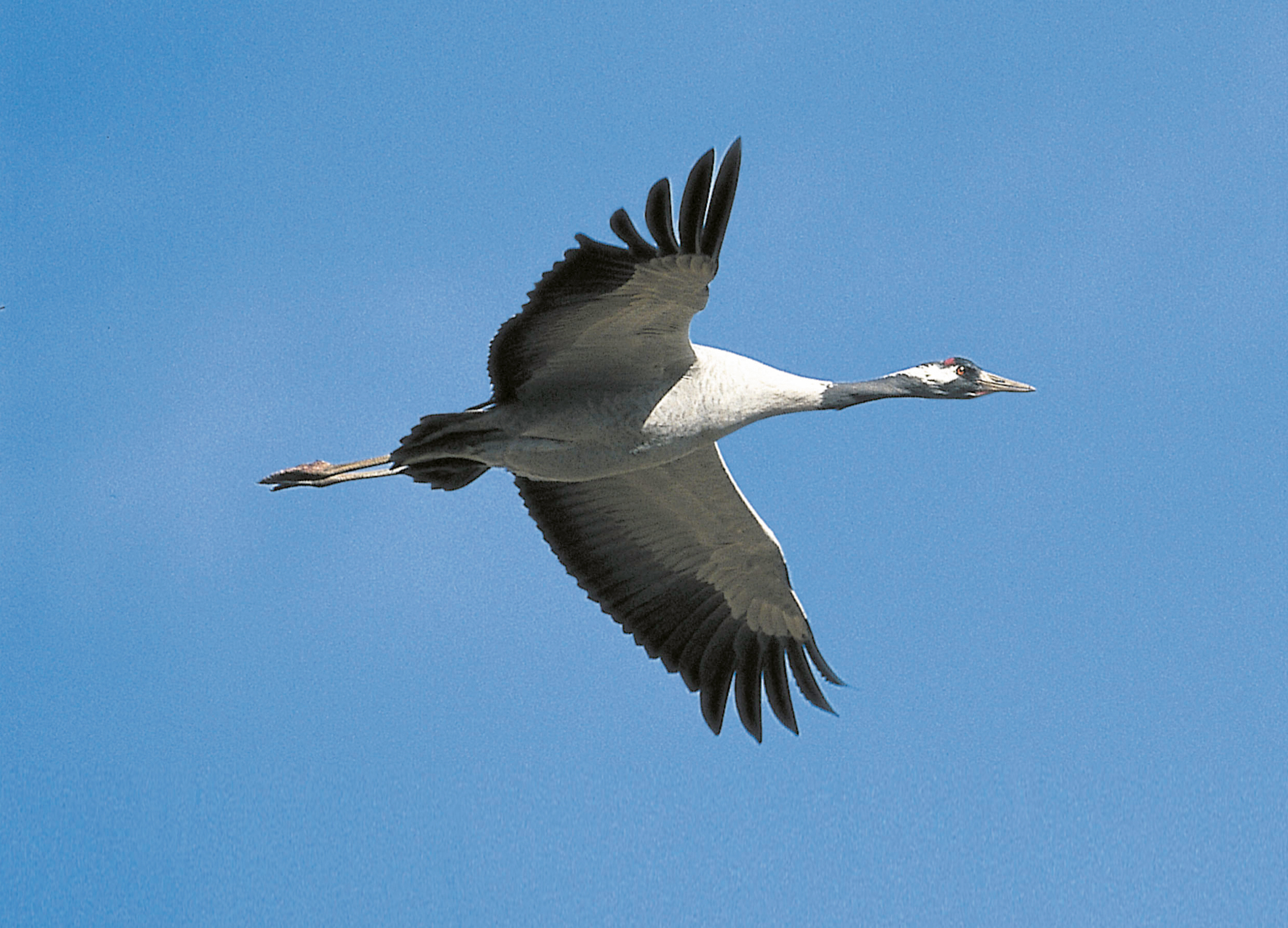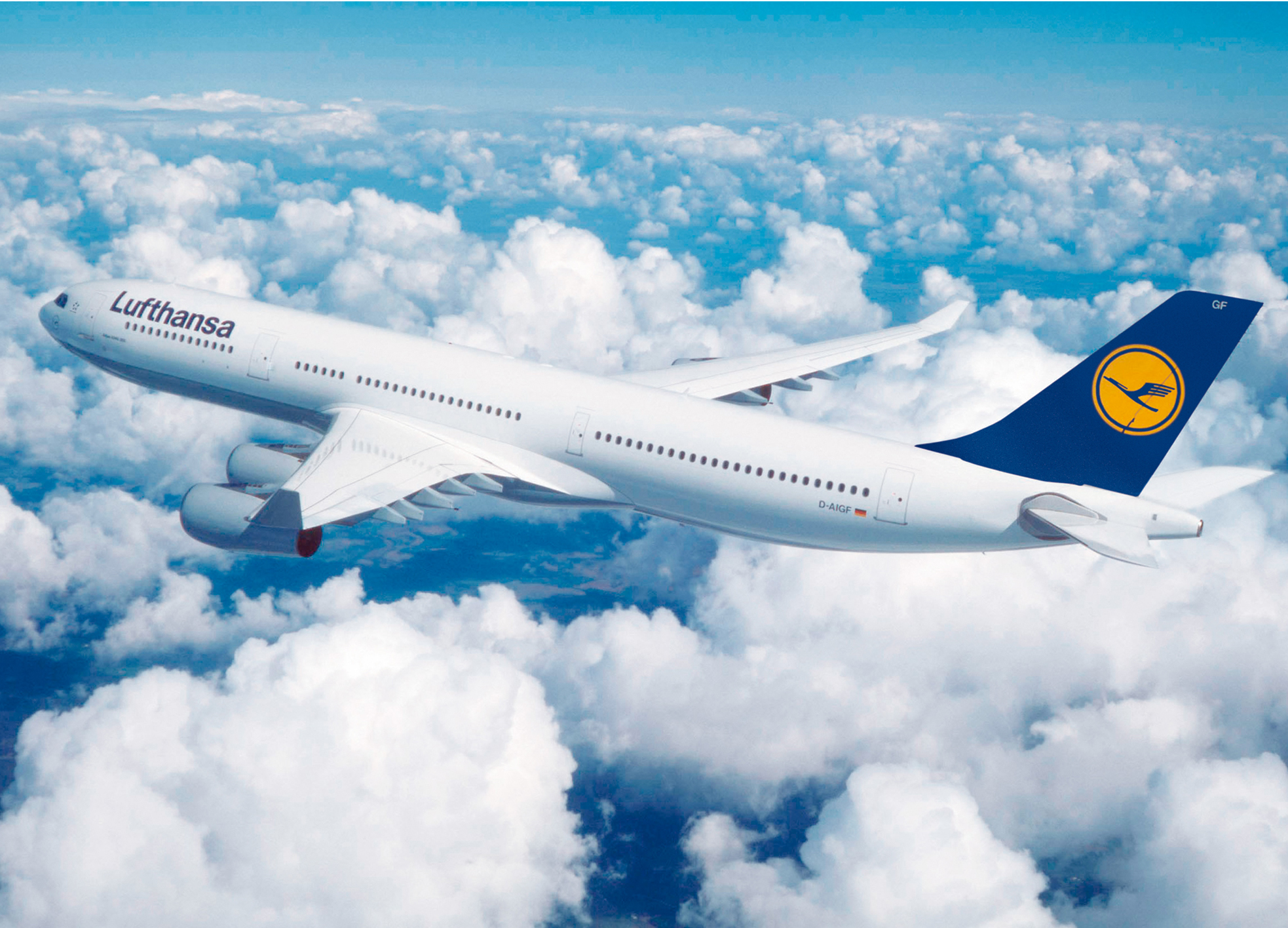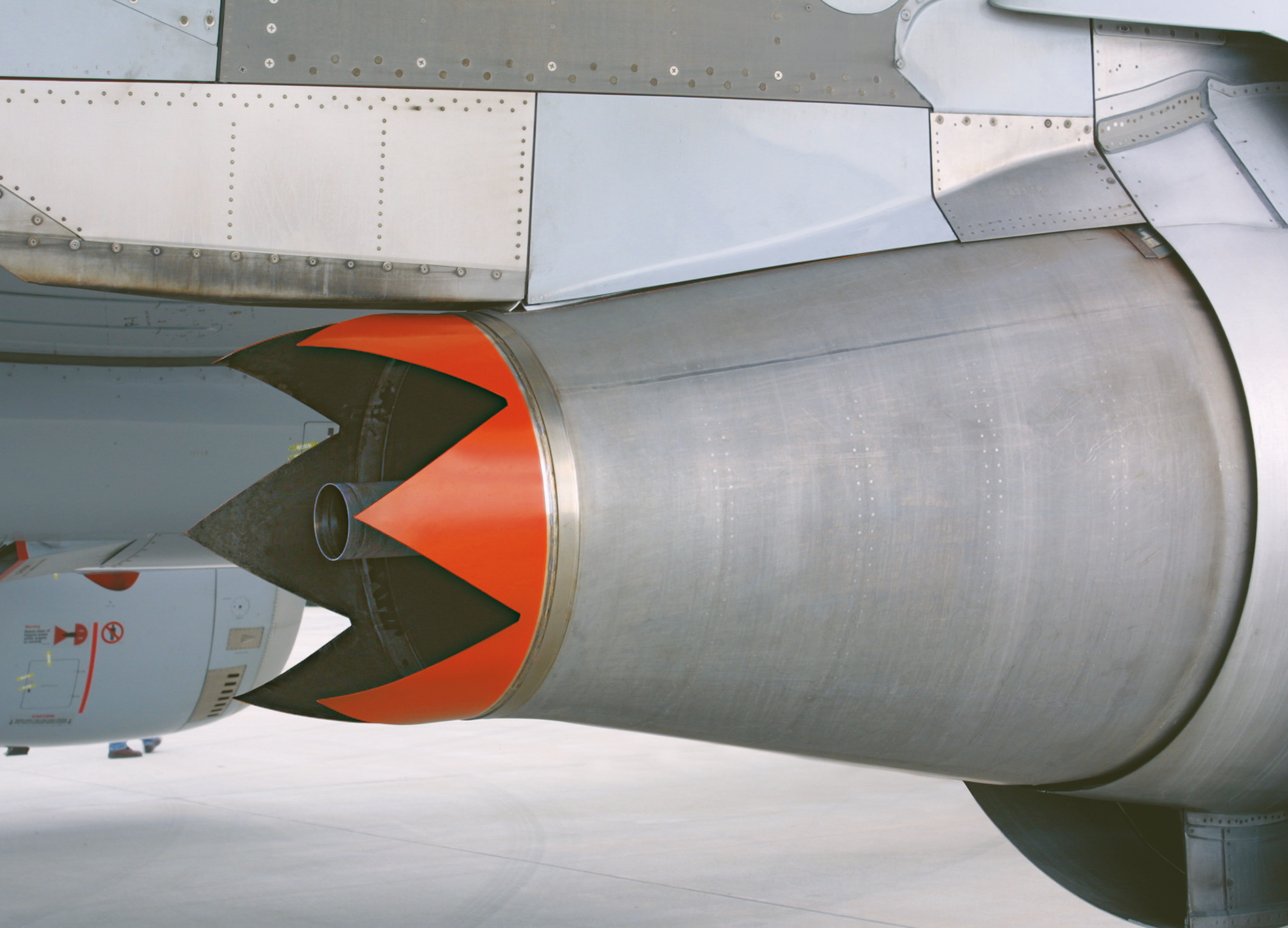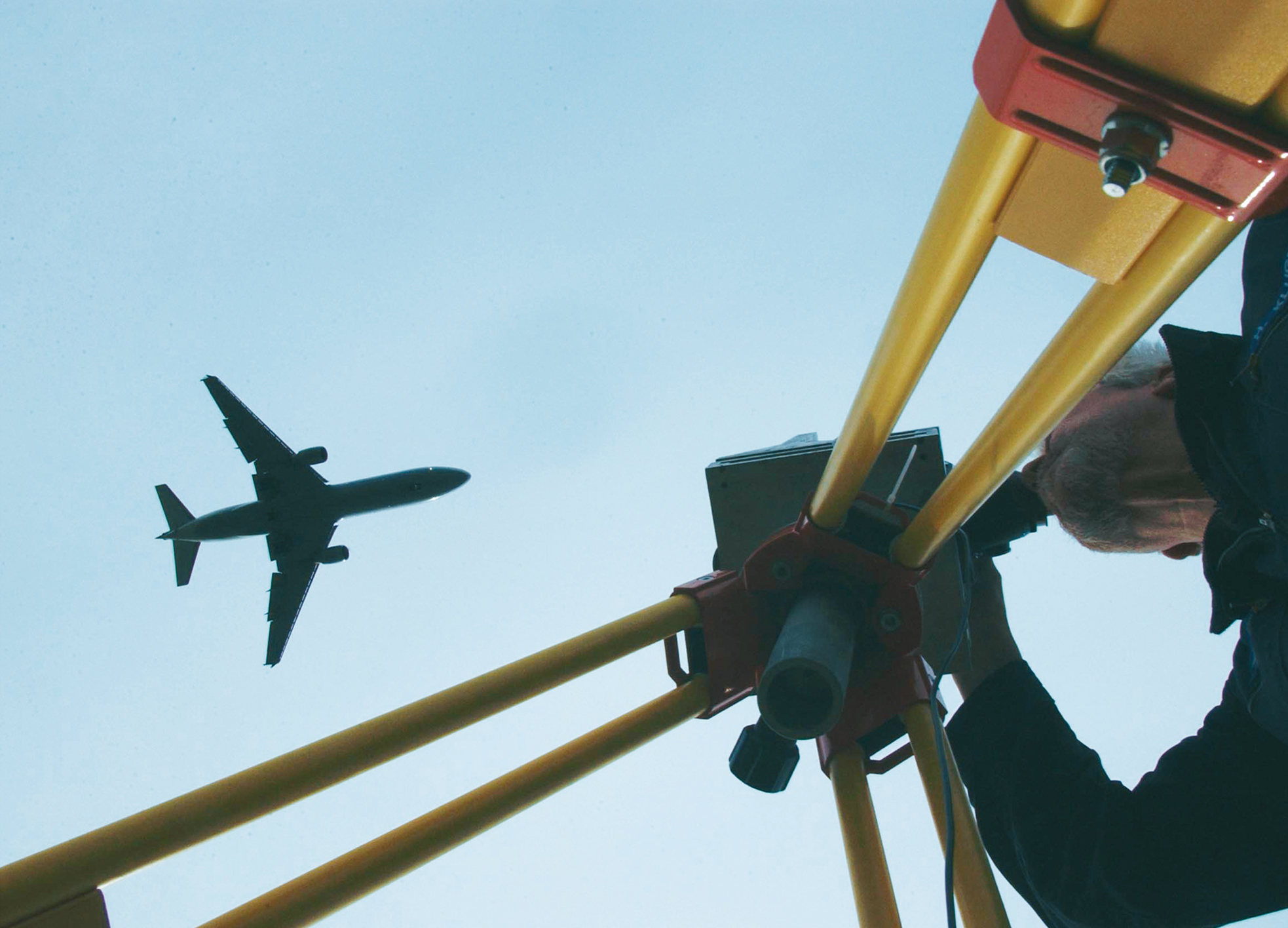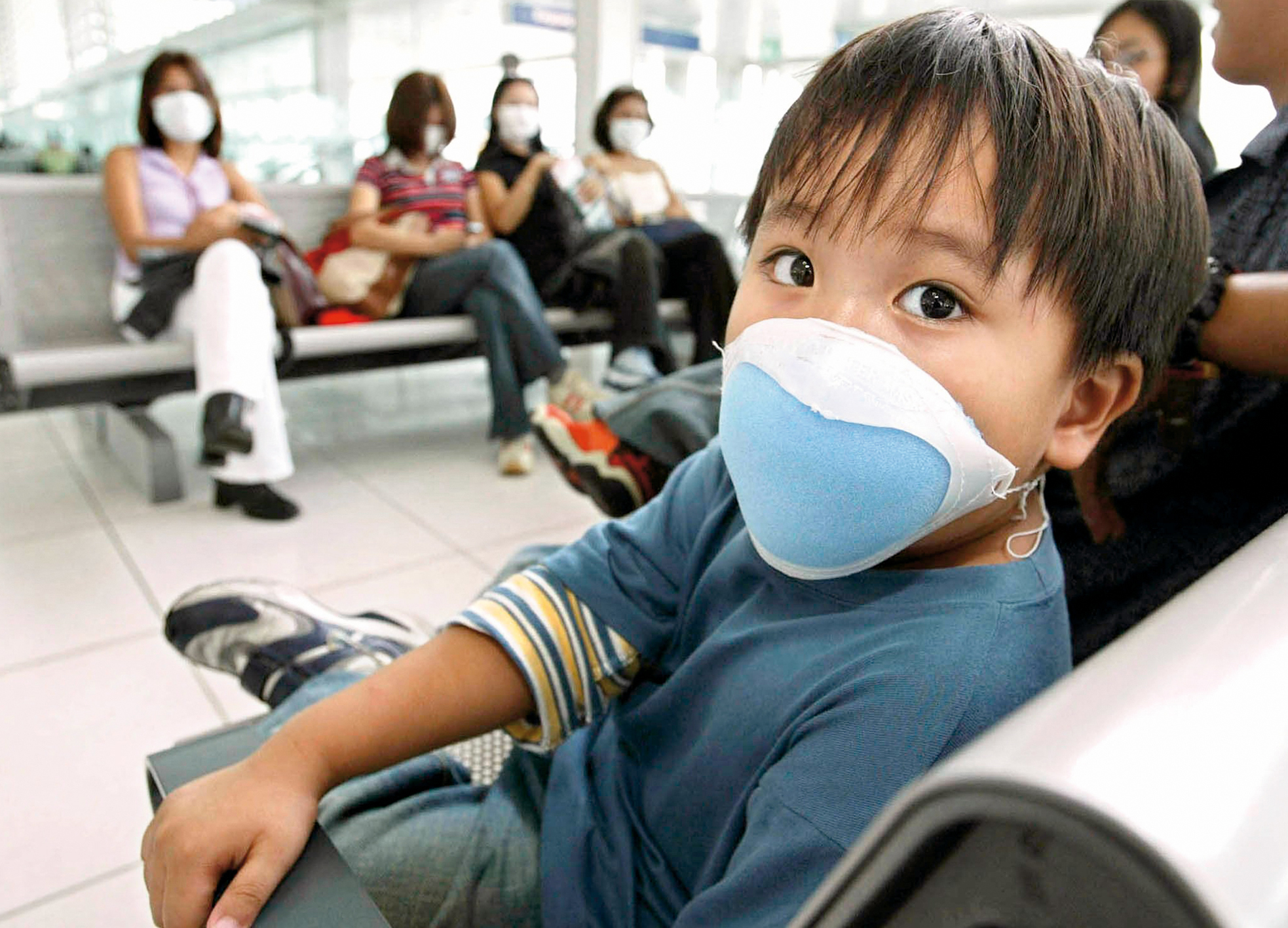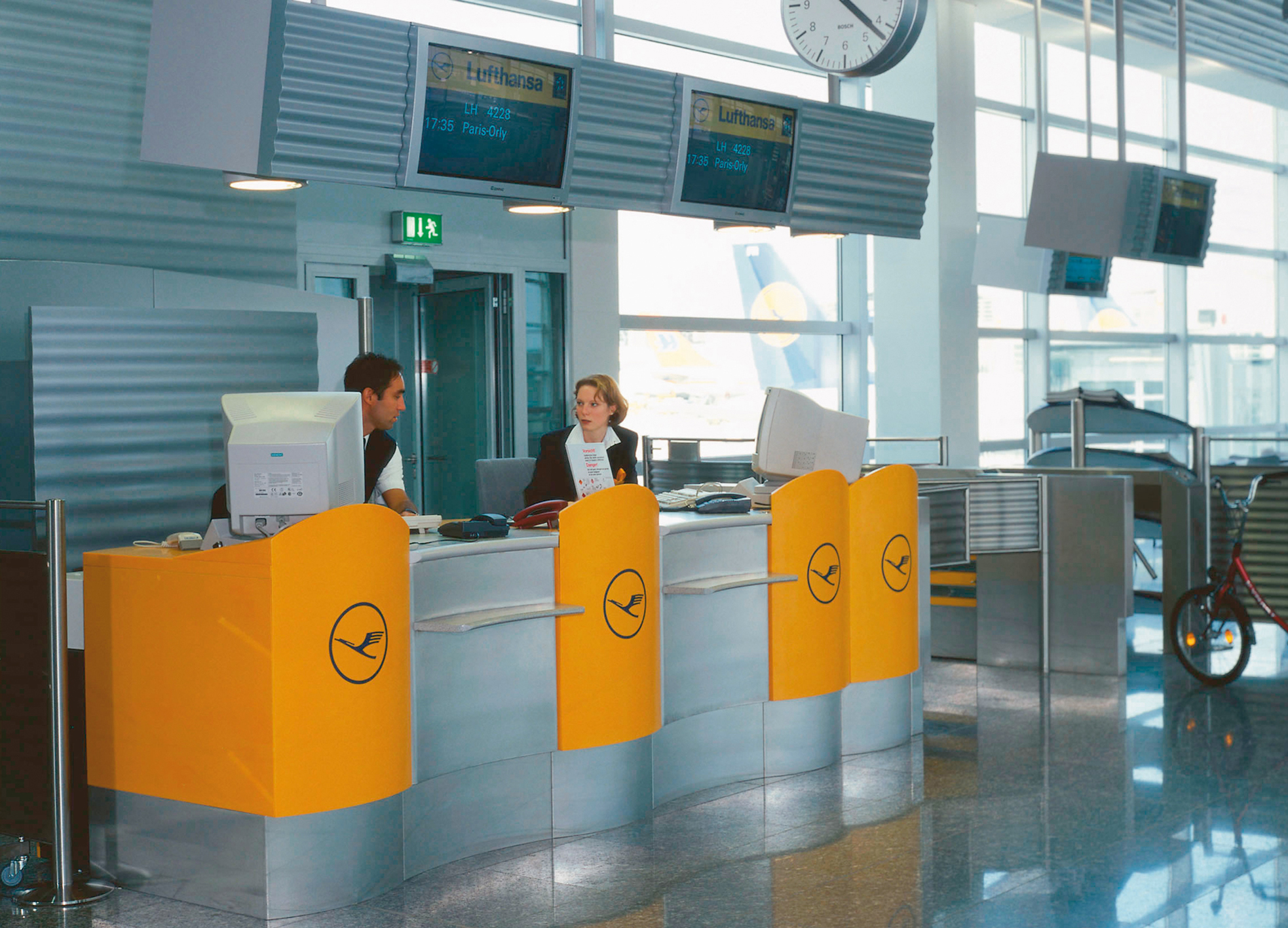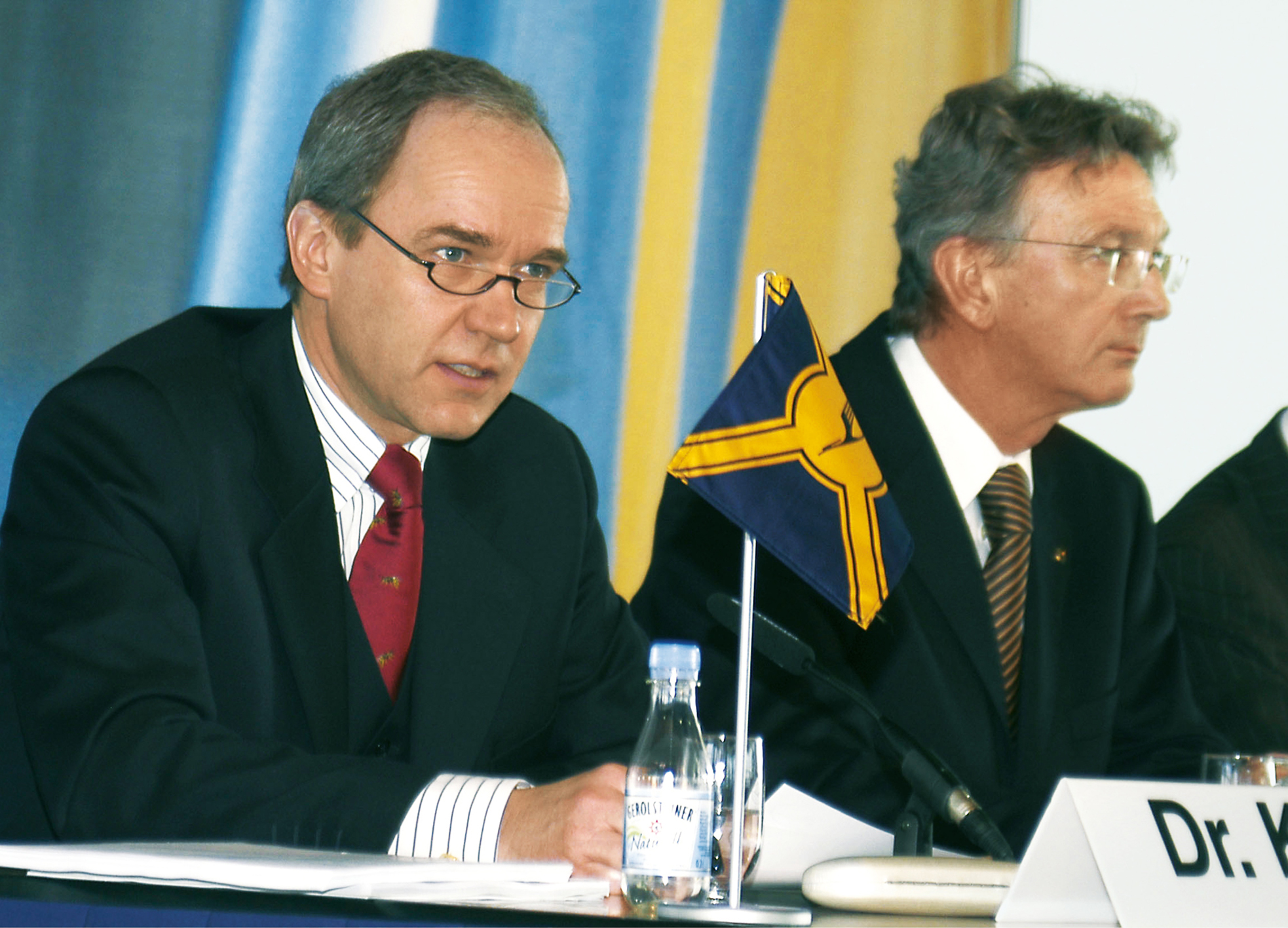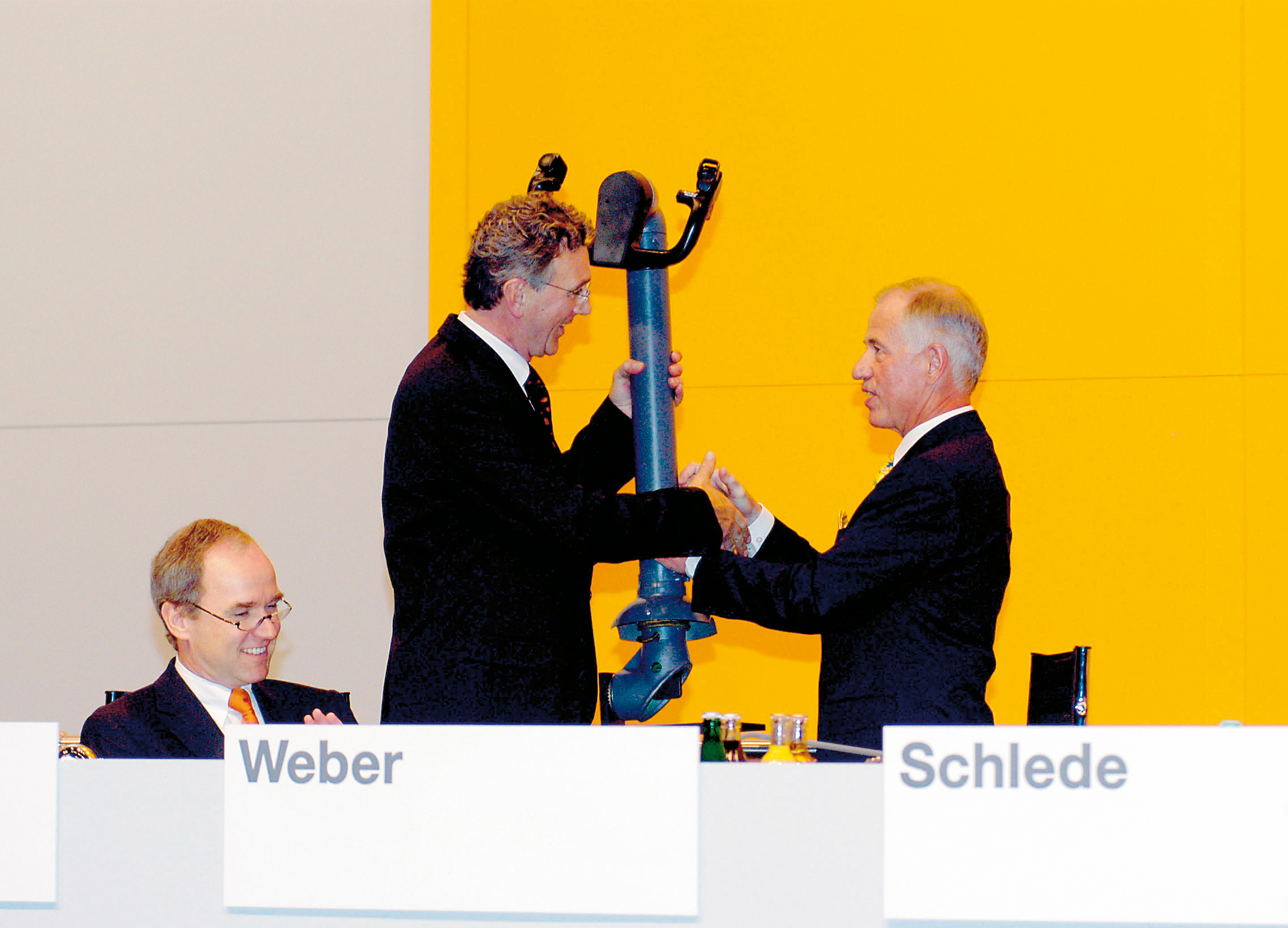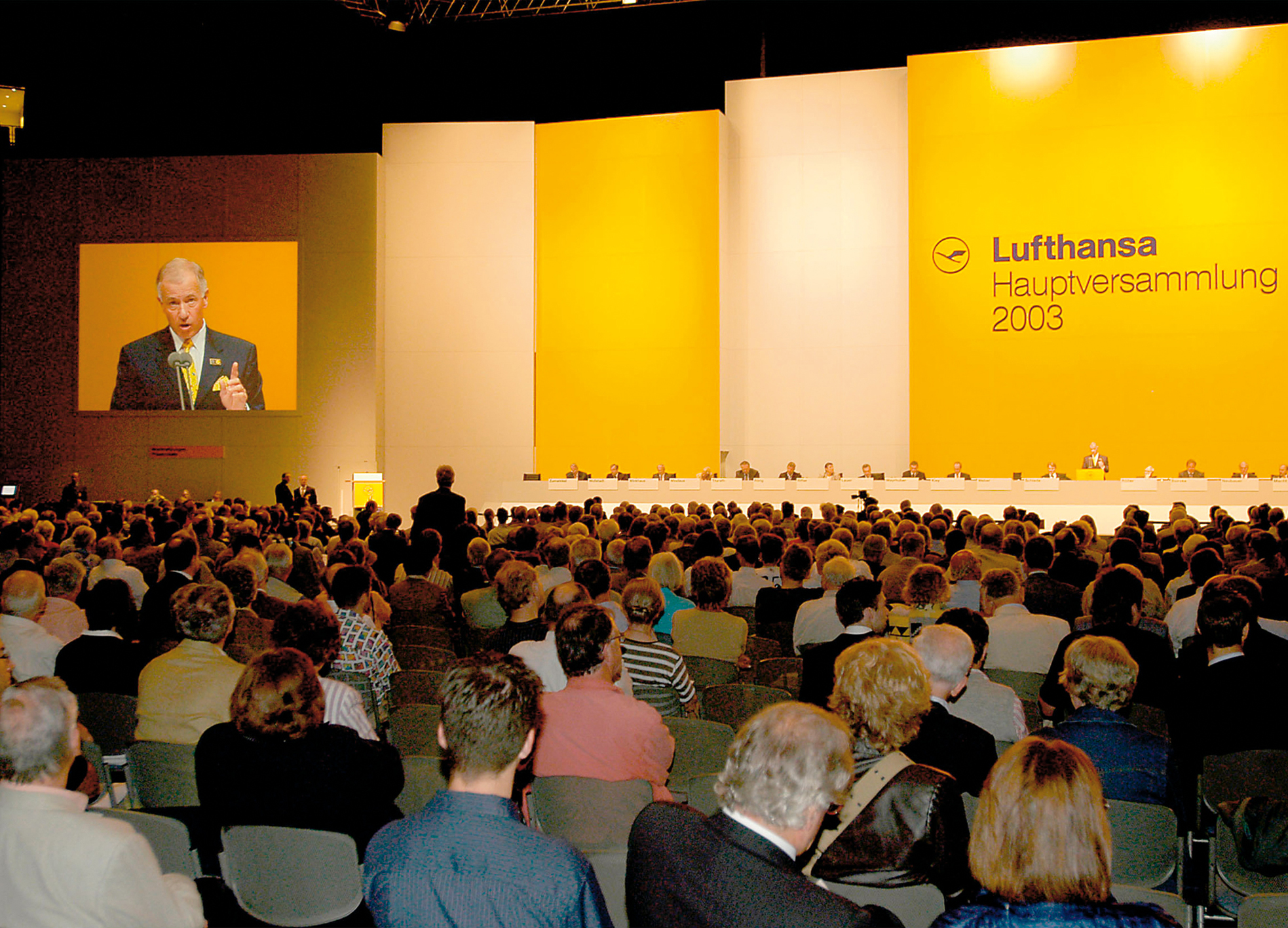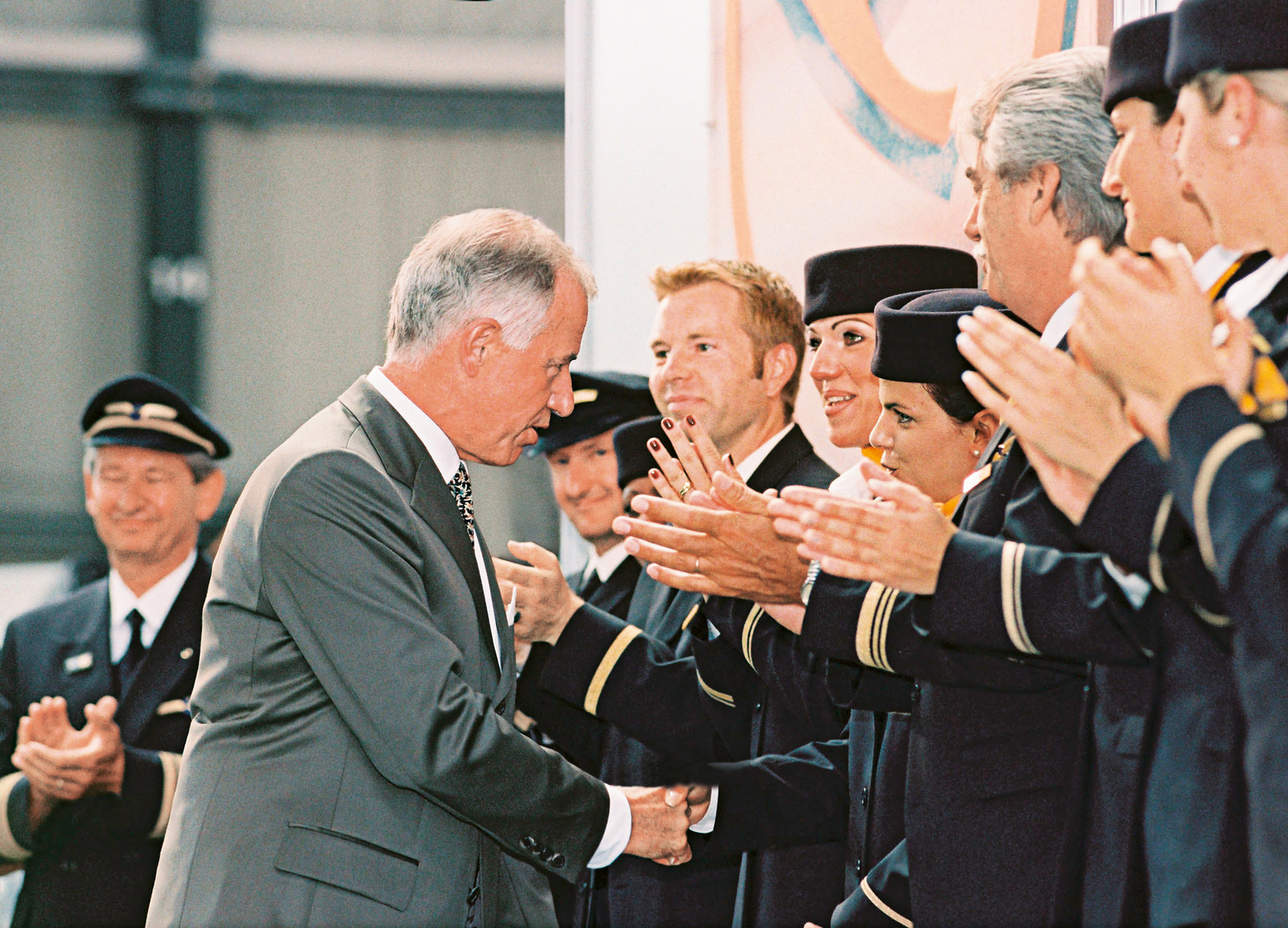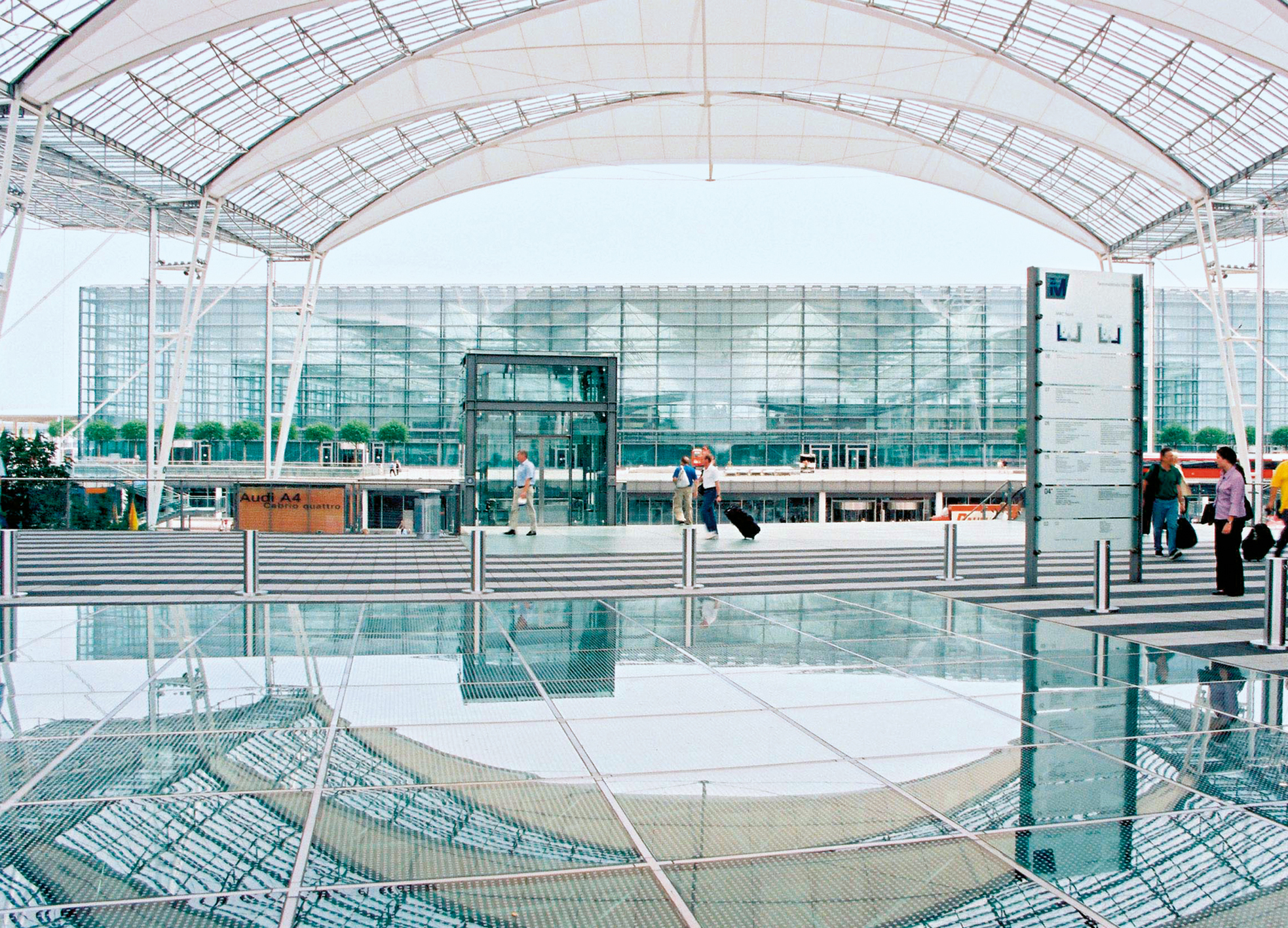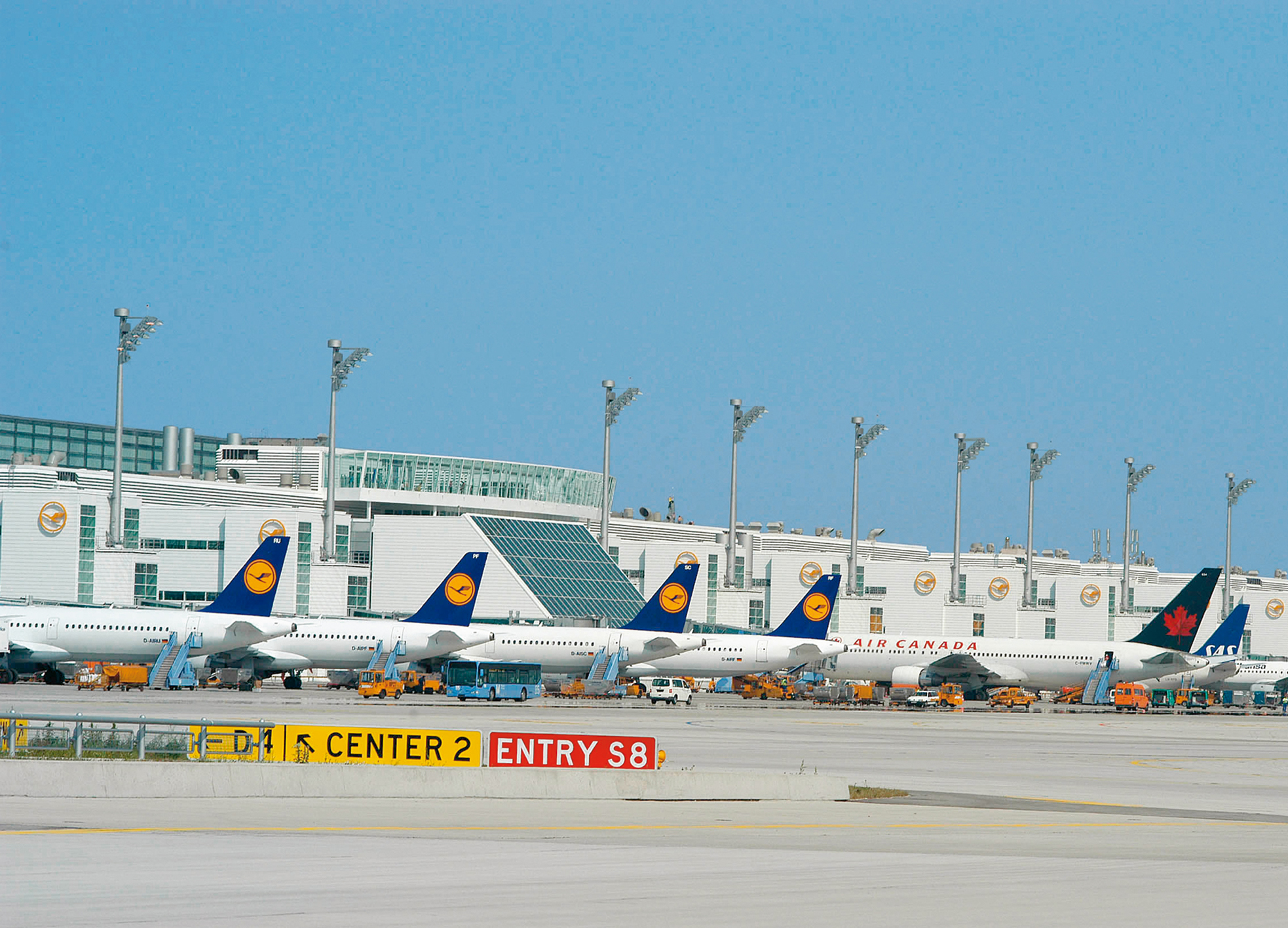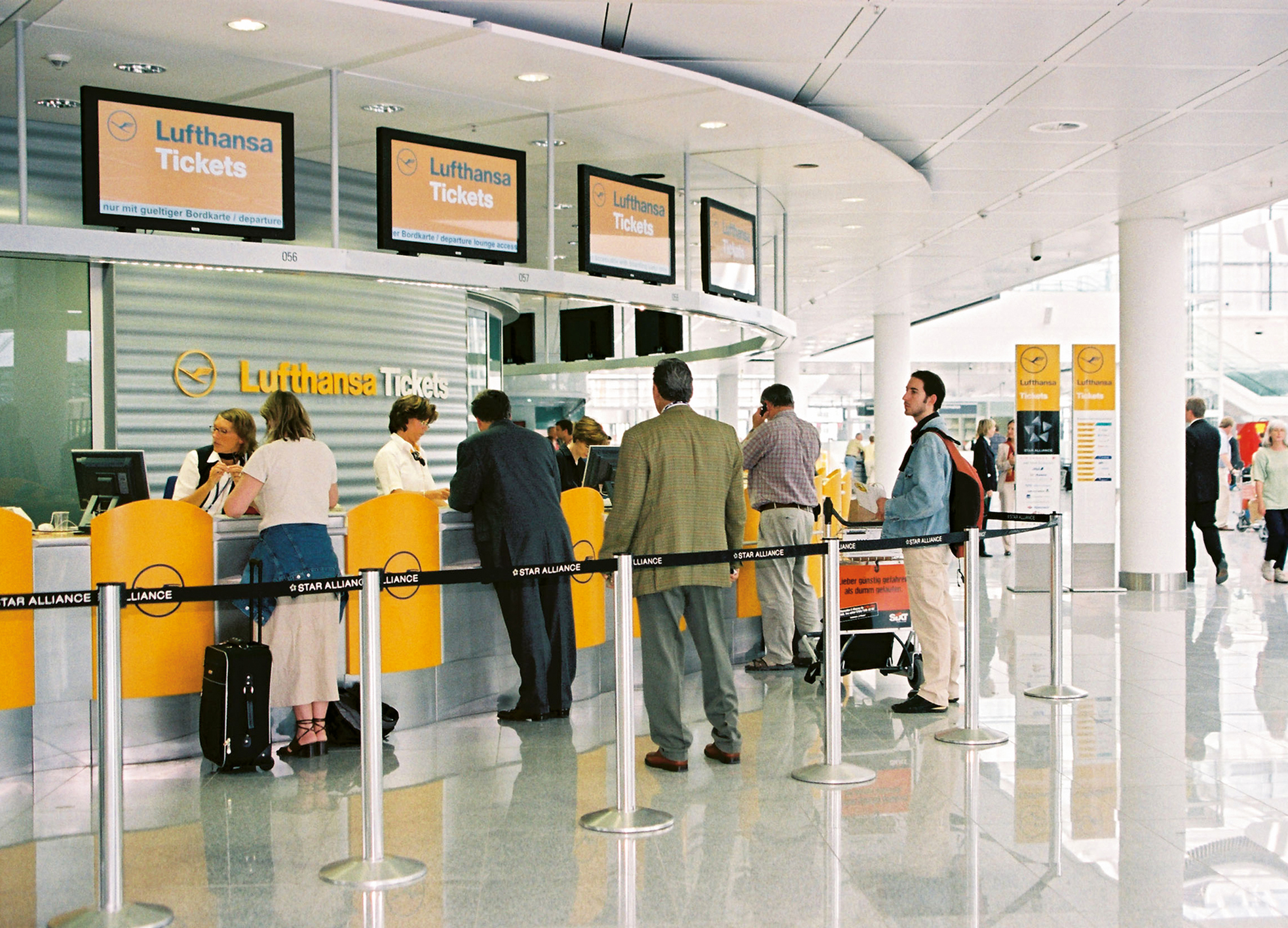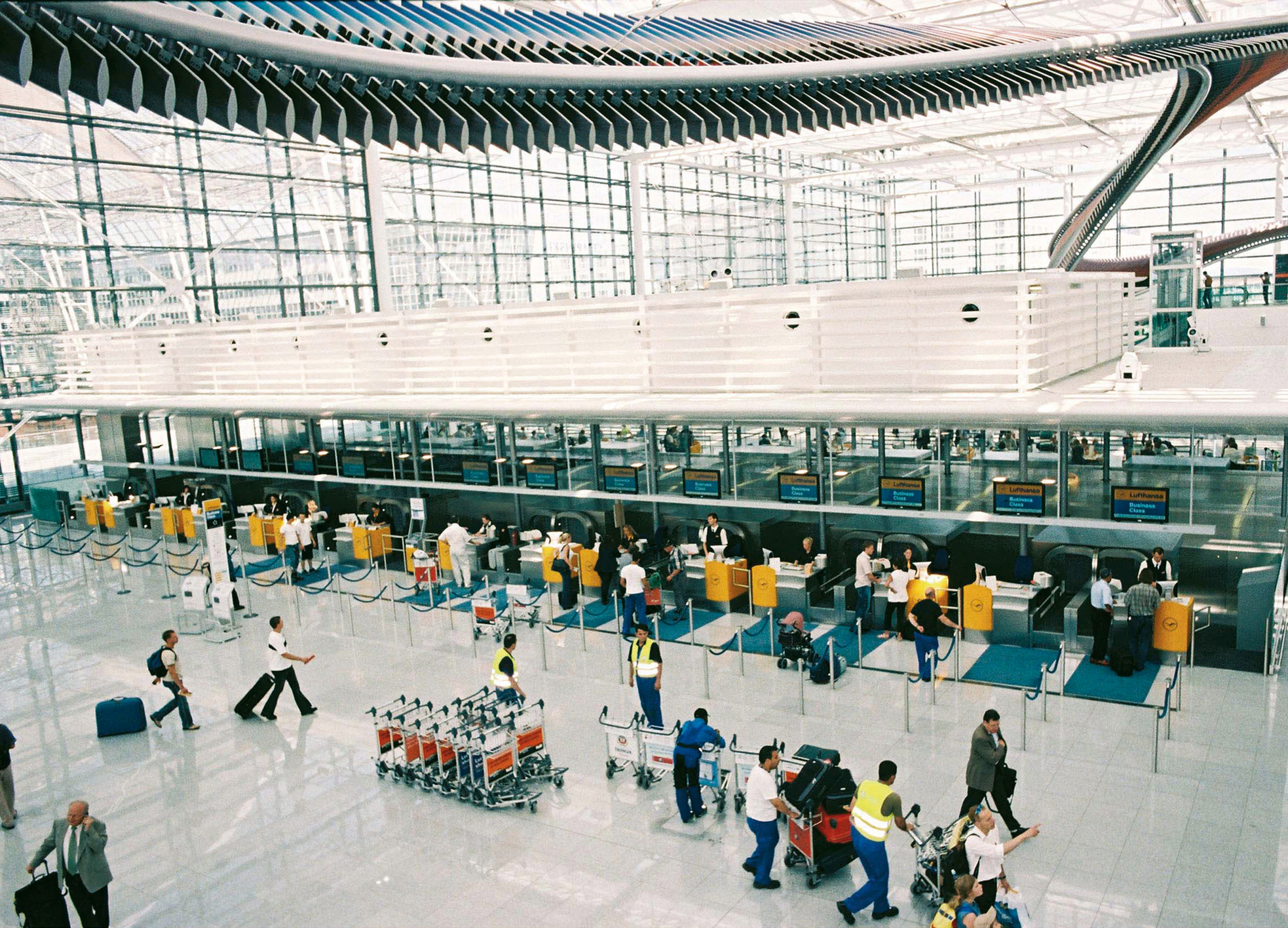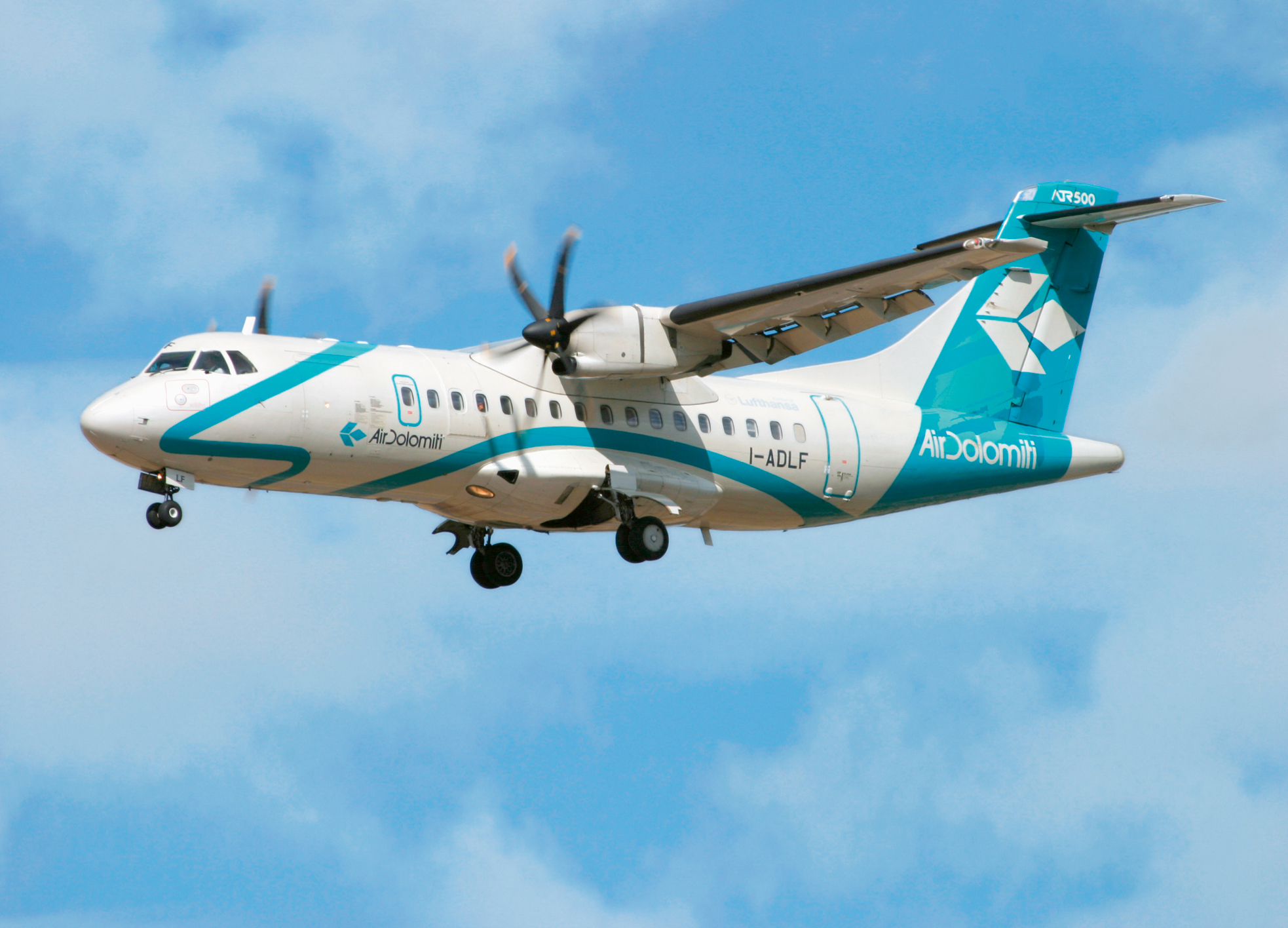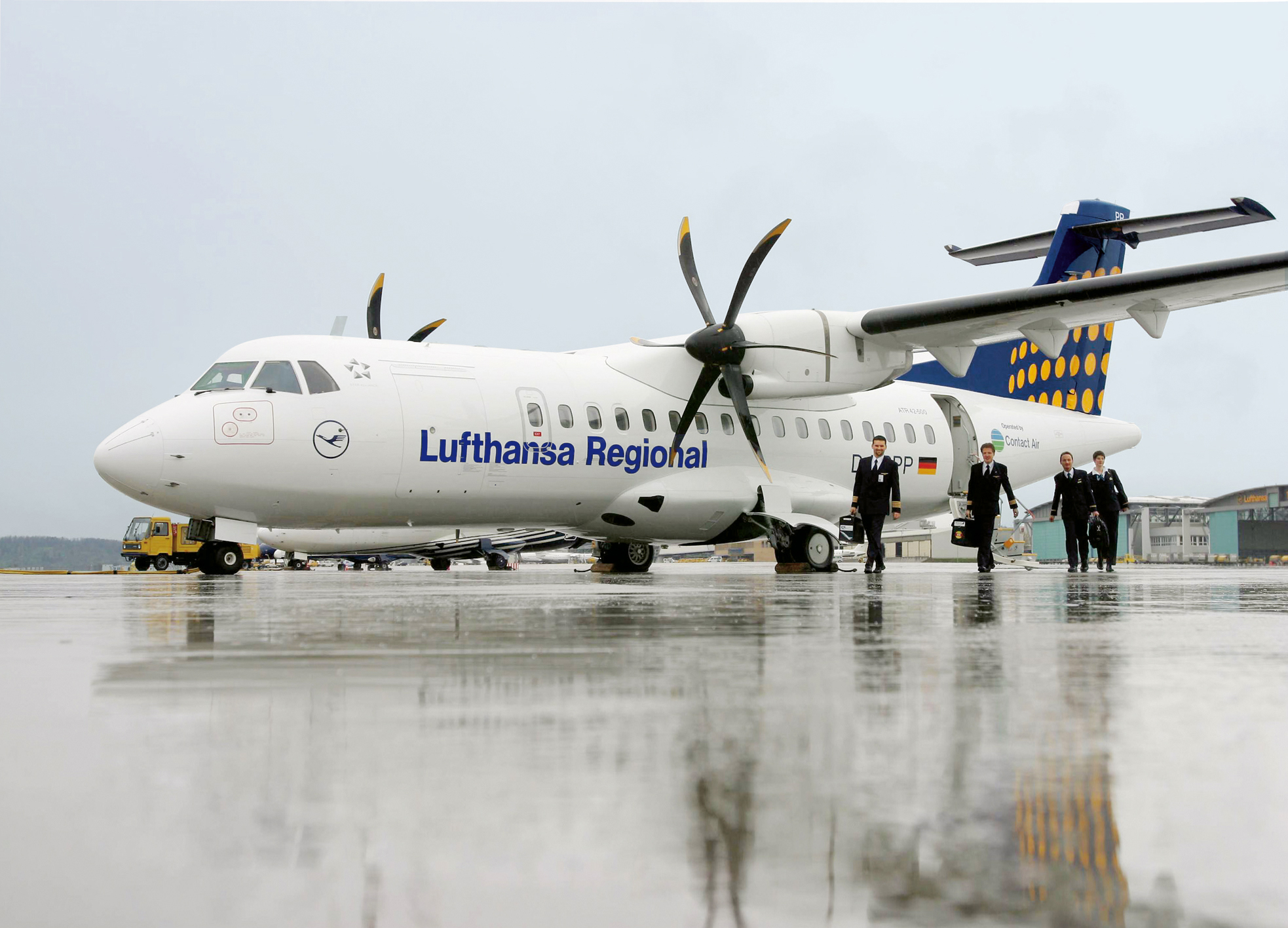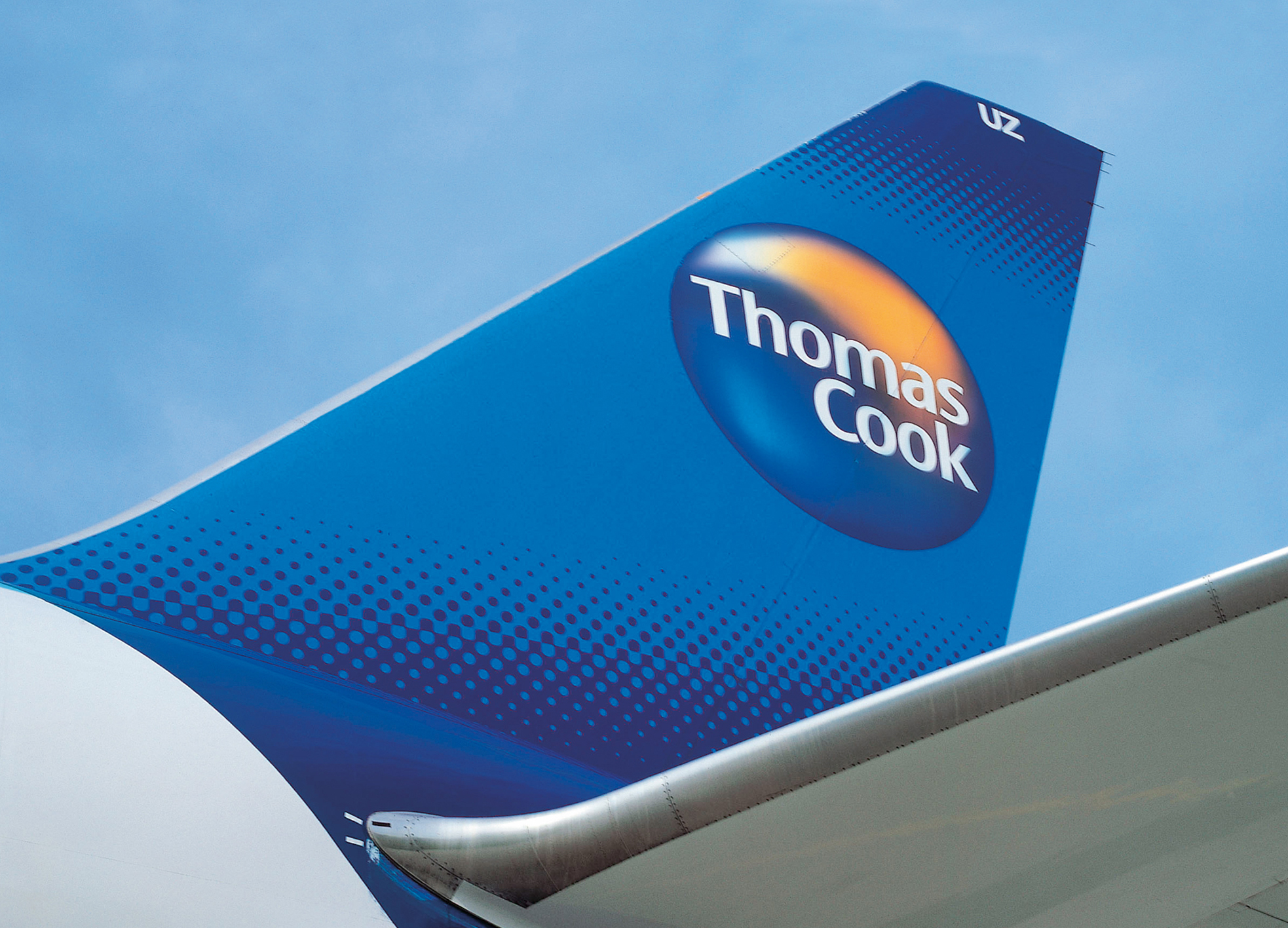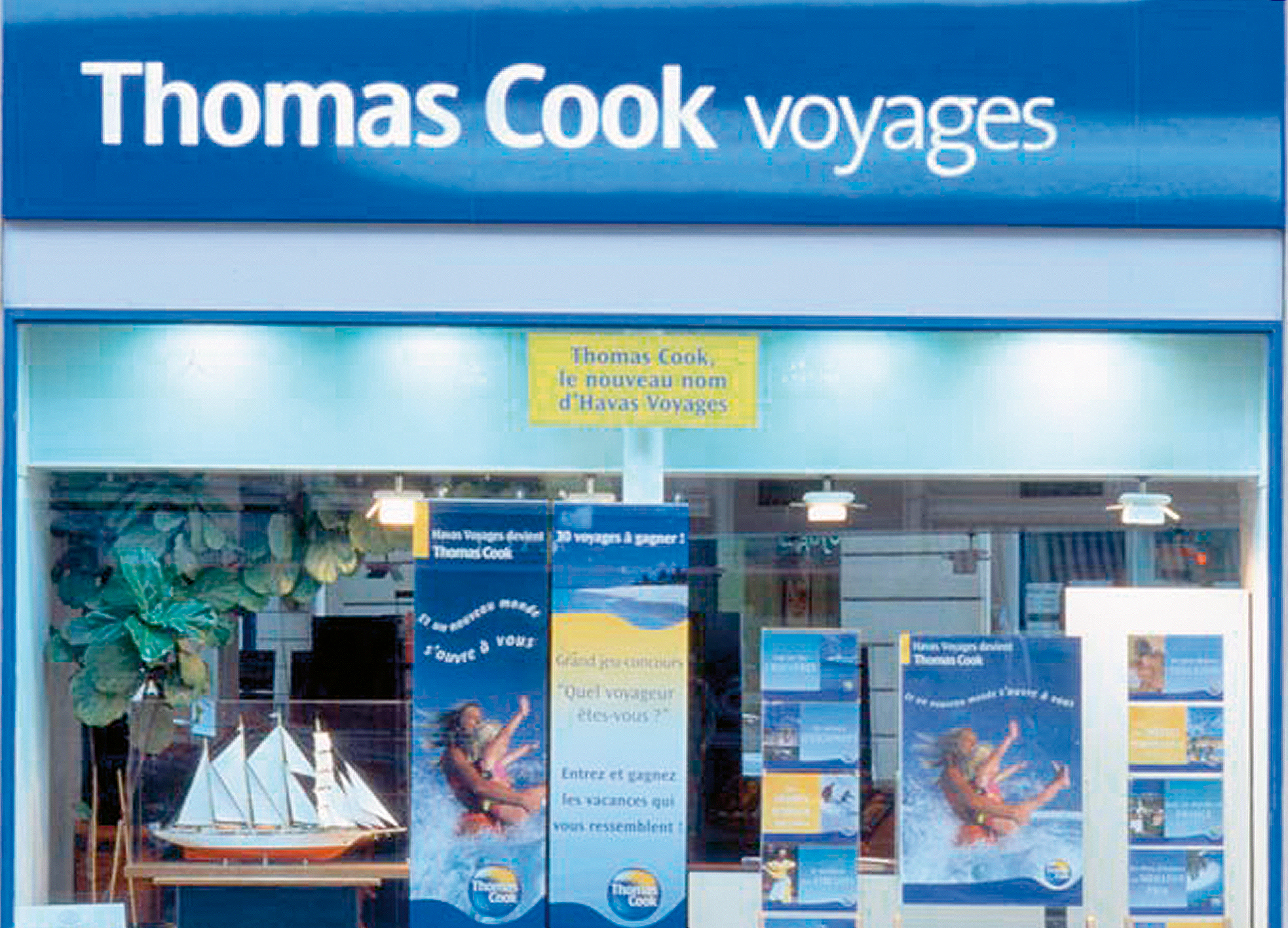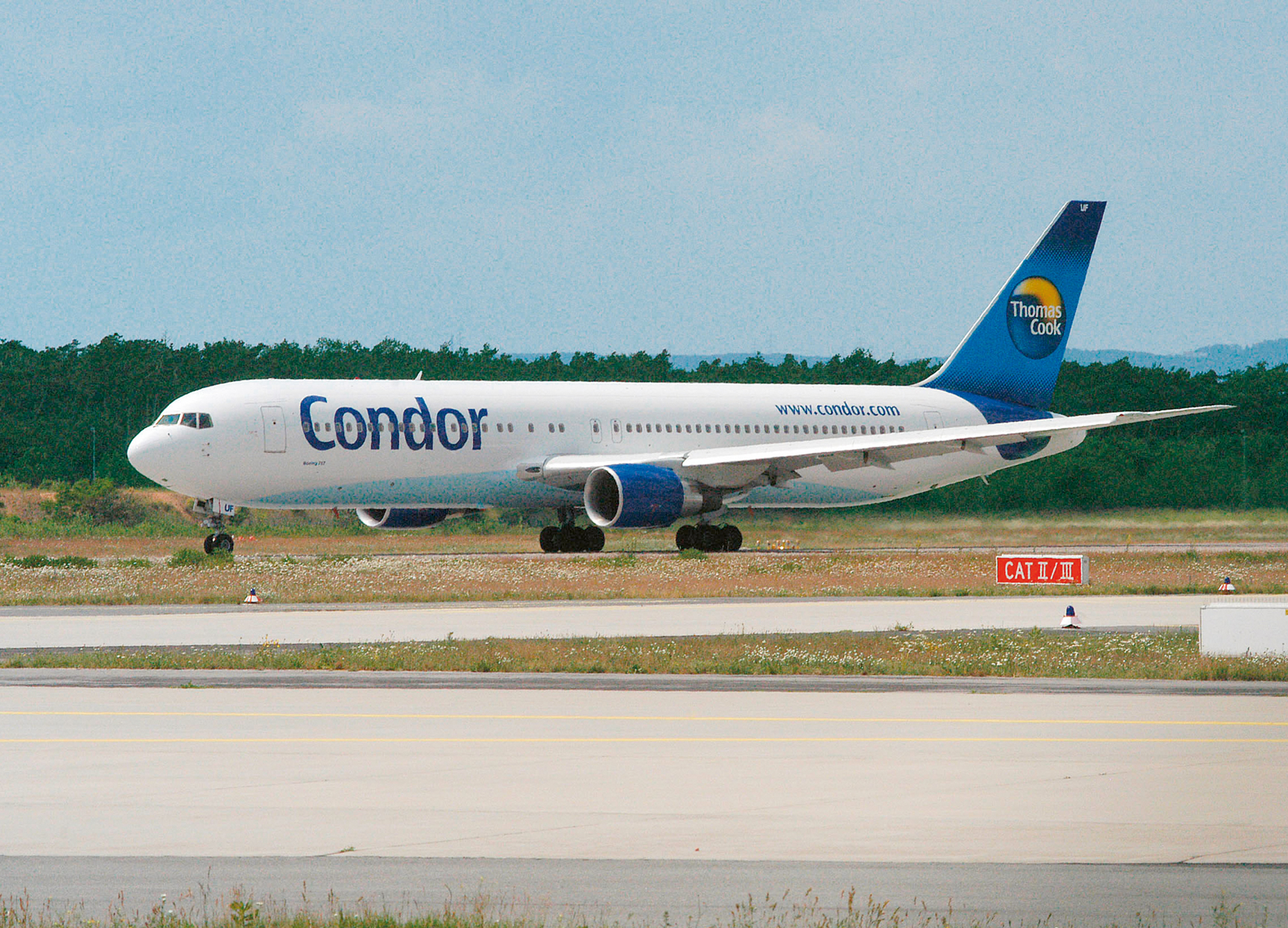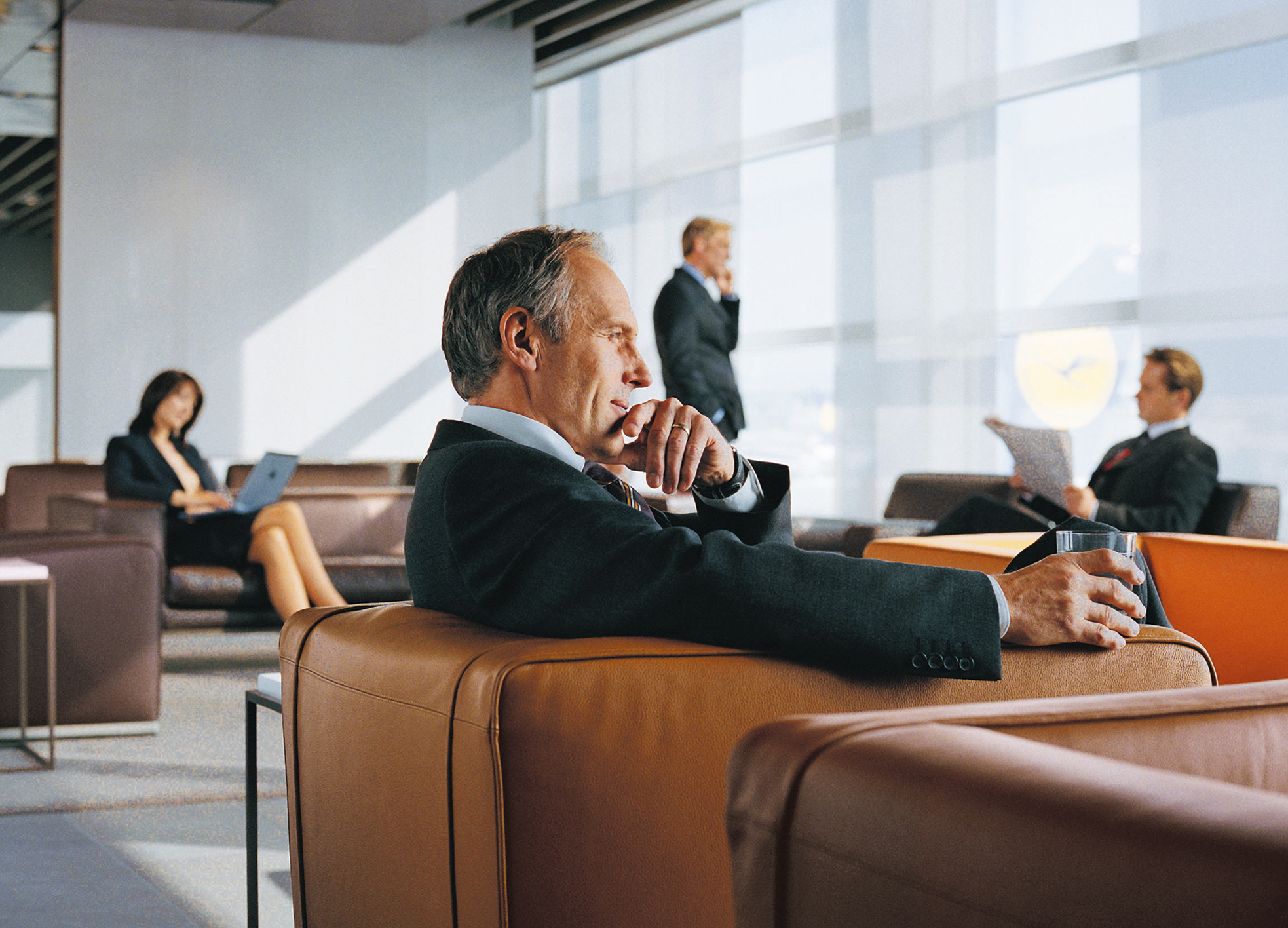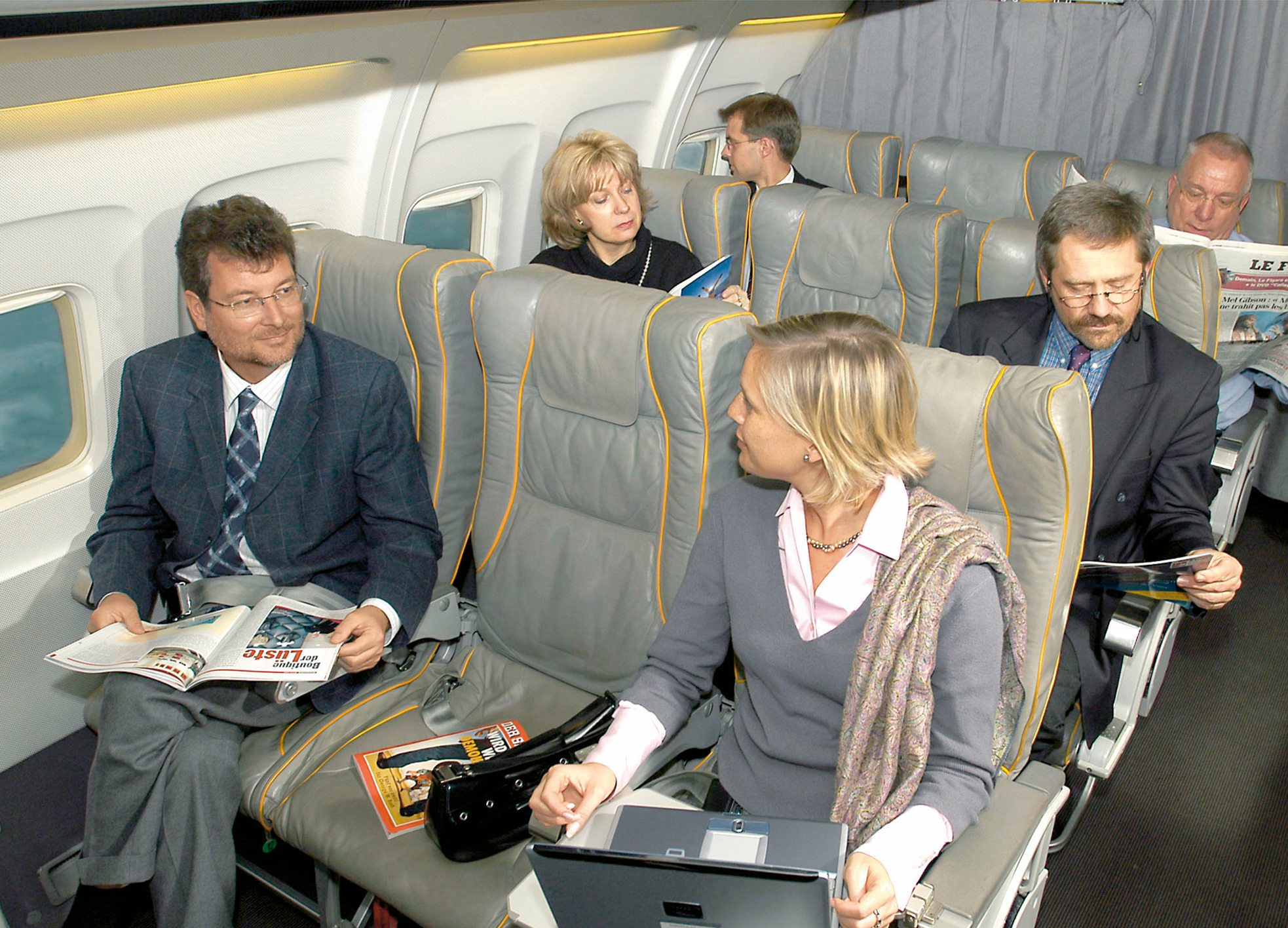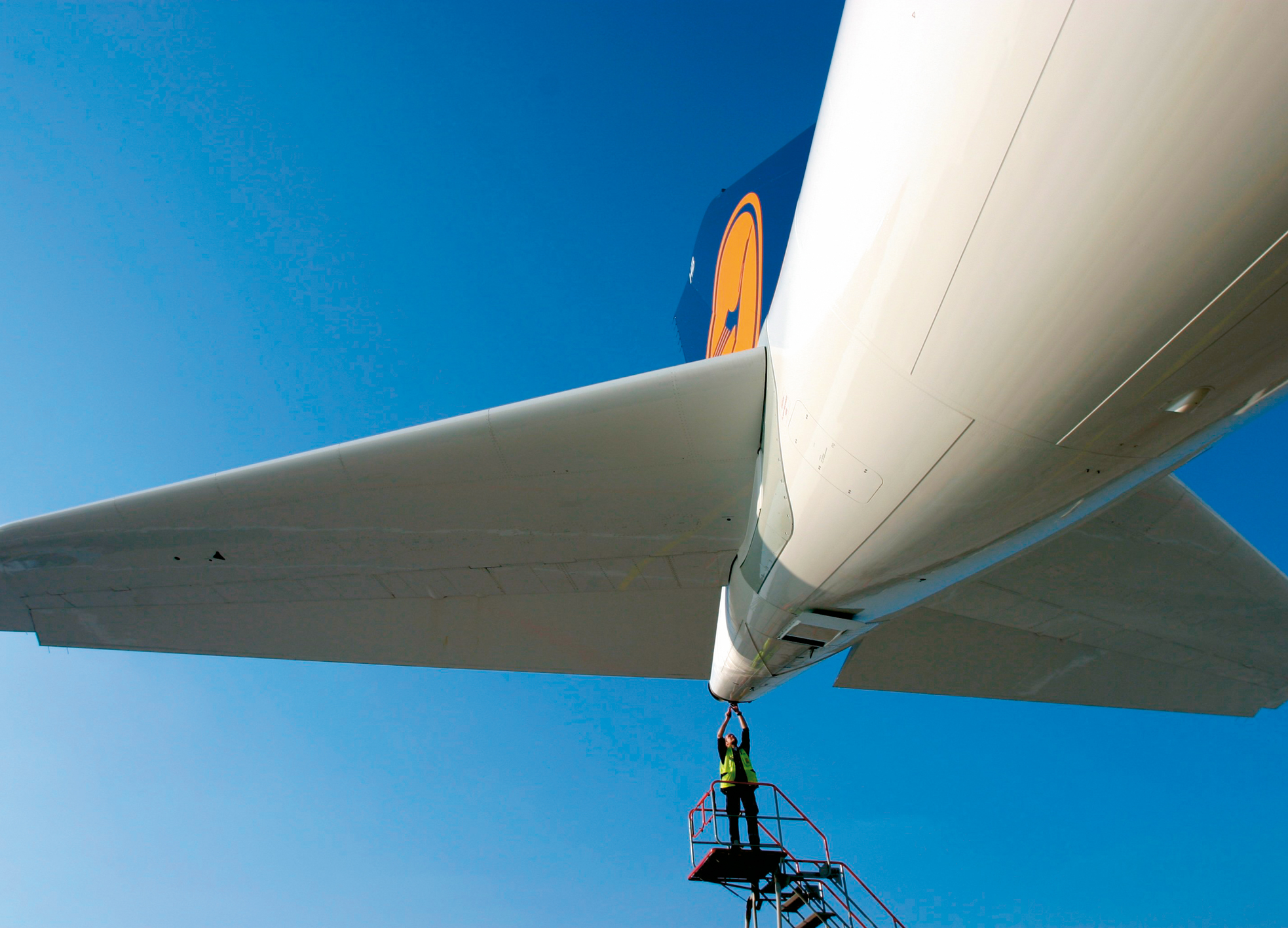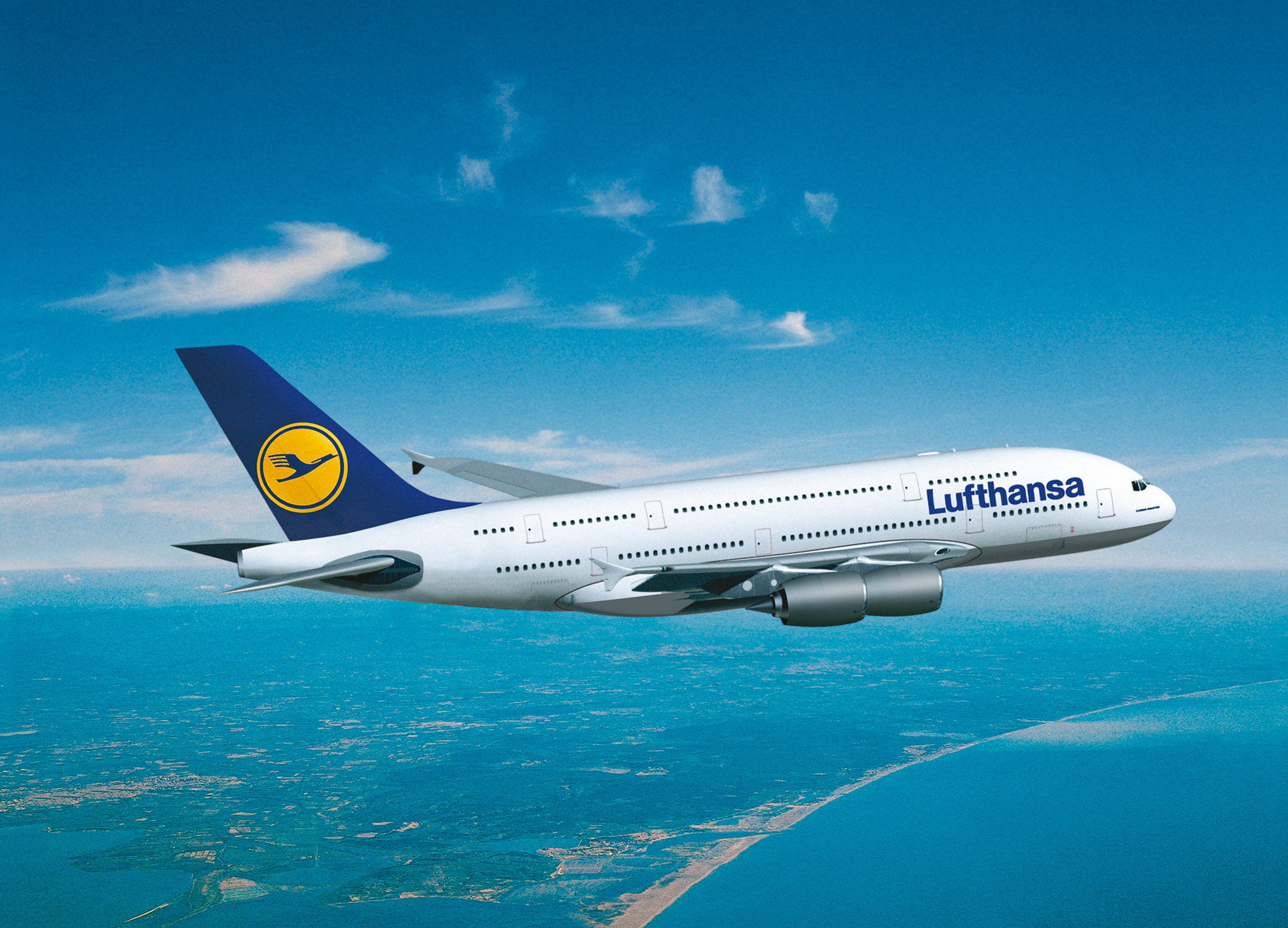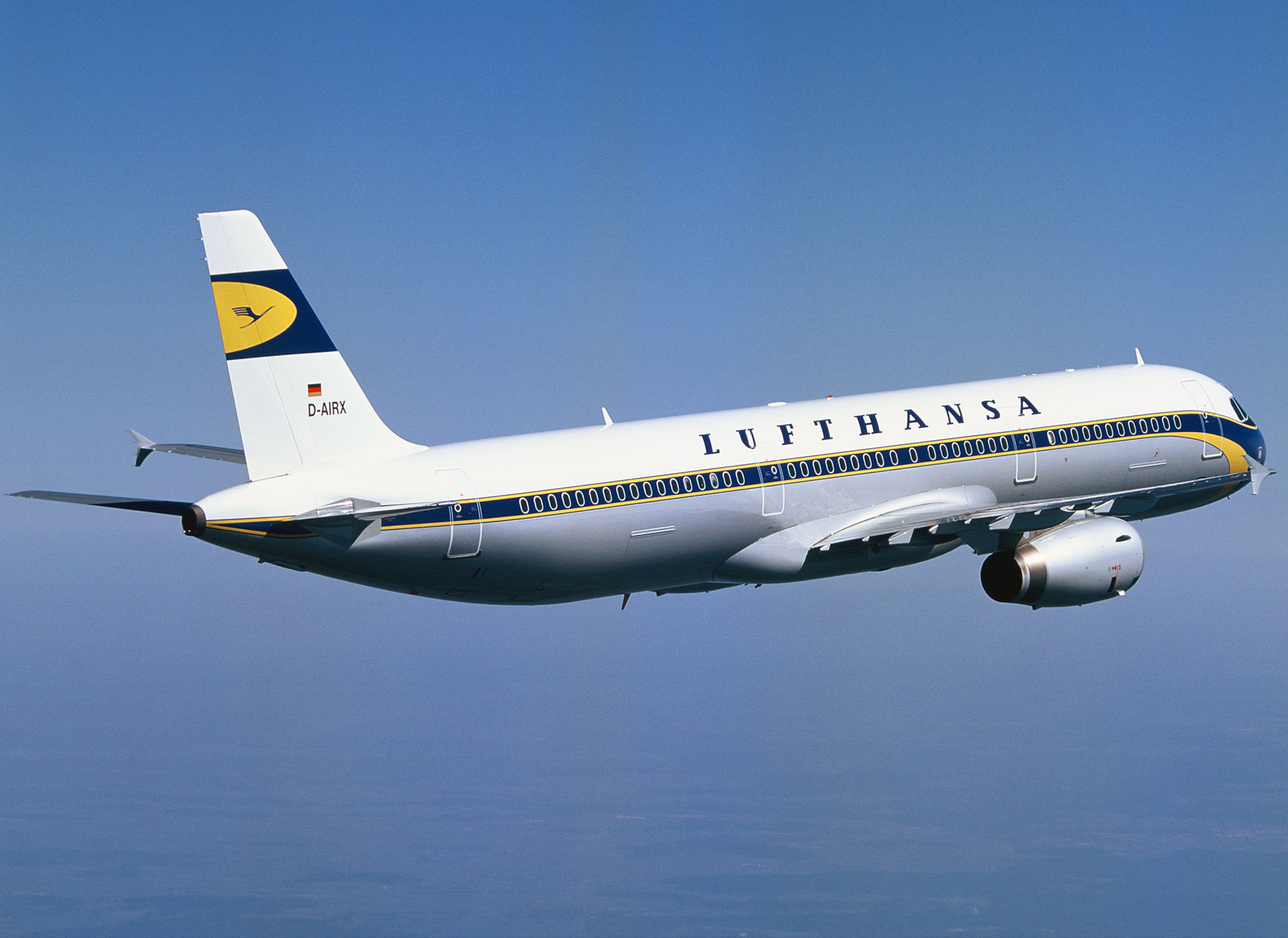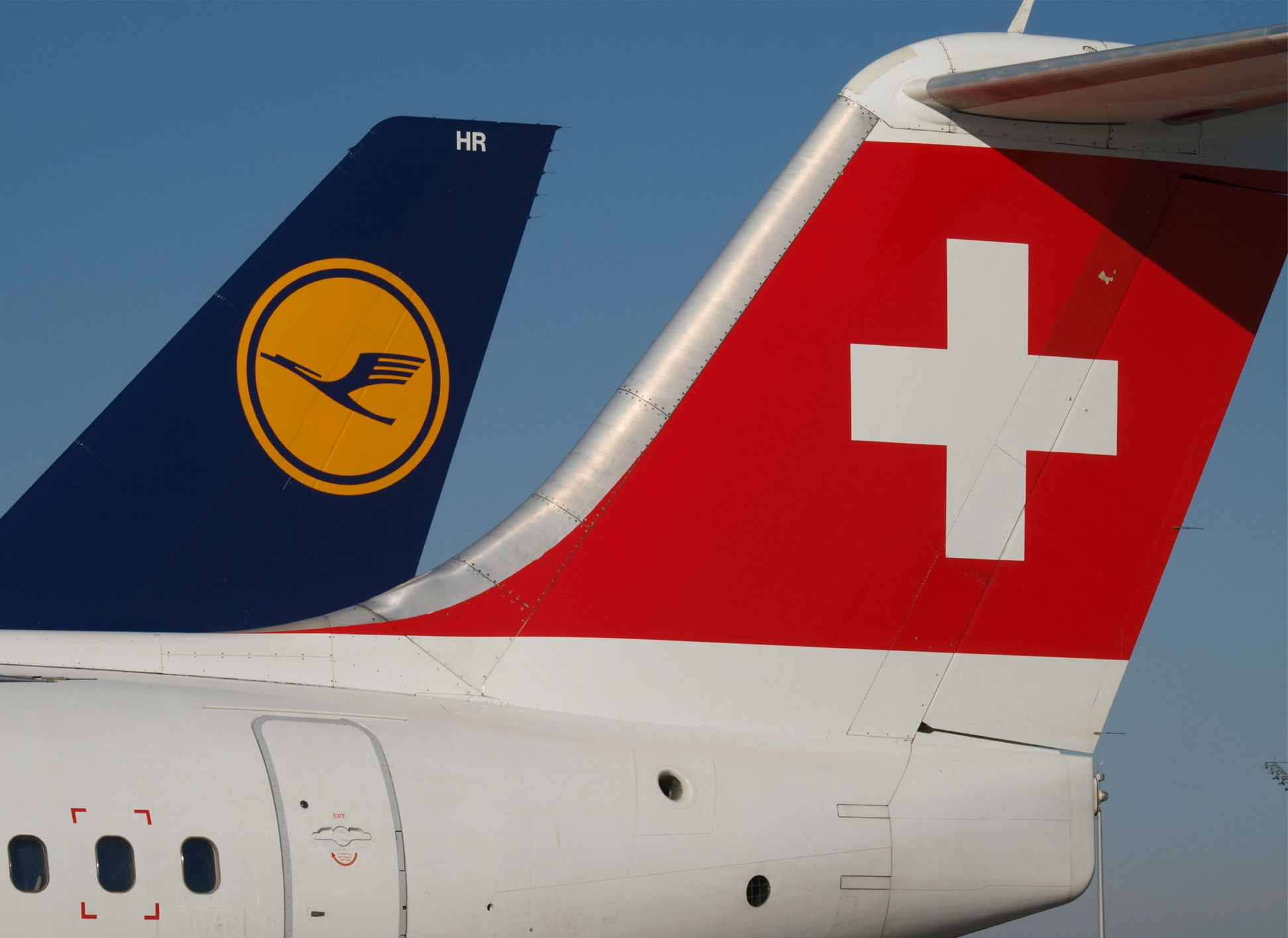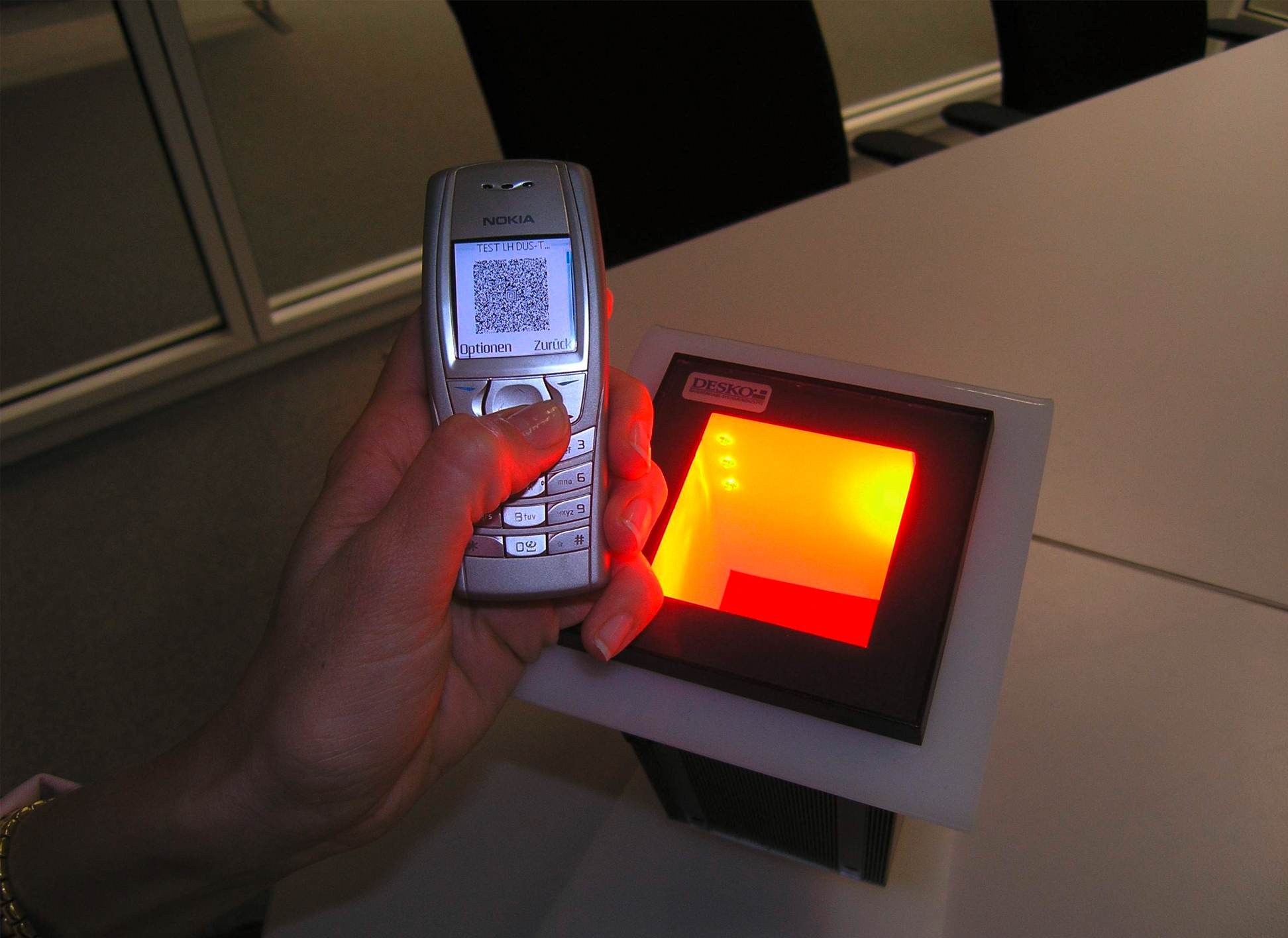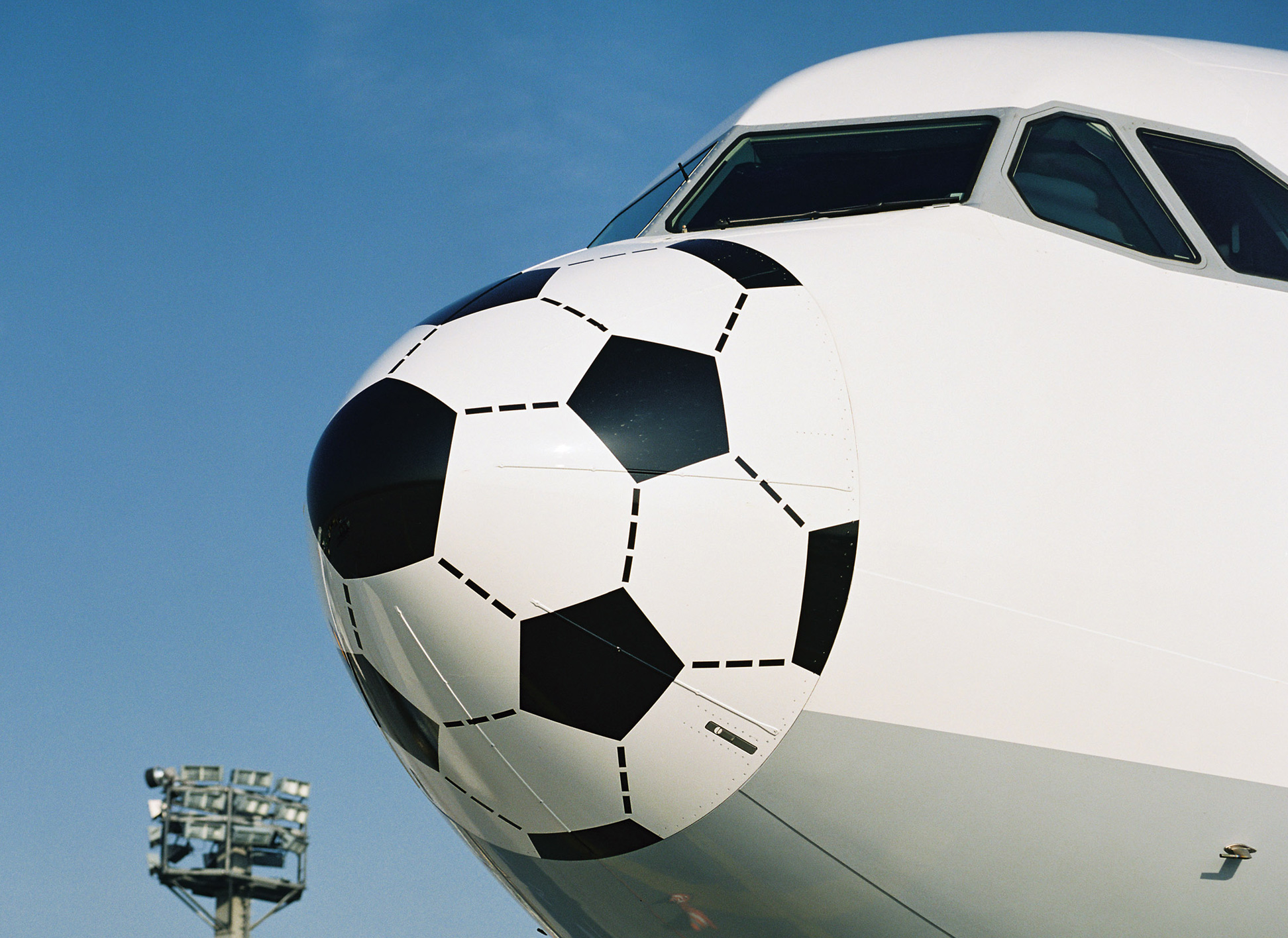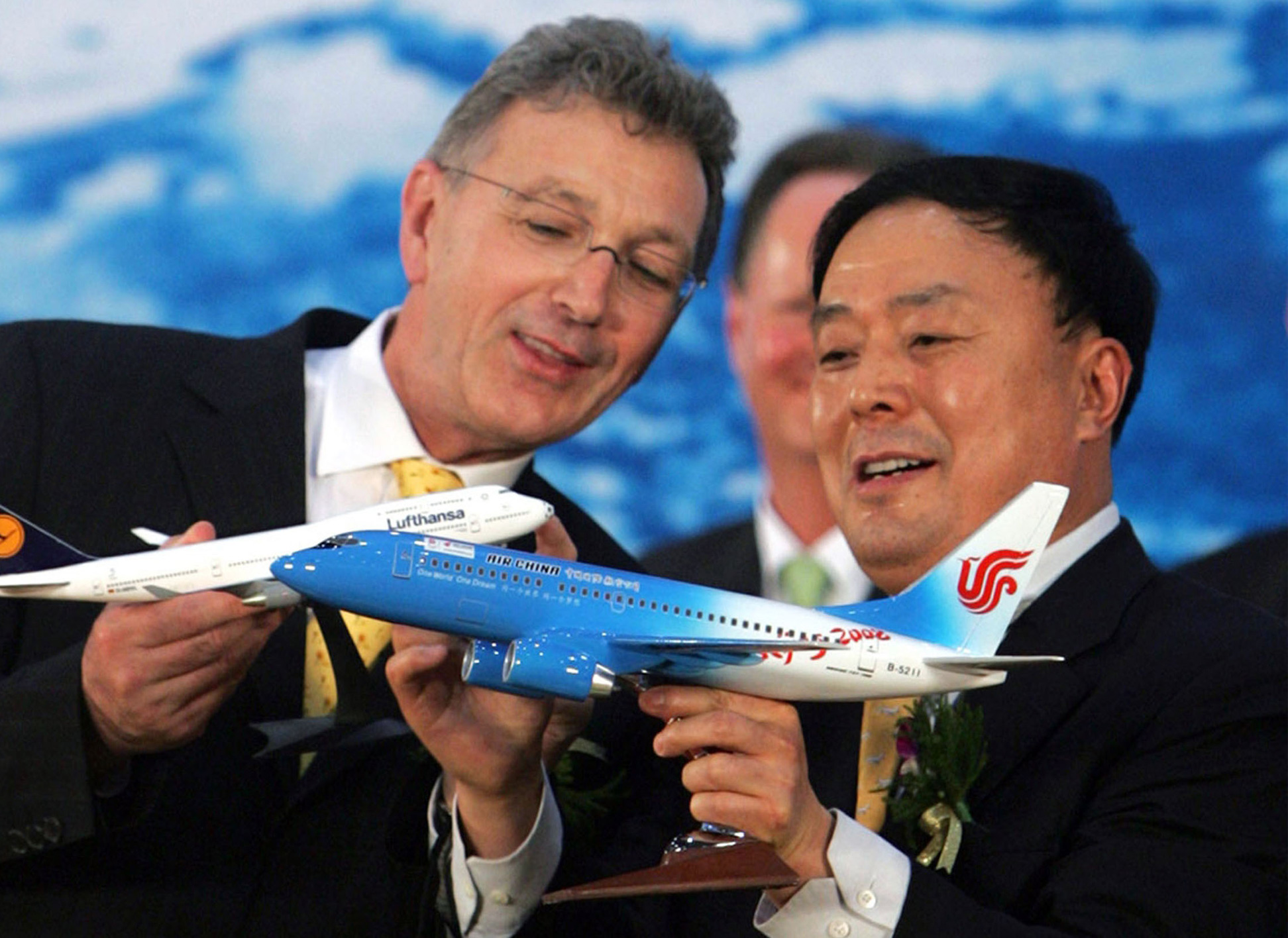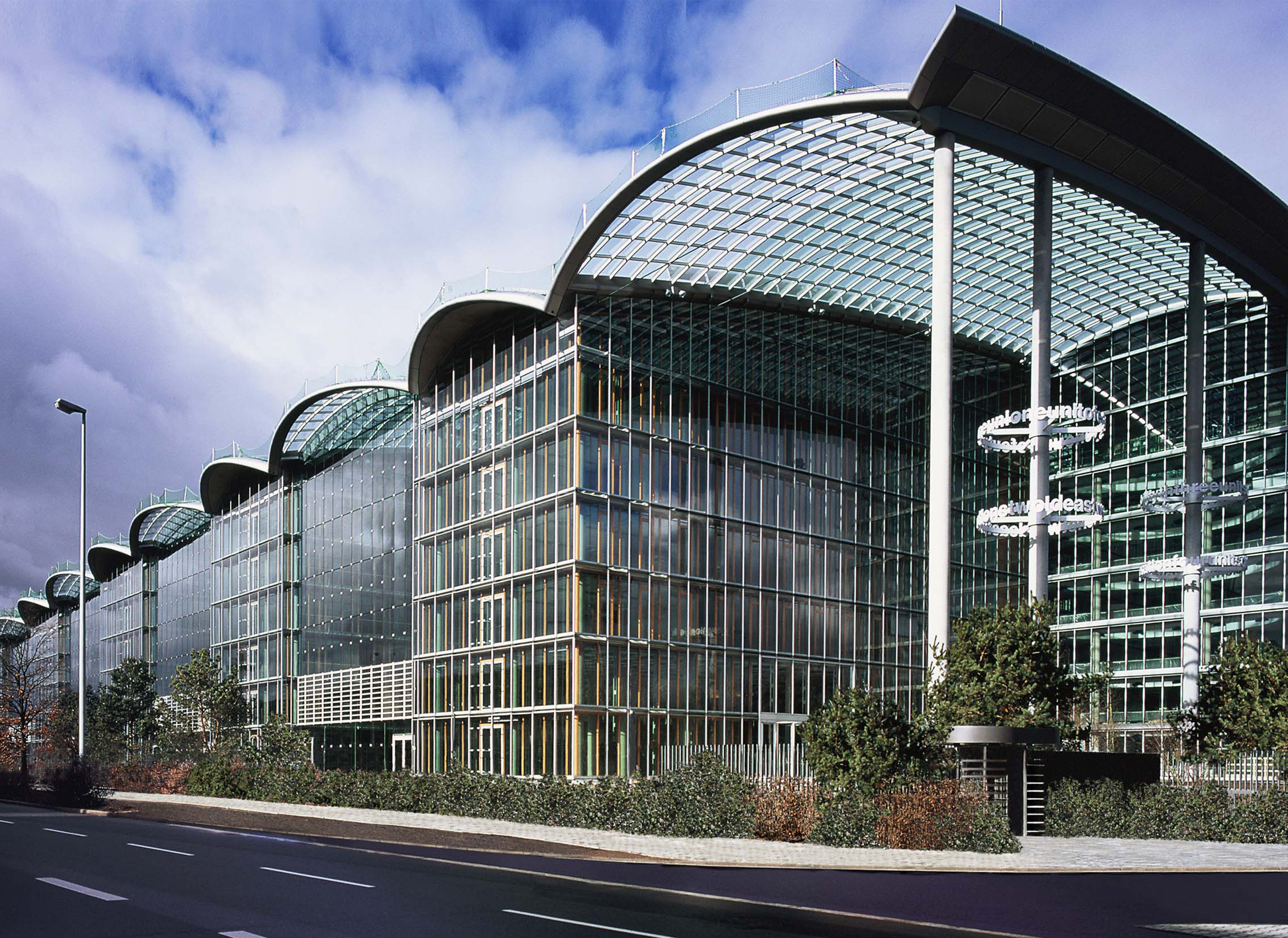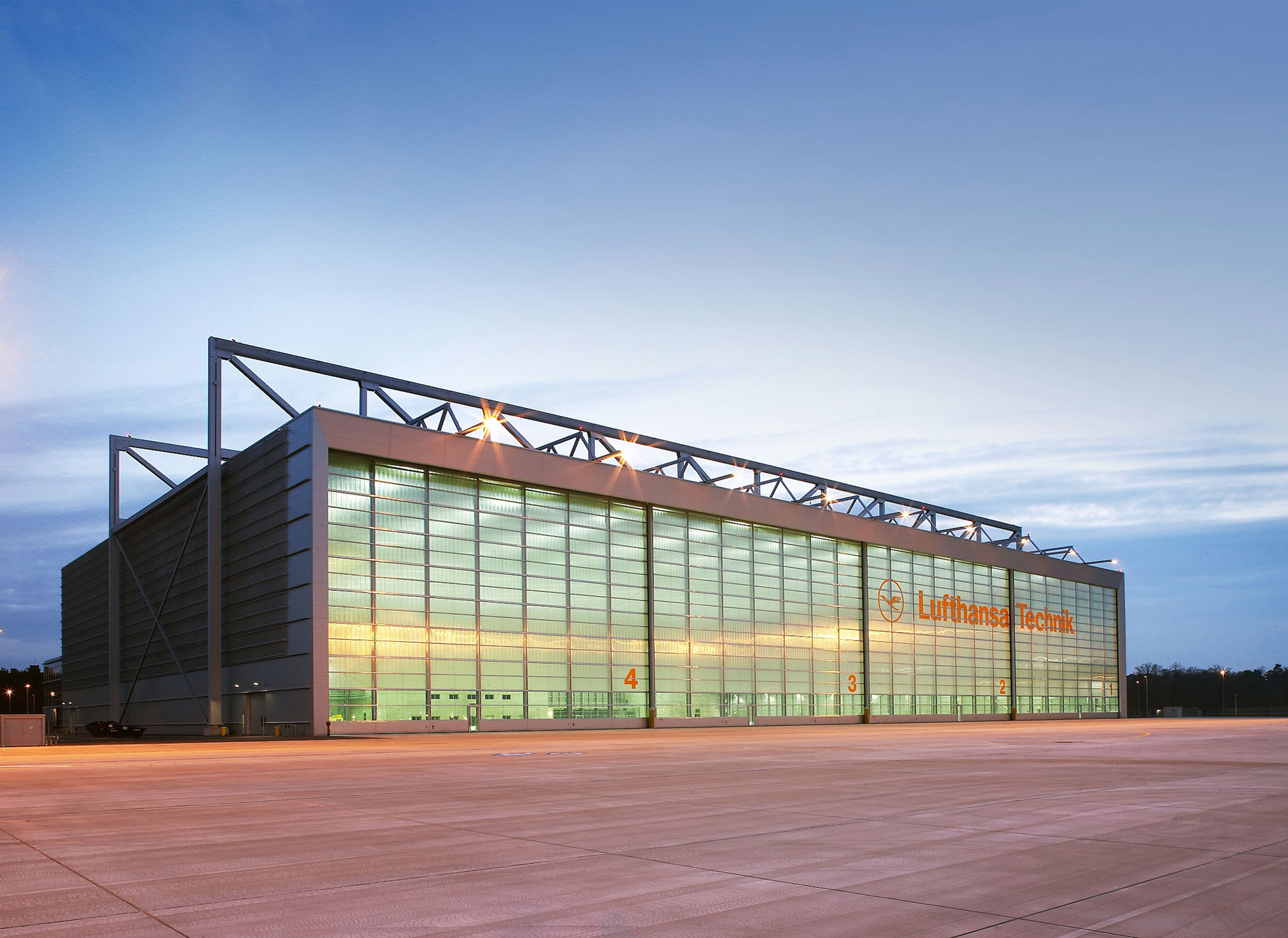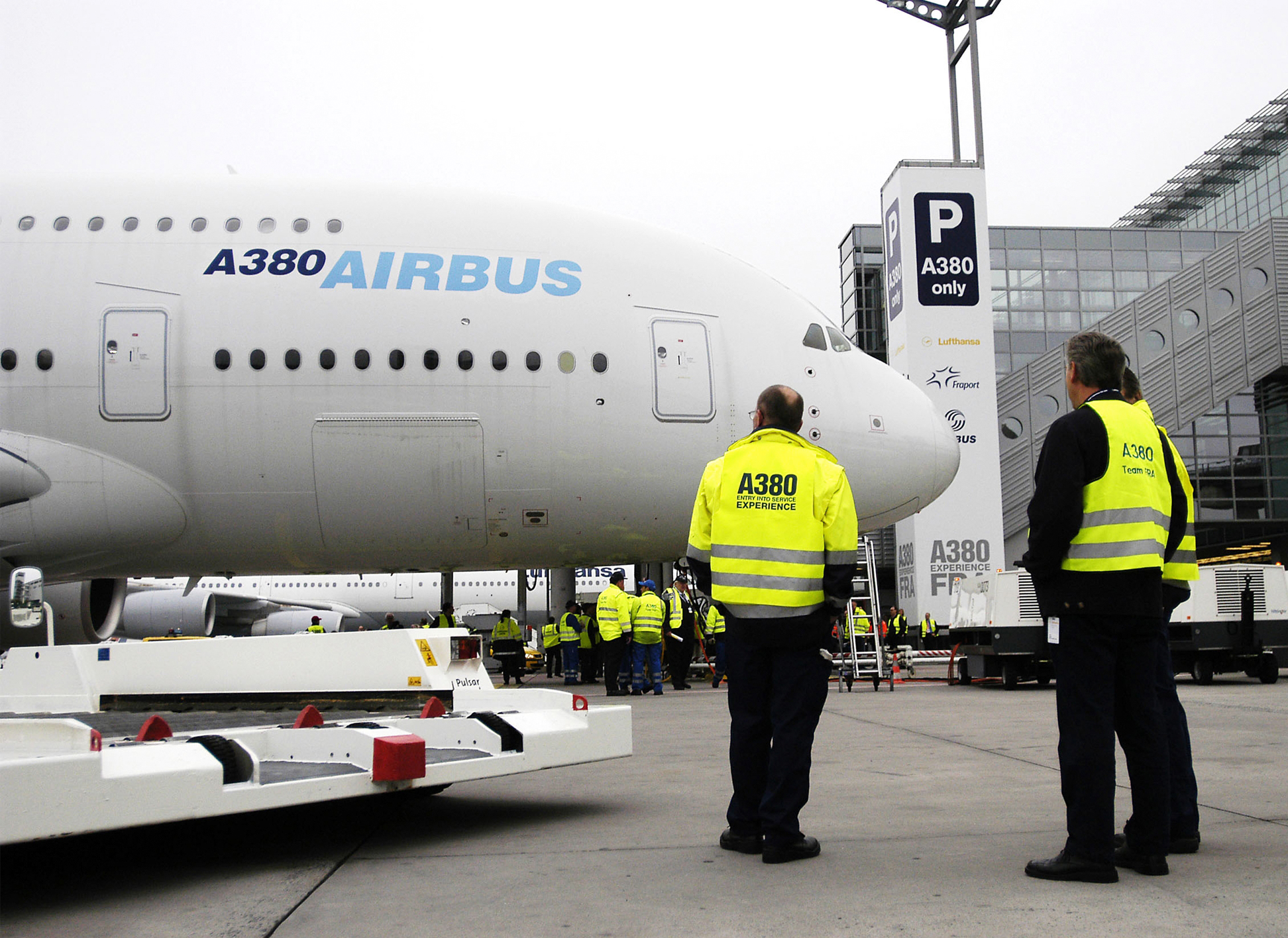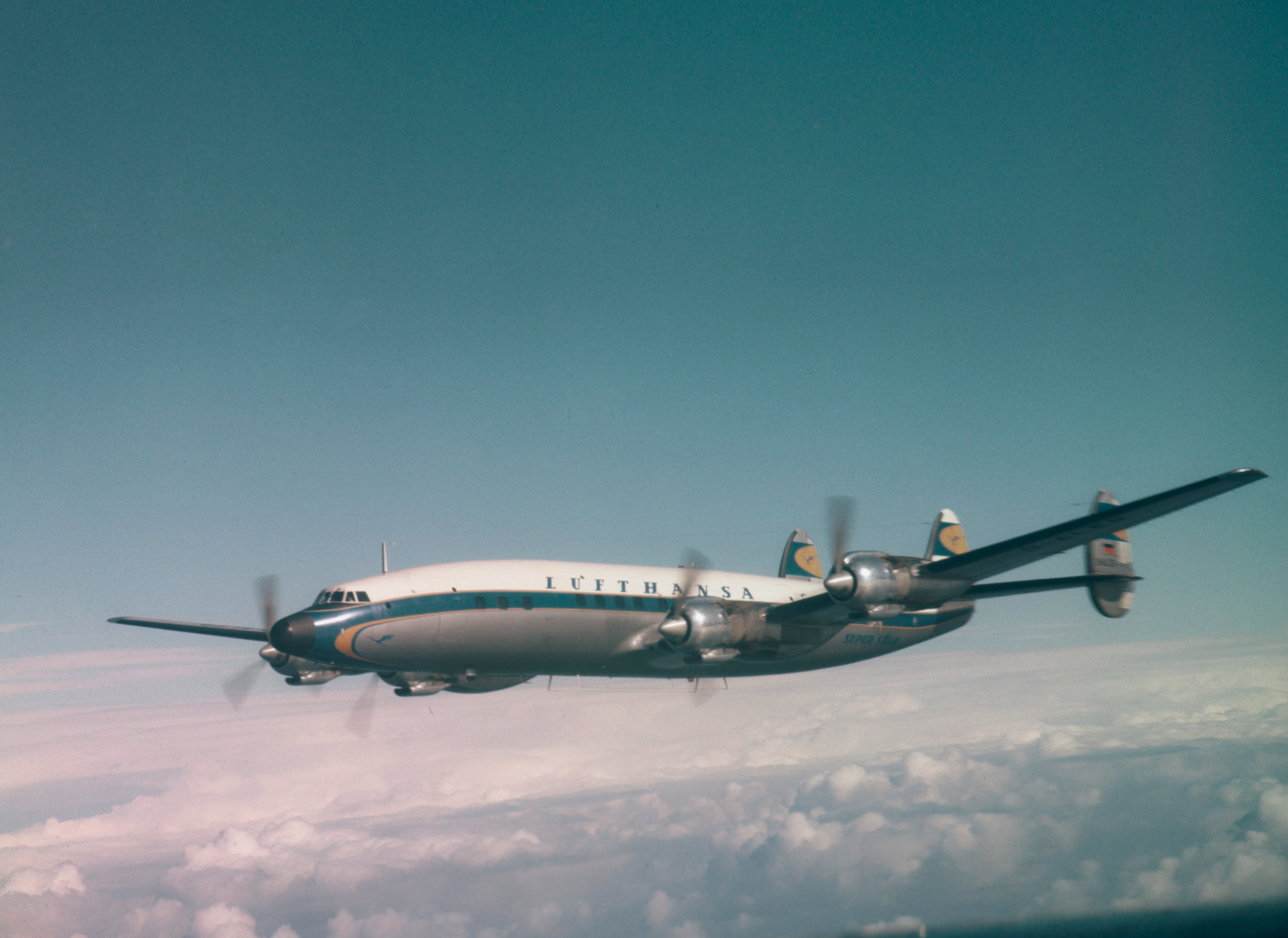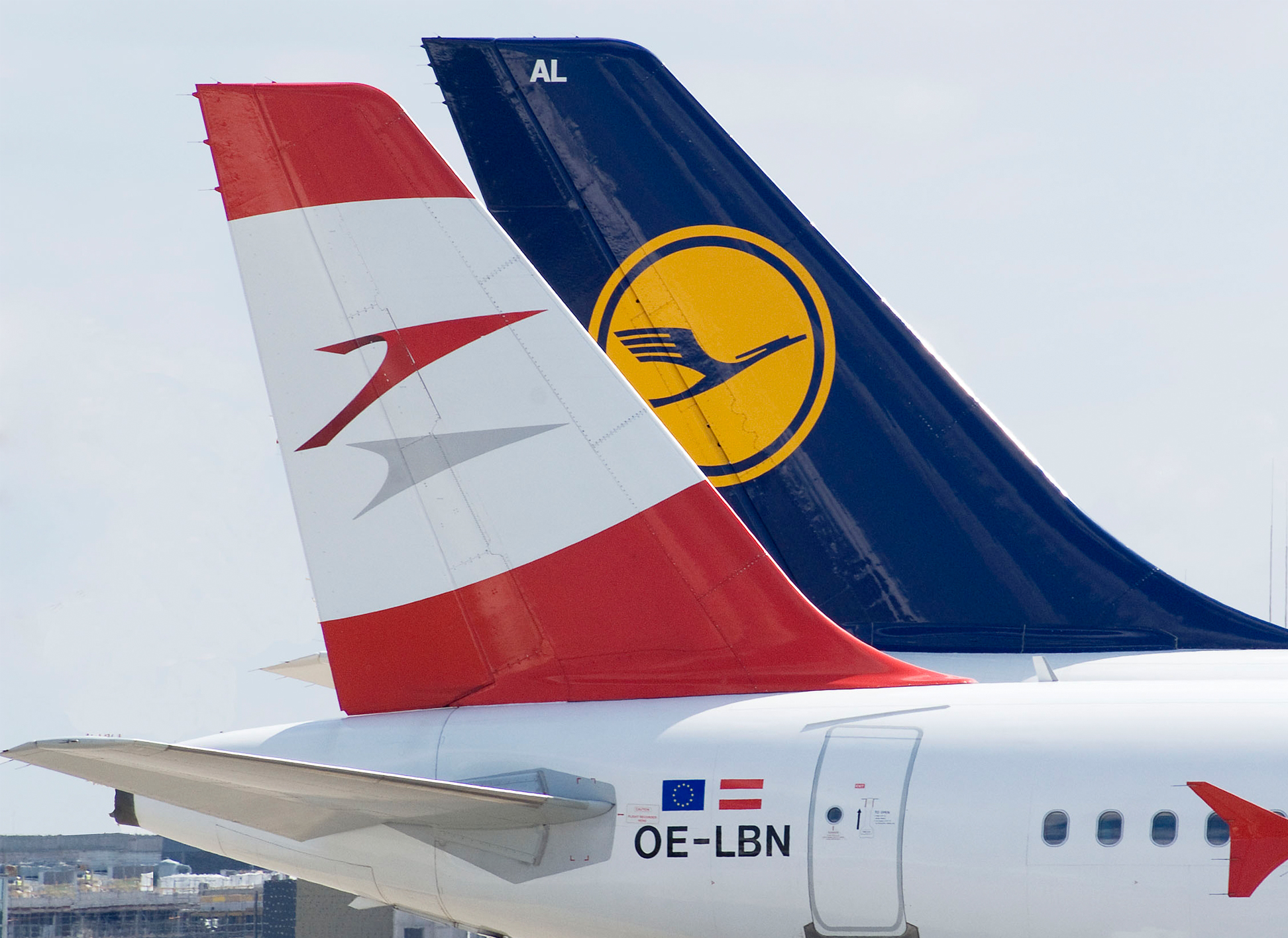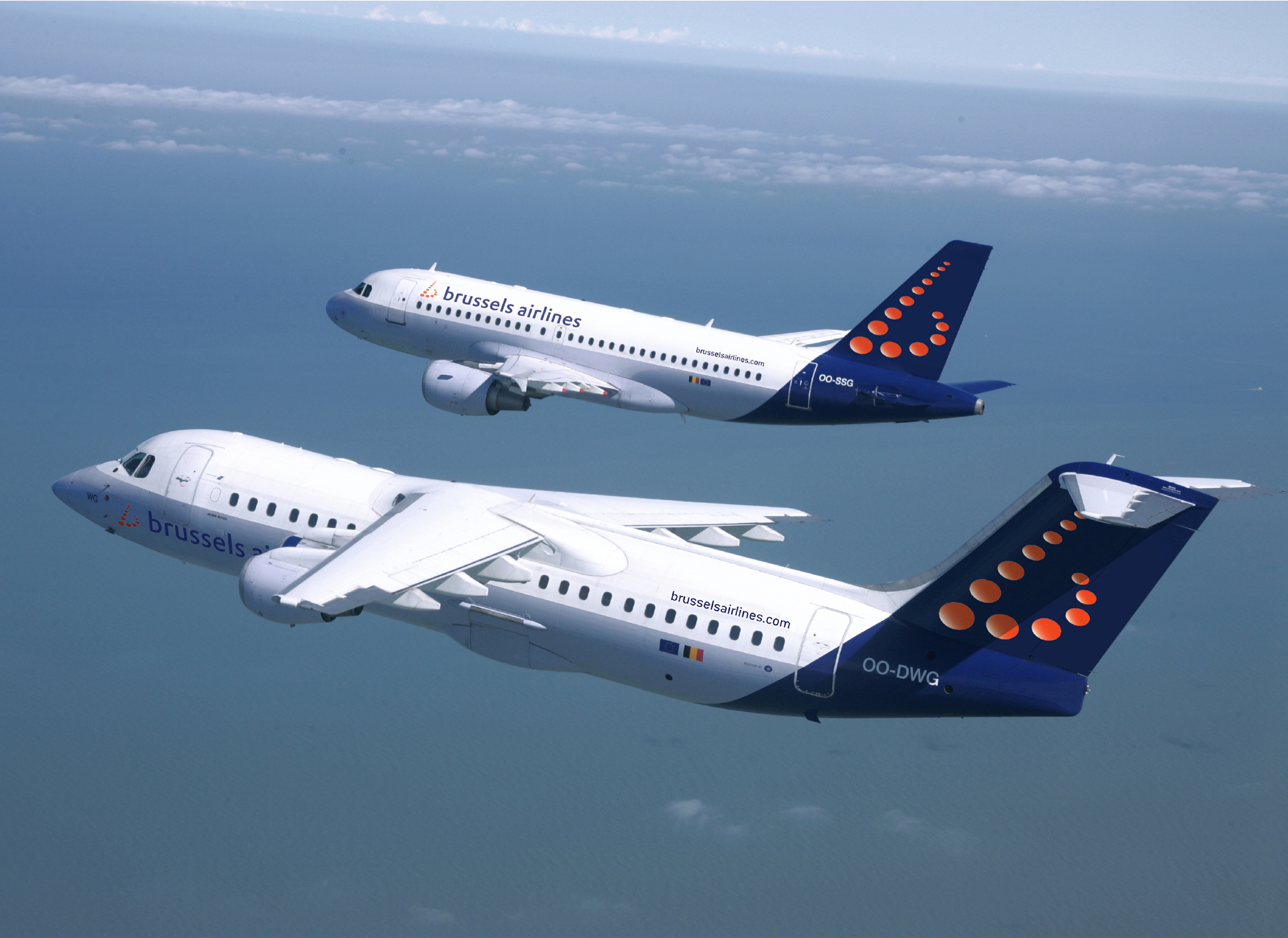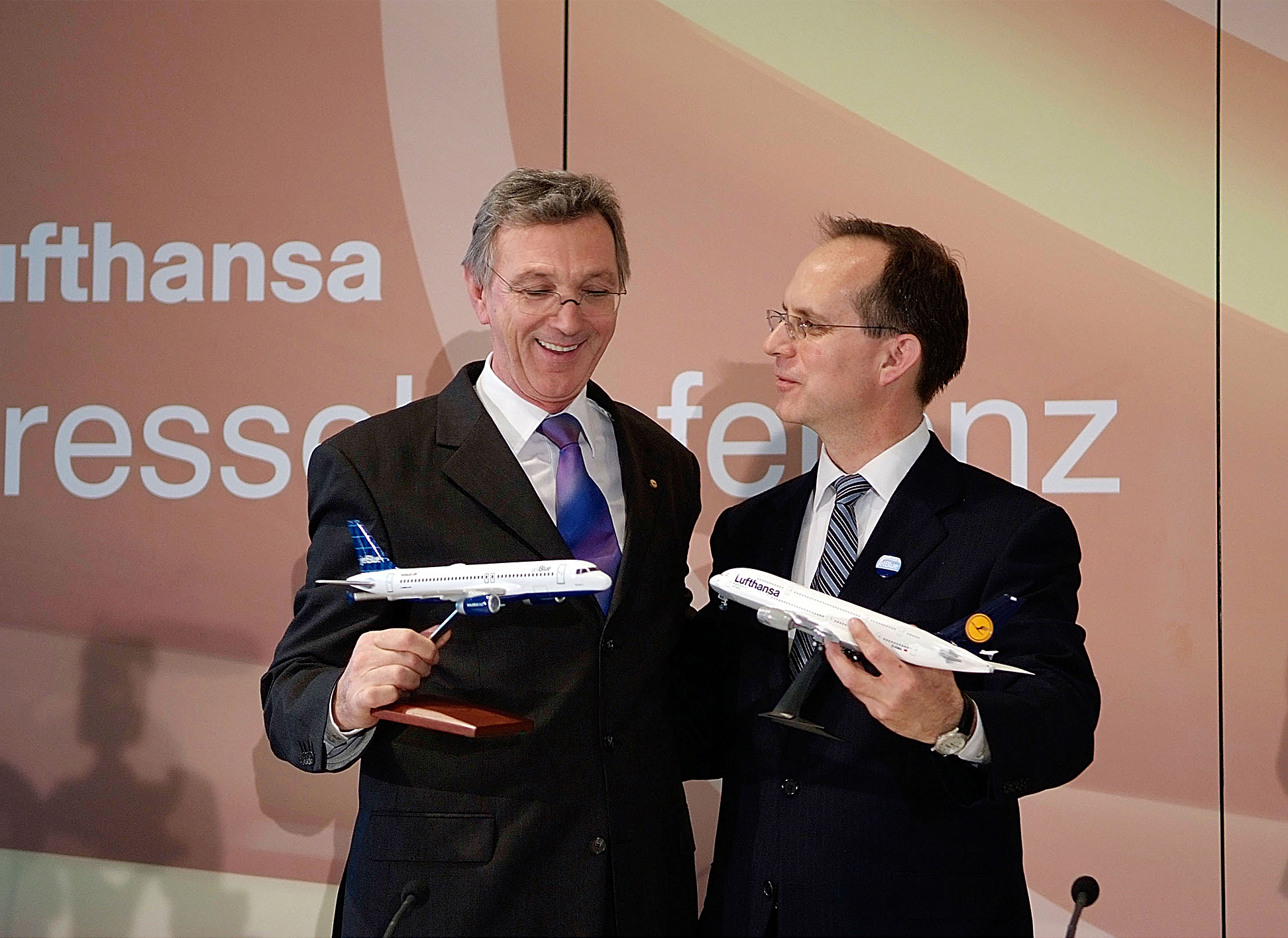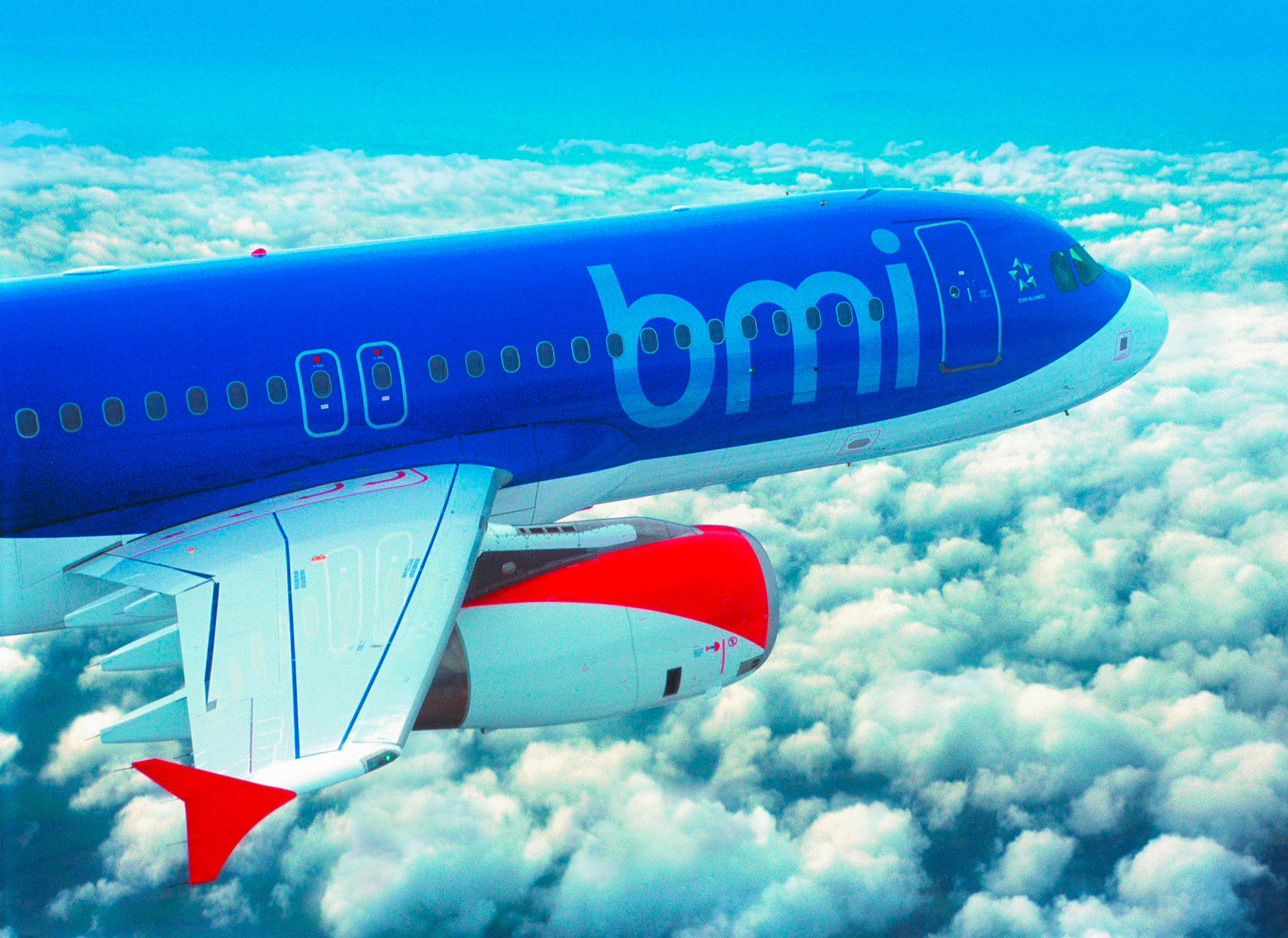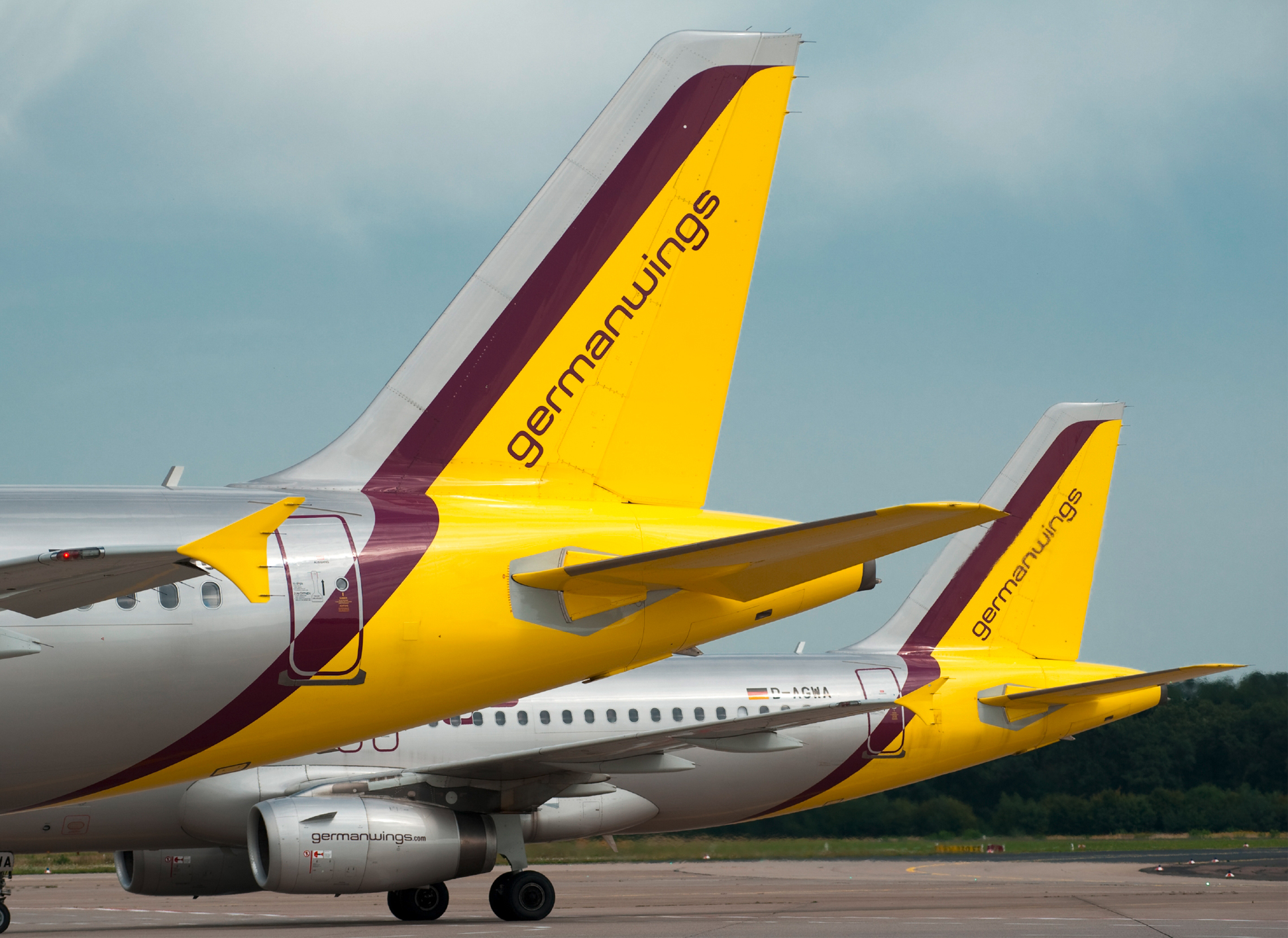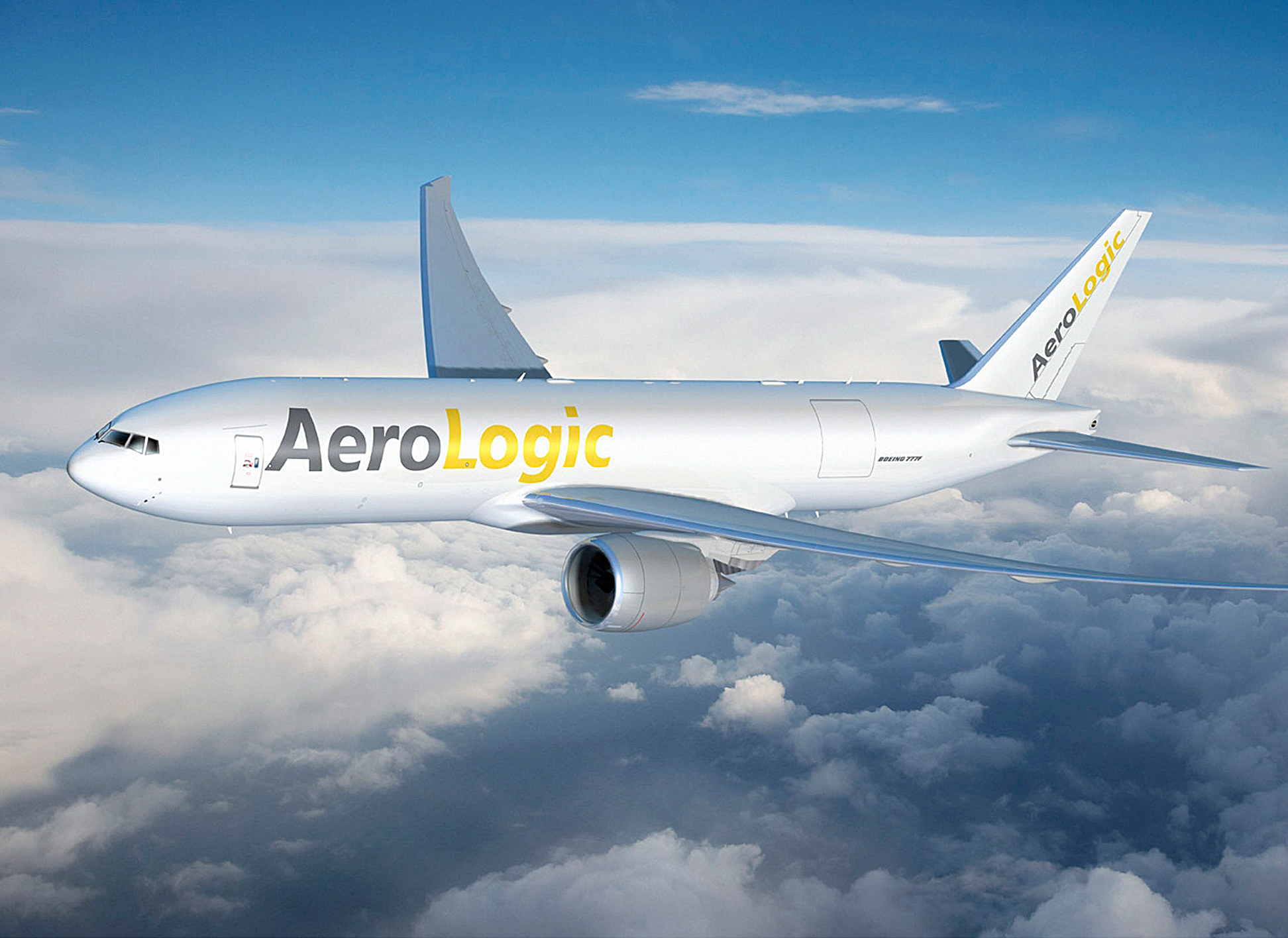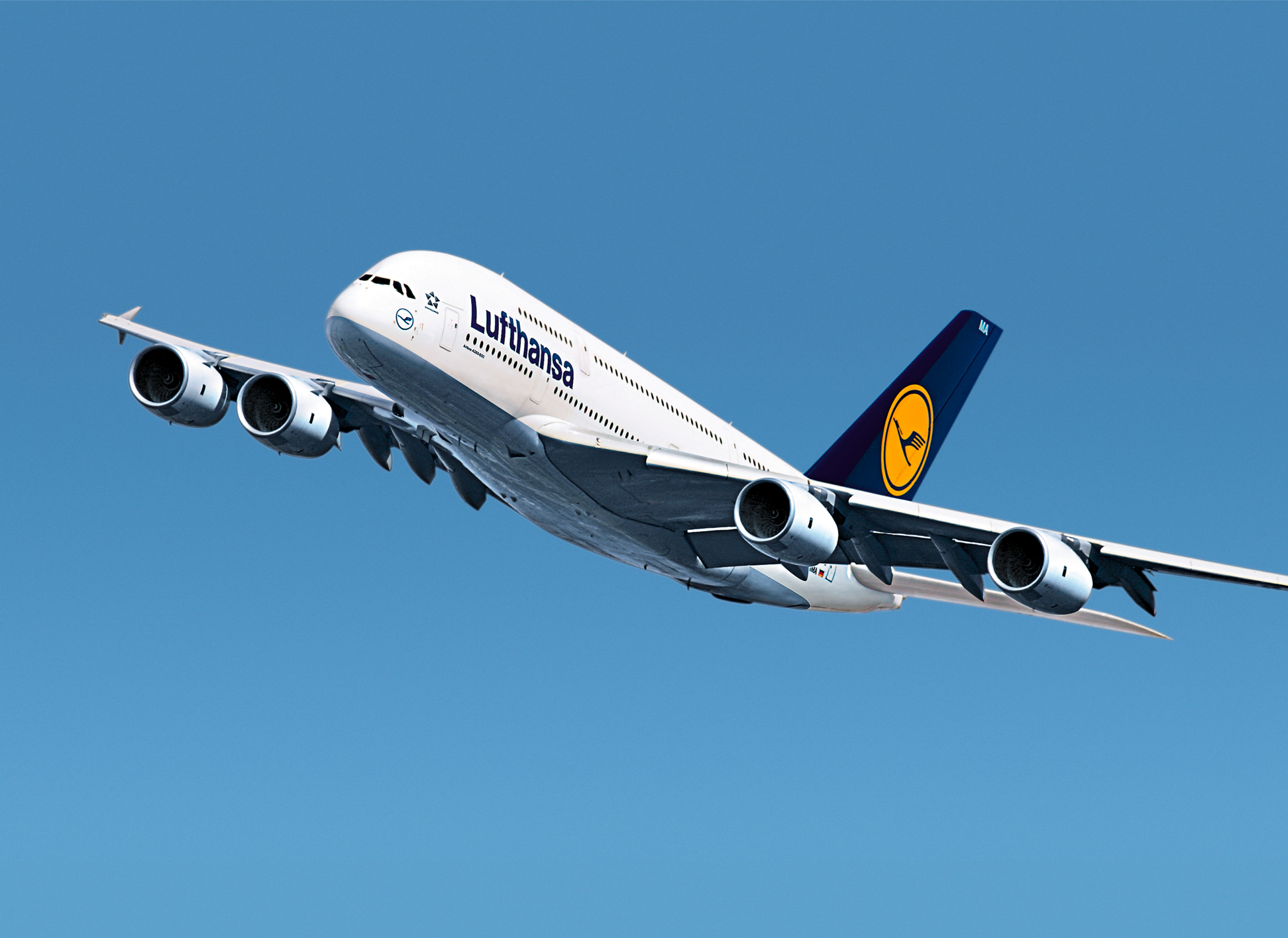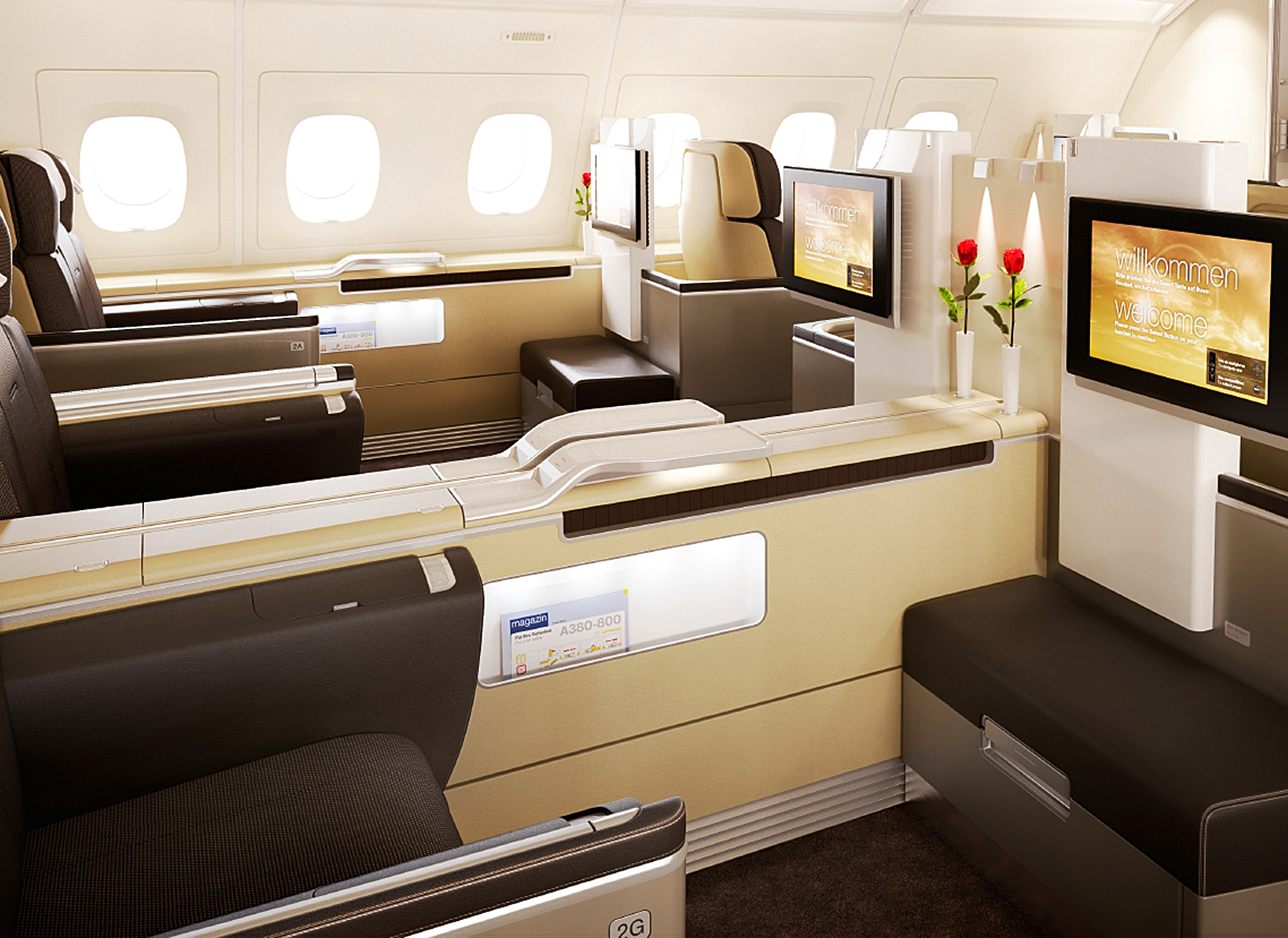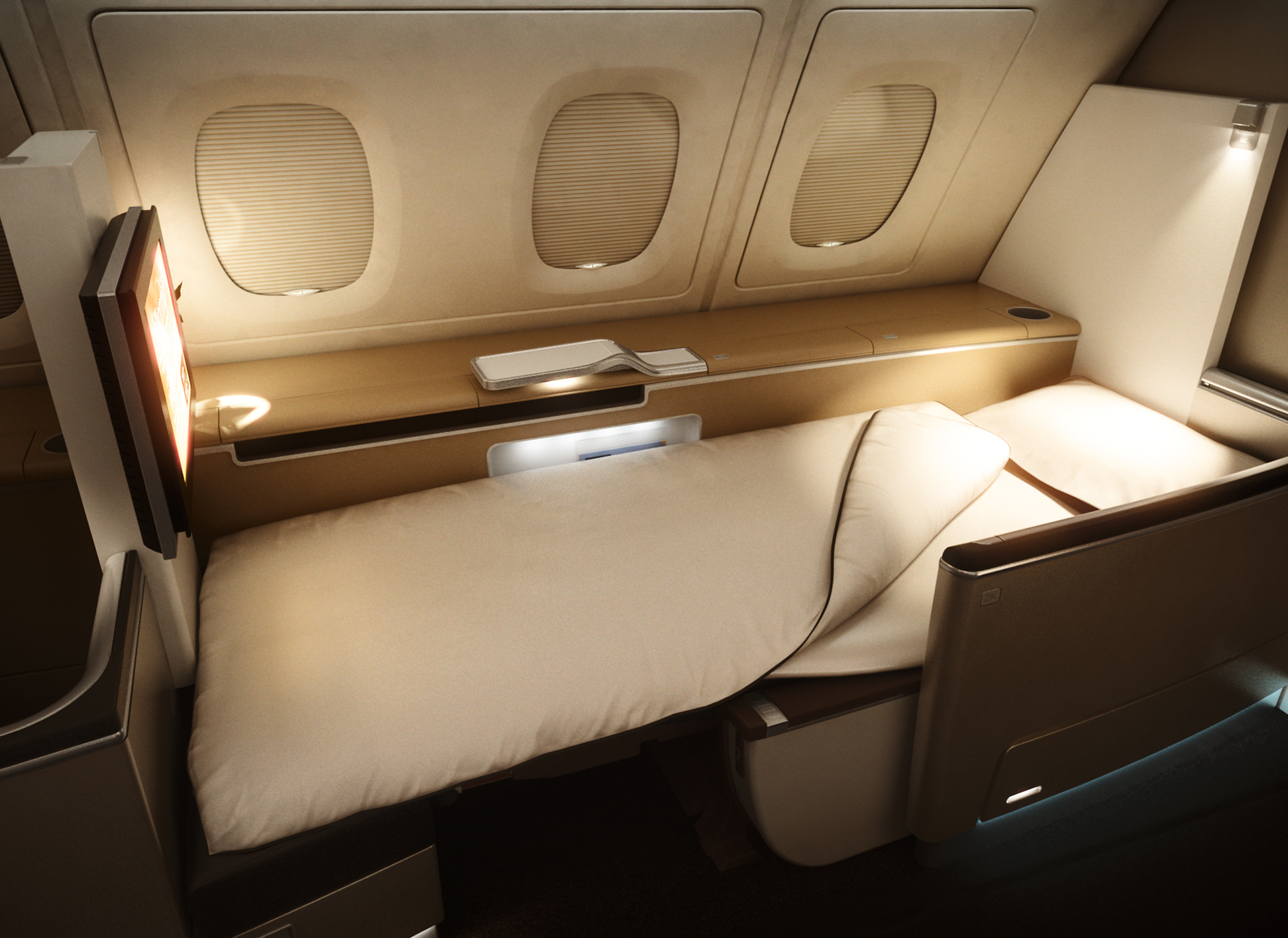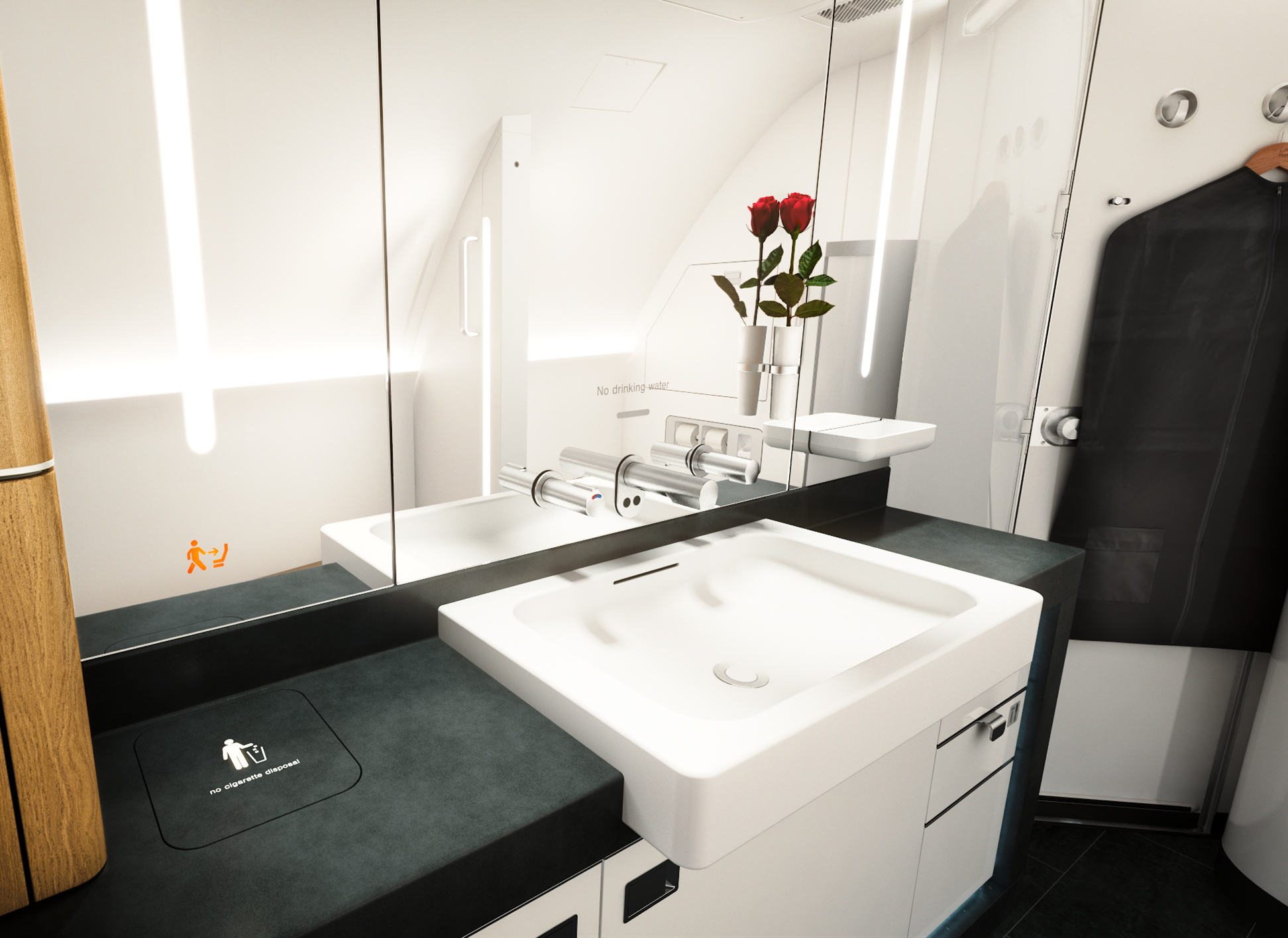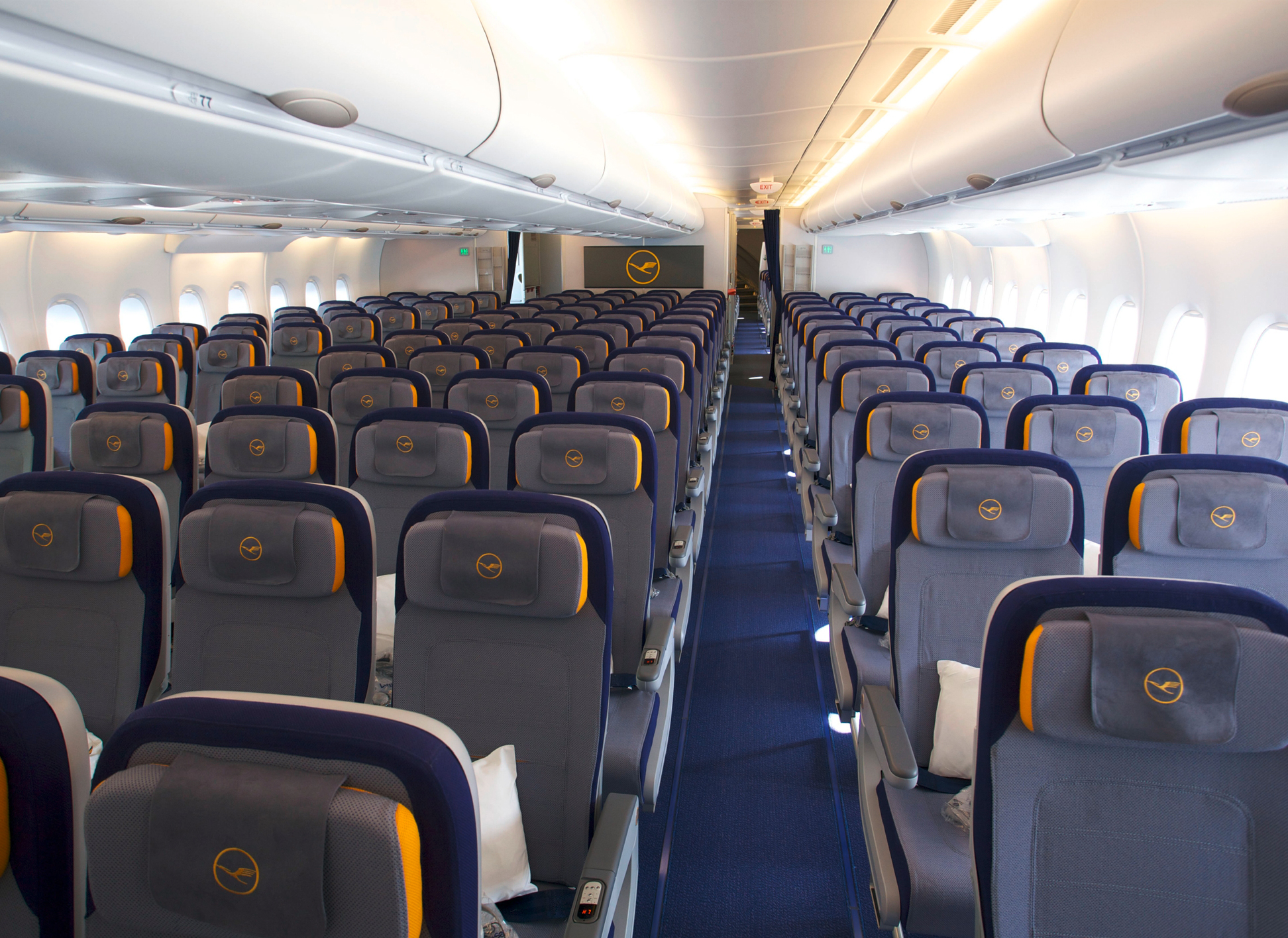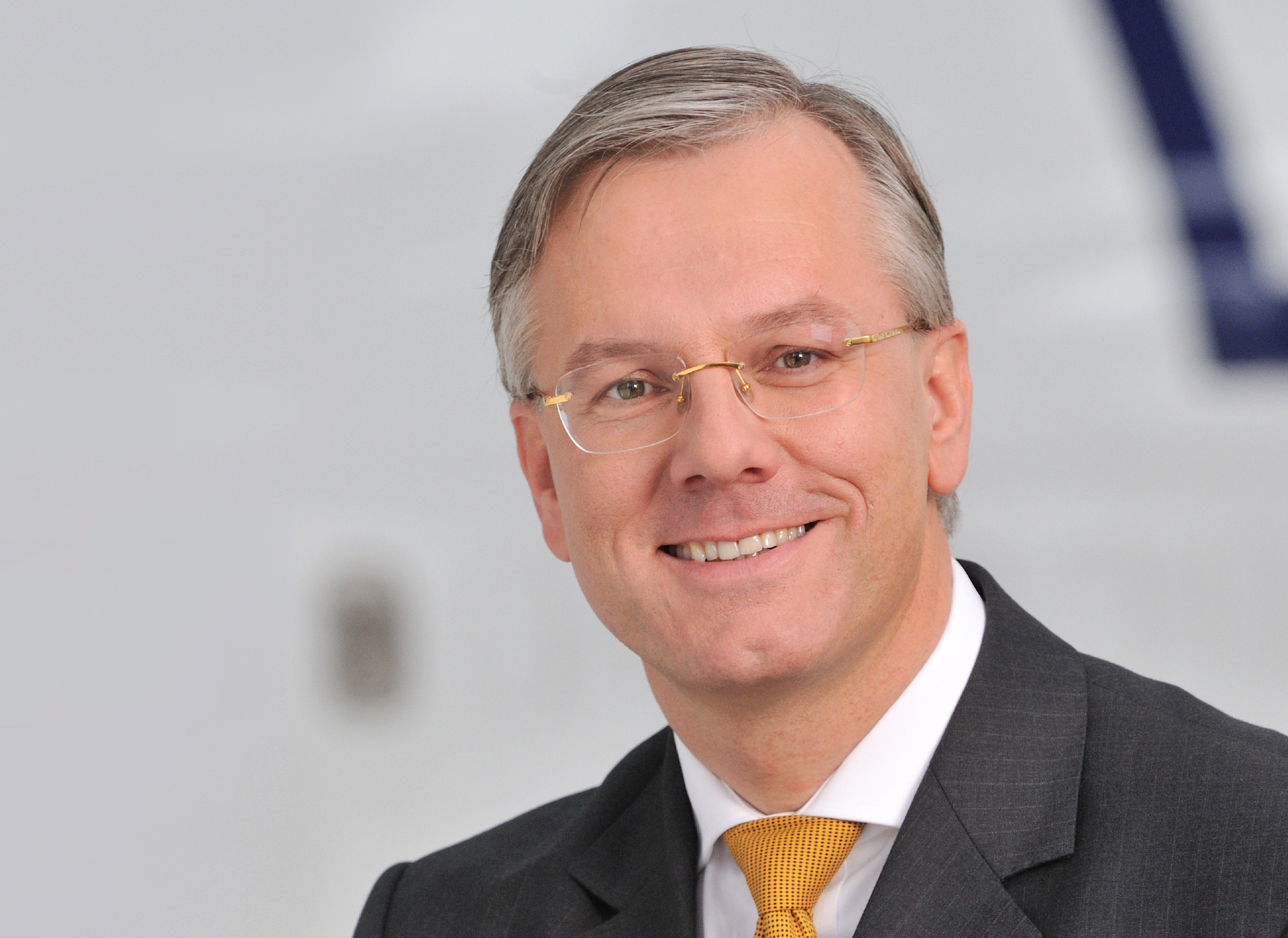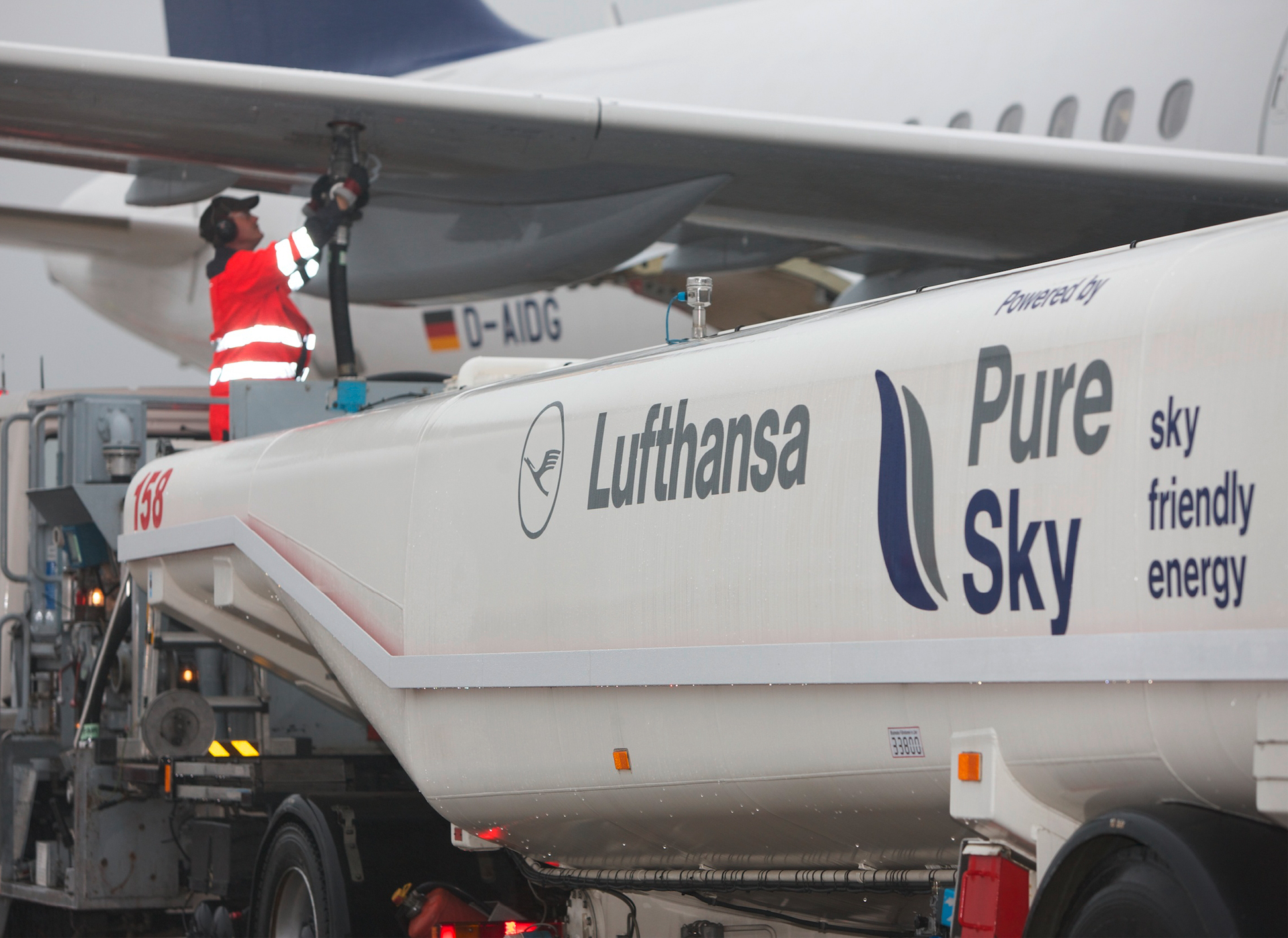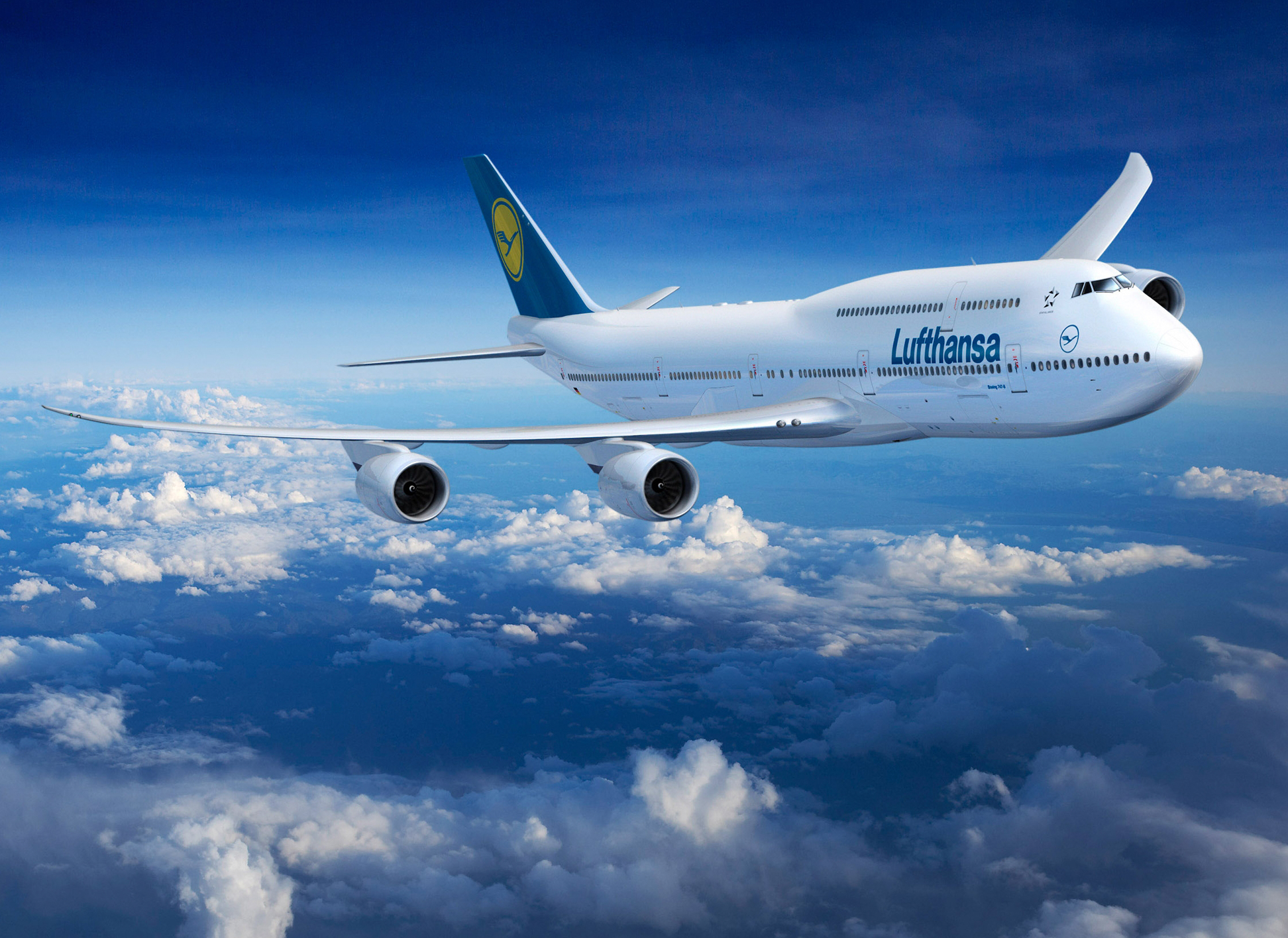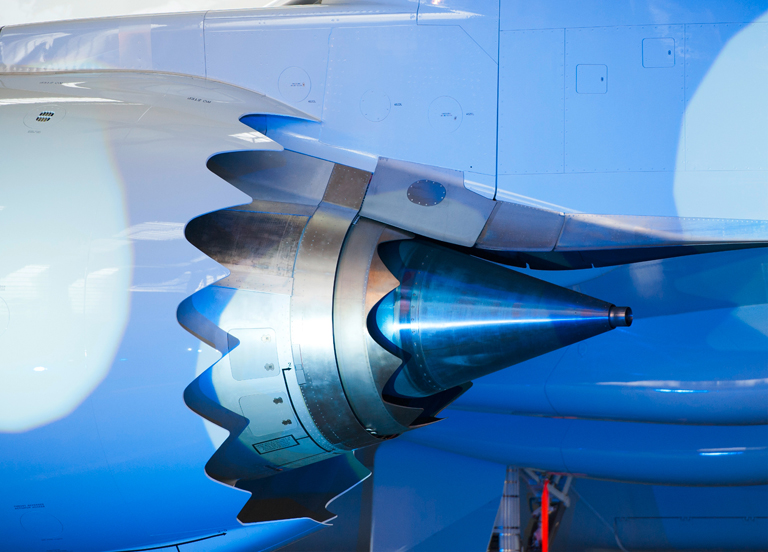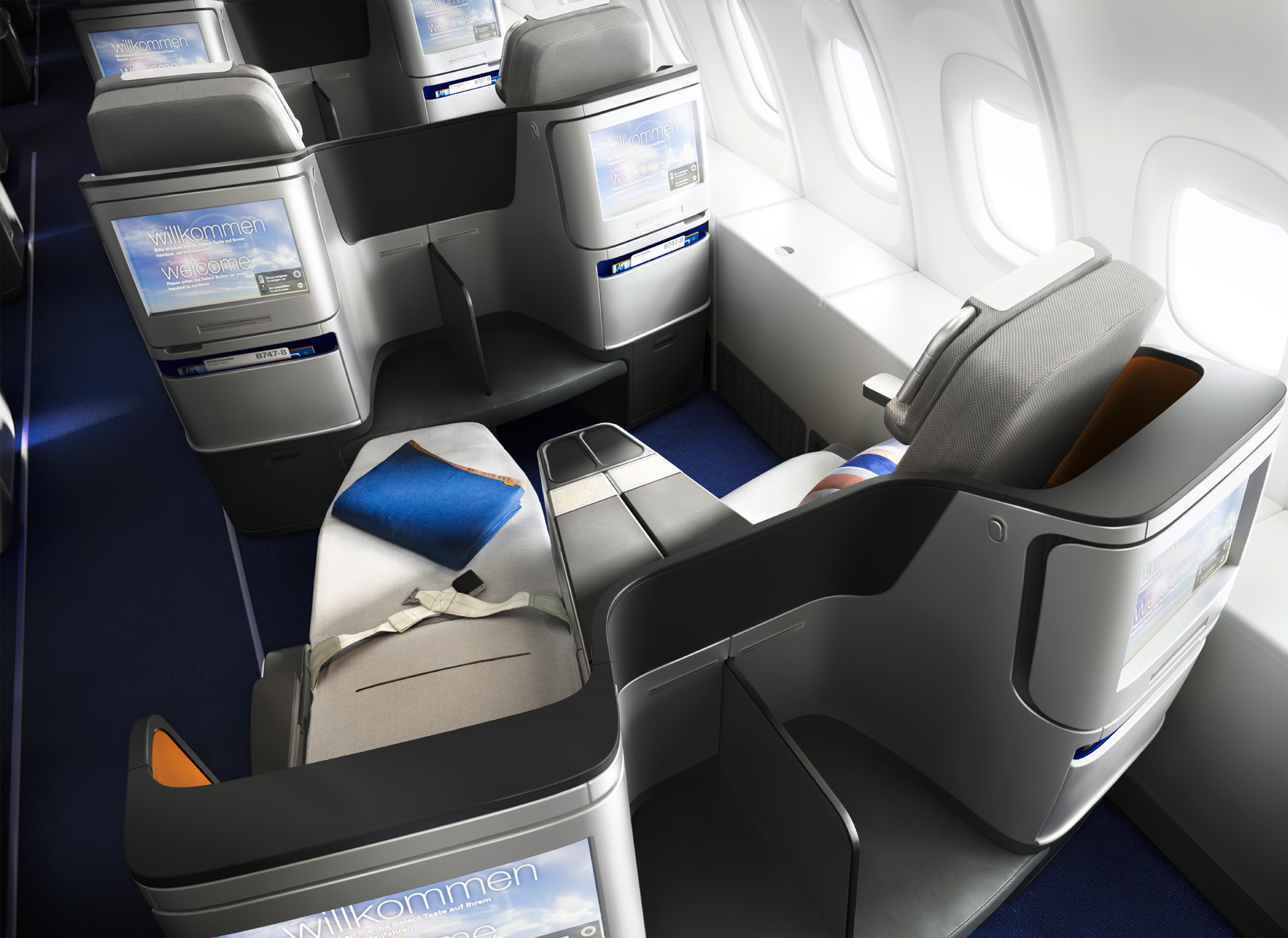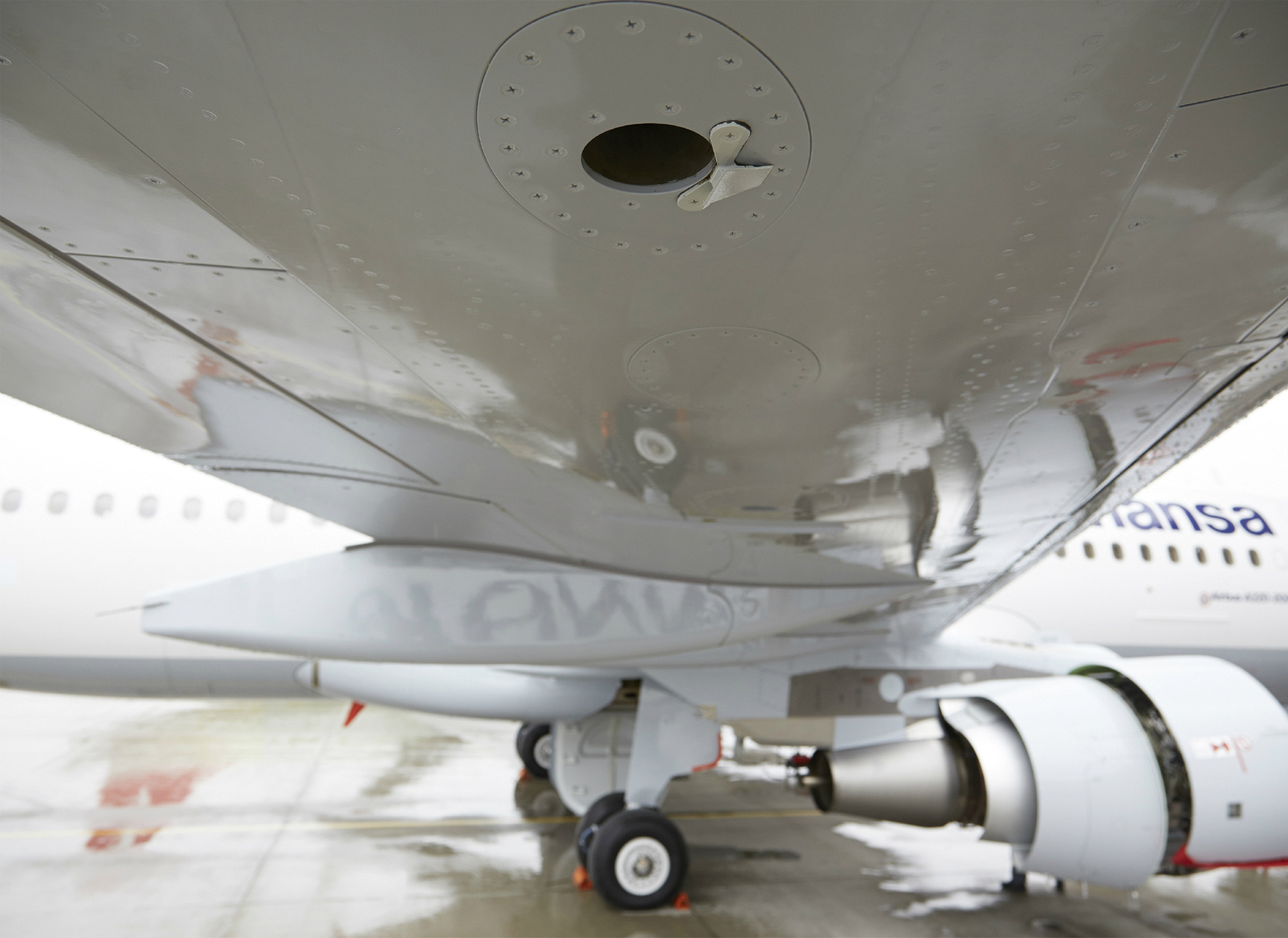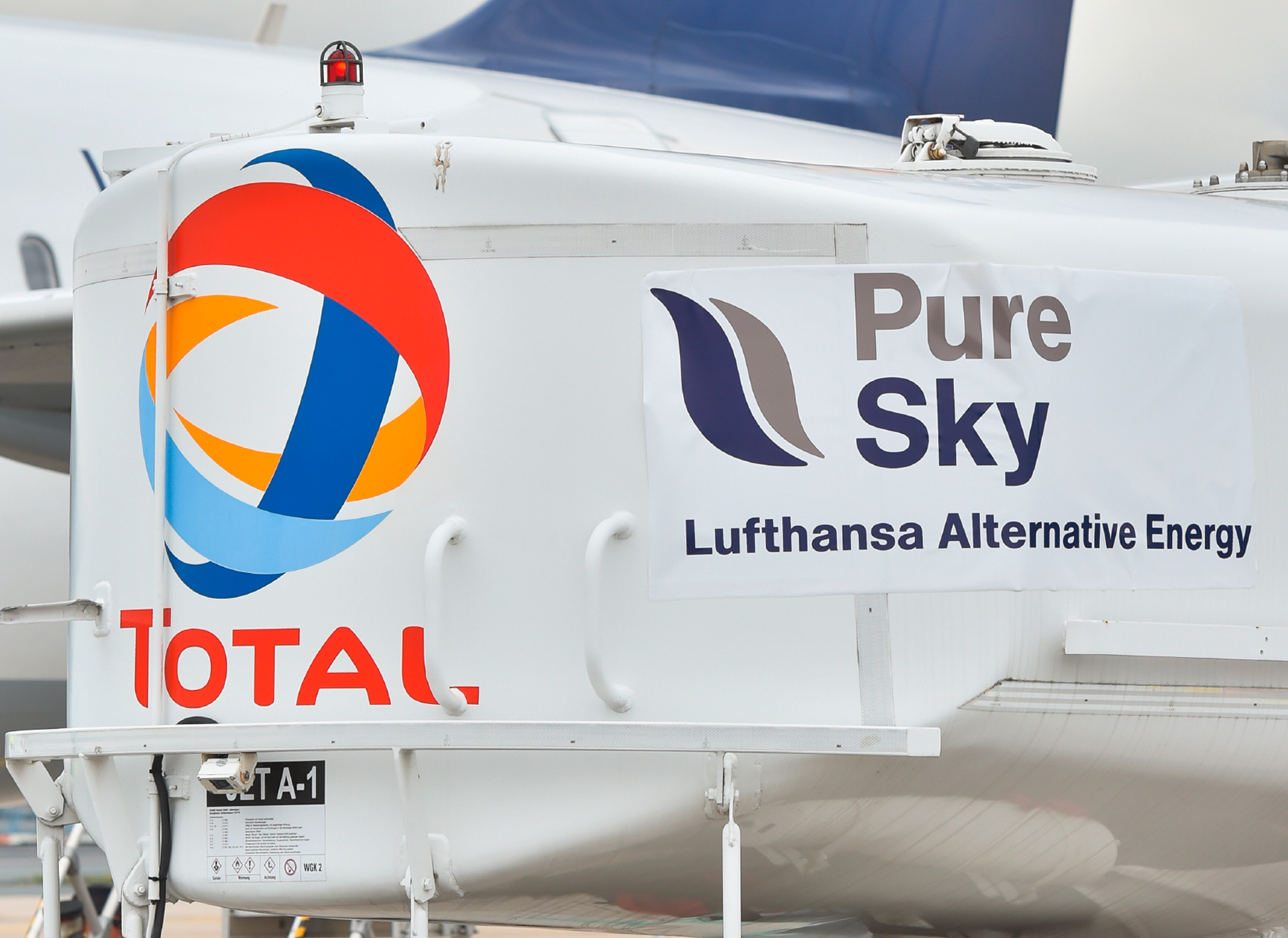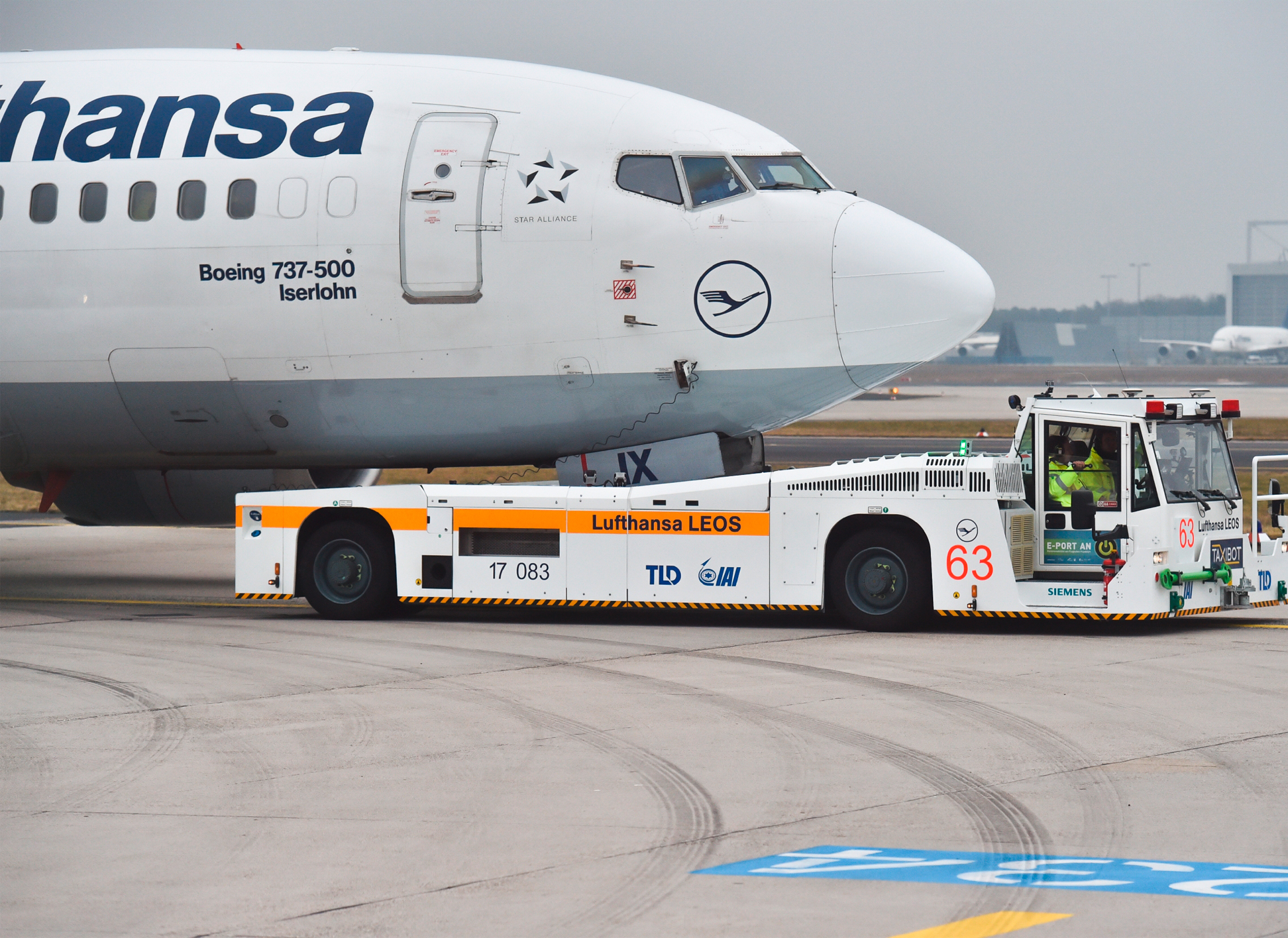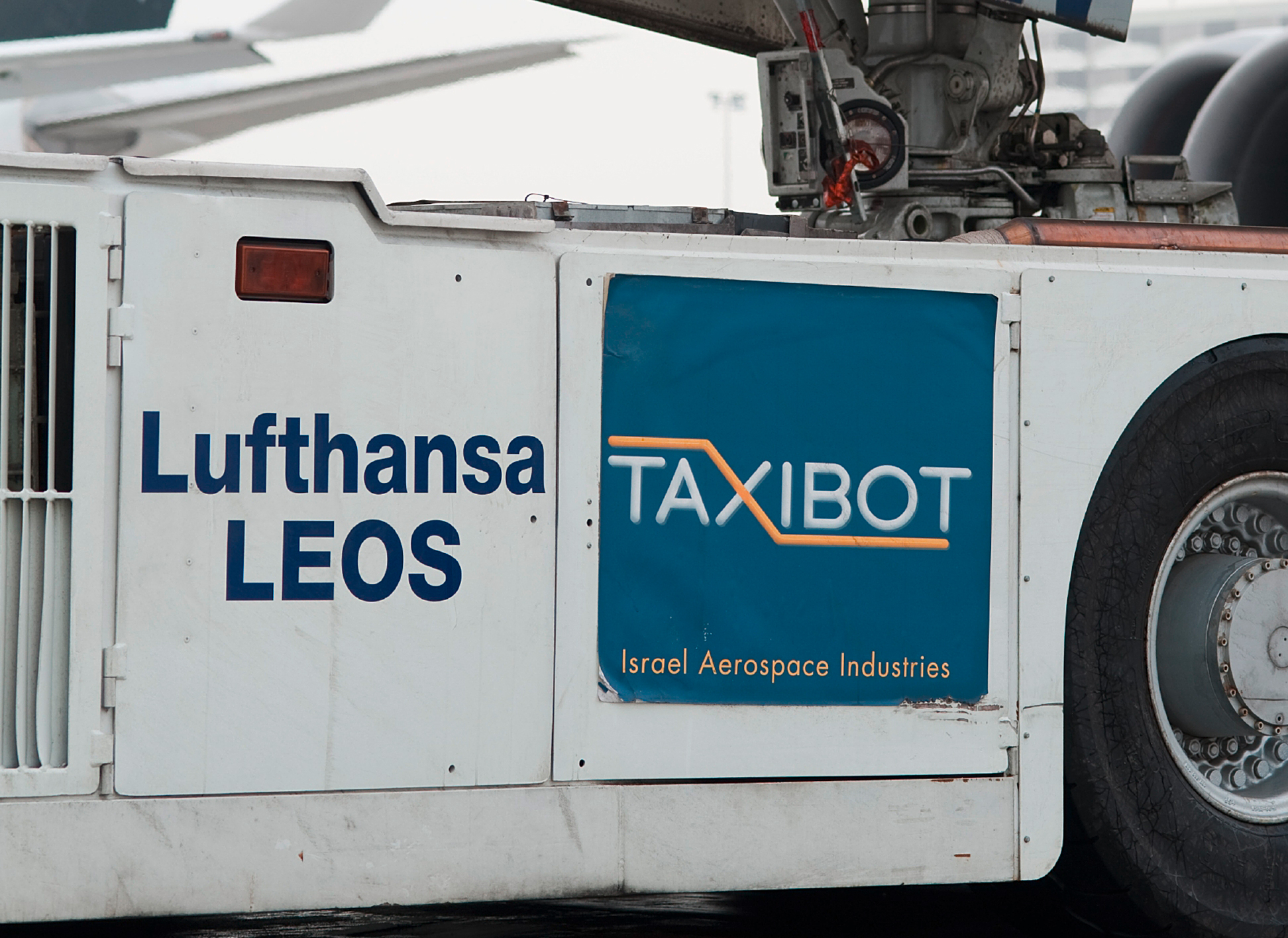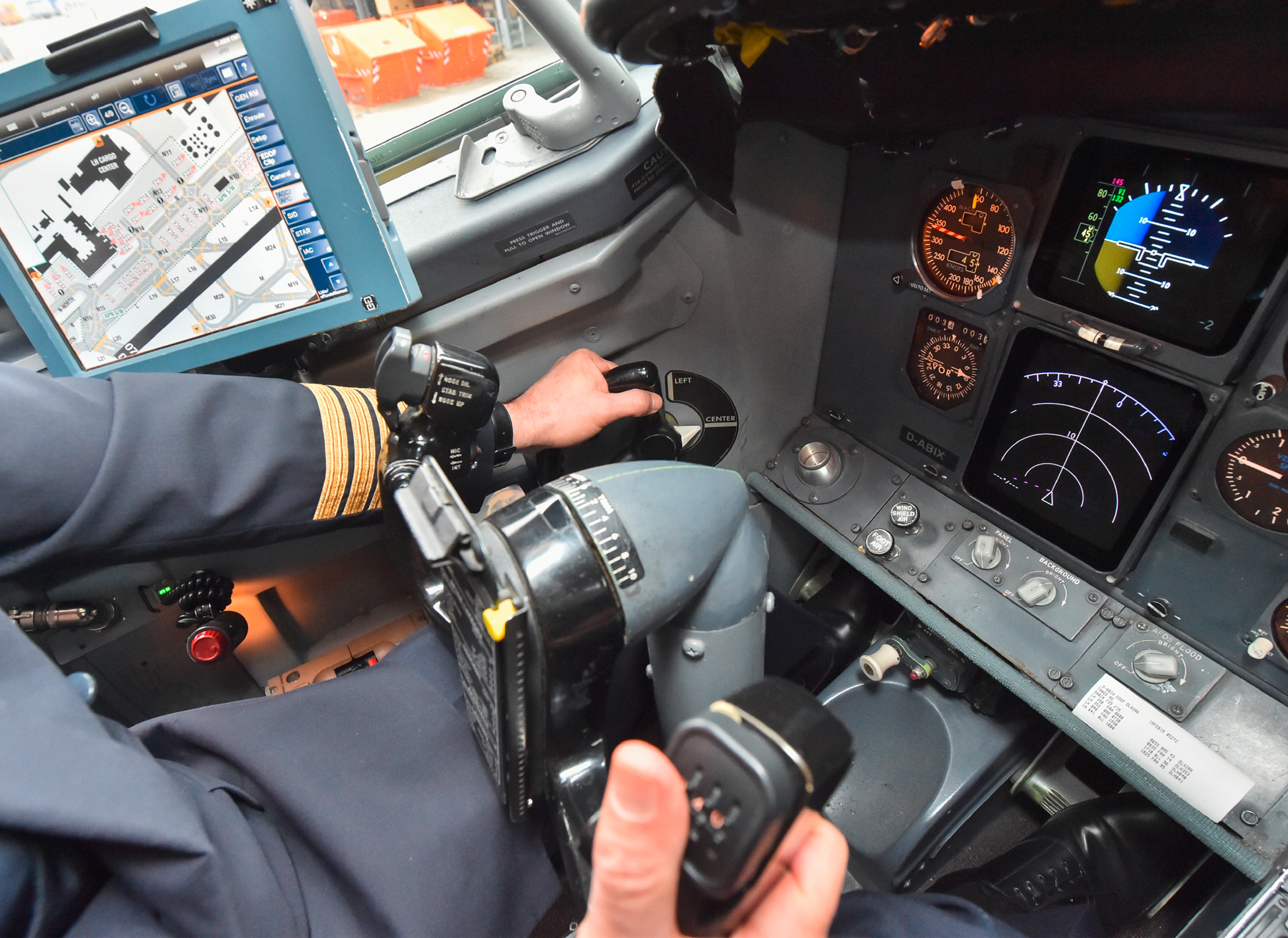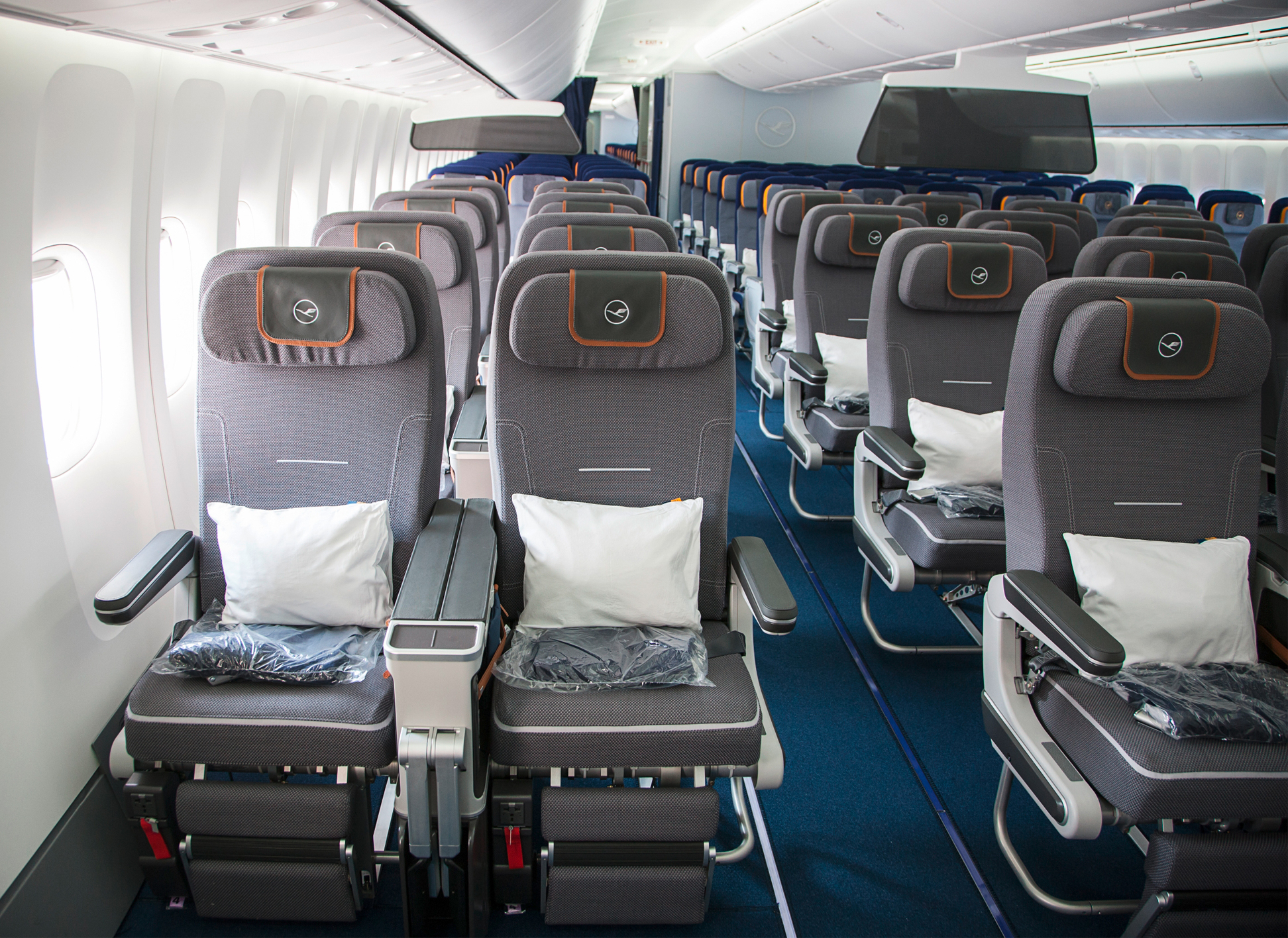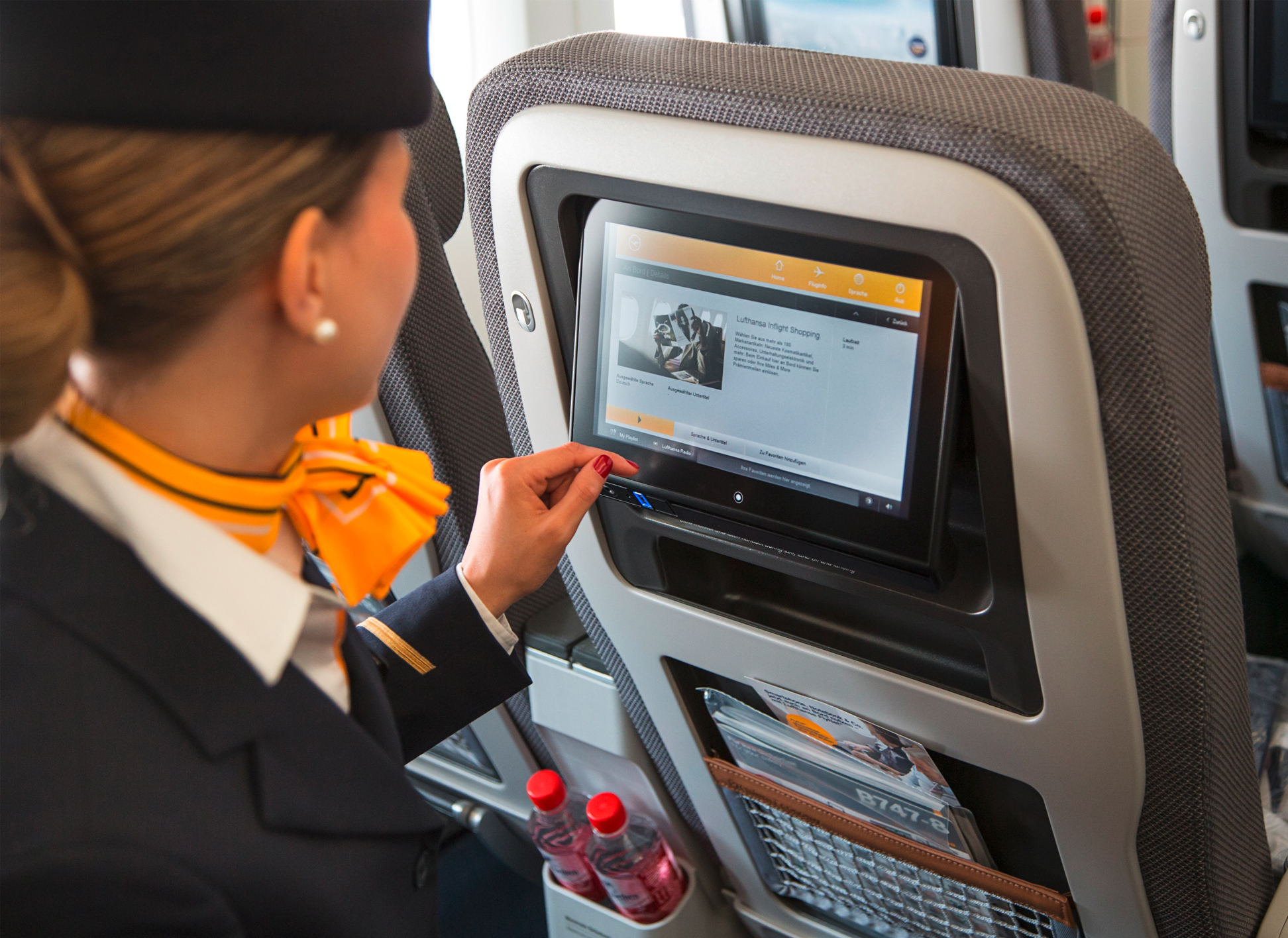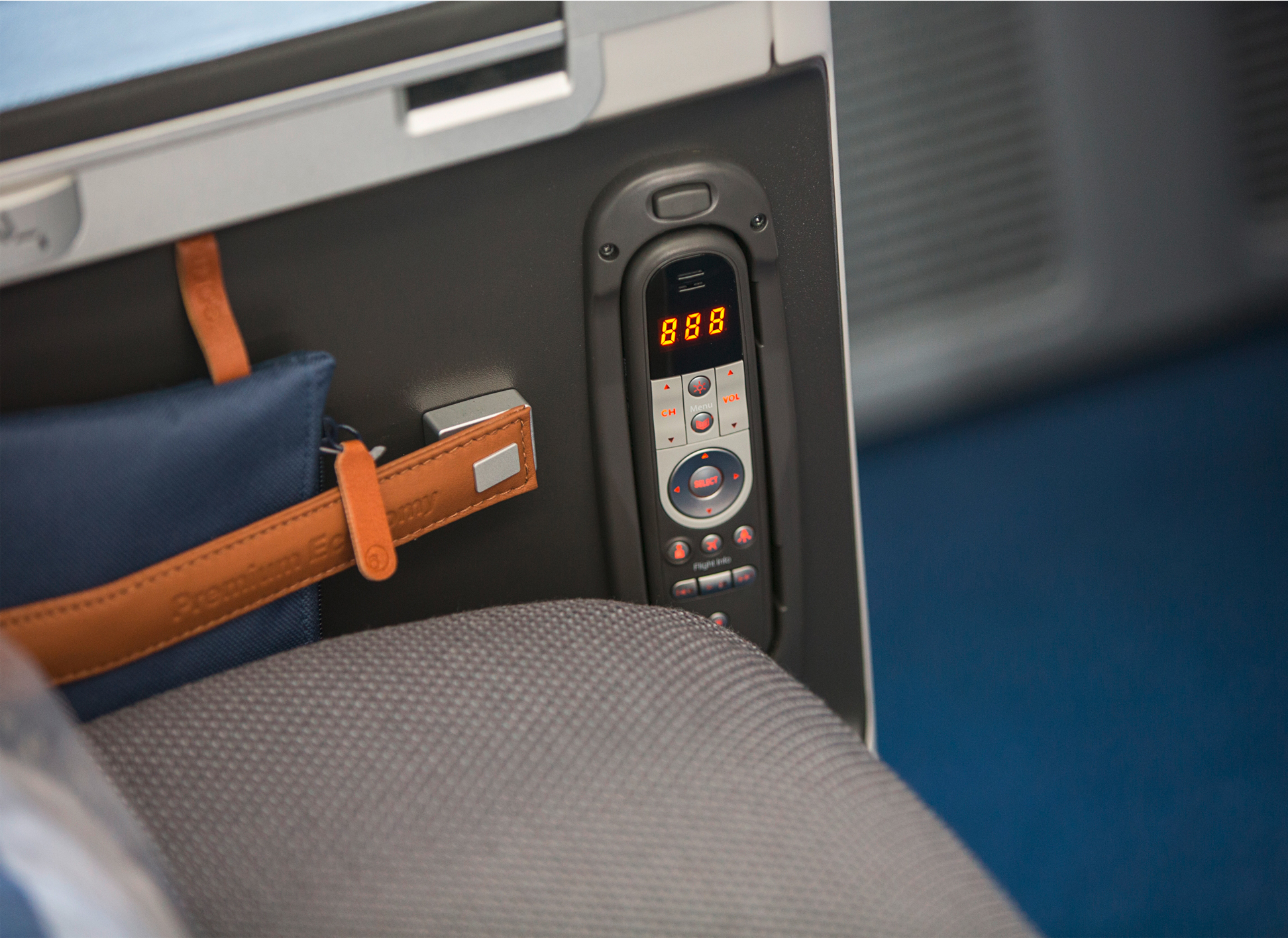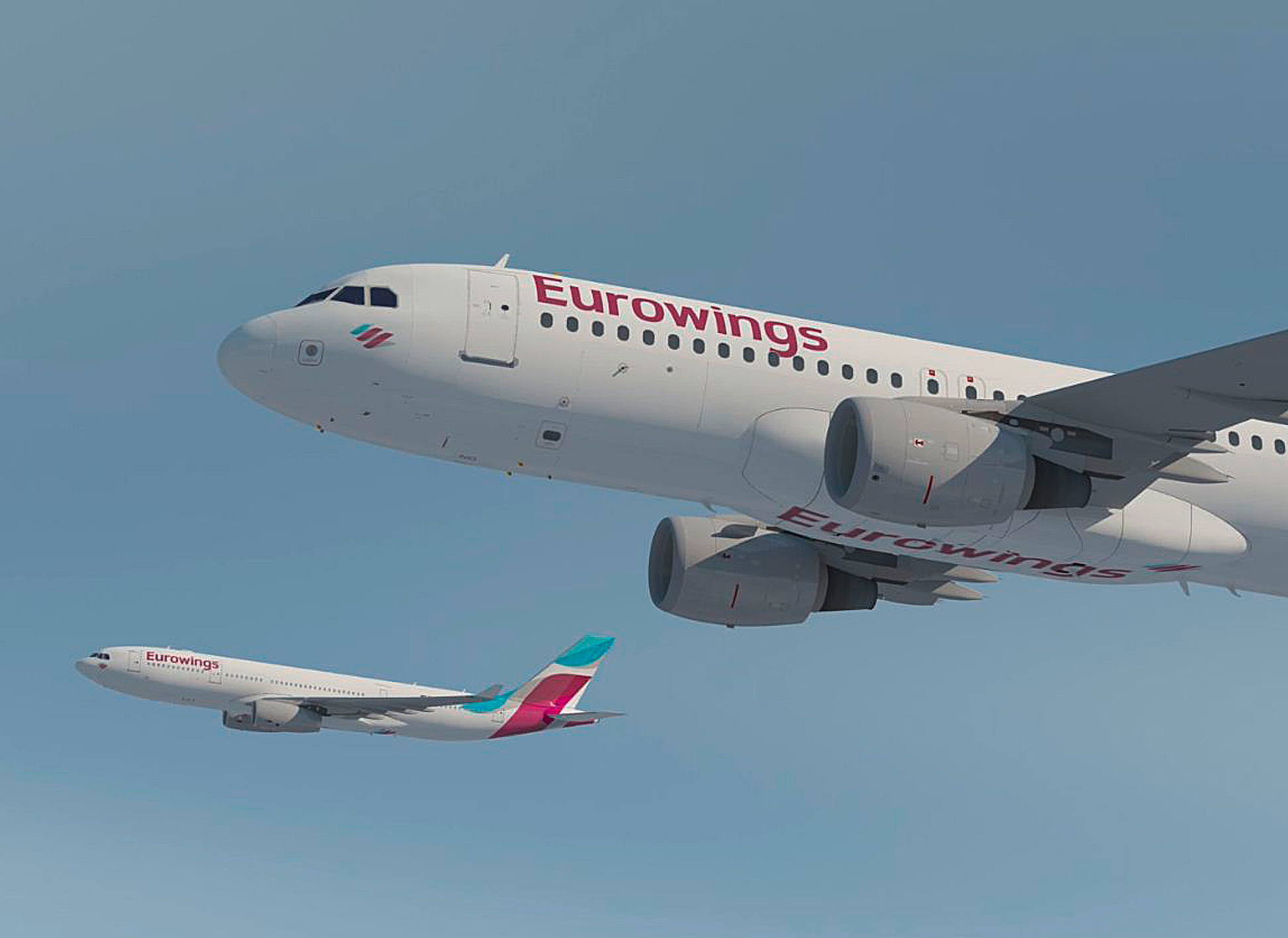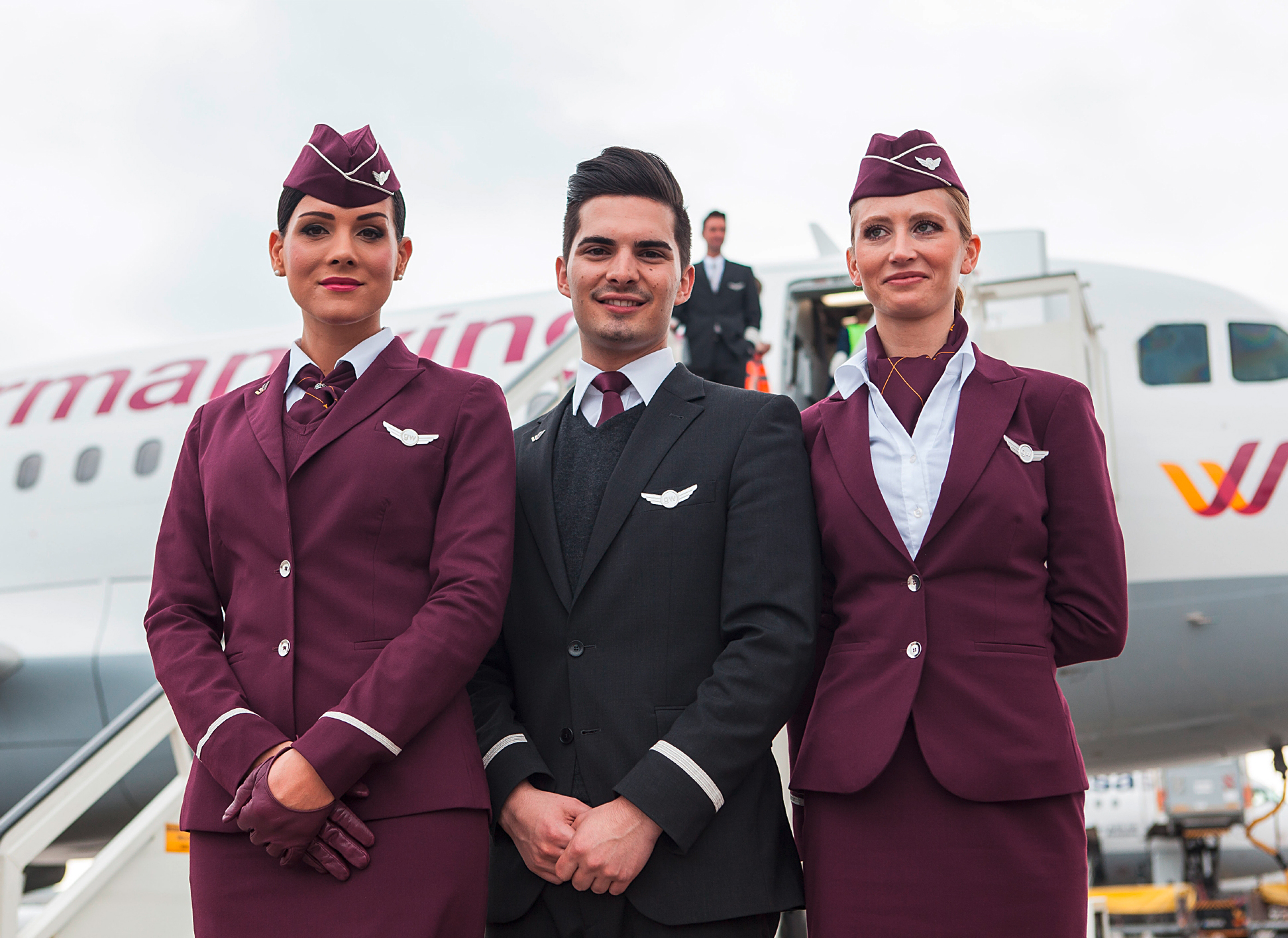Liquidation of the old Lufthansa begins, on orders from the Allied powers.
As time flies by
The History of Lufthansa - The chronicle of events
Lufthansa can look back on an eventful history. It has included many glorious moments but the course of events has not always been smooth. History is always a reflection of people and their times. The challenges facing air transport have become increasingly complex, yet Lufthansa has always found the strength to learn and renew itself. That ability has gained the company its lead position in the international airline business.
- 1 January 1951
![]() 29 May 1951
29 May 1951Transport Minister Dr. Seebohm appoints Hans M. Bongers to advise the Federal Government on “issues relating to future German aviation.” Bongers sets up his office in Cologne; graduate engineer Gerhard Höltje takes on responsibility for the technical side of the business.
- 9 November 1951
Organizational meeting of the “Preparation Committee Aviation” (PCA) appointed by the German Transport Minister.
- 26 September 1952
The German cabinet decides to form a preparatory company for the planned air transport activities.
- 18 November 1952
The PCA presents its final report, which states that the “key issues have been cleared.”
![]() 6 January 1953
6 January 1953Founding of the “Aktiengesellschaft für Luftverkehrsbedarf” (Corporation for Air Transport Requirements), “Luftag” for short, with headquarters in Cologne and a share capital of DM 6 million. Dr. Kurt Weigelt, of Deutsche Bank, is appointed Chairman of the Supervisory Board. Hans M. Bongers is named board member in charge of commercial operations, and Gerhard Höltje is appointed board member in charge of technical engineering.
- 26 June 1953
Luftag orders its first aircraft: four Super Constellations from Lockheed.
- 28 September 1953
A firm order is placed for four Convair 340s at Consolidated Vultee Aircraft Corporation.
![]() November 1953
November 1953The first regular training courses for German pilots and navigators are begun at Luftag’s premises in Cologne. Here they are able to regain their licenses.
- 16 November 1953
An extraordinary Luftag general meeting approves a capital increase to DM 25 million.
- 2 December 1953
Luftag signs a long-term lease with the operators of Hamburg Airport. The large maintenance and overhaul hangar is built. This is later to become the home of Lufthansa’s technical base.
- 6 August 1954
Luftag’s Annual General Meeting votes to change the company name to “Deutsche Lufthansa AG.” The name was acquired beforehand from “Deutsche Lufthansa AG in Liquidation.” The capital is increased to DM 50 million.
- 25 November 1954
The new Lufthansa takes over all shares of the airline’s self-insurance firm, “Deutsche Lufthansa Selbstversicherungs-Aktiengesellschaft” (Delvag), from “Deutsche Lufthansa AG in Liquidation”.
![]() 29 November 1954
29 November 1954The first two Convair aircraft arrive in Hamburg.
- January to February 1955
The first training course for flight attendants takes place at the Lufthansa school in Hamburg. A total of 50 courses are held here. Lufthansa relocates the school to Frankfurt in 1964, for organizational and capacity reasons.
![]() 31 March 1955
31 March 1955The maintenance hangar at the Hamburg base is officially inaugurated in the presence of 800 guests of honor and 1,200 Lufthansa employees.
![]() 1 April 1955
1 April 1955Things take off: Lufthansa starts up operations on German routes with special permission from the Allies.
- 5 May 1955
The Paris Treaties go into effect: They grant the Federal Republic of Germany its sovereignty, including its air sovereignty.
- 15 May 1955
The first international routes are inaugurated. Lufthansa now also flies to Madrid, London and Paris.
- June 6 to June 8, 1955
Meeting of the Executive Committee of the International Air Transport Association (IATA) in Montreal: Lufthansa is accepted as a member with immediate effect, and receives representation and voting rights in the IATA Traffic Conference.
![]() 8 June 1955
8 June 1955The first North Atlantic flight of the new Lufthansa: with a Super Constellation from Hamburg via Dusseldorf and Shannon to New York’s Idlewild Airport.
- 5 July 1955
Annual General Meeting in Stuttgart: Lufthansa has evolved from state-owned company to a privately-owned, market-driven Group. And most importantly, Lufthansa leaves the loss zone behind and flies into the profit zone again.
![]() 21 August 1955
21 August 1955Special flight of the German national track-and-field team aboard a Lufthansa aircraft to Helsinki
![]() 8 September 1955
8 September 1955Two special Lufthansa aircraft arrive at Moscow’s Wnukowo Airport: with Chancellor Konrad Adenauer and a German delegation aboard.
- 1 October 1955
The first training course begins at the Lufthansa flight academy in Hamburg Fuhlsbüttel.
- 4 October 1955
Capital increase to DM 80 million.
- 21 December 1955
Lufthansa takes a participation in the newly incorporated “Deutsche Flugdienst GmbH,” which is later to become “Condor Flugdienst GmbH.”
- 11 February 1956
A preliminary contract is signed with Boeing for the acquisition of four Boeing B707-400s. The price per aircraft is about DM 22 million.
- 1 May 1956
Lufthansa opens its own flight academy in Bremen with a training course for 12 pilots-to-be.
- June 17 to July 31, 1956
First freight services on German routes.
![]() 15 August 1956
15 August 1956Inauguration of Lufthansa’s first South America route: Hamburg–Dusseldorf/Frankfurt–Paris–Dakar–Rio de Janeiro–São Paulo– Buenos Aires.
- 12 September 1956
Lufthansa launches its “Orient Service” – a Middle Eastern route to Istanbul, Baghdad and Teheran.
![]() 5 November 1956
5 November 1956The “Paper Jet” project takes off: A simulation program prepares Lufthansa for the jet age.
- 4 December 1956
A further capital increase to DM 120 million is approved.
- März 1957
The last British pilots leave Lufthansa. British and American pilots had served in the cockpits of Lufthansa aircraft and trained German colleagues, as long as there was still a shortage of licensed pilots.
- 1 April 1957
A new profession at Lufthansa: The first Commercial Aviation Managers begin their apprenticeship training.
- 5 July 1957
Hightech: Lufthansa orders its first Boeing B707 simulator.
- 5 September 1957
Lufthansa pilots train in the first flight simulator for the Super Constellation.
- 4 December 1957
Inauguration of freight services between the Federal Republic and the USA. It operates twice a week with a chartered DC-4 flying the Lufthansa colors.
- 16 December 1957
Lufthansa takes on the first graduates from its own flight academy as copilots.
![]() 29 January 1958
29 January 1958The Berlin city office opens on Kurfürstendamm.
![]() 17 March 1958
17 March 1958Lufthansa now serves its North Atlantic routes with the Lockheed “Super Star,” the most modern large aircraft of the day.
![]() 31 July 1958
31 July 1958Lufthansa welcomes its millionth passenger since it started up services in 1955.
- October 3 to November 8, 1958
Special flight carrying Federal Economics Minister Ludwig Erhard. This is the new Lufthansa’s first flight to the Far East.
![]() 10 October 1958
10 October 1958First scheduled flight of the four-engined turboprop aircraft Vickers Viscount at Lufthansa.
![]() 6 November 1958
6 November 1958For the first time, Lufthansa First Class passengers enjoy its exclusive “Senator Service” on the route to New York.
- 11 January 1959
The Lockheed Super Constellation registered D-ALAK crashes in Rio de Janeiro. All 29 passengers lose their lives. Three of the ten-member crew survive the accident.
![]() 22 September 1959
22 September 1959Professor Wolfgang A. Kittel (left) and Professor Hans Süssenguth are named deputy members of the Lufthansa Executive Board.
- 27 October 1959
Capital increase to DM 180 million.
- November 1 to November 3, 1959
First scheduled flight on the southern route to Asia with a Super Constellation: Hamburg–Dusseldorf–Frankfurt–Rome–Cairo–Karachi–Calcutta–Bangkok.
- 7 February 1960
Special flight for the German Olympic Team to Reno, Nevada for the Winter Olympics in Squaw Valley.
![]() 17 March 1960
17 March 1960Lufthansa enters the jet age by introducing the Boeing B707 on its North Atlantic routes.
![]() 29 March 1960
29 March 1960The “Butterfly Hall,” the maintenance hangar taking its name from its distinctive roof lines, is inaugurated at Frankfurt Airport. By now, Frankfurt has become Lufthansa’s base for intercontinental flights.
- 13 May 1960
Lufthansa launches services to its first destination on the US West Coast: Flights to San Francisco are operated with the new Boeing B707.
- 22 July 1960
Professor Wolfgang A. Kittel is named member of Lufthansa’s Executive Board.
![]() 16 September 1960
16 September 1960A Lufthansa aircraft is christened for the first time: At Lufthansa’s Frankfurt base, Willy Brandt, then mayor of Berlin, gives a Boeing B707 the name “Berlin.”
![]() 12 December 1960
12 December 1960Dr. Hermann Josef Abs, member of Deutsche Bank’s Board of Management, replaces Dr. Kurt Weigelt as chairman of the Supervisory Board. Dr. Weigelt remains honorary chairman of the Supervisory Board until his death on August 4, 1968. The company’s capital is increased to DM 250 million.
![]() 23 January 1961
23 January 1961The Far Eastern route changes over to Boeing B707 service: via Bangkok to Hong Kong and Tokyo.
- 20 May 1961
First scheduled flights of the Boeing B720B, a smaller version of the Boeing B707, on the South Atlantic routes.
![]() 1 July 1961
1 July 1961Lufthansa switches its services to the Middle East from propeller to jet aircraft; Boeing B720Bs now fly these routes.
![]() 1 September 1961
1 September 1961Lufthansa inaugurates its night airmail network on routes within Germany, on behalf of the German Post Office.
- 10 September 1961
Lufthansa welcomes its 1-millionth passenger for the year 1961.
- 1 November 1961
“Deutsche Flugdienst GmbH,” a fully-owned Lufthansa subsidiary since 1959, is renamed “Condor Flugdienst GmbH.”
- 4 March 1962
First flight to Lagos, Nigeria. Kickoff of Lufthansa’s “Africa Year.”
- 14 May 1962
Lufthansa adds Johannesburg to its network. The routing is via Athens, Khartoum and Nairobi.
- 24 October 1962
Günter Lenz, the first graduate of Lufthansa’s flight academy, is promoted to the rank of captain.
- 5 November 1962
The US Federal Aviation Agency (FAA) authorizes Lufthansa’s engineering workshops to service, maintain, overhaul and test the aircraft and engines of American aircraft operators. The Hamburg base thus receives international recognition for its outstanding performance in aircraft maintenance
![]() 1 April 1963
1 April 1963Following the model of shuttle flights in the USA, Lufthansa launches its domestic “Airbus” service with Super Constellations. Aircraft leave at specified intervals, and ticket sales on board eliminate inconvenient reservations and check-in procedures. There is no inflight service, and fares are reduced. These shuttle flights are offered until March 1970.
- 16 December 1963
Professor Hans Süssenguth is named member of the Executive Board. His areas of responsibility are: sales, field organiza_tion, inflight service and marketing.
![]() 16 April 1964
16 April 1964The “Europa Jet” takes to the skies: the first scheduled flight of a Lufthansa Boeing B727, from now on the aircraft of choice for European and Middle Eastern routes.
- 28 May 1964
A Lufthansa Boeing B707 flies for the first time across the North Pole on the routing Frankfurt– Hamburg–Copenhagen–Fairbanks (Anchorage from September)–Tokyo. This is Lufthansa’s second Far Eastern route.
- 20 July 1964
Lufthansa’s flight attendant school moves from Hamburg to Frankfurt. Since January 3, 1955, the airline has trained about 1,300 flight attendants. At the new Frankfurt location, the school’s 51st course prepares participants for their new tasks in the air.
![]() 2 November 1964
2 November 1964Dr. Herbert Culmann is named member of the Executive Board.
- Dezember 1964
Lufthansa achieves a major goal: The airline presents its first positive annual financial statements. Ten years after its foundation, the new Lufthansa thrusts forward into the profit zone with a net income for the year of DM 36.9 million.
- 31 December 1964
Hans M. Bongers and Professor Wolfgang A. Kittel take their retirement.
- 19 February 1965
Lufthansa becomes the “Launching Customer.” Its Supervisory Board approves the acquisition of 21 Boeing B737s. Lufthansa had initiated the construction of this short-haul jet, which was to become the world’s best-selling aircraft.
- 3 April 1965
After protracted negotiations on traffic rights, the first Lufthansa aircraft takes off on a scheduled flight to Australia. The routing is Frankfurt–Athens–Karachi–Bangkok–Singapore–Darwin–Sydney.
- 20 July 1965
The Annual General Meeting approves a capital increase of DM 150 million, to DM 400 million. The federal government does not exercise some of its subscription rights, giving private investors their first opportunity to buy Lufthansa shares. There is lively interest. Shares for DM 325 million are subscribed for, and must thus be allotted. Lufthansa shares are also traded on the stock exchange from April 1966 onward.
- 23 July 1965
A baby girl is born aboard Lufthansa flight LH 408 from Frankfurt to New York. The parents – impressed by the unusual delivery room – name her “Barbara Lufthansa.”
- 27 September 1965
The dissolution of the predecessor company “Deutsche Lufthansa AG in Liquidation,” which continued to exist on paper, is concluded in Berlin.
- Dezember 1965
Lufthansa’s four Boeing B720Bs leave the fleet. They are exchanged for Boeing B707s.
- 28 January 1966
The Convair Metropolitan 440 registered D-ACAT crashes near Bremen. All 46 aboard perish. The cause of the accident has never been determined.
- 26 April 1966
Incorporation of “Lufthansa Service GmbH.” The airline’s inflight service operations in Frankfurt, Hamburg, Munich and Cologne are merged into this fully-owned subsidiary.
- 27 June 1966
Lufthansa orders three Boeing B747s, taking its first steps into the wide-body jet age. The first aircraft are to be delivered in 1970. The price is DM 105 million each.
- Dezember 1966
In the financial year 1966, Lufthansa’s revenues exceed DM 1 billion for the first time.
- 1 March 1967
Lufthansa put its first electronic reservation system into service.
- 1 May 1967
An offshoot in the desert: Lufthansa’s flight academy shifts the bulk of its flight training activities to San Diego, California (from 1970: Phoenix, Arizona).
- 6 October 1967
Last scheduled flight of a Lufthansa Super Constellation.
- 1 January 1968
Lufthansa takes over all shares of the charter group “Südflug.”
![]() 10 February 1968
10 February 1968A world premiere: The “City Jet,” the Boeing B737, takes off for its first scheduled Lufthansa flight. With the introduction of the City Jet, short-haul routes join the jet age too.
![]() 6 May 1968
6 May 1968The “Little Red Riding Hood Service” makes its debut in Frankfurt. It provides special assistance for unaccompanied children, and for passengers who are ill or otherwise in need of help.
- 14 March 1969
The ATLAS Agreement is signed in Paris. Lufthansa, Air France, Alitalia and Sabena agree to cooperate on the maintenance of their Boeing B747 fleets. Iberia becomes the group’s fifth member in 1972. Later, the agreement also covers Douglas DC-10s and Airbus A300s.
![]() 20 June 1969
20 June 1969Gerhard Frühe is appointed to the Executive Board as head of Human Resources. In 1979 he is named employee relations director.
![]() December 1 to December 5, 1969
December 1 to December 5, 1969The first worldwide Lufthansa Sales Conference takes place in Berlin.
![]() Januar 1970
Januar 1970In Cologne, headquarters moves from the former buildings of Cologne University to a high-rise on the banks of the Rhine.
![]() 26 April 1970
26 April 1970The Boeing B747, the world’s largest passenger aircraft, begins scheduled services on its first Lufthansa route: Frankfurt–New York.
- 9 June 1970
Dr. Herbert Culmann is named spokesman of Lufthansa’s Executive Board.
![]() 31 July 1970
31 July 1970Graduate engineer Reinhardt Abraham is named deputy board member.
- 15 January 1971
START GmbH is incorporated. Via a computerized system, it provides travel agents access to the reservations and information systems of Lufthansa, Deutsche Bundesbahn, Touristik Union and other touristic vendors.
- 29 January 1971
Lufthansa’s ground staff go on strike for better pay settlements and improved internal salary structures. Work resumes on February 8, following arbitration discussions.
- 31 March 1971
Provisional end of the propeller era at Lufthansa: The Vickers Viscount is withdrawn from service.
![]() 10 May 1971
10 May 1971Lufthansa inaugurates its new air cargo center in Frankfurt. At the time, “Frachthof 3” is the world’s largest air cargo hall.
- 5 February 1972
Lufthansa now also flies to Moscow.
- 21 February 1972
On the flight from Delhi to Athens, the Boeing B747 “Baden-Württemberg” is hijacked and forced to fly to Aden. Its passengers have already arrived safely in Germany aboard special flights, when aircraft and crew are released against payment of a US$ 5 million ransom.
- 19 April 1972
Lufthansa becomes the first airline to operate the all-freighter version of the Boeing B747 on scheduled flights between Frankfurt and New York.
- 1 July 1972
Graduate engineer Reinhardt Abraham becomes a full member of the Executive Board, succeeding Professor Gerhard Höltje, previously responsible for the airline’s Engineering Division. Höltje leaves the company after 40 years of dedicated work in the service of aviation.
![]() 4 August 1972
4 August 1972Dr. Herbert Culmann is appointed chairman of Lufthansa’s Executive Board. Dr. Walter Hesselbach (below), chairman of the Management Board of Bank für Gemeinwirtschaft AG, succeeds Dr. Hermann J. Abs as chairman of the Supervisory Board. Abs will later become honorary chairman of the Supervisory Board.
- August 26 to September 10, 1972
Lufthansa operates 323 special flights to the Olympic Games in Munich.
- 29 October 1972
Another hijacking: On a flight from Beirut to Munich, the Lufthansa Boeing B727 “Kiel” is forced to land in Nicosia, Cyprus. The hijackers’ goal is to force the release of the three imprisoned Arabs who participated in the terrorist attack during the Olympic Games in Munich. The terrorists are taken aboard the “Kiel” after it lands in Zagreb. Passengers and aircraft are only released later on, in Tripoli.
![]() 1 November 1972
1 November 1972For the first time, a flight captain is appointed to the Executive Board: Werner Utter
- 20 December 1972
The Supervisory Board approves an order for three Airbus A300s.
- 27 February 1973
Lufthansa inaugurates Europe’s most advanced passenger reservation system. Its control center is located at the Lufthansa Base in Frankfurt.
- 12 March 1973
The first Lufthansa aircraft to land in the German Democratic Republic: a special flight from Frankfurt to Leipzig.
- 19 April 1973
Now Lufthansa also has its own freight terminal in New York.
- 21 May 1973
Special flight of a German business delegation to Beijing.
- 31 May 1973
A “go slow” by the German air traffic controllers forces Lufthansa to cut its domestic and part of its international flights to 75 percent of planned departures. This industrial action only ends on November 28 – because of the oil crisis – after an appeal from Chancellor Willy Brandt to the controllers. In December Lufthansa is able to resume its full flight program. Bottom-line for Lufthansa alone: a loss of DM 172 million. After drawn-out negotiations and a judgment by the court of arbitration, the Federal Government, as the air traffic controllers’ ultimate employer, reimburses the airline DM 163 million.
- 5 August 1973
Start of operations to Tokyo on the trans-Siberian route, Lufthansa’s third Tokyo route. Services on this route are halted in 1984 due to problems related to traffic rights.
- 6 August 1973
Lufthansa’s capital is increased to DM 600 million.
- 1 November 1973
Worldwide oil crisis: Problems with kerosene supplies lead Lufthansa to combine flights that are insufficiently filled.
![]() 13 December 1973
13 December 1973The Lufthansa training center in Seeheim, near Frankfurt, is inaugurated. Lufthansa employees from all around the world are trained here.
- 17 December 1973
Terrorism: After a gunfire attack on a Pan Am Boeing B707, the Lufthansa Boeing B737 “Worms” is hijacked from Rome via Athens and Damascus to Kuwait. There the terrorists surrender after negotiations. Hostages and aircraft are released on December 18.
- 19 December 1973
While landing in Delhi, the Boeing B707-300 “Dusseldorf” touches the “inner marker,” the last beacon of the approach lights, which causes it to crash-land. Luckily, the worst can be avoided: All 109 aboard survive. It took only 90 seconds to evacuate the aircraft.
- 27 December 1973
“Lufthansa Commercial Holding” is incorporated. Lufthansa regroups all sales-related participations, especially those in the hotel sector, into this fully-owned subsidiary. (Until January 25, 1974 it bears the name “Lufthansa Dienstleistungs GmbH.”)
![]() 14 January 1974
14 January 1974Lufthansa operates its first scheduled flight with a Douglas DC-10. The new type of aircraft flies on the Far Eastern route Frankfurt–Rome–Karachi–Delhi–Bangkok–Hong Kong–Tokyo.
- 20 November 1974
Nairobi: The Boeing B747-100 “Hessen” crashes on takeoff because its leading edge flaps are not extended. Tragic result: 58 dead, 97 injured.
- 25 June 1975
The purchase contract of three Airbus A300s is signed, and options for nine more A300s are placed.
- 31 December 1975
For the first time in its history, Lufthansa carries more than 10 million passengers in a single year.
- 2 February 1976
The first Airbus A300 is delivered to Lufthansa. The “short-haul Jumbo” flies routes in Germany and to London, Paris and Madrid.
![]() 19 November 1976
19 November 1976Lufthansa acquires 25.3 percent of the capital of “Hansa Luftbild GmbH” in Munster.
![]() 10 March 1977
10 March 1977The freight business is becoming ever-more important. Lufthansa incorporates its subsidiary “German Cargo Services GmbH” (GCS) for cargo charter flights.
- 3 April 1977
First scheduled nonstop flight to Los Angeles with a Boeing B747SL, a version specifically developed for extreme long-hauls.
- 14 July 1977
The Supervisory Board approves the most comprehensive investment project to date: a fleet modernization program valued at about DM 1 billion, comprising five Boeing B747s, six Boeing B727s and options for four more Boeing B747s.
![]() October 13 to October 17, 1977
October 13 to October 17, 1977Terrorists hijack the Lufthansa Boeing B737 “Landshut” on the flight from Palma de Mallorca to Frankfurt to obtain the release of the imprisoned “Red Army Faction” terrorists. After an odyssey via Rome, Larnaca and Bahrein, the aircraft lands in Dubai, then in Aden, Yemen. There, the terrorists murder Captain Jürgen Schumann. At the airport in Mogadishu, Somalia, a detachment of the GSG 9 elite troops of the Federal Border Guard is finally able to free the hostages.
- 3 November 1977
RAF terrorists threaten to blow up Lufthansa aircraft. Imprisoned RAF terrorists had taken their own lives when the demands for their release were not met during the hijacking of the Lufthansa Boeing “Landshut.” For each dead prisoner, one Lufthansa aircraft was to be blown up in flight. Following the publication of the bomb threats, reservations for Lufthansa flights drop off drastically.
- 1 April 1978
The introduction of the “Holiday Fare” marks the start of a new pricing structure for leisure travelers. It applies first to flights to the USA.
- 3 April 1978
The cornerstone for the Lufthansa Cargo Center (LCC) is officially laid at Frankfurt Airport.
- 29 June 1978
The Supervisory Board approves a 26-percent Lufthansa participation in the “Deutsche Regional Luftverkehrsgesellschaft mbH” (DLT). Lufthansa increases its capital to DM 900 million.
![]() 1 July 1978
1 July 1978Professor Dipl. rer. pol. Günter O. Eser succeeds Hans Süssenguth on Lufthansa’s Executive Board. Süssenguth takes his retirement.
- 1 January 1979
The “Flexible Three-Class System” – First, Business and Economy – is introduced on North Atlantic routes.
- 22 March 1979
The contract for 32 advanced Boeing B737-200s is signed, and an option for another 24 aircraft of this type is placed.
- 2 April 1979
Lufthansa orders 25 Airbus A310s, and places options for another 25 aircraft with Airbus Industrie.
- 26 July 1979
An error at air traffic control causes the crash of the Boeing B707-300C “Essen” north of Rio de Janeiro, claiming the lives of the freighter’s three-member crew.
- 12 September 1979
Hijacking with an undramatic ending: All 130 passengers and crew aboard a Boeing B737 hijacked on a flight from Frankfurt to Cologne are released unharmed following negotiations led by State Minister Hans-Jürgen Wischnewski. The hijacker is arrested.
- 7 April 1980
Lufthansa inaugurates scheduled services to Beijing.
- 1 November 1980
The “Fly & Save” fare is introduced on German routes, offering savings of up to 40 percent on full fares.
![]() 19 November 1980
19 November 1980Pope John Paul II concludes his visit to Germany by flying to Rome on a Lufthansa Airbus.
- 3 December 1980
Lufthansa takes over the nominal capital of Airport Catering Services Deutschland GmbH, which is simultaneously renamed Lufthansa Service Berlin GmbH (LSG Berlin).
![]() 21 December 1980
21 December 1980The first of a total of 36 Boeing B737-200 Advanceds lands in Frankfurt.
- 23 June 1981
Hans M. Bongers, one of the new Lufthansa’s founders, dies at the age of 82.
- Oktober 1981
A new marketing instrument: The “Lufthansa Savings Passbook” makes it easier to plan low-cost leisure trips. It lists all special fares and their conditions at a glance.
- November 1981
Business Class is now available on all long-haul routes.
![]() 30 November 1981
30 November 1981Incorporation of the “MVP-Versuchs- und Planungsgesellschaft für Magnetbahnsysteme mbH,” a company to plan and develop magnetic train systems, in Munich. Lufthansa now holds a 33.3-percent share in the development of the Transrapid train.
- 8 February 1982
The Lufthansa Cargo Center (LCC) is inaugurated at Frankfurt Airport. It is the world’s largest air freight center.
- 27 March 1982
Maiden voyage of the Lufthansa Airport Express from Dusseldorf Central Station, via Cologne and Bonn, to Frankfurt Airport.
![]() 1 April 1982
1 April 1982Heinz Ruhnau is named deputy chairman of Lufthansa’s Executive Board.
- 1 May 1982
Door-to-door air freight: “c+d Luftfracht-System GmbH” in Frankfurt, a joint-venture of Schenker & Co. and Lufthansa, makes its debut in the market.
- 30 June 1982
Chairman of the Executive Board Dr. Herbert Culmann hands his responsibilities over to Heinz Ruhnau.
- 5 July 1982
Dr. Richard von Weizsäcker, then mayor of Berlin, names a Boeing B747 “Berlin.”
![]() 1 August 1982
1 August 1982Dr. Günther Becher assumes his responsibilities on Lufthansa’s Executive Board. He is in charge of finance, accounting, controlling, data services and the company’s centralized functions.
- 29 March 1983
The first Airbus A310s are handed over to Lufthansa and Swissair in Toulouse. Both companies had a significant share in the development of this type of aircraft.
- mid-May 1983
New services to Calgary and Vancouver on Canada’s Pacific Coast.
![]() 14 July 1983
14 July 1983The chairman of Lufthansa’s Supervisory Board, Dr. Walter Hesselbach, hands his responsibilities over to Gerd Lausen.
- 1 September 1983
Lufthansa’s comprehensive frequent flyer service program takes off. It grants waiting list priority at check-in, increased baggage allowances, advantages at Lufthansa partner hotels and check-in at Business Class counters.
- 14 February 1984
Joint-venture agreement between Lufthansa and Cathay Pacific Airways. Daily flights between Frankfurt and Hong Kong are operated as joint services.
- 18 July 1984
First Lufthansa Annual General Meeting held in Berlin since the war.
![]() 30 August 1984
30 August 1984Lufthansa starts special fair services between Frankfurt and Leipzig. Flights to Dusseldorf, Hamburg and Stuttgart are operated by Interflug.
![]() 5 December 1984
5 December 1984Graduate engineer Frank Beckmann succeeds Professor Günther O. Eser on Lufthansa’s Executive Board. He is responsible for sales, marketing, in-flight services and field organization.
- 6 December 1984
Berlin: The incorporation contracts for the foundation of “Lufthansa Informationstechnik und Software GmbH” (LIS) are signed. Lufthansa holds 51 percent of the nominal capital, which amounts to DM 1 million. The remaining 49 percent is held by “PSI Gesellschaft für Prozessteuerungs- und Informationssysteme mbH.” LIS primarily offers aviation-related computer programs.
- 12 December 1984
Lufthansa carries the 500,000th ton of freight in the course of a single year – a pallet of telephone equipment to Australia.
- 31 December 1984
The Boeing B707 makes its final flight for Lufthansa.
- 31 December 1984
Board member Professor Günther O. Eser leaves Lufthansa to become the IATA’s Director General.
![]() Januar 1985
Januar 1985DLT increases its capital from DM 16 to 40 million, and Lufthansa raises its stake from 26 to 40 percent.
- 27 February 1985
On a flight from Frankfurt to Damascus, a Lufthansa Boeing B727 is forced to make an unscheduled landing in Vienna. The offenders, two deported asylum seekers, allow all passengers to leave the aircraft and can later be persuaded to surrender.
- 27 March 1985
Terror continues: The Lufthansa Boeing B727 “Ludwigshafen” is hijacked on a flight from Munich to Athens. The Syrian hijacker demands to be flown to Libya. In Istanbul passengers and cabin crew are released. Turkish police are able to overpower the offender.
- 17 July 1985
The Supervisory Board approves an order for 33 aircraft – Airbus A320s, Airbus A300-600s, Boeing B737-300s and Boeing B747-200s – plus options for 38 more.
![]() 2 September 1985
2 September 1985The 500th flight attendant training course since the founding of the new Lufthansa begins in Frankfurt.
- 1 January 1986
Captain Martin Gaebel succeeds Chief Pilot Werner Utter as head of the airline’s Flight Operations Department.
![]() 21 April 1986
21 April 1986The first women start their pilot’s training at Lufthansa: Evi Lausmann and Nicola Lunemann.
- 6 May 1986
Additional tanks allow nonstop operations with Boeing B747s to Bangkok and Hong Kong.
![]() 6 June 1986
6 June 1986A Lufthansa-acquired Junkers Ju 52 receives its airworthiness certificate after a comprehensive restoration and modernization, and is inscribed in the aircraft register.
- 13 June 1986
To maintain and operate its Junkers Ju 52, Lufthansa forms the “Deutsche Lufthansa Berlin Foundation.”
![]() 1 August 1986
1 August 1986Dr. Heiko Lange is named deputy member of Lufthansa’s Executive Board.
- September 1986
The most comprehensive reorganization in Lufthansa’s history is approved: Decision-making processes are to be tightened and hierarchies to be flattened. Responsibilities for the development of Lufthansa services are focused into route management units and brought together under a single Marketing management in Frankfurt. Regional administrations replace district administrations. A restructuring of all stations aims at improving the quality of services they provide. This reorganization is completed in 1987.
- 15 October 1986
Lufthansa and VEBA OEL sign the memorandum of association for the incorporation of Aviation Fuel Services GmbH (AFS) with headquarters in Hamburg.
- 1 November 1986
A number of service improvements on European routes help raise standards in Economy Class to previous Business Class levels.
![]() 21 November 1986
21 November 1986At a ceremony in Frankfurt, the president of aircraft manufacturer Boeing, T.A. Wilson, presents Lufthansa with its 200th Boeing aircraft.
- 22 November 1986
Boeing presents the city of Berlin with a Boeing B707, which can now be admired at Tegel Airport as a museum aircraft carrying the traditional Lufthansa livery of the 1960s.
- 22 December 1986
The joint venture agreement to construct the Beijing Lufthansa Center is signed in Beijing. Lufthansa intends to offer consulting services and facilities to businesses without representation abroad.
- Januar 1987
After more than 30 years in Lufthansa’s service, board member Gerhard Frühe takes his retirement. Dr. Heiko Lange succeeds him in the Human Resources Department and as Employee Relations Director.
- 15 January 1987
Starting signal for the construction of the Airbus A340: The Supervisory Board approves a preliminary contract with Airbus Industrie for deliveries of 15 Airbus A340s, plus 15 options.
![]() end of January 1987
end of January 1987Flight engineer Michele Jett becomes the first woman to work in a Lufthansa cockpit when she starts flying on Boeing B727s.
- 29 March 1987
As the summer timetable goes into effect, Lufthansa changes the distribution of smoking and nonsmoking seats aboard its aircraft. Now 70 percent of all seats are reserved for nonsmokers. At the same time the new four-digit flight numbers come into effect.
- 1 April 1987
Lufthansa’s first scheduled flight to the US capital Washington, D.C.
- 20 June 1987
In Paris, Lufthansa, Air France, Iberia and SAS sign a framework agreement which clears the way for the development of “Amadeus,” a shared travel distribution system.
![]() 1 July 1987
1 July 1987The Supervisory Board appoints Dr. Klaus G. Schlede as the member of Lufthansa’s Executive Board heading the Finance Department. He succeeds Dr. Günther Becher in this position.
- 8 July 1987
Lufthansa’s 34th Annual General Meeting in Munich approves an increase of the share capital by DM 300 million to DM 1.2 billion.
- 21 December 1987
Lufthansa bundles its hotel participations into the “Lufthansa Hotelgesellschaft mbH” (LHG), which takes effect on January 1, 1988.
- 1 January 1988
Lufthansa’s wholly-owned subsidiary “Lufthansa Consulting GmbH” starts up operations in Cologne. Lufthansa takes a 24.5-percent share in “Cargolux Airlines Int. S.A.” in Luxembourg.
![]() 24 February 1988
24 February 1988Iberia and Lufthansa found the charter airline “Vuelos Internacionales de Vacaciones, S.A.” (Viva Air). They each hold a share of 48 percent; the remainder of shares is held by private Spanish investors.
- 3 March 1988
The Supervisory Board approves an order for 20 Boeing B737-300s and B737-500s, with options for a further 20 aircraft.
- 25 April 1988
The Siberian Clause in the German-Soviet Air Transport Agreement again allows flights across Siberia, and thus nonstop operations between Frankfurt and Tokyo.
- 26 May 1988
Lufthansa officially inaugurates its freight terminal in Los Angeles.
- 24 June 1988
Lufthansa and Interflug sign a contract covering maintenance and overhaul of the Airbus A310-300 fleet operated by Interflug. Starting in June 1989, Lufthansa supports Interflug with its introduction of the Airbus aircraft.
- 1 July 1988
Lufthansa introduces advance seat assignment on intercontinental routes in Economy Class as well.
- 19 August 1988
Berliner Flughafengesellschaft and Lufthansa found “Berliner Lufthansa Airport Service GmbH” (BLAS), which starts operations as the winter timetable goes into effect in late October.
![]() 9 September 1988
9 September 1988Air France and Lufthansa incorporate the French airline “EuroBerlin France” in Paris. Two months later the new carrier already flies exclusively between the Federal Republic and Berlin. Air France holds a share of 51 percent, while Lufthansa holds 49 percent of the share capital of 250,000 French francs.
- 27 October 1988
Amadeus One, the fist stage of the new electronic travel distribution system, goes online in Germany and is available on all START terminals.
- November 1988
Incorporation of “Lufthansa Design Center GmbH” with headquarters in Cologne.
- 10 December 1988
Lufthansa takes delivery of its first Airbus A310-300.
![]() 1 April 1989
1 April 1989Graduate Engineer Jürgen Weber is named deputy member of Lufthansa’s Executive Board. On January 1, 1990 he succeeds Graduate Engineer Reinhardt Abraham as the board member responsible for the Engineering Department.
![]() 25 May 1989
25 May 1989The first Boeing B747-400 arrives at Frankfurt Airport.
- 12 June 1989
Lufthansa’s first twin-engined scheduled flight across the North Atlantic: Now Airbus A310-300s fly on the Frankfurt– Montreal–Philadelphia route under the rules for Extended Range Operations.
- 22 June 1989
Lufthansa and Deutsche Bundesbahn sign a joint declaration concerning cooperation between air and rail transport.
![]() 1 July 1989
1 July 1989Dr. Falko von Falkenhayn is appointed board member for the new department “Marketing and Product Development,” separating it at the board level from the Sales Department.
- 5 July 1989
The Annual General Meeting approves a capital increase by DM 310 million to DM 1.52 billion. As the Federal Republic does not exercise its subscription rights, the state’s shareholding declines to 52.62 percent.
![]() 10 August 1989
10 August 1989Lufthansa starts scheduled flights on the Frankfurt–Leipzig route.
- 11 September 1989
Lufthansa and Turkish Airlines incorporate the charter airline “SunExpress” with headquarters in Antalya; Lufthansa holds a share of 40 percent. SunExpress starts services on April 4, 1990, flying between Nuremberg and Antalya with Boeing B737s.
- 15 September 1989
Lufthansa and Air France sign a comprehensive cooperation agreement.
- 22 September 1989
The Supervisory Board approves the acquisition of 20 Airbus A321s and the placement of 20 options for this type of aircraft.
- 16 October 1989
The first Airbus A320 starts revenue services on Lufthansa routes.
- 29 October 1989
Short-haul flights now also feature three-class cabins: First, Business and Economy Class.
- 30 November 1989
Dr. Alfred Herrhausen, member of Lufthansa Supervisory Board and chairman of the Management Board of Deutsche Bank, is murdered by RAF terrorists.
- 28 December 1989
For the first time Lufthansa carries over 20 million passengers in a single year.
- 16 January 1990
The Supervisory Board approves the expansion of the intercontinental fleet by three Boeing B747-400s and one Airbus A310-300 starting in 1992, and the placing of options for a further 12 Boeing B747-400s. The continental fleet is also set to grow in 1992 by five Boeing B737-500s, three Airbus A320s and one A310.
- 7 February 1990
The subsidiary company “Lufthansa Airport and Ground Services GmbH” is incorporated in Frankfurt. It also acts as the holding for existing Lufthansa participations in handling and operating companies.
- März 1990
Lufthansa announces its plan to invest DM 70 million in the construction of its own cargo terminal in Chicago. The facility is slated to start operations in 1992.
![]() 6 March 1990
6 March 1990On a tour of the German Democratic Republic, Lufthansa’s historic Junkers Ju 52 aircraft returns after almost 45 years to Dessau, the city where the Junkers aircraft company had its headquarters.
- 5 April 1990
Moscow: The “Airport Moscow/ Joint Venture Aeroflot-Lufthansa and Partners” is incorporated.
![]() 27 May 1990
27 May 1990The Lufthansa Airport Express now runs twice daily between Stuttgart and Frankfurt.
![]() 28 September 1990
28 September 1990A Lufthansa Boeing B747-400 is christened in festivities at Berlin’s Schönefeld Airport: By naming the Jumbo “Potsdam,” Lufthansa now starts carrying the names of cities in the former German Democratic Republic all around the globe.
- 1 October 1990
Jürgen Weber, Executive Board member in charge of Engineering, is named Deputy Chairman of the Executive Board. The Supervisory Board appoints Dr. Adrian von Dörnberg as deputy member of the Executive Board. On January 1, 1991 he will succeed Frank Beckmann as Board member in charge of Sales and Passenger Business.
![]() October 2/3, 1990
October 2/3, 1990Special Lufthansa flights carry members of the German parliament from Cologne/Bonn and Hamburg to Berlin to participate in the festivities marking German reunification.
![]() 28 October 1990
28 October 1990Lufthansa’s first scheduled flight to Berlin after 45 years: The airline now offers 289 weekly connections between Berlin Tegel and destinations in Germany, as well as 89 flights a week to key destinations in Europe. In addition, Lufthansa offers intercontinental connections to and from Berlin.
- 17 January 1991
As the Gulf War begins on January 17, Lufthansa cancels all flights to the region. Only flights to Dubai are maintained.
- 1 March 1991
The day after the end of the Gulf War, Lufthansa is the first European airline to resume flights to Tel Aviv. According to IATA calculations, the Gulf War cost airlines about DM 3 billion. Lufthansa lost revenues of DM 580 million.
![]() 14 May 1991
14 May 1991The Supervisory Board appoints Jürgen Weber (49) as successor to Heinz Ruhnau, who is to leave office at the end of August. Dr. Klaus Nittinger is named the new head of the Engineering division.
- 18 May 1991
Premiere of the Lufthansa art collection “Max Ernst – Prints and Books” at Stuttgart’s Württembergischer Kunstverein. Following in the wake of “Contemporary German Prints” and “Contemporary German Drawings,” this exhibition is the most important in terms of artistic quality and value that the airline has ever presented to the public.
- 3 July 1991
At the 38th Annual General Meeting in Leipzig, Chairman of the Supervisory Board Gerd Lausen announces the Board’s decision to name Dr. Klaus Schlede the new Deputy Chairman of the Executive Board, effective September 1.
- 31 August 1991
At an employees’ party in Berlin Schönefeld, Heinz Ruhnau is bid farewell by his successor, Jürgen Weber.
- 1 September 1991
Jürgen Weber takes up his new position as Chairman of the Executive Board.
- 4 October 1991
Airbus Industries presents the first European-made four-engine wide-body aircraft, the A340. As a “launching customer” Lufthansa has had a significant influence on the A340’s development. The airline has 15 A340s on firm order and holds options for another 15.
- 4 December 1991
The Supervisory Board approves the Executive Board’s proposal to restructure the strategic business segments “Passenger Business” and “Cargo.” Dr. Adrian von Dörnberg is named head of the division Passenger Business, and Wilhelm Althen is appointed General Manager for the business segment Cargo. Dr. Falko von Falkenhayn, previously head of Marketing, leaves the company at the end of the year.
- 7 January 1992
The Amadeus reservations system goes online. Only one week later, all 15,000 terminals across Lufthansa’s external organization are connected to the data center in Erding. By February, all Lufthansa offices worldwide are online. Beginning in May, the travel agencies follow suit, gaining access to the offerings of more than 300 airlines with 400,000 point-to-point connections and 2.3 million routings.
- März 1992
Three renowned publications name Lufthansa “Airline of the Year” for 1991: The subscribers of “Travel Trade Gazette” TTG honor Lufthansa as “Top European Airline,” the readers of the magazine “Holiday” choose Lufthansa as their favorite airline, and in the magazine “Hotel and Food Service” frequent flyers vote Lufthansa into the number one position.
- April 1992
As the summer timetable goes into effect, Tallinn, Wilna and Minsk join Lufthansa’s route network. The airline now flies to 201 destinations in 87 countries.
![]() 16 May 1992
16 May 1992During the night of May 16 to 17, Munich Airport moves from Riem to Erding. Movers shift 17,000 items. On May 17, at 6 a.m. sharp, a Lufthansa Jumbo, flight LH 6175, becomes the first commercial airliner to take off from this airport, for a “premiere” flight over the Alps.
- 2 July 1992
Lufthansa takes delivery of the first of ten Boeing B737-400s.
![]() 9 July 1992
9 July 1992Lufthansa becomes the sole shareholder of Lufthansa CityLine by acquiring the shares held by AGIV AG.
![]() 19 August 1992
19 August 1992The new Jumbo hangar at the Hamburg Base is officially inaugurated.
- 1 September 1992
The new “Continental Product” is launched following the reconfiguration of 113 Boeing B737s and Airbus A320s. No more First Class, but instead a significantly improved Business Class. Business Class lounges open in Munich and Frankfurt.
- 4 October 1992
The Boeing B727 registered D-ABKT takes off for its last flight with the Lufthansa crane on its horizontal stabilizer – from Frankfurt to the Engineering Base in Hamburg. Thus, after 28 years, the era of the “Europa Jet” comes to an end.
- 25 October 1992
Lufthansa Express – a new division for German domestic services – takes up operations on routes with high levels of demand. By shortening check-in times, introducing a new fare structure and increasing the flexibility of its offerings, Lufthansa aims to cut costs and thus attain cost coverage for domestic routes.
![]() November 1992
November 1992As the winter timetable goes into effect, Lufthansa starts services to Cape Town, Windhuk and Alma-Ata.
- 19 January 1993
The Miles & More bonus program, launched on January 1, already counts 129,000 members with a total balance of 87.9 million flight miles.
- 17 March 1993
Dr. Ernst-Adrian von Dörnberg requests the Supervisory Board to release him from his responsibilities. He leaves the Executive Board on March 31.
- 28 March 1993
Turku, Finland, becomes a new destination with the introduction of the summer timetable.
![]() 22 April 1993
22 April 1993The Supervisory Board appoints Hemjö Klein to succeed Dr. von Dörnberg as Executive Board member in charge of the segment Passenger Business. He takes up his new office on June 1.
![]() 1 May 1993
1 May 1993German Cargo Services (GCS) is renamed “Lufthansa Cargo Airlines.” At the same time, the freighter fleets of Lufthansa Cargo and German Cargo are merged.
- 4 July 1993
Lufthansa operates its first flight from Frankfurt to Taipei, Taiwan (via Bangkok). For transport policy reasons, the Boeing B747-400 carries the Condor logo.
- 7 July 1993
During the 40th Annual General Meeting, Jürgen Weber presents his vision of Lufthansa 2000 “as a streamlined, high-performance company with a global presence, one that again flies profitably.”
![]() 1 August 1993
1 August 1993The Supervisory Board appoints Dr. Karl-Friedrich Rausch as the new Managing Director of Lufthansa CityLine. Headquarters are in Cologne, where Lufthansa CityLine has established its operational base.
- 16 August 1993
Asmara, Eritrea becomes a Lufthansa destination.
- 24 September 1993
A new air transport agreement between Germany and the USA is signed in Bonn.
![]() 4 October 1993
4 October 1993In Frankfurt, Jürgen Weber and Stephen M. Wolf sign an agreement on a comprehensive cooperation between Lufthansa and United Airlines.
- 21 October 1993
The US Environmental Protection Agency (EPA) gives Lufthansa its award for protecting the ozone layer. Lufthansa became the first airline worldwide to eliminate ozone-destroying chemicals in its aircraft maintenance and overhaul.
- Januar 1994
Lufthansa and the Lufthansa Partner Offices hold 50 percent each in the newly founded “City Center GmbH,” which currently operates 165 Lufthansa City and Travel Teams.
- Januar 1994
By acquiring a 25-percent share in the US airline caterer “Sky Chefs,” LSG becomes one of the world’s largest airline catering companies – measured by revenues it is even the largest.
- 27 January 1994
Lufthansa takes delivery of the first of the 20 Airbus A321s it has on firm order.
- März 1994
With the start of the summer timetable, Lufthansa now flies to Shanghai, Ekaterinburg (Urals) and Novosibirsk (Siberia).
- April 1994
The first automatic check-in stations become operational.
- 1 June 1994
Jürgen Weber and David Coltman, Vice President Atlantic Division at United Airlines, see off the two airlines’ first code-share flights: LH 444 to Atlanta and UA 941 to Chicago.
![]() 5 July 1994
5 July 1994Gerhard Höltje, long-standing Executive Board member and “intellectual father” of the Boeing B737, dies shortly before his 87th birthday.
- 6 July 1994
During the 41st Annual General Meeting Jürgen Weber announces that for the first time in five years Lufthansa is in the profit zone for the first six months of the year – by about DM 100 million before taxes.
![]() 1 December 1994
1 December 1994A festive roll-in of the DC-10 registered D-ADLO ends the era of this type of aircraft at Lufthansa after more than 20 years. A fleet of up to eleven DC-10s carried more than 42 million Lufthansa passengers without accident.
- Februar 1995
By naming Lufthansa “Airline of the Year 1994,” aviation magazine “Air Transport World” bestows this honor on the airline for the second time. The award acknowledges the Group’s successful restructuring and its adaptation to the challenges within the airline industry.
- März 1995
Baku (Azerbaijan) and Odessa (Ukraine) become new destinations in the summer timetable 1995.
- 27 March 1995
Lufthansa’s first Environmental Report documents a reduction in fuel consumption to 5.5 liters per 100 passenger kilometers on average, despite a 6.3-percent increase in the number of passengers carried. The share of “quiet” aircraft is set to increase this year from 95.6 percent to 98 percent, which puts Lufthansa at the head of its class in environmental issues as well.
- 11 May 1995
In Copenhagen, Jürgen Weber and Jan Stenberg, CEO of SAS, sign a cooperation agreement that aims at creating Europe’s largest and most comprehensive route network.
![]() Oktober 1995
Oktober 1995On October 29, with the beginning of the winter timetable 1995/96, Lufthansa takes up joint services with Thai Airways. Lima (Peru) and Quito (Ecuador) are again served by Lufthansa’s own aircraft. Montreal and Sydney are taken off the list of Lufthansa destinations.
![]() 1 November 1995
1 November 1995Reinhardt Abraham, member of Lufthansa’s Executive Board for many years, dies in Seeheim at the age of 66.
- 15 December 1995
The cooperation agreement between South African Airways and Lufthansa is signed.
- Januar 1996
New destinations in the summer timetable: Ashgabat, Nizhniy Novgorod and Samara.
![]() 29 March 1996
29 March 199640 years of Condor: By commissioning the world’s largest airborne work of art, Condor gives its passengers and employees an eye-catching birthday pres_ent. The “Rizzi Bird,” a Boeing B757 painted with motives created by New York-based artist James Rizzi, is set to be in the limelight for the duration of the jubilee year.
- 30 April 1996
InfoFlyway, Lufthansa’s Internet presence, goes online at www.lufthansa.com, offering schedules, information, the SkyShop and a Chat Café.
- 21 May 1996
Lufthansa and United Airlines get the green light to further expand their alliance, when the US Department of Transportation grants them antitrust immunity.
- 13 June 1996
Lufthansa and Boeing jointly create the Reinhardt Abraham Scholarship. It aims to support students and graduates in aviation technology and civil aviation at the Technical University Berlin.
![]() 25 July 1996
25 July 1996Festive roll-in of the first Airbus A319 at Lufthansa, christened after Frankfurt an der Oder.
- September 1996
Condor becomes the first customer for the Boeing B757-300.
- September 1996
Lufthansa Cargo complements its long-haul freighter fleet by adding five MD-11Fs.
- 1 November 1996
Flying without a ticket: As of today Lufthansa becomes Germany’s first airline to introduce ticketless travel for all D308passengers on domestic routes.
- 11 November 1996
Warning strike by Lufthansa employees in the DAG union. They demand an improved offer in comparison with the collective bargaining agreement reached with the ÖTV union. 21 German and 14 European flights have to be canceled.
- Dezember 1996
Shortly before year-end, the Federal Government sells its share of 35.7 percent in Lufthansa’s equity capital to the Federal Republic’s own Kreditanstalt für Wiederaufbau (KfW). The Bonn government uses the revenues of about DM 2 billion to reduce its budget deficit.
- 12 December 1996
The second warning strike organized by DAG causes an estimated loss of DM 20 million. Lufthansa’s Executive Board asserts that there is no scope for an agreement better than that signed with ÖTV.
![]() 1 January 1997
1 January 1997Lufthansa Flight Training is incorporated as a freestanding “GmbH,” a company with limited liability.
- Januar 1997
With the introduction of the summer timetable 1997, two new destinations join Lufthansa’s route network: Perm and Kazan, both in the former Soviet Union.
- März 1997
25 years of Jumbo freighters at Lufthansa: The airline has operated the all-cargo version of the world’s largest standard aircraft since 1972.
- 19 March 1997
Lufthansa CityLine transfers its last Fokker 50 aircraft to our partner Contact Air. This ends the era of propeller-driven aircraft at Lufthansa.
- 1 April 1997
Europe is now a Single Market: All European airlines can market their flights in all EU countries without any restrictions.
![]() 14 May 1997
14 May 1997The “Star Alliance” is founded in Frankfurt. It is the first truly global airline alliance: Together, its founding members – Air Canada, SAS, Thai Airways International, United Airlines and Lufthansa – serve 578 cities in 106 countries and operate 1,334 aircraft.
- September 1997
Services to Beirut are resumed as the winter timetable 1997/98 goes into effect.
- 17 September 1997
Lufthansa and Karstadt AG combine their touristic activities in a joint holding. Subject to approval by Germany’s Federal Cartel Office, the Supervisory Boards of both companies vote to incorporate “C&N Condor Neckermann Touristik AG.”
![]() 13 October 1997
13 October 1997Lufthansa’s privatization is complete: On the first day of trading the 143 million shares that have now passed into the possession of private or institutional investors, Jürgen Weber pronounced the result of the placement on the Frankfurt Stock Exchange a resounding vote of confidence from investors, “who count on the performance of our employees and concepts.”
![]() 22 October 1997
22 October 1997VARIG is welcomed as a new member in the Star Alliance. With its flights to all important destinations in South America, VARIG gives customers throughout the Alliance access to that continent.
![]() 24 November 1997
24 November 1997Lufthansa and Singapore Airlines agree on a far-reaching cooperation including the operation of codeshare flights.
- Dezember 1997
Initial steps toward a global air cargo alliance: Lufthansa Cargo, United Airlines, VARIG, Thai Airways International and Air Canada intend to cooperate more closely in the air freight business.
- 1 January 1998
C&N Touristik AG kicks off the starting blocks.
- 5 February 1998
Dr. Herbert Culmann, former Chairman of Lufthansa’s Executive Board, dies at the age of 76.
- März 1998
“Condor Berlin GmbH” launches its summer flight program with a fleet of brand-new Airbus A320s. Three aircraft will be available in April; the remaining three are expected in the course of the year.
- April 1998
The 1,000th training course for flight attendants begins.
![]() 1 April 1998
1 April 1998Worldwide premiere of shared check-in desks for all Star Alliance partners at Frankfurt Airport. In Hall B, the global alliance now has a unified presence on the ground as well.
![]() 6 May 1998
6 May 1998“Rotkäppchen Service” (“Little Red Riding Hood”) turns 30: This service, providing extra attention for passengers in need of special assistance, was created in 1968.
- Juni 1998
The “Lufthansa School of Business” is founded: It now combines all activities and initiatives that concern management and organizational development on the corporate level at Lufthansa. It follows the example of “corporate universities” in the USA and England.
- Juni 1998
Annual General Meeting 1998 – “Fit for the 21st century”: This year’s goal is a pretax profit that “breaks through the sound barrier” of DM 2 billion, as Jürgen Weber announces during the AGM in Hamburg.
- Juli 1998
Lufthansa Cargo begins revenue service with its first of three Boeing MD-11 freighters. The MD-11F is the world’s most efficient and environmentally-compatible wide-body cargo aircraft.
- Juli 1998
Lufthansa Commercial Holding GmbH (LCH) creates a strategic business unit for Information Technology (IT).
- August 1998
A unique service from Lufthansa Technik: Airline Support Teams repair aircraft engines within hours at any location around the world.
- 23 August 1998
Female pilots celebrate their 10-year anniversary at Lufthansa: The first two women copilots started flying for Lufthansa in 1988. The number of women pilots has since risen to 44, but remains at low levels in comparison with their almost 3,000 male colleagues.
- September 1998
The Star Alliance gets a competitor: British Airways and American Airlines intend to launch the “oneworld” alliance at the start of 1999. Together with partners such as Canadian Airlines, Qantas and Cathay Pacific, BA and AA want to gain the leading edge over the Star Alliance grouped around Lufthansa.
- 1 September 1998
Dr. Karl-Ludwig Kley joins the Executive Board as Chief Financial Officer.
- 16 September 1998
An investment of US$ 2.3 billion in the expansion of the fleet: Orders are placed for 42 aircraft to be delivered to Lufthansa Passenger Airline, Lufthansa CityLine and Lufthansa Cargo starting in 2000.
- Dezember 1998
Lufthansa is being prepared for the change into a “Euro company”: From January 1999, all Group companies will be able to account for all business activities both in their respective local currencies and in Euros.
- Januar 1999
Transformation from an airline into a leading global Aviation Group. Its strategic orientation: integrated efforts among all employees in its seven strategic business segments Passenger Business, Logistics, MRO (Maintenance, Repair and Overhaul), Catering, Leisure Travel, IT Services and Ground Services. Its goal: leading positions in the world markets for all seven.
- Februar 1999
ETIX, electronic tickets, are offered on German routes at more favorable fares than traditional paper tickets.
- 9 February 1999
Condor takes delivery of two of the 13 Boeing B757-300s it has on order.
![]() 28 March 1999
28 March 1999Ansett Australia and Air New Zealand are now official members of the Star Alliance.
- April 1999
The Supervisory Board approves the acquisition of 60 Fairchild Dornier 728 aircraft.
- 3 May 1999
The Star Alliance partners sign a joint Environmental Declaration. Now in their third year of shared operations, all member airlines agree to keep the environmental impact from their activities as low as possible. The number of airlines in the Star Alliance is set to rise to nine in October.
- 16 June 1999
Annual General Meeting 1999: Key topics include the Group’s performance in 1998 and the delays related to air traffic control. In this second context, the approval by the state of Hesse to expand Frankfurt Airport is welcomed.
- 19 July 1999
The first City Star Office (CSO) opens in Paris. It offers services for all Star Alliance partners under one roof.
- 22 September 1999
Lufthansa acquires a share in Air Dolomiti, Italy’s leading privately-held regional airline.
- Oktober 1999
New in the fleet: the Airbus A320-200. Outwardly indistinguishable from A321-100, this new model features an increased maximum takeoff weight and optimized performance – and that means an improved payload-range ratio.
- 15 October 1999
All Nippon Airways is welcomed as the Star Alliance’s ninth member.
![]() Dezember 1999
Dezember 1999Lufthansa becomes a World Partner of EXPO 2000 in Hanover. The Boeing B747-400 D-ABVK “Hanover” now features the EXPO logo.
- 1 January 2000
Wolfgang Mayrhuber is appointed member of the Executive Board of the Lufthansa Group. From 1994 onwards, he had guided Lufthansa Technik AG as that company’s Chairman of the Executive Board.
- 1 January 2000
A smooth flight right across the millennium line: Thanks to comprehensive Y2K checks, all data processing systems handle the dreaded date change without a hitch.
- Februar 2000
Airline of the Year 2000: The renowned aviation magazine “Air Transport World” pays tribute to Lufthansa for its “success in the rough climate of international competition.”
- 23 February 2000
Die Austrian Airlines Group (mit Tyrolean und Lauda Air) tritt der Star Alliance bei. Mit British Midland vereinbart Lufthansa Gemeinschaftsflüge, die das Europanetz verdichten.
- April 2000
Postal alliance in the area of air freight: “Aerologic GmbH” is the name of the new company that is to combine the interests of Lufthansa Cargo and Deutsche Post.
- 7 April 2000
Singapore Airlines becomes the 11th member of the Star Alliance.
- Mai 2000
Pretax profit of nearly DM 2 billion – Lufthansa is fit for the 21st century: Jürgen Weber presents the record result for the Financial Year 1999 at the airline’s accounts press conference.
![]() Juni 2000
Juni 2000Under the motto “Together in a moving world,” Lufthansa pres_ents itself as an Aviation Group, with all its business segments, at the EXPO 2000 in Hanover.
![]() 26 June 2000
26 June 2000British Midland and Mexicana join the Star Alliance: At their conference in Vienna, the 13 members approve a more efficient organization, headed by a Chief Executive Officer and a Deputy.
- 27 June 2000
Dr. Heiko Lange, Employee Relations Director of the Lufthansa Group, takes his retirement. As a member of the Executive Board, Lange headed the Human Resources Division from August 1986.
![]() August 2000
August 2000Stefan Lauer is named new head of Human Resources, taking over the responsibilities of Dr. Heiko Lange.
- 19 August 2000
Green light for the “Northwest Variation”: This is the decision reached by Hessia’s Minister President Roland Koch and the CDU-FDP faction in the state parliament concerning the expansion of Frankfurt Airport.
- 20 September 2000
Jürgen Weber is to remain Chief Executive Officer until 2003: His mandate on Lufthansa’s Exective Board is extended as an acknowledgment of his outstanding achievements for the Group.
- Oktober 2000
Code-share flights on the routes from Frankfurt to Beijing and Shanghai: The cooperation with Air China begins with the introduction of the winter timetable.
- 4 October 2000
Lufthansa’s second call center for Germany opens in Berlin: It represents an investment of DM 5 million in future-oriented technology and creates 300 new jobs.
- November 2000
The “Online Travel Portal” is established: Lufthansa operates this new Internet travel site together with eight other leading European airlines.
- Dezember 2000
Compensation and clarification: Following the decision of Lufthansa’s Executive Board in November 1999 to participate in the fund compensating victims of forced labor under the Nazi regime, Lufthansa commissions an academic investigation entitled “Lufthansa and its Foreign Workers during World War II.”
- Januar 2001
Miles & More welcomes its 5-millionth member. New perspectives open up for this frequent flyer program as Germany’s “rebate law” is repealed.
- 1 January 2001
Wolfgang Mayrhuber assumes full responsibility for Lufthansa’s Passenger Business. He is named Chief Executive, Passenger Airlines, assuming responsibility for Lufthansa’s scheduled passenger business.
![]() 15 January 2001
15 January 2001Lufthansa commemorates the company’s 75th anniversary with a New Year’s concert in Berlin.
![]() März 2001
März 2001The pilots’ union Vereinigung Cockpit (VC) uses industrial action to underscore its demands. An initial warning strike on March 28 is followed by more strikes in May. Former federal minister Hans-Dietrich Genscher is named as arbitrator and manages to conclude negotiations successfully on June 8. A pay settlement covering ground and cabin staff had already been signed on March 24.
- 25 March 2001
Lufthansa and Eurowings jointly operate about 1,500 weekly code-share flights on 39 German and European routes.
- Mai 2001
Ban on the carriage of animals caught in the wild: In the area of animal and species protection, Lufthansa Cargo agrees to implement a comprehensive catalogue of measures. These measures aim at ensuring that wild animals are transported by air only when they are to be released in natural habitats, they are part of scientifically managed breeding programs or their lives depend on it.
![]() 27 June 2001
27 June 2001C&N Touristik AG becomes Thomas Cook AG, Germany’s second-largest tourism group. The new company counts 30,000 employees, 4,000 travel agencies, 73,000 hotel beds and 85 modern aircraft around the world.
- Juli 2001
Alliances: The European competition authority in Brussels approves the cooperation between Lufthansa, British Midland and SAS. This new alliance is set to expand its market presence on domestic routes in the UK and on routes between Britain and Spain as well as Britain and Italy.
- 11 September 2001
“September 11” enters the annals of history as a black day – in aviation as well. Four passenger aircraft operated by American Airlines and United Airlines are hijacked on the morning of September 11 and crash on the East Coast of the USA. Two of these aircraft smash into the towers of the World Trade Center in New York, subsequently causing the buildings to collapse. These acts of terrorism trigger mourning and shock worldwide. Air transport is thrown into profound crisis. Given the difficult economic situation, Lufthansa agrees with the unions Verdi and Vereinigung Cockpit on comprehensive measures to limit personnel costs for ground personnel, cabin and cockpit crews. This includes a hiring freeze, a reduction of overtime and accumulated vacation days, a cutback in additional flying hours for flying personnel and an increase in available part-time models and unpaid leave.
- November 2001
Trust: Lufthansa inserts advertise_ments in major German daily newspapers featuring well-known political and business personalities who express their trust in air transport in general and in Lufthansa in particular.
![]() Dezember 2001
Dezember 2001Future: Following a recommendation by Lufthansa’s Executive Board, the company’s Supervisory Boards approves an order for 15 Airbus A380-800 wide-body aircraft.
![]() Januar 2002
Januar 2002After ordering 15 Airbus A380s shortly before the end of 2001, Lufthansa places a further order with Airbus Industries, this time for ten Airbus A330-300s. Another newcomer to the Lufthansa fleet will be the A340-600, the world’s longest passenger aircraft.
- Januar 2002
The switch to the “Euro” on January 1 passes without a problem at Lufthansa. All systems function impeccably.
![]() Januar 2002
Januar 2002Within just a few months, the latest generation of Lufthansa uniforms are distributed to about 25,000 employees working on the ground, in the cabins and in the cockpits. The new outfits blend elegance and classical touches with a contemporary look.
- 11 March 2002
The Lufthansa Supervisory Board elects Wolfgang Mayrhuber as Deputy Chairman of the Executive Board. Thereby, the Supervisory Board gives a clear signal concerning the succession of Jürgen Weber, due to step down in 2003.
- 1 April 2002
“WOW” is the name of a three-way cargo alliance between Lufthansa Cargo, SAS Cargo and Singapore Airlines Cargo. On July 5, Japan Airlines Cargo becomes the alliance’s fourth member.
![]() Mai 2002
Mai 2002Eurowings Luftverkehrs AG announces its entry into the market segment of so-called “no-frills airlines.” Regional carrier Eurowings will use the brand name “Germanwings” for this venture, which is to be its second source of revenues.
![]() 14 May 2002
14 May 2002The world’s most successful airline linkup, the Star Alliance, celebrates its fifth anniversary. Soon thereafter, on June 1, the Alliance’s members approve the inclusion of carriers Asiana, LOT and Spanair.
![]() August 2002
August 2002A new AIRail route: Following successful operations on the Stuttgart–Frankfurt route, partners Lufthansa, Deutsche Bahn AG and Fraport AG launch a new rail link: Cologne–Frankfurt.
![]() September 2002
September 20021,000 thanks to 1,000 helpers: In cooperation with Thomas Cook AG and Mitteldeutscher Rundfunk, three special flights are scheduled to take 1,000 emergency aid workers to Mallorca for a relaxing weekend. These helpers had worked hard during the severe flooding of the river Elbe the month before.
![]() November 2002
November 2002World premiere: On a test flight from Frankfurt to Washington with the Lufthansa Boeing B747-400 “Sachsen-Anhalt,” Lufthansa project members and “Connexion by Boeing” team members successfully send the first e-mail ever from an airborne aircraft.
![]() 2 December 2002
2 December 2002Cornerstone ceremony for our new administration building, the Lufthansa Aviation Center, in Frankfurt.
![]() Januar 2003
Januar 2003Lufthansa joins the “UN Global Compact.” Its goal is a voluntary covenant between corporations, organizations and institutions on nine principles covering the areas of environmental protection, labor standards and human rights.
- Januar 2003
Miles & More celebrates its 10th anniversary: New partners and awards make Lufthansa’s frequent flyer program even more attractive.
- 15 January 2003
For the first time, the broadband Internet access FlyNet is tested comprehensively under routine conditions on scheduled flights between Frankfurt and Washington aboard the Lufthansa Boeing B747-400 “Sachsen-Anhalt.” Lufthansa now offers visitors to its lounges fast wireless Internet access. Lufthansa is the world’s first large international airline to equip all its 55 airport lounges at 30 destinations with state-of-the-art “Wireless Local Area Network” (WLAN) technology.
- Februar 2003
In February, the effects of the respiratory disease SARS, the war in Iraq and the stagnating economy force the Executive Board to approve a second round of aircraft groundings, following those in 2001, and an immediate hiring freeze. In April, additional measures are introduced to secure the company’s financial performance. These include short-time work for cabin personnel and a work-time reduction for ground personnel to 35 hours a week. These shortened working hours remain in force until August 31.
- 20 March 2003
At his final accounts press conference, Jürgen Weber presents the Group’s results for Financial Year 2002, which are excellent when compared to the industry’s performance.
- 25 March 2003
Wolfgang Mayrhuber announces further streamlining of the Group’s structure: From now on, there will be only three instead of four members of the Executive Board, while the number of divisions of the Business Segment Passenger Airlines is reduced from five to four.
- Mai 2003
35 years of “Rotkäppchen” (“Little Red Riding Hood Service”): In May 1968, Lufthansa started offering assistance to passengers with special needs and children traveling on their own, while departing, arriving or transiting at Frankfurt Airport.
![]() Juni 2003
Juni 2003Under the umbrella of the new “Lufthansa Regional” brand, partner airlines Air Dolomiti, Augsburg Airways, Contact Air, Eurowings and Lufthansa CityLine reorganize their cooperation with Lufthansa.
![]() 18 June 2003
18 June 2003New top management: At the Annual General Meeting, Jürgen Weber changes over to the Supervisory Board. He is succeeded as CEO by Wolfgang Mayrhuber. At an event attended by about 1,500 employees on June 23 in Frankfurt, the company’s “keys” are handed over symbolically.
- 27 June 2003
On June 27, just under three and a half years after construction began, the new Terminal 2 at Munich Airport is opened with a festive ceremony. Lufthansa is the first airline to assume partial responsibility for planning, financing, construction and operation of a passenger terminal in Germany. Costing around V 1.2 billion, the building doubles the capacity of Munich Airport to 50 million passengers a year.
- Juli 2003
On July 10, the world’s largest solar power-generation system located at a civil airport is inaugurated on the roof of Terminal 2 in Munich.
- 22 September 2003
22 September Lufthansa’s work for environmental protection and sustainability is again acknowledged by Zurich-based Sustainable Asset Management Indexes GmbH (SAM). SAM awards the airline the top position in the Dow Jones Sustainability Index World (DJSI) and the pan-European Dow Jones Sustainability Index STOXX.
![]() 29 September 2003
29 September 2003Germany’s “Air Transport Initiative” starts up its work. At a meeting in Berlin, the representatives of airlines, airports and government agencies reiterate their intention to strengthen Germany’s attractiveness as a location for air transport.
- Oktober 2003
At a press conference held in October at Frankfurt Airport, CEO Wolfgang Mayrhuber and VP Marketing and Sales Thierry Antinori unveil the top-quality products featured in the new Business Class. These include the new multifunctional seat (“PrivateBed”) and the improved in-flight entertainment system.
- 16 January 2004
Wolfgang Mayrhuber is among the twelve leaders from business and science invited by Chancellor Gerhard Schröder to the Federal Chancellery to work together in the initiative “Partners for Innovation.”
![]() Februar 2004
Februar 2004Wolfgang Mayrhuber receives the “Vernon A. Walters Award” for his commitment to German-American partnership. This prize is bestowed by the organization “Atlantik-Brücke” in commemoration of former US ambassador to Germany, Vernon A. Walters.
![]() 10 February 2004
10 February 2004The new Patient Transport Compartment (PTC) now allows intensive patient care during flight. This service is unique worldwide and available on almost all Lufthansa long-haul flights.
- 3 March 2004
More comfort, greater environmental compatibility and improved economic efficiency are the hallmarks of the first Lufthansa Airbus A330-300, which the airline takes delivery of on this day. Ten aircraft of this type are to be delivered by the end of 2005. On March 16, this first A330-300 starts scheduled service.
![]() 28 March 2004
28 March 2004A number of innovations are introduced in the framework of the project “Future Continental.” Keeping the middle seat in Business Class vacant now enables passengers to enjoy enhanced private space, freedom of movement and storage space. The in-flight service concept on European routes is completely reviewed and new tableware is introduced in Business Class.
![]() 3 April 2004
3 April 2004Lufthansa Cargo’s new round-the-world freighter service takes off twice a week from Frankfurt and heads east. Operated with a Boeing MD-11F, this flight is the international air cargo industry’s fastest around-the-globe service.
![]() 19 April 2004
19 April 2004A biometrics test begins in Frankfurt and is to conclude on August 6. 800 Lufthansa employees test three biometrical procedures – to identify finger, face and iris characteristics – for their usefulness in practical applications. With this project, Lufthansa supports an initiative of Germany’s Federal Bureau of Criminal Investigation and the Federal Office for Information Security.
![]() 17 May 2004
17 May 2004Lufthansa FlyNet makes its debut under routine conditions on a flight from Munich to Los Angeles. This makes Lufthansa the first airline worldwide to offer fast broadband Internet access, which passengers can use during flights with their laptop computers and other mobile devices by means of Wireless LAN.
![]() 24 May 2004
24 May 2004Under the motto “Lufthansa is added value,” the airline announces a 20-percent increase in capital. Shareholders are offered subscription rights at a ratio of 5:1; the subscription price is V 9.85 a share.
![]() 1 June 2004
1 June 2004Lufthansa and United Airlines celebrate the ten-year anniversary of their cooperation. What started with 40 jointly operated flights a day has since evolved into more than 600 daily code-share flights worldwide.
![]() 18 June 2004
18 June 2004The Lufthansa Festival of Baroque Music in London celebrates its 20th anniversary. Under the motto “Behind the Mask – Music for Commedia and Carnival,” 12 concerts take place in St. John’s and Westminster Abbey.
- 1 August 2004
Ameco Beijing, the joint venture of Lufthansa and Air China, is to be continued for another 25 years. China’s Ministry of Economics approves the new joint-venture contract.
![]() 4 October 2004
4 October 2004Blue1, a subsidiary of Scandinavian Airlines, becomes the first regional carrier to join the Star Alliance. Blue1’s membership strengthens the Alliance’s position in the Finnish market.
- Dezember 2004
2004 sees the start of transferring the provisions for pensions into a securities investment fund. About V 550 million is to be paid into the fund annually for a period of 10 to 15 years. An external trust company administers the fund’s assets in a fiduciary and appropriated manner.
![]() 1 December 2004
1 December 2004The Lufthansa First Class Terminal and the two new First Class Lounges are opened in Frankfurt. Here, Lufthansa passengers traveling on a First Class ticket and members of the HON Circle are offered the highest level of service and individual care.
![]() 15 December 2004
15 December 2004Croatia Airlines and Adria Airways become new regional members in the Star Alliance. They are to strengthen the Alliance’s offerings in the markets of southeastern Europe.
- end of December 2004
In 2004, Lufthansa carried more than 50 million passengers for the first time – a record in the company’s history.
- 7 January 2005
In a video message and an open letter, Wolfgang Mayrhuber appeals to all Lufthansa employees and asks them to donate one work hour each to help the victims of the tsunami catastrophe in Asia. The monetary equivalent value of this donated work time is to be given to the HelpAlliance.
![]() 17 January 2005
17 January 2005The musical start of the new year also reflects the tragic flood disaster. Opening the Lufthansa New Year’s Concert, Wolfgang Mayrhuber reminds the audience of the victims, which also include Lufthansa customers, employees and their relatives. The RIAS Youth Orchestra plays a program of solemn music by Tchaikowsky and Mozart.
![]() 18 January 2005
18 January 2005A new chapter of aviation has begun. The world’s largest civil aircraft, the Airbus A380, is presented to the public at the rollout ceremony in Toulouse.
- 21 January 2005
The Prime Minister of the state of Hessia, Roland Koch, inaugurates the European Center for Aviation Development (ECAD) in Darmstadt. This scientific research institution is to develop into a competency center for all issues concerning the development of aviation.
- 31 January 2005
The in-company fundraising drive for the victims of the tsunami in Asia is concluded. 5,237 Lufthansa employees have donated a total of 13,841 hours, which is equivalent to about V 300,000. Lufthansa increases this amount to V 1 million.
- Februar 2005
Lufthansa publishes its new summer timetable: 177 cities in 73 countries are served weekly with 12,700 flights. Hyderabad, India, and Port Harcourt, Nigeria, are new Lufthansa destinations.
- 1 March 2005
Miles & More reaches a membership of ten million. The frequent flyer programme is growing at an annual rate of 20 per cent and is one of the most successful customer loyalty programmes in the world.
![]() 22 March 2005
22 March 2005The Lufthansa Supervisory Board and the Board of Directors of SWISS approve the integration of SWISS in the Lufthansa Group. SWISS remains a largely autonomous airline based in Switzerland with its own fleet.
![]() 24 March 2005
24 March 2005Lufthansa launches “JetFriends”, a club for kids and teens. It has its own website where information about the Lufthansa Group is presented in a child-friendly way.
- 27 March 2005
The A380 takes off on its maiden flight. Initial tests are carried out on the flight, which lasts for four hours.
- 29 March 2005
“Lufthansa Private Jet” gives passengers the opportunity of flying quickly and individually to Lufthansa’s Munich hub in a private jet.
- 1 April 2005
Lufthansa celebrates the 50th anniversary of the “new” Lufthansa on 1 April 1955. An Airbus A321 is repainted especially for the occasion as a “retro jet” in the traditional Lufthansa livery of the early 1960s.
- 17 May 2005
Lufthansa becomes “Official partner of the German Football Association”. In the years ahead, the teams and members of the German Football Association will fly to matches with Lufthansa.
- 16 August 2005
In Berlin, Lufthansa tests barcode check-in and barcode boarding on routes to Frankfurt until the end of October.
- 22 September 2005
Wolfgang Mayrhuber and Dr Klaus Schlede are elected to the Board of Directors of SWISS. At the same time, the Board of Directors is reduced from eight to five members.
- 15 October 2005
Lufthansa’s flight capacity from Hamburg is expanded by 40 per cent to a total of 23 direct connections in Germany and Europe. As part of the reorganisation of decentralised traffic, Lufthansa stations seven Boeing 737-300s in Hamburg to serve the new routes.
![]() 29 October 2005
29 October 2005Premiere for the Airbus A380 in Frankfurt. The world’s largest passenger jet lands at the Lufthansa base in Frankfurt, three years before it is planned to enter service there. It is the first time that the aircraft with serial number 004 is put through its paces at an international airport.
- 30 October 2005
At the beginning of the winter flight timetable, Lufthansa and SWISS fly local traffic routes as code-shares. Passengers at the hubs in Frankfurt, Munich and Zurich, as well as at Basel and Geneva, now check in at the same desks.
- 11 November 2005
Lufthansa announces its intention to acquire a majority of voting shares at Eurowings. An agreement with the majority shareholder Albrecht Knauf provides for his 51 per cent share of voting rights in Eurowings to be transferred to Lufthansa. Lufthansa maintains its 49 per cent stake in the common shares, however.
- 7 December 2005
The Supervisory Board of Lufthansa approves the purchase of twelve CRJ900s, an 84-seater, short-haul aircraft.
- 9 January 2006
Lufthansa adds 56 new weekly connections in Düsseldorf. Lufthansa intends to grow faster in Düsseldorf than elsewhere in 2006.
- 18 January 2006
Germanwings is the first low-cost airline in Europe to launch a frequent flyer programme, the Boomerang Club. Registration takes place online for a one-off fee of four euros.
![]() Februar 2006
Februar 2006Installation of the new Economy seats begins for the European fleet. The whole cabin gets a modern new outfit to go with the high-quality leather seats in muted colours. Fuel consumption is reduced thanks to the lightweight new seats.
- 26 March 2006
The A380 passes the evacuation test for approval by the European Aviation Safety Agency (EASA) and the US Federal Aviation Administration (FAA). The crew of 20 Lufthansa staff evacuates 853 passengers in 78 seconds.
- 1 April 2006
In the course of integrating SWISS, its frequent flyer programme SWISS Travel Club is merged with Miles & More. SWISS will represent Miles & More in Switzerland and provide services to the members and partners there.
- 7 April 2006
SWISS joins the Star Alliance. A ceremony is held in Zurich to welcome the 17th member of the alliance.
- 2 May 2006
German Chancellor Angela Merkel lays the cornerstone for N3 Engine Overhaul Services in Arnstadt, Thuringia. 500 new jobs are to be created at the engine overhaul centre, a joint venture between Lufthansa Technik and Rolls-Royce.
![]() 9 June 2006
9 June 2006The 18th football World Cup takes place in Germany. 50 aircraft from the Lufthansa fleet are decorated with a football nose cone. They carry the World Cup from Germany out into the world.
- 18 July 2006
The new Group headquarters are officially opened at Frankfurt Airport. The Lufthansa Aviation Center is designed by star architect Christoph Ingenhoven and stands out for its transparency and energy efficiency.
- 15 August 2006
In Shenzhen, the launch of Jade Cargo International, a cargo airline founded by Lufthansa Cargo, Shenzhen Airlines and DEG, is celebrated with a traditional dragon dance and water fountains.
- 4 September 2006
An A380 takes off for a long-haul flight with passengers for the first time. Lufthansa provides the 23 cabin crew members for this test flight.
![]() 22 September 2006
22 September 2006Lufthansa passengers are now able to choose their seat for the flight from their computer at home or work and to print their boarding pass themselves. The boarding pass has a 2D bar code and is simply held under a scanner before boarding.
- 6 October 2006
Lufthansa Flight Training inaugurates a simulator centre in Vienna. The new building has room for four full-flight simulators.
- 29 October 2006
From the start of the winter flight timetable, the neighbouring seat in Business Class is kept free on all flights with the Lufthansa regional fleet. This service is offered on all domestic and European routes from Lufthansa.
![]() 6 December 2006
6 December 2006The Lufthansa Supervisory Board approves the purchase of 20 Boeing 747-8I wide-bodied jets. This makes Lufthansa the launch customer for the passenger version of this latest edition of the legendary Jumbo Jet. On the very same day, the order for seven Airbus A340-600s is approved.
- 19 January 2007
Lufthansa is the official carrier for the Men’s Handball World Championship taking place in Germany until 4 February.
- 20 February 2007
LSG Sky Chefs signs a joint venture agreement with China National Aviation Group Ltd to set up a production facility for frozen meals in Qingdao.
![]() 17 March 2007
17 March 2007Lufthansa carries out the first route-proving flights with the A380. The manufacturer’s test plane is equipped with a complete passenger cabin and makes route-proving flights from Frankfurt to New York, Washington, D.C., Chicago and Hong Kong. The flights conclude with a short detour to the Lufthansa hub in Munich.
- 25 March 2007
The code-share agreement with Turkish Airlines comes into effect. The positive effects include coordinated flight timetables and cooperation in frequent flyer programmes.
- 1 April 2007
Electronic tickets only are issued for domestic flights in Germany.
- 22 May 2007
Lufthansa Technik delivers its first VIP aircraft, an A318 Elite.
- 14 June 2007
Lufthansa and Egypt Air sign a code-share agreement in Cairo.
![]() 1 July 2007
1 July 2007The integration of SWISS is complete. Lufthansa acquires all the shares in Swiss International Air Lines AG via AirTrust.
- 14 August 2007
The new First Class Lounge is opened in Munich. Lufthansa First Class customers and HON-Circle members can enjoy a gourmet restaurant, a bar, working areas, a cigar lounge and exclusive bathrooms in the 860-square-metre lounge, which extends over two floors.
- 17 September 2007
By partnering with the Swiss non-profit organisation MyClimate, Lufthansa and SWISS give their passengers the opportunity to donate voluntary carbon offsets for each kilometre flown.
- 20 September 2007
Lufthansa Cargo and DHL Express announce the establishment of a joint cargo airline in Leipzig.
- 28 October 2007
Between Frankfurt and New York there is now a connection with a Boeing 737 equipped as a pure business jet.
- 5 November 2007
Lufthansa expands its AIRail capacity between Frankfurt Airport and the main stations in Stuttgart and Cologne, while establishing a new departure and arrival station at Siegburg.
- Dezember 2007
Deutsche Lufthansa Berlin Stiftung (DLBS) acquires three Lockheed L-1649A Super Stars. In the late 1950s, this aircraft was Lufthansa’s flagship on long-haul routes. One of these three Super Stars is to be restored to full working order in the USA and will be flown in future by DLBS as a legacy aircraft.
![]() 11 January 2008
11 January 2008The A380 maintenance hangar in Frankfurt is opened. Two Airbus A380s or three Boeing 747s can be serviced simultaneously in the 25,000-square-metre hangar.
![]() 22 January 2008
22 January 2008Lufthansa acquires an interest of 19 per cent in the US low-cost airline jetBlue. From its base at New York’s John F. Kennedy Airport it operates a fleet of 104 Airbus A320 and 30 Embraer 190 jets.
- 14 February 2008
Lufthansa wins a prize for Best Corporate Brand for the first time. The “best brands” awards were set up by the journal Wirtschaftswoche and the German Brands Association and were conferred for the fifth time.
- 19 March 2008
One of the world’s largest hangars for technical aircraft servicing is formally opened at AMECO Beijing. The maintenance hangar is 350 metres long and 110 metres wide and has space for up to four Airbus A380s to be serviced at once.
- 9 April 2008
SunExpress, a joint venture between Lufthansa and Turkish Airlines, opens a new aviation hub in Istanbul. The airport Sabiha Gökcen is its third hub, alongside Antalya and Izmir.
- 30 April 2008
Staff and guests at Düsseldorf Airport celebrate the arrival of the first three Airbus A340 long-haul aircraft stationed here. The first aircraft is welcomed with a water fountain by the airport fire brigade and in the evening there is a party for around 3,000 guests in the maintenance hangar.
- 15 May 2008
LSG Sky Chefs moves its plant to Gateway Gardens. All the catering for all Lufthansa flights from Frankfurt will be run from the new LSG site. The move clears the way for adding urgently needed capacity at the Frankfurt hub.
- Juni 2008
In mid June, the refit is completed of the two long-haul A330 and A340-600 fleets with individual screens in Economy Class. Passengers can now compile their own personal entertainment programme from their seat.
- 16 June 2008
Lufthansa sets new targets for environmental and climate protection with its strategic environmental programme. Its 15 principles define how Lufthansa intends to make further substantial progress in environmental efficiency by 2020.
![]() 24 September 2008
24 September 2008The Lufthansa Supervisory Board approves an investment to acquire 45 per cent of Brussels Airlines. The airline traditionally operates a tightly woven network of connections to destinations in Africa.
![]() 5 December 2008
5 December 2008Lufthansa and the Austrian state holding company ÖIAG agree on the full integration of Austrian Airlines in the Lufthansa Group.
![]() 31 December 2008
31 December 2008Lufthansa acquires an interest of 50.9 per cent in Eurowings. AK Industriebeteiligung accepted the purchase offer for the shares.
![]() 1 January 2009
1 January 2009Eurowings Luftverkehrs AG sells its shares in the low-cost airline Germanwings to Deutsche Lufthansa AG.
- 26 January 2009
The first Welcome Lounge is opened at Frankfurt Airport. After landing, travellers in First and Business Class and status passengers can shower and have an unhurried breakfast in the lounge.
![]() 2 February 2009
2 February 2009Six Airbus A319s are to fly to European destinations from Milan under the brand name of Lufthansa Italia. The maiden flight on 2 February is headed for the Spanish port of Barcelona.
- 1 March 2009
Lufthansa expands its communication for children and teenagers with a new brand strategy under the JetFriends label. It focuses on Lu the crane, who has been a popular figure for more than 20 years. He is now accompanied by the crane chick Cosmo.
- 2 April 2009
The mobile boarding pass is also available on long-haul routes. The first destination for the new service is Vancouver in Canada. This makes Lufthansa the first airline in the world that is able to send passengers a boarding pass for an intercontinental flight to their mobile phone as a 2D bar code, both for flights from Germany and from Canada.
- 24 April 2009
The first of 15 new Bombardier CRJ900 jets for Eurowings completes its ferry flight from Canada to Germany. By mid 2010 the other 14 aircraft are delivered.
- 12 May 2009
Lufthansa tweets. Lufthansa’s Twitter stream offers a wide range of information, from special prices, new products and attractive prize draws to exclusive downloads and the latest news.
![]() 19 June 2009
19 June 2009Aero Logic, a joint venture between Lufthansa Cargo and DHL Express, is launched. Its maiden flight takes the brand-new Boeing 777F wide-bodied freighter from the Aero Logic hub in Leipzig-Halle to Asia.
- 1 July 2009
Lufthansa acquires 50 per cent plus one share of British Midland plc (bmi) and thus controls 80 per cent of bmi shares.
- 1 July 2009
Last flight for an Airbus A300-600 in Lufthansa livery. Lufthansa staff wistfully bid farewell to an aircraft model popular with both passengers and crew at a big send-off at the Lufthansa base in Frankfurt. The retirement of the A300-600 brings to an end the success story for the A300 series at Lufthansa that began in 1976 with the delivery of the original Airbus A300B2.
![]() 3 September 2009
3 September 2009Lufthansa, Austrian Airlines and Österreichische Industrieholding AG conclude the takeover of AUA by Lufthansa. Austrian Airlines thus becomes part of the Lufthansa Group.
- 6 October 2009
The great crane lifts into the skies for the first time. The first Lufthansa Airbus A380, with a more than four-metre long crane on its tail fin, takes off from Toulouse for its maiden flight. Three days later the aircraft lands in Hamburg, where its interior completion is to be carried out.
- 1 November 2009
Lufthansa’s British holding company (LHBD) acquires an additional 20 per cent of the shares in British Midland (bmi). From now on, Lufthansa is the sole shareholder of the British airline bmi.
- 11 November 2009
Lufthansa and JetBlue Airways start joint flights, with which the two airlines link their route networks via New York and Boston. JetBlue now operates connecting flights for Lufthansa on Lufthansa flight numbers to twelve destinations in the USA and Puerto Rico.
- 1 December 2009
Germanwings is the new airline partner in the Miles & More programme. This gives programme members the extra option of redeeming their award miles for flights with Germanwings.
- 26 January 2010
The first of Lufthansa CityLine’s nine Embraer E190s takes off from Frankfurt to Stuttgart with tail number D-AECA and flight number LH1354.
- 15 April 2010
The eruption of the Icelandic volcano Eyjafjallajökull in April precipitates widespread airspace closures throughout Europe. Some countries close their airports completely, while in Germany, only some departures and landings are permitted. From 16-19 April, Lufthansa has to cancel all flights from Frankfurt on the instructions of air traffic control.
- 15 May 2010
Lufthansa adopts the first demoiselle crane chick to be born in Frankfurt Zoo since 1962. Demoiselle cranes are the smallest and one of the most common species of crane.
![]() 19 May 2010
19 May 2010Lufthansa takes delivery of its first mega-Airbus A380. On the same day, the A380-800 with registration D-AIMA is given the name Frankfurt am Main by Petra Roth, the mayor of Frankfurt.
- 19 May 2010
The new Lufthansa First Class celebrates its global premiere on board the first Airbus A380-800. Its luxurious seats can be converted into beds that are 207 cm long and 80 cm wide.
- 6 June 2010
The German football team takes off on board the A380 D-AIMA for a special flight to the World Cup in South Africa.
- 11 June 2010
The first Airbus A380 takes off from Frankfurt at 2.32 p.m. on its first scheduled flight to Tokyo.
- 29 June 2010
The Lufthansa Training & Conference Center in Seeheim is designated a Certified Business and Certified Conference Hotel. This certificate from the German Travel Management Association accredits the centre as a professional conference hotel for business travellers.
- 27 July 2010
An MD-11 flown by Lufthansa Cargo crash-lands at Riyadh Airport in Saudi Arabia. Both pilots are injured and taken to hospital.
- 2 September 2010
Lufthansa’s third A380, the D-AIMC, is given the name Peking after its first scheduled flight to the Chinese capital. Its name is also written on the fuselage in Chinese characters. This marks the beginning of a new chapter for Lufthansa: in future, the aircraft in the A380 fleet will be named after great international cities.
- 22 September 2010
The Lufthansa Supervisory Board clears the way for the order of 48 jets. They include eight Airbus A330-300 wide-bodied jets and 40 aircraft for European routes and are destined for the Group companies SWISS, Lufthansa German Airlines and Germanwings. The list price of the order is approximately EUR 3.5bn.
- 11 November 2010
The first Lufthansa Boeing 747-8I takes shape in Everett near Seattle. The individual fuselage segments are put together in the final body join.
- 22 November 2010
Austrian Airlines presents the first aircraft completed with the modern new cabin layout. By September 2011, AUA will have refitted 32 of its aircraft in the new design, including jets from the Airbus A320 family and Boeing 737s.
![]() 1 December 2010
1 December 2010Lufthansa passengers on long-haul routes can now surf the internet from above the clouds. Together with its long-standing partners Panasonic Avionics Corporation and Deutsche Telekom, Lufthansa becomes the first airline to provide its passengers with broadband internet access on intercontinental flights.
- 2 December 2010
Completion of the shell for the future A-Plus pier at Frankfurt Airport is celebrated with a symbolic topping-off ceremony. On going into service it will increase the handling capacity of Terminal 1 by six million passengers a year.
- 1 January 2011
Dr Christoph Franz succeeds Wolfgang Mayrhuber to become Chairman of the Executive Board and CEO of Deutsche Lufthansa AG.
- 1 January 2011
The air traffic tax is introduced for all departures from Germany. €8 per passenger are charged for domestic and short-haul flights. For European flights the rate is €25 and for long-haul routes €45.
- 16 March 2011
Lufthansa Supervisory Board approves order for 35 new aircraft. They include 30 aircraft from the Airbus A320neo family for the passenger airlines in the Group. Five Boeing 777F freighters are intended for the Logistics segment.
- 8 June 2011
Flight operations start at the new airline SunExpress Deutschland. Three Boeing 737-800s fly from Frankfurt to Antalya and Malatya, and from Stuttgart to Gaziantep.
![]() 15 June 2011
15 June 2011Lufthansa is the first airline in the world to test biofuels in everyday scheduled operations. The Airbus A321 selected for the programme shuttles between Frankfurt and Hamburg. The test phase lasts for six months.
- 1 July 2011
Surf the net for free in the Lufthansa lounges. Guests in the Lufthansa lounges around the world can use the Wi-Fi provided by Deutsche Telekom to access the internet for free.
![]() 8 July 2011
8 July 2011A novel kind of long-term monitoring of the Earth's atmosphere takes place under the name of IAGOS. The data on atmospheric trace elements collected on board a Lufthansa Airbus A340 is available to research centres almost in real time.
- 2 September 2011
The first Boeing 747-8 Intercontinental leaves the manufacturer’s paintshop in Lufthansa livery.
- 29 October 2011
Lufthansa cancels its Lufthansa Italia brand introduced in 2008. The brand is discontinued when the summer flight timetable comes to an end. The Airbus A319 aircraft used by Lufthansa Italia are deployed in flight operations elsewhere in the Lufthansa Group from the winter flight timetable 2011/2012.
- 6 December 2011
Lufthansa opens a new centre for temperature-sensitive goods at Frankfurt Airport. The Lufthansa Cargo Cool Center was built in just six months.
- 1 January 2012
All airlines departing from and landing in Europe are included in the EU Emissions Trading Scheme. This was decided by the European Parliament on 8 July 2008. 85 per cent of the emissions trading certificates are allocated free of charge and 15 per cent are auctioned. Emissions trading costs Lufthansa millions.
- 5 March 2012
Lufthansa launches a new advertising campaign and presents the new slogan, “Nonstop you”. The aim of the campaign is to emphasise that the Lufthansa brand is open, surprising and accessible for all target groups – a quality airline for all.
- 8 March 2012
With Lufthansa Holidays, the airline offers an all-round holiday package. At www.lufthansaholidays.com, holidaymakers travelling from Germany can book not only flights, but also complete trips.
- 1 April 2012
The J+ joint venture is launched between Lufthansa and All Nippon Airways (ANA) from Japan. On routes between Europe and Japan, the two long-term partners can now market a joint product range to their sales and business partners.
- 19 April 2012
Lufthansa completes the sale of British Midland Ltd (bmi) to International Airlines Group (IAG) for a gross sales price of GBP 172.5m (approx. EUR 207m).
![]() 2 May 2012
2 May 2012Lufthansa is the first airline in the world to take delivery of a Boeing 747-8 Intercontinental. The new generation of Jumbos is much quieter and fuel-efficient than its predecessor.
- 22 May 2012
The new Business Class starts scheduled operations from Munich Airport. The Airbus A330-300 with registration D-AIKP is the first to be fitted as standard with the latest Lufthansa cabin: it has 48 seats with an integrated air-cushion system that open out into a fully-flat bed.
- 1 June 2012
Lufthansa is the first airline in the world to start scheduled operations with the new Jumbo, the Boeing 747-8 Intercontinental, on the Frankfurt–Washington, D.C. route. The aircraft with registration D-ABYA lands on schedule at 12.45 a.m. at Dulles International Airport in Washington.
![]() 1 July 2012
1 July 2012Austrian Airlines completes the transfer of operations to its subsidiary Tyrolean Airways. This step cuts production costs for AUA by up to one quarter. The “Austrian” brand and the “OS” code are maintained.
- 21 September 2012
Just in time for the launch of the new Passbook app for the iPhone operating system iOS6, Lufthansa passengers can have their boarding pass issued in the matching format. Passengers can use the mobile boarding pass via the Passbook function on their iPhone.
- 23 September 2012
Lufthansa CityLine operations now concentrate on Frankfurt and Munich. Reducing the number of fleets to just two – CRJ and Embraer – not only reduces the organisational and operational parameters for flight operations and MRO, but also cuts costs significantly.
![]() 2 October 2012
2 October 2012After a construction period lasting about four years, the A-Plus pier at Frankfurt Airport opens on time. The 800-metre-long western extension to Terminal 1 will mainly be used by Lufthansa and its Star Alliance partners.
- 1 March 2013
Lufthansa receives its first A320ceo with sharklets. The raked wingtips were designed by Airbus and deliver fuel savings of up to four per cent compared with the previous version.
- 13 March 2013
Lufthansa’s Supervisory Board approves the purchase of 108 aircraft for the Group. Six Boeing 777-300ERs are to be deployed on long-haul routes at the Lufthansa subsidiary SWISS, with two Airbus A380s and 30 Airbus A320neos going to Lufthansa German Airlines. Furthermore, the Executive Board was authorised to finalise ongoing negotiations for the purchase of a further 70 Airbus A320/321neo aircraft.
- 23 April 2013
The measuring kit to analyse any pollutants is now ready for use and is due to set off on its maiden voyage on the A380 route to Singapore. The specific aim is to record the change in the composition of cabin air during a “smell event”. In general terms the aim is to identify and quantify substances which may potentially be present in cabin air.
- 8 June 2013
Interested members of the public can find out about the dream of flying and attractive jobs in aviation at the first Aviation Day, which takes place at more than 20 sites in Germany. Lufthansa is also taking part in the project.
![]() 1 July 2013
1 July 2013New Germanwings takes off as Germany’s biggest low-cost airline and presents its business with a maiden flight. Three fare types will be on offer in a single Economy Class.
- 20 July 2013
The Lufthansa Ju52, affectionately known as Aunty Ju, completes 10,000 flying hours since her restoration on a flight from Frankfurt to Saarbrücken.
- 31 August 2013
Lufthansa’s First Class service collected the coveted International 5 Star Diamond Award in New York. No fewer than three Lufthansa Services were singled out: the Lufthansa First Class product on board the long-haul fleet, the Lufthansa First Class Terminal in Frankfurt and the Lufthansa First Class Lounge at JFK airport in New York.
![]() 19 September 2013
19 September 2013Lufthansa announces the biggest aircraft order in the company’s history. 25 Airbus A350-900s and 34 Boeing 777-9X wide-bodied jets will rejuvenate the Lufthansa Group’s long-haul fleet from 2016 onwards. With an investment volume at list prices of EUR 14bn, this is the largest single private investment in the history of German industry.
- 26 October 2013
Lufthansa’s last propeller flight. The ATR 72-500 aircraft operated by Lufthansa regional subsidiary Air Dolomiti flies from Munich to Trieste. In future, Lufthansa will solely deploy Embraer 190/195 and Bombardier CRJ700/900 jet aircraft, which can carry upwards of 70 passengers, in its regional fleet.
![]() 19 November 2013
19 November 2013Lufthansa Cargo takes delivery of the first Boeing 777F freighter aircraft. This new aircraft model is to successively replace the Boeing MD-11F fleet at Lufthansa’s cargo subsidiary.
- 2 February 2014
Lufthansa’s Supervisory Board appoints Carsten Spohr to succeed Dr Christoph Franz as Chairman of the Executive Board and CEO of Deutsche Lufthansa AG. Spohr, who is the Executive Board member responsible for Lufthansa Passenger Airlines at the time, officially takes up the appointment on 1 May 2014.
- 5 March 2014
World premiere at the International Tourism Exhibition (ITB) in Berlin. Lufthansa presents the new Premium Economy travel class, which is situated between Business Class and Economy Class on long-haul routes.
- 2 April 2014
The Lufthansa Group is to reorganise its IT division. One emphasis is on organisational changes at Lufthansa Systems AG, which is to be split into three companies.
- 7 April 2014
Lufthansa announces that 40 new aircraft from the A320neo family will be equipped with the quiet and highly efficient LEAP-1A engines from General Electric. Deliveries are due to take place from 2021. 60 more A320neos are to be delivered from 2016 onwards, with comparable PW1100G engines from Pratt&Whitney.
- Mai 2014
The redesigned Lufthansa Business Class and the new Lufthansa Premium Economy long-haul travel class win the Red Dot Award from an international jury for their outstanding design.
- 1 May 2014
Carsten Spohr becomes Chairman of the Executive Board and CEO of Lufthansa.
![]() 15 July 2014
15 July 2014The new football world champions are flown straight back to the fan mile in Berlin on the Lufthansa Boeing 747-8 with its “Siegerflieger” lettering.
![]() 15 September 2014
15 September 2014Lufthansa Group orders 15 more A320neo and ten A320ceo aircraft for its Group companies. It takes the total number of aircraft on the Group’s order list to 265, with a list price of EUR 30bn.
![]() 2 October 2014
2 October 2014New Premium Economy Class takes off. The new travel class is part of the biggest product upgrade in Lufthansa’s history.
- 22 November 2014
All Lufthansa’s Boeing 747-8Is have been retrofitted with the new Premium Economy Class.
- 27 November 2014
Lufthansa hands over to the German government the world’s first evacuation plane for the transport and treatment of Ebola patients. At the request of the Federal Foreign Office, Lufthansa Technik spent the last few weeks converting what was previously a passenger aircraft called the “Villingen-Schwennigen” so that it could be used for this special humanitarian mission. Under its new name, the “Robert Koch”, it now serves as the world’s only evacuation facility for highly contagious patients.
- 3 December 2014
Carsten Spohr, Lufthansa’s Chairman of the Executive Board and CEO, presents the new Group strategy “7to1” on 3 December. Its key elements are: to relaunch the Eurowings subsidiary as a low-cost platform, initially in parallel with Germanwings, with a homogeneous A320 fleet. To station up to seven new, leased Airbus A330-200 wide-bodied jets in Cologne Bonn. To sign a letter of intent to operate the Eurowings long-haul routes with SunExpress cockpit crews.
- 16 December 2014
Presentation of the long-haul programme Jump. Attractive new destinations are to be added to the Lufthansa route network from December 2015. Flights to the new long-haul tourist destinations will be from Frankfurt under LH flight numbers.
- 1 January 2015
Flight Captain Martin Gaebel is named deputy member of Lufthansa’s Executive Board.
![]() 1 February 2015
1 February 2015The first Airbus A320 takes off in the new Eurowings livery for its maiden flight from Hamburg to Prague.
- März 2015
As of spring, the Lufthansa Group will be fuelling its aircraft at Oslo Airport with a biokerosene mixture. The Group recently became the first airline group to sign this kind of contract with the Norwegian oil company Statoil Aviation.
- 4 March 2015
Official sales start for short- and long-haul flights with the new Eurowings. Eurowings intercontinental flights depart from Cologne Bonn Airport starting on 1 November 2015. The cheapest tickets on the long-haul routes are already on offer from EUR 99.99 per route. The first flights will take off to the Caribbean, Dubai and Thailand.
![]() 24 March 2015
24 March 2015The 24 March 2015 marks the date of the worst tragedy in the history of the Lufthansa Group.
At 10:41 that morning, an Airbus 320 bearing the flight number Germanwings 4U9525 and en route from Barcelona to Düsseldorf came down in the French Alps, 140 kilometers to the northeast of Marseilles. All 144 passengers and six crew members perished in the crash. The victims were from 17 different countries, although most hailed from Germany and Spain.
![]() 22 August 2015
22 August 2015Tante Ju
Lufthansa JU 52 receives a globally unique honour: Tante Ju" (Auntie Ju) becomes a flying monument
The "Tante Ju" has been bestowed an honour as no passenger aircraft before: As the world's first and only historic commercial aircraft certified for commercial flight operations, the Office for Heritage Preservation of the Hamburg Department for Culture has designated the Ju 52 a heritage asset as a "mobile monument". This underlines the importance of the aircraft as an example of the history of architecture, engineering and aviation, the use and conservation of which lie in the public interest.
- 1 October 2015
New Economy Class fares for European routes
Lufthansa, Austrian Airlines and Swiss are launching a new Economy Class pricing concept on European routes, allowing passengers in all Economy booking classes to choose from three fare options: Light, Classic and Flex. Each of these involves fixed conditions which differ according to price. Those travelling with hand-luggage only will be able to do so cheaper with the new Light fare, while business travelers can purchase flexible tickets (changes free of charge) with the Flex fare, meaning passengers only pay for the services they actually use.
![]() 1 November 2015
1 November 2015The launch of the new Eurowings
Intercontinental flights operated by the new Eurowings are now starting up out of Cologne-Bonn Airport. The first services will fly to the Caribbean, Dubai and Thailand, with the cheapest long-haul fares available from just 99,99 Euros per leg.
![]() 20. January 2016
20. January 2016Acquisition of the first A320neo
Lufthansa was the first customer to acquire the first of these quiet aircraft.
The A320neo has new engines and improved aerodynamics which have made significant progress in terms of noise and emission reduction possible. Lufthansa has ordered a total of 116 aircraft of the A320neo family.
![]() 22. January 2016
22. January 2016With biokerosine from Oslo
Lufthansa Group fuels their aircraft at Oslo Airport with a fuel mixture that contains five percent biokerosine. It is the first airline group in the world that has signed a regular procurement agreement of this kind with a supplier.
![]() 26 April 2016
26 April 2016Satellite terminal at Munich Airport
Munich Airport and German Lufthansa put the new satellite terminal at Munich Airport into operation.
Munich Airport and German Lufthansa put the new satellite terminal at Munich Airport into operation. The satellite has 27 aircraft parking positions near to the building and offers passengers attractive restaurants and shopping opportunities over an area covering 7,000 square metres. The CO2 emission is 40 percent lower in comparison to existing terminals.
![]() 20 September 2016
20 September 2016Joint Venture with Air China
Lufthansa and Air China sign a contract for a commercial joint venture in Beijing.
Lufthansa and Air China sign a contract for a commercial joint venture in Beijing. Code-sharing connections, flight plan coordination and joint tariff offers should intensify the business collaboration.
![]() 19 December 2016
19 December 2016Acquisition of the first A350
Lufthansa acquires its first A350-900 in Hamburg.
Lufthansa acquires its first A350-900 in Hamburg. The twin-engine long-haul aircraft is to a great extent made from composite materials and is the most modern and environmentally friendly aircraft on the market. For Lufthansa it is their entry into the 2-litre class.
![]() 1 January 2017
1 January 2017Ulrik Svensson becomes Chief Financial Officer
Ulrik Svensson is appointed to the Executive Board of Deutsche Lufthansa AG and takes over leadership of the financial department. He succeeds Simone Menne, who resigned from the Executive Board on 31st August 2016.
![]() 9 January 2018
9 January 2018Acquisition of Brussels Airlines
Acquisition of Brussels Airlines.
Lufthansa exercises a call option to purchase the remaining 55 per cent of the shares and takes over 100 per cent of SN Airholding. Brussels Airlines will be fully integrated into the Lufthansa Group from 2018 and fly under the roof of the Eurowings Group.
- 1 February 2017
Cooperation with Etihad
Etihad Aviation Group and Lufthansa announce an extension of their cooperation.
Etihad Aviation Group and Lufthansa announce an extension of their cooperation. Code-share flights between Frankfurt, Munich and Abu Dhabi will be offered and further connections to Rio de Janeiro and Bogotá will be added later. Lufthansa subsidiary LSG Sky Chefs is taking over the catering for Etihad in 16 European, Asian and American cities. A declaration of intent for the maintenance, repair and a general overhaul of aircraft was signed with Lufthansa Technik.
![]() 13 October 2017
13 October 2017Contract for the purchase of parts of the Air Berlin Group signed
Contract for the purchase of parts of the Air Berlin Group signed.
Lufthansa Group and Air Berlin Group sign agreement to acquire NIKI Luftfahrt GmbH and Luftfahrtgesellschaft Walter mbH (LGW). The capacity at Eurowings is to be further increased by these two airlines. In mid-December 2017 the EU Commission prohibits the acquisition of NIKI.
![]() 4 December 2017
4 December 2017Lufthansa is the only European five-star airline
Lufthansa is the only European five-star airline.
Lufthansa is the first airline outside Asia to receive the five-star seal of Skytrax, the British management consultancy specializing in aviation. It has thus joined the select circle of ten airlines that now hold the coveted award. The Skytrax jury has been awarding Lufthansas First Class a five-star rating for many years now, now the entire airline is receiving the award.
![]() 7 February 2018
7 February 2018Lufthansa presents new brand design – origin meets future
Lufthansa presents new brand design – origin meets future.
At two major events at its hubs in Frankfurt and Munich, Lufthansa presents its new, modernized brand identity to customers and employees. The most visible sign of this change is the new paint scheme for the aircraft. A darker blue becomes the leading brand color. On the occasion of the 100th anniversary of the Lufthansa crane, every detail of the design was revised - above all with a view to the requirements of the digital age. The new Lufthansa appearance lends the individual elements to a new, modern quality and sharpens their effect. The designers attached great importance to picking up on the unique design tradition of the Lufthansa brand and leading it into the future.
![]() 25 March 2018
25 March 2018Lufthansa stations five Airbus A380s at Munich Airport
Lufthansa stations five Airbus A380s at Munich Airport.
With the start of the summer flight schedule, Deutsche Lufthansa is deploying a total of five Airbus A380 long-haul aircraft at Munich Airport. From its Bavarian hub, the airline with the largest passenger aircraft in the world will now take off daily for Los Angeles, Beijing and Hong Kong. After London, Paris and Frankfurt, Munich will thus become only the fourth European location to station Airbus A380 wide-body aircraft.


